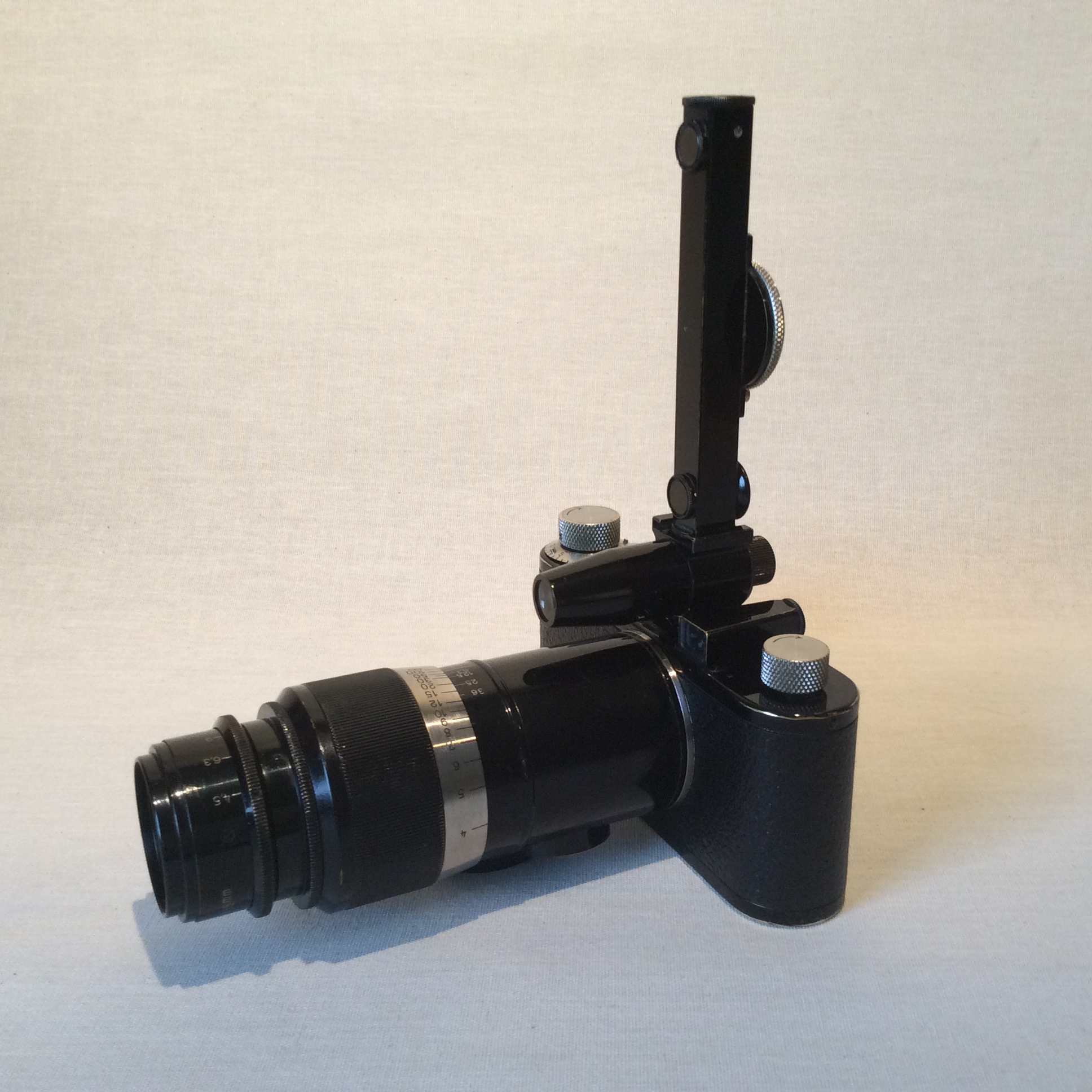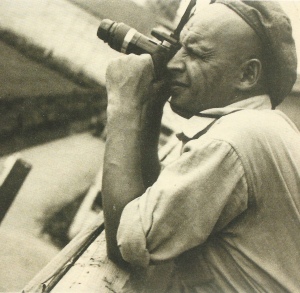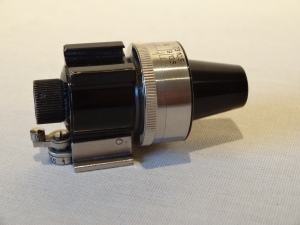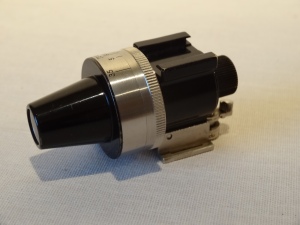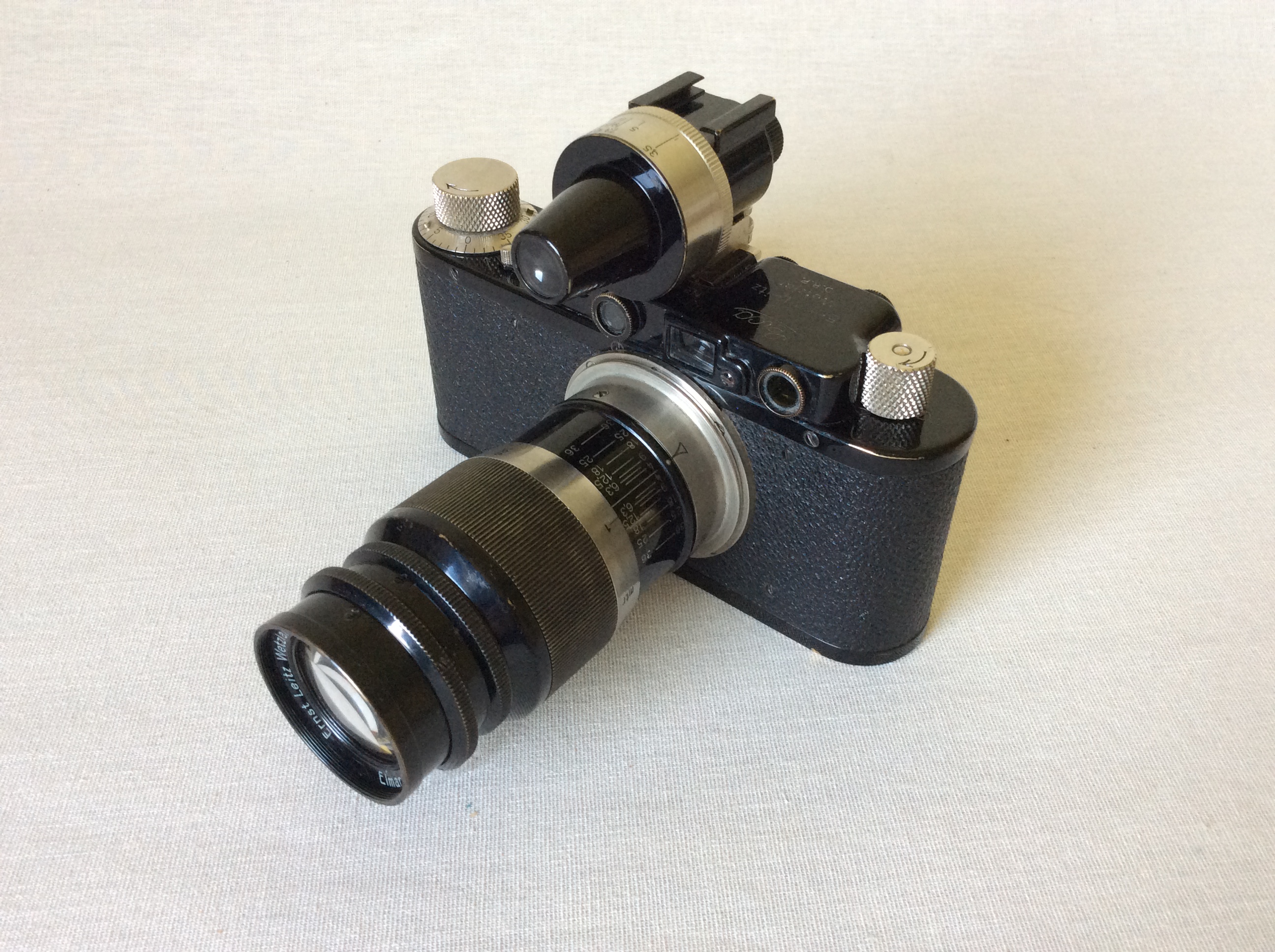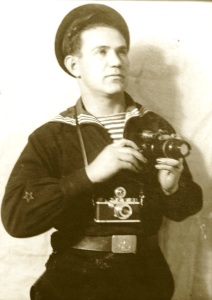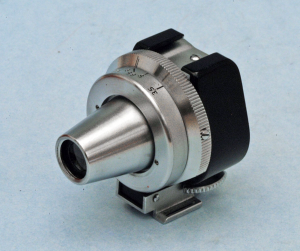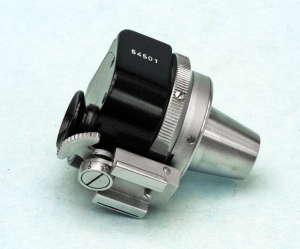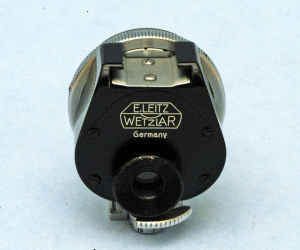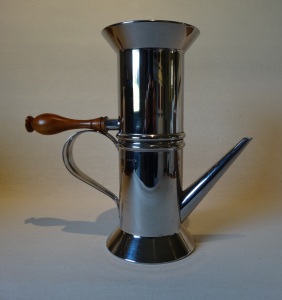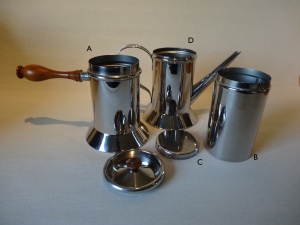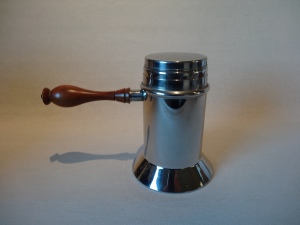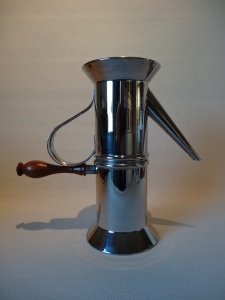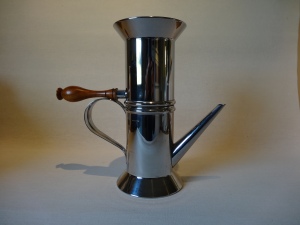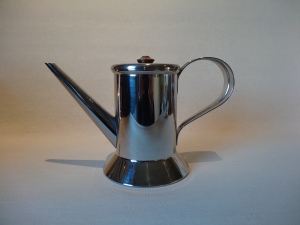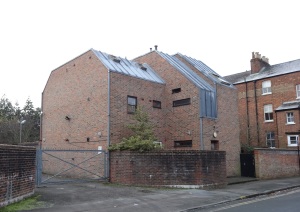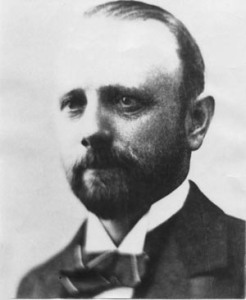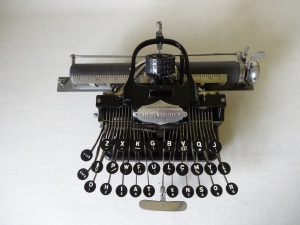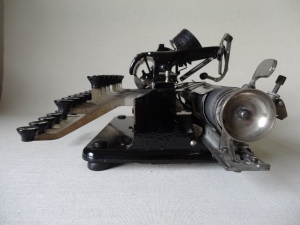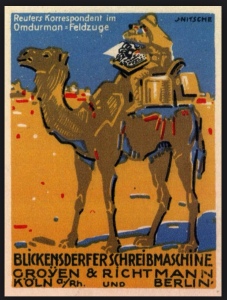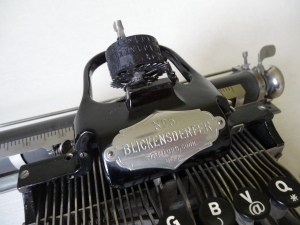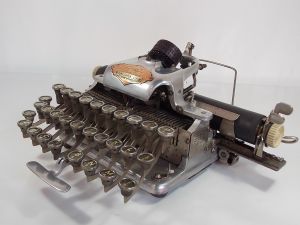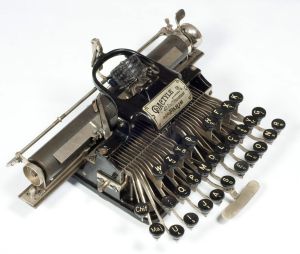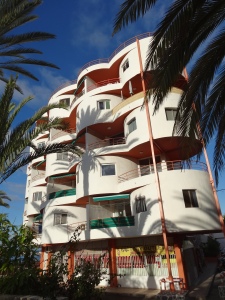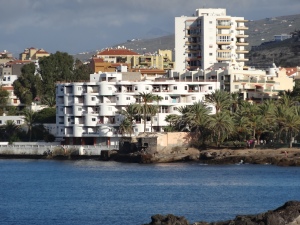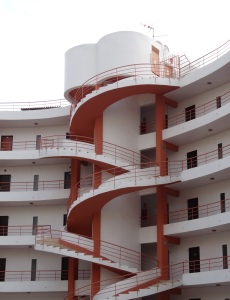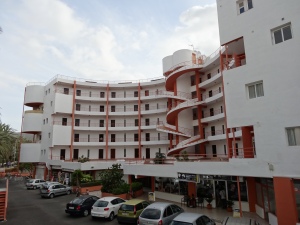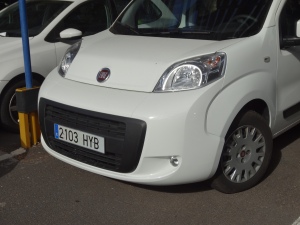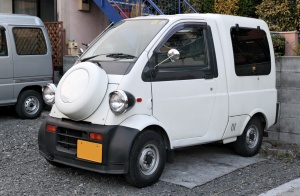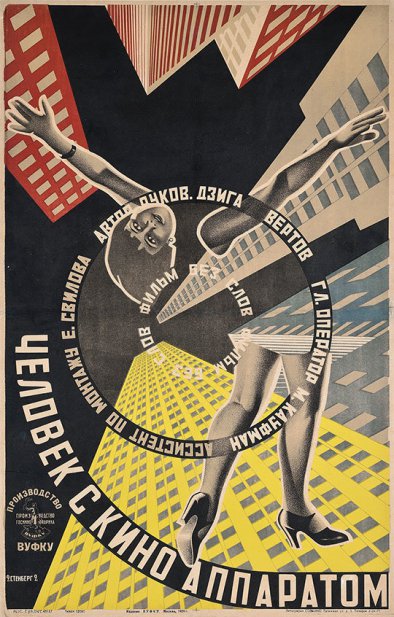 1929 poster for the film by the Stenberg brothers
1929 poster for the film by the Stenberg brothers
‘We leave the film studio for life, for that whirlpool of colliding visible phenomena, where everything is real, where people, tramways, motorcycles, and trains meet and part, where each bus follows its route, where cars scurry about their business, where smiles, tears, deaths, and taxes do not obey the director’s megaphone…’
Dziga Vertov, diary entry 20th March 1927
Vertov’s words anticipate his 1929 experimental masterpiece ‘Man with a Movie Camera’ [Человек с кино аппаратом, Chelovek s kino apparatom (R), Людина з кіноапаратом, Lyudyna z kinoaparatom (U)] which, along with Eisenstein’s ‘Battleship Potemkin’, must be the most influential of all Soviet films. Acclaimed by many reviewers on its release, and popular with Soviet cinemagoers, the film fell out of favour along with its director in the 1930s and was neglected for decades. It is now a staple of film studies courses and academic papers, and it was voted one of the ten best films in cinematic history by BFI ‘Sight & Sound’ readers, and the best documentary ever made.
However, it was not meant to be a documentary in the conventional terms of a 1920s ‘City Symphony’, such as Paul Strand’s on New York (‘Manhatta’, 1921), or Walter Ruttmann’s on Berlin (‘Berlin: Symphony of a Great City’, 1927). On the face of it the film portrays a cameraman’s journey around an unnamed Soviet city recording its life during one day. However, the pioneering special effects and rapid montage sequences, the extensive use of Lev Kuleshov’s theory of ‘Creative Geography’ (where different locations are edited together to portray a single place), the idea of showing the process of film-making, the beautiful cinematography, and the joyful humanity that is portrayed, lift it beyond mere documentary to the level of great art. Watching ‘Man with a Movie Camera’ is still a thrilling experience over 90 years after it was made, whereas other ‘City Symphonies’ of this period look very much of their time.
This blog post assumes a knowledge of the film, and for those readers who are unfamiliar with this masterpiece a previous blog post ‘Man with a Movie Camera: the movie cameras‘ has an extensive bibliography. Professor John MacKay of Yale University, Vertov’s biographer, has written an invaluable Introduction to the film, available to read on Academia. I can also recommend one of the most perceptive reviews of the film by the renowned US critic Roger Ebert. Unfortunately there is no longer a good quality version of the film on YouTube.
A large part of ‘Man with a Movie Camera’ was shot during 1928 in Moscow, Kyiv, and Odesa. Vertov had been hired by VUFKU (the All-Ukrainian Photo-Cinema Directorate, in Kyiv) in 1927 after being sacked from Sovkino, the Russian equivalent, for being over budget on his film ‘A Sixth Part of the World’ (1926), and for refusing to present a script for ‘Man with a Movie Camera’ (which he had no intention of writing). His first commission from VUFKU in 1927 was ‘The Eleventh Year’, a short propaganda film about the development of the electricity industry as part of the young Soviet Union’s drive to develop the backward country (ahead of Stalin’s first Five Year Plan which began in 1928). It was clear that Dziga Vertov was already planning ‘Man with a Movie Camera’ as several of the sequences for the latter were shot at the same time as those for ‘The Eleventh Year’ (with a Debrie Parvo Model K 35mm hand-cranked camera, not the later Model L used on MwaMC – see my blog post on the cameras in ‘Man with a Movie Camera’). Professor MacKay has also seen notes to suggest footage for MwaMC was filmed at the same time as ‘One Sixth of the World’, but it seems that none of this footage was included in the later film.
As with his previous films, Dziga Vertov worked with his wife Elizaveta Svilova as editor, and his brother Mikhail Kaufman as cinematographer*, calling themselves in Soviet style ‘The Council of Three’. For obvious reasons Kaufman, as the eponymous ‘Man with the Movie Camera’, was being filmed by others, whose superb work is seldom credited, not least on the original film titles! Professor MacKay notes in his Academia paper (footnote #22) that the other cameramen whose footage was used on MwaMC (including that taken during ‘The Eleventh Year’) were: Boris Tseitlin, Konstantin Kuliaev, and Georgii Nikolaevich Khimchenko. In Dziga Vertov’s diary entry of June 22nd 1927 written in Zaporozh’e during the filming of ‘The Eleventh Year’, he mentions two other members of the crew ‘Kagarlitsky’ and ‘Barantsevich’, presumably one or both behind the camera shooting Mikhail Kaufman in the mine sequences.
*Mikhail Kaufman’s creative contribution to this and earlier films is increasingly recognised (eg the excellent essays about him in the Dovzhenko Centre’s recent book, ‘Ukrainian Dilogy’ 2018).
I decided to research and write this post as there seems to be a good deal of confusion in many published commentaries on the film about where it was shot. As ‘Creative Geography’ is a key part of the ‘Man with a Movie Camera’ I thought it would be both useful and enjoyable to establish exactly where the different scenes were filmed, the location’s appearance at the time, and the present. Many of the locations were already well known and much of the rest has been tracked down; the few elusive ones are included in the hope that a reader of the post familiar with the three cities may recognise them. By following the screenshots in the order they appear in the film you get a real sense of the extraordinary creative and editing process that links so many diverse locations and periods into one vision of a city throughout a single day. Also clearly evident is a fine appreciation of architecture and the urban (and industrial) landscape.
SHOOTING SCHEDULE
The locations and schedule for both films have been published in academic papers (JSTOR & Academia) by Professor MacKay, gleaned from Vertov’s notes in the Russian State Archive of Literature and Art (RGALI) summarised (by me) as follows:
‘The Eleventh Year’ (1927)
Moscow to the Volkhov dam (near Leningrad) in June 1927; then to the Ukrainian sites of Kharkiv at the end of June and beginning of July, the Kamenskoe (Kamianske) Iron Foundry (on the Dnieper River) in July and August[1] and the Donbas industrial region[2] in August. There was a visit to the under construction Dnieper Hydroelectric Station during September, and then to Kyiv[3] for the tenth anniversary celebrations of the October Revolution. The film crew also went to Odesa and the Romanian border but the exact dates of these visits are not known.
[1] Vertov’s notes seem to be incorrect as his diary entry of June 22nd 1927 describes ‘completing our filming of the Dzerzhinsky plant’ (the iron foundry in Kamianske). The diary entry was written at Zaporozh’e (Zaporizhia) the city where the Dnieper Hydroelectric Station is located where, presumably, the film crew was staying during filming there, so the September date for this looks wrong as well. He also writes about filming underground in a mine so the August date for the Donbas also looks incorrect as there are no mines in Kamianske or Zaporizhia.
[2] The mines, coke ovens, and steelworks of Rutchenkovo and Lidievka around the city of Donetsk in Eastern Ukraine. The city, originally named Hughesovka after the Welsh businessman who started the Russian steel industry, was known as Stalin at the time of the film.
[3] The sequence showing this in the film appears to be in Sovetskaya (now Tverskaya) Square, Moscow (the obelisk Monument to the Soviet Constitution in that square is clearly visible).
There seems to be uncertainty around the locations, dates, and members of the film crew for ‘The Eleventh Year’ which would merit further investigation!
‘Man with a Movie Camera’ (1928)
The new footage for ‘Man with a Movie Camera’ was shot from early June to the middle of September 1928: Moscow in June, Odesa in June and July, Kyiv in July and August, Kharkiv* in August, and another visit to Kyiv at the end of August to mid September.
*Only one scene in the film (the aircraft hangar [00:13:26]) has been located in Kharkiv (unless one of the few unverified locations was shot there). Mr Dubin, of the Kharkiv Historical Museum, has viewed the film carefully and cannot see any other locations in the city.
I have queries about some of these dates as the clothing worn in the relevant sequences does not seem to tie in with the time of year stated. For example the filming in Moscow took place in June, a warm summer month in the city, but people in the scenes are often wearing coats [00:20:16]. Filming in Kyiv was apparently done in the summer and early autumn as well but the audience in the cinema is wearing winter clothes [00:03:42] [00:04:01]. As Vertov was based in Kyiv this footage could have been taken later. A short article in the Kyiv monthly journal Kino No. 11, November 1928, mentions that ‘filming is almost finished’, long after the dates in the notes.
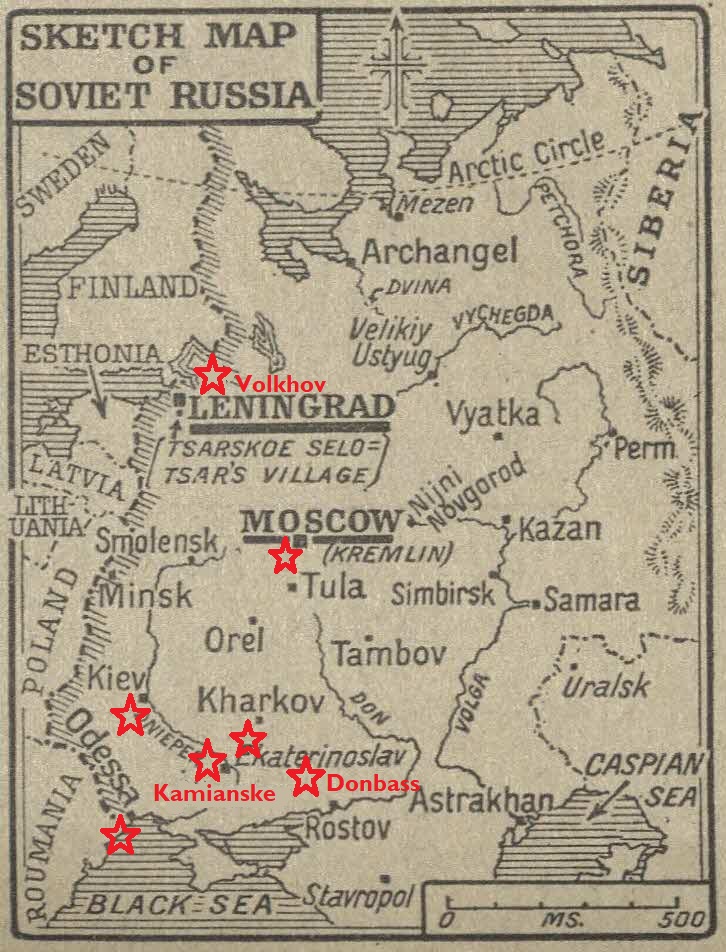 Location map (see end of blog post for detailed maps of cities). Illustration to ‘The Riddle of Russia’ by Ellis Ashmead-Bartlett, published in the Daily Telegraph on 31 January 1929 (courtesy of Warwick University). My annotations in red.
Location map (see end of blog post for detailed maps of cities). Illustration to ‘The Riddle of Russia’ by Ellis Ashmead-Bartlett, published in the Daily Telegraph on 31 January 1929 (courtesy of Warwick University). My annotations in red.
MAIN LOCATIONS SEEN IN THE FILM
MOSCOW: Kuznetsky Most, Bolshoi Theatre, Theatre and Revolution Squares, Teatral’nyy Proyezd, Okhotny Ryad, Tverskaya, Strastnaya Square, *Bakhmetevsky Bus Garage, *Novo-Sukharevsky Market.
KYIV: Khreschatyk (including cinema) & Velyka Vasylkivska Street, Sofiys’ka Square & Volodymyrska Street, Park Bridge, Strilets’ka & Reitarska Streets, Tarasa Shevchenko Boulevard & Kominterna Street, Ginzburg Skyscraper, Palace Hotel, *Tobacco Factory, *Red Stadium (netball), *Lenin Club, Halytska Square.
ODESA: Prymorskyi Boulevard, Port, Station and Pryvokzal’na Square, Pushkins’ka street, *Tram Depot, *Rosa Luxemburg Street & Fire Station, *Sports Ground, Arcadia Beach, Kuyal’nik Resort.
With the exception of those with a star these were all well known locations, repeated multiple times throughout the film, which would have been familiar to a late 1920s Soviet audience. This makes the extensive use of ‘Creative Geography’ to give the impression of a single city even more significant than it would be to a modern international audience with no knowledge of these places. In Moscow much has changed since the film was made, but most of the locations in Kyiv and Odesa are still recognisable. The scenes in Moscow are particularly poignant, showing a largely unspoilt and beautiful city centre just before the widespread destruction of the 1930s from Stalin’s megalomaniac ‘General Plan for the Reconstruction of Moscow’ (the first major church to be demolished was St Paraskeva on Okhotny Ryad in June 1928 which must have been only a few days after it was filmed).
LOCATIONS WITH LIMITED APPEARANCES (from ‘The Eleventh Year’ filming, 1927).
Similar industrial scenes and the Volkhov Dam also feature in ‘A Sixth Part of the World’ (1926). Chimneys and steelworks are also seen in Mikhail Kaufman’s film ‘Moscow’ (1927).
DONBAS: Rutchenkovo and Lidievka (coal mine, coal yard and gantry, [chimney and blast furnace exterior?]).
KAMIANSKE: Dzerzhinsky steelworks on the Dnieper River.
VOLKHOV (Leningrad): Hydroelectric Power Plant dam (Волховская ГEС). Similar shots of the dam are also seen in ‘A Sixth Part of the World’ (1926).
Other locations with single appearances noted throughout the post (eg Kharkiv).
There are inconsistencies with translated place names in Russian and Ukrainian, and I have sometimes used the anglicised version (Theatre Square etc). Many are gleaned from Google Earth. I have generally used the Ukrainian spelling of place names in that country. There is also some inconsistency with the names familiar today and those used in 1928, as many streets and squares were re-named several times. I will try to amend errors as the post is updated.
ACKNOWLEDGEMENTS
I would like to thank the following for their invaluable help and information, and patience in responding to many questions. Inclusion does not imply endorsement of anything in this blog post. Any errors and omissions are entirely mine.
Iryna Chuzhynova, Ukrainian Cultural Foundation
Konstantin Dubin, Kharkiv Historical Museum
Alina Fedorovich, Museum of Moscow
Dr Max Hodgson
Mykhailo Kalnytsky
Professor Catriona Kelly
Professor Robin Milner-Gulland
Anna Onufriienko, Dovzhenko Centre
Dr Denis Romodin, Museum of Moscow
Professor Hanna Vesolovska
Yevgeny Volokin
Professor Martin Williams
I am indebted to Mykhailo Kalnytsky, my collaborator and renowned historian of Kyiv, for sharing his extraordinary knowledge of the city (and elsewhere) which has added so much of interest and value to the post. Mr Kalnytsky has a fascinating online journal on Kyiv, its architecture and inhabitants. He instigated the naming of a street in the city ‘Dziga Vertov Lane’ as a member of a City Hall commission.
I would also like to mention Dr Romodin (Moscow), and Mr Volokin (Odesa), leading historians of their respective cities, whose detailed knowledge of them solved many puzzles. Yevgeny Volokin has a comprehensive website on Odesa, full of historic information and old photographs. He has also co-authored several albums of historic photographs of the city.
Dziga Vertov’s diary entries of March 20th 1927 (quotation at the top of the post) and of June 22nd 1927 are from ‘Kino-Eye, the writings of Dziga Vertov’, ed. Annette Michelson, Pluto Press, 1984, p. 168.
Google Earth and Google Maps screenshots: Google and the Google logo are registered trademarks of Google LLC, used with permission.
Contemporary Soviet photographs are generally in the public domain (Russia has a 70 year copyright limit).
Fair Use claimed for any copyright material as it is copied for solely research purposes and commentary only, without financial gain. Attribution and links given where known.
And very grateful thanks to Wikipedia, Google Earth, Google Images, Google Translate, and the Typeit website’s invaluable Russian and Ukrainian keyboards!
I have added many links to other websites and information to enhance the value of this post and although I have taken reasonable steps to ensure that they are reputable, I am unable to accept responsibility for any viruses and malware arising from these links.
ALL ORIGINAL CONTENT COPYRIGHT © Richard Bossons 2020
Please contact me on opinionated.designer@gmail.com with any comments, criticisms, and corrections. I would be very pleased to hear from anyone with information on the scenes that can’t be located or verified.
Richard Bossons, Oxford, June 2020
THE LOCATIONS
The screenshots are from a version posted on YouTube by a Ukrainian source AVG which is now unavailable. The approximate time of each screenshot is shown as [hr:min:sec] and they have been taken from the 2014 Eye Film Institute/Lobster Films restoration. The high definition restoration of the film has been a revelation for researchers as you can now pick out details never seen before, essential for the work involved in establishing the locations. There is a fascinating Academia paper by Mark-Paul Meyer from the Eye Film Institute about how its restoration work on the film was carried out.
I have been through every shot and many frames of the film to pick out a location of some sort, however brief, and I am fairly confident that most have been covered. Each one verified has either had clear architectural evidence pointing to the exact street or square for example, or has been confirmed by those I have consulted above. The ones I cannot verify or find are noted as such. Most of the minor ones without any clues will never be found. However, I am happy to be corrected as this is the first attempt to establish all of the locations used in ‘Man with a Movie Camera’ which I hope will be useful and add to the enjoyment of watching this wonderful film.
Images not in the film are described in italics.
PROLOGUE
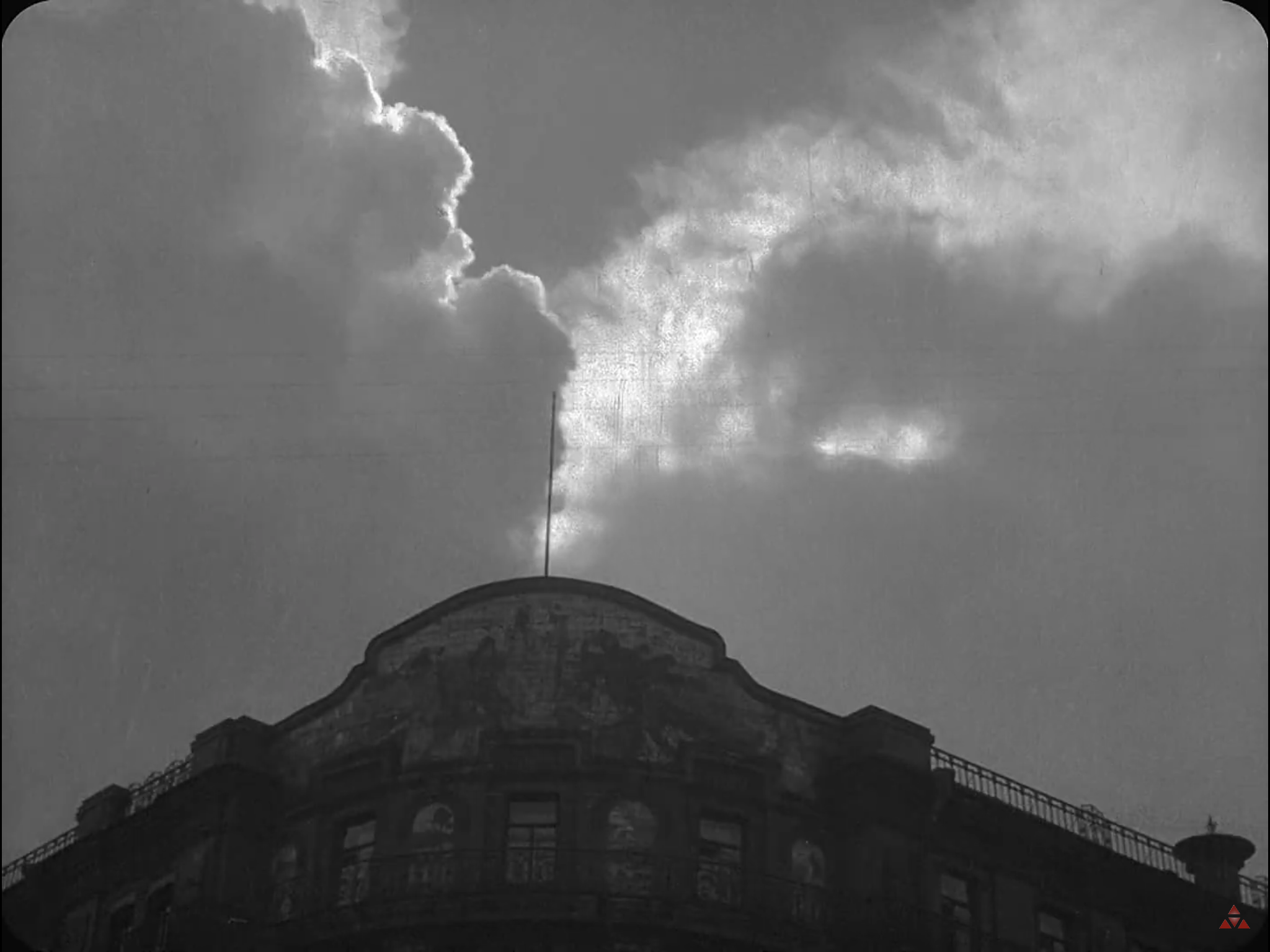 [00:02:26] Top of the Hotel National, Moscow.
[00:02:26] Top of the Hotel National, Moscow.
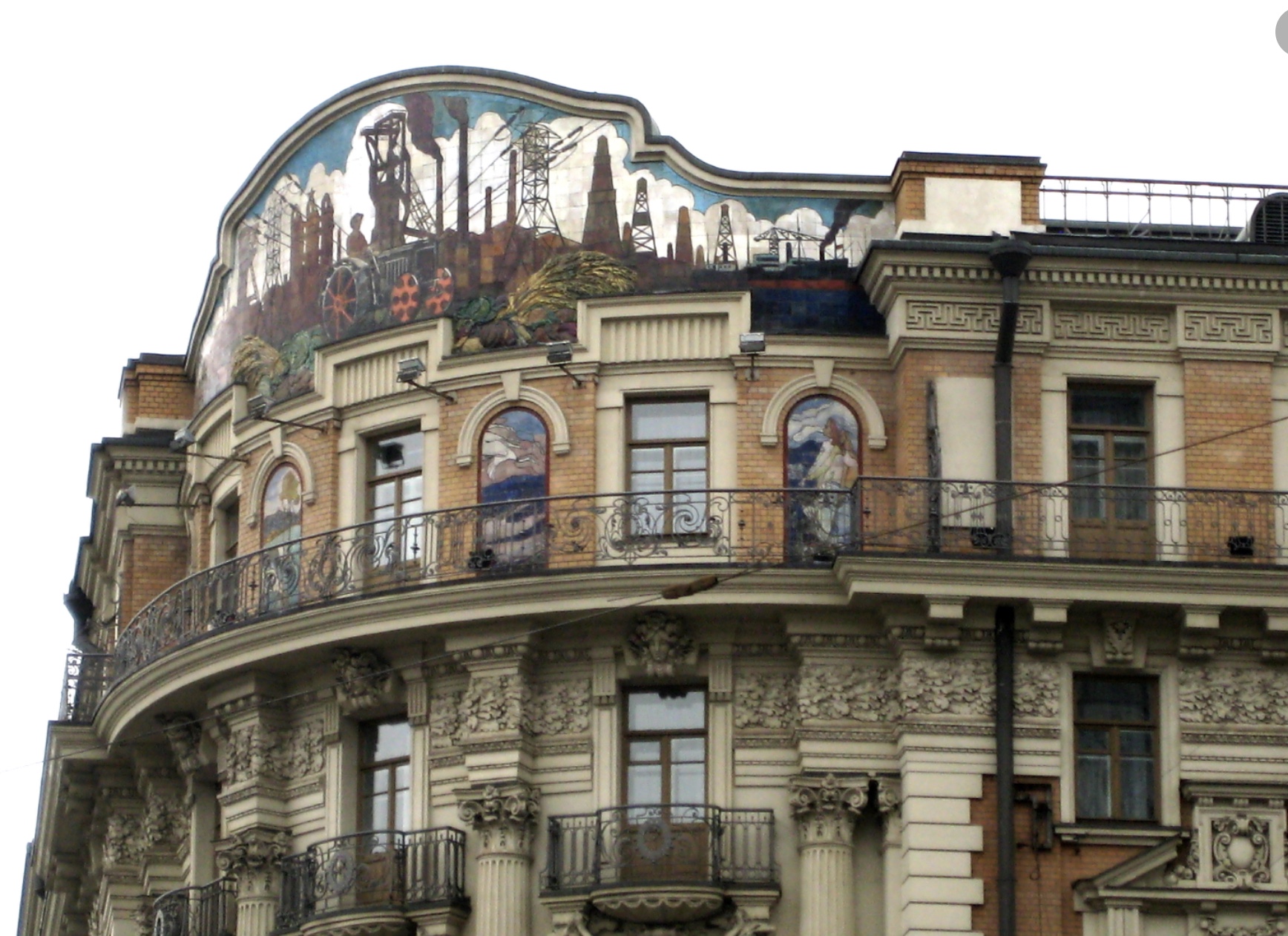 The original mosaics at the top of this famous hotel, on the corner of Tverskaya and Mokhovaya Street opposite Red Square, are barely visible in the opening frames of Reel 1. They were replaced with the tractor, pylons, and chimneys of the Socialist realist images above when the hotel was restored in 1931. Designed by the architect Alexander Ivanov, the National opened in 1903; after the Revolution the hotel became the seat of the first Soviet government in 1918. Lenin, Trotsky, and Dzerzhinsky all lived in the National at this time. Still a luxury hotel, now owned by the Marriott group. [Photograph by A Savin, Wikimedia Commons].
The original mosaics at the top of this famous hotel, on the corner of Tverskaya and Mokhovaya Street opposite Red Square, are barely visible in the opening frames of Reel 1. They were replaced with the tractor, pylons, and chimneys of the Socialist realist images above when the hotel was restored in 1931. Designed by the architect Alexander Ivanov, the National opened in 1903; after the Revolution the hotel became the seat of the first Soviet government in 1918. Lenin, Trotsky, and Dzerzhinsky all lived in the National at this time. Still a luxury hotel, now owned by the Marriott group. [Photograph by A Savin, Wikimedia Commons].
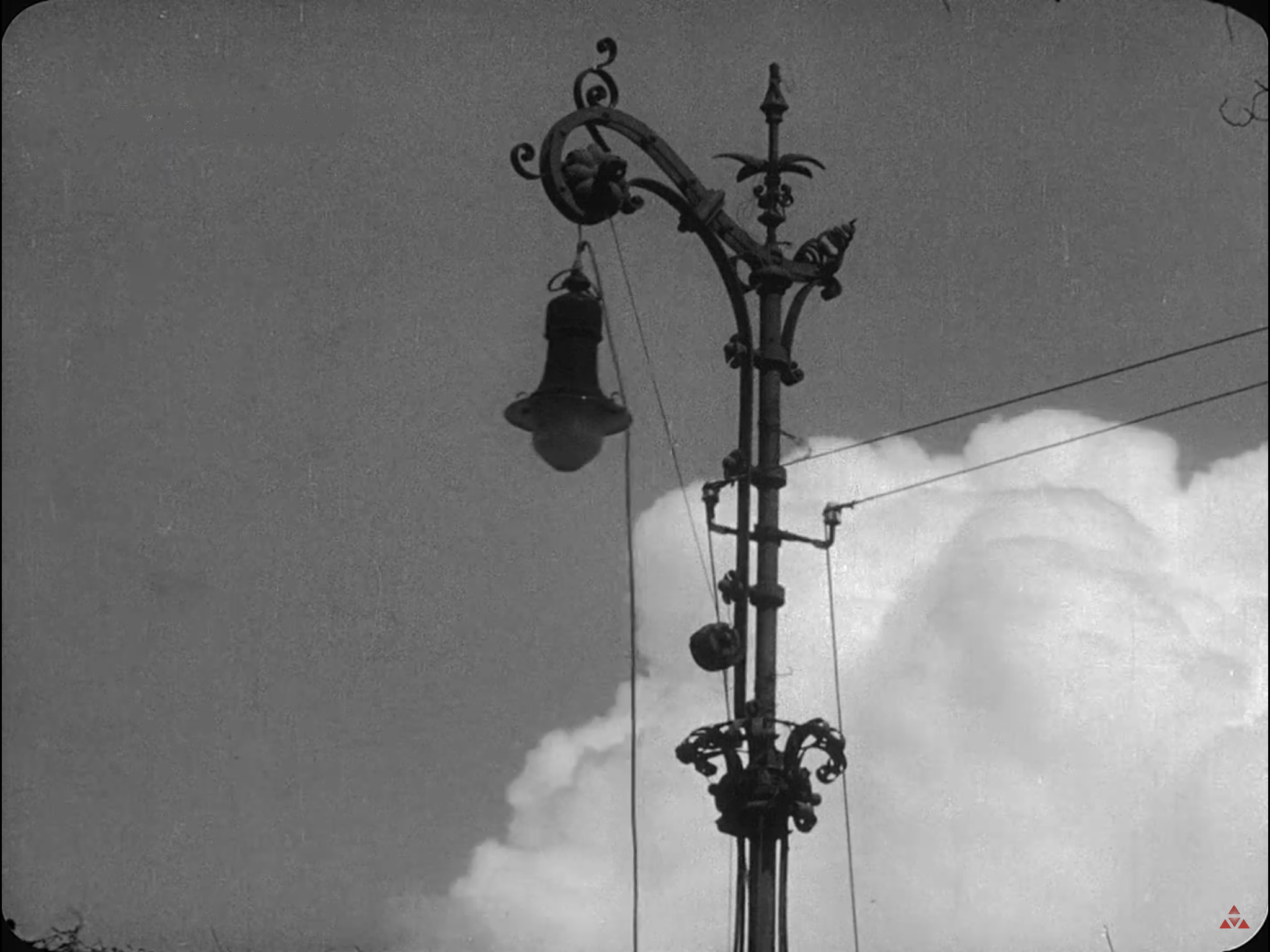 [00:02:34] Electricity post and street light, Moscow.
[00:02:34] Electricity post and street light, Moscow.
 A similar post near to the tram stop pavilion in Strastnaya Square (enlarged from an original photograph courtesy of the Museum of Moscow).
A similar post near to the tram stop pavilion in Strastnaya Square (enlarged from an original photograph courtesy of the Museum of Moscow).
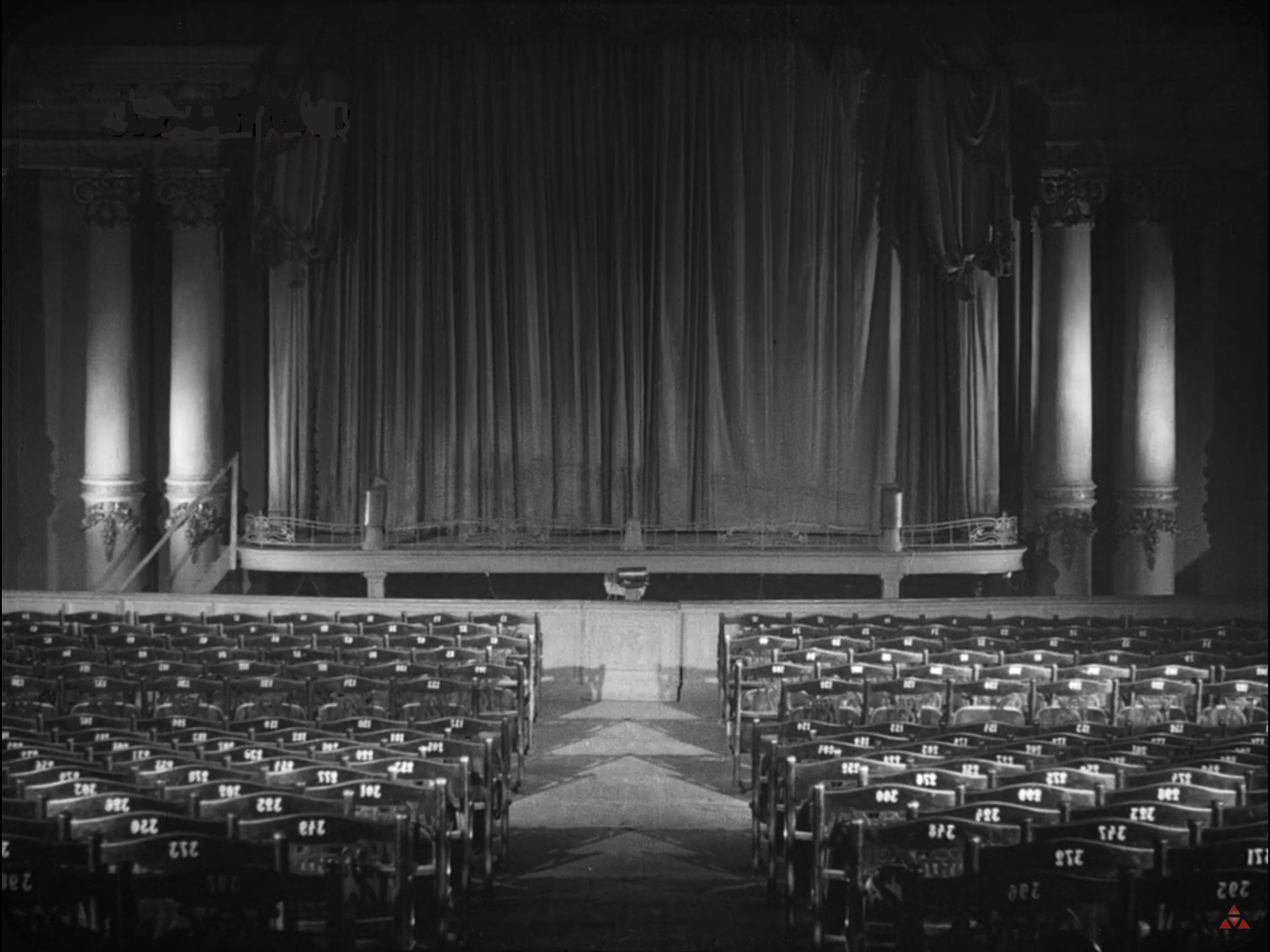 [00:02:41] Goskino No. 1 Cinema (originally Shantser Cinema), Khreschatyk 38, Kyiv.
[00:02:41] Goskino No. 1 Cinema (originally Shantser Cinema), Khreschatyk 38, Kyiv.
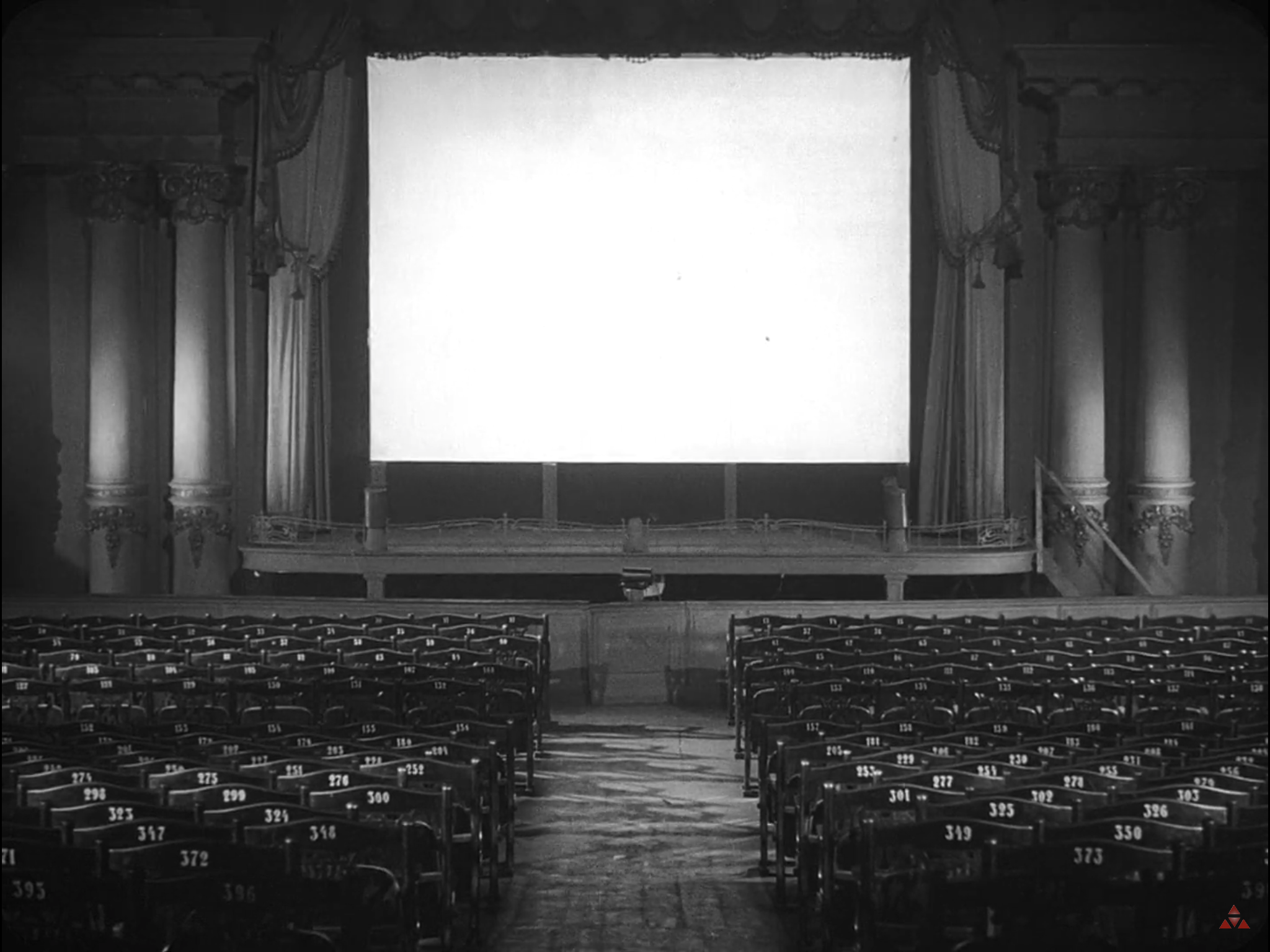
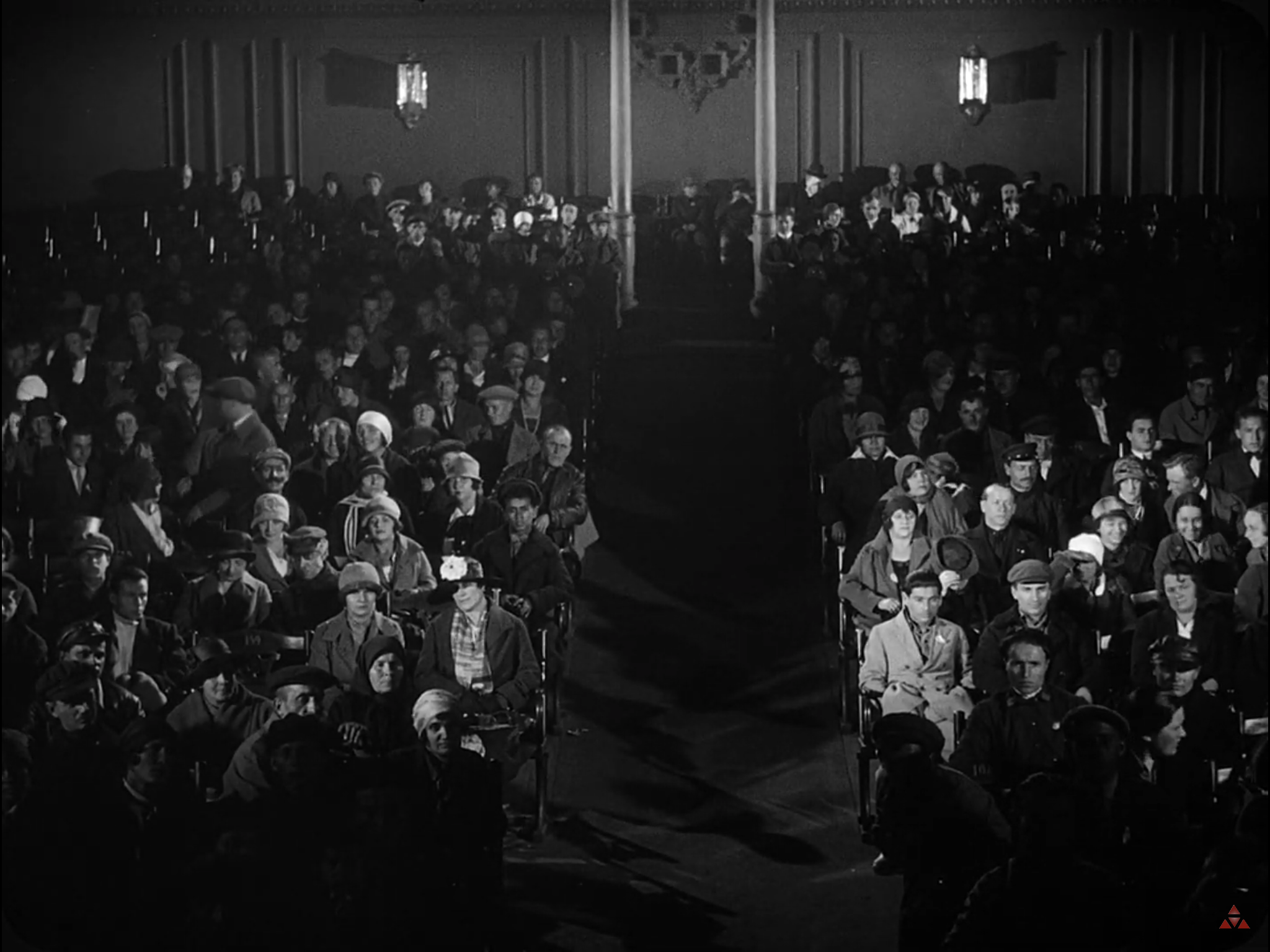
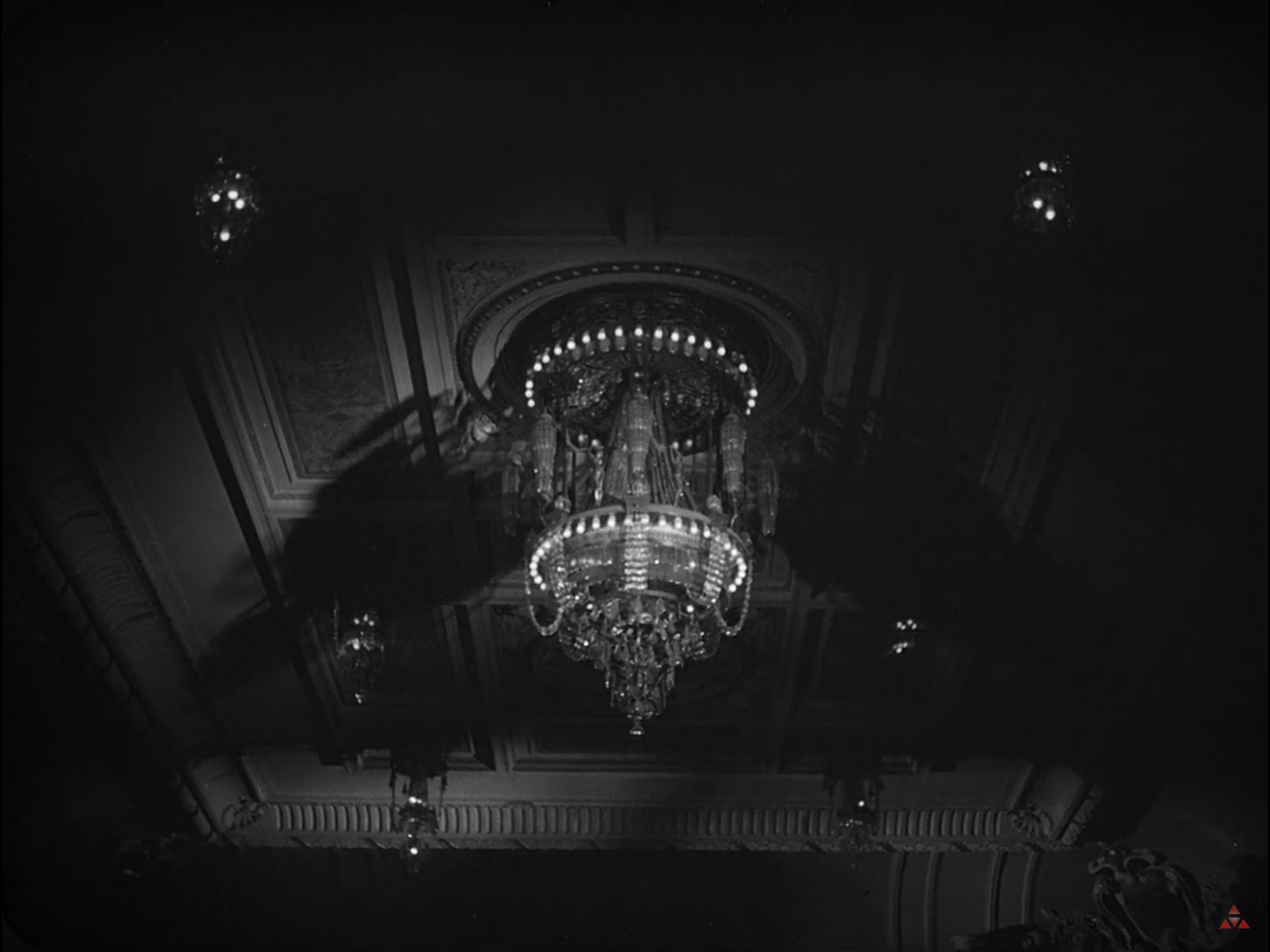
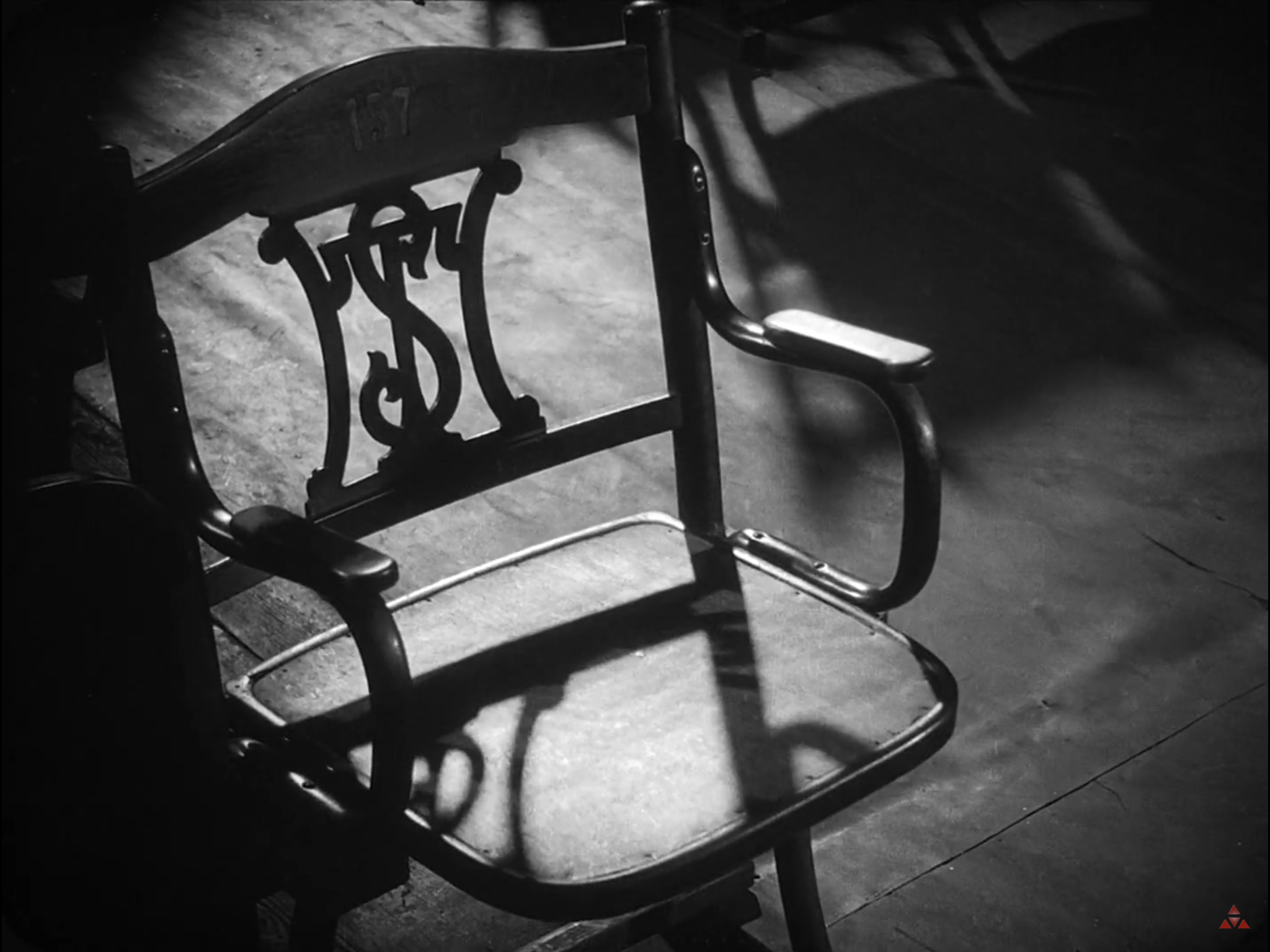 Note TS on chair =Theater Shantser.
Note TS on chair =Theater Shantser.
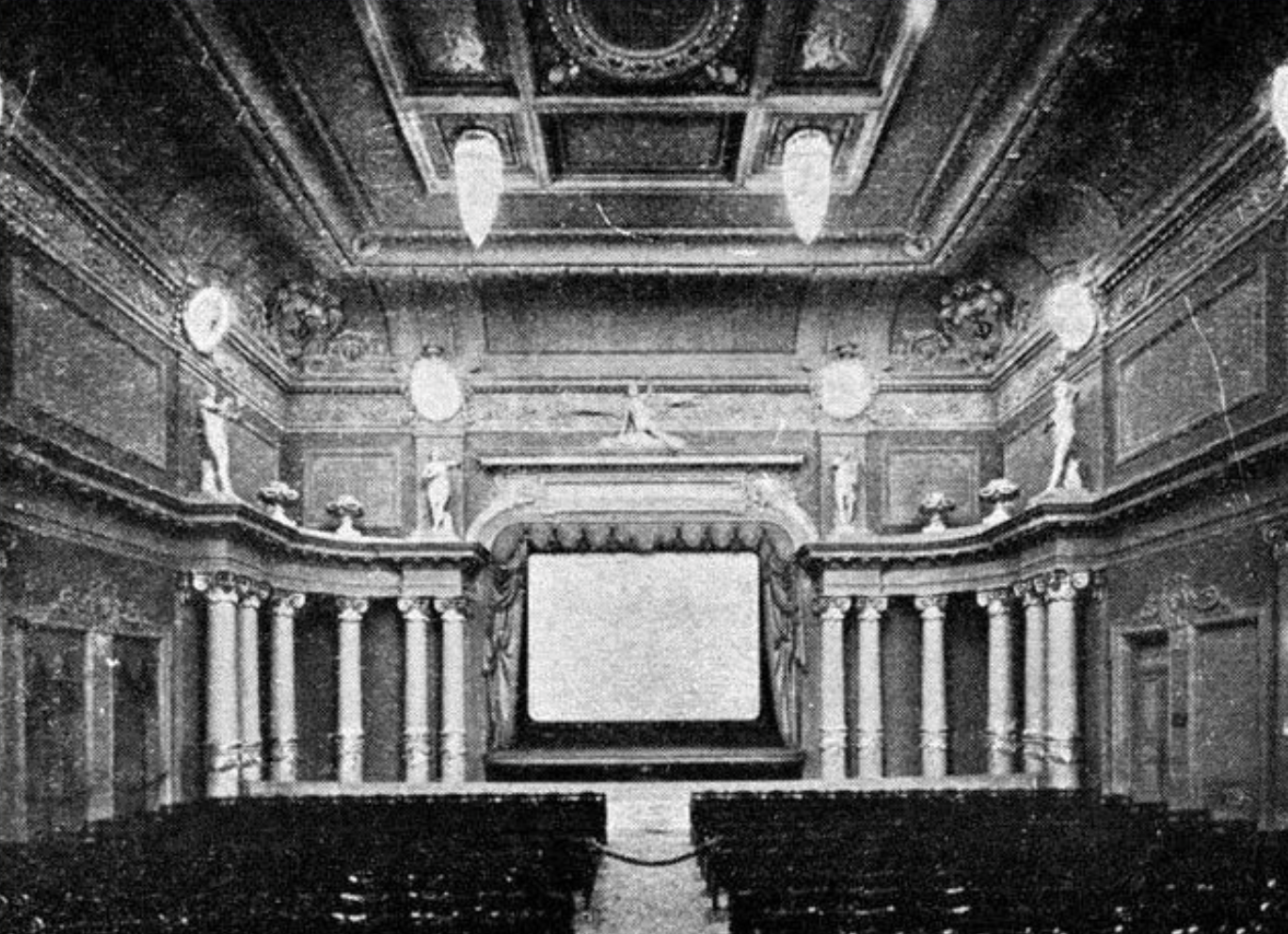 The spectacular interior of the cinema is largely concealed in the film.
The spectacular interior of the cinema is largely concealed in the film.
 The balcony needed propping up later as there are two centre posts visible in the film!
The balcony needed propping up later as there are two centre posts visible in the film!
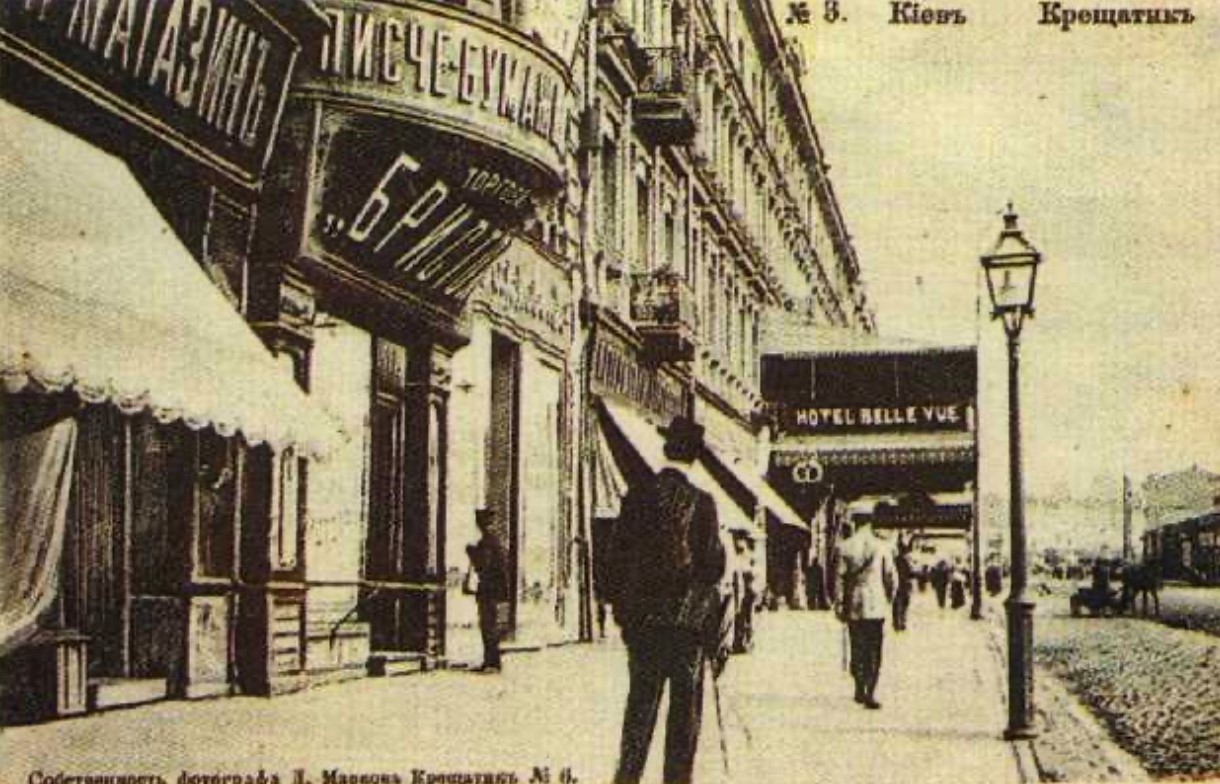
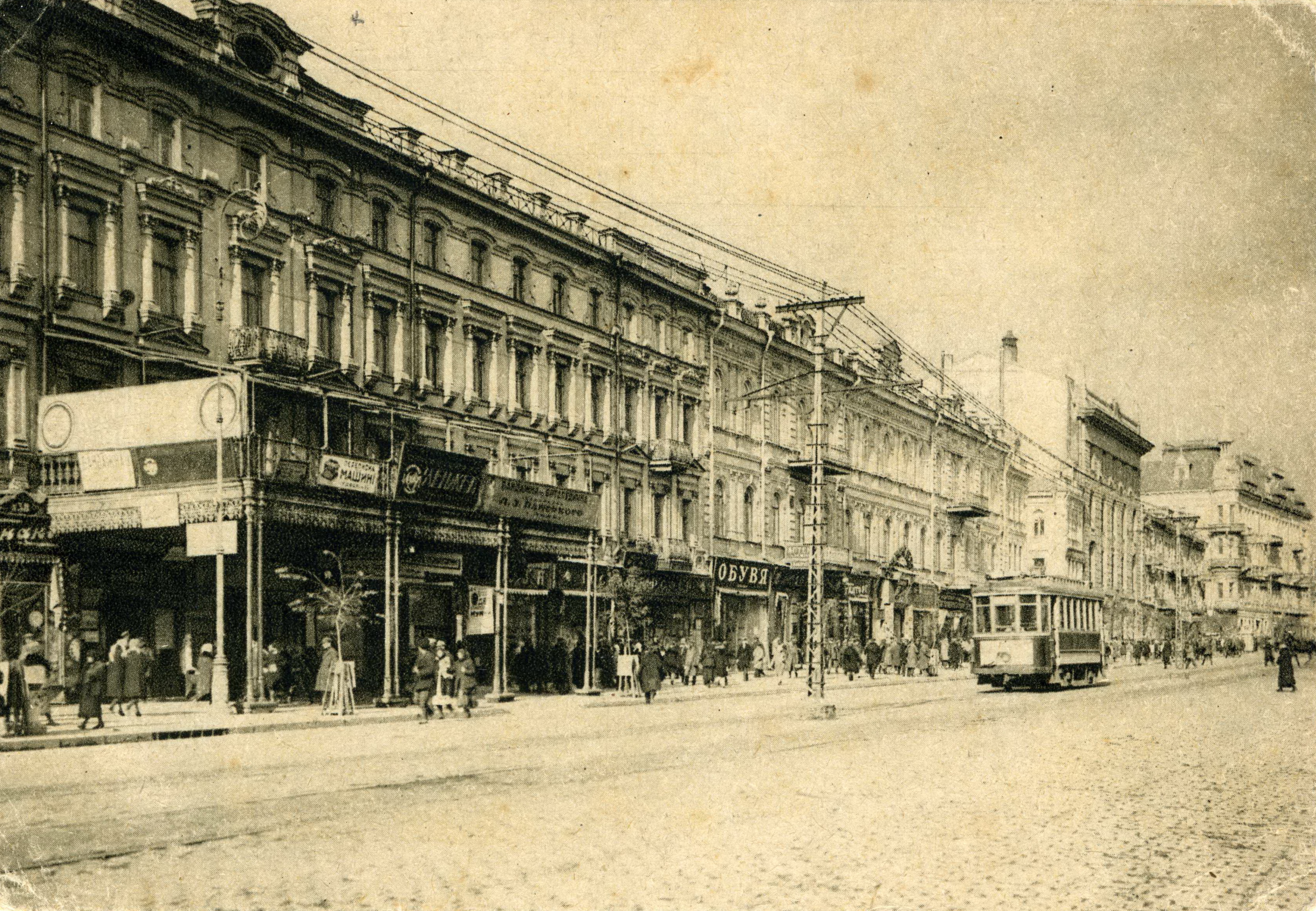 Views of the Khreschatyk Street entrance to the courtyard of the Belle Vue Hotel where the cinema was located. This block and most of the rest of the street was destroyed in WW2. [top: 1914 view, starkiev.com / bottom: 1920s view, M. Kalnytsky]
Views of the Khreschatyk Street entrance to the courtyard of the Belle Vue Hotel where the cinema was located. This block and most of the rest of the street was destroyed in WW2. [top: 1914 view, starkiev.com / bottom: 1920s view, M. Kalnytsky]
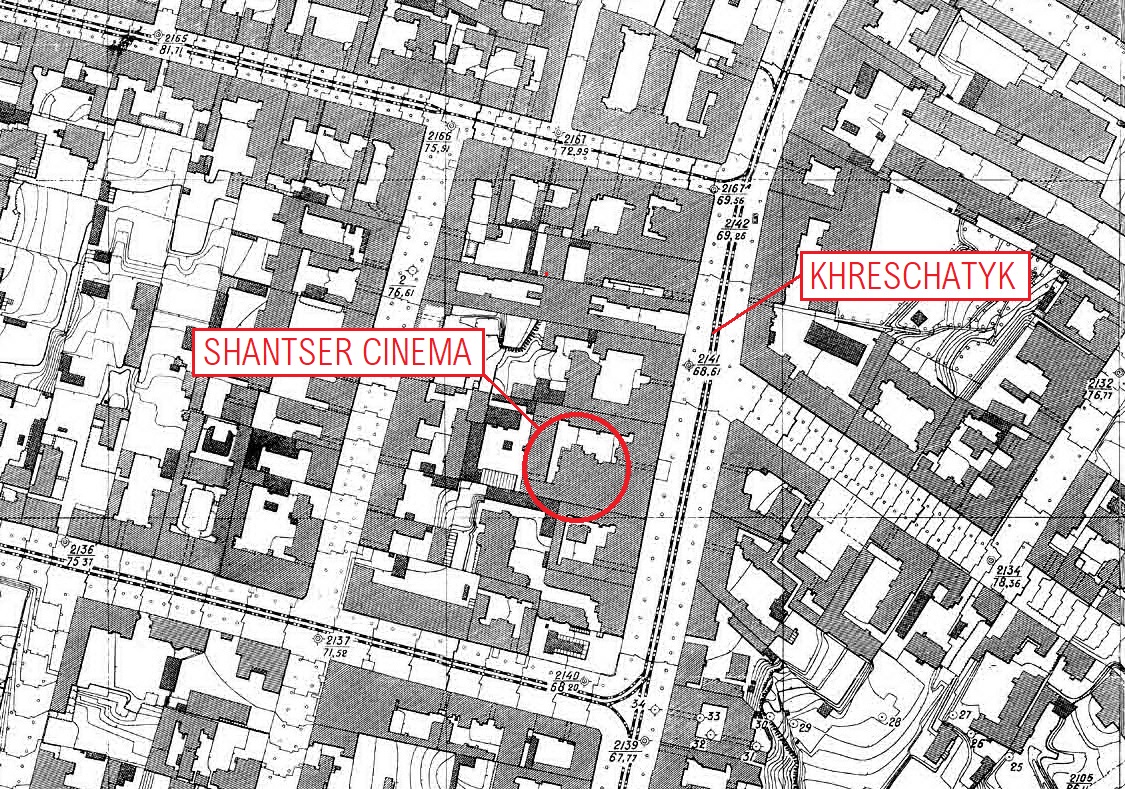 Street plan showing the cinema behind Khreschatyk 38. The outline of the canopy in the photographs above, and the passage into the courtyard is shown. [M. Kalnytsky]
Street plan showing the cinema behind Khreschatyk 38. The outline of the canopy in the photographs above, and the passage into the courtyard is shown. [M. Kalnytsky]
Anton Shantser (Шанцер, aka Shanzer or Schantzer) was an Austrian citizen of Polish descent and a tailor by trade but noticed an opportunity in the growing cinema business (there had been a film screening in the city by a touring Lumiere operator in 1896). He opened his first, the Express Cinema, on the main boulevard through Kyiv, Khreschatyk, in 1907 (see below), and several others followed. Five years later, in an annexe to the Belle Vue Hotel at Khreschatyk 38, Shantser opened his most luxurious cinema, named after himself. According to the local paper and guests at the opening night in December 1912 this 1,100 seater theatre had a spectacular two storey foyer with velvet curtains and classical columns lit by a large chandelier. The cinema itself had armchairs with folding seats, a sloping floor and mechanical ventilation, all ‘richly decorated in the Greek style’. There was an orchestra of 60 musicians, a lot more than we see at the beginning of ‘Man with a Movie Camera’. The new cinema was a great success but unfortunately for Mr Shantser it was confiscated five years later after the Revolution and re-named Goskino No. 1 Cinema. Much of the luxury seemed to have disappeared by 1928 as the cinema looks rather drab in the film [sources: ‘Weekend Today’ and an Essay by Vlad Kaganov, ‘Khreschatyk. The best cinemas of the early twentieth century’].
THE FIRST CINEMA SCREENING OF MAN WITH A MOVIE CAMERA
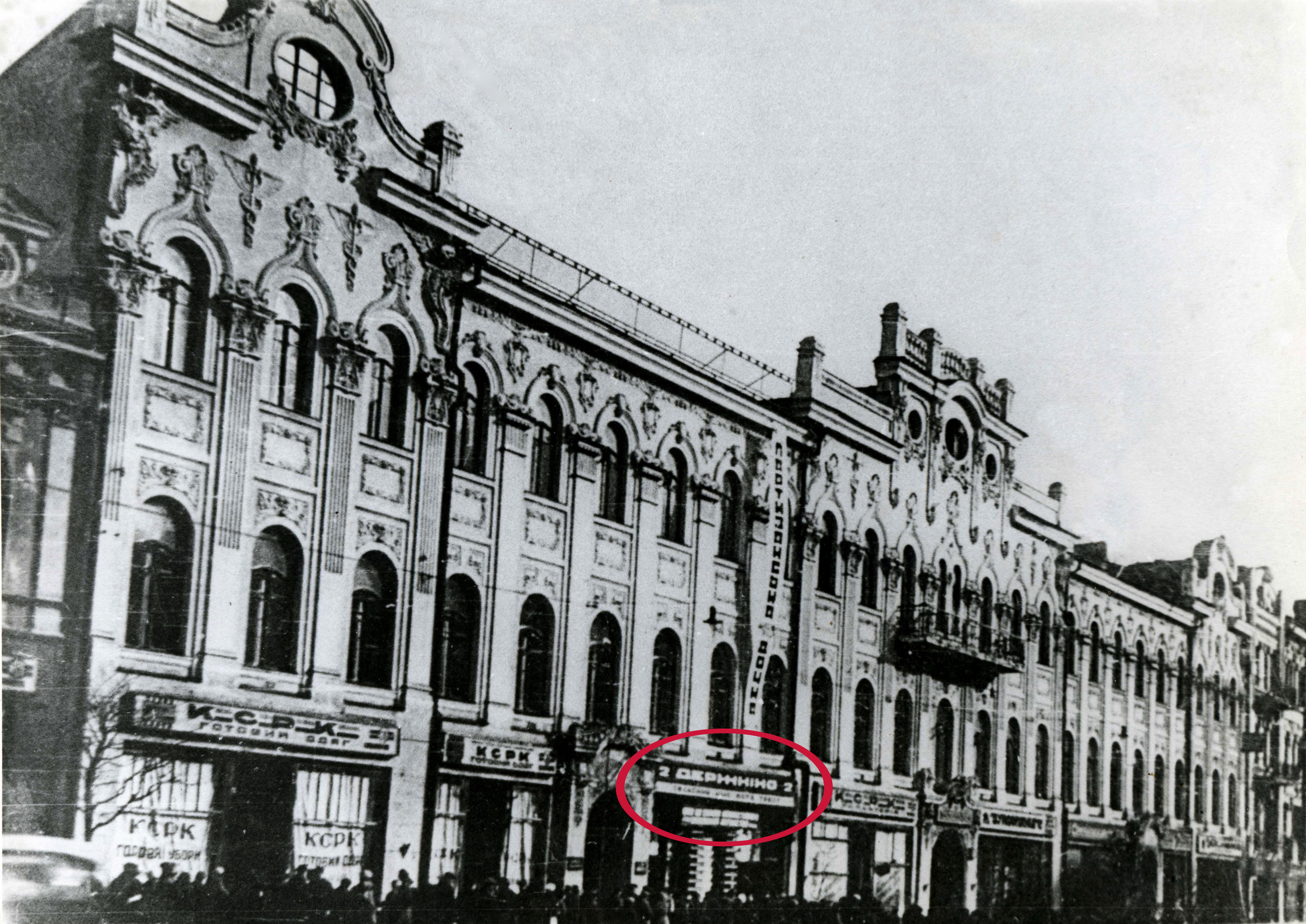 [Photograph: M Kalnytsky]
[Photograph: M Kalnytsky]
From the available evidence the first cinema screening of the film was on the 7th January 1929, not at the Goskino No. 1 Cinema but at the former ‘Express’ Cinema (entrance circled above), re-named Goskino* No. 2 Cinema, at Khreschatyk 25, then known as Vorovsky Street. This spectacular building was destroyed like the rest of the area by the retreating Red Army in 1941.
[*Держкіно/Derzhkino = State Cinema in Ukrainian]
The first review of the film, by the poet Mykola Ushakov, is dated 21st December 1928, which indicates there was a screening in December before the film was completed, most likely at the VUFKU studios in front of an invited audience, but we have not found any announcements for a public screening prior to the one below. The 7th January date is confirmed by minutes of the VUFKU board meeting on the 10th January in Kyiv, kindly provided by Anna Onufriienko of the Dovzhenko Centre, that state: ‘The film ‘Man with a Movie Camera’ – instead of receiving it on January 1st, the production department promised to hand it over on the 4th, but submitted it on the 5th, while the film was supposed to go on the screen on January 7th’. A previous, rather historic, minute #6 dated 12th-13th April 1928 gave the go ahead for the film, stating that ‘Staging such a picture is considered appropriate. Pass the production plan through the inspection bodies for approval’.
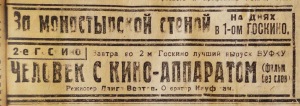
Sunday 6th January 1929 edition of the Russian language ‘Kievsky Proletary’ has a modest announcement for the first showing of the film at Goskino No. 2 Cinema ‘tomorrow’ (the newspaper was not published on Monday 7th). Little information except that it was a ‘film without words’, Producer Dziga Vertov, Cameraman Kaufman. The announcement also boasts that the film is the ‘best VUFKU release’, not obvious from the paltry advert and screening in the less prestigious Goskino No.2 Cinema!
More announcements and information about the early screening of the film have been found, as well as the first ever (pre-release) review. See my recent blog post ‘MAN WITH A MOVIE CAMERA: the first cinema screening’.
REEL 1
Note: rising numeral 1 present in Eye/Lobster Films and other prints.
[00:05:06] Apartment window in a brick wall. Location not found, but demonstrates the attention to detail in the film: this first image in reel 1 is actually shown on the film threaded through the projector!
[00:05:15] Street lights, Moscow. This design of lampost is used in Theatre Square (Teatral’naya ploschad) next to the Bolshoi Theatre. Exact location not found.
[00:05:35] The outdoor restaurant of the ‘London’ Hotel on Prymorskyi Boulevard, Odesa (then known as Feldman Boulevard after the city revolutionary who joined the 1905 Potemkin Mutiny). A popular venue as it was located next to the top of the Boulevard Steps, aka Prymorskyi Stairs, or Richelieu Steps (re-named Potemkin Stairs in 1955 on the 50th anniversary of the events portrayed in Eisenstein’s 1925 film. Now formally known by its original name of Prymorskyi Stairs but still known to most by the Potemkin version).
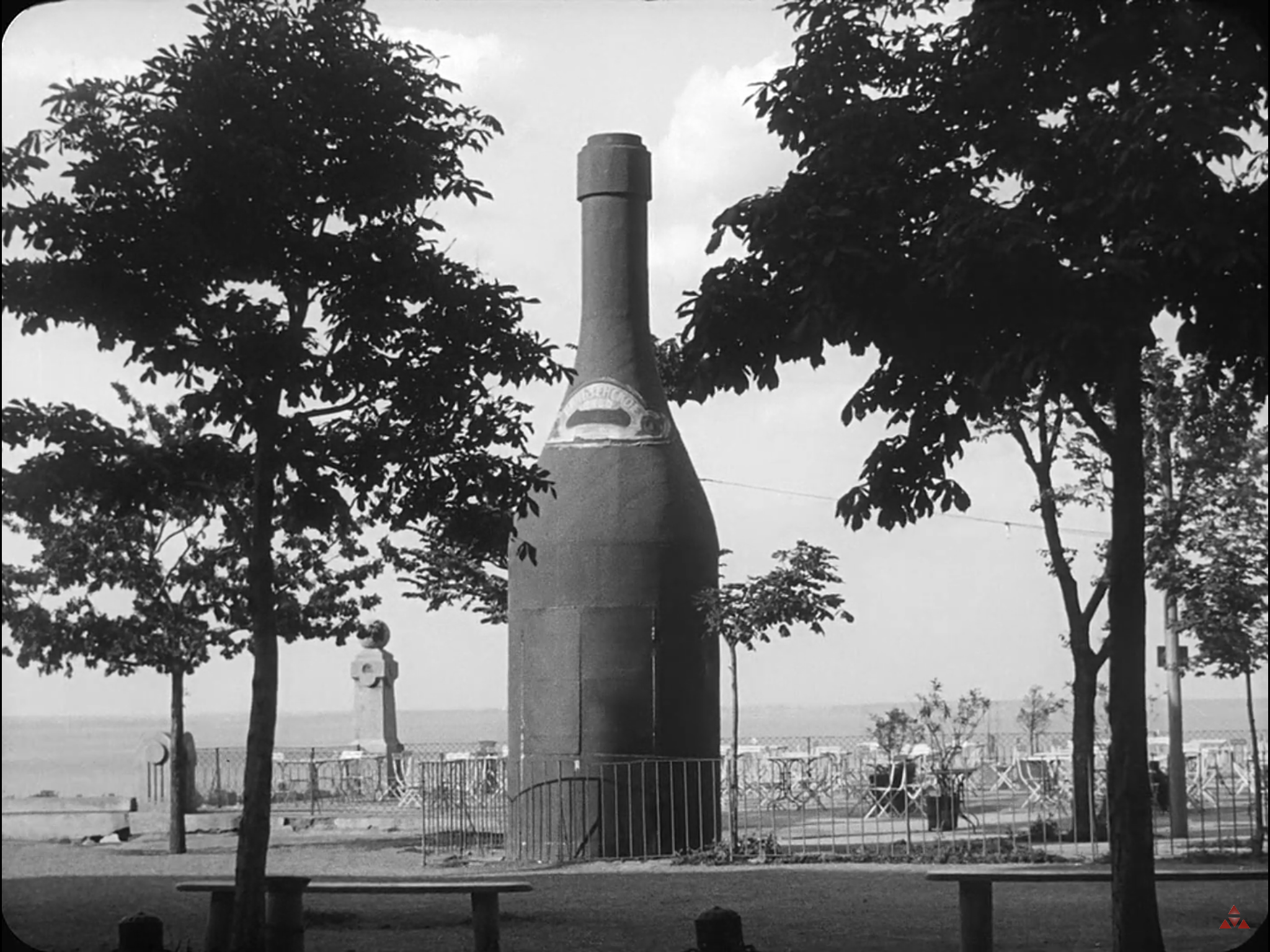 [00:05:43] As above featuring a giant bottle advertisement. Surprisingly, I have not managed to locate any period photographs or postcards with this, presumably, well-known feature of the restaurant! Screenshot [00:09:54] shows the view to the left of the bottle.
[00:05:43] As above featuring a giant bottle advertisement. Surprisingly, I have not managed to locate any period photographs or postcards with this, presumably, well-known feature of the restaurant! Screenshot [00:09:54] shows the view to the left of the bottle.
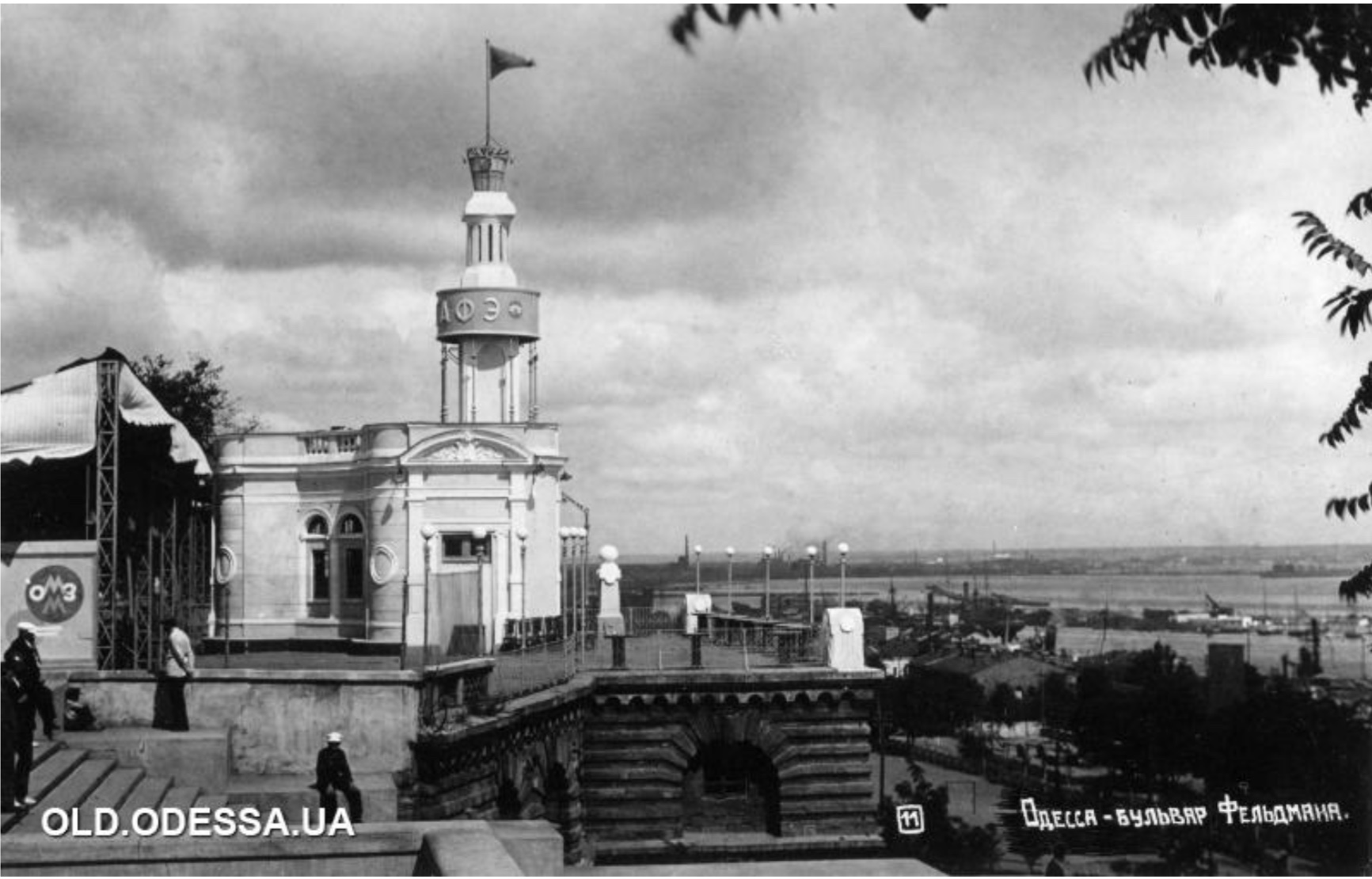 A contemporary photograph of the restaurant – note the stone pillars visible in the screenshots, now painted white [photograph and restaurant information from Y. Volokin and viknaodessa].
A contemporary photograph of the restaurant – note the stone pillars visible in the screenshots, now painted white [photograph and restaurant information from Y. Volokin and viknaodessa].
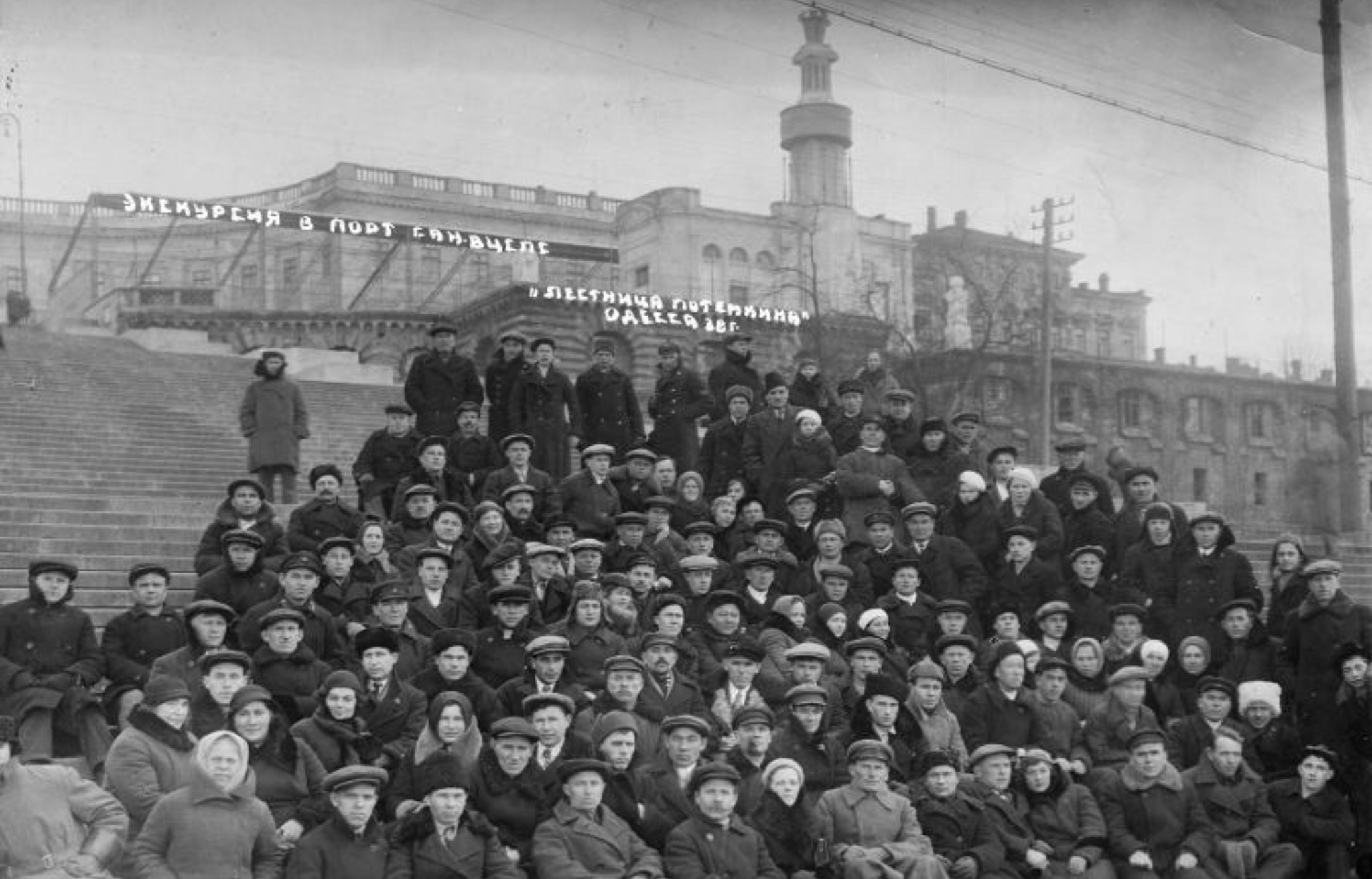 The restaurant seen from a crowded Boulevard Steps; the distinctive stone pillars are clearly visible on the corners of the terrace [photograph from viknaodessa].
The restaurant seen from a crowded Boulevard Steps; the distinctive stone pillars are clearly visible on the corners of the terrace [photograph from viknaodessa].
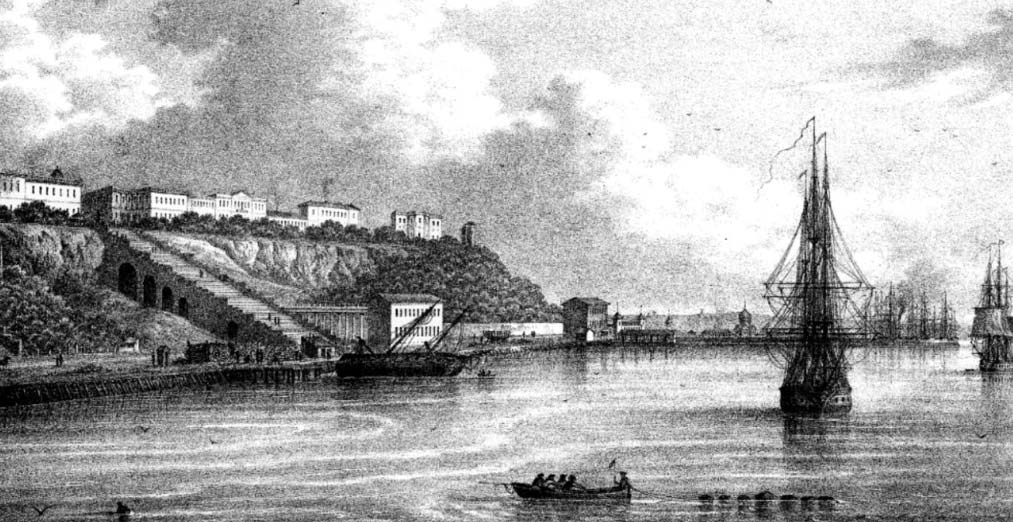 Mid 19thC engraving of the recently completed (1841) Boulevard Steps and Primorskyi Boulevard gives a slightly exaggerated impression of how high the city stands above its harbour (the Steps rise nearly 30m with 192 steps). Previously the only way up was by winding paths and rickety wooden steps. A funicular railway was built up the slope in 1902.
Mid 19thC engraving of the recently completed (1841) Boulevard Steps and Primorskyi Boulevard gives a slightly exaggerated impression of how high the city stands above its harbour (the Steps rise nearly 30m with 192 steps). Previously the only way up was by winding paths and rickety wooden steps. A funicular railway was built up the slope in 1902.
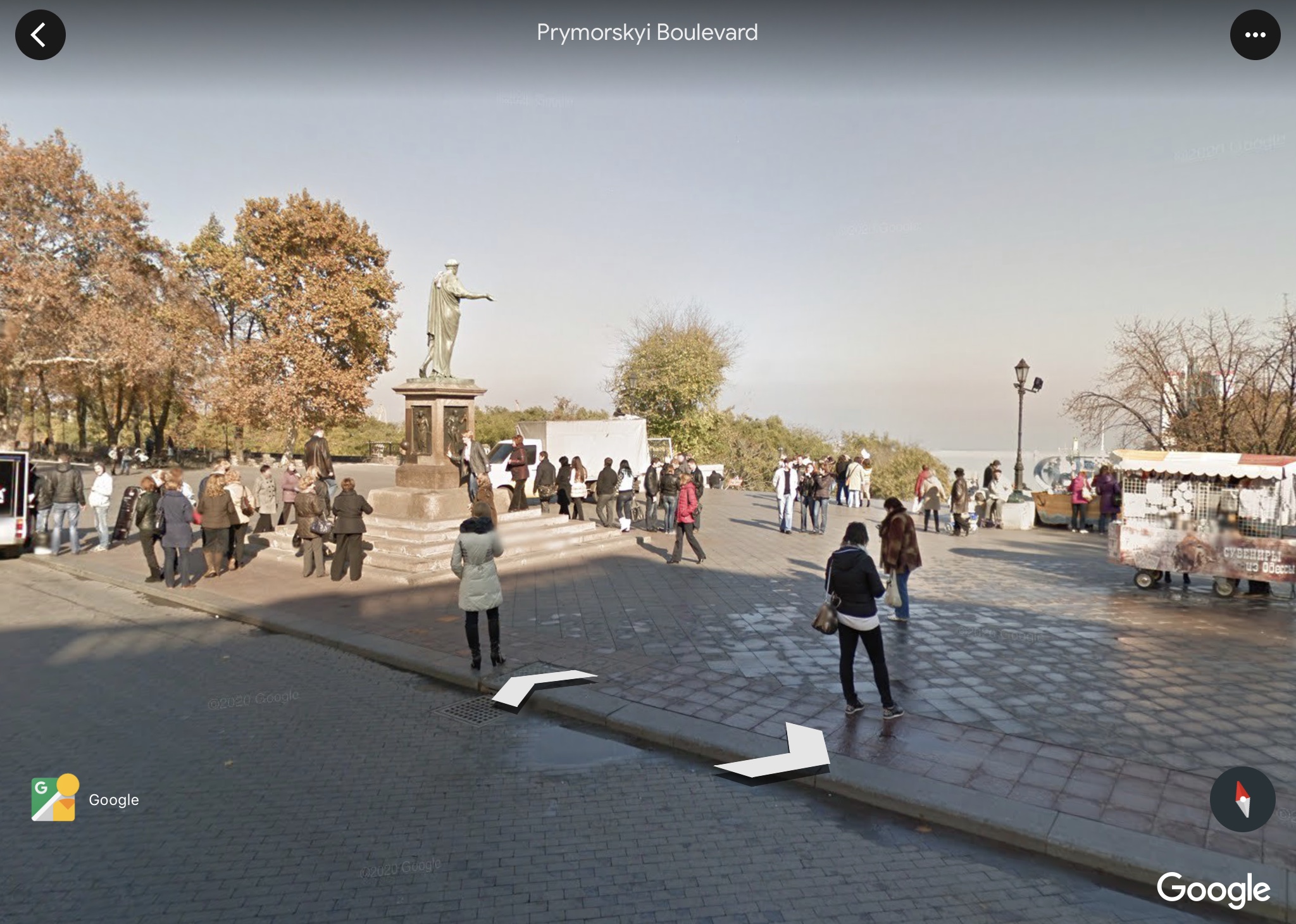 Top of the Prymorskyi/Potemkin Stairs on Prymorskyi Boulevard. The original location of the restaurant, latterly called the ‘Lighthouse’, was behind the statue of the Duc de Richelieu (Governor of Odesa in the early 1800s, and a fascinating character who developed the city into the third largest in the Russian Empire). The terrace is in a ruinous state. A pity, as it would seem to be a great location at the top of a very long flight of steps!
Top of the Prymorskyi/Potemkin Stairs on Prymorskyi Boulevard. The original location of the restaurant, latterly called the ‘Lighthouse’, was behind the statue of the Duc de Richelieu (Governor of Odesa in the early 1800s, and a fascinating character who developed the city into the third largest in the Russian Empire). The terrace is in a ruinous state. A pity, as it would seem to be a great location at the top of a very long flight of steps!
[00:05:49] Bench with man asleep, Strastnaya Square, Moscow (see also [00:14:39]).
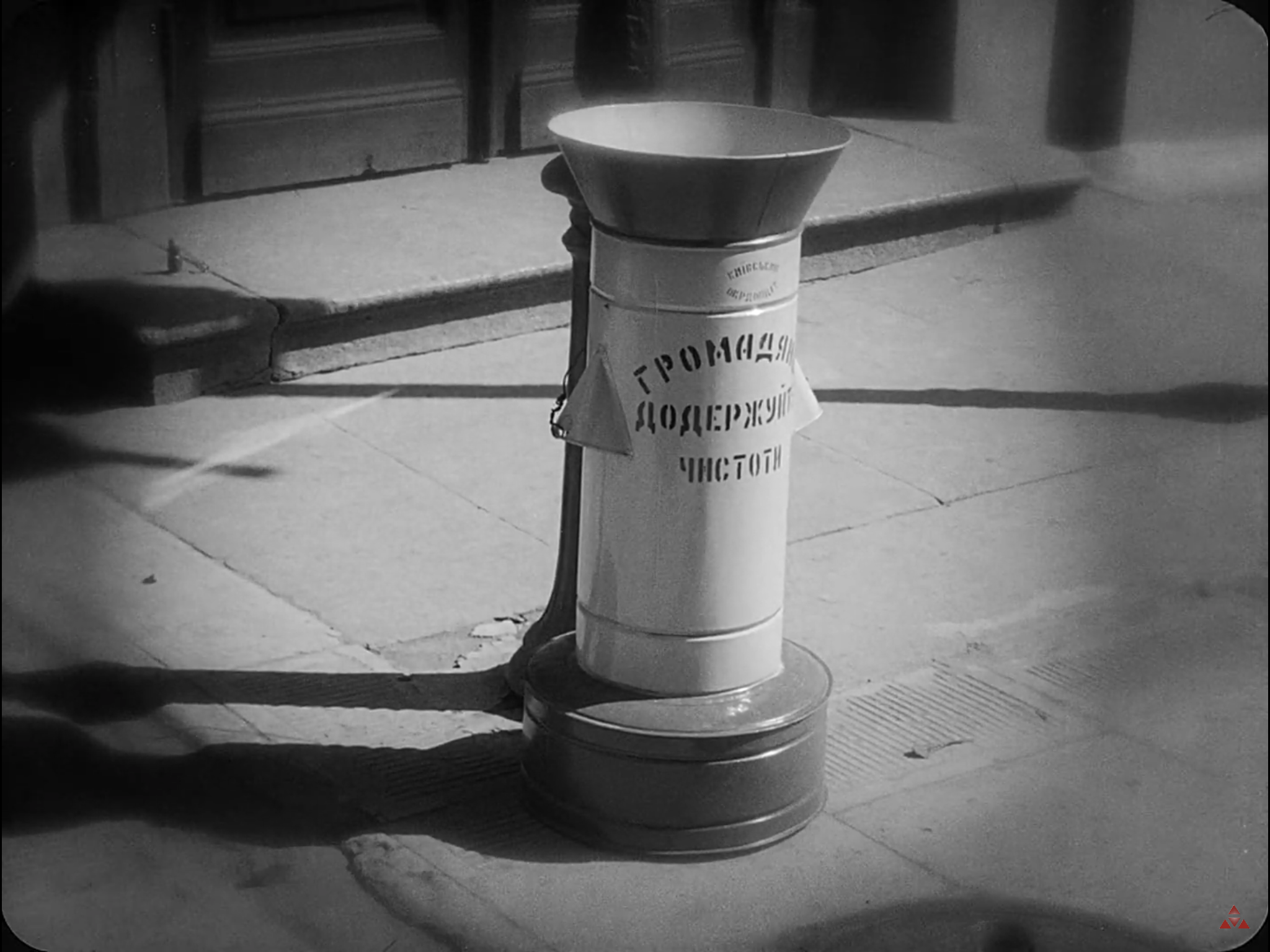 [00:05:53] Rubbish bin, Kyiv. The brand new bin (chained to a post) has an exhortation by the Kyiv City authorities: ‘Citizens – Preserve Cleanliness!’ (compare and contrast the rather tatty bins provided by its Moscow counterpart! [00:06:45])
[00:05:53] Rubbish bin, Kyiv. The brand new bin (chained to a post) has an exhortation by the Kyiv City authorities: ‘Citizens – Preserve Cleanliness!’ (compare and contrast the rather tatty bins provided by its Moscow counterpart! [00:06:45])
[00:05:55] Boy in rags asleep on a wooden container used for winter salt and grit, Moscow (see background of screenshot [00:14:39] for a similar container). Unable to find the exact location, possibly Strastnaya Square again.
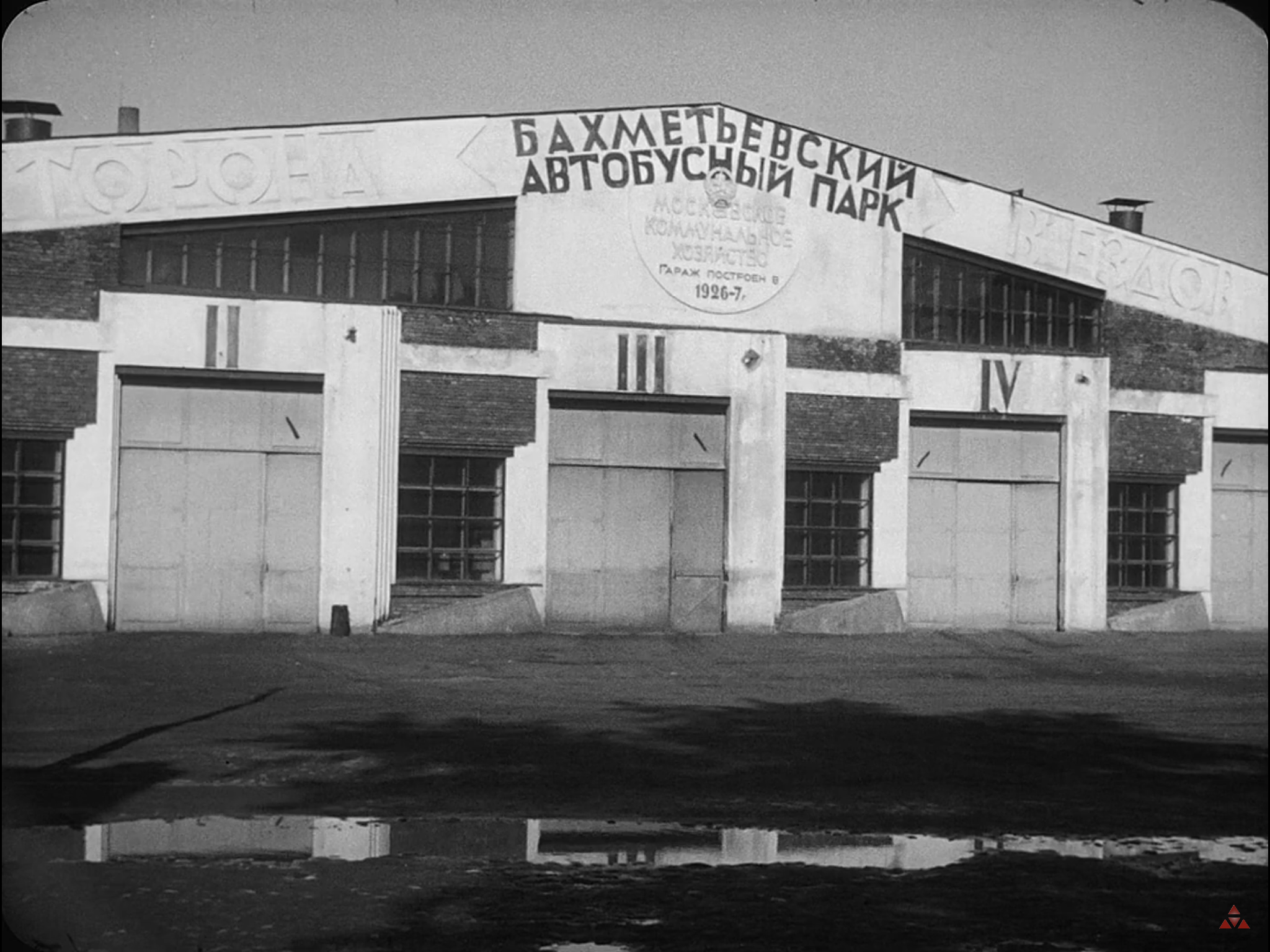 [00:06:00] Bakhmetevsky Bus Garage, Obraztsova Street, Moscow.
[00:06:00] Bakhmetevsky Bus Garage, Obraztsova Street, Moscow.
 A contemporary view of the garage.
A contemporary view of the garage.
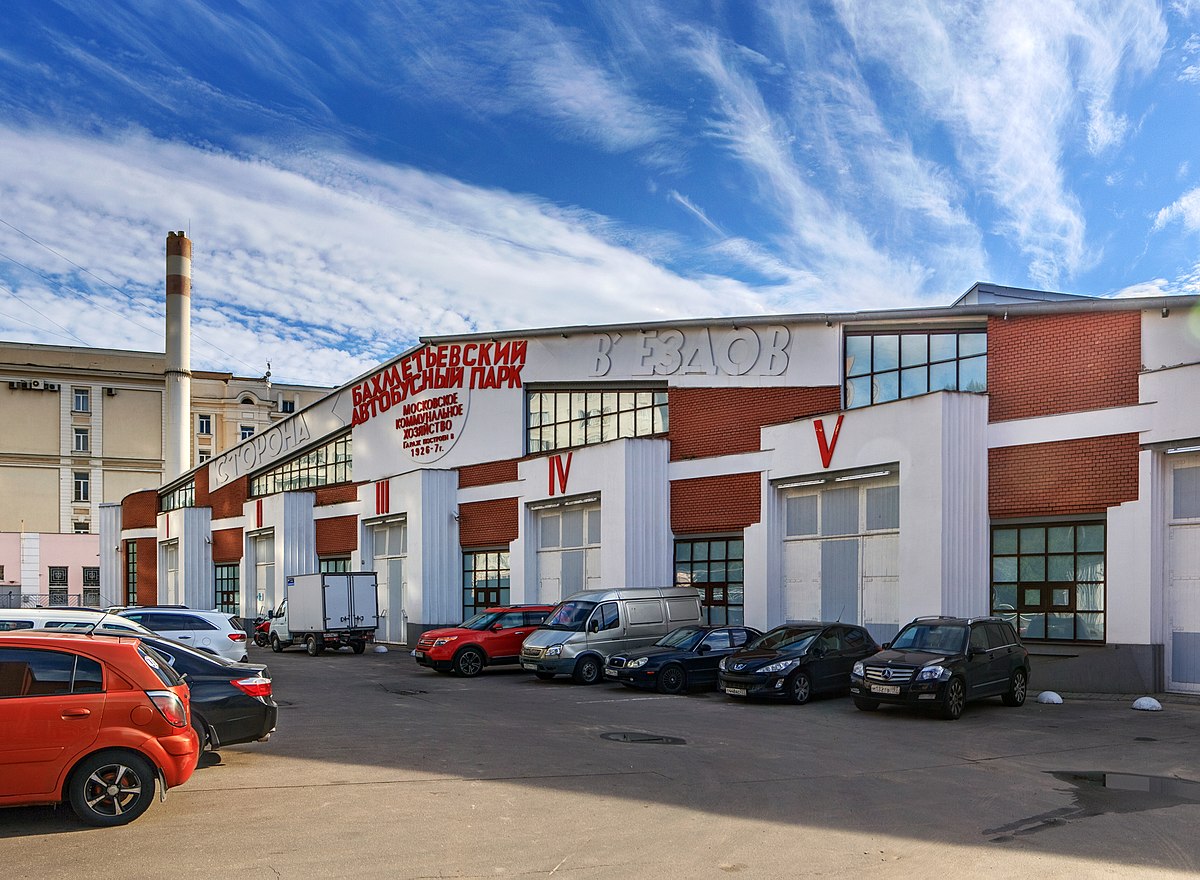 Current view after restoration and conversion into The Garage Center for Contemporary Culture.
Current view after restoration and conversion into The Garage Center for Contemporary Culture.
An iconic Moscow building, built in 1927, designed by the Constructivist architect Konstantin Melnikov (1890-1974), with structural design by the pioneering engineer Vladimir Shukhov (1853-1939). Not really a Constructivist building as it is quite conventional to look at in red brick and a low pitched roof. What makes it an avant-garde landmark in industrial architecture is the parallelogram shaped floor plan developed by Melnikov from an earlier design for a Paris garage. This enabled buses to drive in at one end and leave at the other without having to reverse which enabled many more buses to park in the garage than would be the case with a conventional layout (below). Neglected for decades and nearly demolished it was saved by Daria Zhukova and Roman Abramovich who converted it into the Garage Center for Contemporary Culture in 2007-2010. The gallery moved to Gorky Park in 2012 and then in 2015 to a spectacular OMA designed building in the park. The former bus garage is now the world’s largest Jewish Museum.
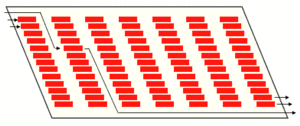 Diagrammatic plan of the garage (Wikipedia)
Diagrammatic plan of the garage (Wikipedia)
[00:06:04] Carriages, a driver asleep. Presumably near Odesa station as this type of carriage is seen collecting passengers in later scenes, but Yevgeny Volokin does not recognise the location as Odesa. Not verified.
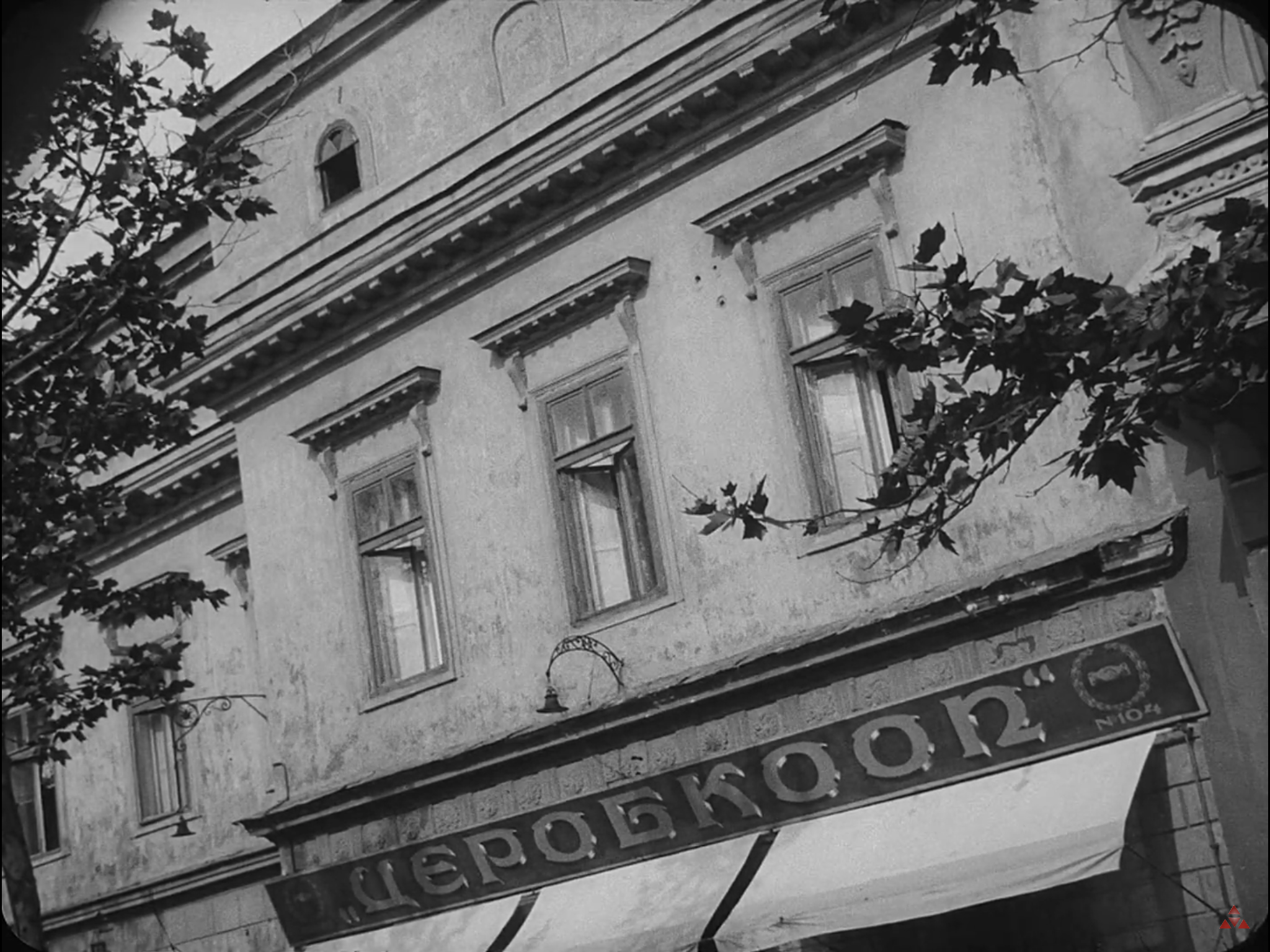 [00:06:08] Shop front fascia with sign reading TSEROBKOOP, 13 Pushkins’ka Street, Odesa. This is the Ukrainian acronym for Центральний робітничий кооператив (Central Workers Cooperative). The Kyiv acronym was SOROBKOOP (союз робітничих кооперативів). The Russian version was TSERABKOOP (Центральный рабочий кооператив) as shown below in a propaganda illustration of the early 1920s. These co-ops ran in parallel with the private enterprise shops during the NEP (New Economic Policy) period, the latter shown in various scenes throughout the film (eg [00:58:29]).
[00:06:08] Shop front fascia with sign reading TSEROBKOOP, 13 Pushkins’ka Street, Odesa. This is the Ukrainian acronym for Центральний робітничий кооператив (Central Workers Cooperative). The Kyiv acronym was SOROBKOOP (союз робітничих кооперативів). The Russian version was TSERABKOOP (Центральный рабочий кооператив) as shown below in a propaganda illustration of the early 1920s. These co-ops ran in parallel with the private enterprise shops during the NEP (New Economic Policy) period, the latter shown in various scenes throughout the film (eg [00:58:29]).

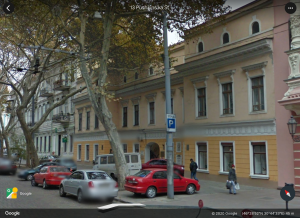 The shop was in the right hand part of the building which also houses the Pushkin Museum. Pushkin lived in an apartment here during 1823 and 1824, exiled from Moscow.
The shop was in the right hand part of the building which also houses the Pushkin Museum. Pushkin lived in an apartment here during 1823 and 1824, exiled from Moscow.
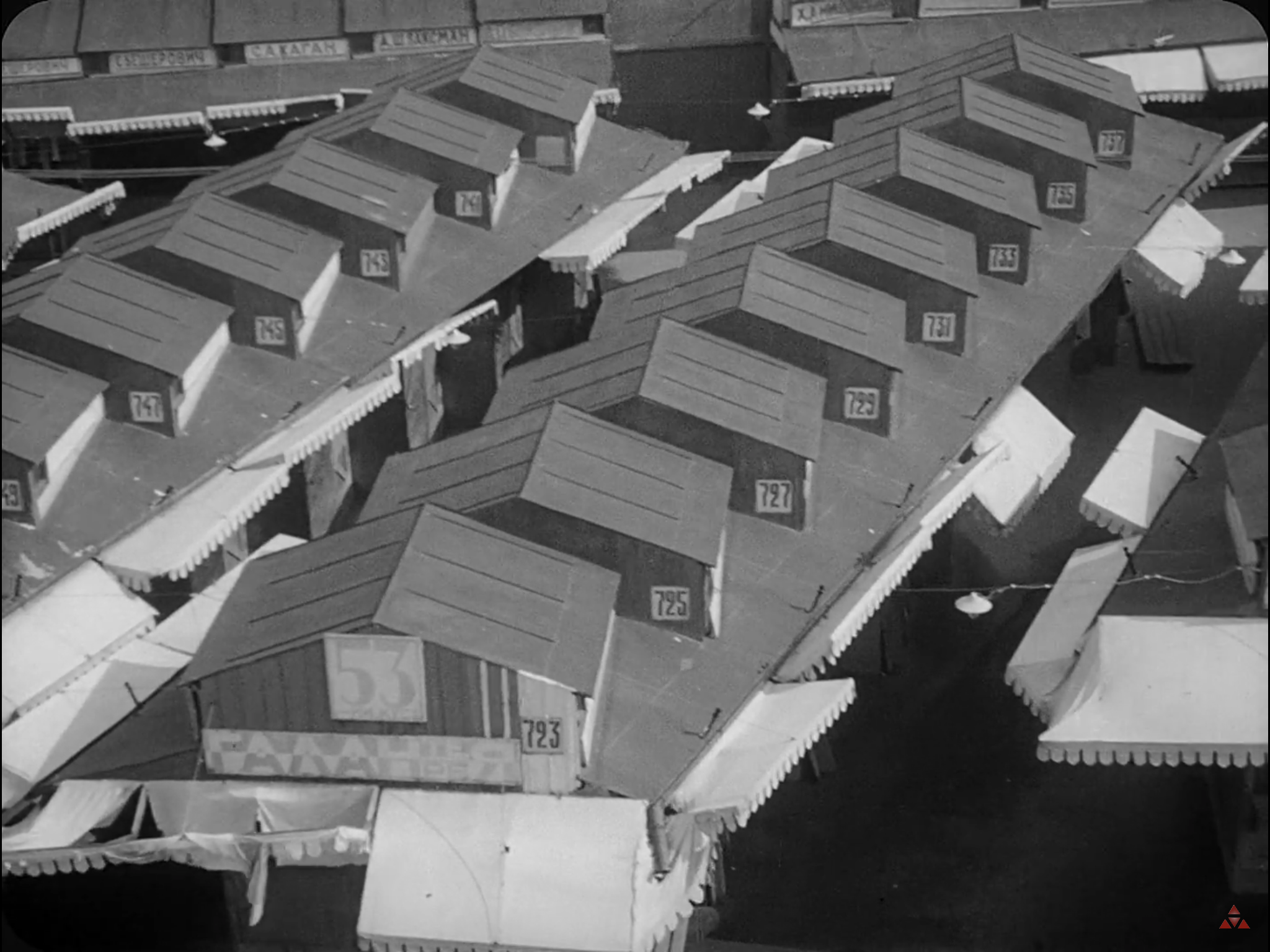 [00:06:12] Novo-Sukharevsky Market (1926-1930), North Moscow.
[00:06:12] Novo-Sukharevsky Market (1926-1930), North Moscow.

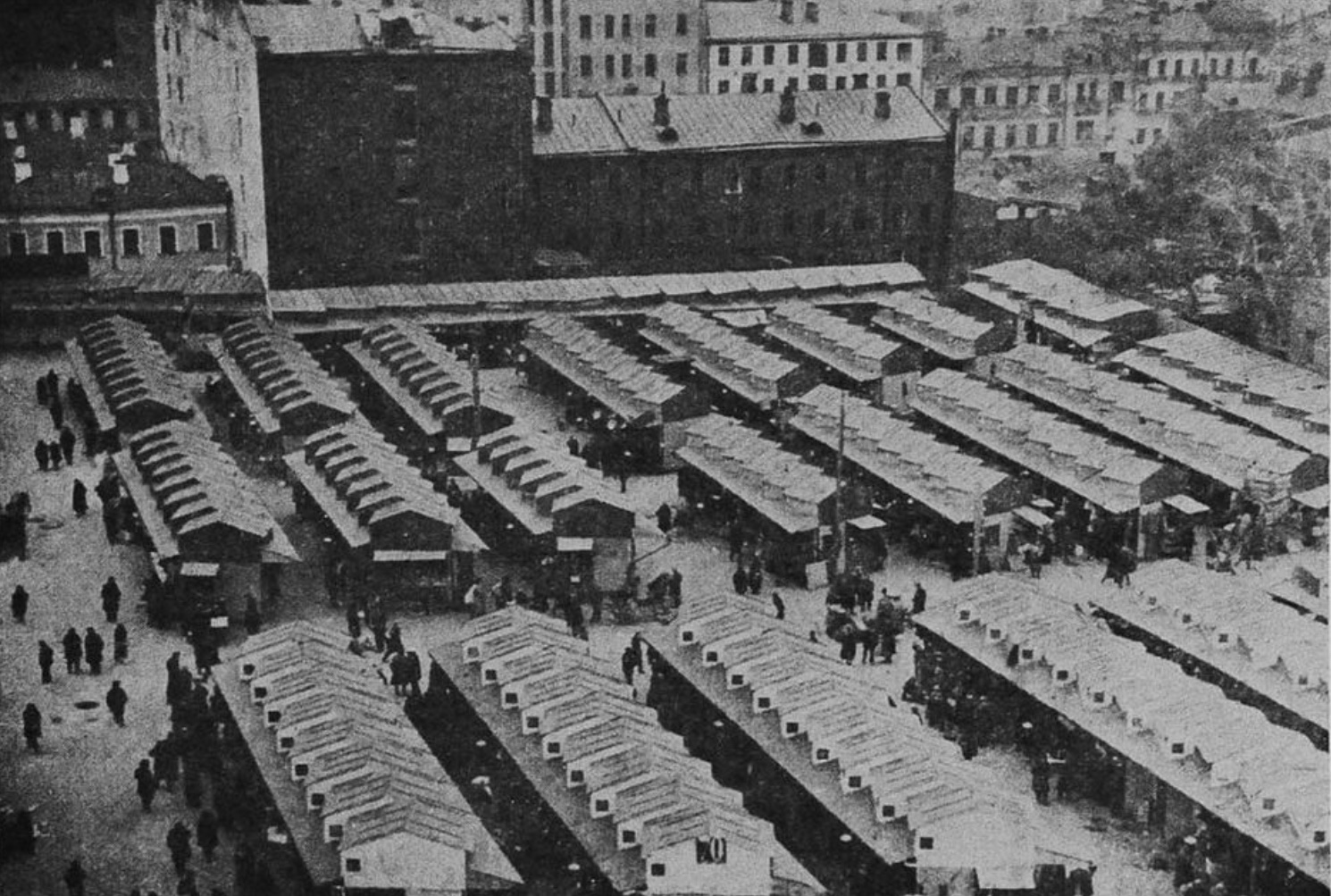 Contemporary aerial views of the interesting roof design of the market.
Contemporary aerial views of the interesting roof design of the market.
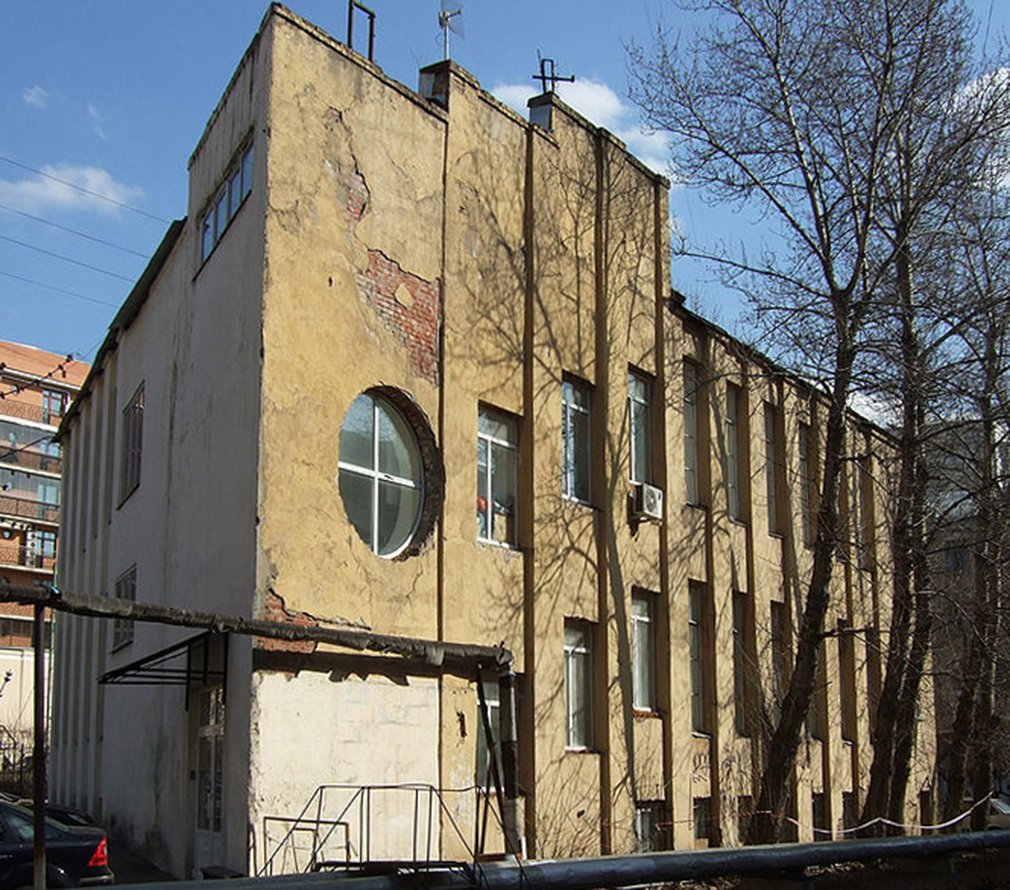 The Market office building – the only surviving structure (to be restored).
The Market office building – the only surviving structure (to be restored).
Designed by Konstantin Melnikov, the construction of the market began in 1924, after the city decided to replace the unofficial outdoor market on Sukharevka. The stalls in wooden pavilions were put up on a vacant plot of land between Bolshoi Sukharevsky Pereulok, Trubnaya and Sadovo-Sukharevskaya streets. The three shopping aisles converged like rays towards the centre, where the brick office building was located. The market was vacated in 1930. Information and photograph of the office building from the Moscow City website.
[00:06:16] ‘Ginzburg Skyscraper’ courtyard, Kyiv (see [00:08:46 on] and [00:13:08] for more images and details of this huge apartment building, built in 1912). The angled shot seems influenced by the photographs of Vertov’s friend Alexander Rodchenko but he had been experimenting with such compositional devices since the ‘Kino-pravda’ newsreels (1922-25).
[00:06:19] Maternity hospital interior. Unable to find location.
[00:06:29] Apartment building exterior, windows with shutters. Unable to find location.
 [00:06:34] At first glance this looks like a park overlooking the sea, and therefore in Odesa. However, the sea does not look like this from the high viewpoint of the city parks [00:09:54] [00:55:41], and Yevgeny Volokin confirmed that it is not in Odesa. I believe it to be a park or square in Moscow because the letters MK can just be seen on some of the distinctive rubbish bins of this era between the benches. MK stands for “Московский коммунальщик” (Moscow Communal Services) and the same initials are seen more clearly on the bin in screenshot [00:06:45]. What appears to be the sea is more likely a large area of cobbles (see [00:15:10] for a similar texture). There are also possible tram lines top right. There are no other obvious clues, and the landscaping is rather nondescript so I can’t find the exact location in Moscow.
[00:06:34] At first glance this looks like a park overlooking the sea, and therefore in Odesa. However, the sea does not look like this from the high viewpoint of the city parks [00:09:54] [00:55:41], and Yevgeny Volokin confirmed that it is not in Odesa. I believe it to be a park or square in Moscow because the letters MK can just be seen on some of the distinctive rubbish bins of this era between the benches. MK stands for “Московский коммунальщик” (Moscow Communal Services) and the same initials are seen more clearly on the bin in screenshot [00:06:45]. What appears to be the sea is more likely a large area of cobbles (see [00:15:10] for a similar texture). There are also possible tram lines top right. There are no other obvious clues, and the landscaping is rather nondescript so I can’t find the exact location in Moscow.
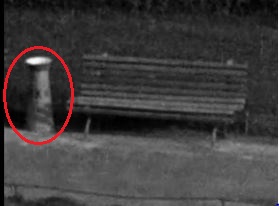
These ‘урна’ (urns) featured in a long running children’s cartoon series (1969-2006) called “Ну, погоди!”(“Well, just you wait!”) being constantly kicked over by a naughty wolf! [thanks to the Museum of Moscow for information on bins and cartoon].

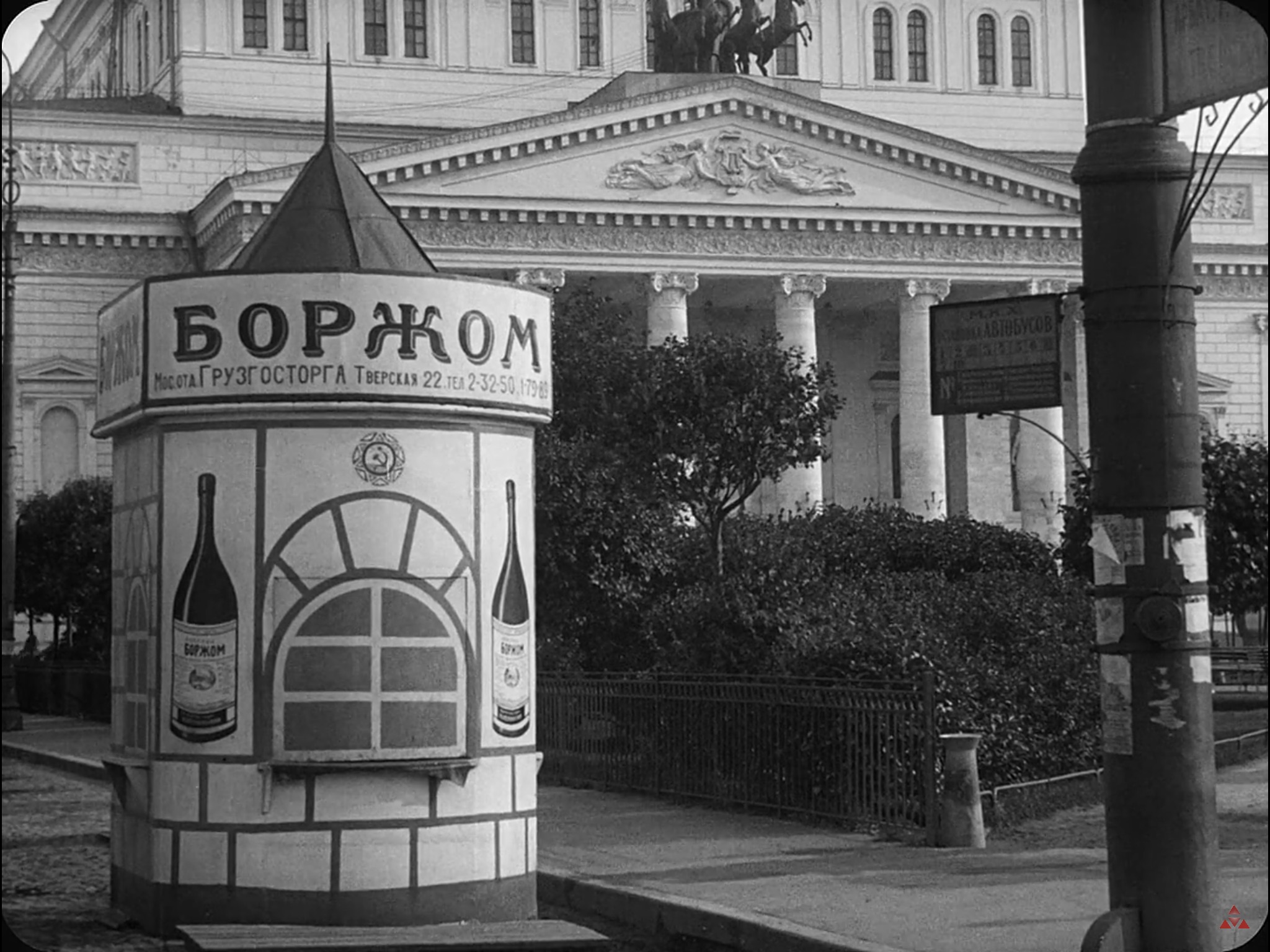 [00:06:40] Bolshoi Theatre, Theatre Square, Moscow. Advertisement for BORJOMI mineral water from Georgia (still being produced). See above for details of rubbish bin.
[00:06:40] Bolshoi Theatre, Theatre Square, Moscow. Advertisement for BORJOMI mineral water from Georgia (still being produced). See above for details of rubbish bin.
 [00:06:45] Park bench with MK rubbish bin, Moscow (see above for details). Exact location not found. The bench design differs slightly from that in Strastnaya Square (see [00:14:30] and [00:14:39]).
[00:06:45] Park bench with MK rubbish bin, Moscow (see above for details). Exact location not found. The bench design differs slightly from that in Strastnaya Square (see [00:14:30] and [00:14:39]).
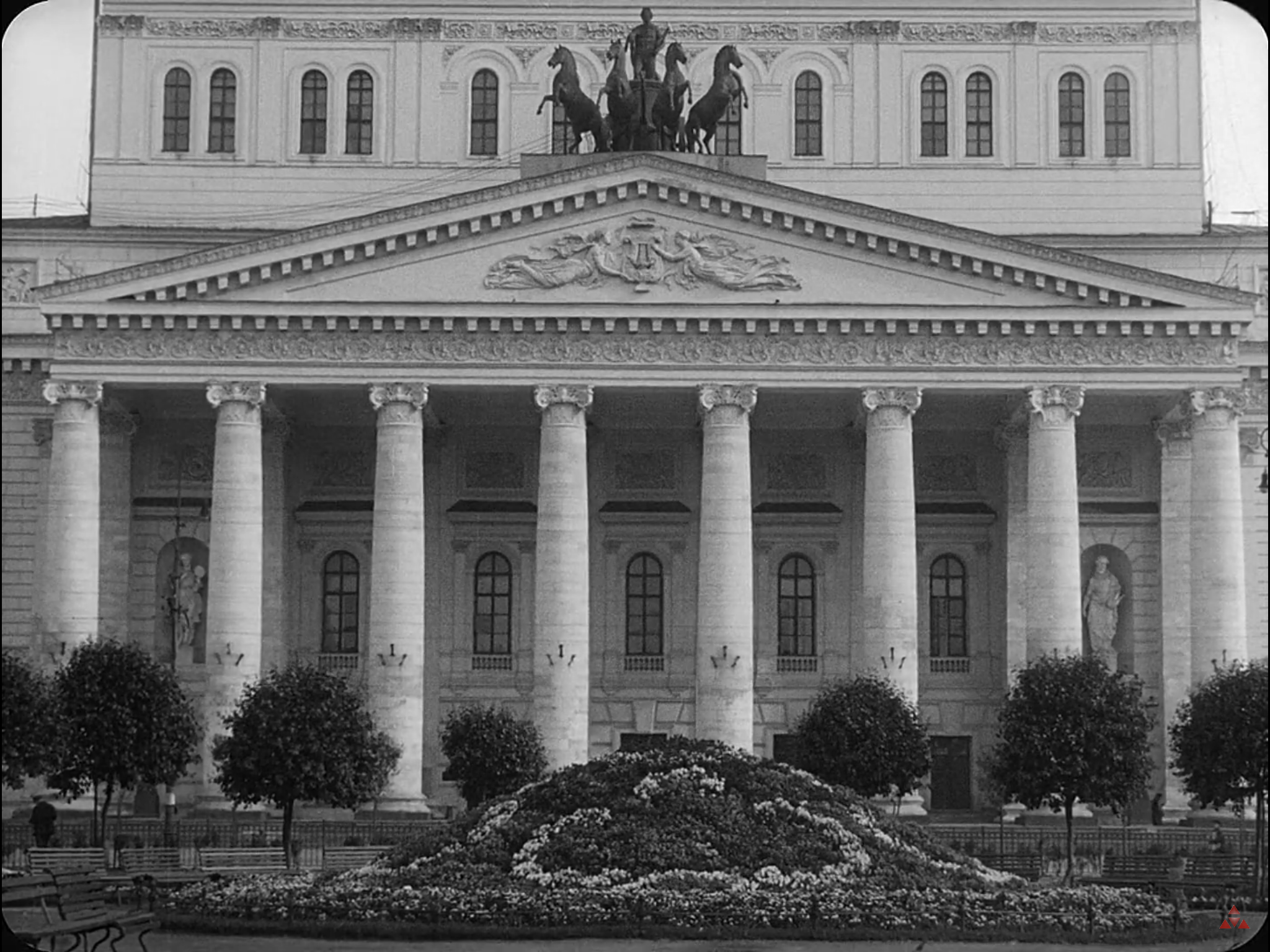 [00:06:48] Bolshoi Theatre.
[00:06:48] Bolshoi Theatre.
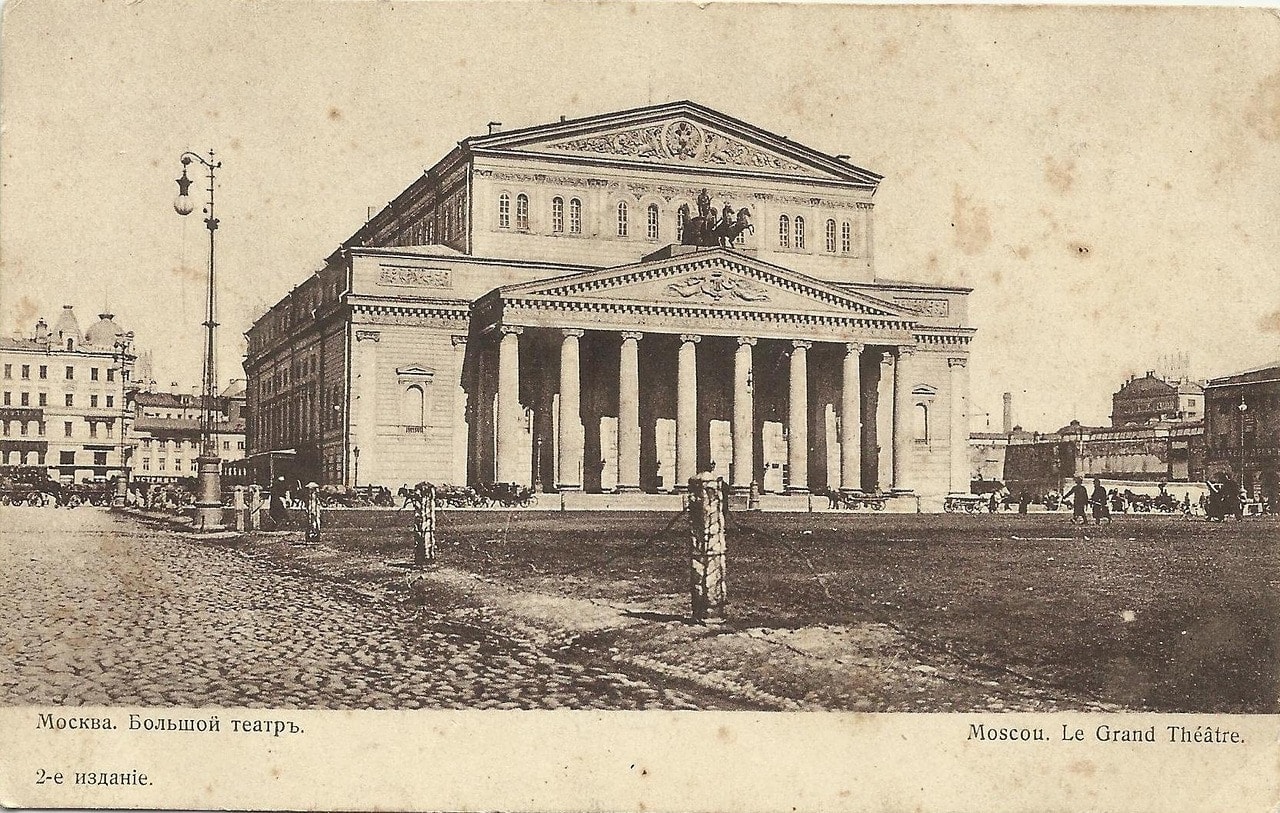 19thC postcard of the theatre.
19thC postcard of the theatre.
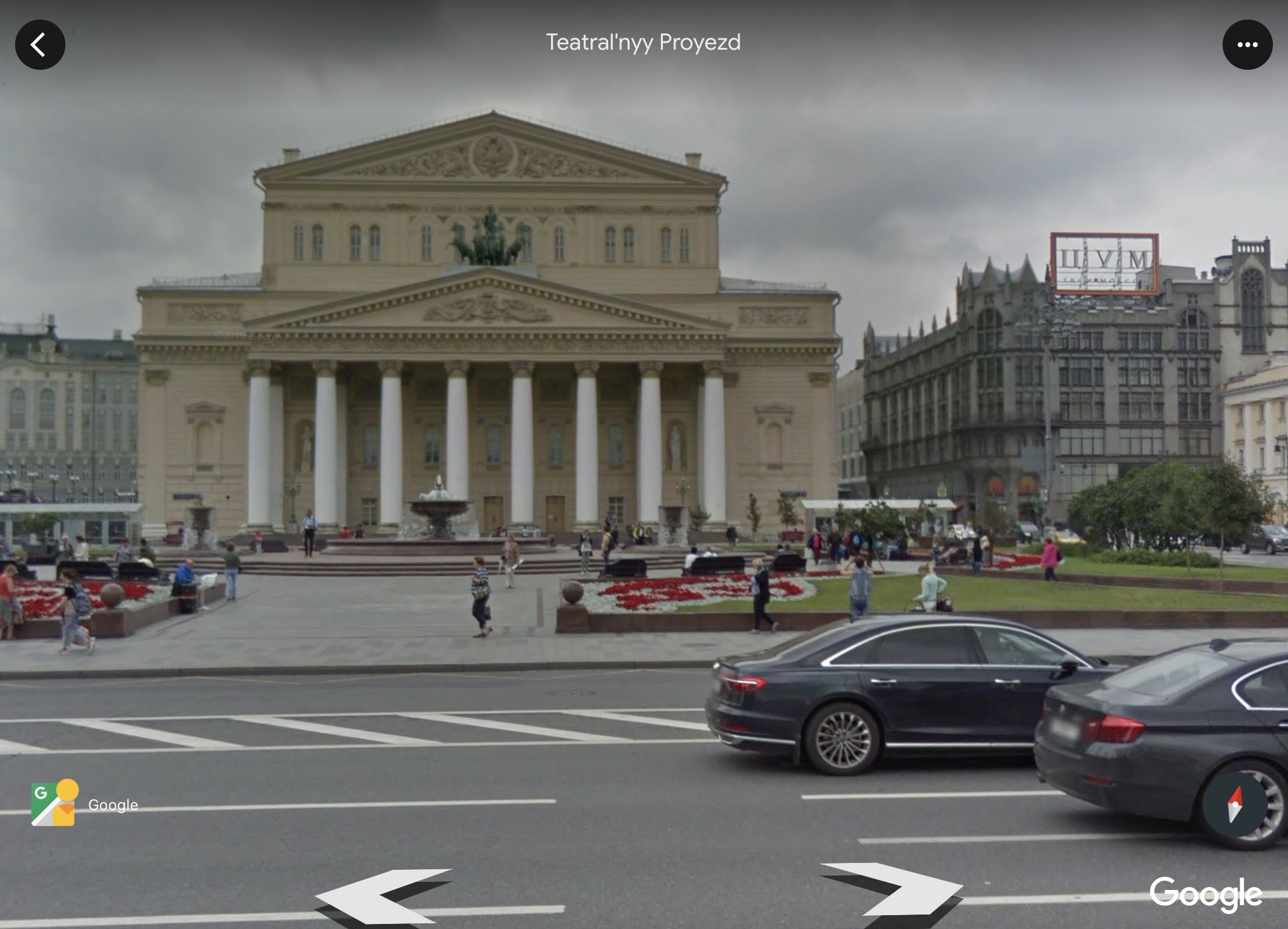 Current view [Google Earth].
Current view [Google Earth].
The Bolshoi Theatre originally opened in 1825 as the Big (bolshoi) Petrovsky Theatre (as it was larger than its predecessor) which was the focal point of a new Theatre Square, but nearly thirty years later it was destroyed by fire. The rebuilt theatre was designed by Alberto Cavos and opened in August 1856, in time for Tsar Alexander IIs coronation. After the Revolution, there was serious talk of closing the theatre as one of the main symbols of Tsarist and bourgeois culture, but the Bolshevik government decided to keep it as a congress centre. It was from the Bolshoi Theatre stage that the declaration of the formation of the USSR was made in 1922. Further information from the Bolshoi website.
[00:06:57] Wine, vodka and food shop, Moscow (signs are in Russian).
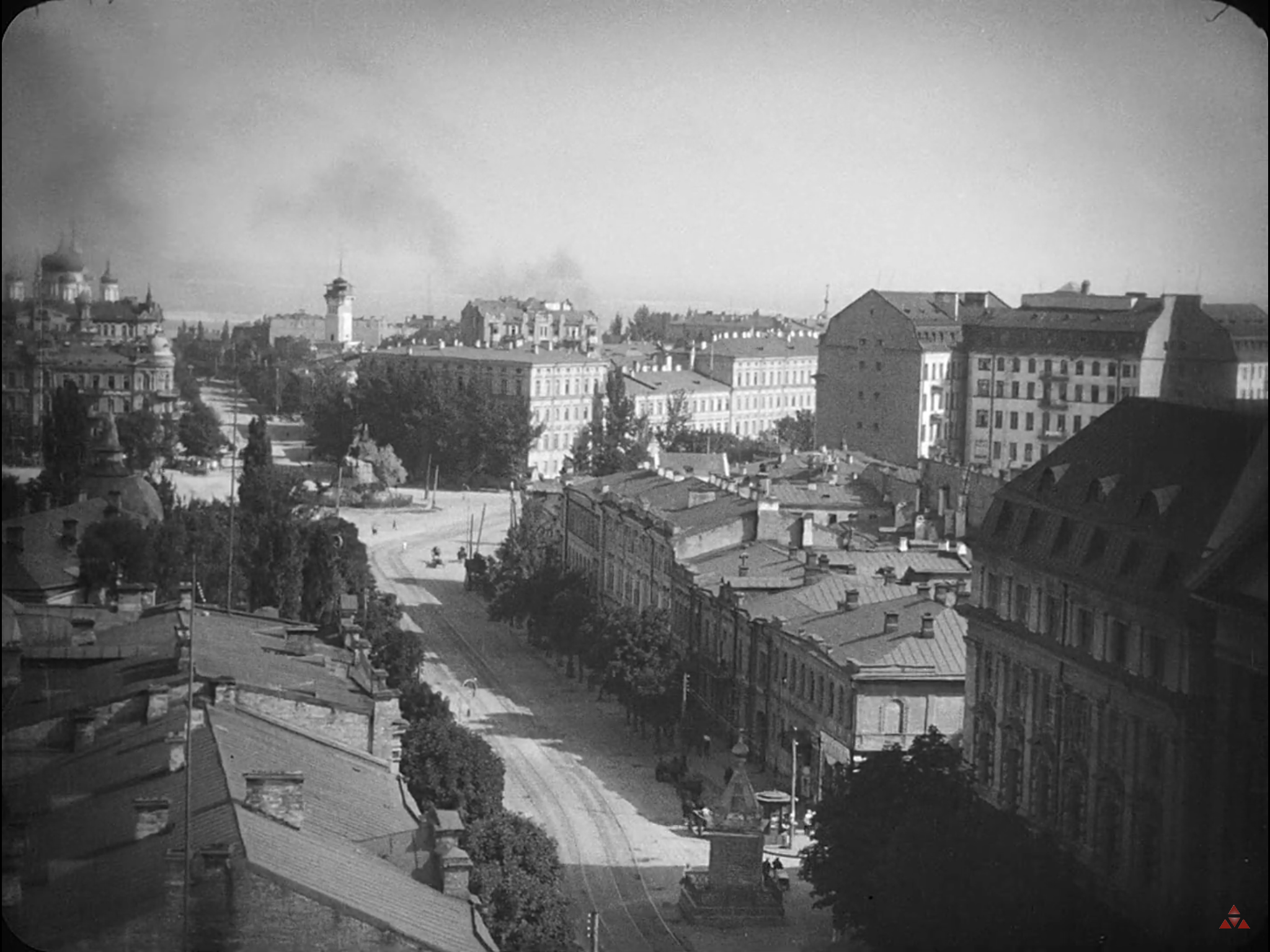 [00:07:03] Volodymyrska Street looking towards Sofiys’ka Square, Kyiv (Bogdan Khmelnitsky statue in the centre of the square).
[00:07:03] Volodymyrska Street looking towards Sofiys’ka Square, Kyiv (Bogdan Khmelnitsky statue in the centre of the square).
Known as Korolenko Street at the time of the film, this is one of the most historic areas of Kyiv: on the lhs behind the trees is the entrance to St Sophia’s Cathedral; the conical structure in the middle of the street is the Irina Pillar, the remains of an 11thC church (removed in 1932); the church with the dome in the background lhs is the 19thC Church of the Tithes built on the site of a 10thC predecessor destroyed by the Mongols in 1240. The new one was also destroyed in 1936, but there are controversial plans to rebuild it. The tower in the background is a mid 19thC fire observation and signalling structure. A fire station is still based in the building under the tower.
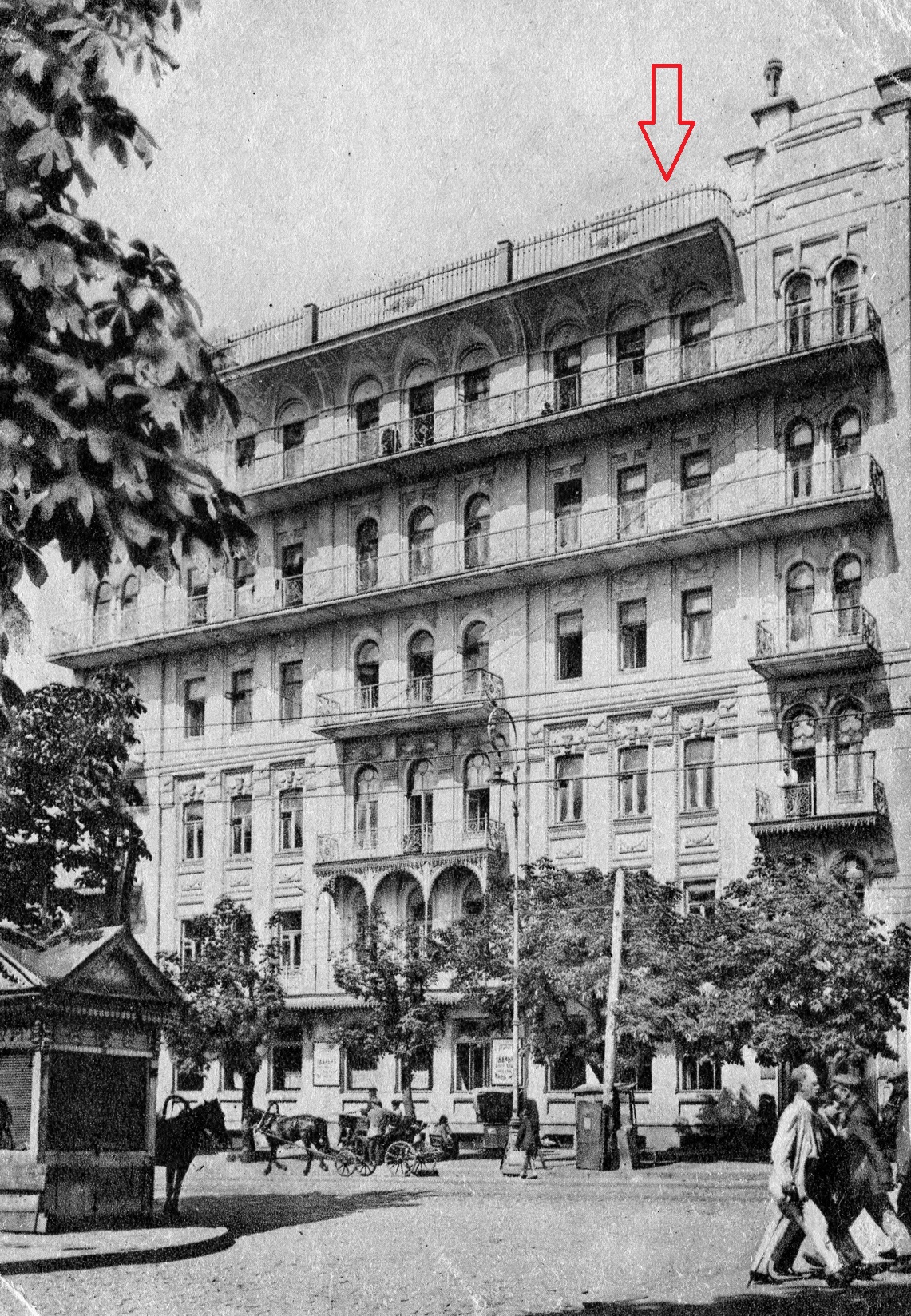 Mykhailo Kalnytsky suggests that the camera would have been located on the summer restaurant terrace on the top of the ‘Red Kiev’ Hotel (formerly Prague Hotel) at Volodymyrska 36.
Mykhailo Kalnytsky suggests that the camera would have been located on the summer restaurant terrace on the top of the ‘Red Kiev’ Hotel (formerly Prague Hotel) at Volodymyrska 36.
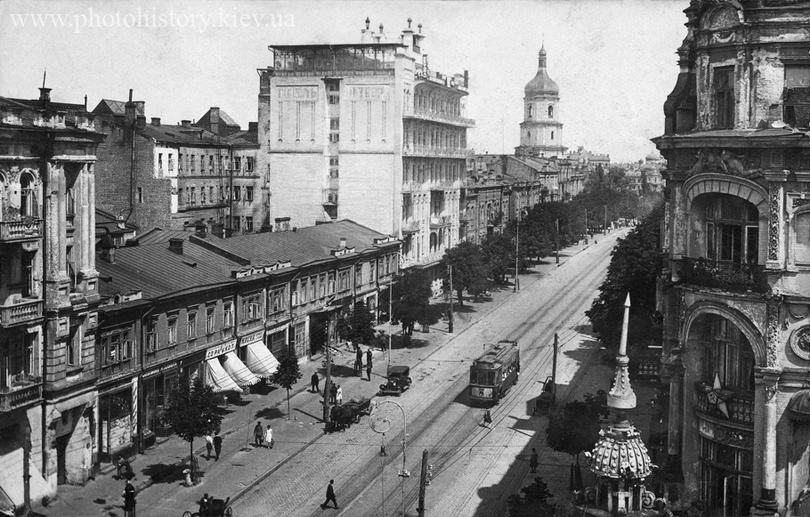 Another view of the hotel and roof terrace looking towards Sofiys’ka Square, showing why it was the likely high level location for the camera. St Sophia’s Cathedral bell tower in the background. [photohistory.kiev.ua]
Another view of the hotel and roof terrace looking towards Sofiys’ka Square, showing why it was the likely high level location for the camera. St Sophia’s Cathedral bell tower in the background. [photohistory.kiev.ua]
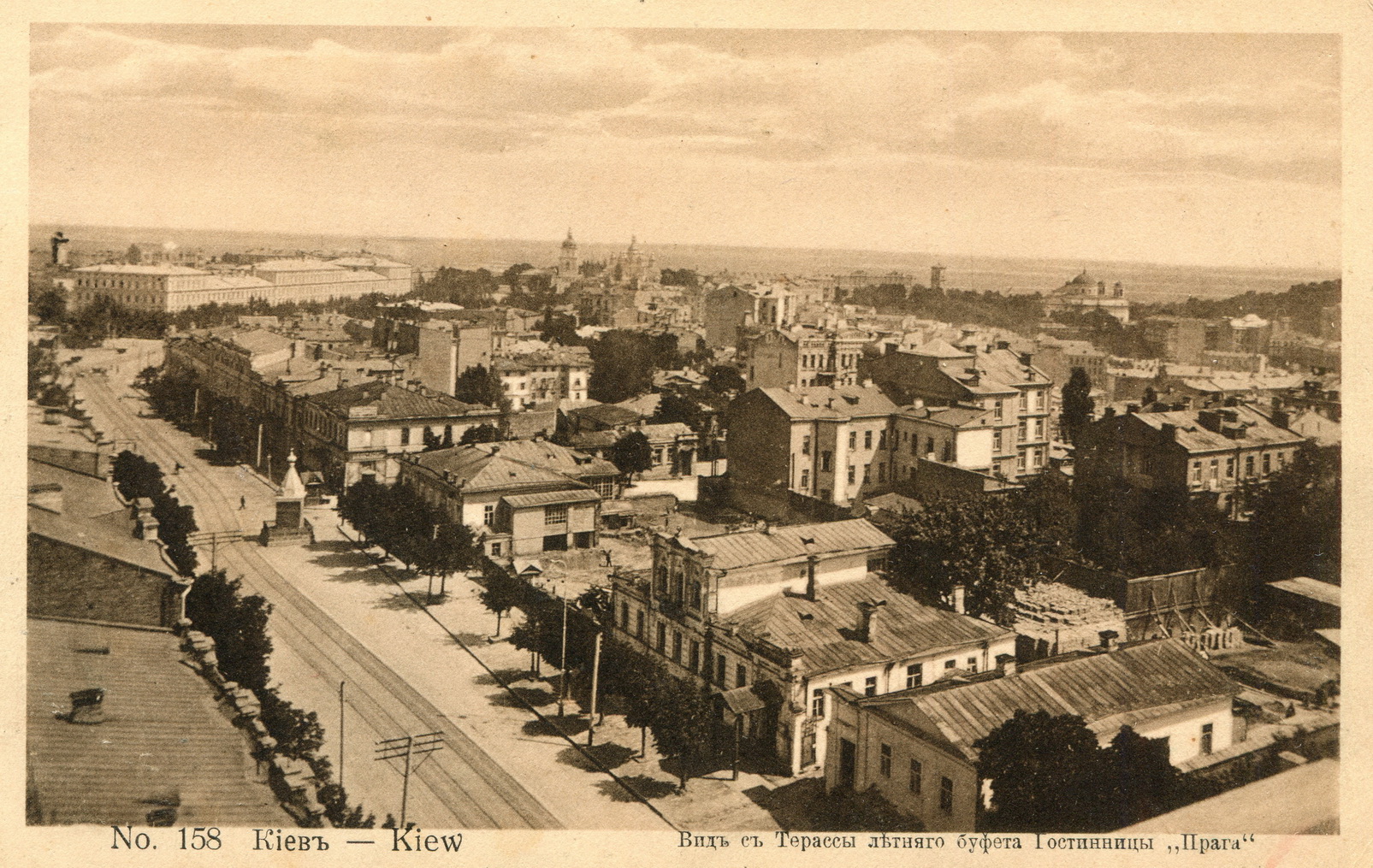 Mr Kalnytsky has also provided a postcard from c1913 with the view from the terrace for comparison. Note the second roof on the lhs which is also seen in the screenshot.
Mr Kalnytsky has also provided a postcard from c1913 with the view from the terrace for comparison. Note the second roof on the lhs which is also seen in the screenshot.
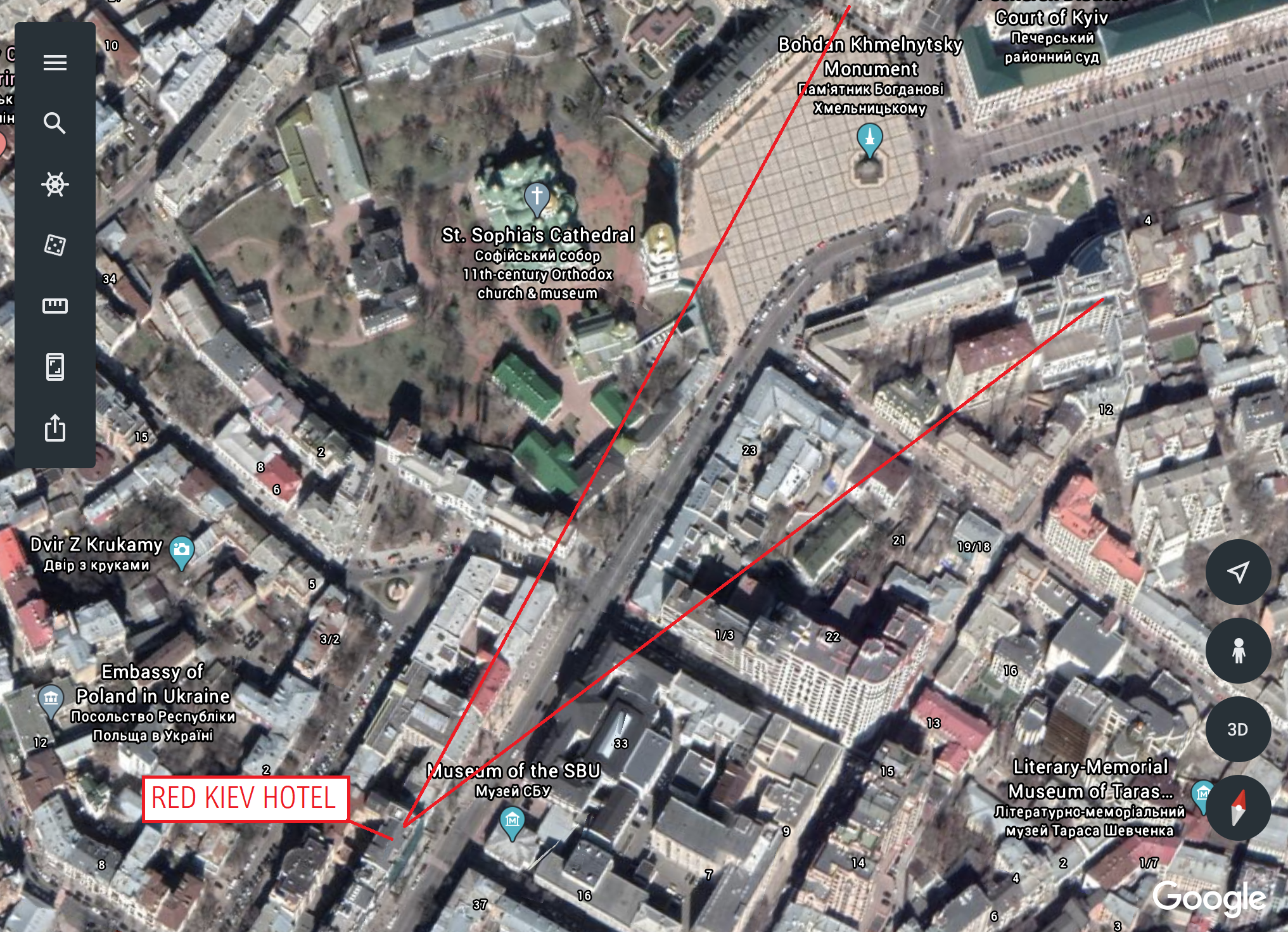 The hotel is quite far away from the square but the 15cm Krauss Zeiss telephoto lens would probably have been used (see [00:55:59] for the view with the 21cm telephoto lens). See my blog post about the cameras in the film for information on the lenses. [Google Earth]
The hotel is quite far away from the square but the 15cm Krauss Zeiss telephoto lens would probably have been used (see [00:55:59] for the view with the 21cm telephoto lens). See my blog post about the cameras in the film for information on the lenses. [Google Earth]
[00:07:08] Ladies & Men’s hairdresser, Moscow (Russian sign). Location not found.
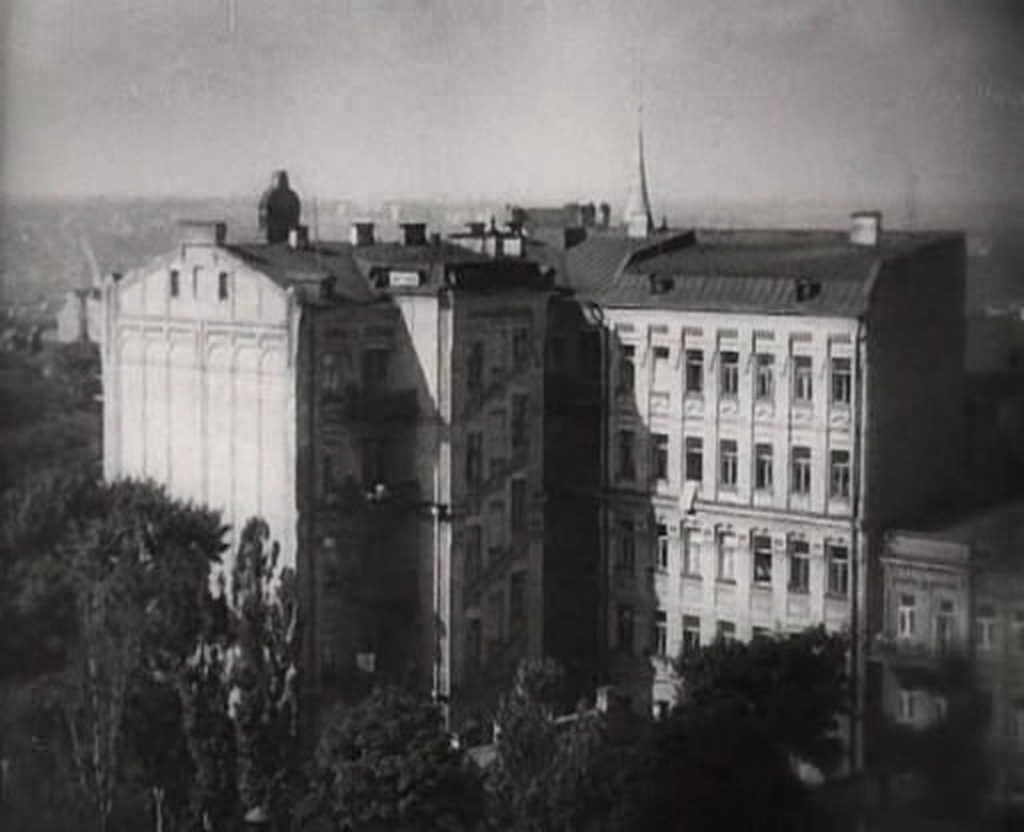 [00:07:11] Large apartment block, Kyiv. Rear of building on Yaroslaviv Val (off Volodymyrska Street). Mykhailo Kalnytsky suggests that this shot was also taken from the roof terrace of the Red Kiev Hotel, in a SW direction.
[00:07:11] Large apartment block, Kyiv. Rear of building on Yaroslaviv Val (off Volodymyrska Street). Mykhailo Kalnytsky suggests that this shot was also taken from the roof terrace of the Red Kiev Hotel, in a SW direction.
The beautiful facade of the 1907 building designed by Josef Zekzer, and the distinctive rear staircase (visible on the screenshot). [photographs M. Kalnytsky]
[00:07:14] Singer sewing machine shop. Location not found.
[00:07:19] Another angled image of the Ginzburg Skyscraper courtyard, Kyiv. On the rhs is the keystone over the entrance arch seen in the photograph in screenshot [00:08:46] description.
[00:07:22] Radio (?) shop with dummy cyclist. Location not found.
[00:07:26] Building with large windows. Location not found.
[00:07:34] Lift lobby, probably Palace Hotel, Kyiv (see [00:25:57]).
 [00:07:46] The first of many scenes on Kuznetsky Most in central Moscow. The poster is advertising an anniversary (presumably the 60th as he was born in 1868) collection of Maxim Gorky’s works available from the state publishing house Gosizdat.
[00:07:46] The first of many scenes on Kuznetsky Most in central Moscow. The poster is advertising an anniversary (presumably the 60th as he was born in 1868) collection of Maxim Gorky’s works available from the state publishing house Gosizdat.
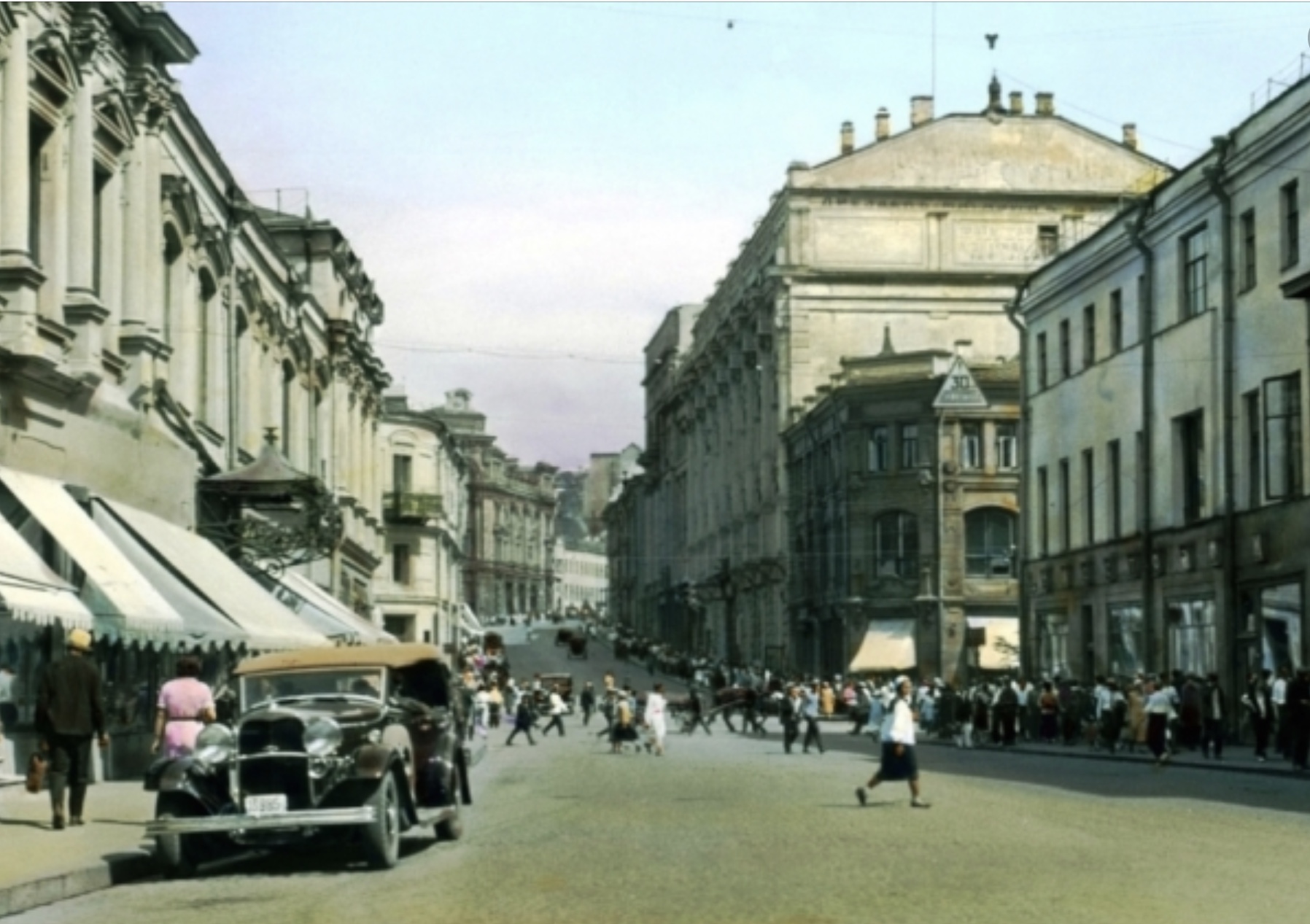 A similar view of the street from the early 1930s with a luxury Lincoln Model K parked next to the building under the banner above. No doubt a top ranking official going shopping!
A similar view of the street from the early 1930s with a luxury Lincoln Model K parked next to the building under the banner above. No doubt a top ranking official going shopping!
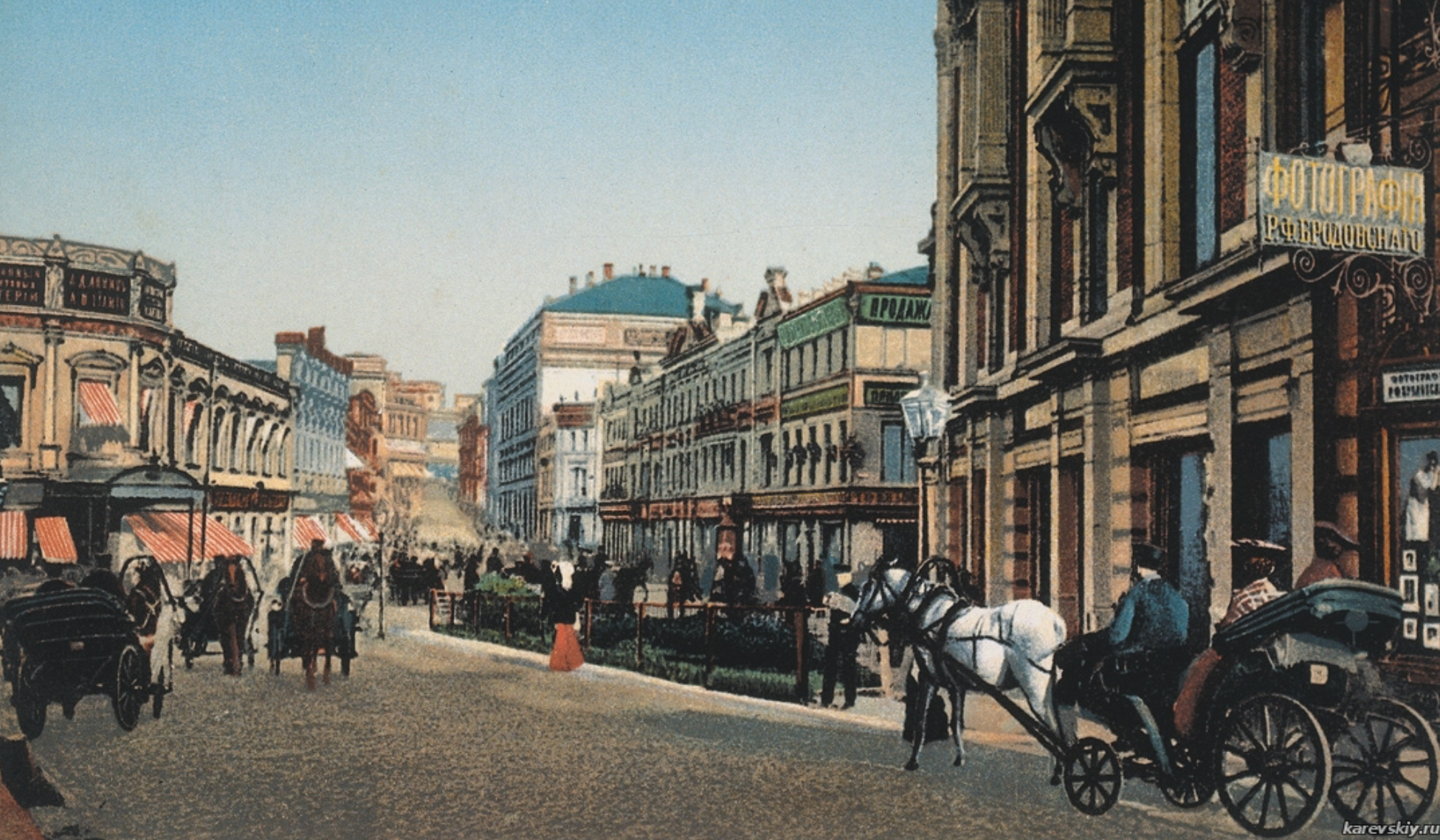 Late 19th Century postcard of the street looking towards the same junction (all the buildings in the background are recognisable in the screenshot).
Late 19th Century postcard of the street looking towards the same junction (all the buildings in the background are recognisable in the screenshot).
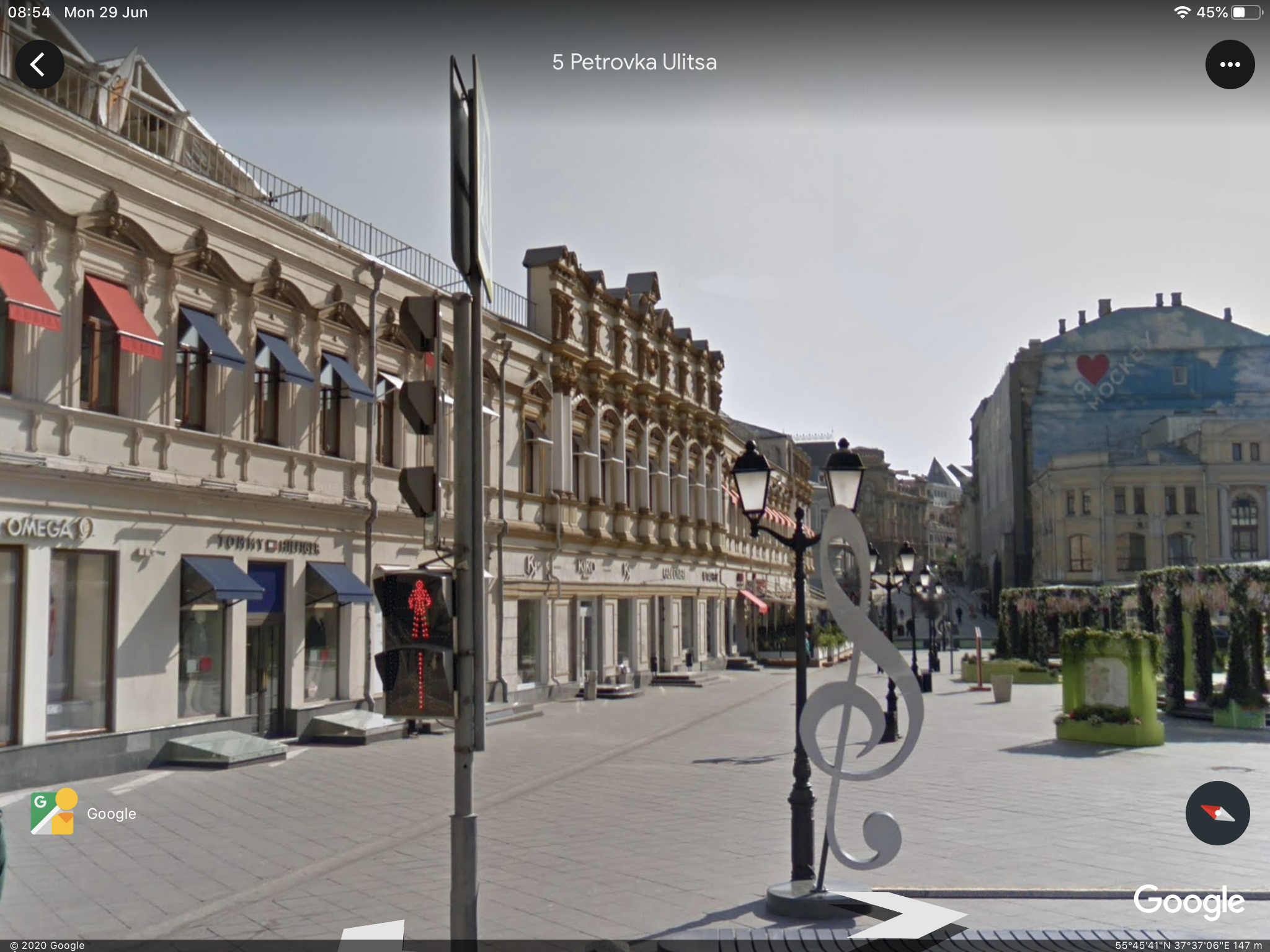 Current appearance of the street from a similar viewpoint as the screenshot. The buildings on the left have survived, and the large one on the rhs. [Google Earth]
Current appearance of the street from a similar viewpoint as the screenshot. The buildings on the left have survived, and the large one on the rhs. [Google Earth]
One of the oldest streets in the city, since the 18th Century Kuznetsky Most has been a fashionable shopping street, and still is. The name is derived from ‘Blacksmith’s bridge’ over a river that now runs underground. After the Revolution it became a centre for writers and culture (the Moscow House of Artists and School of Fine Arts are located here). Fortunately it is one of the few historic streets in central Moscow that escaped Stalin’s disastrous town planning and so is recognisable from the film.
[00:07:55] Industrial silhouette – probably filmed in the Donbas or Kamianske for ‘The Eleventh Year’.
 [00:08:04] Izvestia newspaper building, Strastnaya Square (re-named Pushkinskaya Square in 1931), Moscow. The tower of the doomed Strastnoy (Passion) Monastery is on the right.
[00:08:04] Izvestia newspaper building, Strastnaya Square (re-named Pushkinskaya Square in 1931), Moscow. The tower of the doomed Strastnoy (Passion) Monastery is on the right.
 1950s view of building (after the demolition of Strastnoy Monastery).
1950s view of building (after the demolition of Strastnoy Monastery).
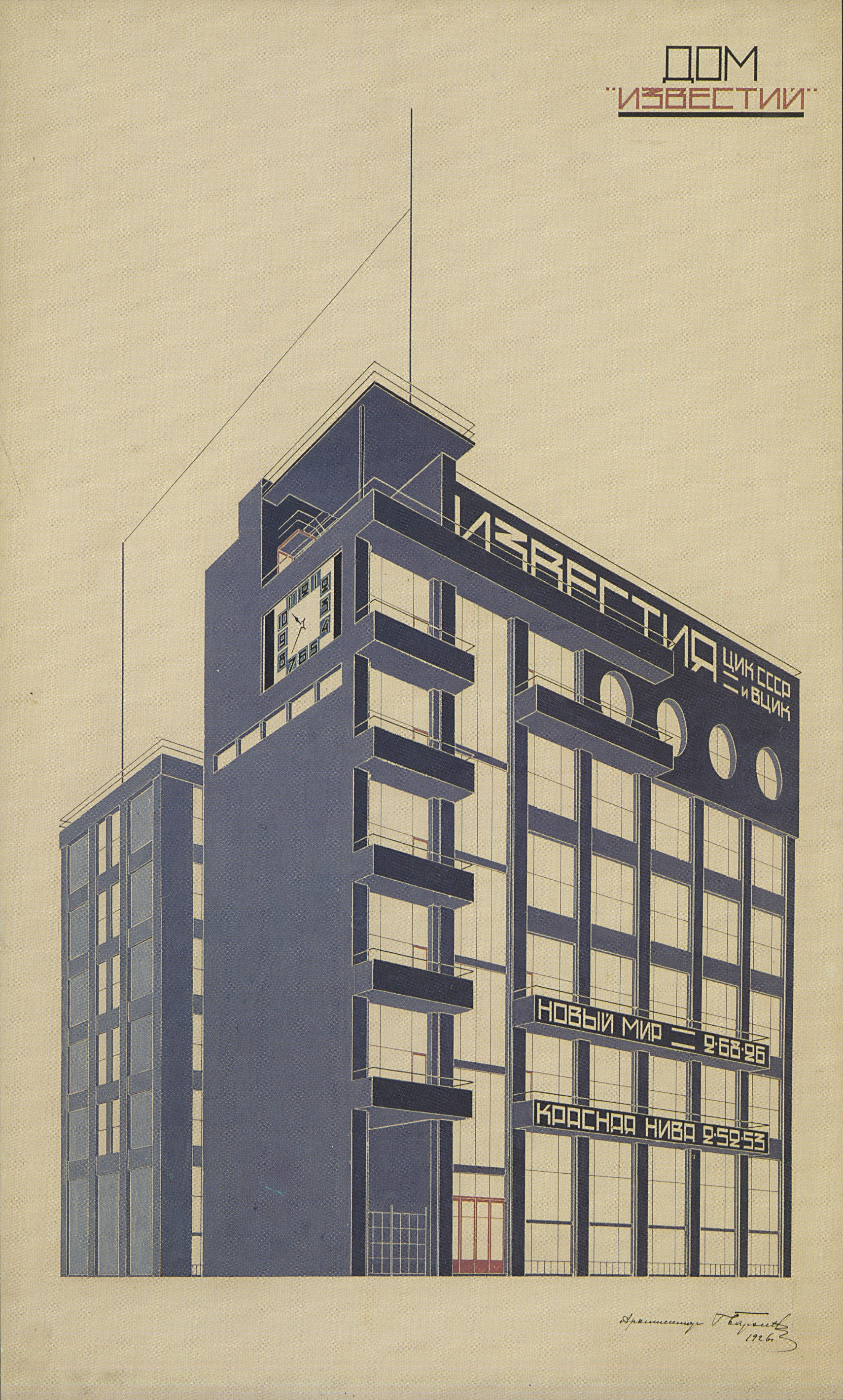 Architect’s perspective view (courtesy of The Charnel House).
Architect’s perspective view (courtesy of The Charnel House).
The Izvestia newspaper building is an iconic Constructivist building in Moscow, designed by Grigorii and Mikhail Barkhin, built in 1927. This began the modernisation of Strastnaya Square (supported by the poet Vladimir Mayakovsky) leading to the demolition of the 17th century Strastnoy Monastery and the extension of the original square in 1937 as part of Joseph Stalin’s destructive re-planning of the city. Pushkin’s statue was moved to the centre of the new square in 1950. The Charnel House website has details of the Izvestia building which has been recently restored by Grigorii Barkhin’s great grandson, Alexey Ginzburg.
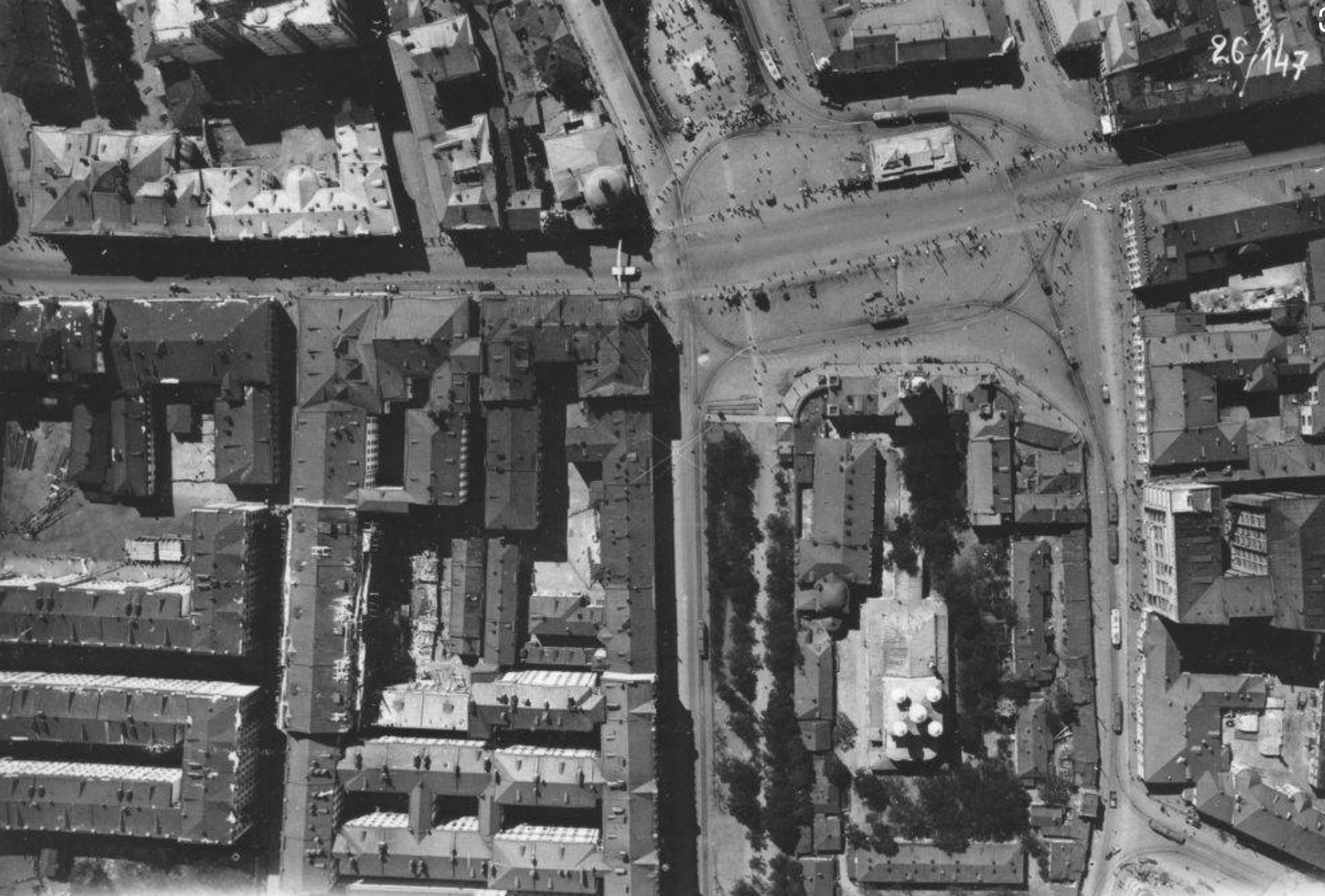 Contemporary aerial view of Strastnaya Square. The Izvestia building is on the right opposite the monastery. Pushkin’s Statue is top centre. The dome of the Church of St. Demetrius of Thessaloniki is top centre (demolished 1934). Tverskaya Street passes through the square (left to right).
Contemporary aerial view of Strastnaya Square. The Izvestia building is on the right opposite the monastery. Pushkin’s Statue is top centre. The dome of the Church of St. Demetrius of Thessaloniki is top centre (demolished 1934). Tverskaya Street passes through the square (left to right).
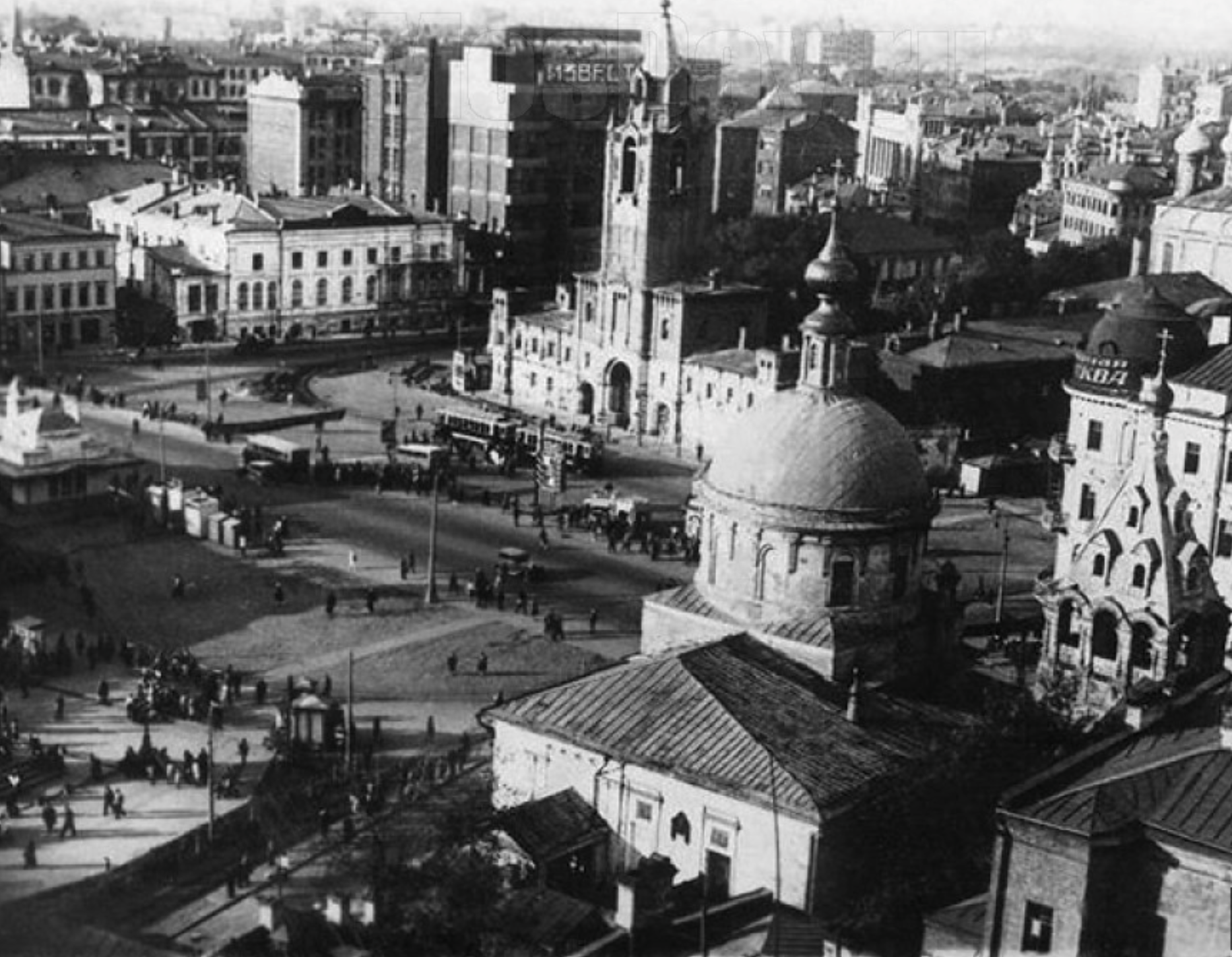 Contemporary view over Strastnaya Square with the new Izvestia building behind the Strastnoy Monastery tower. Pushkin’s statue is at the bottom left. The dome of St. Demetrius Church in the foreground.
Contemporary view over Strastnaya Square with the new Izvestia building behind the Strastnoy Monastery tower. Pushkin’s statue is at the bottom left. The dome of St. Demetrius Church in the foreground.
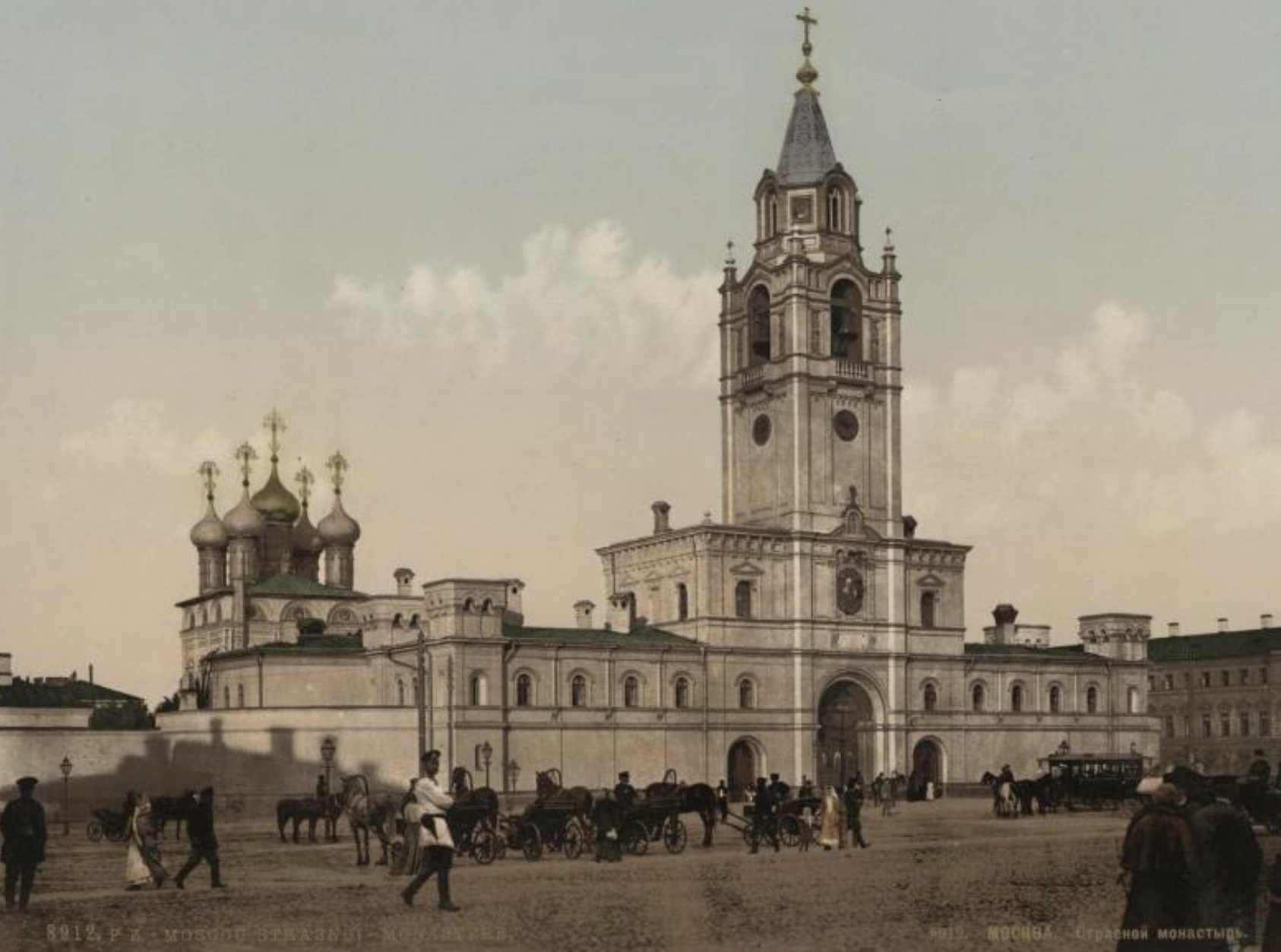 Early 1900s view of the huge monastery. There is a current campaign to rebuild it in its original location.
Early 1900s view of the huge monastery. There is a current campaign to rebuild it in its original location.
 [00:08:12] View of steelworks, Kamianske (or Donbas)*.
[00:08:12] View of steelworks, Kamianske (or Donbas)*.
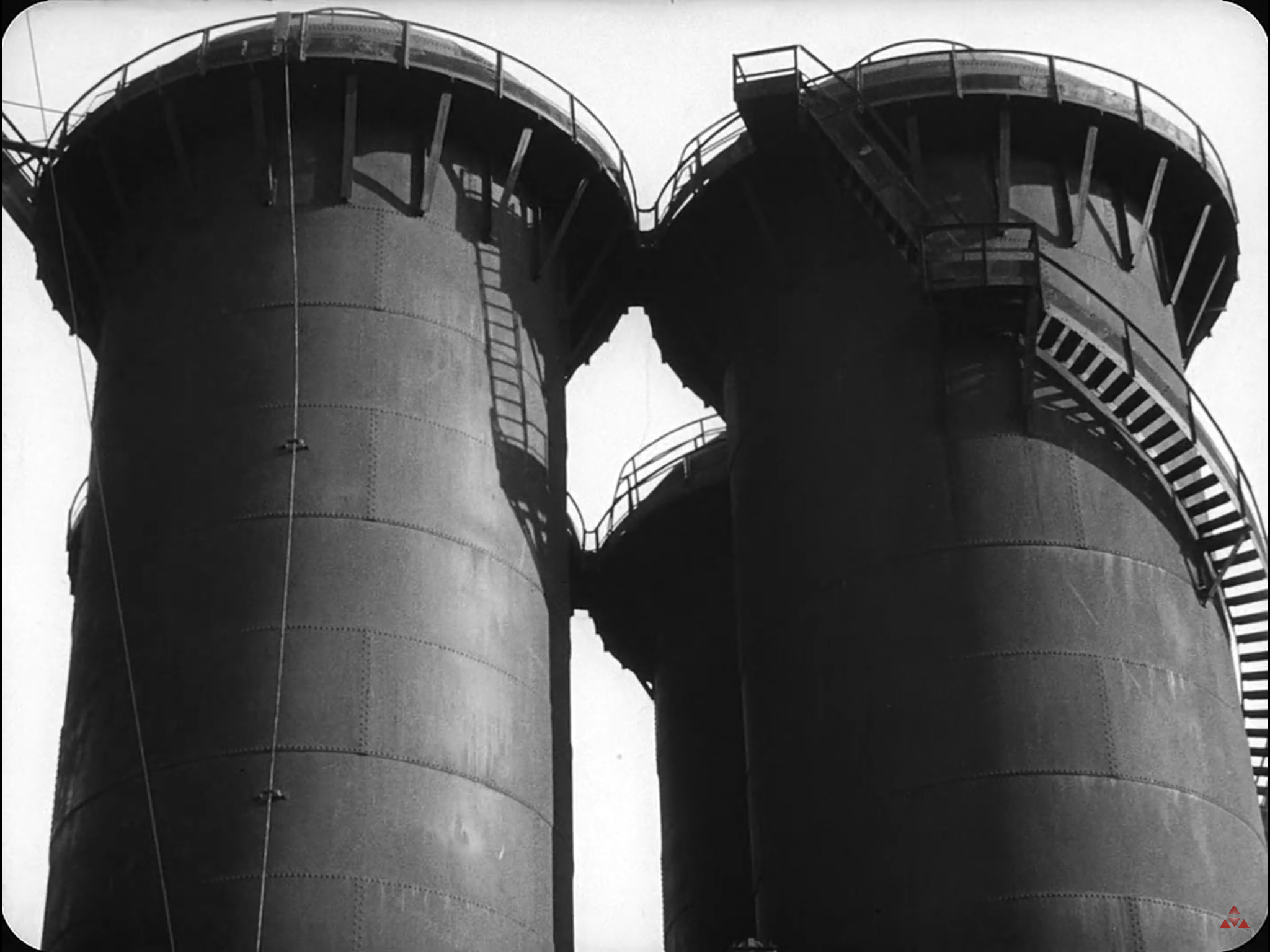 [00:08:30] View of blast furnace Cowper stoves, Kamianske (or Donbas)*. These wonderful industrial images could have been taken by Bernd and Hilla Becher decades later!
[00:08:30] View of blast furnace Cowper stoves, Kamianske (or Donbas)*. These wonderful industrial images could have been taken by Bernd and Hilla Becher decades later!
*The shooting location notes include ‘Kamenskoe (Kamianske) Iron Foundry’. Known today as the Dniprovskiyi Metallurgical Plant, it was founded in 1887 as the Dnieper Works, re-named after Feliks Dzerzhynsky in 1917. Dziga Vertov’s diary entry, June 22 1927, Zaporozh’e*: ‘We are completing our filming of the Dzerzhinsky plant….’ and goes on to describe the unpleasant working conditions. This suggests that filming there was not in July and August as per the shooting location notes.
I have not been able to verify whether a steelworks in the Donbas was also a location for some of the sequences. It would have been more logical to have filmed both the steelworks and coal mines in the same area so it is not clear why a visit to Kamianske was necessary.
*The location of the Dnieper Hydroelectric Power Station also filmed for ‘The Eleventh Year’.
[00:08:35] Kuznetsky Most, Moscow.
[00:08:39] Traffic semaphore on Kuznetsky Most (presumed).
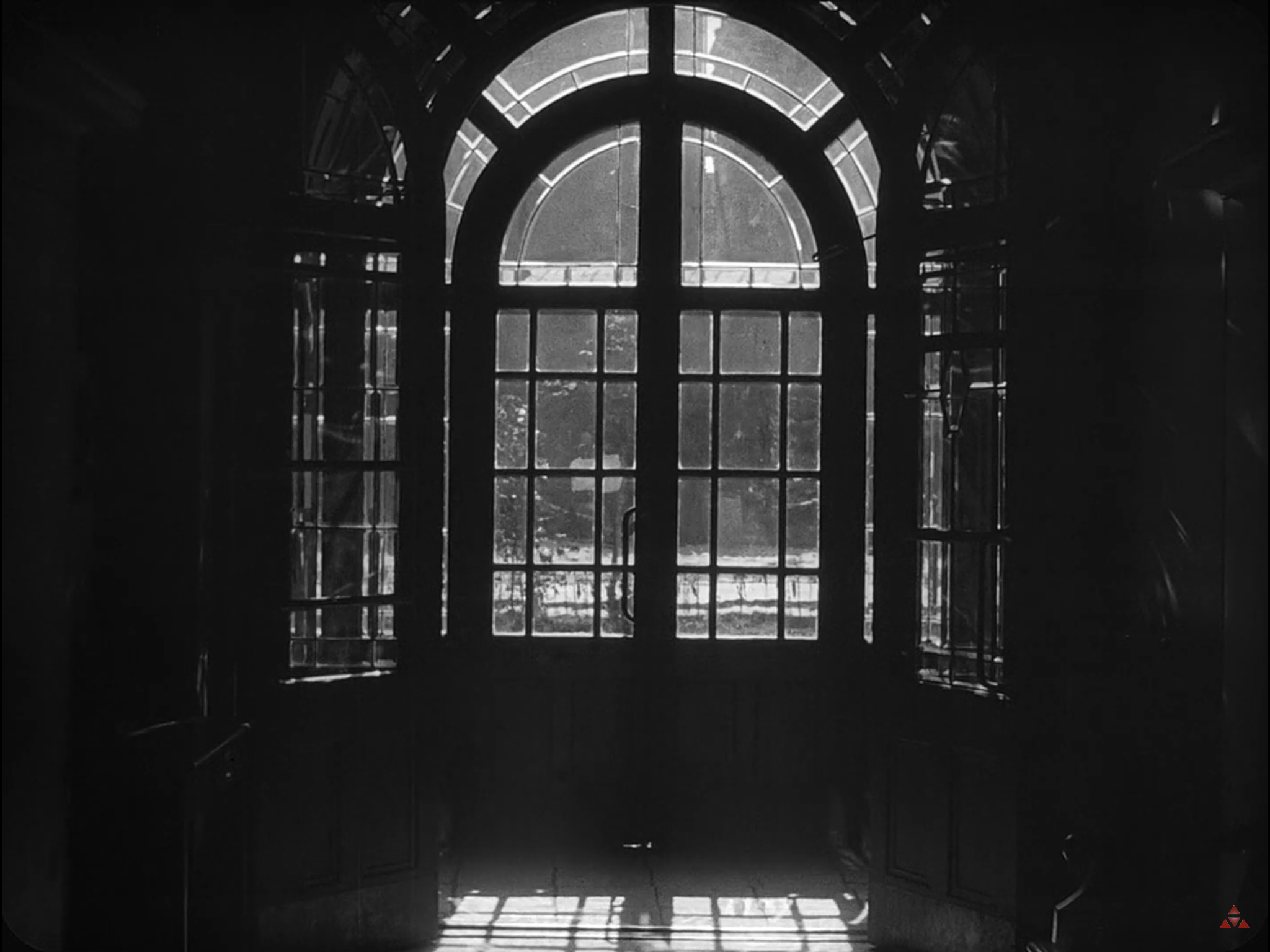 [00:08:46] [00:09:00] View of a glass entrance door from a building interior. This door appears on several occasions in the film ([00:30:27 on] and during the final sequence at the end) and the available evidence suggests it is the main courtyard entrance to the 1912 Ginzburg Skyscraper. There are few detailed photographs of this building (destroyed in 1941), but it appears that there was a door each side of the entrance from the street (as seen in [00:09:18]) and the larger arched door in the West wing that we think is seen in the film, circled below. What appears to be the outline of the low fence around the central landscaped area below can just be made out through the glass. Without a clear exterior photograph of the doors this cannot be verified.
[00:08:46] [00:09:00] View of a glass entrance door from a building interior. This door appears on several occasions in the film ([00:30:27 on] and during the final sequence at the end) and the available evidence suggests it is the main courtyard entrance to the 1912 Ginzburg Skyscraper. There are few detailed photographs of this building (destroyed in 1941), but it appears that there was a door each side of the entrance from the street (as seen in [00:09:18]) and the larger arched door in the West wing that we think is seen in the film, circled below. What appears to be the outline of the low fence around the central landscaped area below can just be made out through the glass. Without a clear exterior photograph of the doors this cannot be verified.
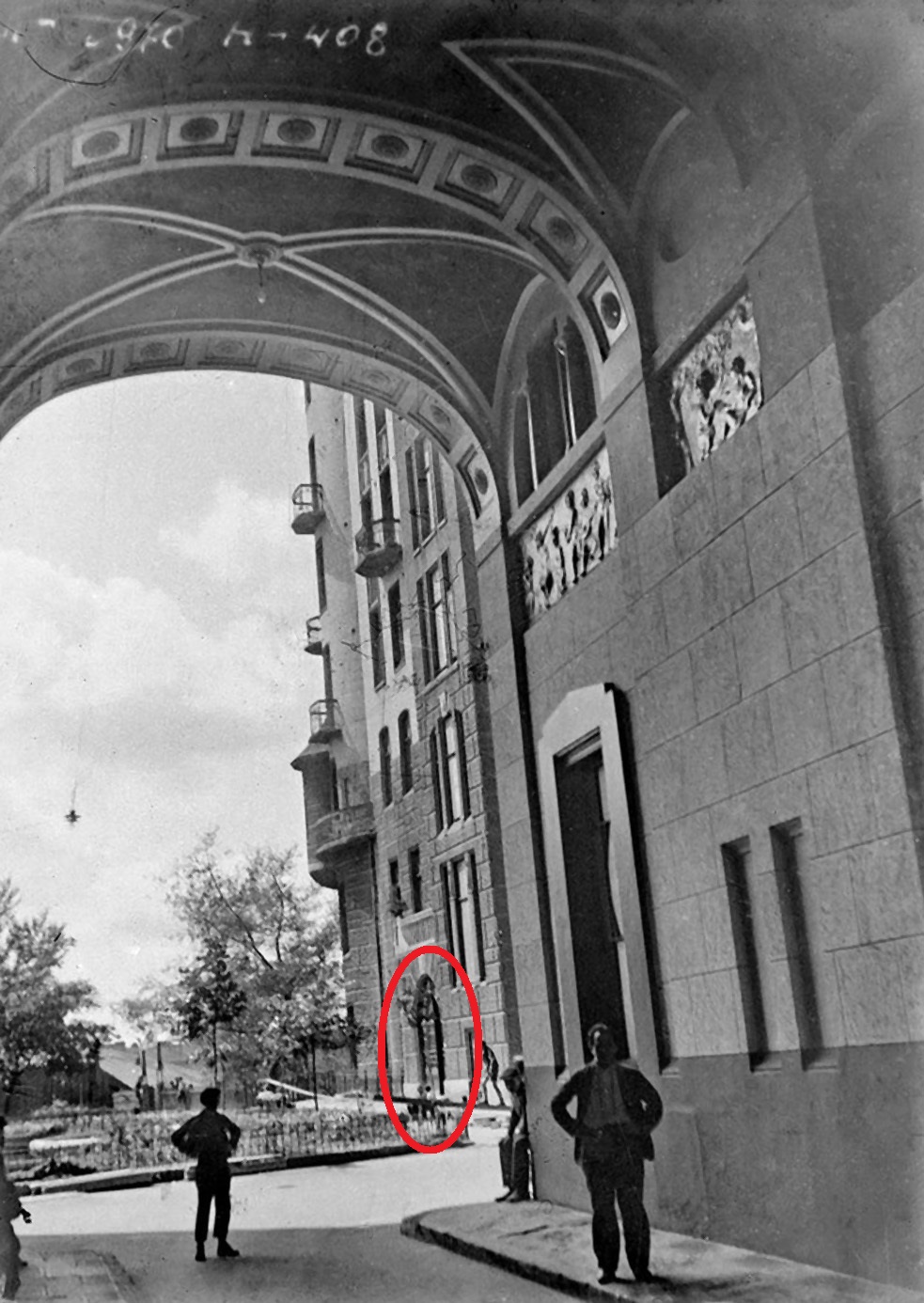 View into the courtyard of the Ginzburg Skyscraper through the entrance archway from Zhovtnya Street (formerly and now Institutska Street) with the suggested glass doors to the West wing entrance circled. The tower that appears in [00:13:08] is on the corner. See also [00:09:18] for a glimpse of the top of this arch seen from the courtyard side. The small trees in the centre landscaped area look similar to those seen through the glass doors in [00:09:09]. [Photograph courtesy of Fotiy Krasitsky]
View into the courtyard of the Ginzburg Skyscraper through the entrance archway from Zhovtnya Street (formerly and now Institutska Street) with the suggested glass doors to the West wing entrance circled. The tower that appears in [00:13:08] is on the corner. See also [00:09:18] for a glimpse of the top of this arch seen from the courtyard side. The small trees in the centre landscaped area look similar to those seen through the glass doors in [00:09:09]. [Photograph courtesy of Fotiy Krasitsky]
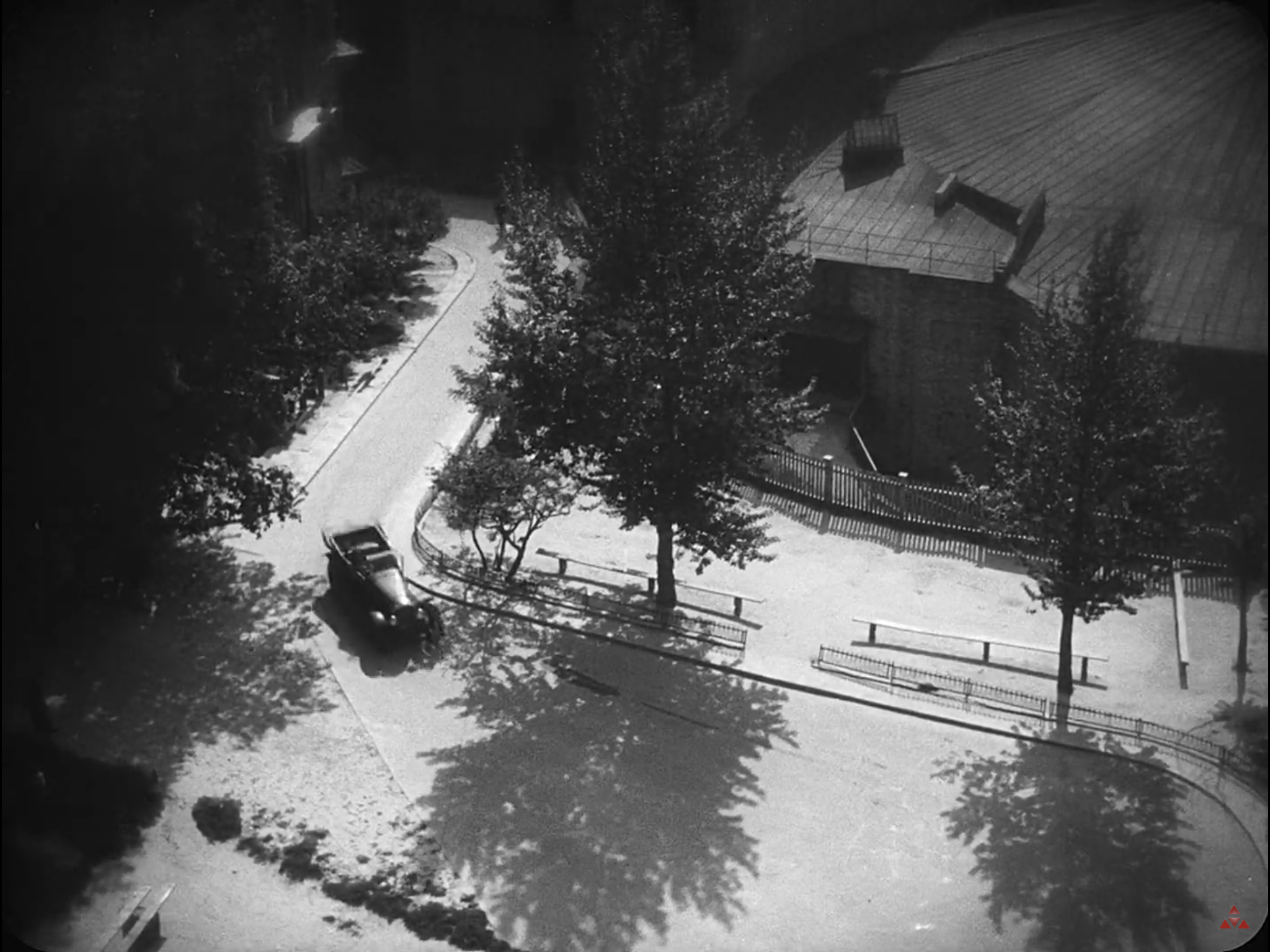 [00:08:52] Courtyard of the Ginzburg Skyscraper. The roof in the background is over the Kyiv Circus, destroyed along with the Skyscraper and most of the Khreschatyk area in 1941. The Skyscraper was built on the edge of an escarpment so the Circus and other buildings on the adjacent Karl Marx Street are considerably lower than the courtyard.
[00:08:52] Courtyard of the Ginzburg Skyscraper. The roof in the background is over the Kyiv Circus, destroyed along with the Skyscraper and most of the Khreschatyk area in 1941. The Skyscraper was built on the edge of an escarpment so the Circus and other buildings on the adjacent Karl Marx Street are considerably lower than the courtyard.
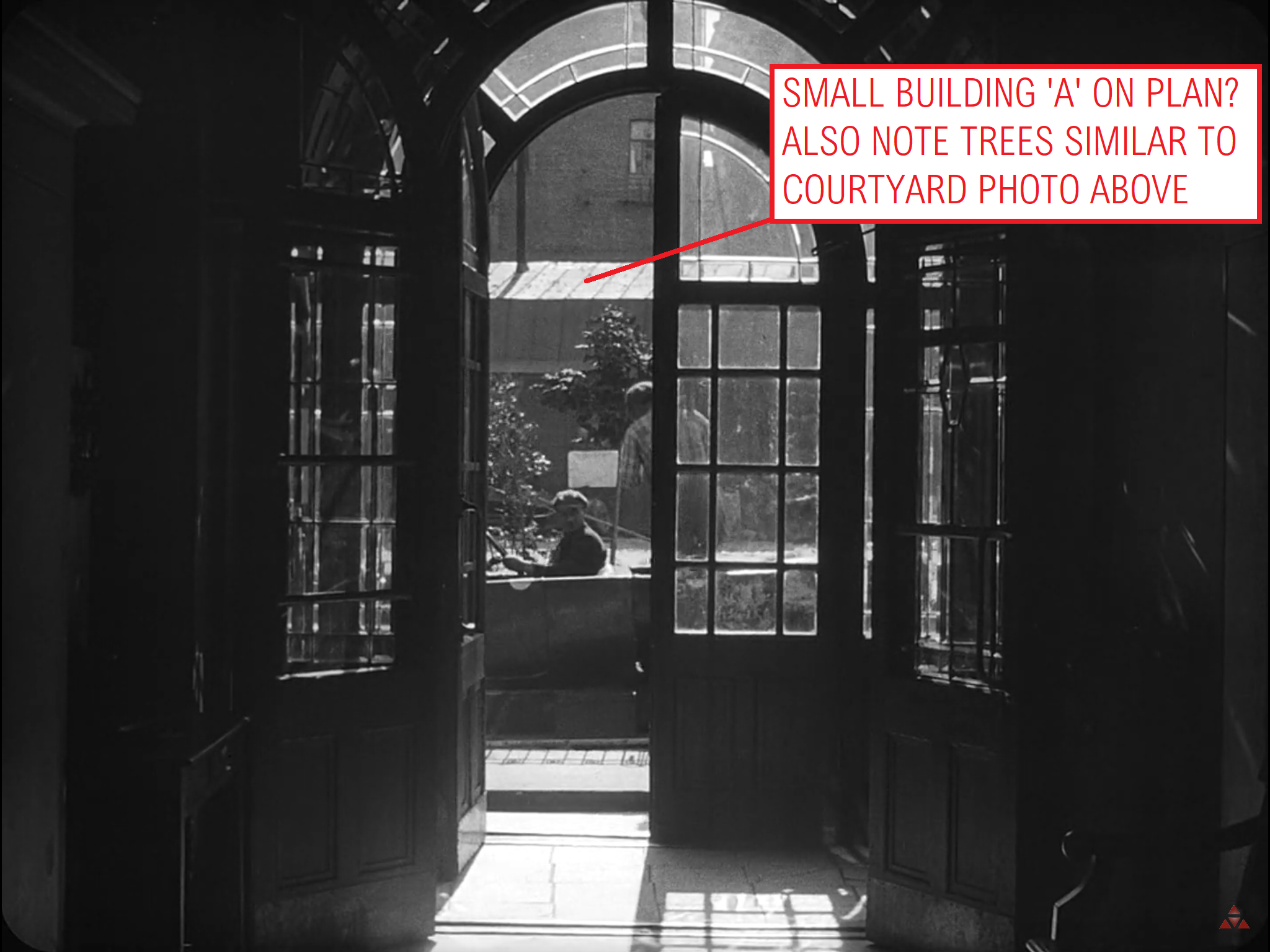 [00:09:09]
[00:09:09]
[00:09:13] Ginzburg Skyscraper courtyard North side
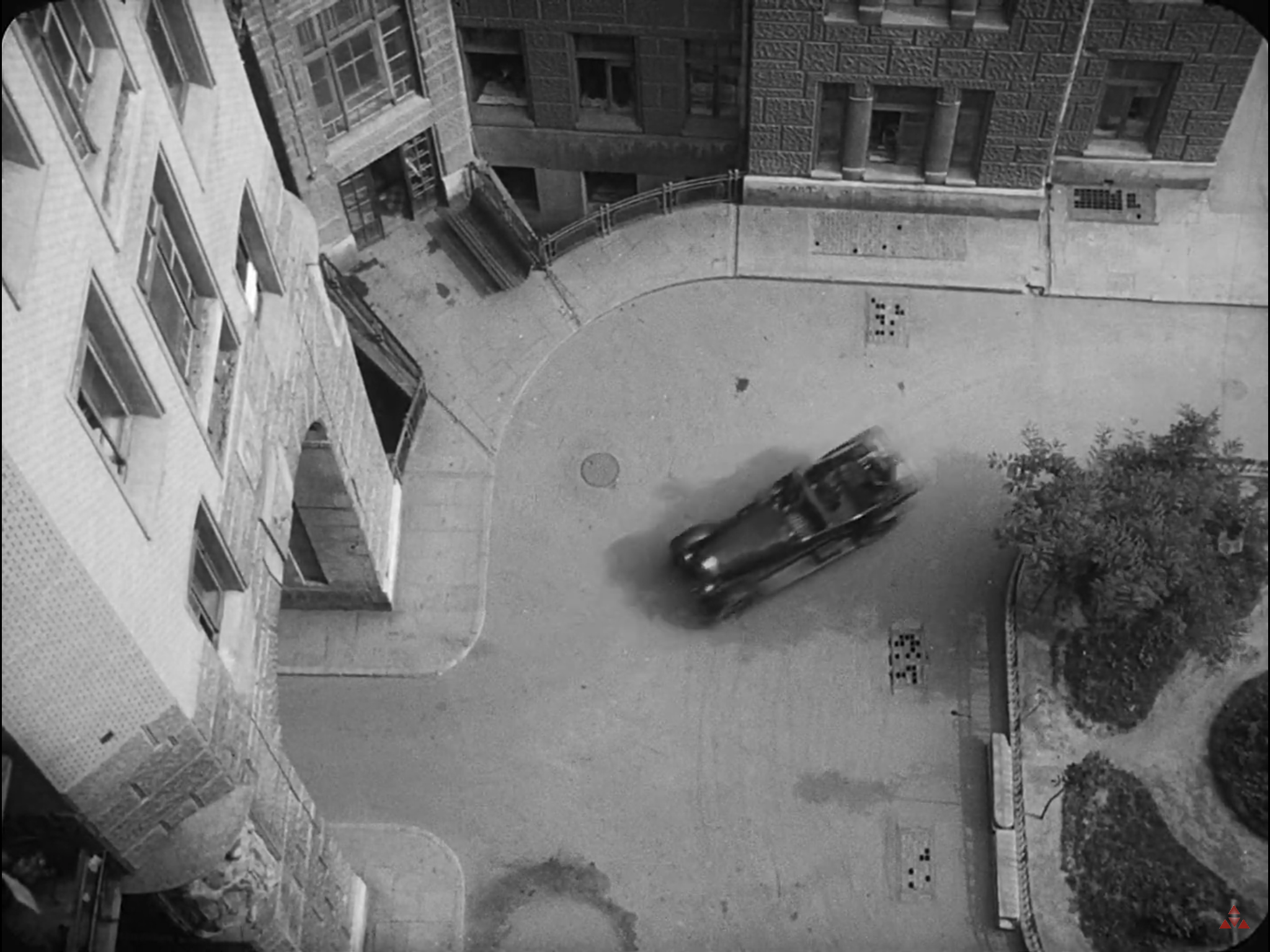 [00:09:18] The camera car leaving the courtyard (South side) through the entrance archway (as photo above). See also [00:07:19] for a glimpse of the top of the archway, [00:13:08] for an external view and description of the building, and also [00:06:16] and [00:33:49].
[00:09:18] The camera car leaving the courtyard (South side) through the entrance archway (as photo above). See also [00:07:19] for a glimpse of the top of the archway, [00:13:08] for an external view and description of the building, and also [00:06:16] and [00:33:49].

Contemporary street plan showing the camera car route in the Ginzburg Skyscraper courtyard. [M. Kalnytsky]
 [00:09:22] Park Bridge, Petrivs’ka Alley, Kyiv. Another iconic image from the film.
[00:09:22] Park Bridge, Petrivs’ka Alley, Kyiv. Another iconic image from the film.
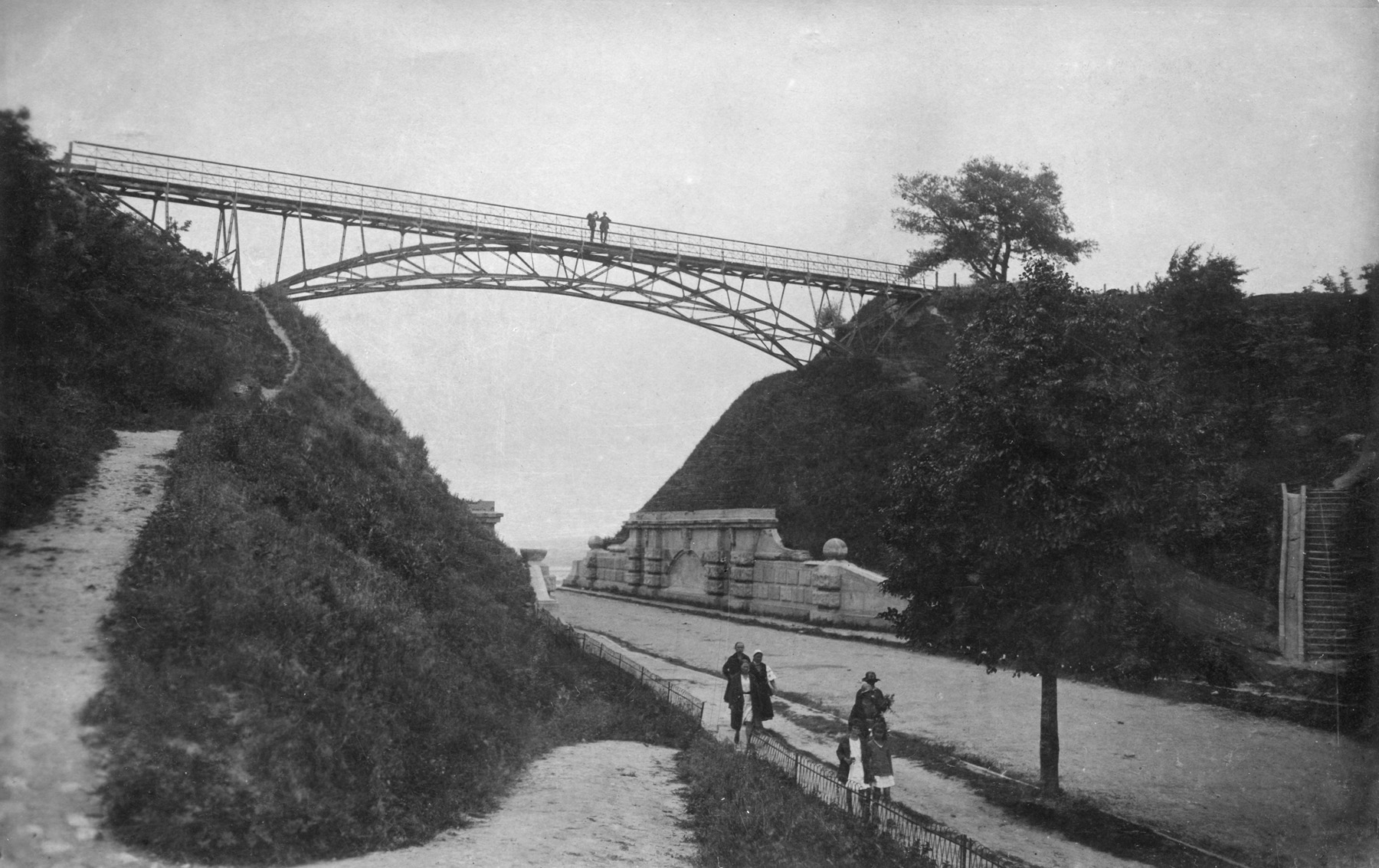 A contemporary view of the elegant pedestrian bridge and contrasting heavy looking abutments. [M. Kalnytsky]
A contemporary view of the elegant pedestrian bridge and contrasting heavy looking abutments. [M. Kalnytsky]
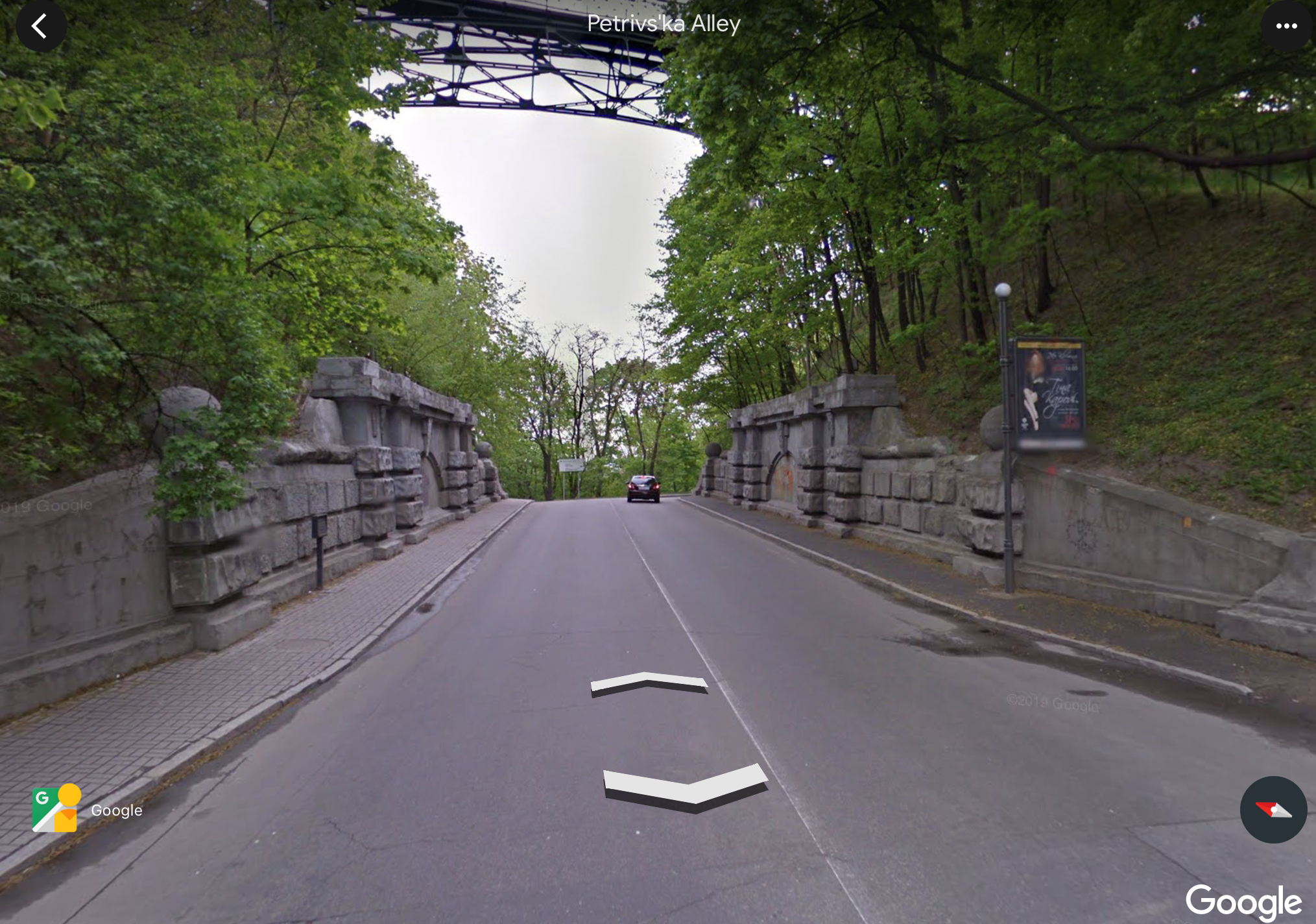 Current view of the bridge and abutments [Google Earth].
Current view of the bridge and abutments [Google Earth].
Also known as ‘Devil’s Bridge’ or ‘Lover’s Bridge’ it was built in 1909/1910. Designed by the renowned Kyiv engineer Yevgeny Oskarovich Paton, who was also responsible for the Yevgeniya Bosh Bridge over the Dnieper River, the bridge was actually constructed before the passage which was excavated under it. Once this was made the sloping sides were supported by stone abutments, at first quite simple in design, then the rather over-scaled version that exists today. After the Revolution the bridge fell into disrepair which was written about by Mikhail Bulgakov in his essay ‘Kyiv, the City’ in 1923. By the time of the film the bridge had been repaired and survived until 1983 when a new structure that matched the old bridge replaced it. For a more detailed account of Park Bridge read Mykhailo Kalnytsky’s article here.
Contemporary postcards showing the Petrivs’ka Alley being excavated under the bridge. The Dnieper River can be seen in the background of both views. [M. Kalnytsky]
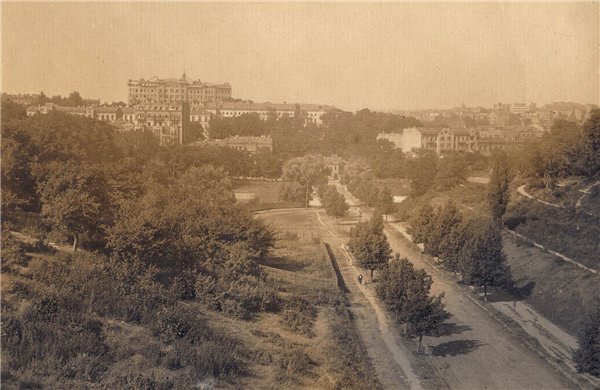 The view towards the city from the bridge at the time of the film, with the Ginzburg Skyscraper in the background. [M. Kalnytsky]
The view towards the city from the bridge at the time of the film, with the Ginzburg Skyscraper in the background. [M. Kalnytsky]
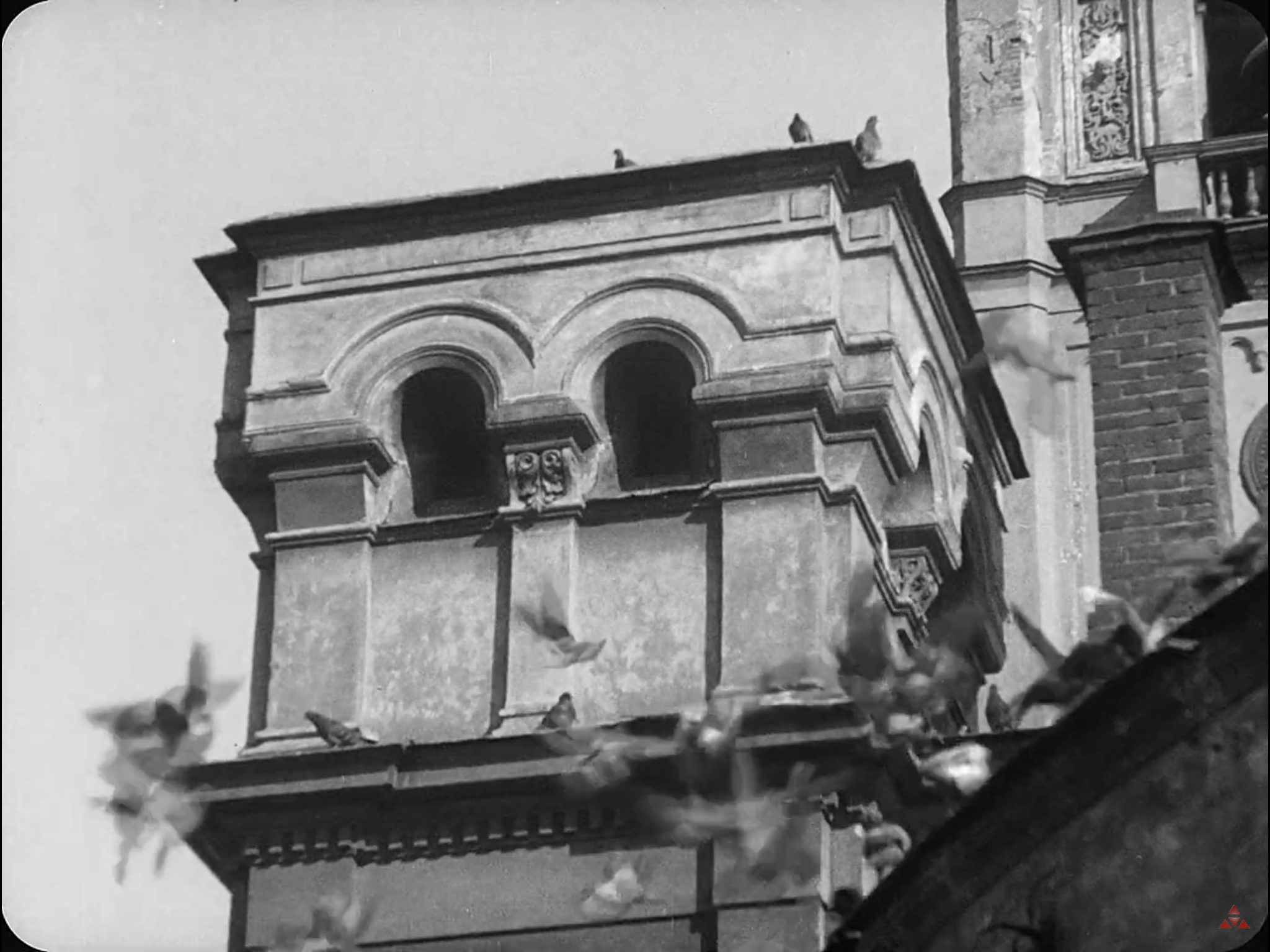 [00:09:43] Pigeons in Strastnoy Monastery rh corner tower, Strastnaya Square, Moscow.
[00:09:43] Pigeons in Strastnoy Monastery rh corner tower, Strastnaya Square, Moscow.
[00:09:49 on] Railway line sequence. Location not found.
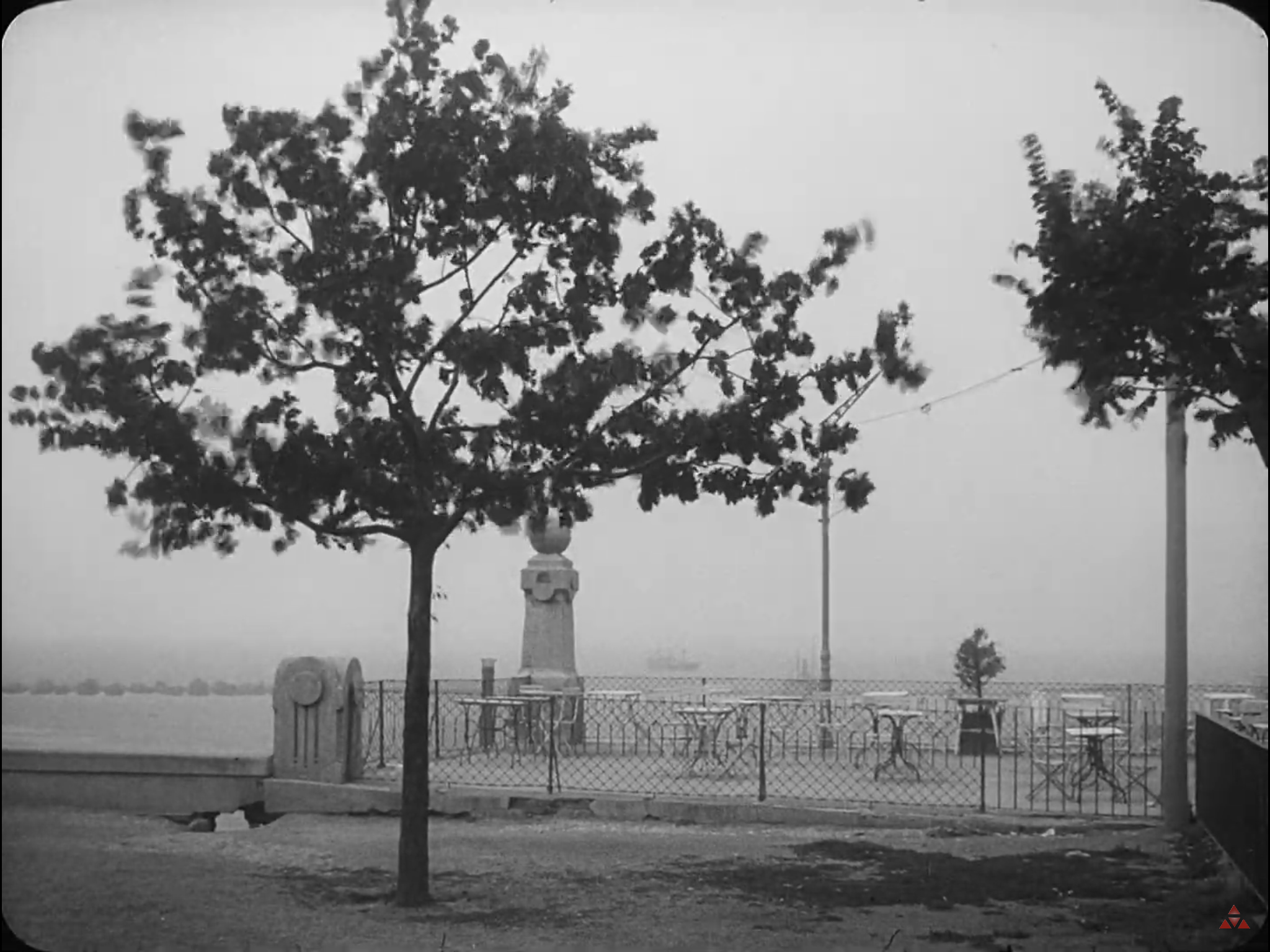 [00:09:54] Restaurant of the ‘London’ Hotel, Prymorskyi Boulevard, Odesa. Note the ships in the distance (and possibly smaller vessels alongside the harbour breakwater on the lhs?). See also screenshots [00:05:35] and [00:05:43].
[00:09:54] Restaurant of the ‘London’ Hotel, Prymorskyi Boulevard, Odesa. Note the ships in the distance (and possibly smaller vessels alongside the harbour breakwater on the lhs?). See also screenshots [00:05:35] and [00:05:43].
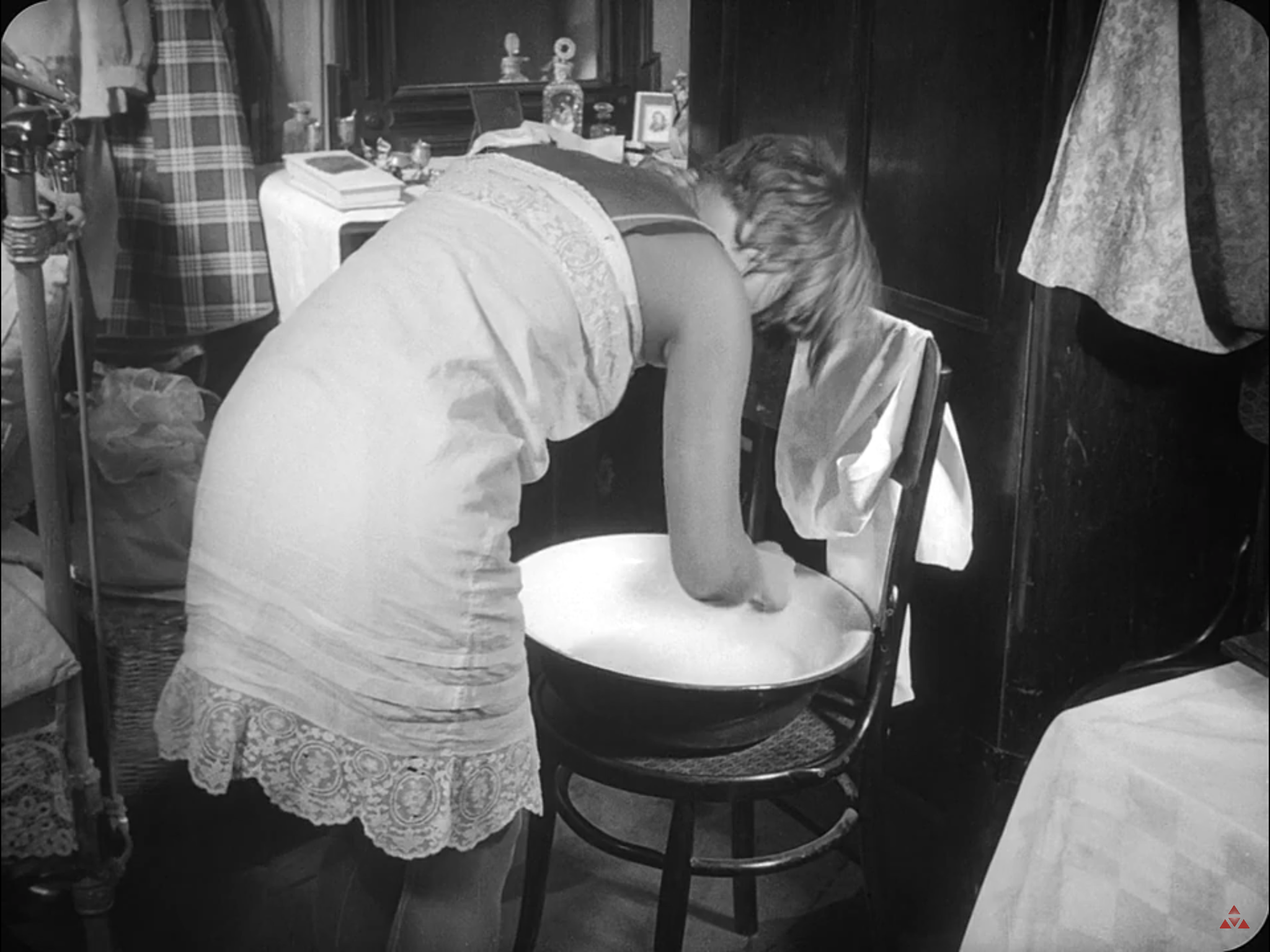 [00:10:13 on] Woman waking, dressing, and washing
[00:10:13 on] Woman waking, dressing, and washing
Professor MacKay notes (p. 13, fn. 20) in his Academia paper on MwaMC (see introduction) that the woman has been identified as the dancer Valia Anastasieva, living in a room on her own at 32/12 Fundukleevskaia Street, Kyiv. Now re-named Bohdana Khmel’nyts’koho (Bohdan Khmelnytsky) Street, no. 32 is rather a grand looking apartment block near the Opera House, below. The supposed interior shots looking out of a window with blinds would most likely have been taken elsewhere, as the view out does not seem to be of this street. [photograph: M. Kalnytsky]
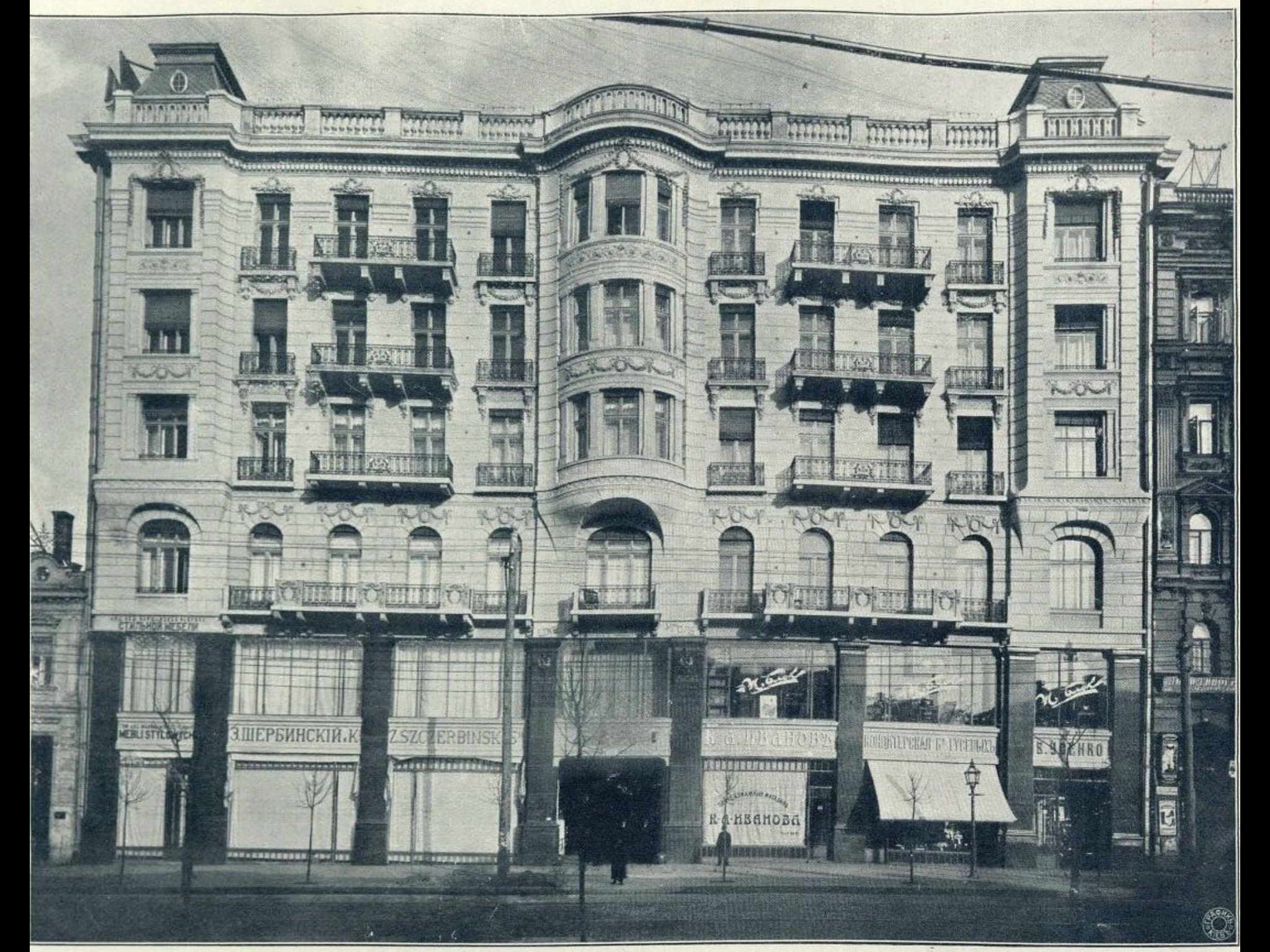
[00:11:17 on] Tramp waking up. Location not found.
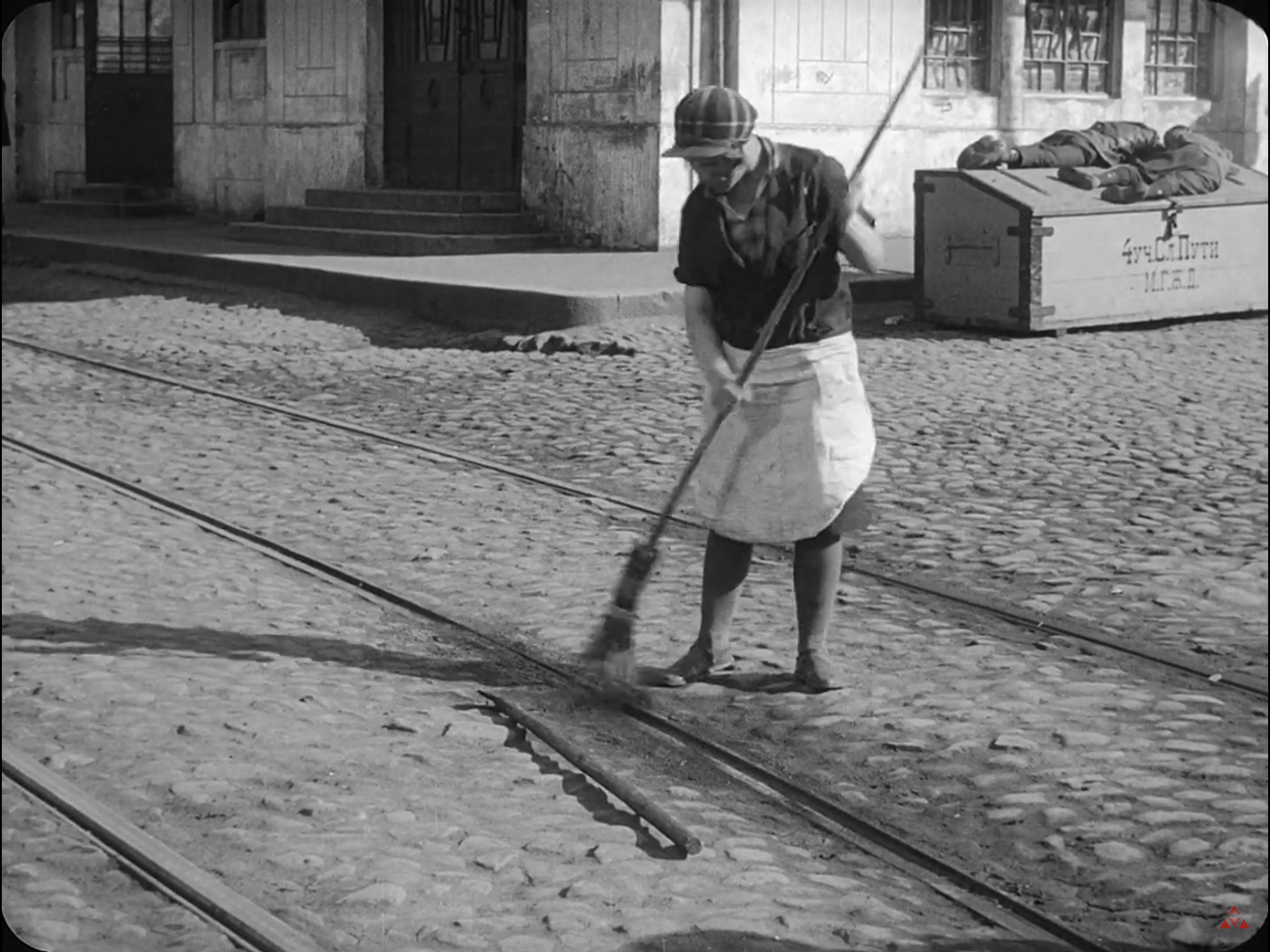 [00:11:36] Woman sweeping tram tracks, Strastnaya Square, Moscow (clues are the tram stop pavilion behind and the grit bin in the background (see [00:14:39] where the same bin is visible).
[00:11:36] Woman sweeping tram tracks, Strastnaya Square, Moscow (clues are the tram stop pavilion behind and the grit bin in the background (see [00:14:39] where the same bin is visible).
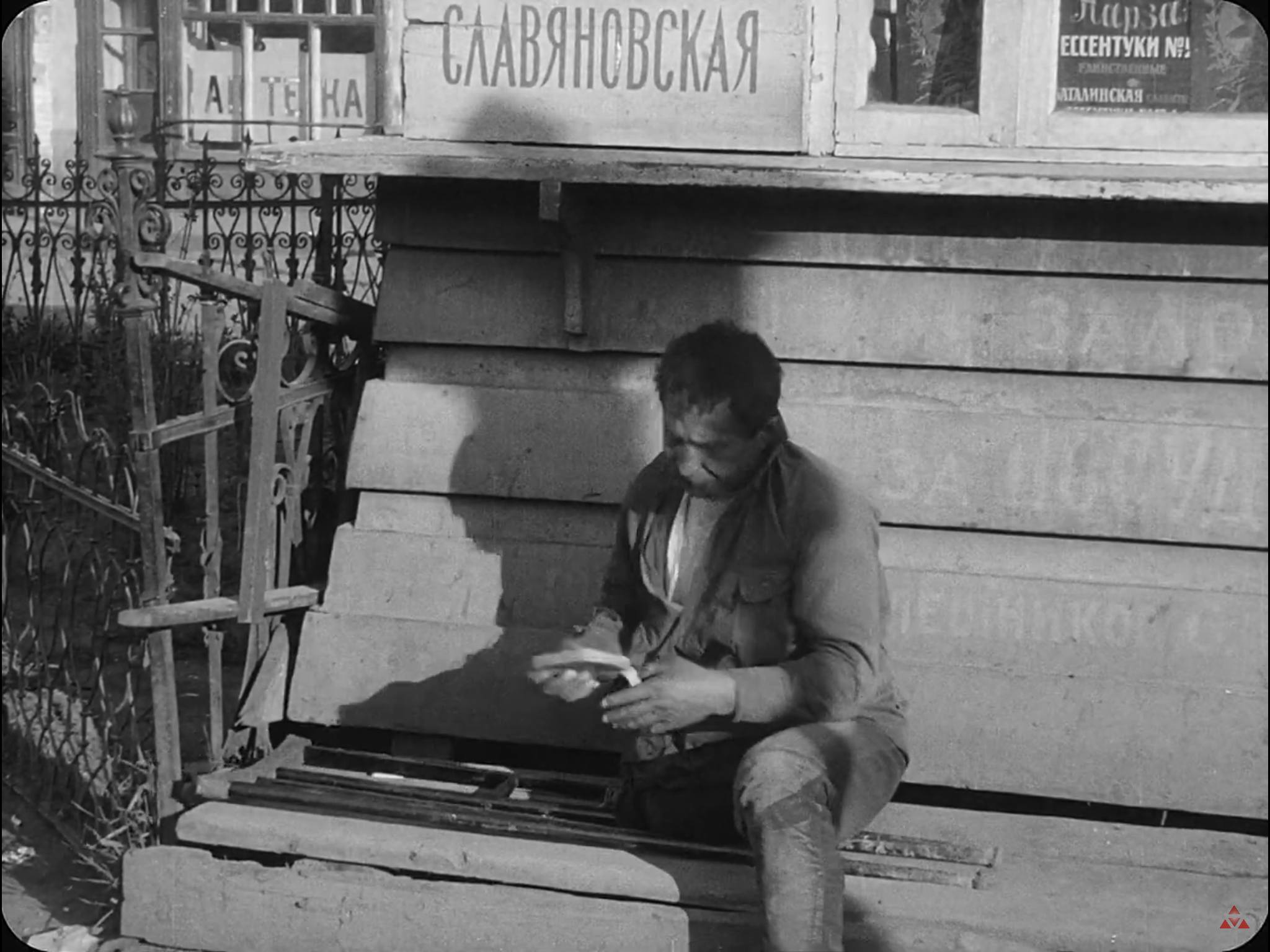 [00:11:43] [00:11:48] Man with one leg on a bench/step in front of the kiosk on Strastnaya Square, Moscow. The pharmacy (АПТЕКА) in the background can also be seen in [00:14:30] and [00:14:39].
[00:11:43] [00:11:48] Man with one leg on a bench/step in front of the kiosk on Strastnaya Square, Moscow. The pharmacy (АПТЕКА) in the background can also be seen in [00:14:30] and [00:14:39].
Advertisements on the kiosk wall and window for ‘Slavyanovskaya’, ‘Narzan’, ‘Essentuki’, and ‘Batalinskaya’ mineral waters from the Caucasus. The faded lettering on the bench is unclear – possibly a request to take empty bottles to ‘Stoleshnikov (Lane?)’ for the return of the deposit? [thanks to Mykhailo Kalnytsky for this information]
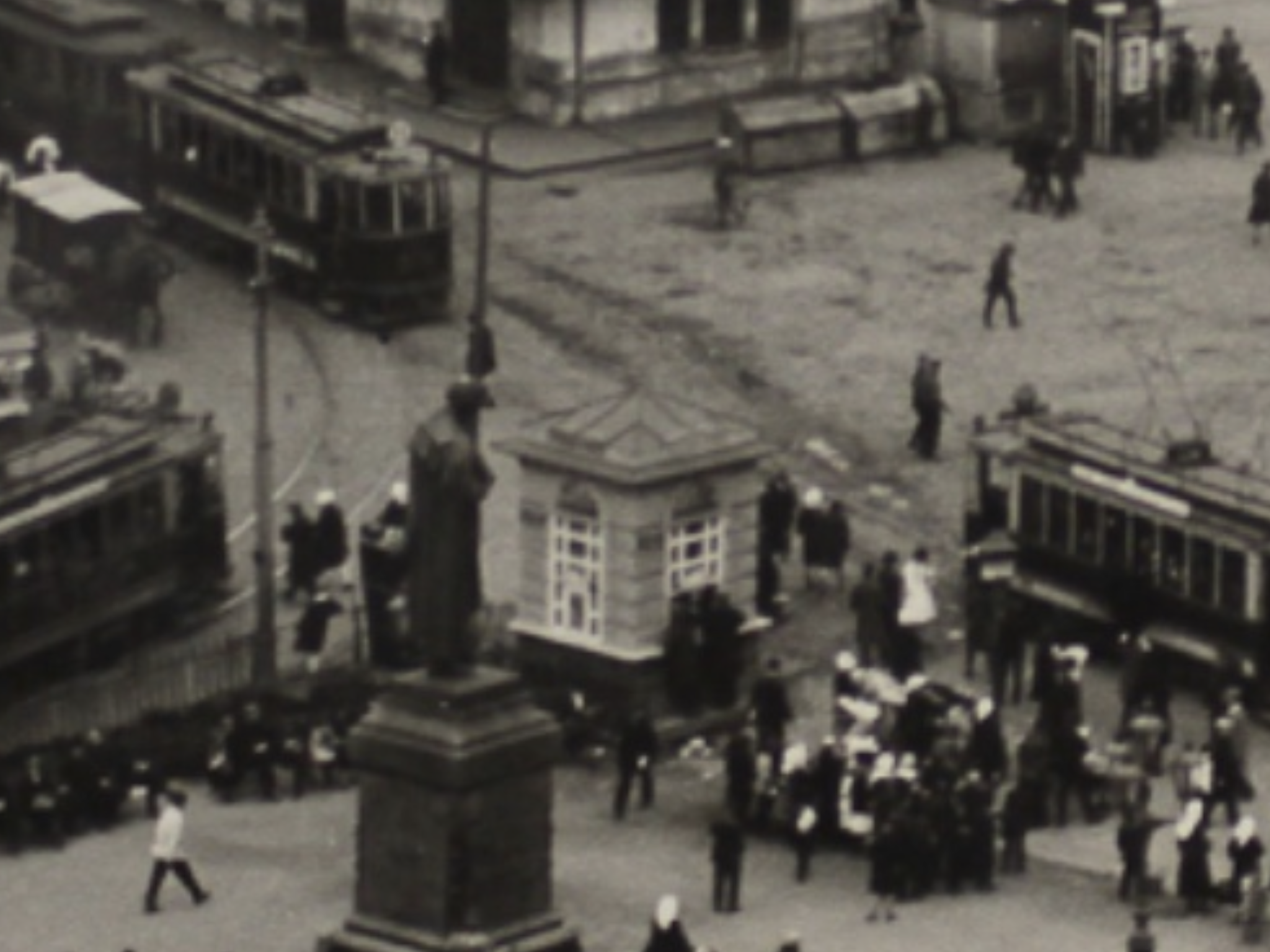 Close up of the kiosk on the square, behind Pushkin’s statue (note the wooden grit bins at the top by the tram stop pavilion visible in other scenes).
Close up of the kiosk on the square, behind Pushkin’s statue (note the wooden grit bins at the top by the tram stop pavilion visible in other scenes).
[00:11:54] Kuznetsky Most, Moscow
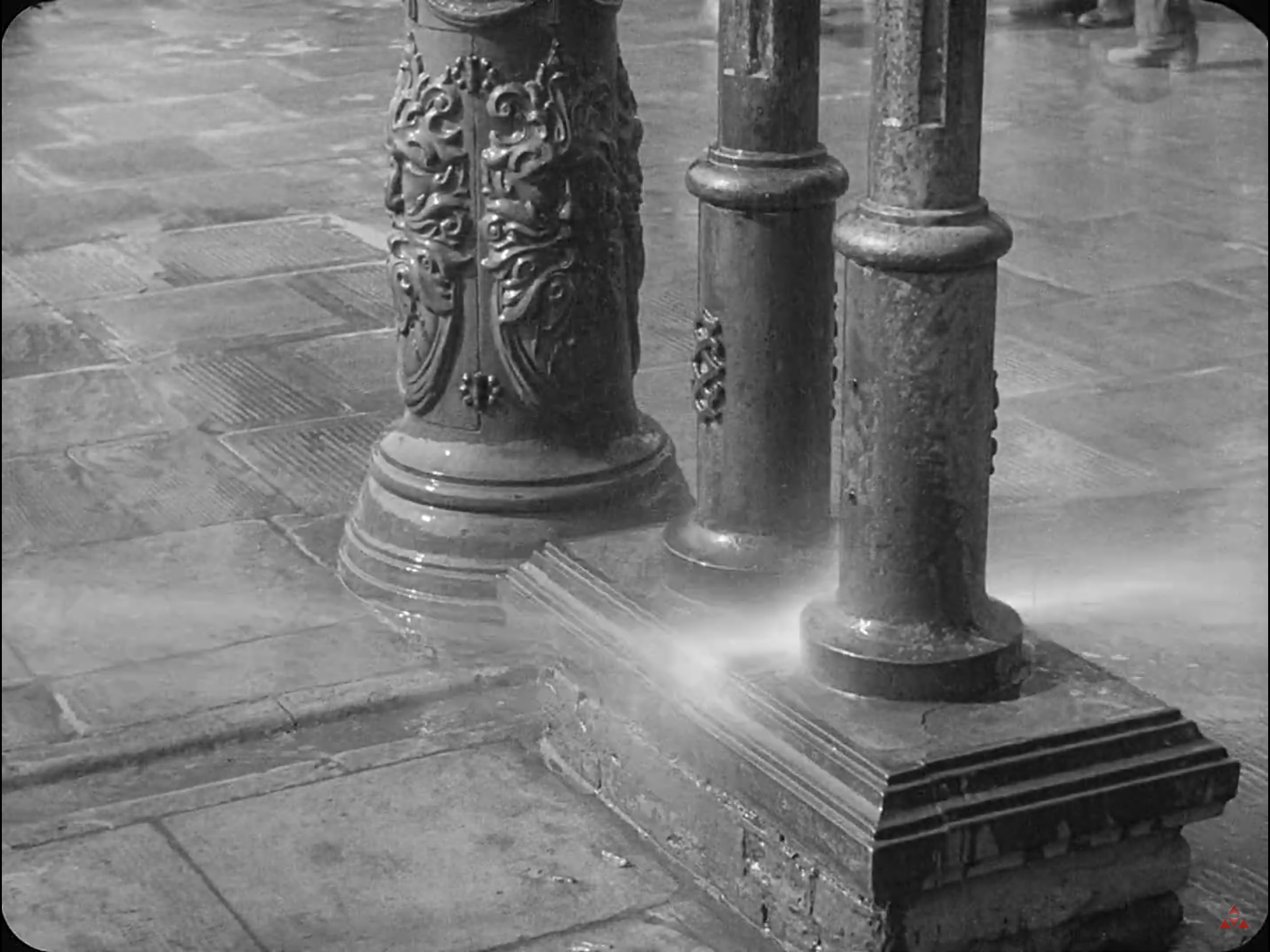 [00:12:06] Cast iron posts being hosed down, Kyiv. These look like the canopy supports to the Khreschatyk Street entrance of the Belle Vue Hotel and Shantser Cinema. The supports (a unique design in the city) are next to an electricity post, as can be seen in the contemporary photograph below. They look closer together in the screenshot but this may be telephoto lens foreshortening.
[00:12:06] Cast iron posts being hosed down, Kyiv. These look like the canopy supports to the Khreschatyk Street entrance of the Belle Vue Hotel and Shantser Cinema. The supports (a unique design in the city) are next to an electricity post, as can be seen in the contemporary photograph below. They look closer together in the screenshot but this may be telephoto lens foreshortening.
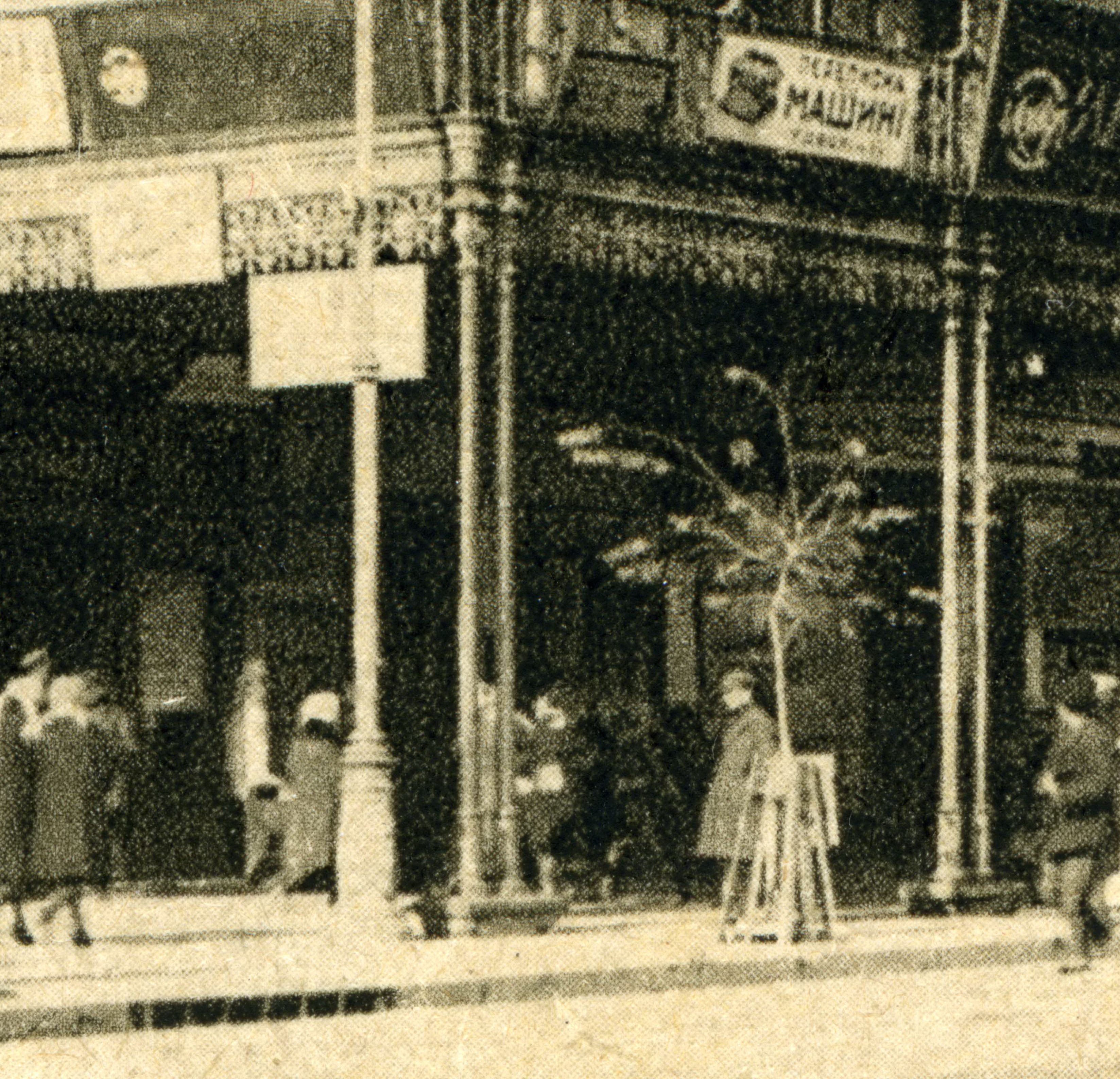
[00:12:16] Rubbish bin being hosed down, Kyiv (see [00:05:53]).
[00:12:27] Woman cleaning window. Location not found.
REEL 2
Note: rising numeral 2 present in Eye/Lobster Films and other prints.
 [00:13:07] This is the corner tower in the courtyard of the ‘Ginzburg Skyscraper’ in Kyiv. See also [00:08:46 on] for views of the courtyard.
[00:13:07] This is the corner tower in the courtyard of the ‘Ginzburg Skyscraper’ in Kyiv. See also [00:08:46 on] for views of the courtyard.
The glass doors seen several times in the film [00:08:46 etc] are likely to be on the ground floor directly below the rhs balcony. This travelling shot is interesting in that it must have been taken from the camera car (or other mobile platform) moving across the courtyard not, as it appears to be, from the street. The tower appears through foliage that is probably from the trees seen in [00:08:52]. If you look carefully at the sequence there are three people at the top of the tower, one clowning about sticking his leg out!
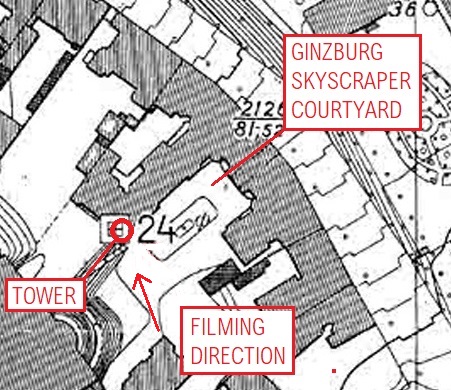
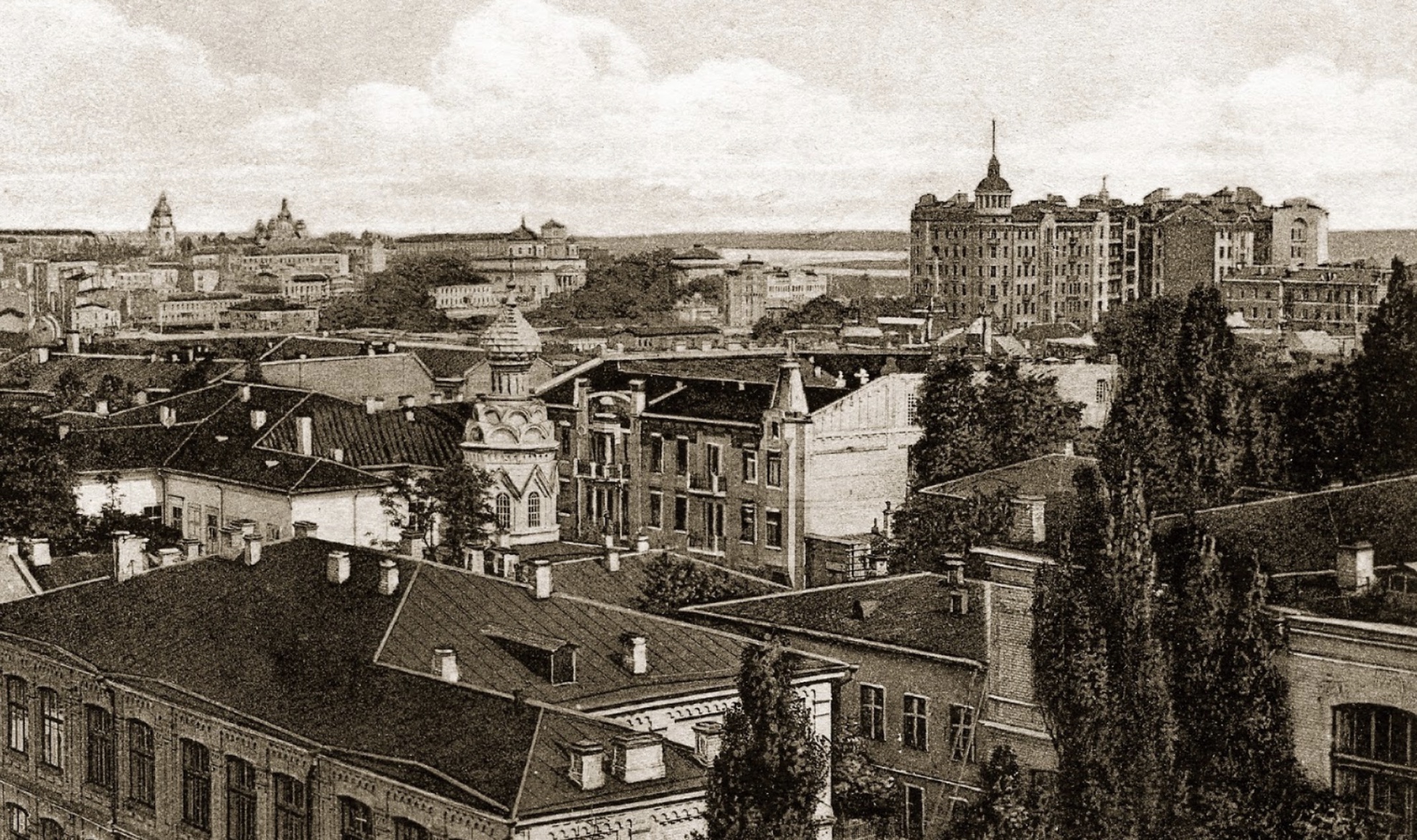 The ‘Ginzburg Skyscraper’ was an enormous multi-storey apartment block built in 1912 by Lev Ginzburg; at the time it was the ‘tallest building in the Russian Empire’. The building was destroyed, along with most of the area around Khreschatyk, by the retreating Red Army in 1941. You can see the tower in the screenshot in the contemporary photograph above. This is a view looking north towards the courtyard facade. Various shots of the ‘Skyscraper’ are also seen in [00:06:16][00:07:19][00:08:46][00:08:51][00:09:18][00:33:49 on]. The site is now occupied by the Stalinist Ukraine Hotel. [Source: Mikhailo Kalnytsky]
The ‘Ginzburg Skyscraper’ was an enormous multi-storey apartment block built in 1912 by Lev Ginzburg; at the time it was the ‘tallest building in the Russian Empire’. The building was destroyed, along with most of the area around Khreschatyk, by the retreating Red Army in 1941. You can see the tower in the screenshot in the contemporary photograph above. This is a view looking north towards the courtyard facade. Various shots of the ‘Skyscraper’ are also seen in [00:06:16][00:07:19][00:08:46][00:08:51][00:09:18][00:33:49 on]. The site is now occupied by the Stalinist Ukraine Hotel. [Source: Mikhailo Kalnytsky]
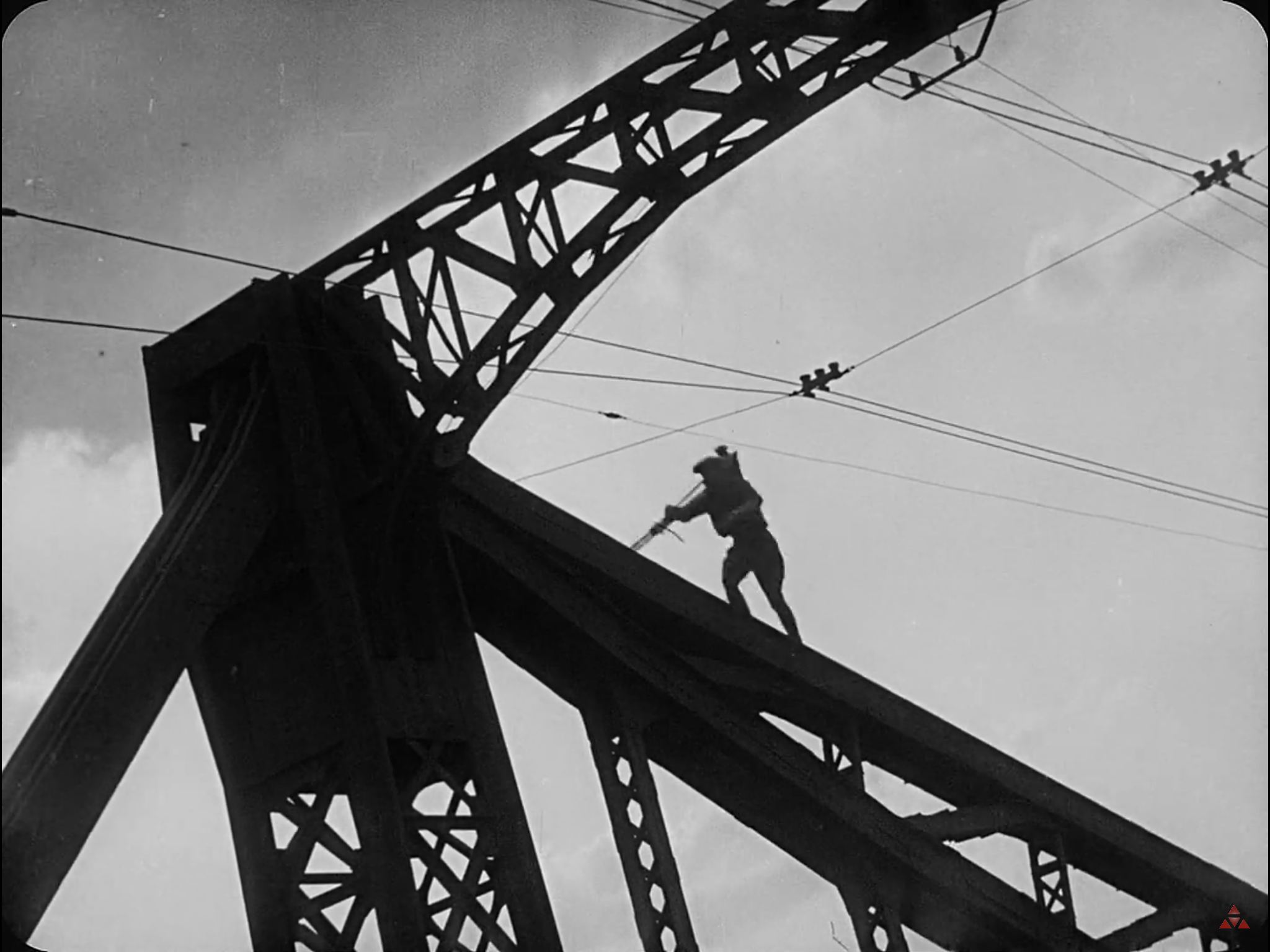 [00:13:19] Mikhail Kaufman (MK) runs up a large industrial structure with a Debrie Model K camera and tripod – I have been unable to verify what or where this is. I have not found any past or present bridges in Moscow, Kyiv, Odesa, Kharkiv, Kamianske, or Donetsk with this structure. A structural engineer told me that it was not likely to be a conventional bridge (an odd looking inverted bowstring truss suspension design). See later image of this structure below for further notes.
[00:13:19] Mikhail Kaufman (MK) runs up a large industrial structure with a Debrie Model K camera and tripod – I have been unable to verify what or where this is. I have not found any past or present bridges in Moscow, Kyiv, Odesa, Kharkiv, Kamianske, or Donetsk with this structure. A structural engineer told me that it was not likely to be a conventional bridge (an odd looking inverted bowstring truss suspension design). See later image of this structure below for further notes.
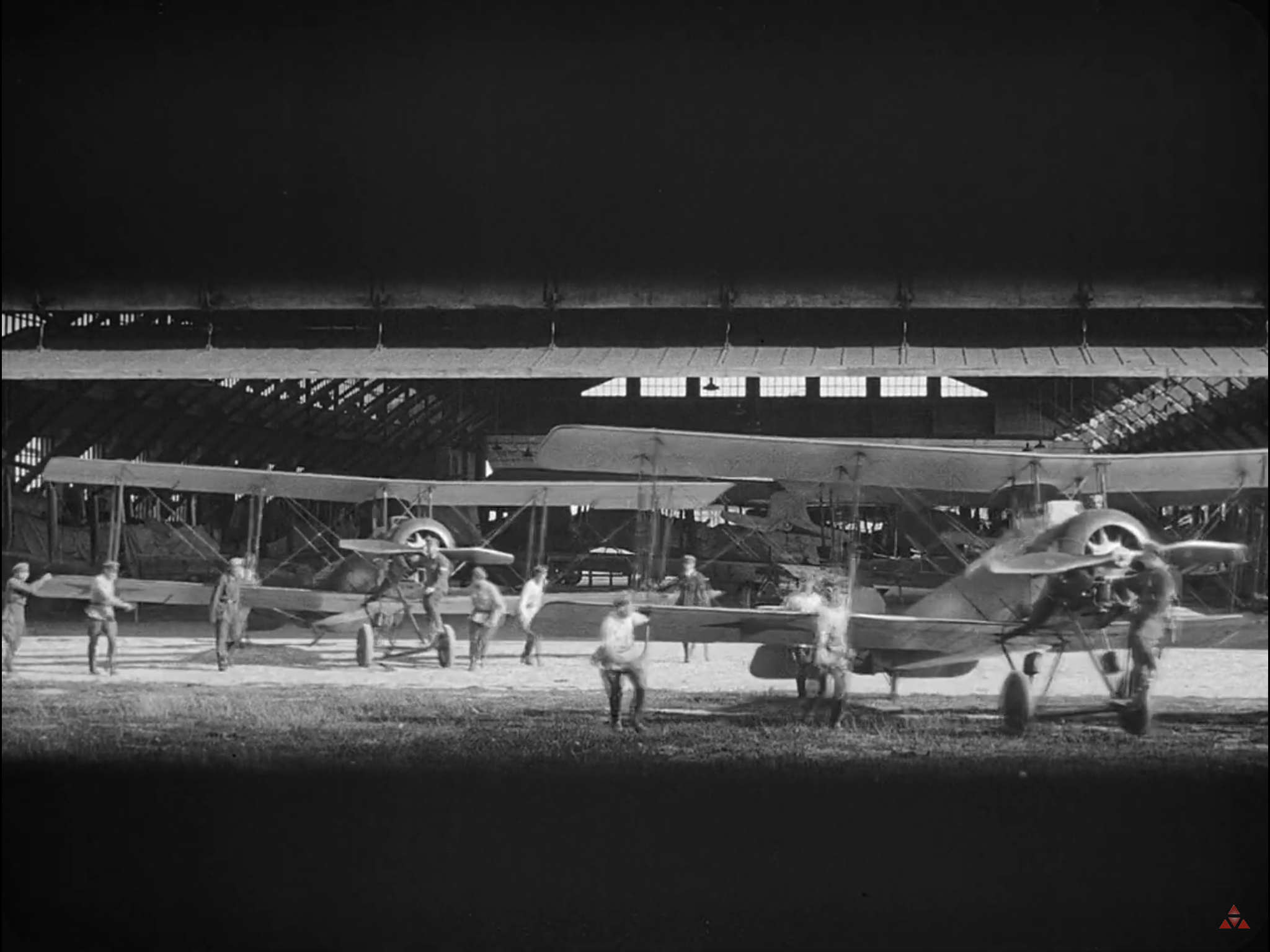 [00:13:26] Aircraft hangar, Kharkiv aerodrome. This was built in 1923-24 for Ukraine’s first airline, ‘Ukrvozduhput’ (Укрвоздухпуть). The aerodrome was also the base for the Higher Military Aviation School whose pupils are presumably bringing out their U-1 training aircraft. The frames for this sequence are masked at the top and bottom, perhaps to emphasise the horizontality of the huge door opening.
[00:13:26] Aircraft hangar, Kharkiv aerodrome. This was built in 1923-24 for Ukraine’s first airline, ‘Ukrvozduhput’ (Укрвоздухпуть). The aerodrome was also the base for the Higher Military Aviation School whose pupils are presumably bringing out their U-1 training aircraft. The frames for this sequence are masked at the top and bottom, perhaps to emphasise the horizontality of the huge door opening.
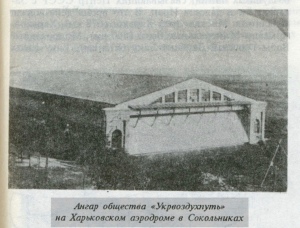
The only photograph found of the hangar (source: ‘Aviation in Ukraine. Essays on History’, V. Savin, Kharkiv, 1995). The windows are identical to the screenshot and there seems to be one large door opening. However, the door design and proportions look slightly different. Perhaps the other end looks more like the screenshot.
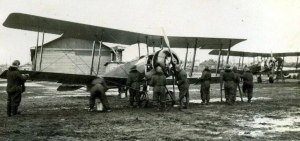
U-1 Red Army Air Force training aircraft as seen in the screenshot.
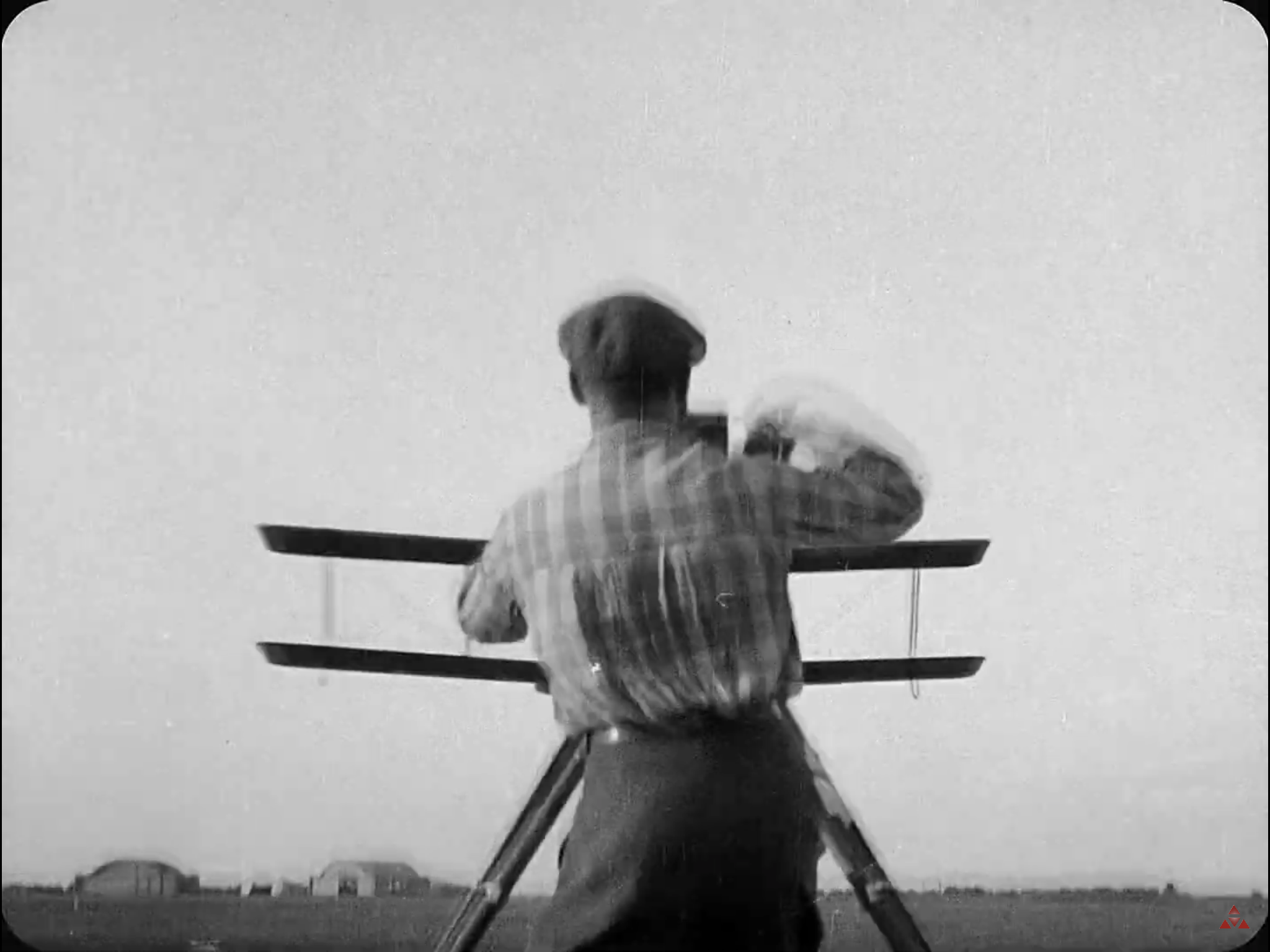
[01:06:00] There are two hangars in the background of one of the shots in the final sequence of the film, probably at the aerodrome, but neither building looks like the Ukrvozduhput hangar. [Information on the hangar from M Kalnytsky]
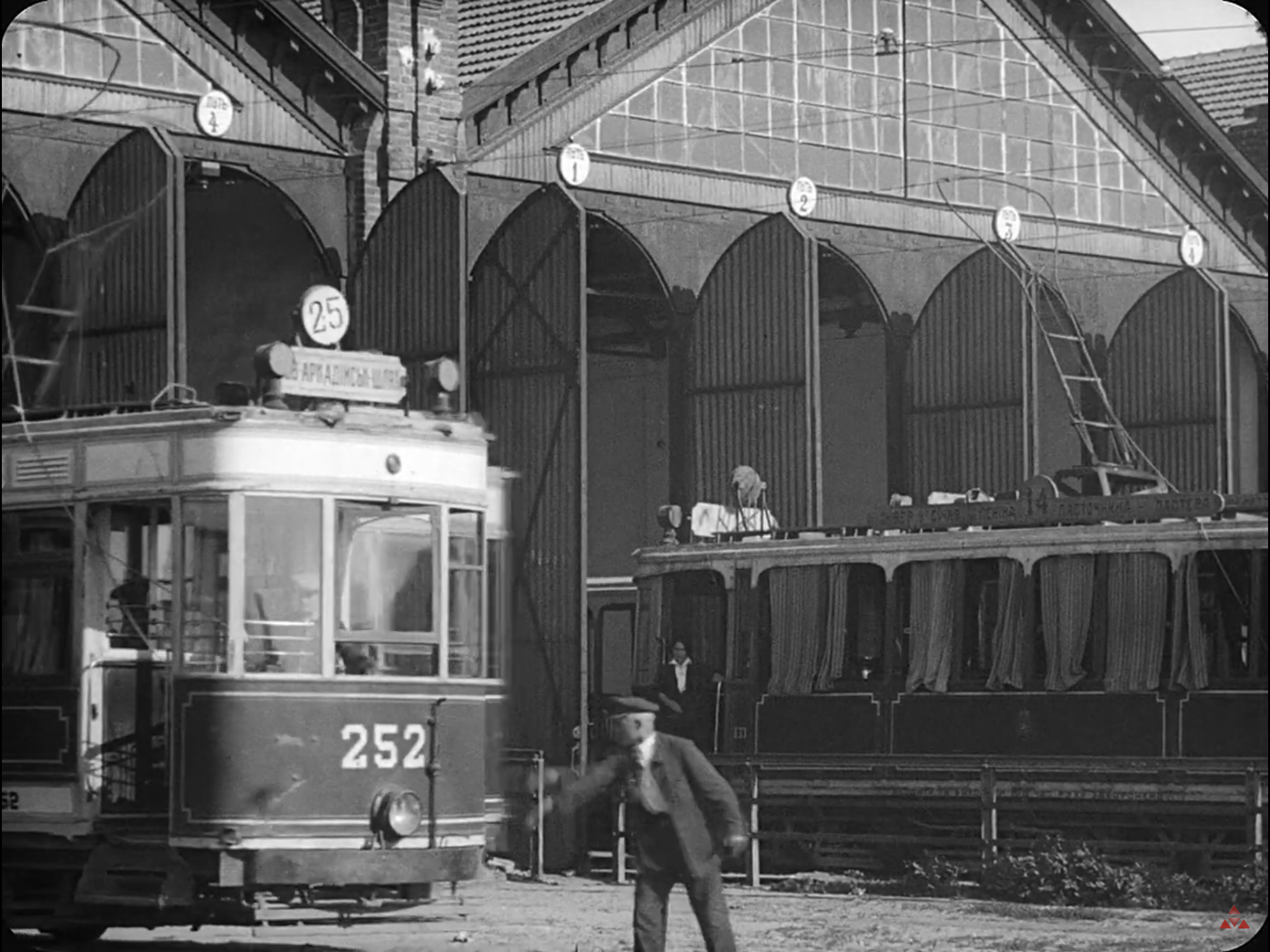 [00:13:48] Tram depot, Vodoprovidna Street, Odesa
[00:13:48] Tram depot, Vodoprovidna Street, Odesa
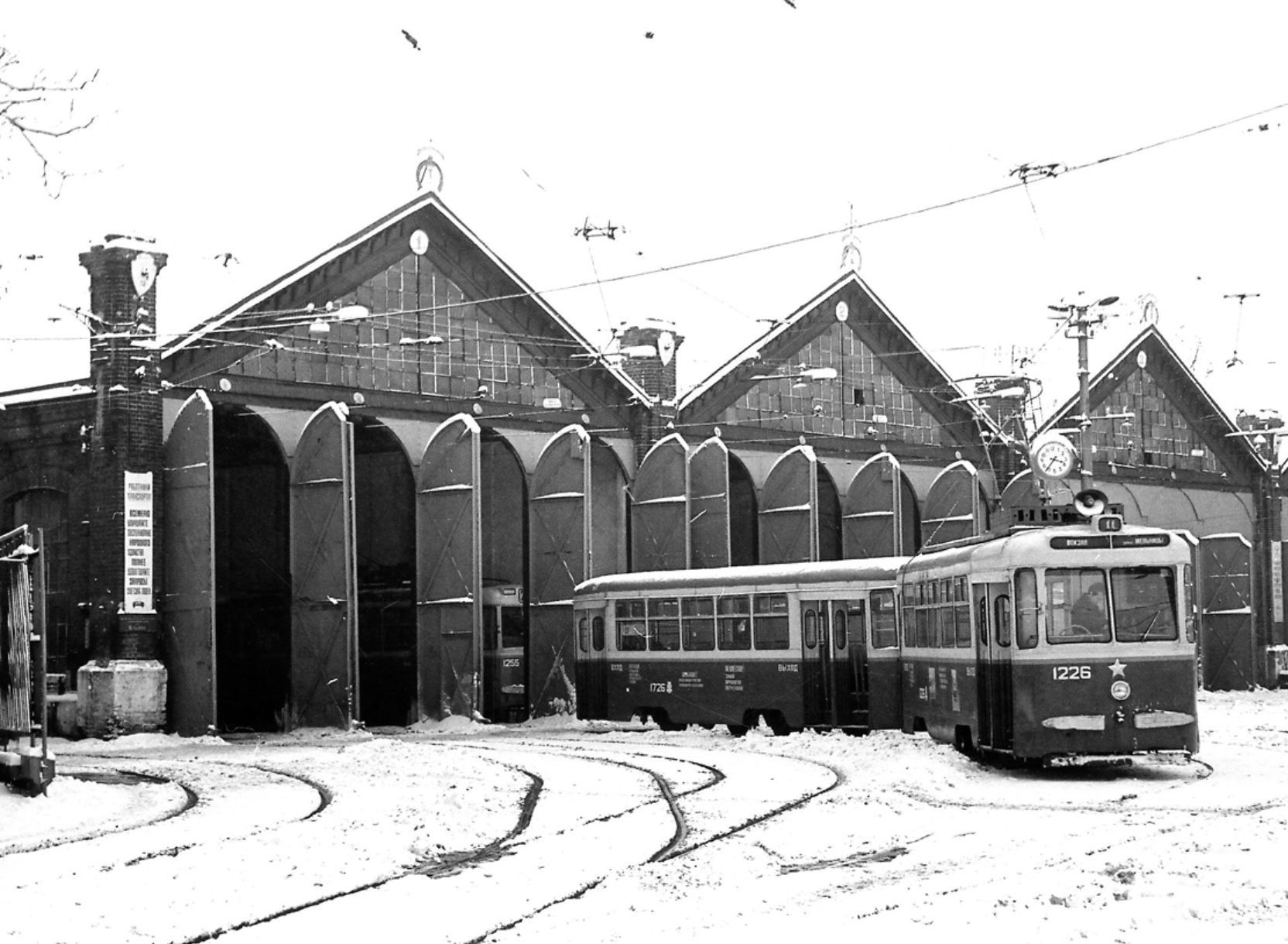
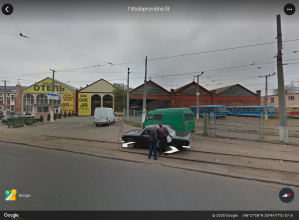 Current [Google Earth] and 1960s views of the depot which is still partly in use by trams. There is a similar tram depot on Stepova Street in the south of the city, now used as a tram museum.
Current [Google Earth] and 1960s views of the depot which is still partly in use by trams. There is a similar tram depot on Stepova Street in the south of the city, now used as a tram museum.
One of Mikhail Kaufman’s criticisms of ‘Man with a Movie Camera’ (he fell out permanently with his brother over differences in creative viewpoints during editing) was that ‘there were too many trams’. A valid criticism as indeed there are trams everywhere (which was the case in those days). The trams in the three cities can generally be differentiated as follows:
Moscow – a horizontal white band along the lower side; Kyiv – a white panel on the front, and sometimes along the sides; Odesa – neither band nor panel but only the elegant lining around the body panels [00:13:48]. The colours were generally deep red with a white or cream superstructure. Typical (restored) Moscow tram of the early 1900s below.

 [00:13:57] Mikhail Kaufman on top of an industrial structure with a tram. This was likely to have been filmed during ‘The Eleventh Year’ in 1927 as the camera appears to be the Model K Debrie Parvo used on this film (as seen above it does not have the silver disc on the side of the Model L used during the 1928 filming). The tram is unusual in that it is in one drab looking colour (Moscow, Kyiv, and Odesa trams generally had light coloured superstructures; also see above note on trams in these cities); the second carriage is very short and industrial looking with open ends; and the headboard design is unlike the other cities and says in Ukrainian ‘Factories’ and ‘Station’.
[00:13:57] Mikhail Kaufman on top of an industrial structure with a tram. This was likely to have been filmed during ‘The Eleventh Year’ in 1927 as the camera appears to be the Model K Debrie Parvo used on this film (as seen above it does not have the silver disc on the side of the Model L used during the 1928 filming). The tram is unusual in that it is in one drab looking colour (Moscow, Kyiv, and Odesa trams generally had light coloured superstructures; also see above note on trams in these cities); the second carriage is very short and industrial looking with open ends; and the headboard design is unlike the other cities and says in Ukrainian ‘Factories’ and ‘Station’.
Mykhailo Kalnytsky has investigated trams in the relevant cities as follows: Kamianske (no trams there until 1935) and Donetsk (Stalin) where there was a No. 1 tram that went on the route ‘Factories – Station’ but this started in October 1928, so a year after ‘The Eleventh Year’ filming (also the passengers seem to be wearing summer clothes). In Dnipropetrovsk, a city near to Kamianske, there was a No. 1 tram at the time but the destination was ‘Factories – Camp Bazaar’. So both the structure and tram remain a mystery unless new information comes to light.
[00:14:04] Bakhmetevsky Bus Garage, Moscow (see screenshot [00:06:00]).
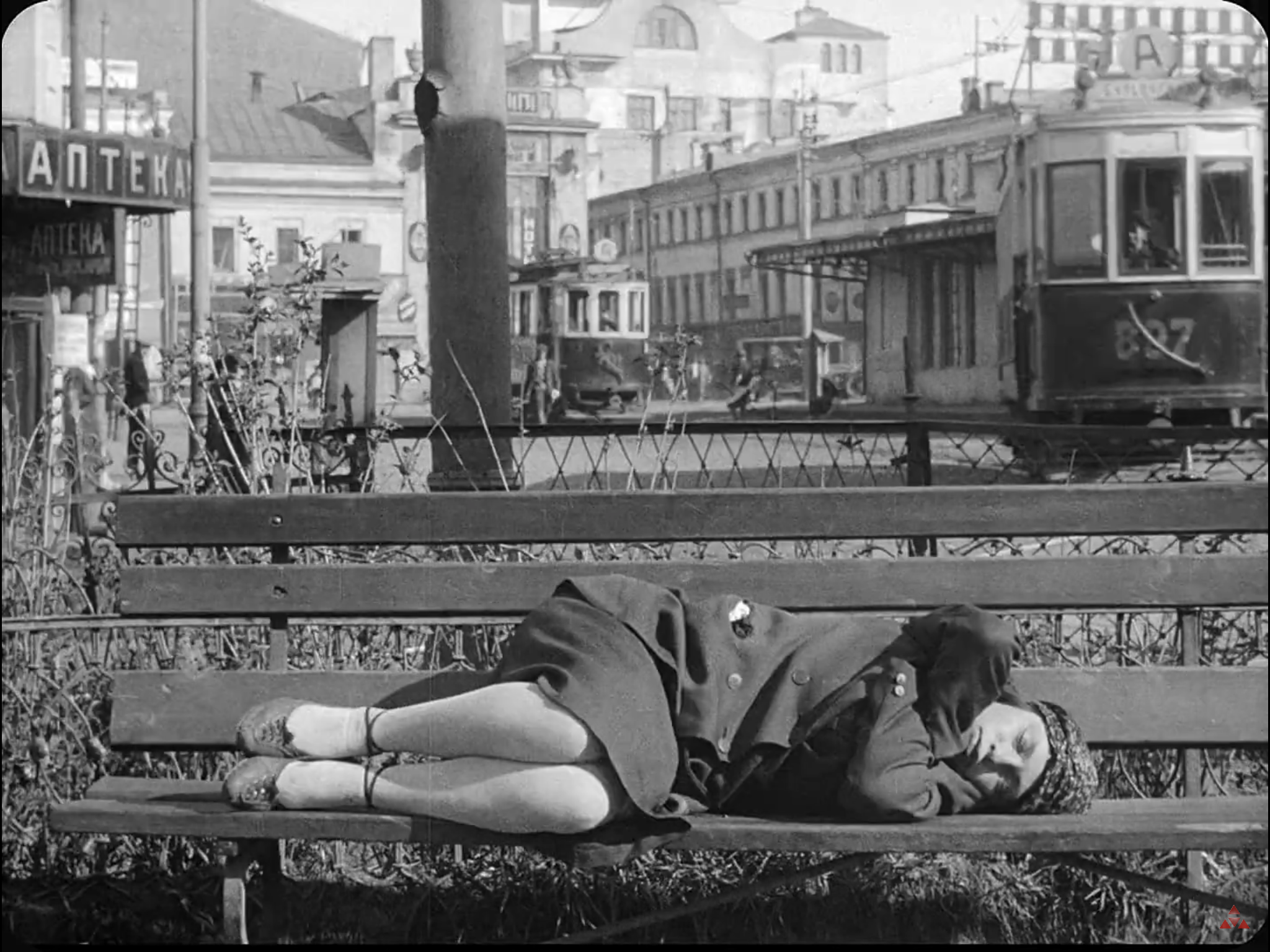
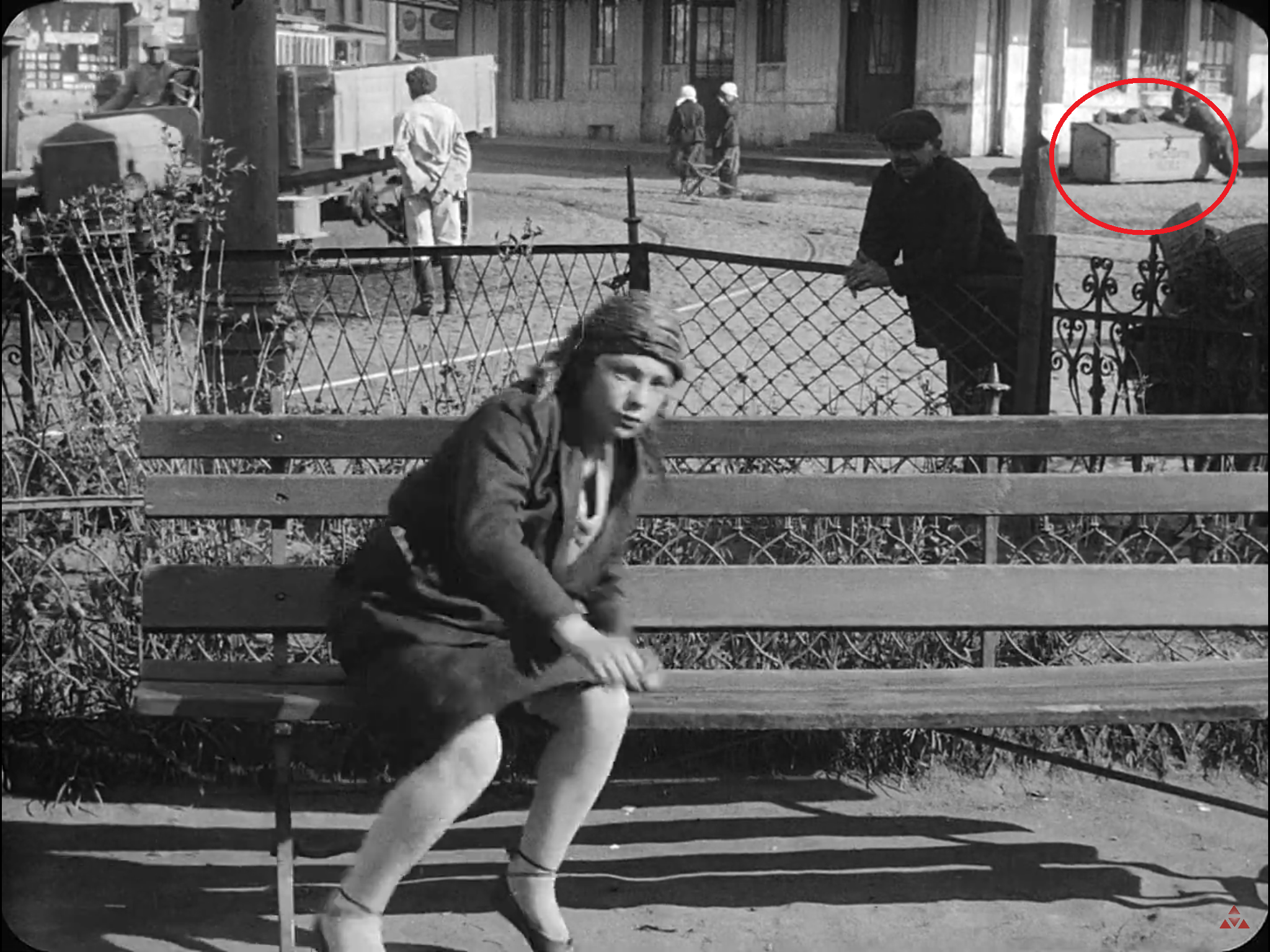
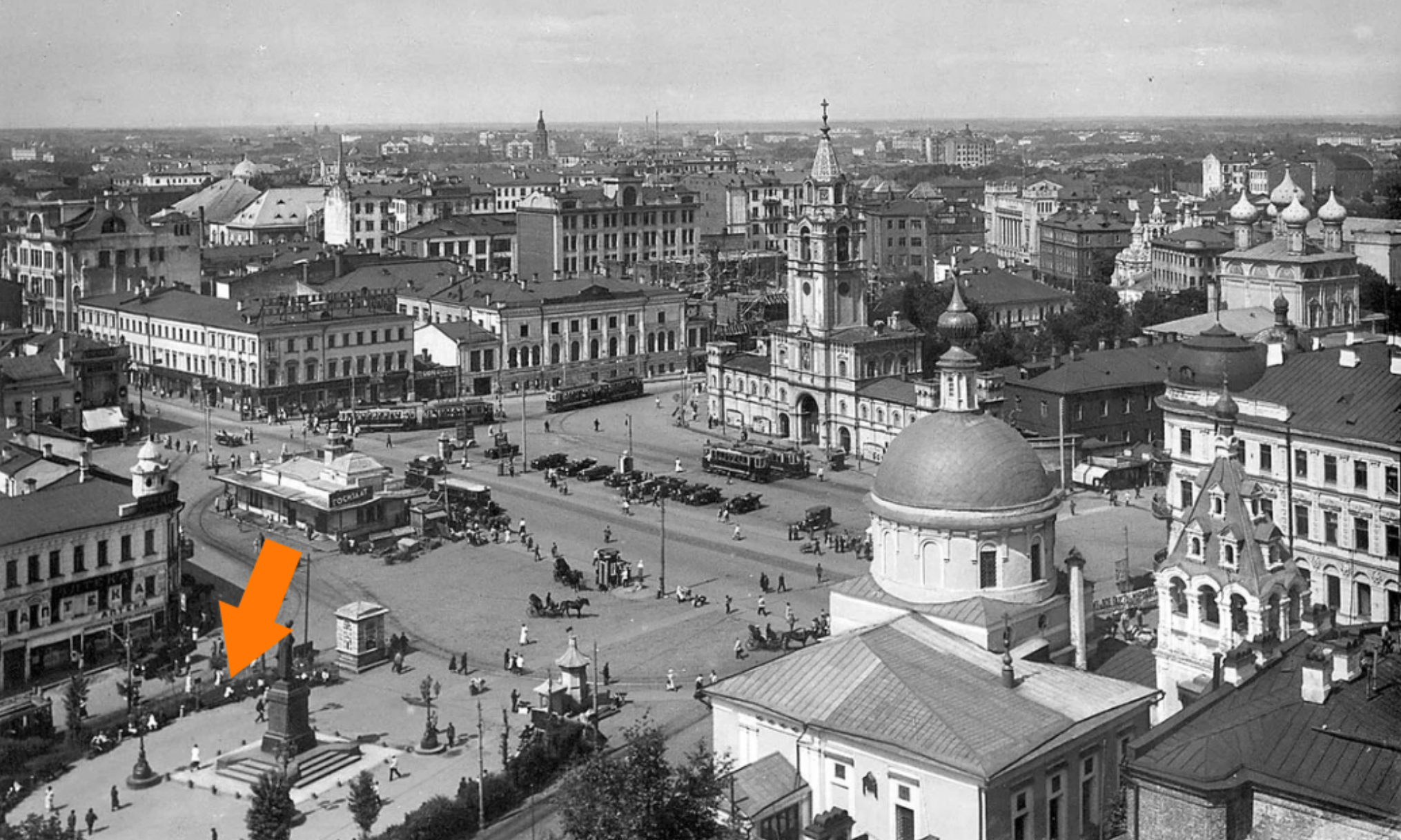 [00:14:30] [00:14:39] Woman on a bench, Strastnaya Square, Moscow. Clues are the pharmacy (АПТЕКА) on the corner of the square (lhs) and the tram stop pavilion and toilets behind the tram seen in the middle of the square above. Many thanks to Dr Denis Romodin of the Museum of Moscow for locating this scene and for suggesting the location of the exact bench (arrow)! Note the grit bin circled in [00:14:39] which is also visible in screenshot [00:11:36]. Photograph courtesy of the Museum.
[00:14:30] [00:14:39] Woman on a bench, Strastnaya Square, Moscow. Clues are the pharmacy (АПТЕКА) on the corner of the square (lhs) and the tram stop pavilion and toilets behind the tram seen in the middle of the square above. Many thanks to Dr Denis Romodin of the Museum of Moscow for locating this scene and for suggesting the location of the exact bench (arrow)! Note the grit bin circled in [00:14:39] which is also visible in screenshot [00:11:36]. Photograph courtesy of the Museum.
The kiosk selling mineral water in [00:11:43] is just to the right of the arrow.
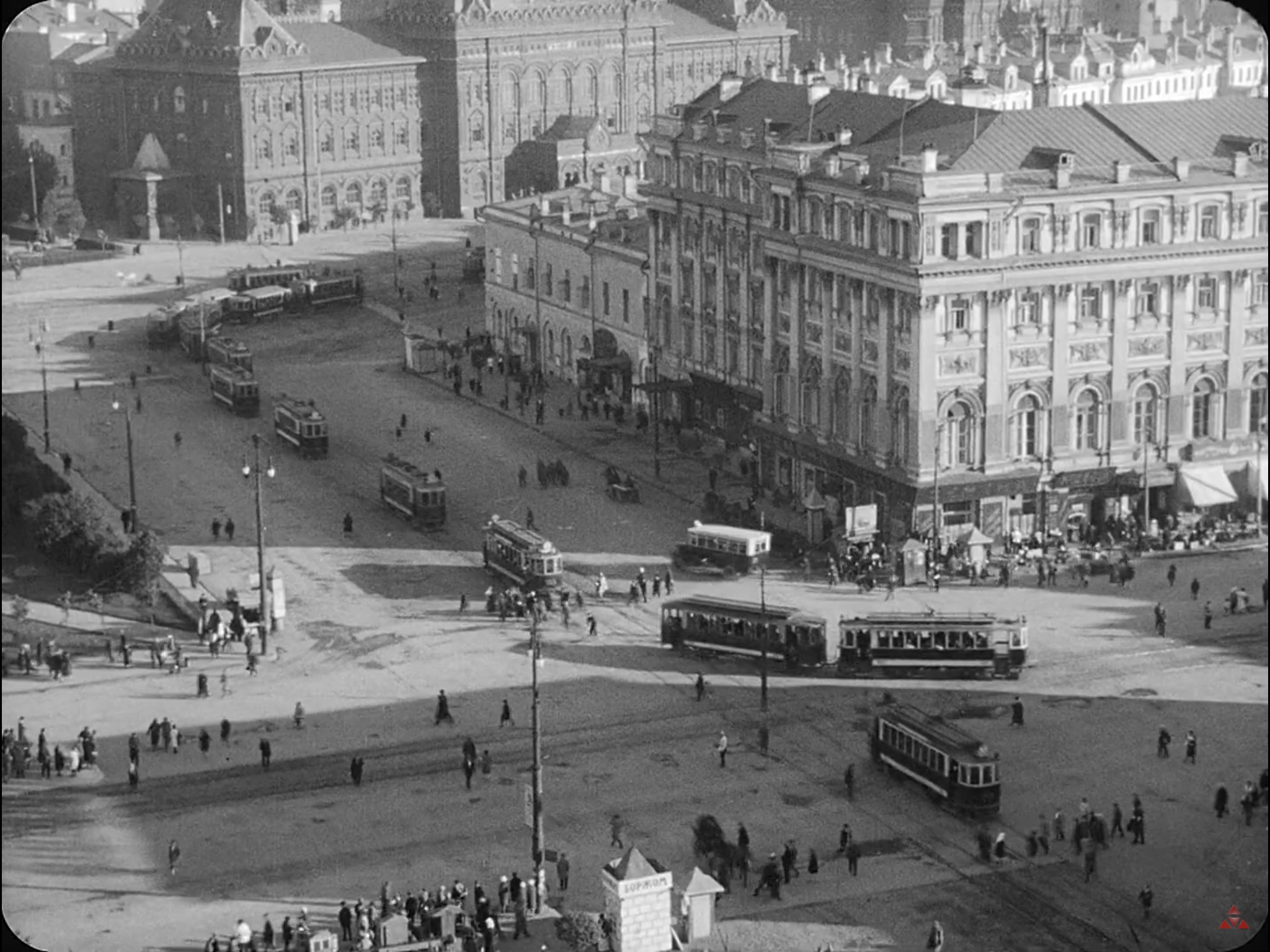 [00:14:42] Teatral’naya (Theatre) and Revolyutsii (Revolution) Squares, Moscow.
[00:14:42] Teatral’naya (Theatre) and Revolyutsii (Revolution) Squares, Moscow.
These famous squares are in central Moscow near Red Square. You can just see a corner of the park in Revolution Square next to Theatre Square in the foreground which is overlooked by the Bolshoi Theatre (the camera would have been on the top floor or on the pediment). The large (red) building in the background was built in 1890 as the City Hall, then the Lenin Museum. It is now used as a gallery for some of the collections of the State Historical Museum. All the buildings on the right have been replaced by a dreary block and a car park as can be seen in the current Google Street View below (the caption says Theatre Passage which is the road between the squares – see also [00:20:07]).

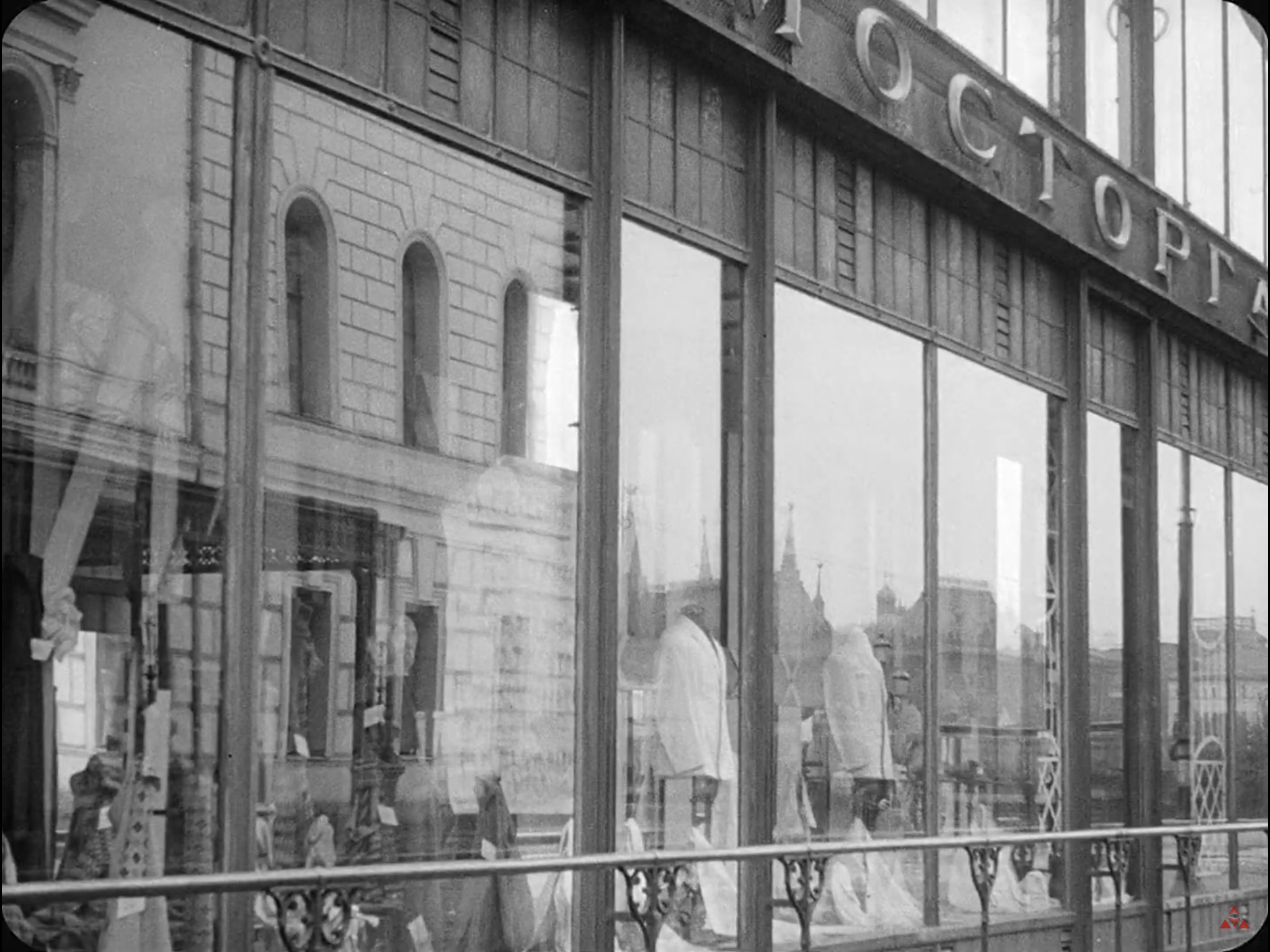 [00:14:50] Mostorg Department Store, Theatre Square, Moscow. This was the former Muir & Mirrielees department store (below), founded by two Scottish emigres. Now occupied by TsUM, it is a spectacular Gothic Revival building designed by the architect Roman Klein, opened in 1908. Confiscated after the Revolution it was re-named ‘Mostorg’ in 1922. The store also features in Mikhail Kaufman’s ‘Moscow’ (1927).
[00:14:50] Mostorg Department Store, Theatre Square, Moscow. This was the former Muir & Mirrielees department store (below), founded by two Scottish emigres. Now occupied by TsUM, it is a spectacular Gothic Revival building designed by the architect Roman Klein, opened in 1908. Confiscated after the Revolution it was re-named ‘Mostorg’ in 1922. The store also features in Mikhail Kaufman’s ‘Moscow’ (1927).

At first glance the glass facade could be from the famous 1927 Mostorg store above, on Krasnaya Presnya, designed by the Constructivist architects Aleksandr, Leonid and Viktor Vesnin. A similar appearance at ground level but the Theatre Square store windows reflect part of the Bolshoi Theatre and the City Hall. The Vesnin building facade still exists as a Benetton store front, but the interesting iron framed lower facade of the Muir & Mirrielees store has been replaced by a very ordinary design (below).
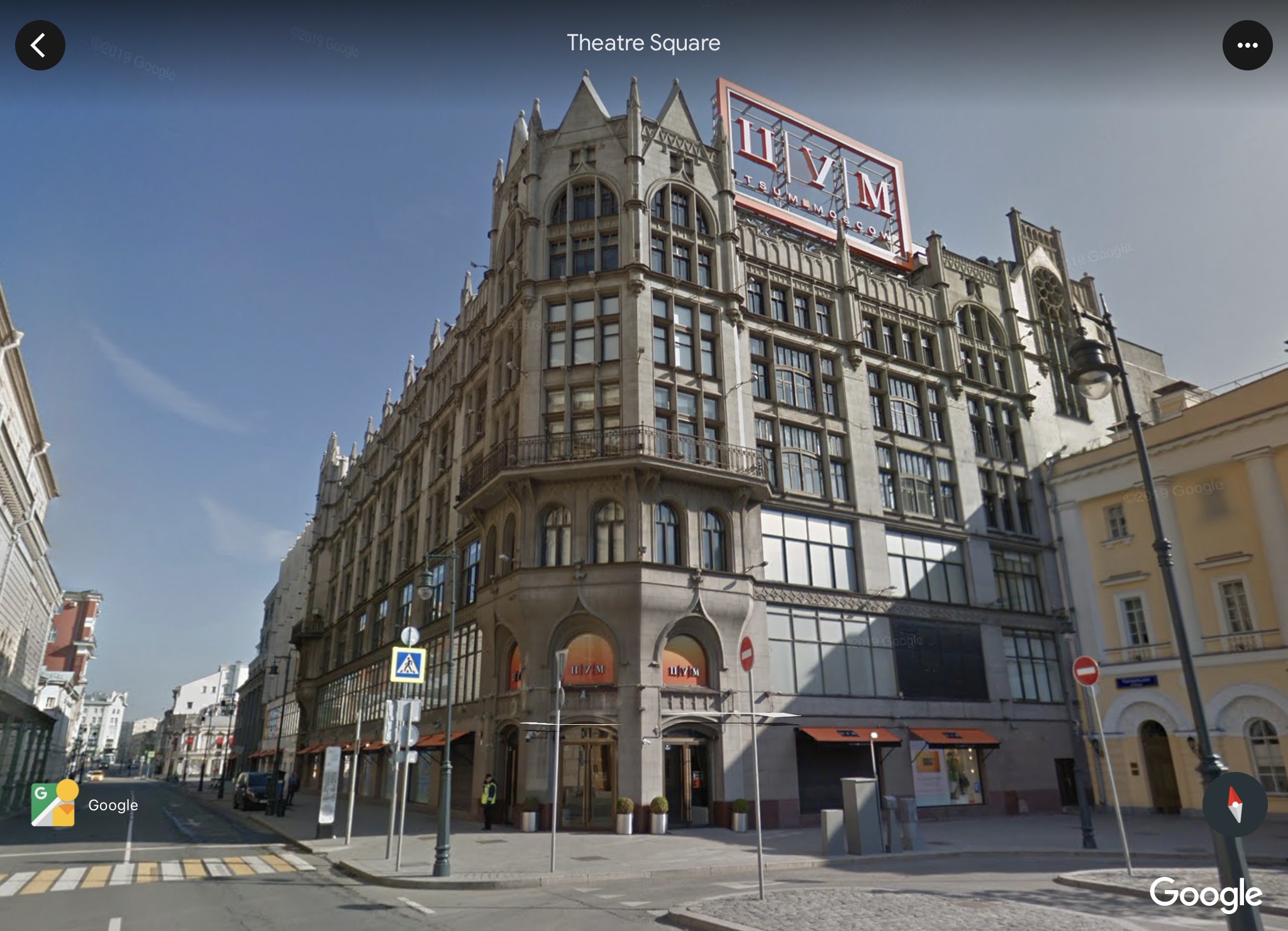 [Google Earth]
[Google Earth]
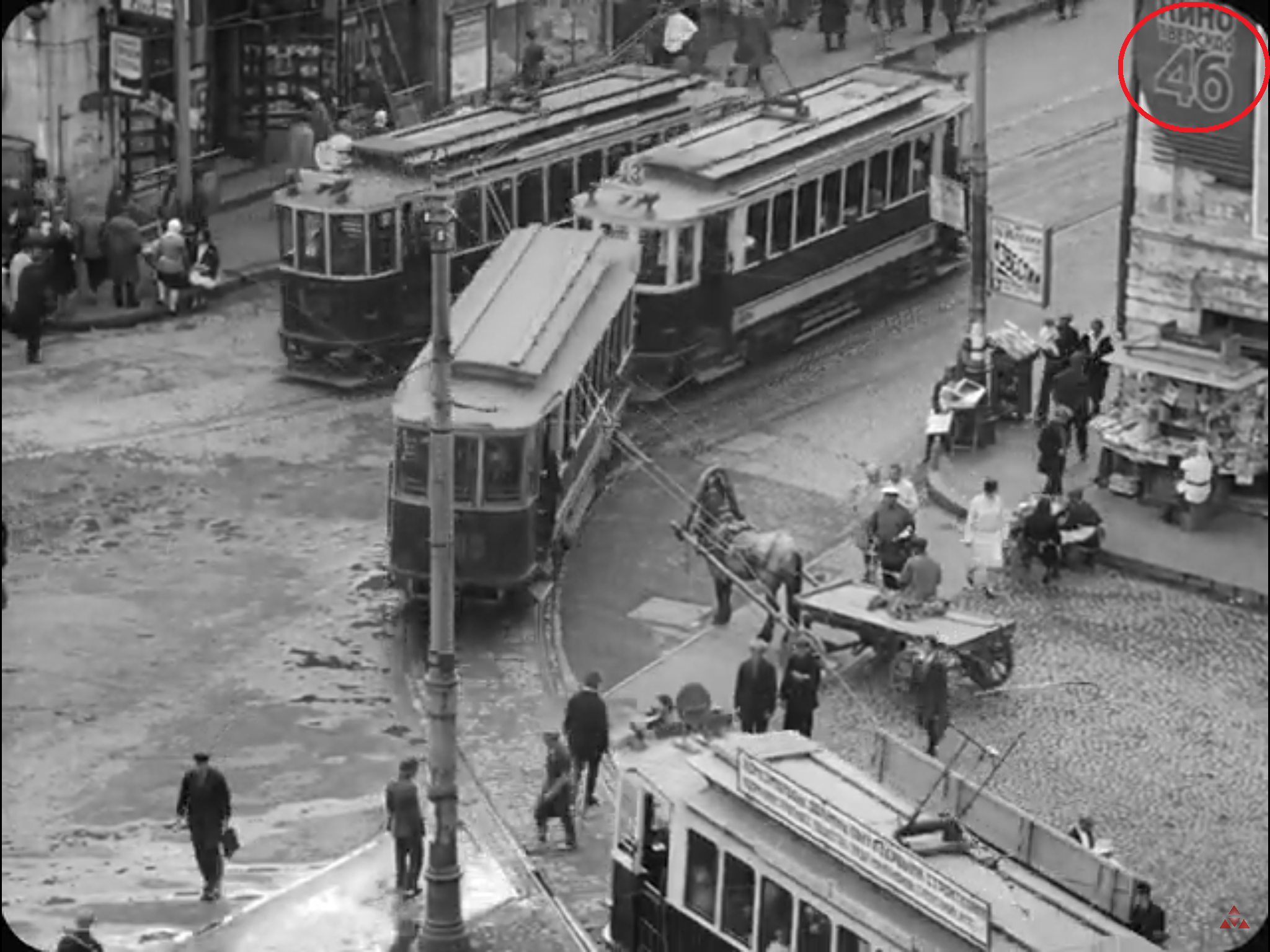 [00:14:56] Tverskaya Street at the corner of Strastnaya Square, Moscow.
[00:14:56] Tverskaya Street at the corner of Strastnaya Square, Moscow.
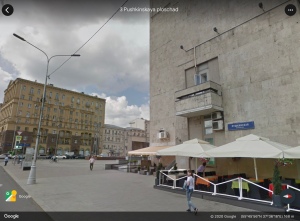 Current view of the same corner of Tverskaya and Pushkinskaya Square. [Google Earth]
Current view of the same corner of Tverskaya and Pushkinskaya Square. [Google Earth]
The clue to the location is the circled sign for the ‘Tverskaya 46’ Cinema, previously the Central Cinema (entry in 1929 Moscow directory below) on the corner of the building. Tverskaya and Strastnaya Square were re-built and widened in the 1930s and the street numbering has changed. The cinema was on the corner of the square on the same street as the Izvestia building and can be seen in the background of screenshot [01:04:31]. This cinema and the Hermitage Theatre were the locations for the premiere of ‘Man with a Movie Camera’ in Moscow on the 9th April 1929.
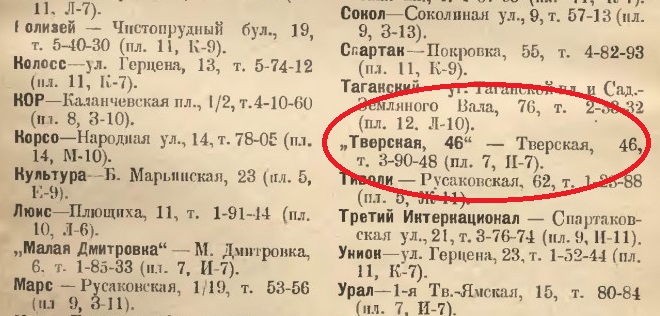 Cinema information courtesy of Live Journal.
Cinema information courtesy of Live Journal.
Tverskaya is one of the oldest streets in Moscow, dating back to the 12thC. One of the main radial streets of the city it connects Manege Square at the top of Red Square to the Garden Ring, passing through Tverskaya (Sovetskaya) and Strastnaya (Pushkinskaya) Squares. The route into Moscow from St Petersburg for the Tsars, it became a fashionable street for the aristocracy in the 17th and 18th centuries, then a commercial centre in the 19thC. Re-named Gorky Street in 1932, most of the historic buildings were destroyed after 1935 as part of Stalin’s reconstruction of Moscow.
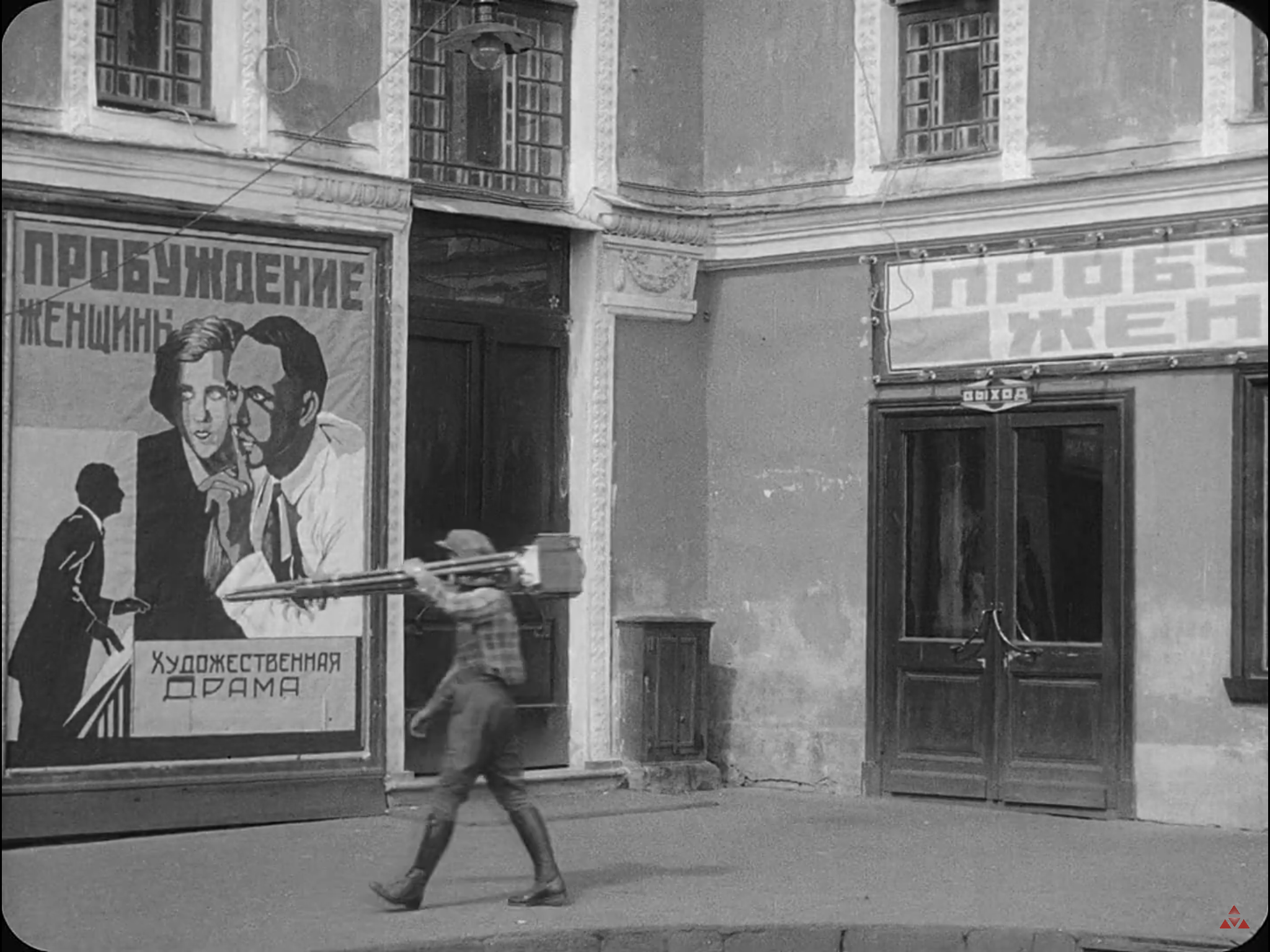 [00:15:05] MK (assumed – see [00:25:57]) with Debrie Interview camera and tripod on his shoulder walks past a poster for ‘The Awakening of a Woman’, 1927, dir. Fred Sauer. This poster also appears earlier in the film, and in the reflected view of Strastnaya Square [00:19:52]. The film was showing in Moscow at the time of the filming in early June 1928 at the ‘Hermitage’, ‘Horn’ and ‘Union’ Cinemas (Pravda advertisements) but none looks like the building in the screenshot so the location has not been found. The cinema may have been in Kyiv, but this is not confirmed by Mykhailo Kalnitsky.
[00:15:05] MK (assumed – see [00:25:57]) with Debrie Interview camera and tripod on his shoulder walks past a poster for ‘The Awakening of a Woman’, 1927, dir. Fred Sauer. This poster also appears earlier in the film, and in the reflected view of Strastnaya Square [00:19:52]. The film was showing in Moscow at the time of the filming in early June 1928 at the ‘Hermitage’, ‘Horn’ and ‘Union’ Cinemas (Pravda advertisements) but none looks like the building in the screenshot so the location has not been found. The cinema may have been in Kyiv, but this is not confirmed by Mykhailo Kalnitsky.
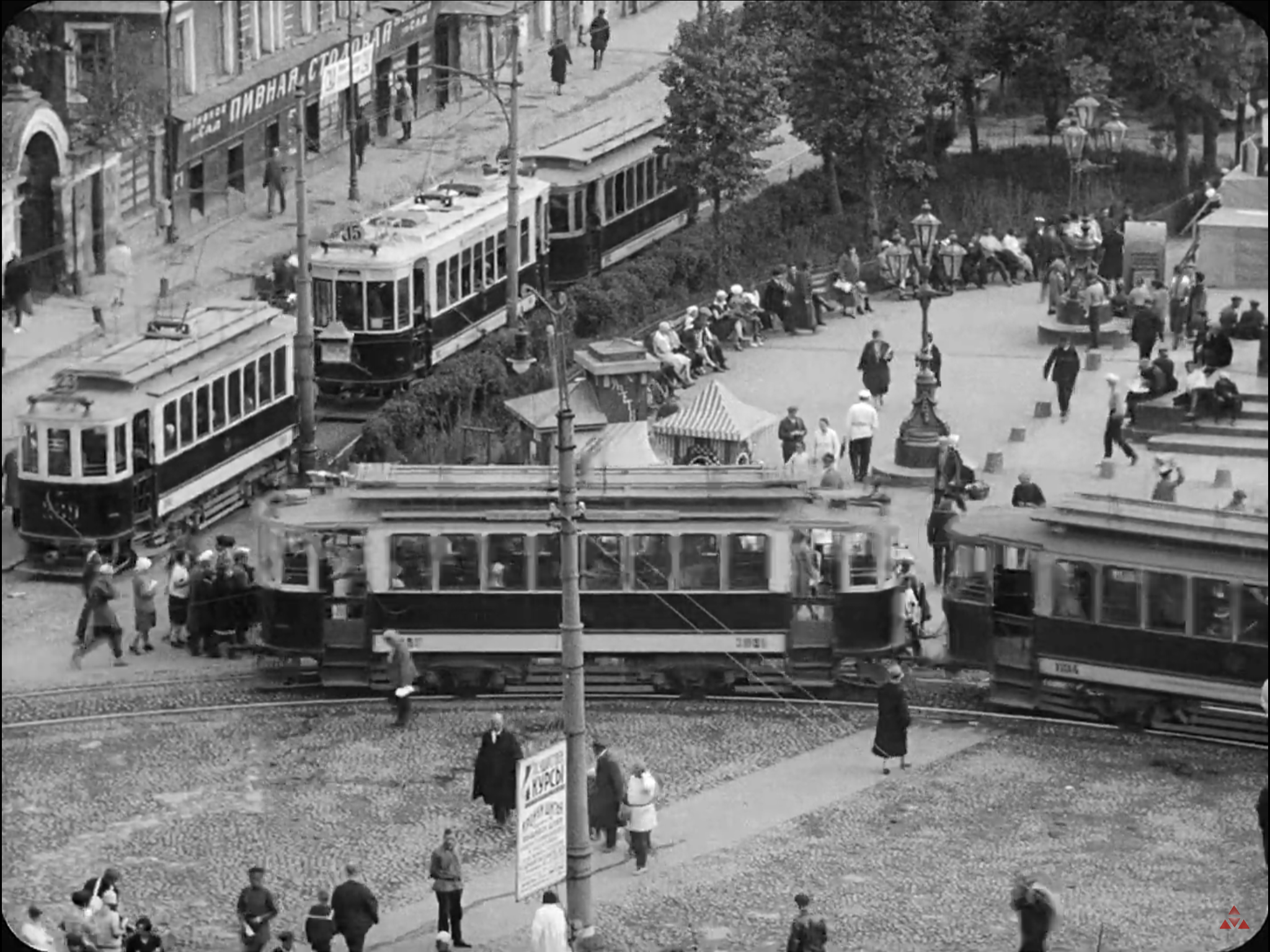 [00:15:10] Strastnaya Square, Moscow. The Pushkin statue is concealed on the right (moved to the centre of the re-planned square in 1950). Most likely filmed with the 21cm telephoto lens from the Monastery opposite.
[00:15:10] Strastnaya Square, Moscow. The Pushkin statue is concealed on the right (moved to the centre of the re-planned square in 1950). Most likely filmed with the 21cm telephoto lens from the Monastery opposite.
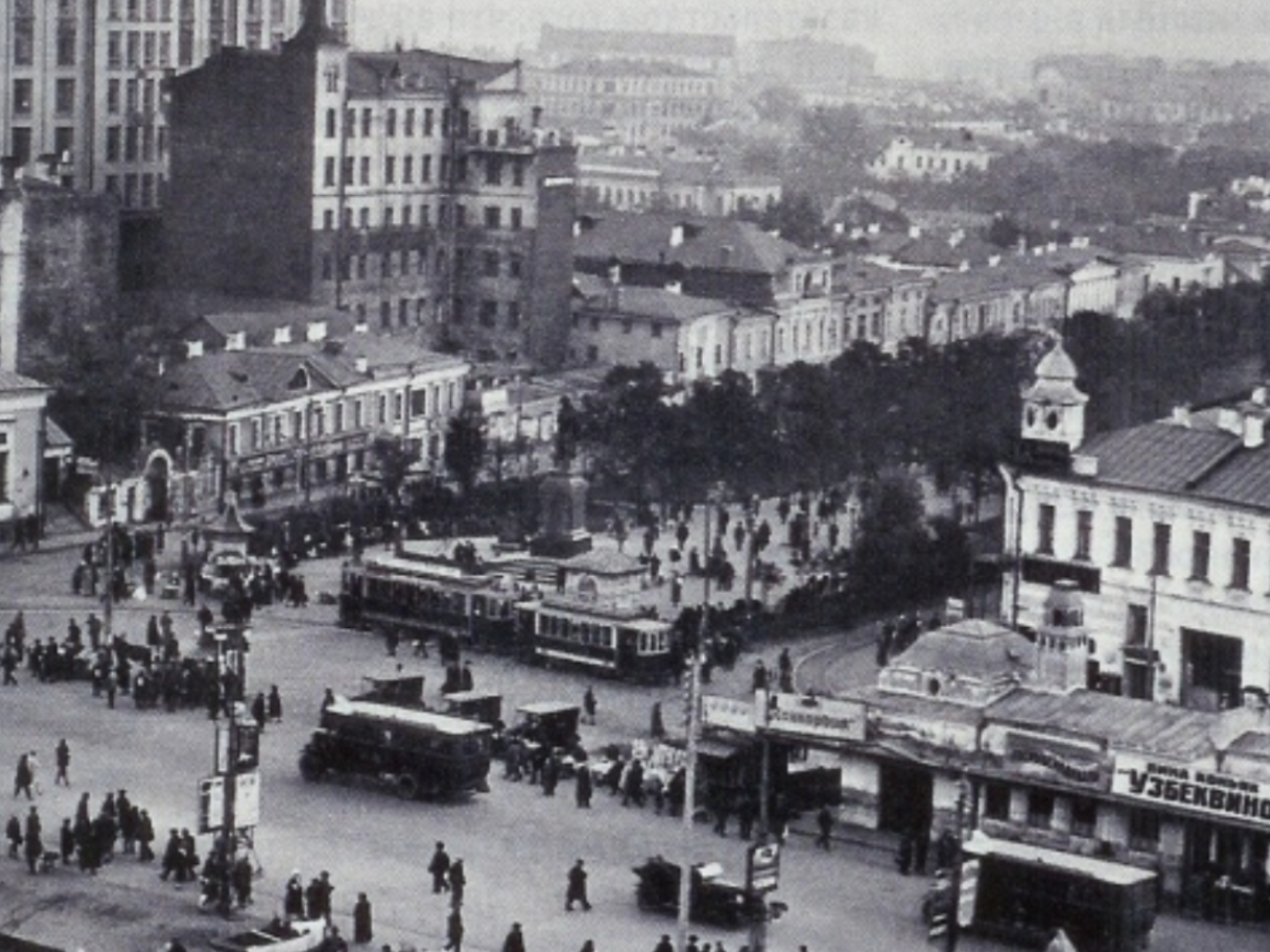 A contemporary wider angle view of the square and Pushkin statue (centre).
A contemporary wider angle view of the square and Pushkin statue (centre).
[00:15:19] [00:15:23] [00:15:26] Steelworks chimney, Donbas or Kamianske.
[00:15:30] Corner of Tverskaya Street and Strastnaya Square, Moscow (as [00:14:56]).
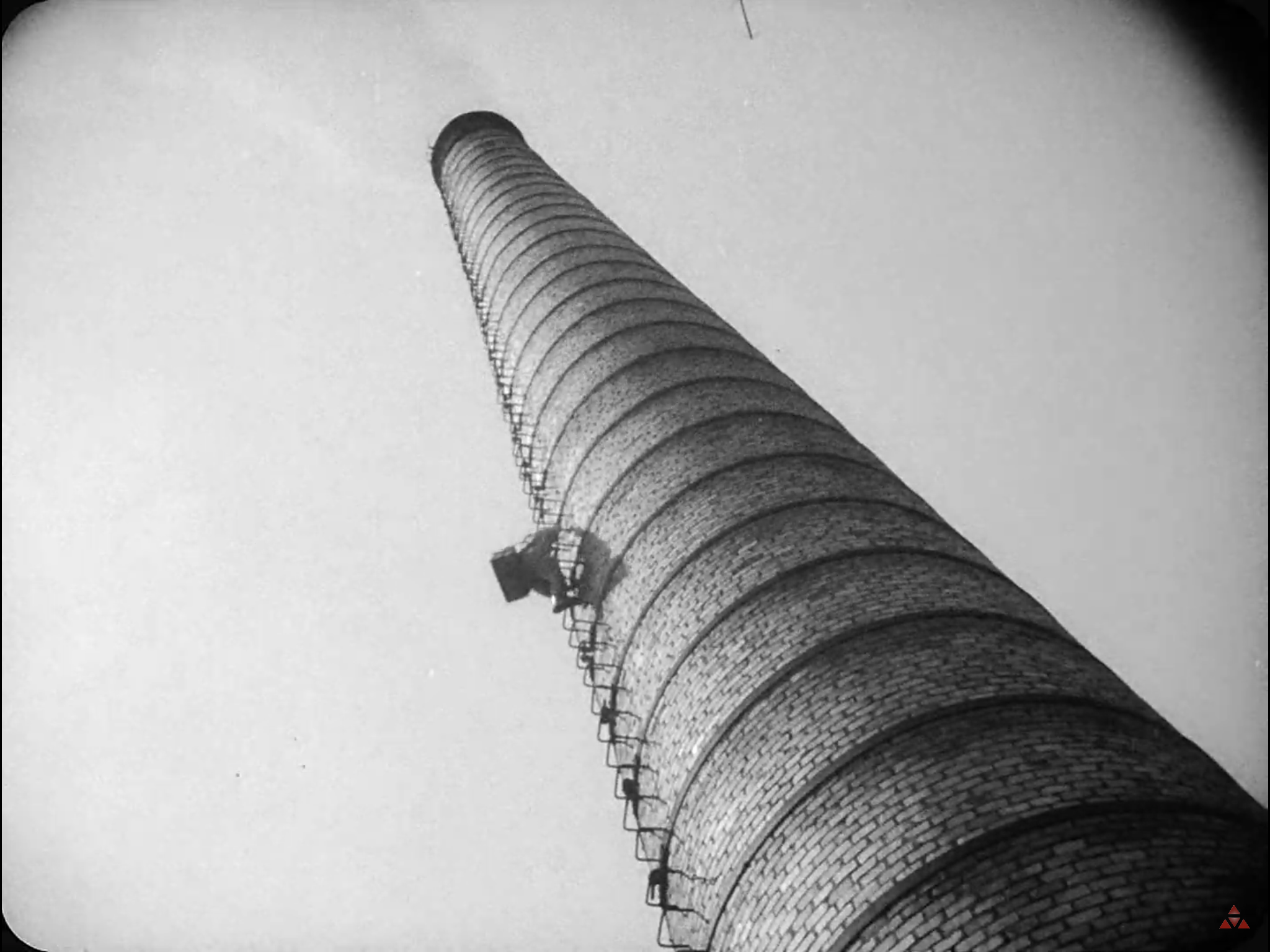 [00:15:35] [00:15:47] [00:15:53] [00:15:58] [00:16:03] Mikhail Kaufman climbs up a steelworks chimney, Donbas or Kamianske*.
[00:15:35] [00:15:47] [00:15:53] [00:15:58] [00:16:03] Mikhail Kaufman climbs up a steelworks chimney, Donbas or Kamianske*.
A terrifying looking ascent (probably not with the 10kg camera inside the case) though there does seem to be a rudimentary safety cable alongside the rungs (below)!
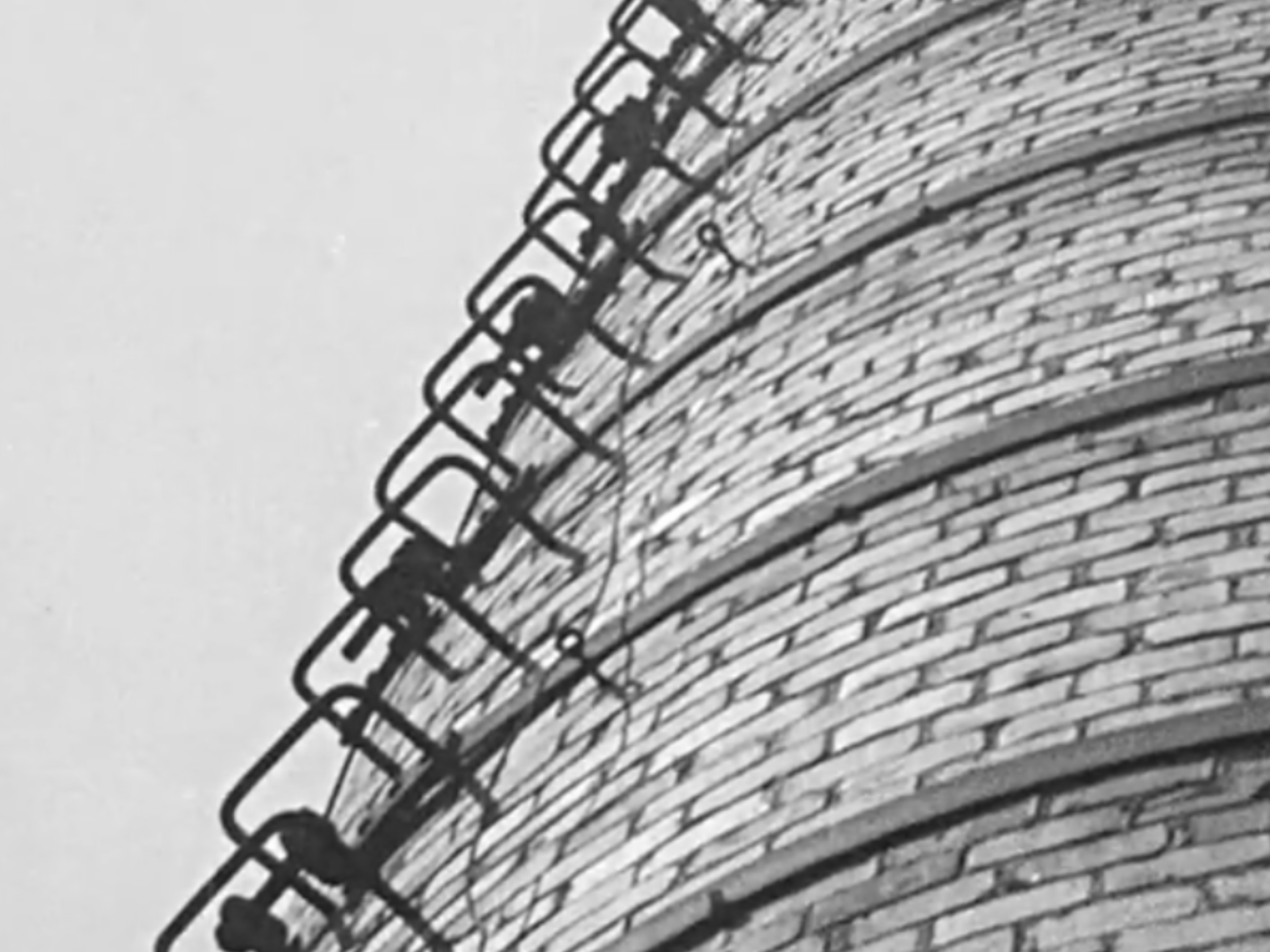
[00:16:09] MK pauses ‘near the top of the chimney’ to get the camera out of its case (but would have been filmed nearer to ground level judging from the angle and safety concerns!).
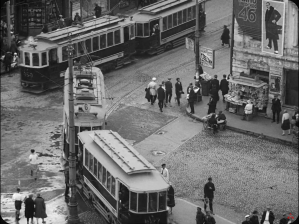 [00:16:13] Corner of Tverskaya Street and Strastnaya Square, Moscow. A clearer view of ‘Tverskaia 46’ Cinema on the square with a poster for the film ‘Engineer Elagin’ [1928] and ‘disc’ that can be seen behind the motorcycle and sidecar in the screenshot below.
[00:16:13] Corner of Tverskaya Street and Strastnaya Square, Moscow. A clearer view of ‘Tverskaia 46’ Cinema on the square with a poster for the film ‘Engineer Elagin’ [1928] and ‘disc’ that can be seen behind the motorcycle and sidecar in the screenshot below. [01:04:31]
[01:04:31]
[00:17:01] Steelworks lifts, Donbas or Kamianske*. Also seen next to the chimney in the images below.
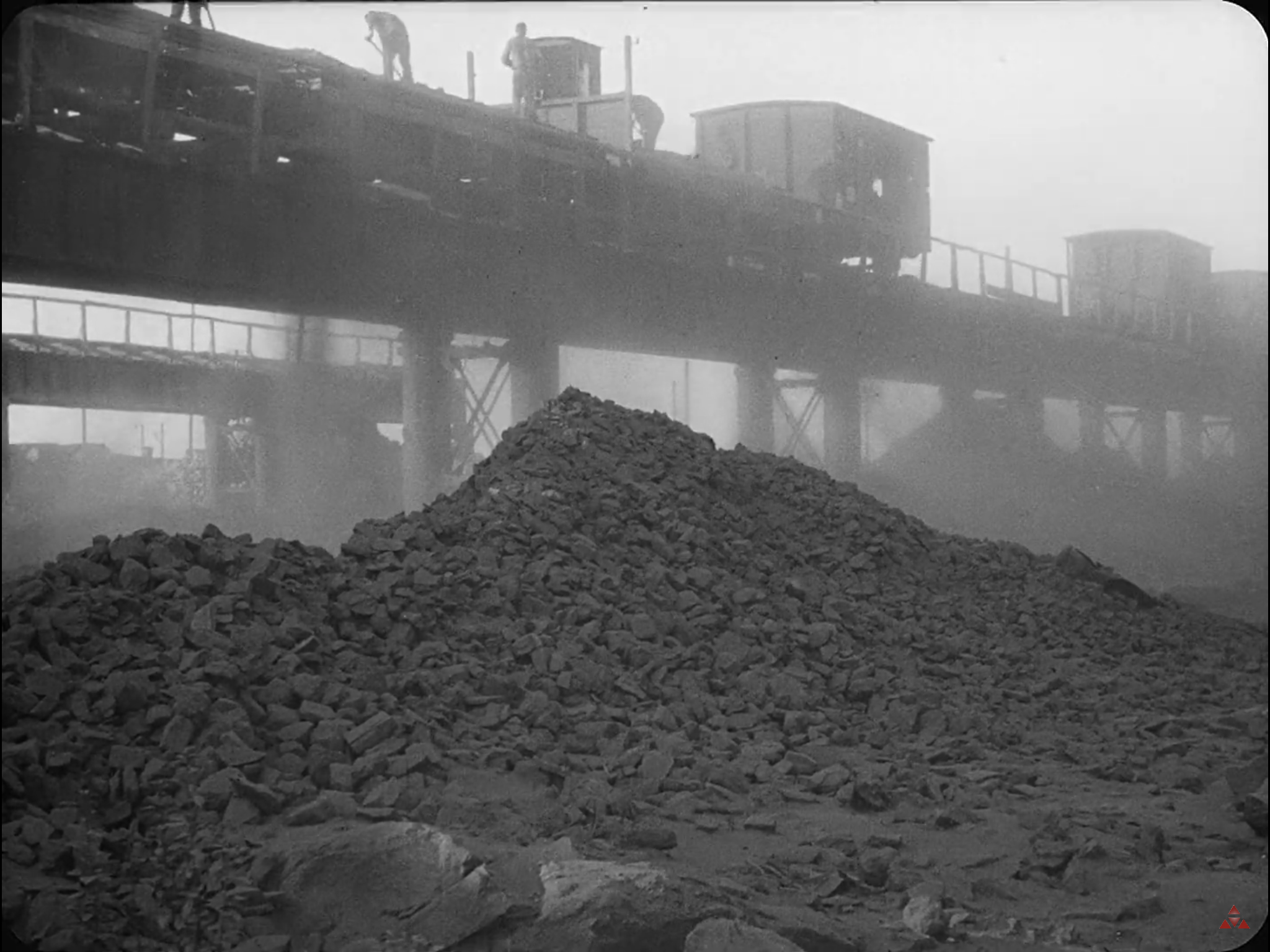 [00:17:06] Coal yard and gantry, Donbas (presumed to be Rutchenkovo – see below for a general view with a similar gantry).
[00:17:06] Coal yard and gantry, Donbas (presumed to be Rutchenkovo – see below for a general view with a similar gantry).
[00:17:10] Coal mine, presumed to be Rutchenkovo, Donbas.
[00:17:20] Coal yard, handcarts over the cameraman, Donbas (Rutchenkovo, as below?).
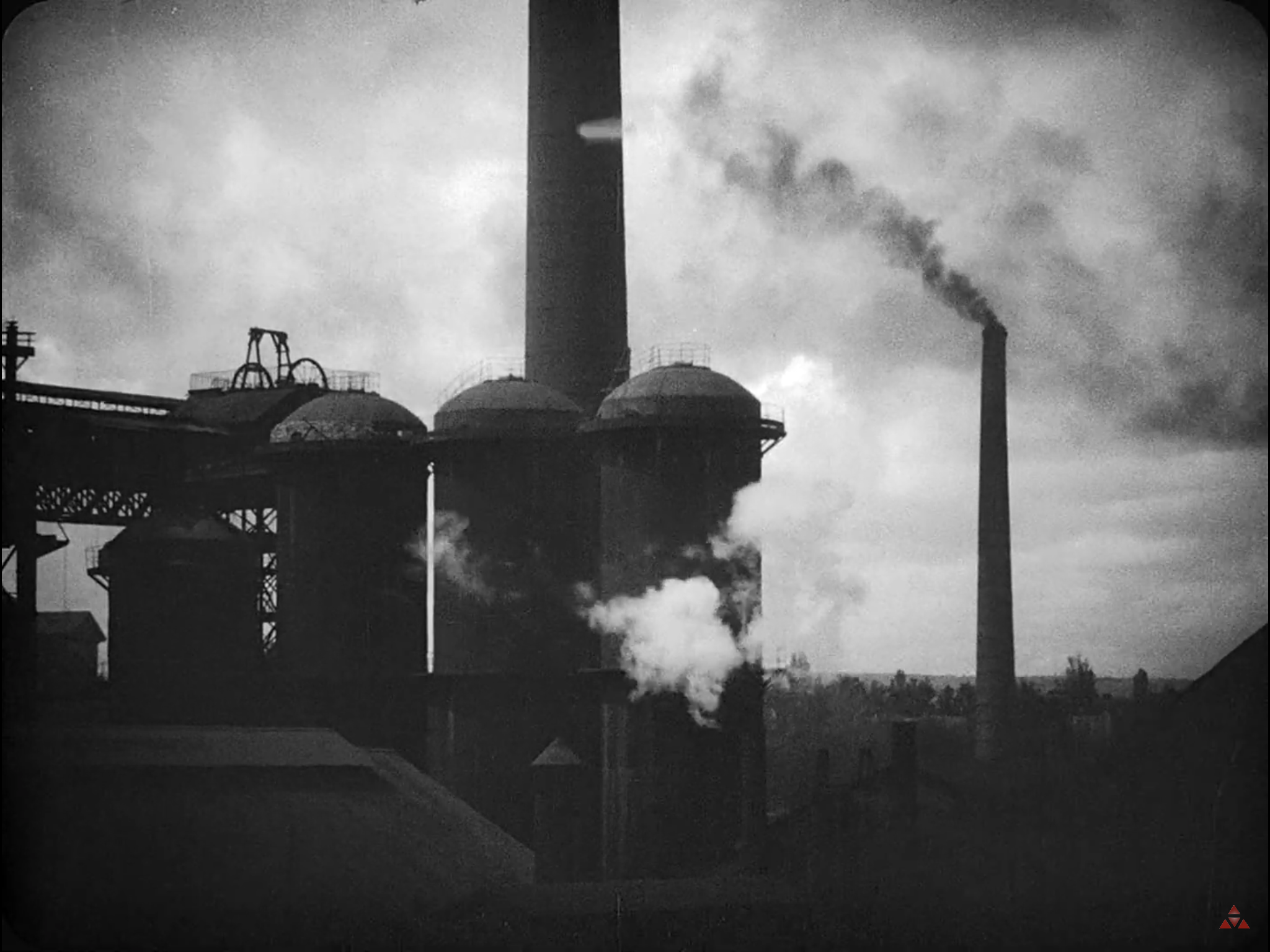 [00:17:32] View of Cowper ovens at a steelworks, Donbas or Kamianske*.
[00:17:32] View of Cowper ovens at a steelworks, Donbas or Kamianske*.
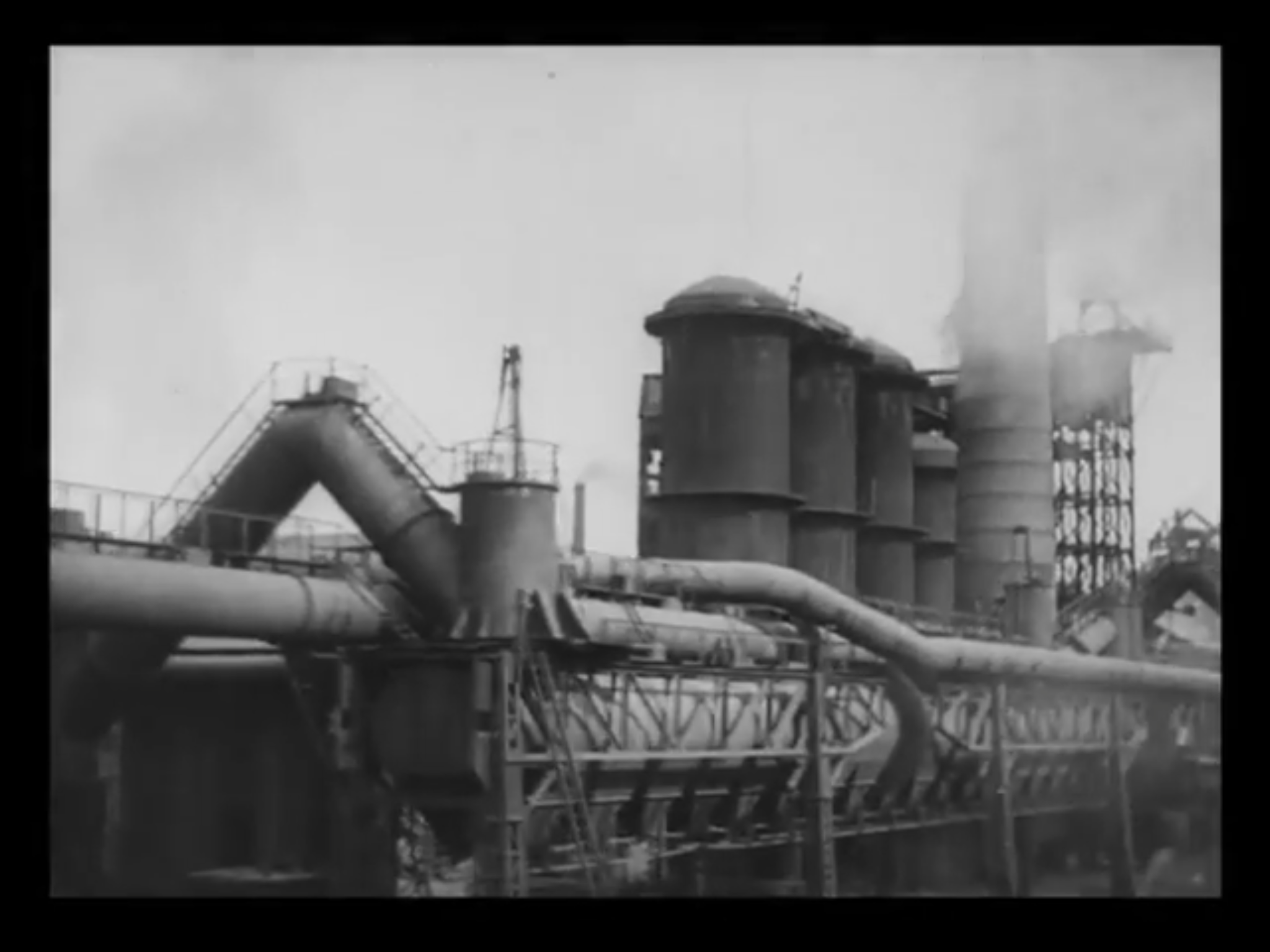
A still from ‘The Eleventh Year’ showing the same works.
*Refer to [00:08:30] for notes on the Kamenskoe (Kamianske) steelworks.
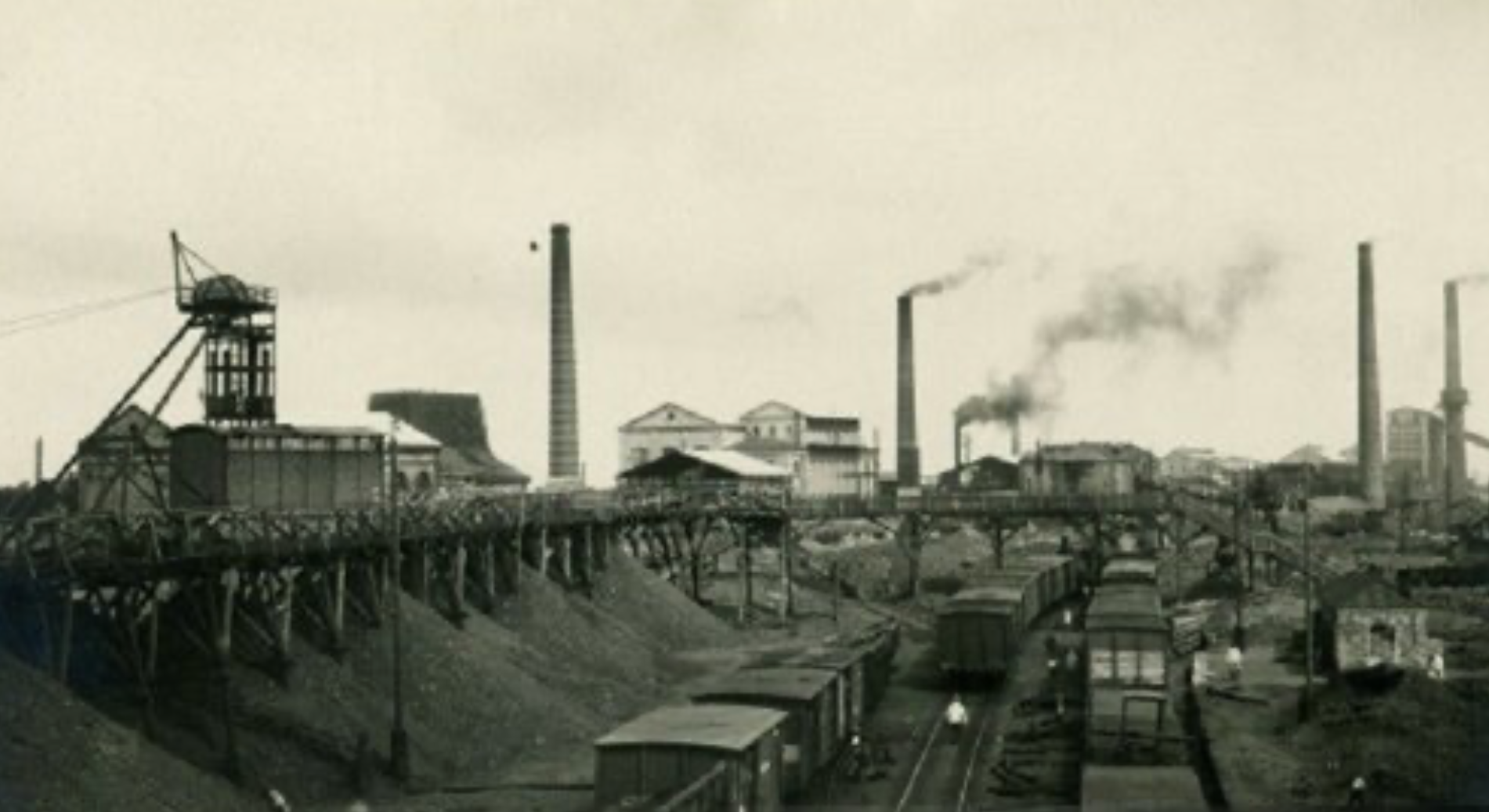 Contemporary view over the Rutchenkovo coal mine and steelworks. Coal unloading gantry in screenshot [00:17:06] on lhs?
Contemporary view over the Rutchenkovo coal mine and steelworks. Coal unloading gantry in screenshot [00:17:06] on lhs?
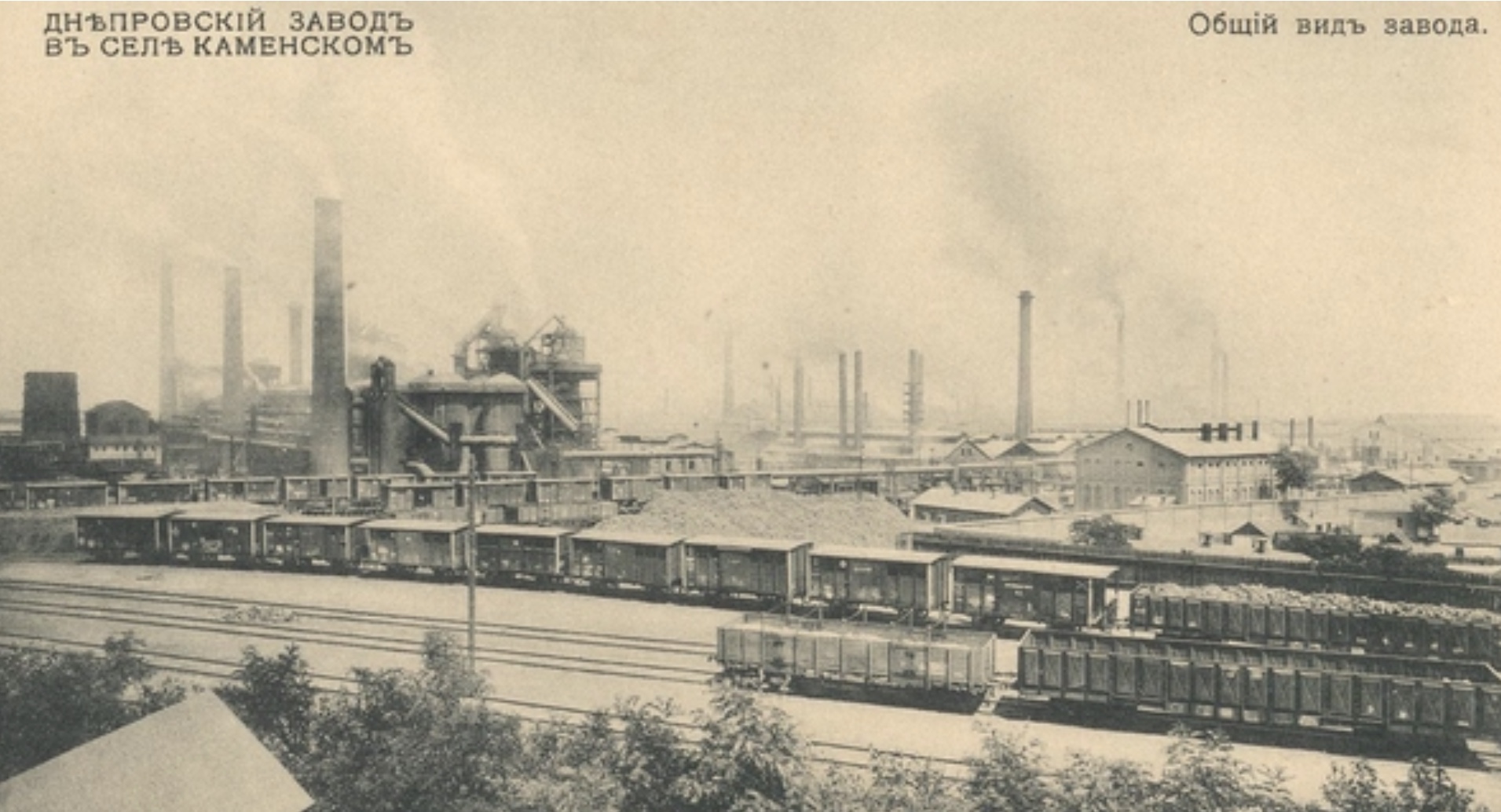 Contemporary view over Kamenskoe (Kamianske) steelworks.
Contemporary view over Kamenskoe (Kamianske) steelworks.
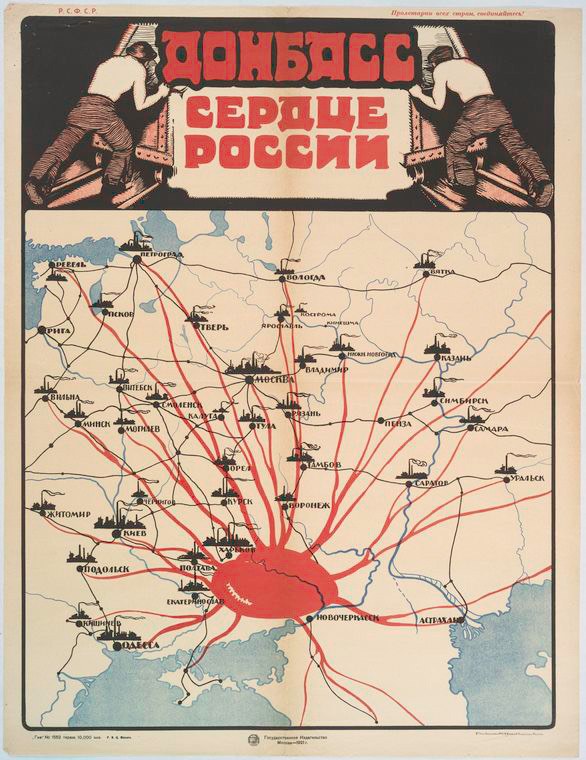 Contemporary poster -‘The Donbass is the Heart of Russia’
Contemporary poster -‘The Donbass is the Heart of Russia’
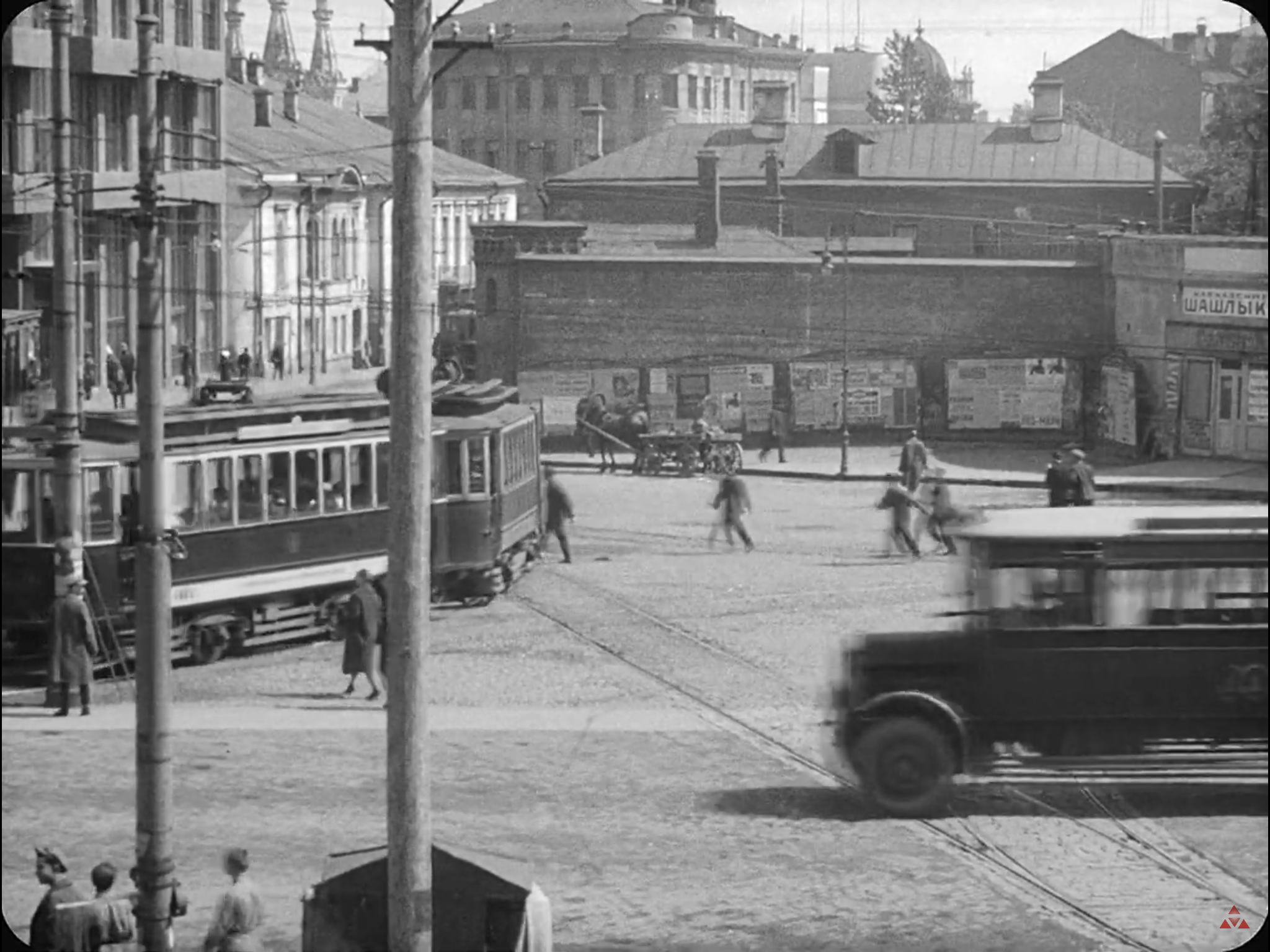 [00:17:36] Strastnaya Square, Moscow (Izvestia building on lhs).
[00:17:36] Strastnaya Square, Moscow (Izvestia building on lhs).
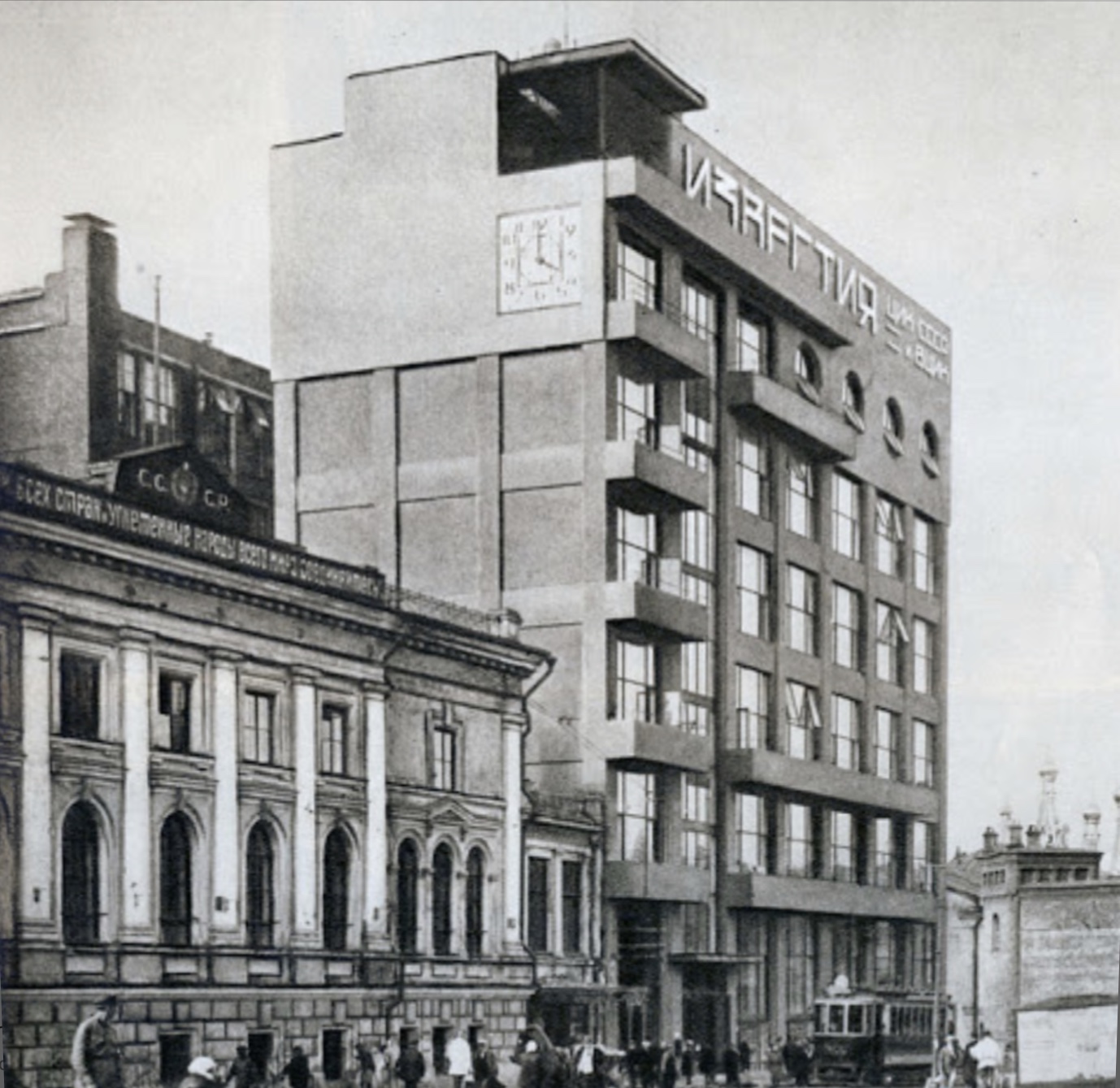 Contemporary image of the building – note the huge clock!
Contemporary image of the building – note the huge clock!
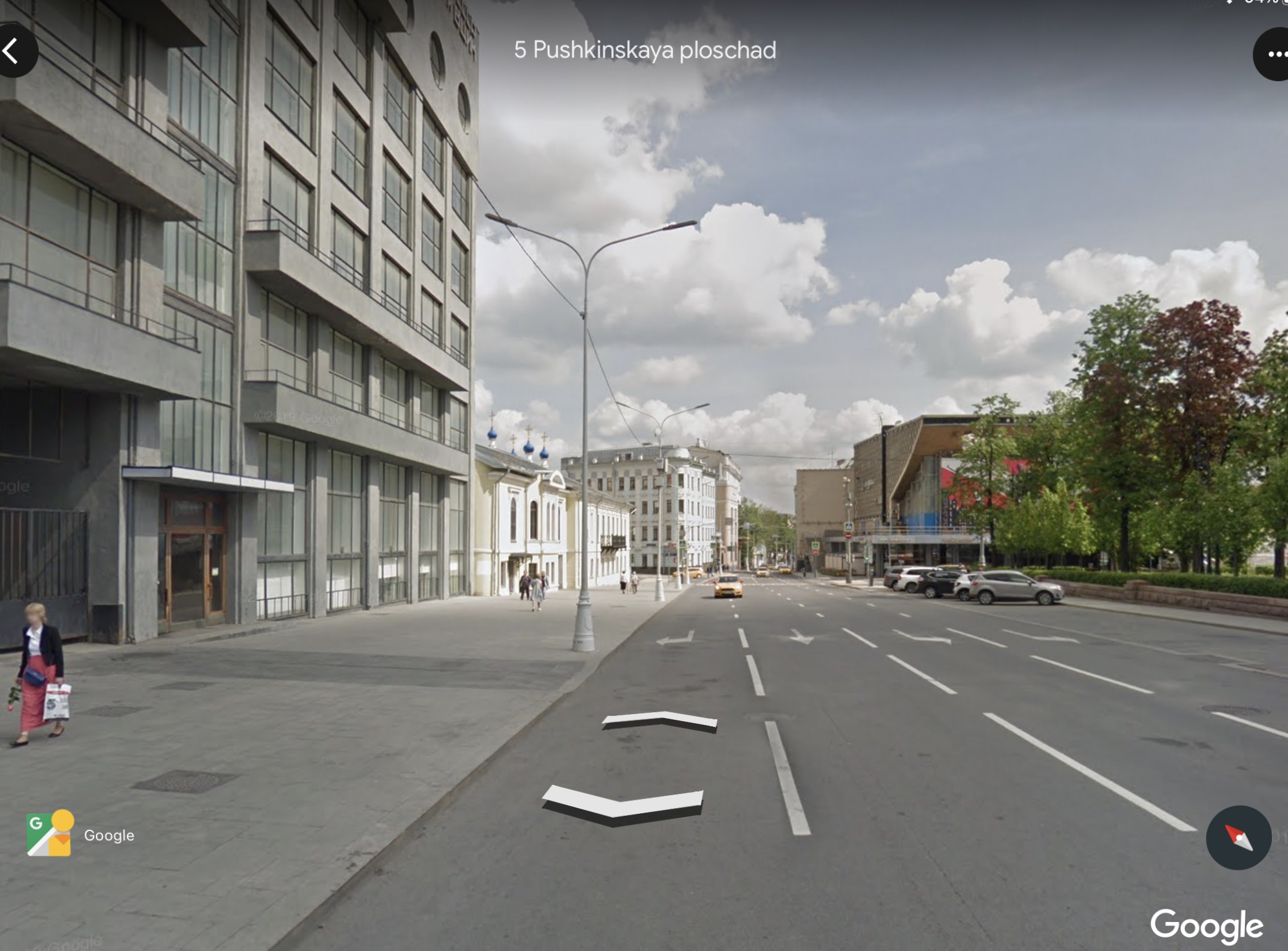 Current view of the re-named Pushkinskaya Square – restored Izvestia Building on the left and a much wider road following the Strastnoy Monastery demolition and re-planning of the square.
Current view of the re-named Pushkinskaya Square – restored Izvestia Building on the left and a much wider road following the Strastnoy Monastery demolition and re-planning of the square.
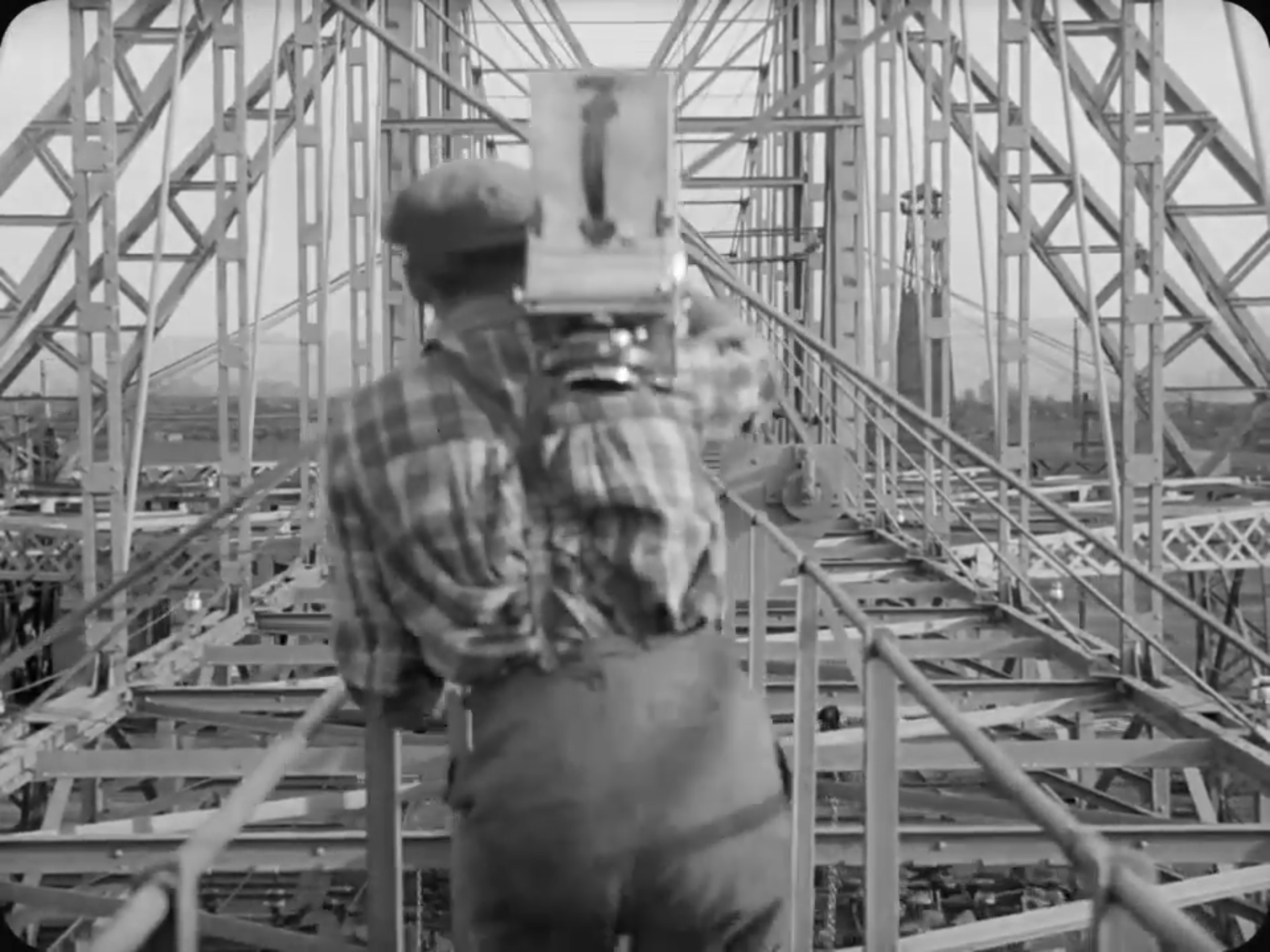 [00:17:40] MK with the Debrie Parvo Model K on a moving gantry over a steelworks(?) yard, Donbas or Kamianske. Not located.
[00:17:40] MK with the Debrie Parvo Model K on a moving gantry over a steelworks(?) yard, Donbas or Kamianske. Not located.
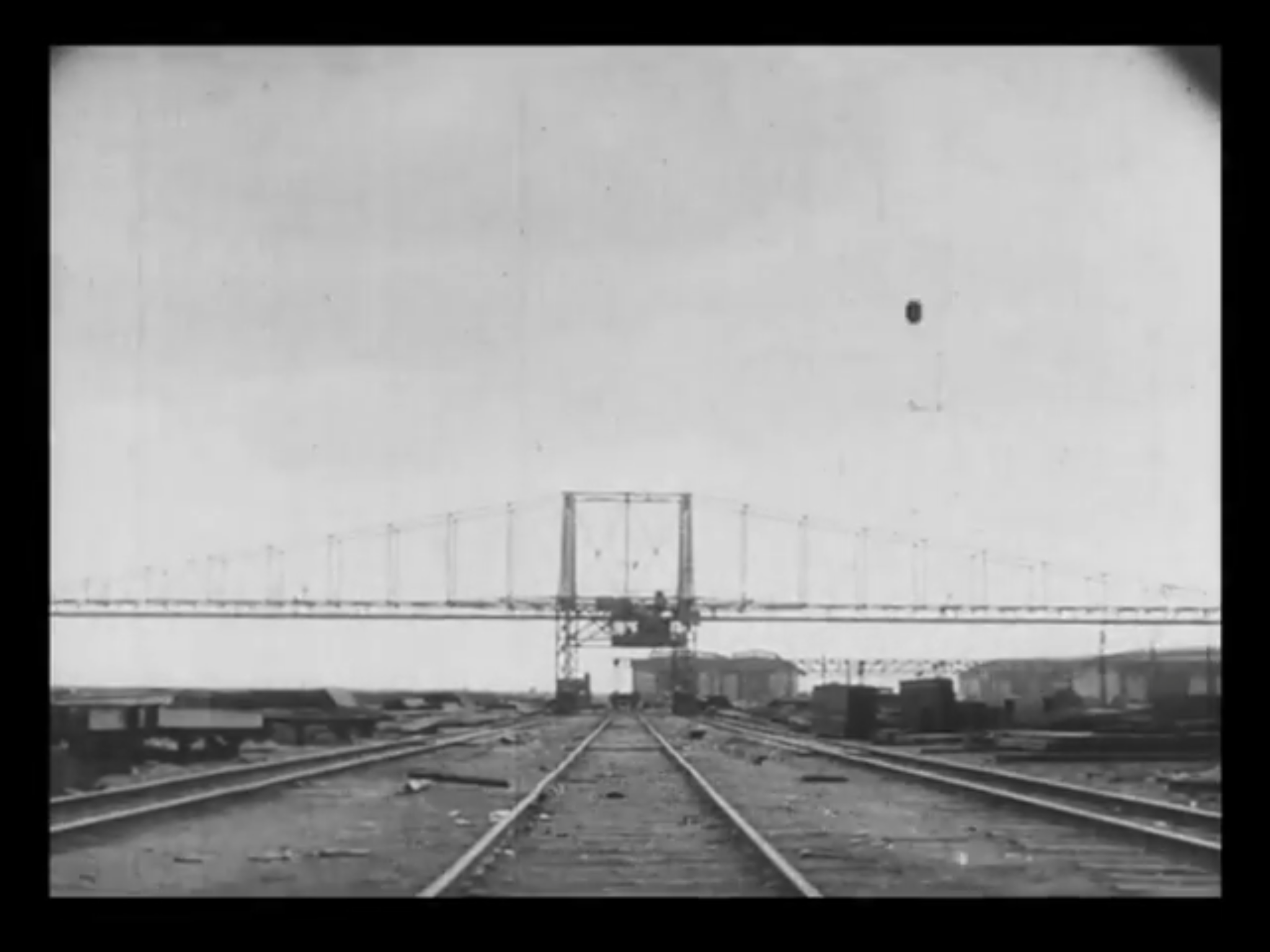 A still of the same huge gantry from ‘The Eleventh Year’
A still of the same huge gantry from ‘The Eleventh Year’
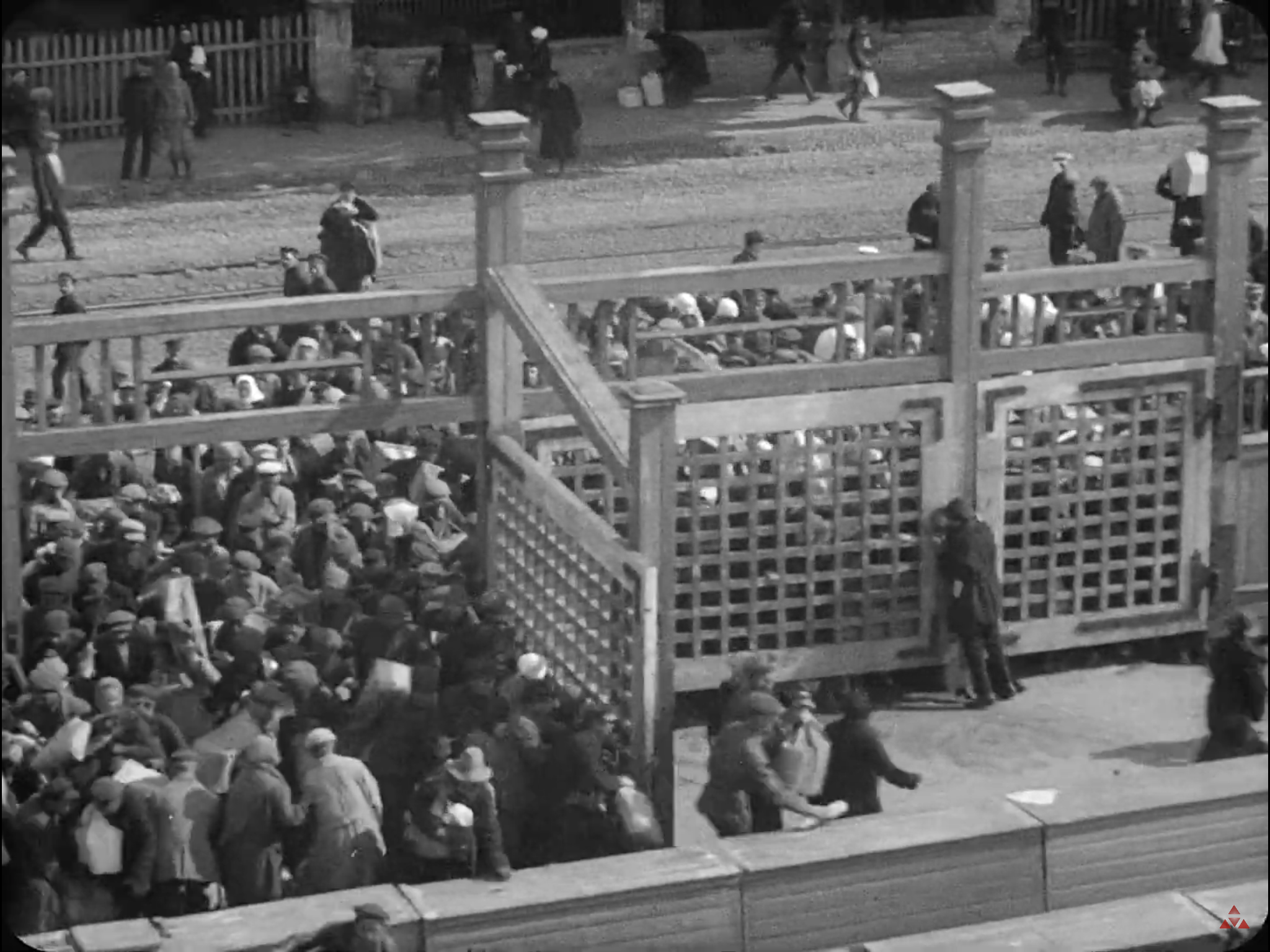 [00:17:56] Presumed entrance to Novo-Sukharevsky Market, Moscow (not verified).
[00:17:56] Presumed entrance to Novo-Sukharevsky Market, Moscow (not verified).
[00:18:12] Strastnaya Square, Moscow (same camera position as [00:17:36].
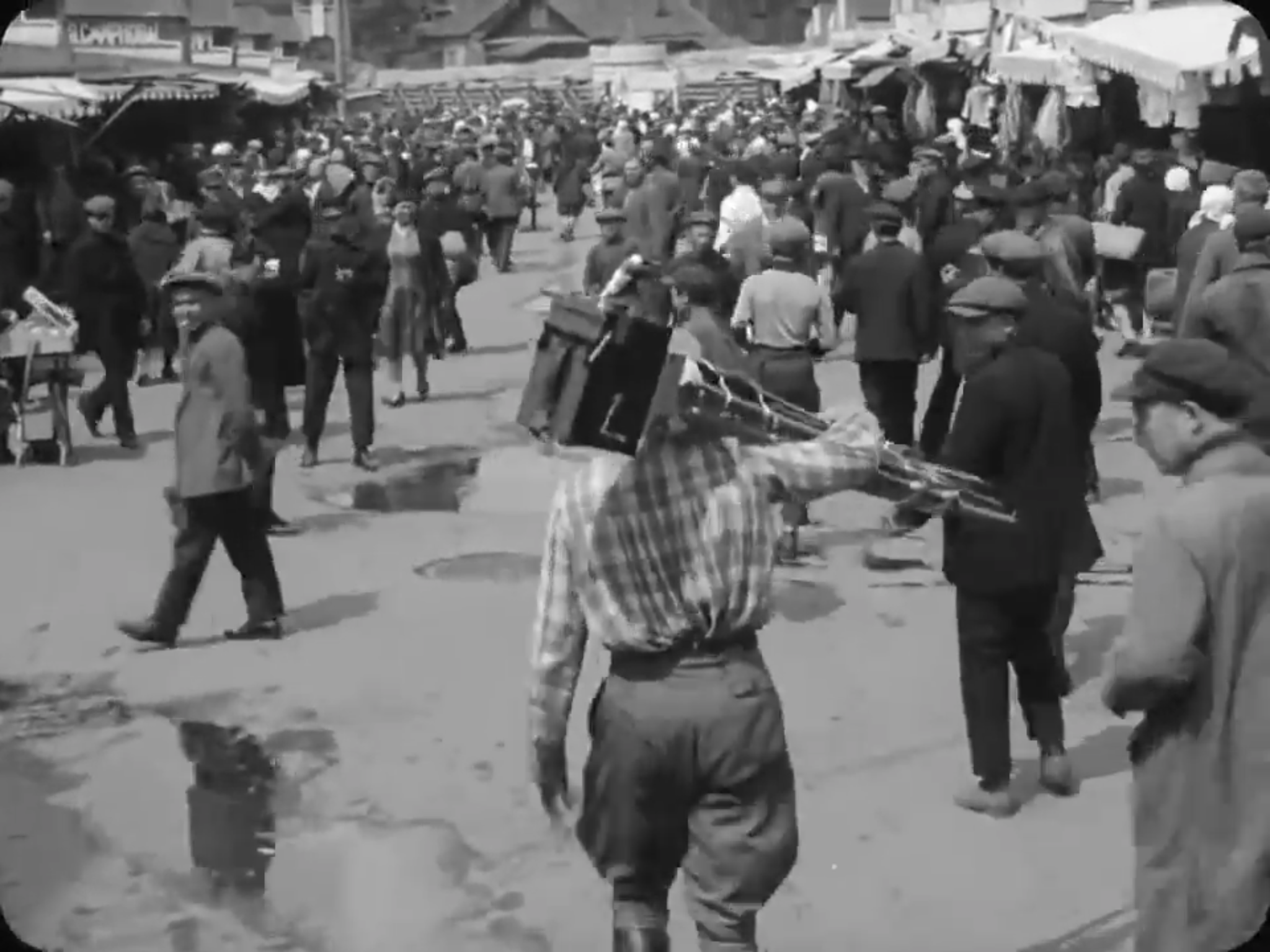 [00:18:17] MK (assumed – see [00:25:57]) and camera (Debrie Interview) walking through the main avenue of Novo-Sukharevsky Market, Moscow (see screenshot [00:06:12] for details of the Market).
[00:18:17] MK (assumed – see [00:25:57]) and camera (Debrie Interview) walking through the main avenue of Novo-Sukharevsky Market, Moscow (see screenshot [00:06:12] for details of the Market).
[00:18:34] Trams crossing Strastnaya Square, Moscow.
[00:18:41] Market view with rear of church (?) in background. Building not found.
 [00:18:48] View over Velyka Vasylkivska Street and Khreschatyk beyond (the main boulevard in the centre of Kyiv, at that time [1923-1937] known as Vorovsky Street). Independence Square (Maidan Nezalezhnosti) is at the top, just past the bend (then known as Soviet Square). Mykhailo Kalnytsky suggests the camera was located on the roof of No. 13 Velyka Vasylkivska (a five storey building) as it is on a turn in the road (see the contemporary map and GE screenshot). Mr Kalnytsky has also sent me an early 20thC postcard with a view taken from exactly the same spot (you can see the A of АПТЕКА (pharmacy) in the screenshot). A slightly lower viewpoint so perhaps taken from a window rather than the roof. You can also see the Ginzburg Skyscraper in the background!
[00:18:48] View over Velyka Vasylkivska Street and Khreschatyk beyond (the main boulevard in the centre of Kyiv, at that time [1923-1937] known as Vorovsky Street). Independence Square (Maidan Nezalezhnosti) is at the top, just past the bend (then known as Soviet Square). Mykhailo Kalnytsky suggests the camera was located on the roof of No. 13 Velyka Vasylkivska (a five storey building) as it is on a turn in the road (see the contemporary map and GE screenshot). Mr Kalnytsky has also sent me an early 20thC postcard with a view taken from exactly the same spot (you can see the A of АПТЕКА (pharmacy) in the screenshot). A slightly lower viewpoint so perhaps taken from a window rather than the roof. You can also see the Ginzburg Skyscraper in the background!
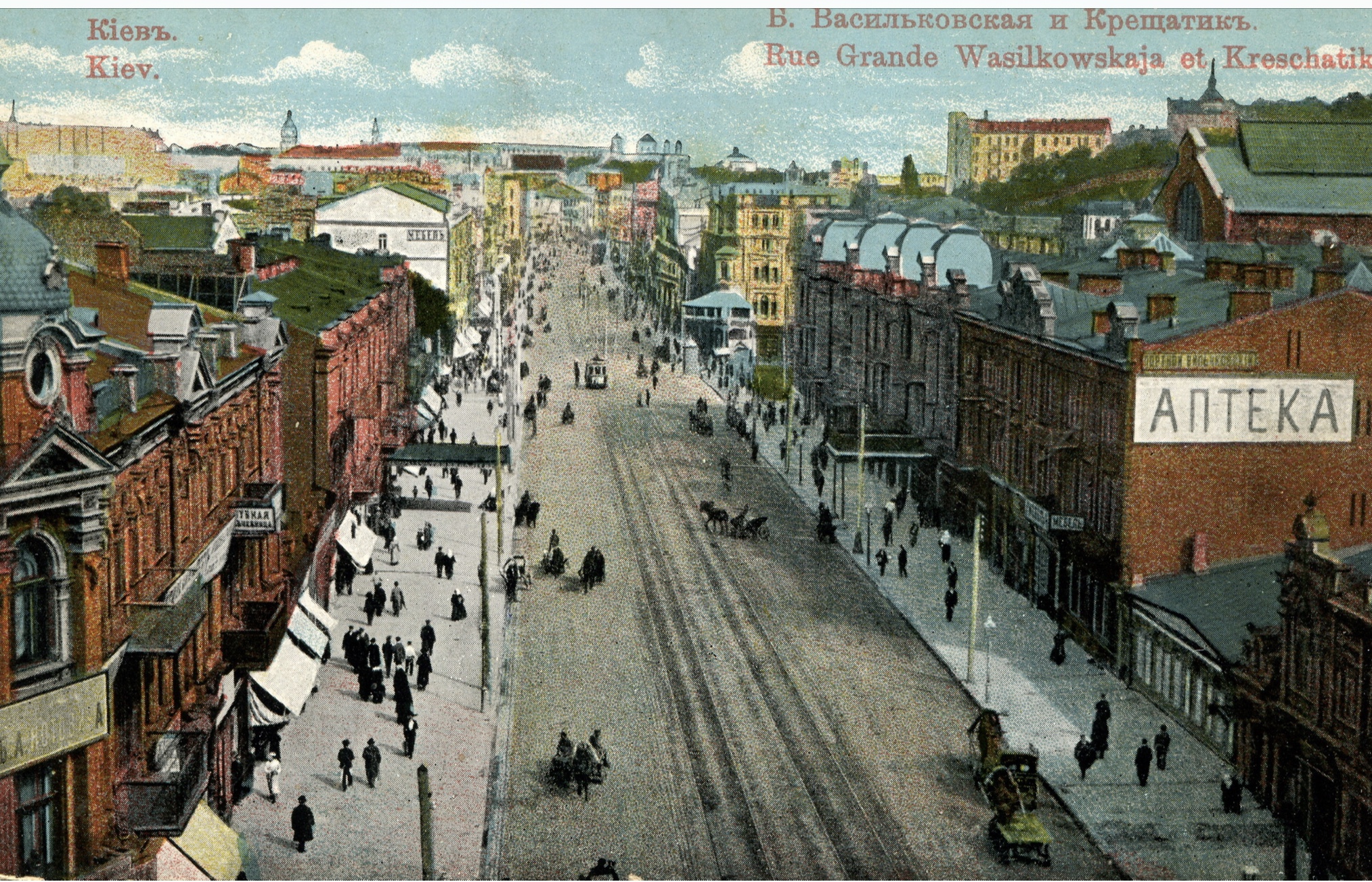
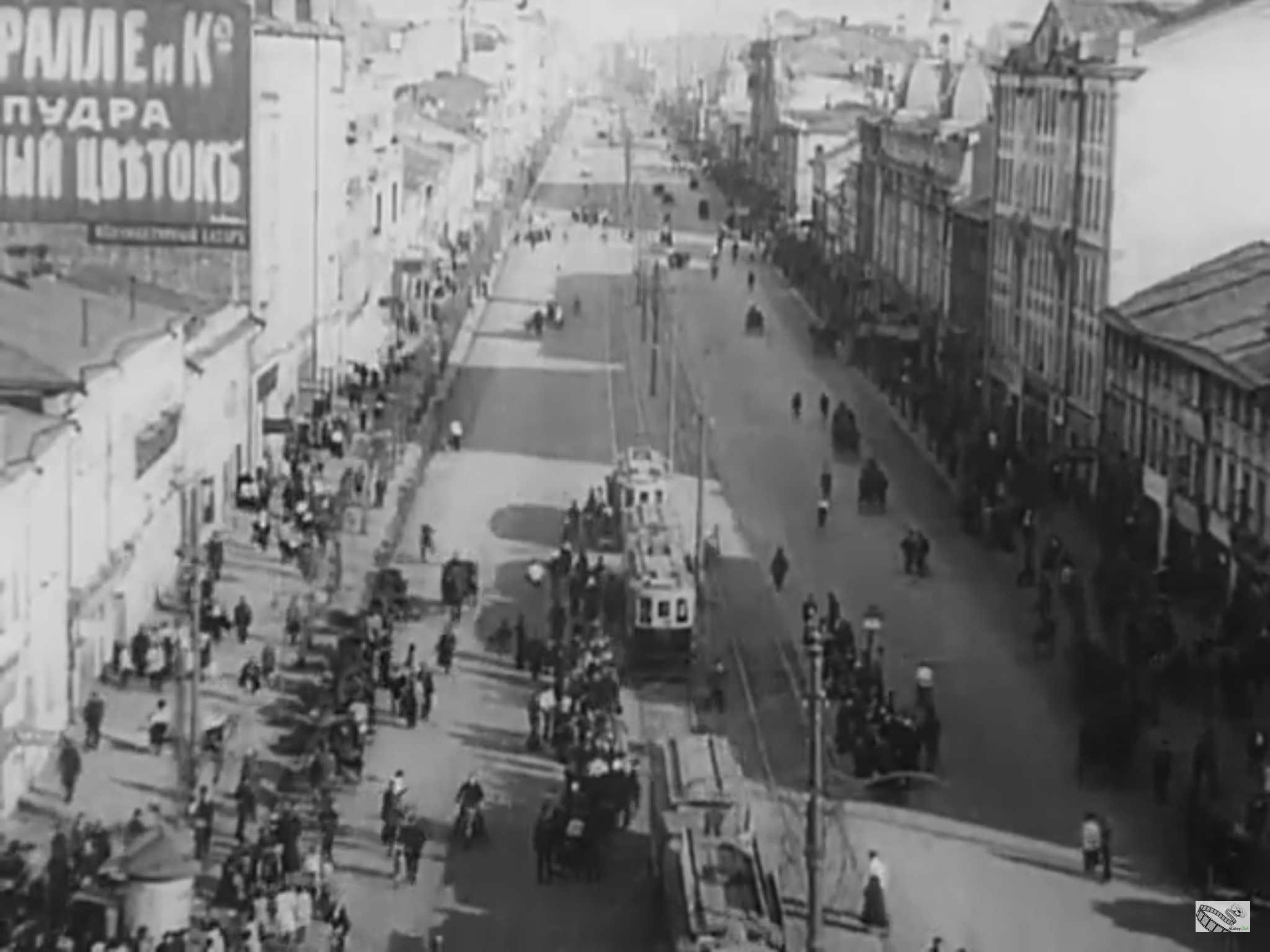 There is a very similar high level view at the beginning of Dziga Vertov’s 1926 film ‘Stride, Soviet!’ and in Mikhail Kaufman’s ‘Moscow (1927). Not Velyka Vasylkivska but Tverskaya-Yamskaya Street in Moscow shot from the top of the Triumphal Arch on Tverskaya Zastava Square.
There is a very similar high level view at the beginning of Dziga Vertov’s 1926 film ‘Stride, Soviet!’ and in Mikhail Kaufman’s ‘Moscow (1927). Not Velyka Vasylkivska but Tverskaya-Yamskaya Street in Moscow shot from the top of the Triumphal Arch on Tverskaya Zastava Square.
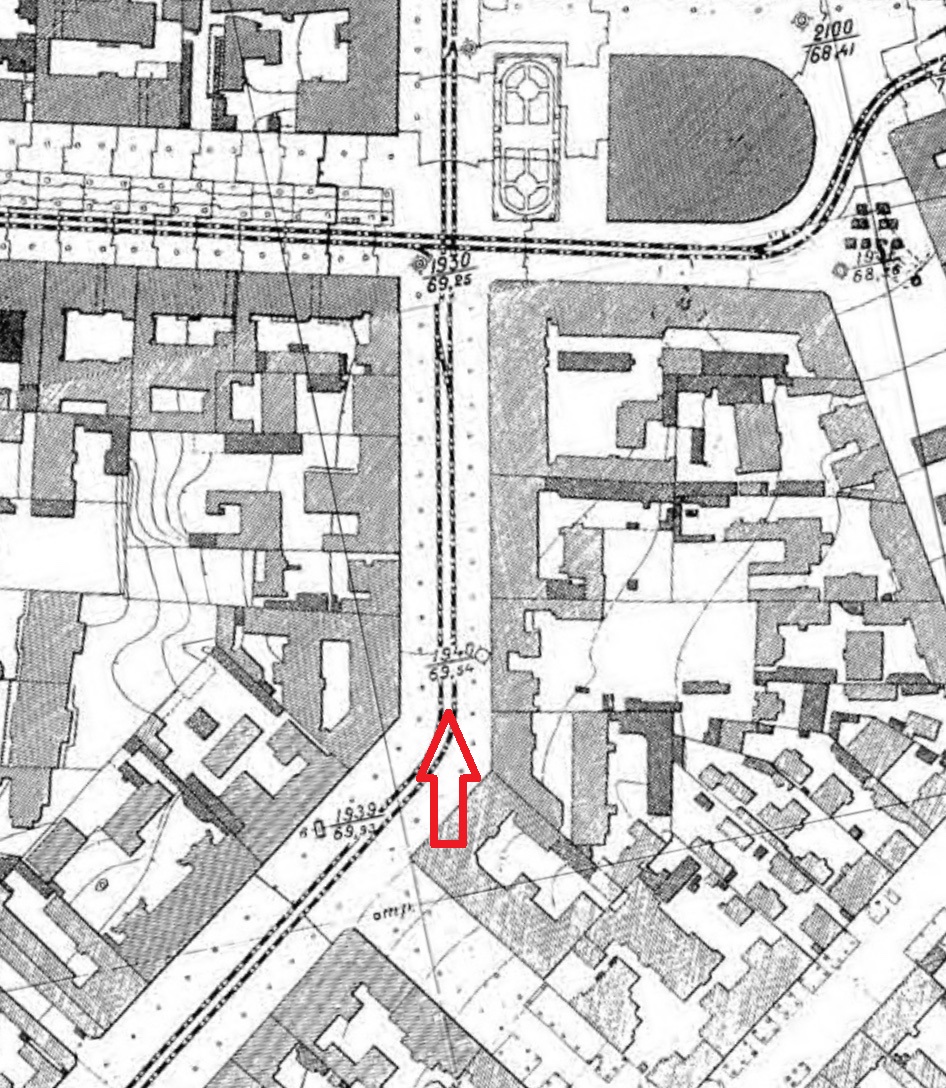 Arrow showing the viewpoint of the camera on the roof of No. 13 Velyka Vasylkivska
Arrow showing the viewpoint of the camera on the roof of No. 13 Velyka Vasylkivska
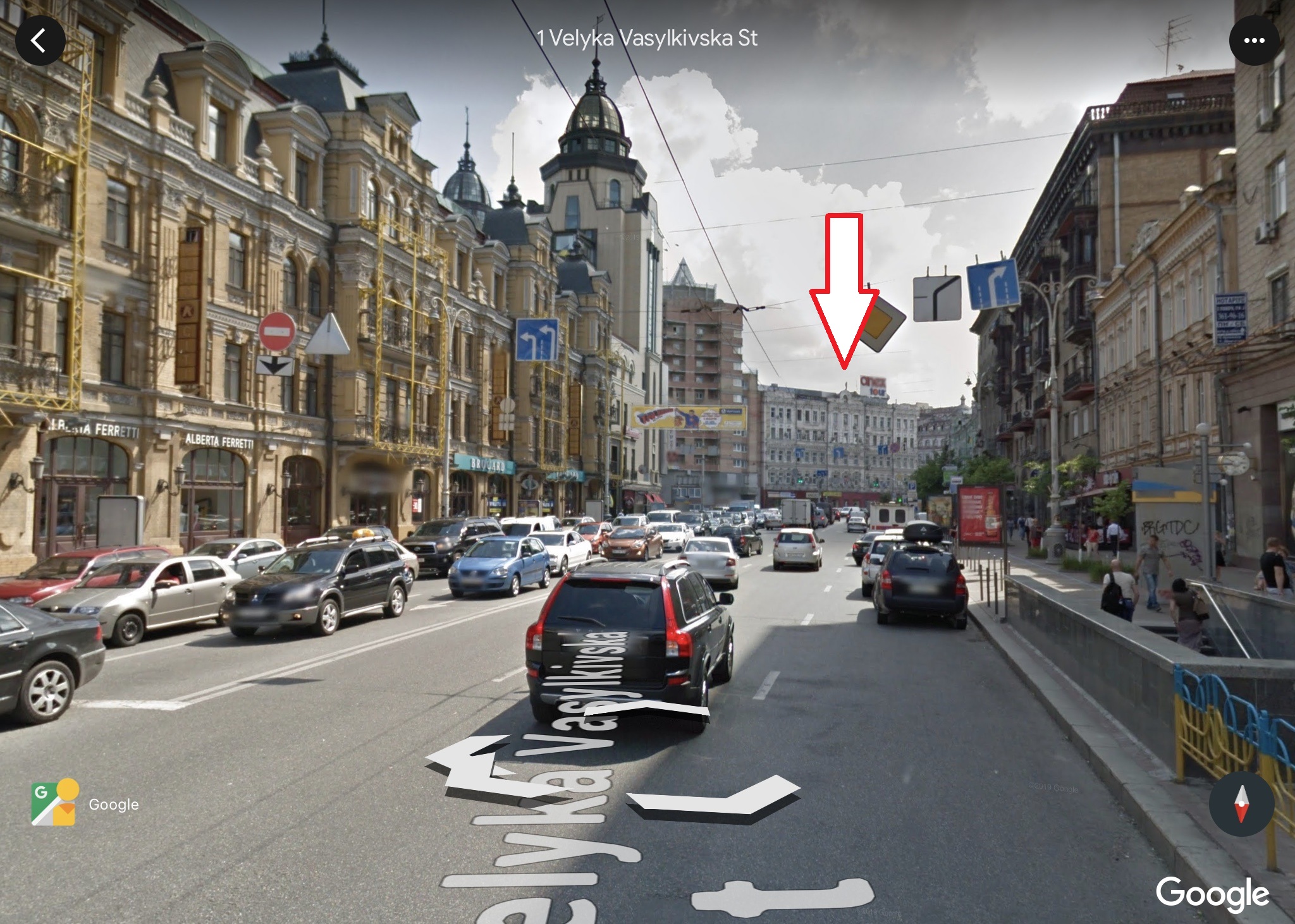 Current view of Velyka Vasylkivska looking south with the suggested location of the camera. The distinctive building on the left and right below is recognisable from the screenshot and postcard. [Google Earth]
Current view of Velyka Vasylkivska looking south with the suggested location of the camera. The distinctive building on the left and right below is recognisable from the screenshot and postcard. [Google Earth]
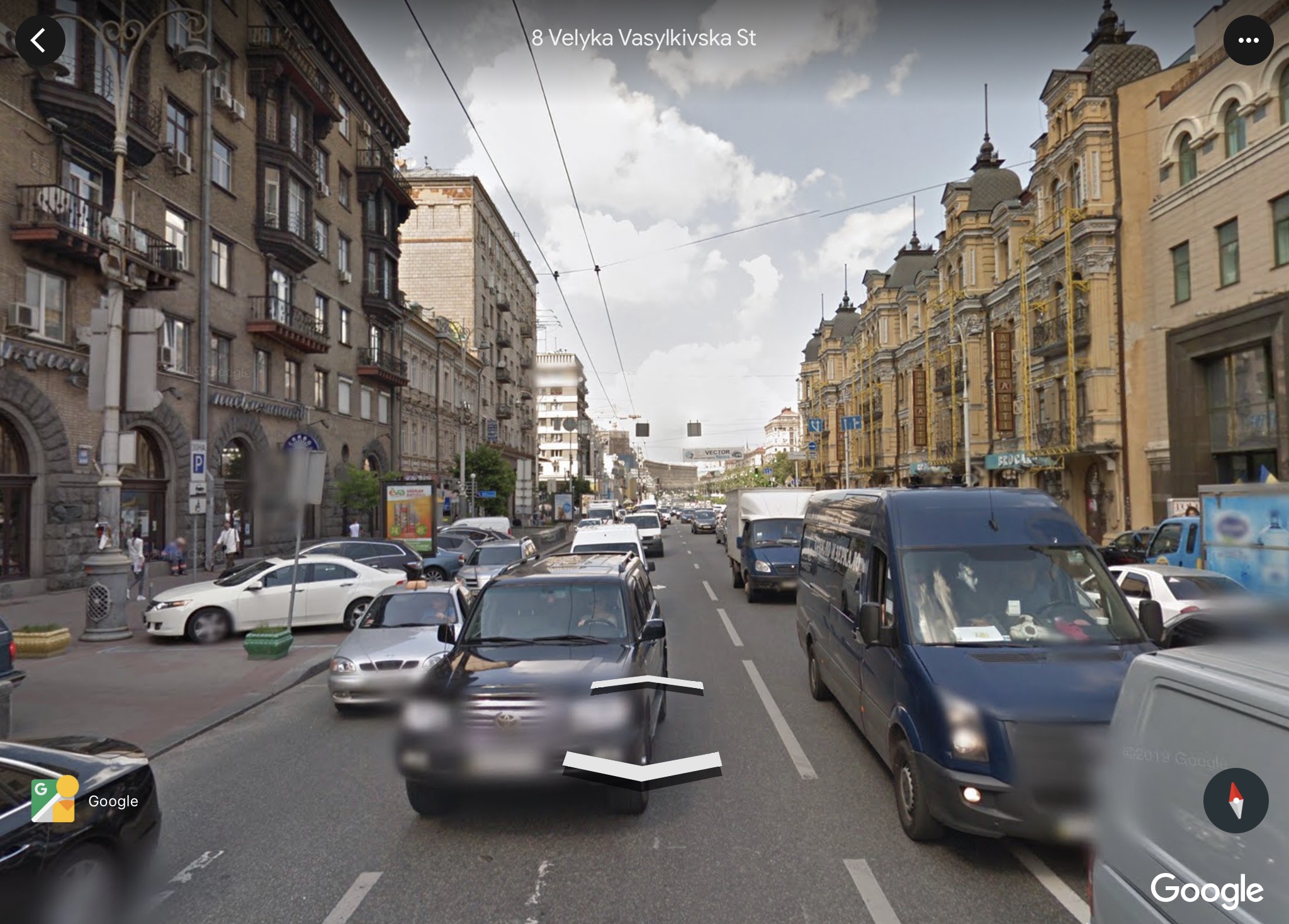 Current view of the street looking north; Khreschatyk beyond was mostly rebuilt and widened after war damage (part of the centre of the city was blown up by the retreating Red Army in 1941). [Google Earth]
Current view of the street looking north; Khreschatyk beyond was mostly rebuilt and widened after war damage (part of the centre of the city was blown up by the retreating Red Army in 1941). [Google Earth]
[00:18:58] [00:19:06] Moscow shop seen in screenshot [00:06:57] opening shutters.
[00:19:13] Kuznetsky Most.
[00:19:17] Travel or shipping agent’s window advertising passage from Odesa to Jaffa on the ‘Lenin’. Presumed Odesa, but exact location not found.
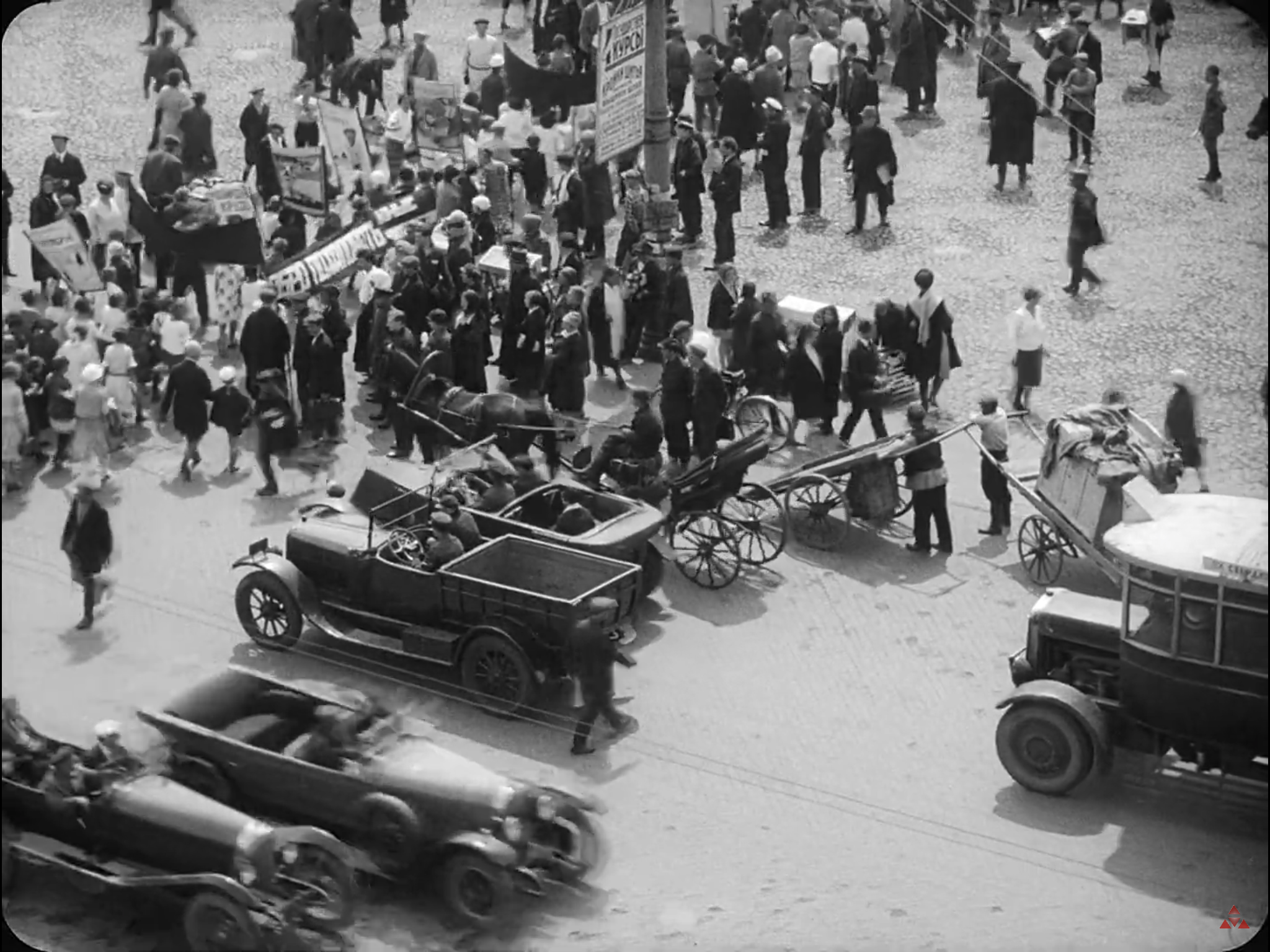 [00:19:19] I am fairly certain that this is Strastnaya Square. The only clue is the sign on the post and the cables at top right. Compare with the sign, post, and cables in screenshot [00:15:10] below. The smooth pathways between the cobbles look similar as well.
[00:19:19] I am fairly certain that this is Strastnaya Square. The only clue is the sign on the post and the cables at top right. Compare with the sign, post, and cables in screenshot [00:15:10] below. The smooth pathways between the cobbles look similar as well.
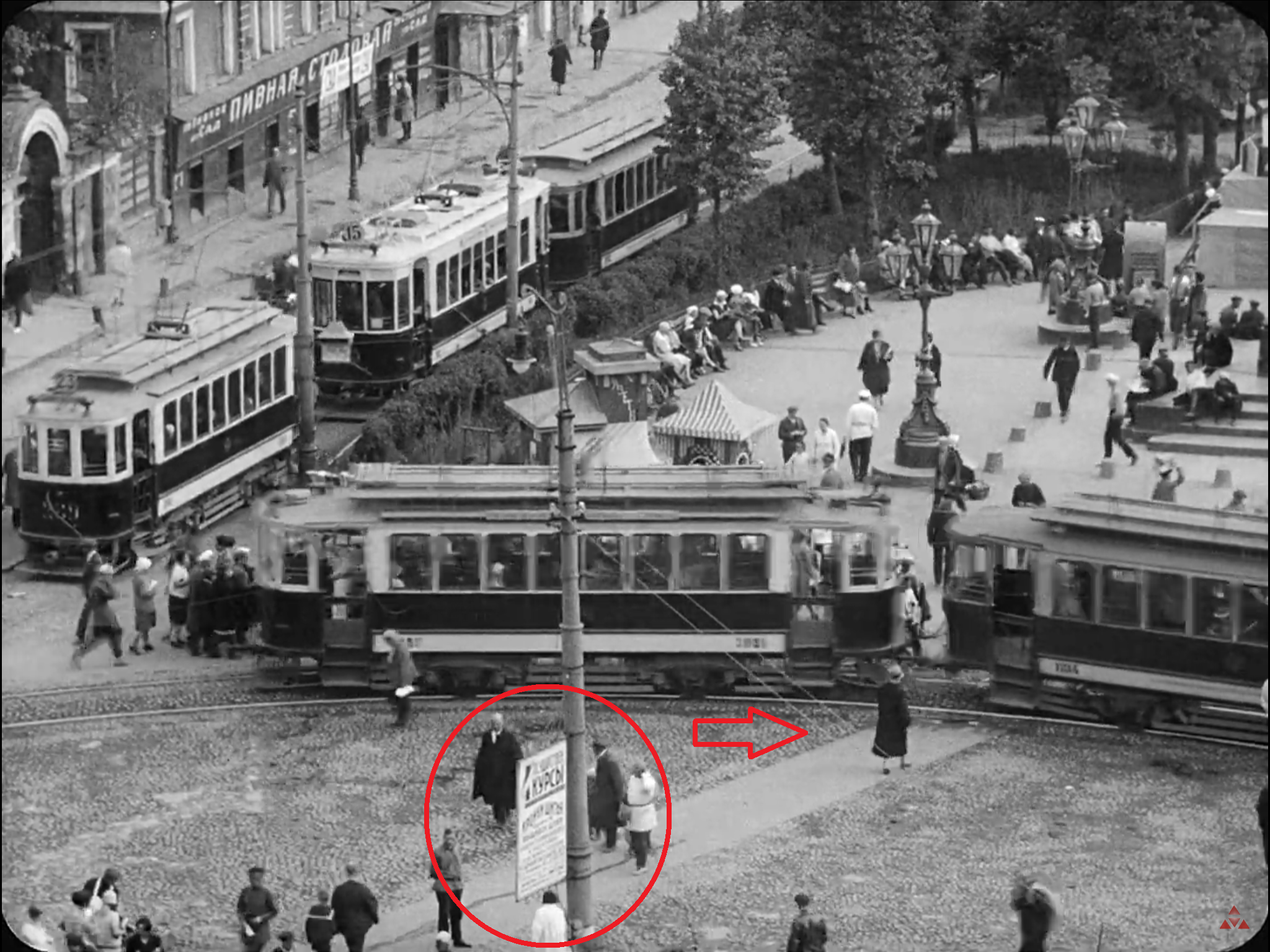
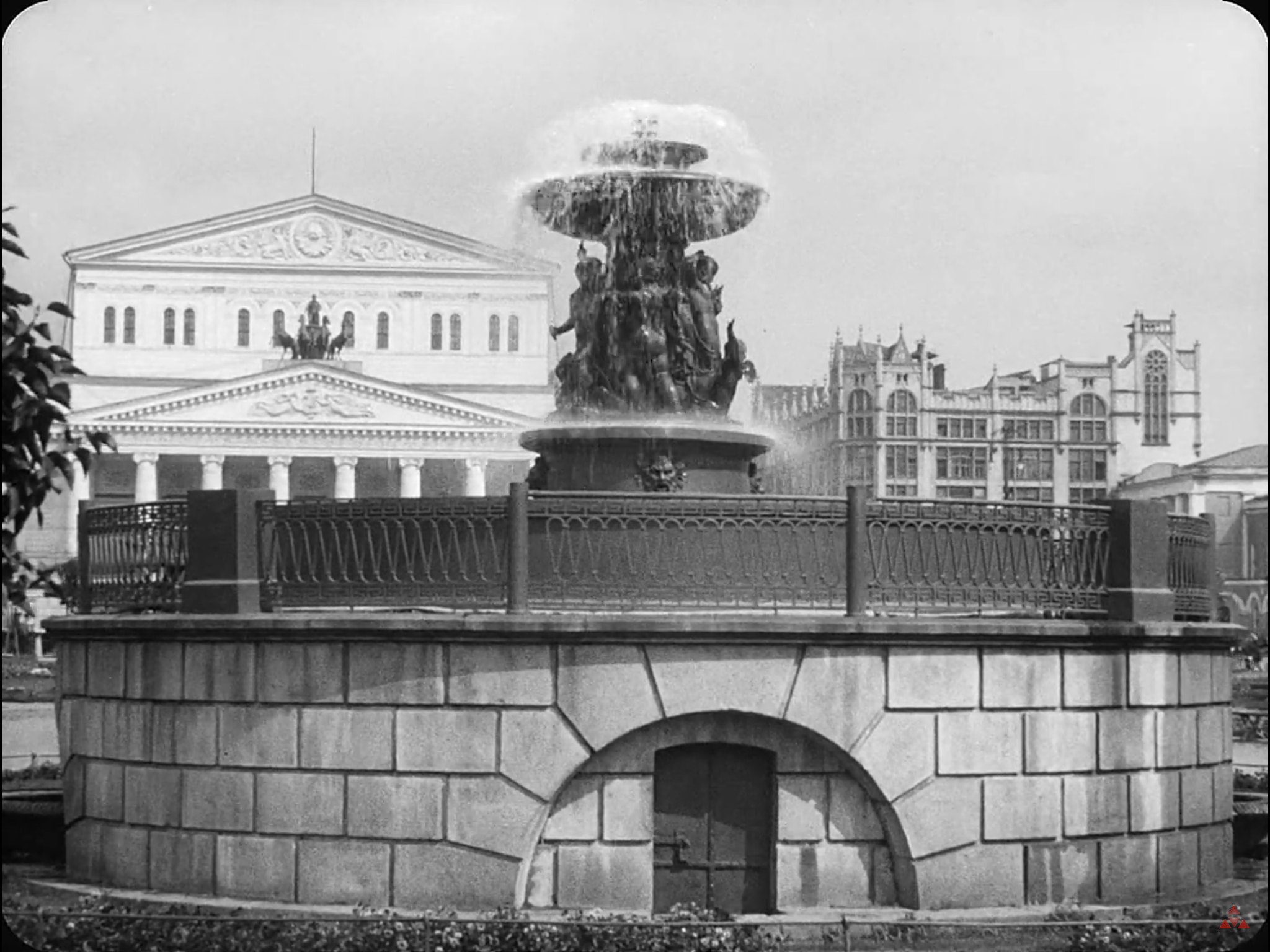 [00:19:31] Petrovsky Fountain on Revolution Square, the Bolshoi Theatre in the background. The building on the rhs is the Mostorg (now the TsUM) department store, a 1908 Gothic Revival building by the architect Roman Klein (see screenshot [00:14:50] for details).
[00:19:31] Petrovsky Fountain on Revolution Square, the Bolshoi Theatre in the background. The building on the rhs is the Mostorg (now the TsUM) department store, a 1908 Gothic Revival building by the architect Roman Klein (see screenshot [00:14:50] for details).
[00:19:45] Sewing machine shop (location not found).
[00:19:52] Strastnaya Square reflected in the glass of a revolving door (‘The Awakening of a Woman’ film poster, cameraman and camera, Strastnoy Monastery and dome of St. Demetrius Church visible).
[00:20:02] A shop window with a ‘cyclist’ – the reflected building has not been located.
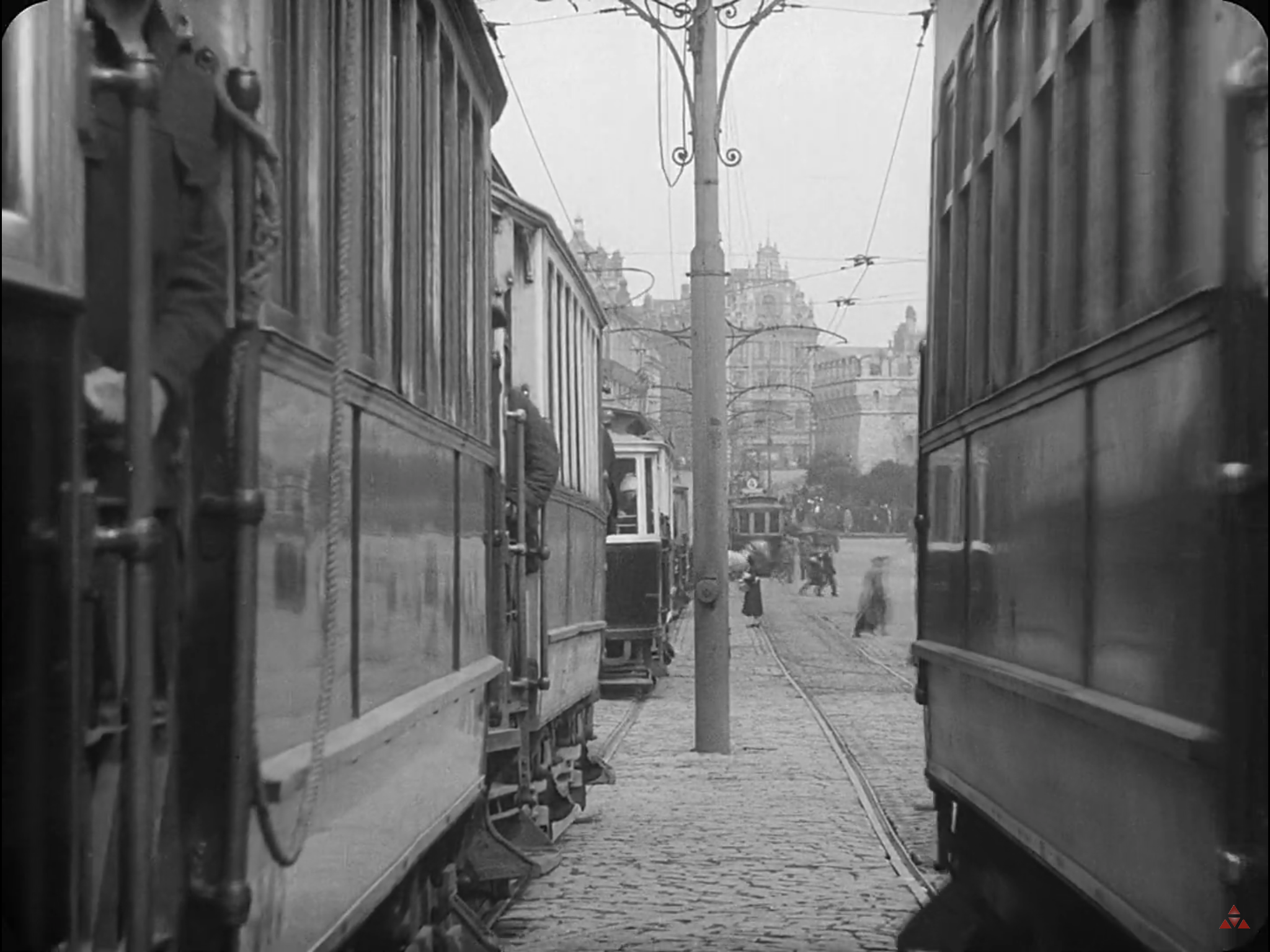 [00:20:07] Teatral’nyy Proyezd (Theatre Passage), Moscow.
[00:20:07] Teatral’nyy Proyezd (Theatre Passage), Moscow.
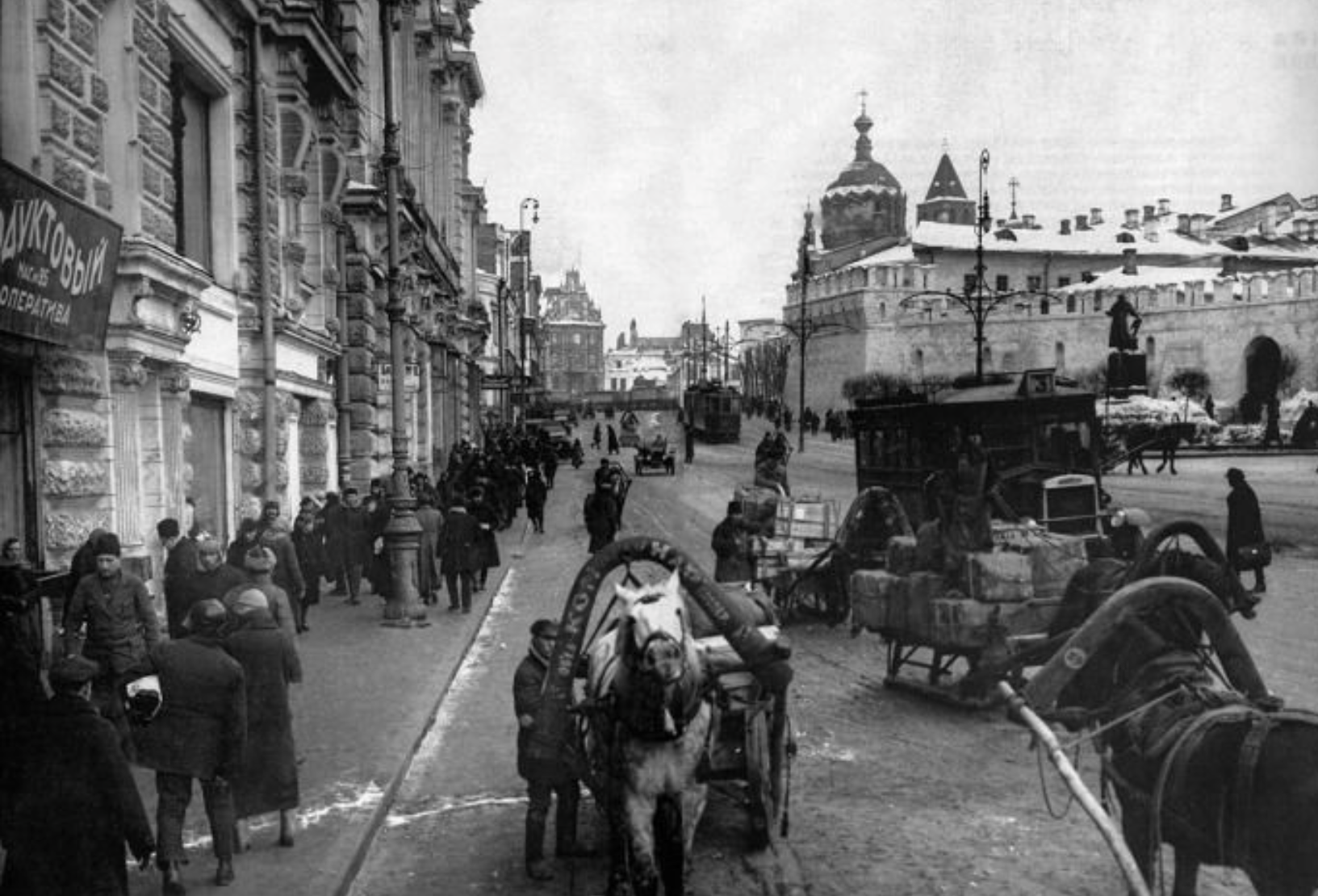 A contemporary view of the street. Part of the Kitay-gorod mediaeval wall on the right with the dome of St Panteleimon Chapel above. Note the sledge transport on the rhs! Theatre Passage is one of the main streets in the historic centre of Moscow connecting Theatre Square with Lubyanka (seen at the top of the photograph).
A contemporary view of the street. Part of the Kitay-gorod mediaeval wall on the right with the dome of St Panteleimon Chapel above. Note the sledge transport on the rhs! Theatre Passage is one of the main streets in the historic centre of Moscow connecting Theatre Square with Lubyanka (seen at the top of the photograph).
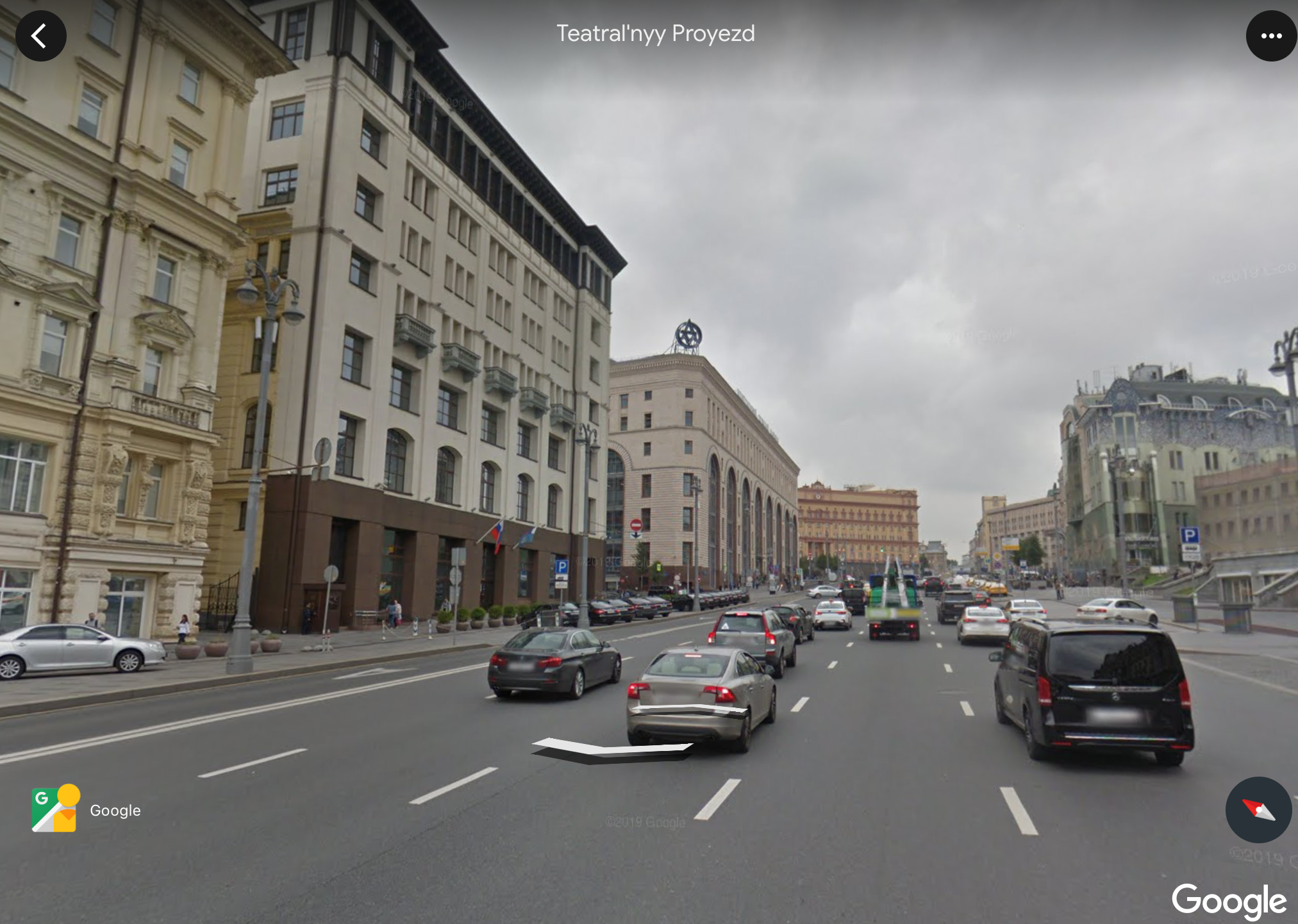 A similar view but looking very different now, this historic street was totally obliterated by Stalinist planners. The notorious Lubyanka KGB HQ and prison is at the end of the avenue. [Google Earth]
A similar view but looking very different now, this historic street was totally obliterated by Stalinist planners. The notorious Lubyanka KGB HQ and prison is at the end of the avenue. [Google Earth]
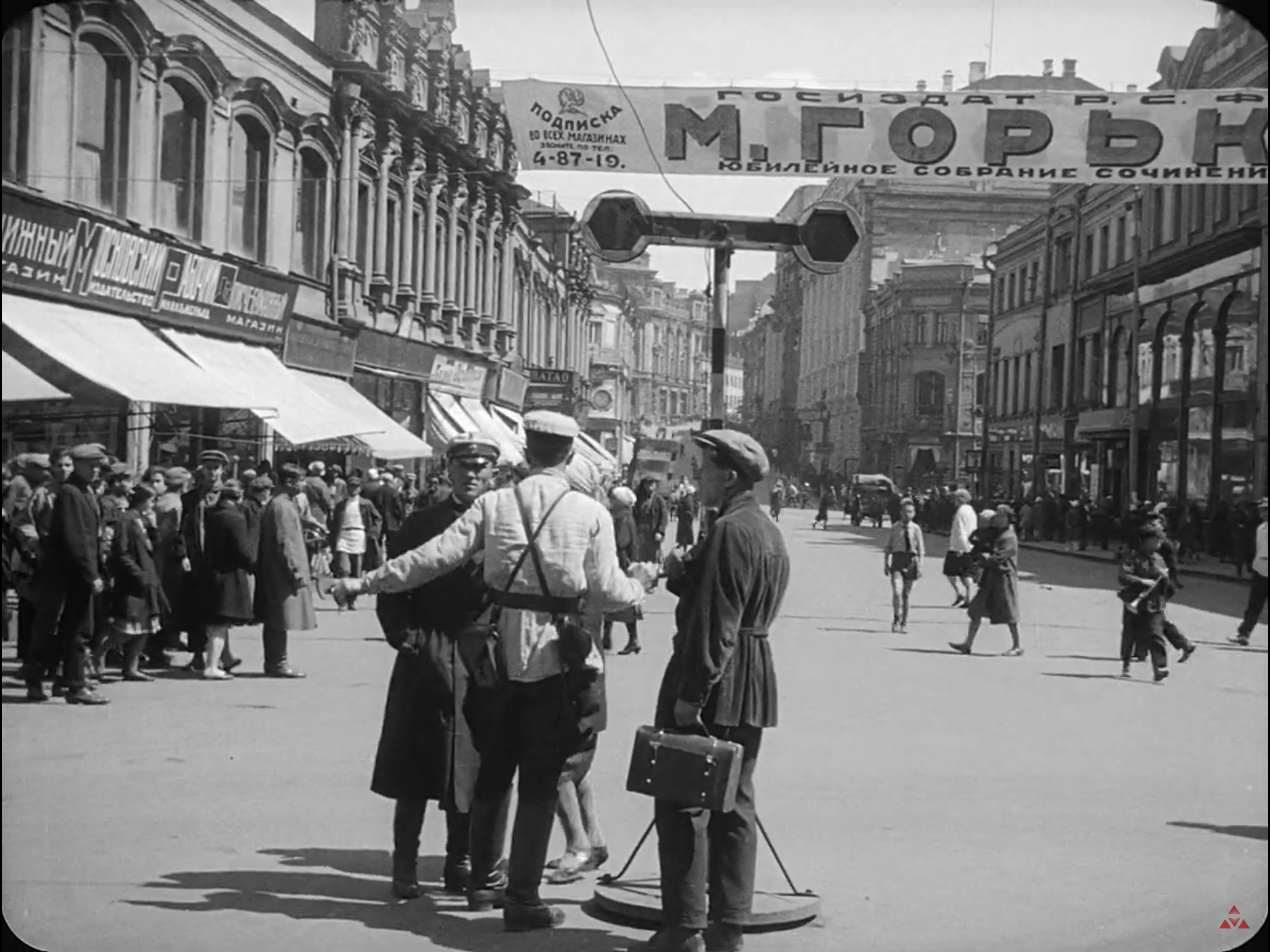 [00:20:16] Kuznetsky Most, Moscow
[00:20:16] Kuznetsky Most, Moscow
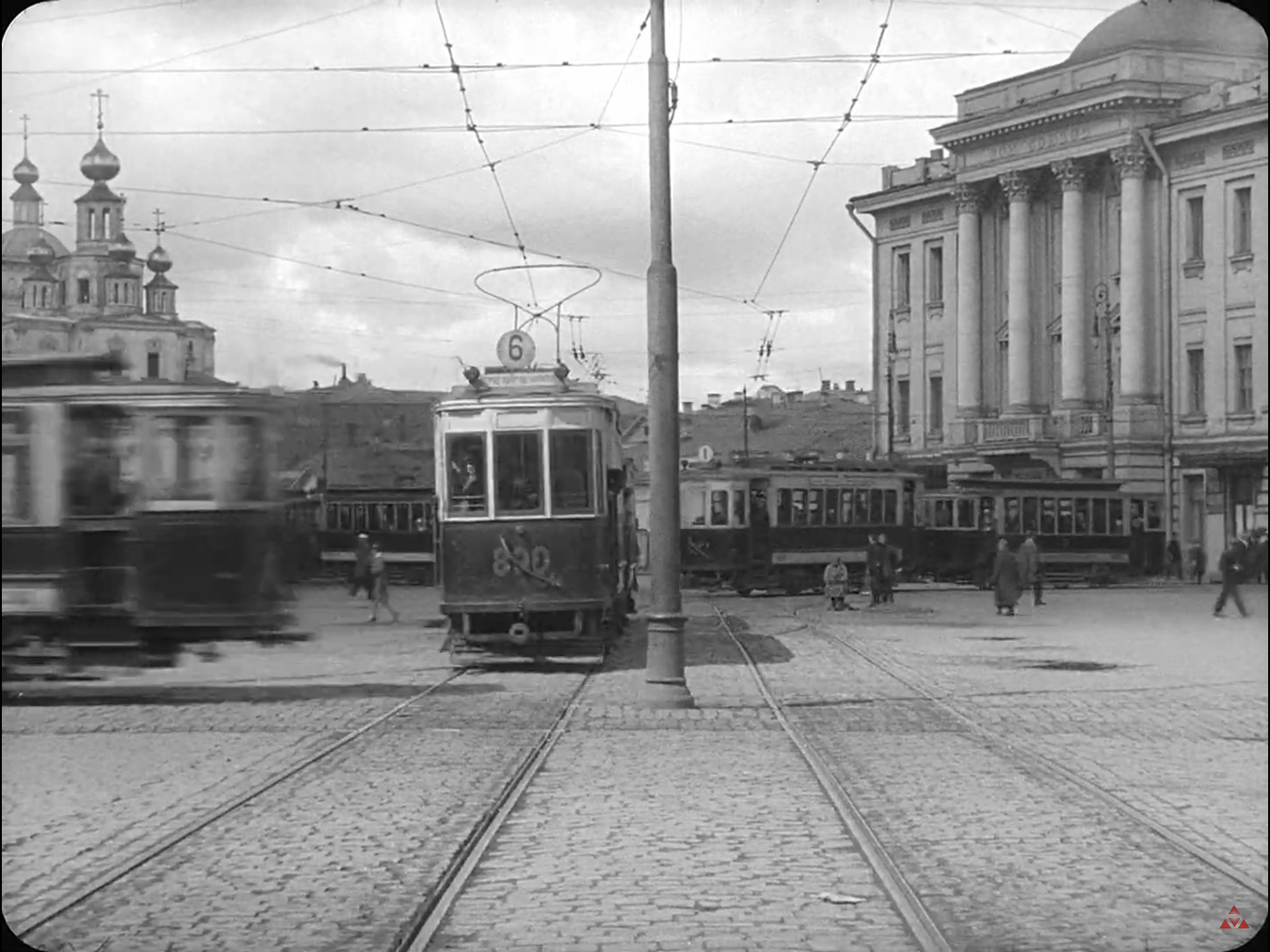 [00:20:31] Okhotny Ryad, Moscow. The end facade of Dom Soyuzov (House of the Unions) is on the rhs. The beautiful 17thC church of St Paraskeva on the lhs was destroyed (in June 1928) just after it was filmed.
[00:20:31] Okhotny Ryad, Moscow. The end facade of Dom Soyuzov (House of the Unions) is on the rhs. The beautiful 17thC church of St Paraskeva on the lhs was destroyed (in June 1928) just after it was filmed.
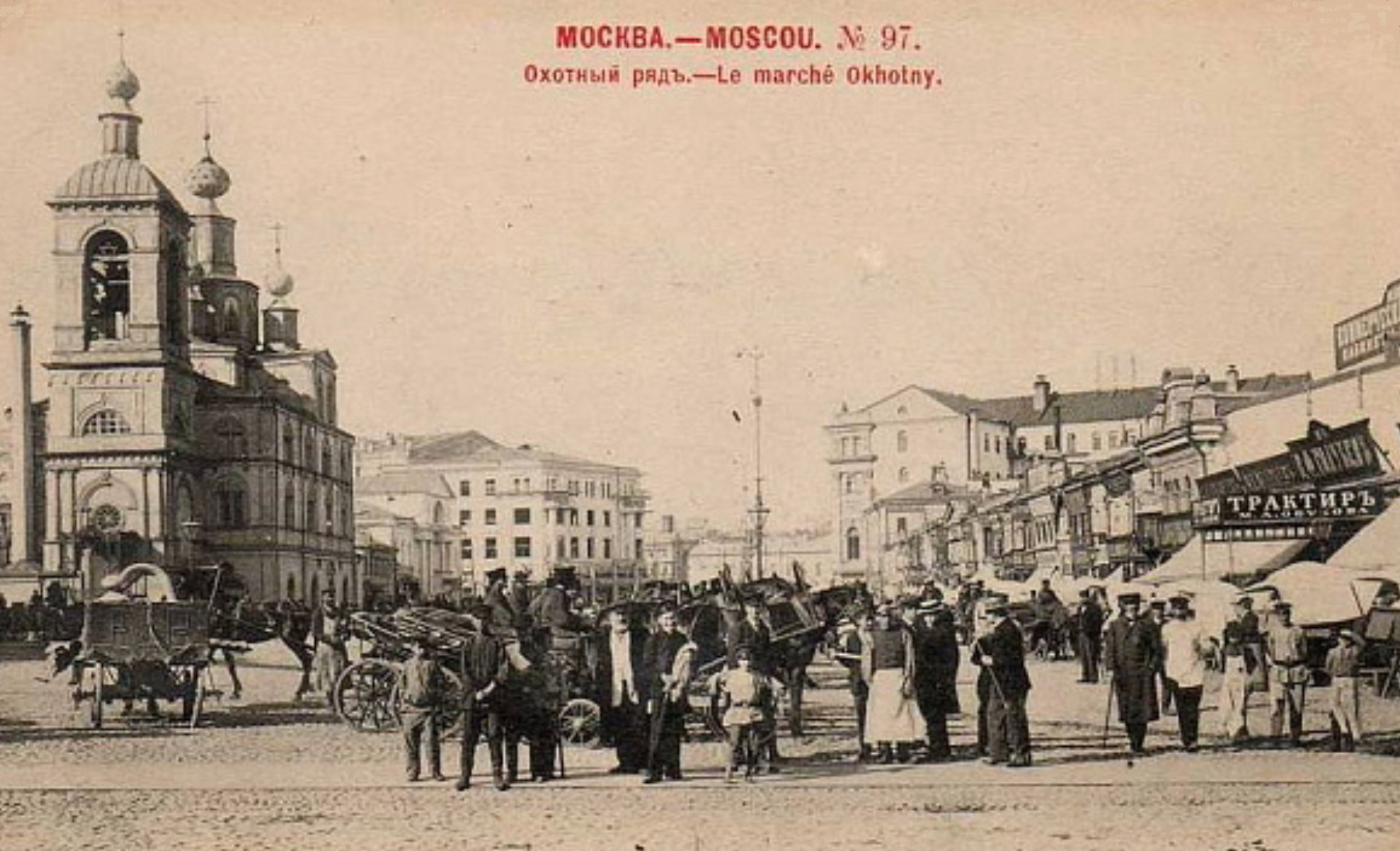 19thC postcard of Okhotny Ryad and St Paraskeva Church.
19thC postcard of Okhotny Ryad and St Paraskeva Church.
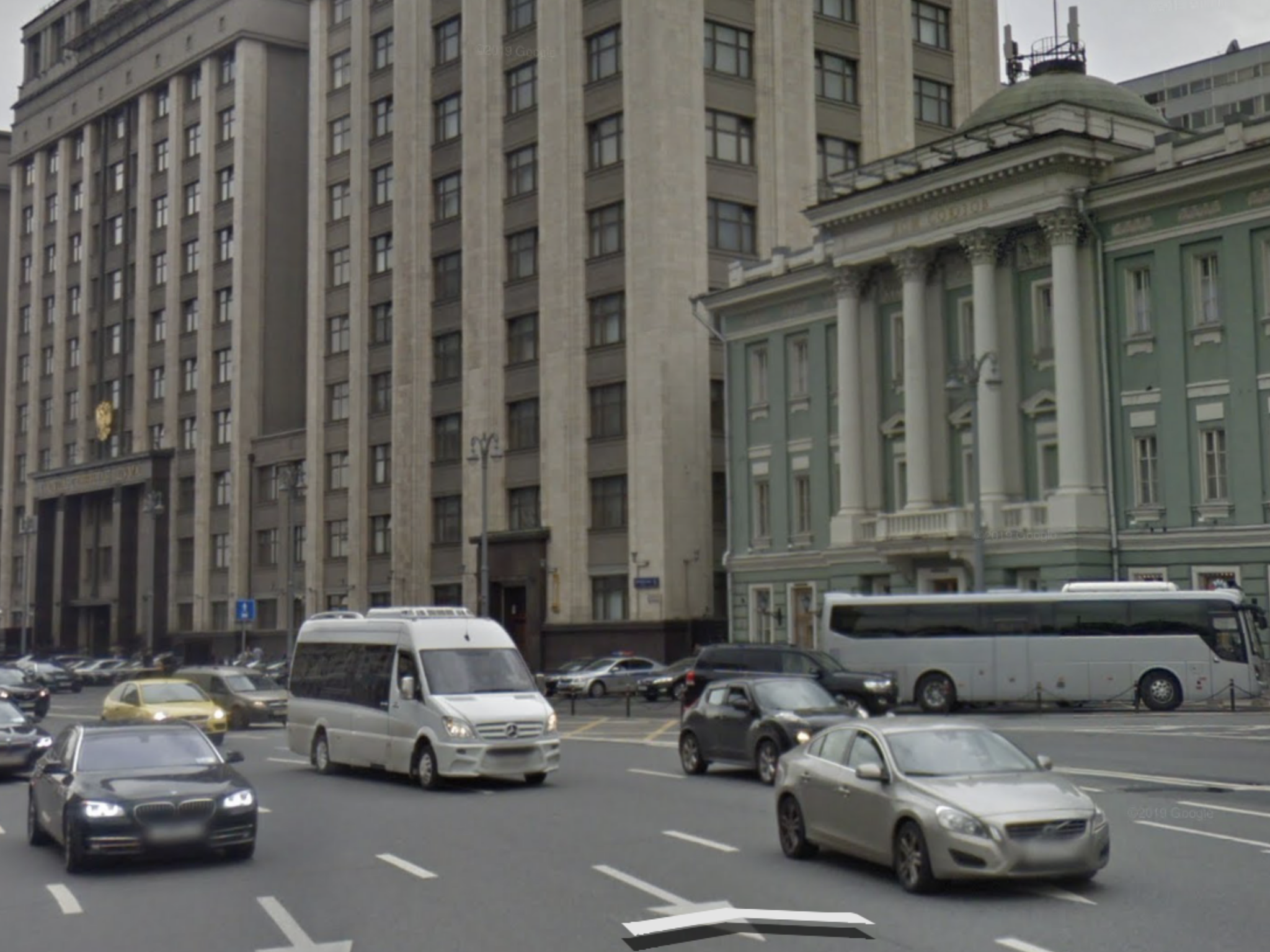 Current appearance of the street from the same viewpoint as the screenshot! [Google Earth]. Okhotny Ryad is the continuation of Teatral’nyy Proyezd (Theatre Passage) from Theatre Square to the bottom of Tverskaya and the top of Red Square. Famous for its market, restaurants, speciality shops and old hotels before the Revolution the whole area was devastated by Stalin’s re-planning of central Moscow in the 1930s.
Current appearance of the street from the same viewpoint as the screenshot! [Google Earth]. Okhotny Ryad is the continuation of Teatral’nyy Proyezd (Theatre Passage) from Theatre Square to the bottom of Tverskaya and the top of Red Square. Famous for its market, restaurants, speciality shops and old hotels before the Revolution the whole area was devastated by Stalin’s re-planning of central Moscow in the 1930s.
One of the major historic buildings in Moscow, Dom Soyuzov is a huge 18thC princely mansion that became the Assembly of the Russian Nobility in 1784. Lenin, Stalin, Brezhnev and other Soviet leaders all lay in state here, and the building became the centre of the country’s social, political and cultural life holding concerts, chess matches, conferences, and Party Congresses. It was also the setting for some of the notorious Stalin show trials in the late 1930s.
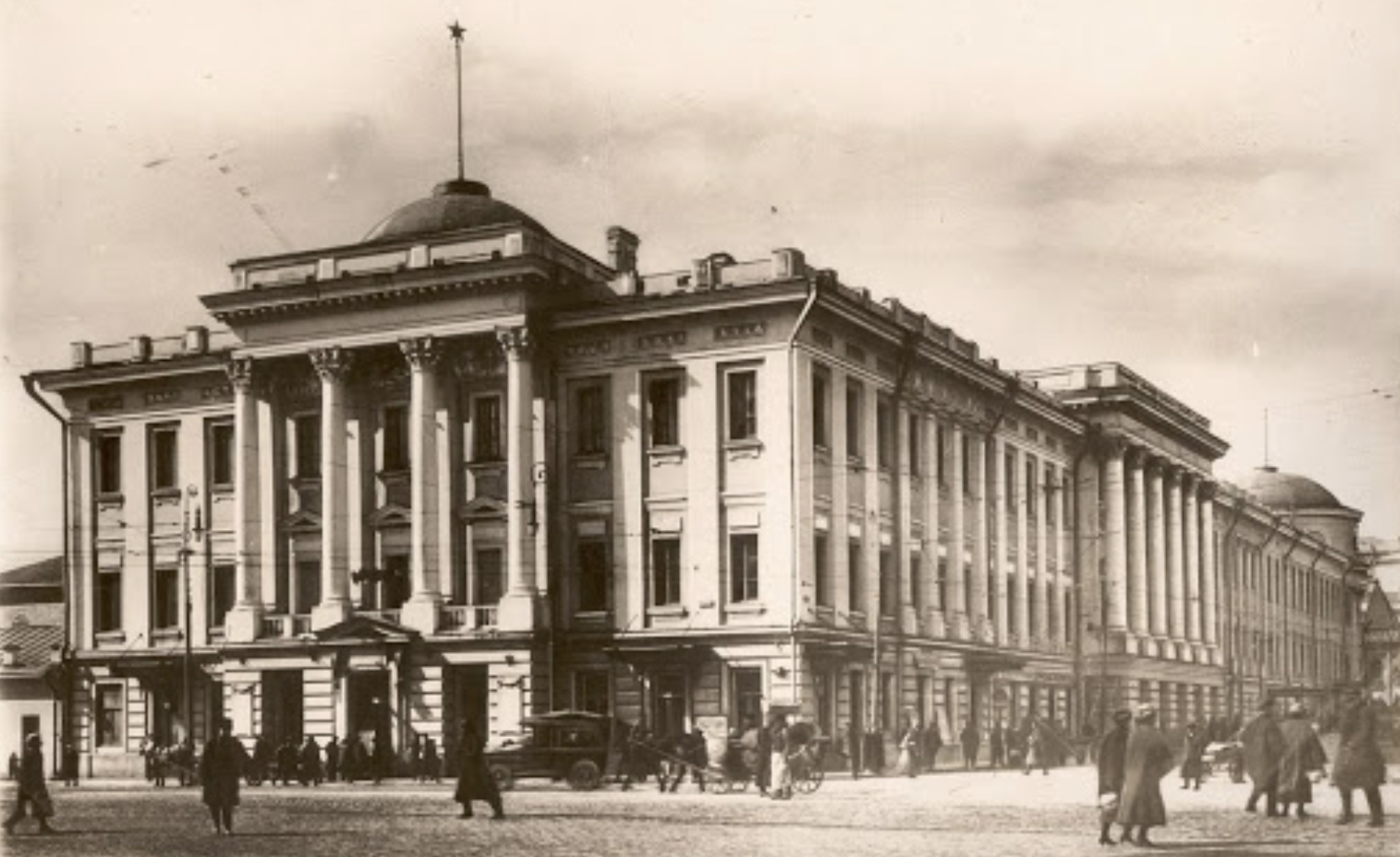 Contemporary photograph of Dom Soyuzov.
Contemporary photograph of Dom Soyuzov.
[00:20:43] Split screen of Petrovky Street approaching the junction with Kuznetsky Most.
[00:20:52] Teatral’nny Proyezd , Moscow.
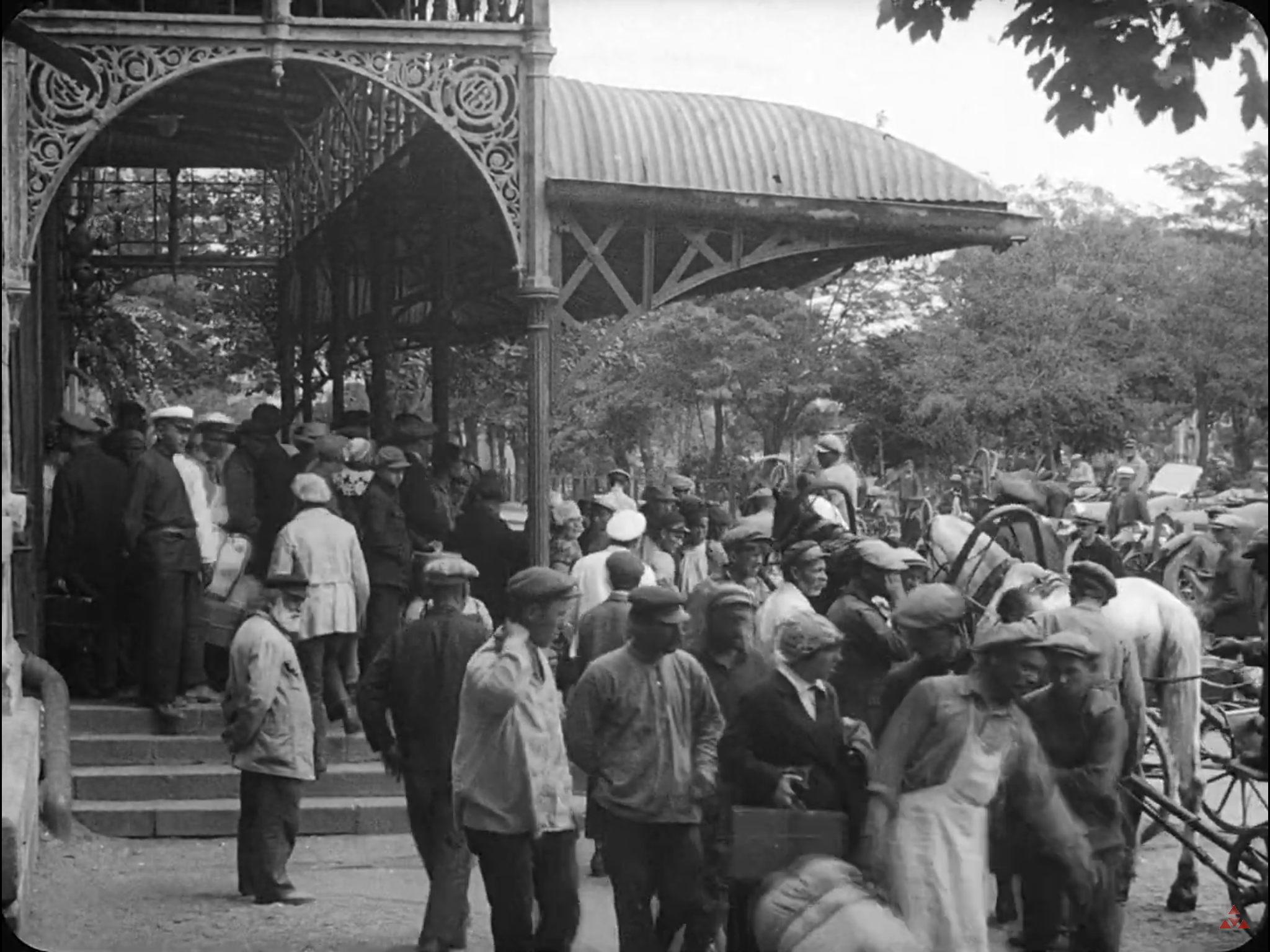 [00:21:09] Former second-class entrance pavilion, Odesa Station (and below).
[00:21:09] Former second-class entrance pavilion, Odesa Station (and below).
 Photograph and Station information from viknaodessa.
Photograph and Station information from viknaodessa.
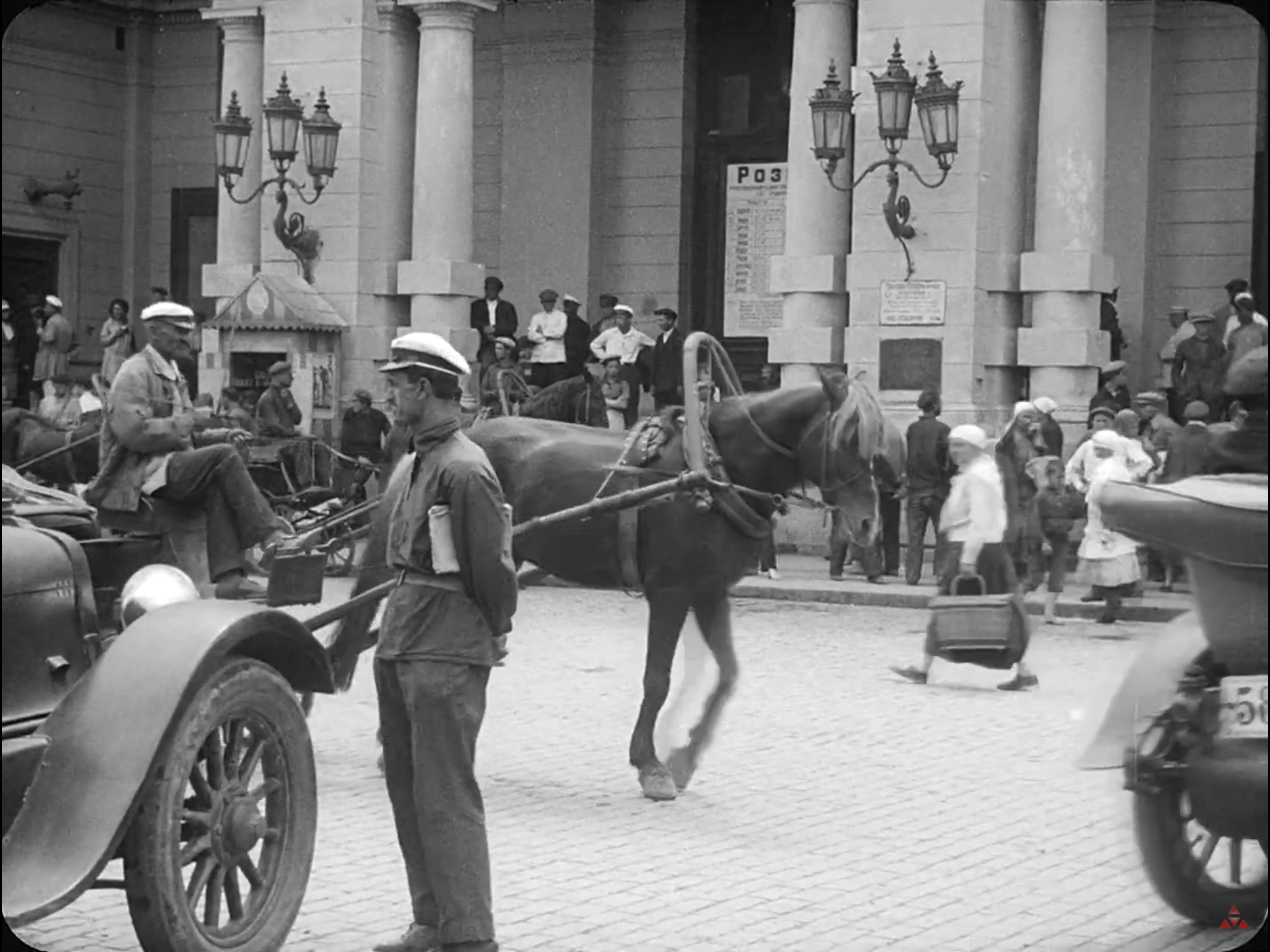 [00:21:13] Main entrance to Odesa Station.
[00:21:13] Main entrance to Odesa Station.
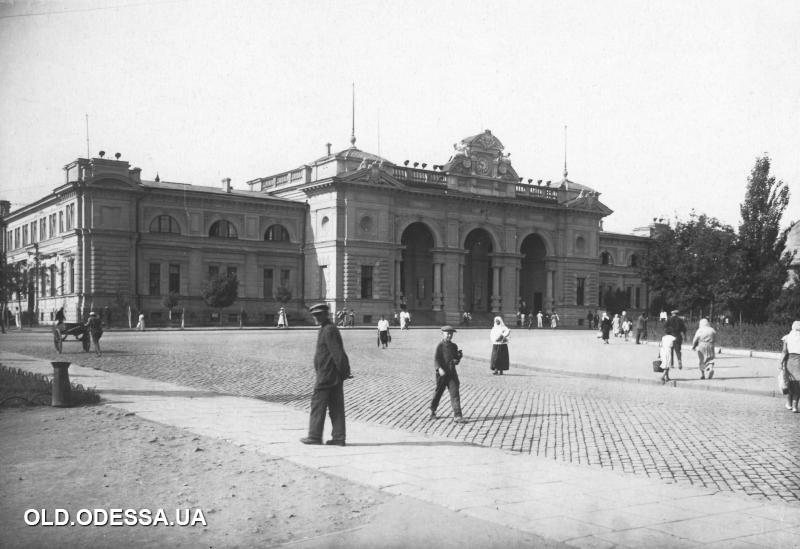 Early 1900s view of the station entrance on Pryvokzal’na Square. [courtesy of viknaodessa]
Early 1900s view of the station entrance on Pryvokzal’na Square. [courtesy of viknaodessa]
Designed by the architects Schreter and Bernardazzi, this magnificent station opened in 1883 covering a large area of the city. The entrances were strictly hierarchical: First Class passengers used the main entrance above, Second Class had the entrance with the cast iron canopy in [00:21:09], and Third Class had an entrance off the Old Town Square. The ruling family had its own Imperial entrance pavilion to avoid mixing with its subjects. The station was badly damaged during WW2 and rebuilt to a different design after the war.
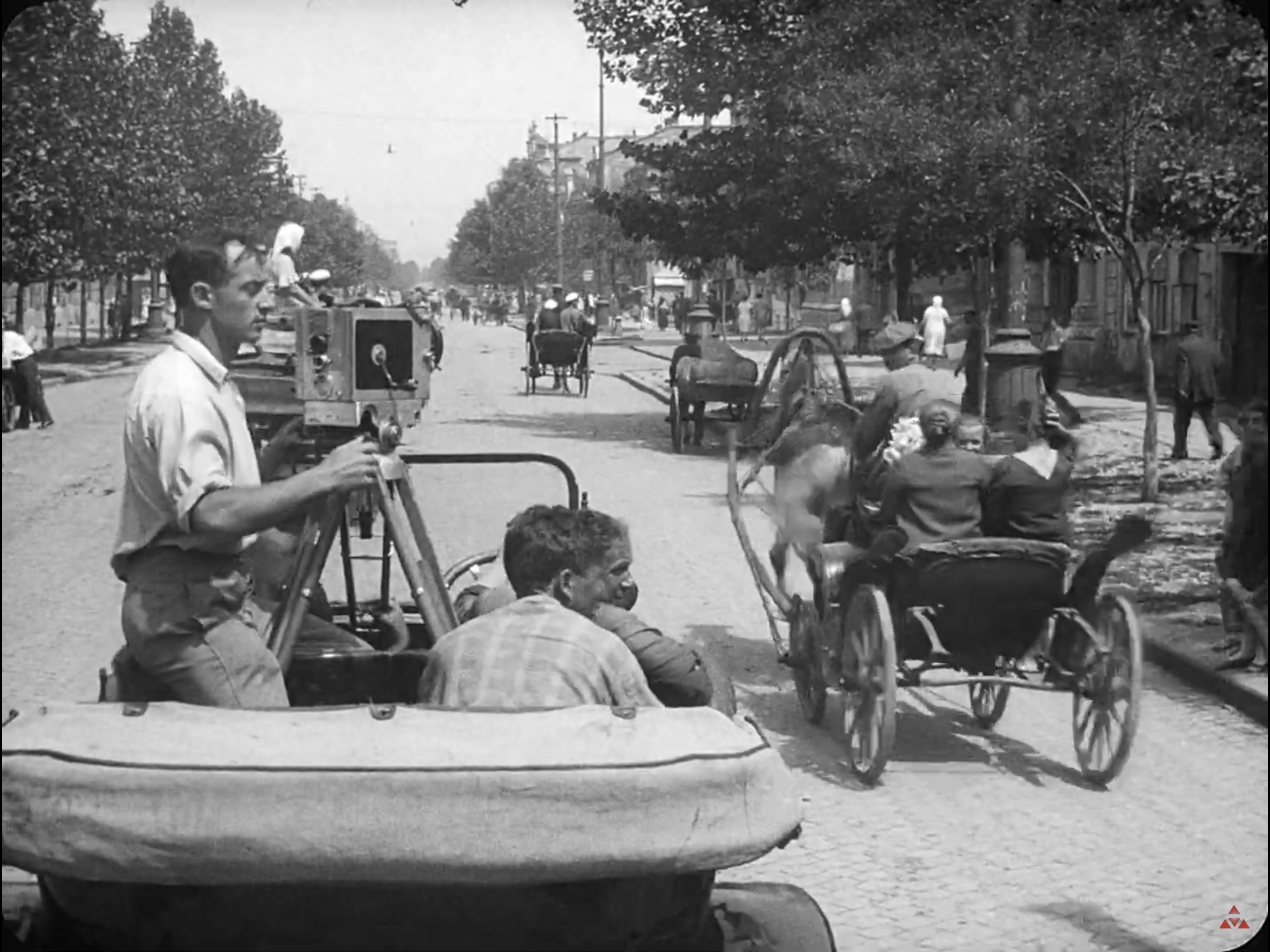 [00:21:19] Mikhail Kaufman in the camera car in Pushkins’ka, Odesa (presumed, as I am unable to locate the building behind the trees on the rhs).
[00:21:19] Mikhail Kaufman in the camera car in Pushkins’ka, Odesa (presumed, as I am unable to locate the building behind the trees on the rhs).
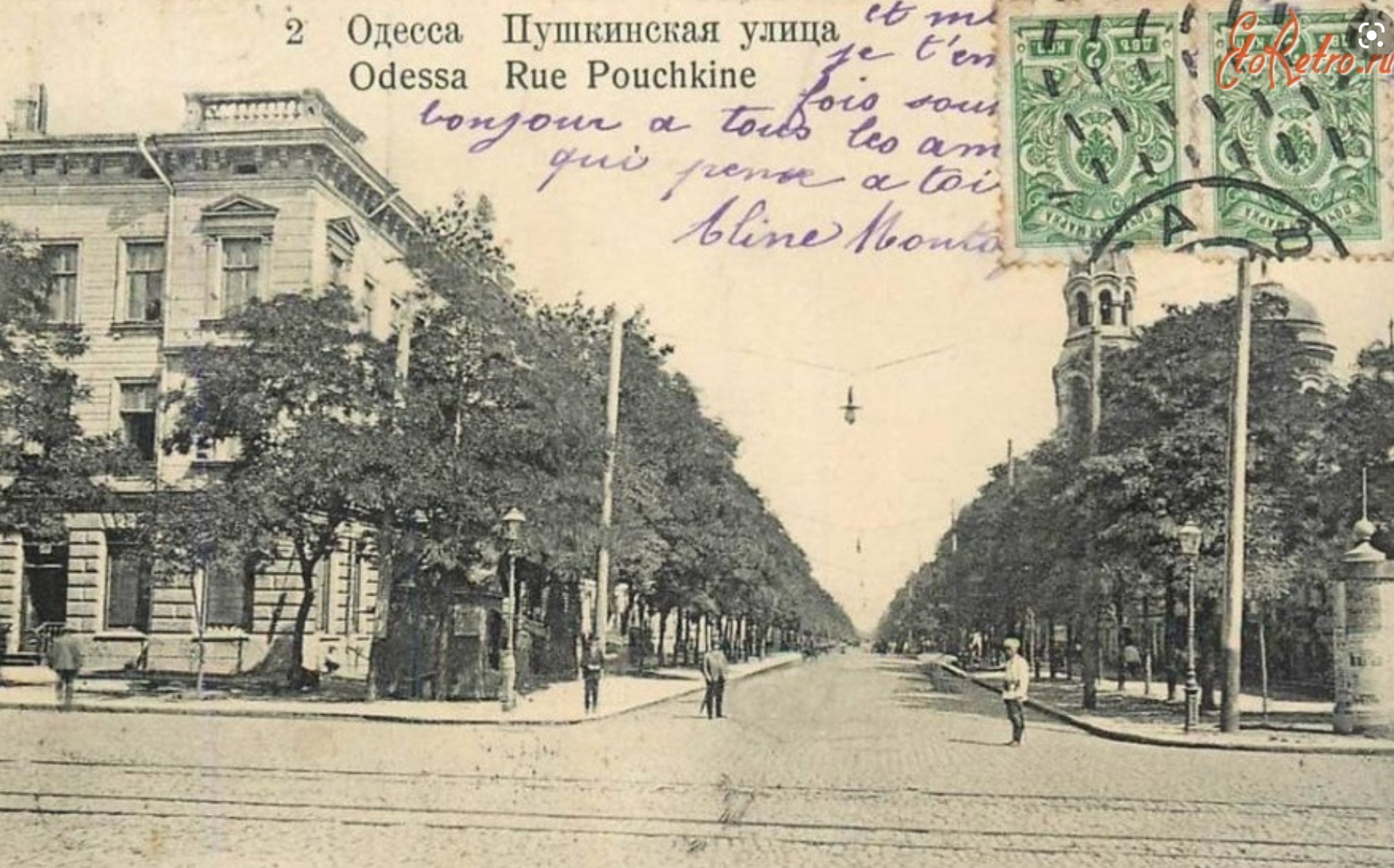 Early 20thC postcard view of Pushkins’ka from Pryvokzal’na Square, with the spire of St Elijah’s Monastery on the right (see [00:57:06]).
Early 20thC postcard view of Pushkins’ka from Pryvokzal’na Square, with the spire of St Elijah’s Monastery on the right (see [00:57:06]).
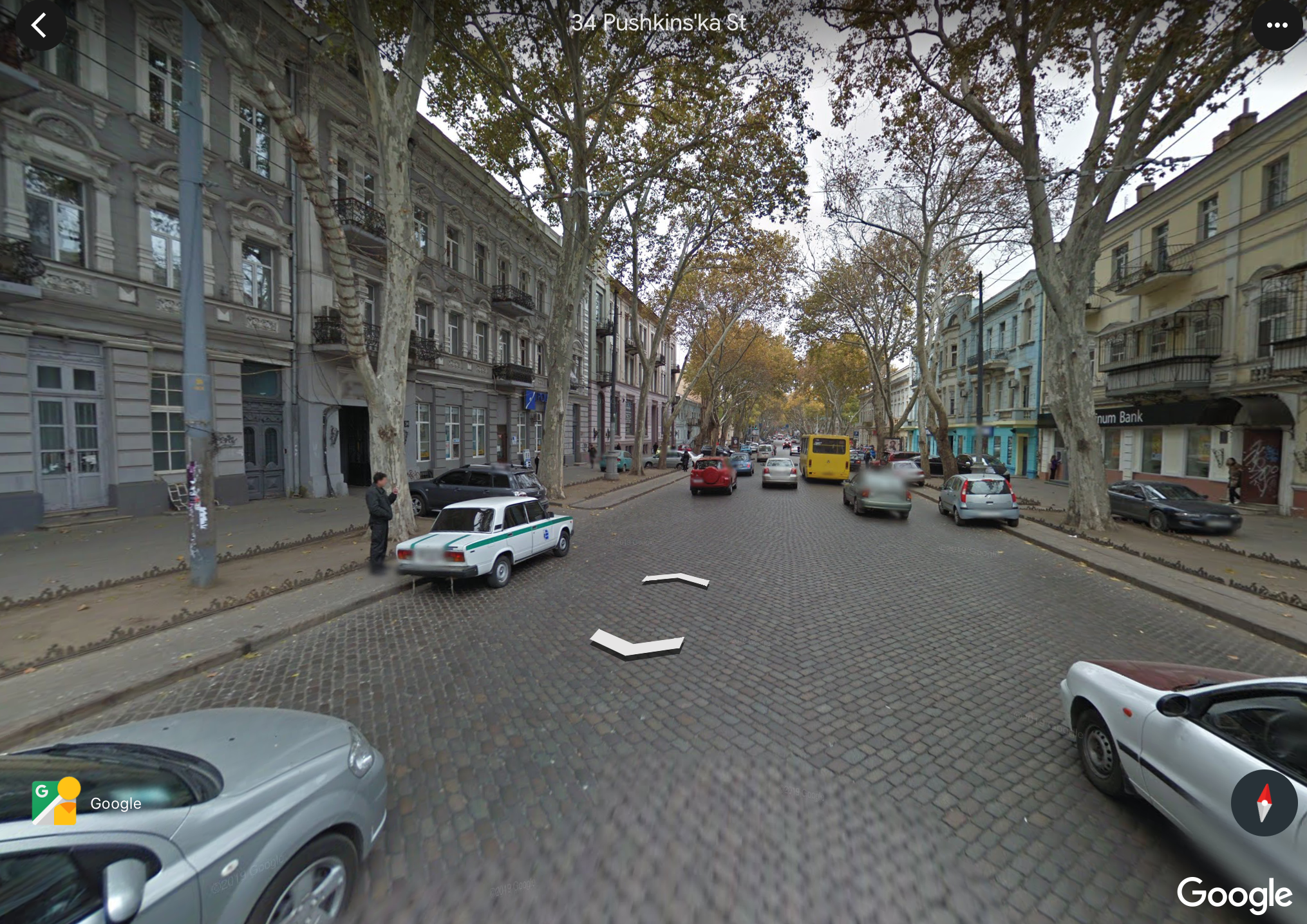 Current view of Pushkins’ka [Google Earth]
Current view of Pushkins’ka [Google Earth]
Pushkins’ka Street was the location of the camera car and carriage/car sequences as two large distinctive buildings that still exist on side streets are clearly visible part way through the sequence. Pushkins’ka (Pushkin lived there in 1823-24) is an avenue leading from Pryvokzal’na Square, without trams so the camera car could travel along the middle of the road alongside its subjects. There is a brief scene of the camera car turning a corner into another avenue off the square where you can see a tram emerging [00:21:45]. Pushkins’ka is a very long street allowing plenty of time for the filming, as you can clearly see from the screenshots.
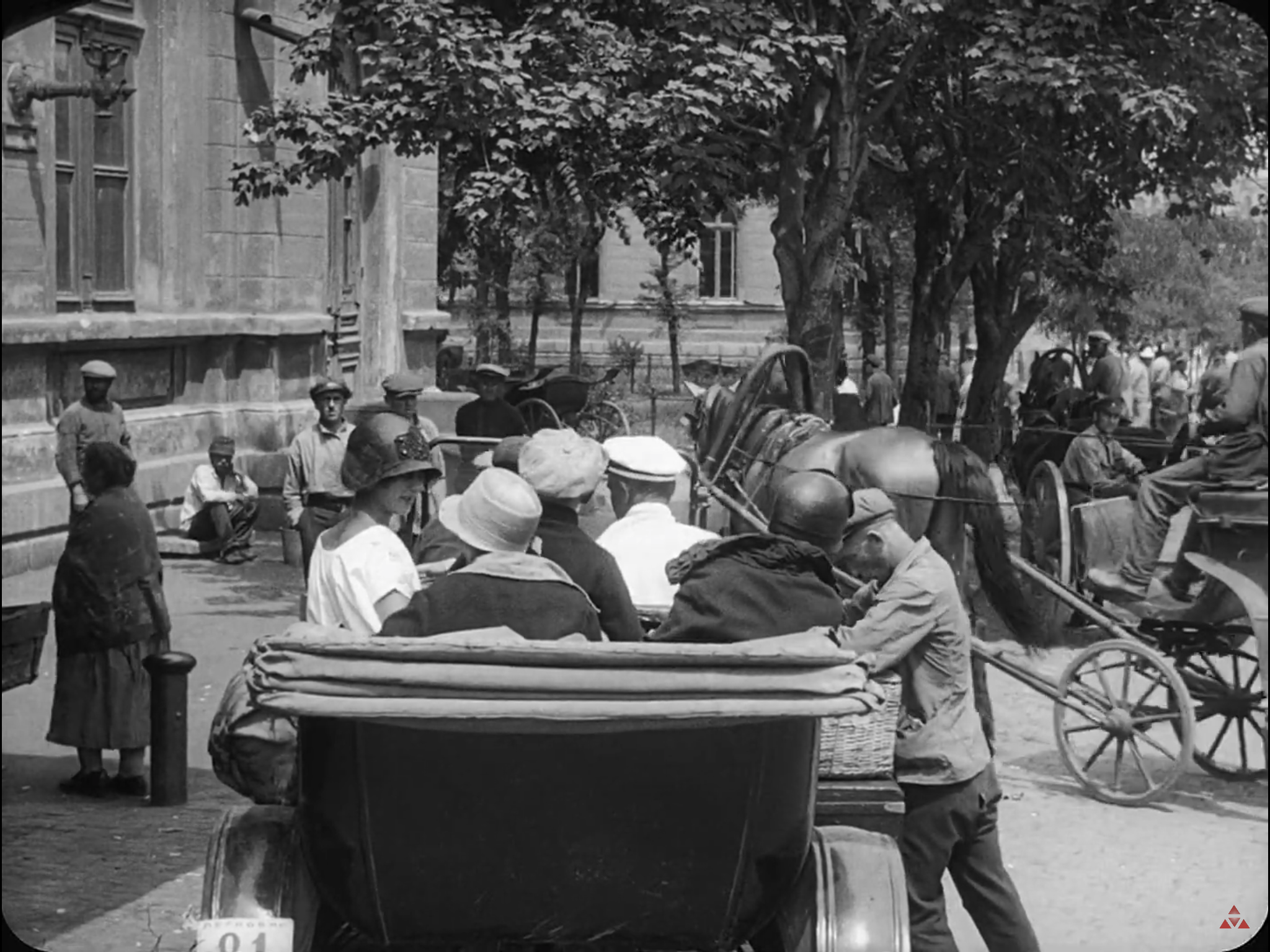 [00:21:21] Cars and horse drawn cabs in Pryvokzal’na Square, Odesa. The car is the one being filmed in [00:22:18] et al.
[00:21:21] Cars and horse drawn cabs in Pryvokzal’na Square, Odesa. The car is the one being filmed in [00:22:18] et al.
[00:21:24] MK in camera car in Pryvokzal’na Square.
[00:21:31] Odesa Station entrance.
[00:21:35] [00:21:41] MK in camera car in Pryvokzal’na Square.
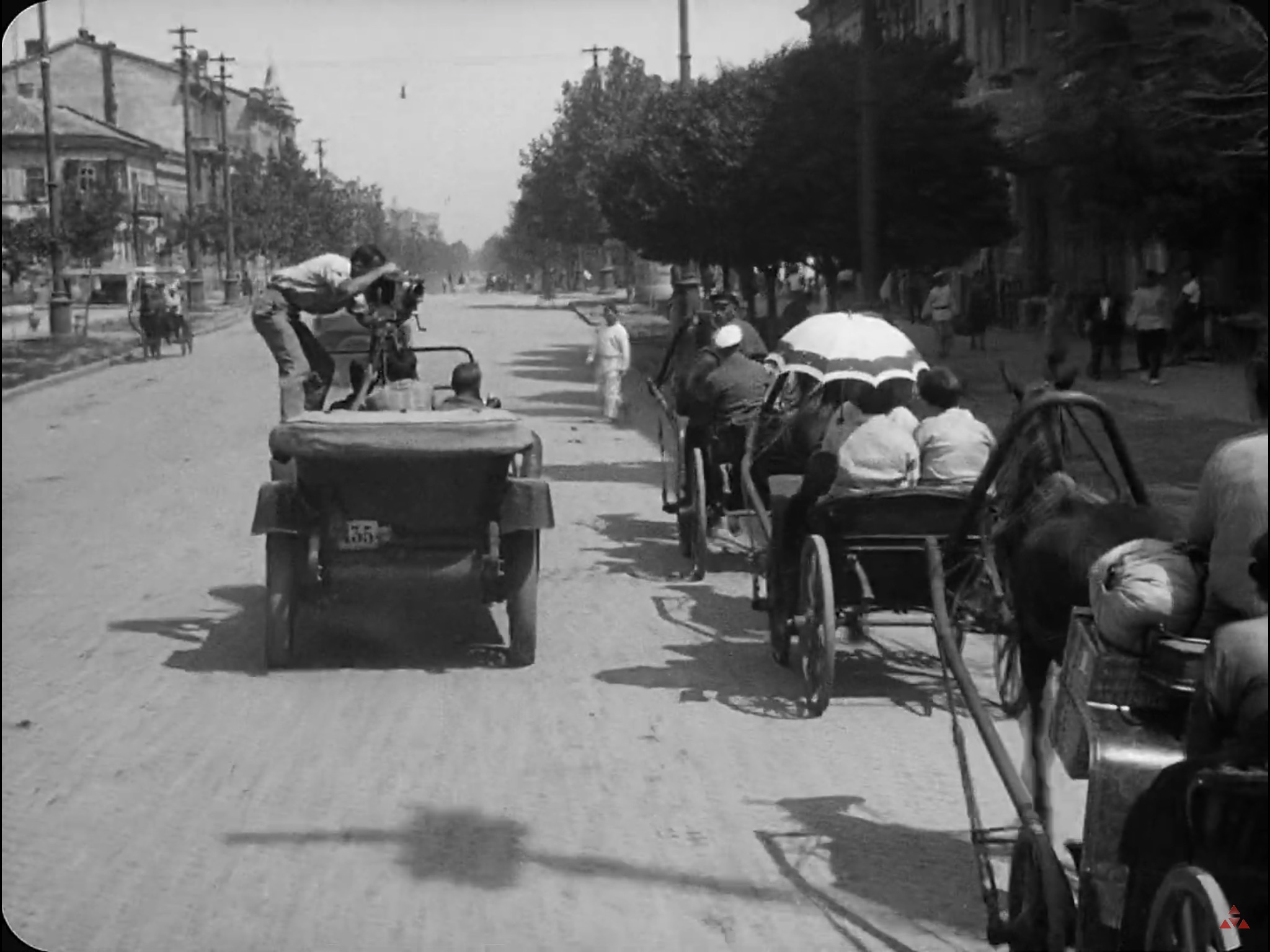 [00:21:55] MK and camera car on Pushkins’ka.
[00:21:55] MK and camera car on Pushkins’ka.
[00:22:07] MK and camera car on Pushkins’ka.
[00:22:15] Women in a cab on Pushkins’ka.
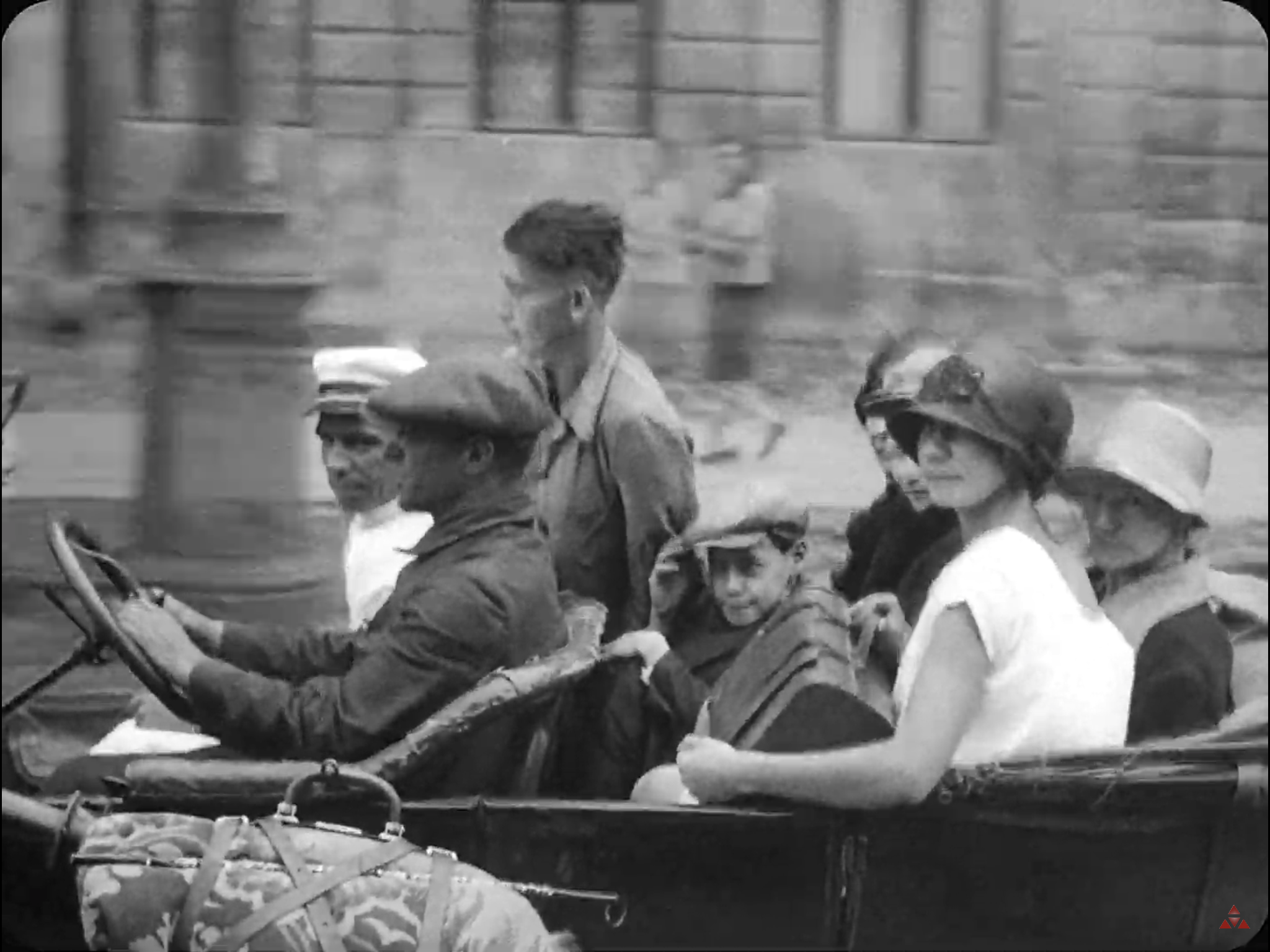 [00:22:18] [00:22:51] Car and passengers on Pushkins’ka (the same car as seen in [00:21:21]).
[00:22:18] [00:22:51] Car and passengers on Pushkins’ka (the same car as seen in [00:21:21]).
[00:22:24] MK and camera car on Pushkins’ka.
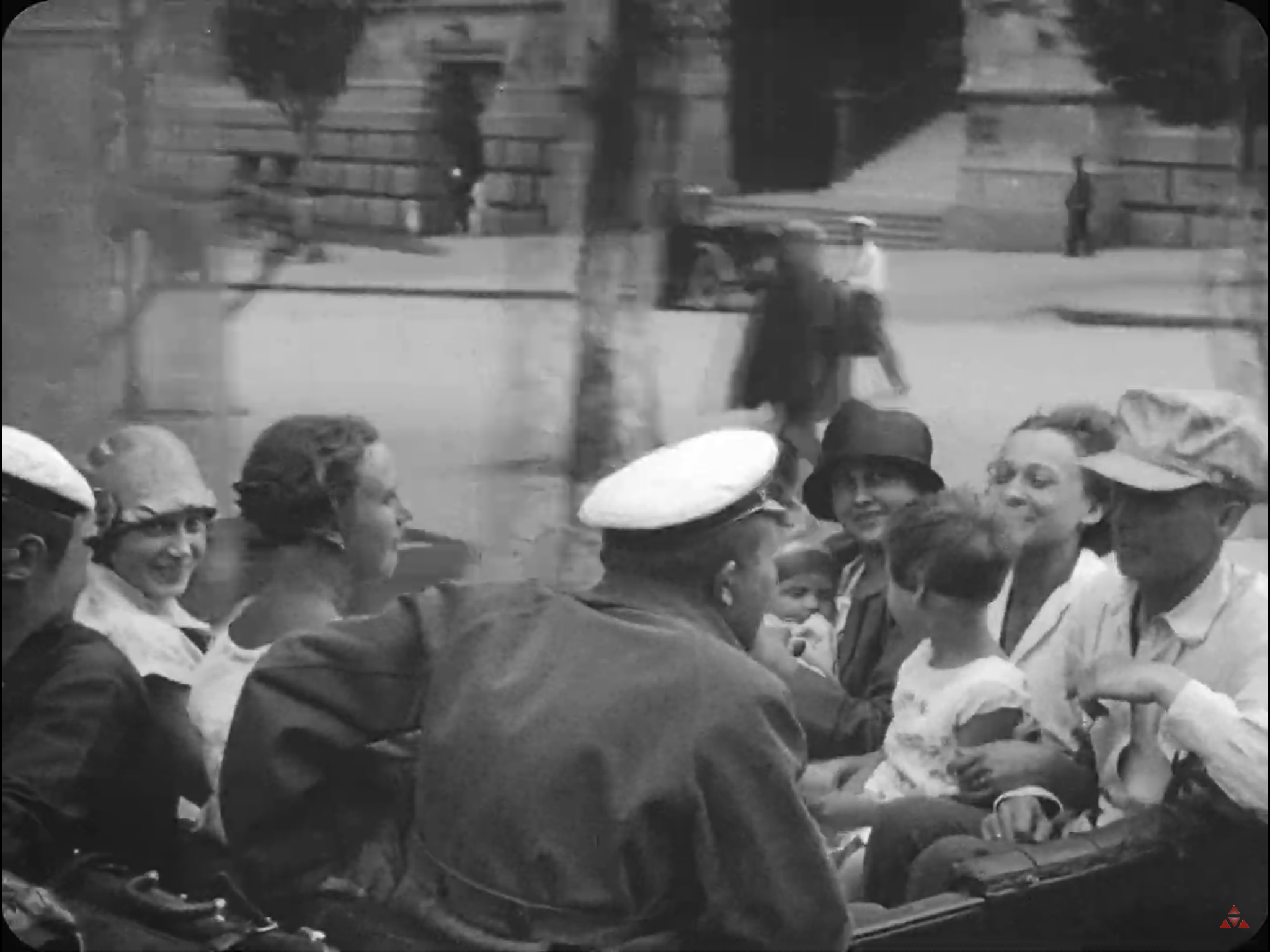 [00:22:30] 2nd car and passengers on Pushkins’ka.
[00:22:30] 2nd car and passengers on Pushkins’ka.

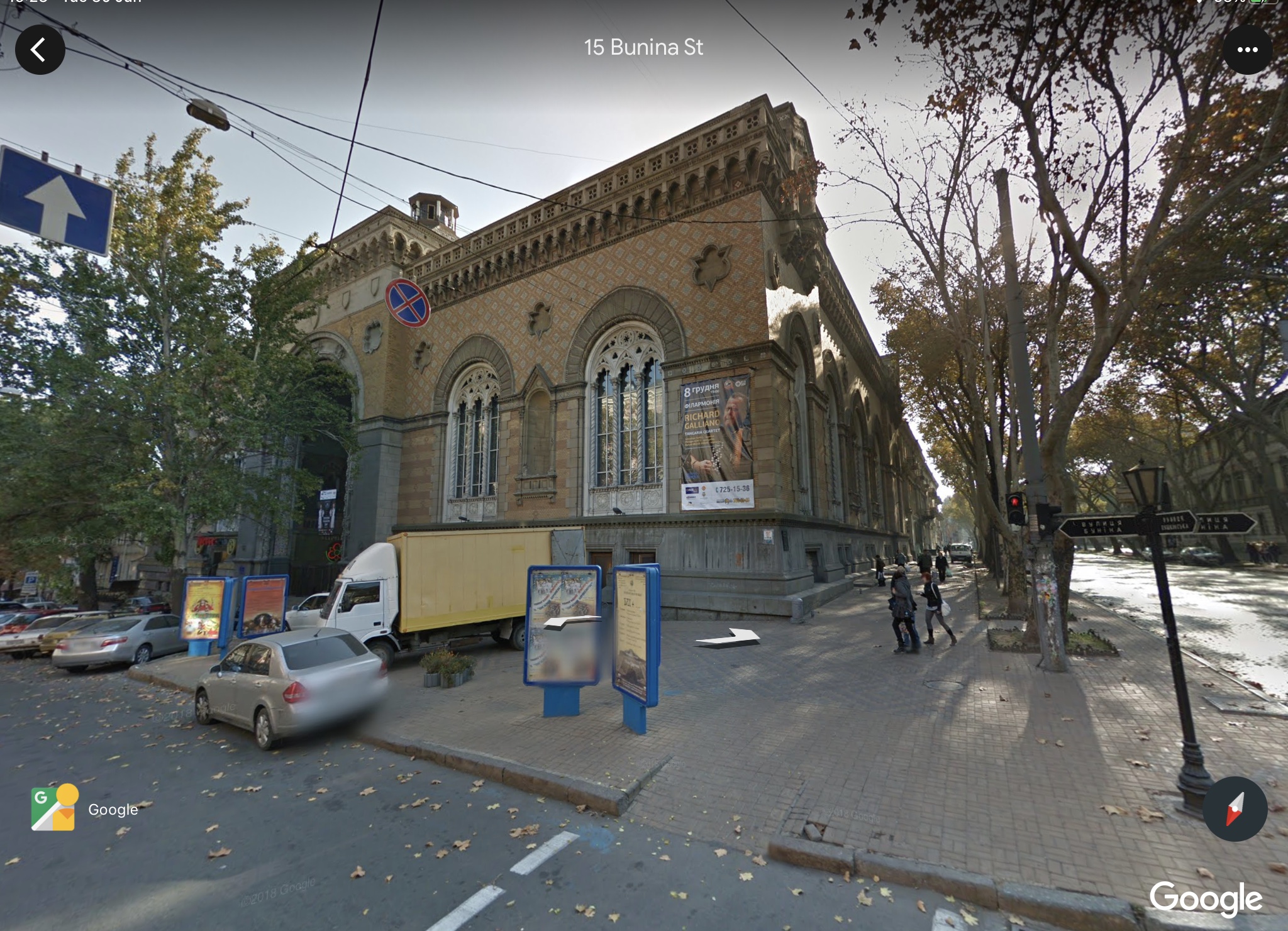 This is the imposing Italian Gothic Revival building of the Odesa Philharmonic Theatre glimpsed behind the car above, on the former Rosa Luxemburg Street, off Pushkins’ka. Designed to resemble the Doge’s Palace in Venice, it was built as a stock exchange in 1894. [Google Earth]
This is the imposing Italian Gothic Revival building of the Odesa Philharmonic Theatre glimpsed behind the car above, on the former Rosa Luxemburg Street, off Pushkins’ka. Designed to resemble the Doge’s Palace in Venice, it was built as a stock exchange in 1894. [Google Earth]
[00:22:36] MK and camera car on Pushkins’ka.
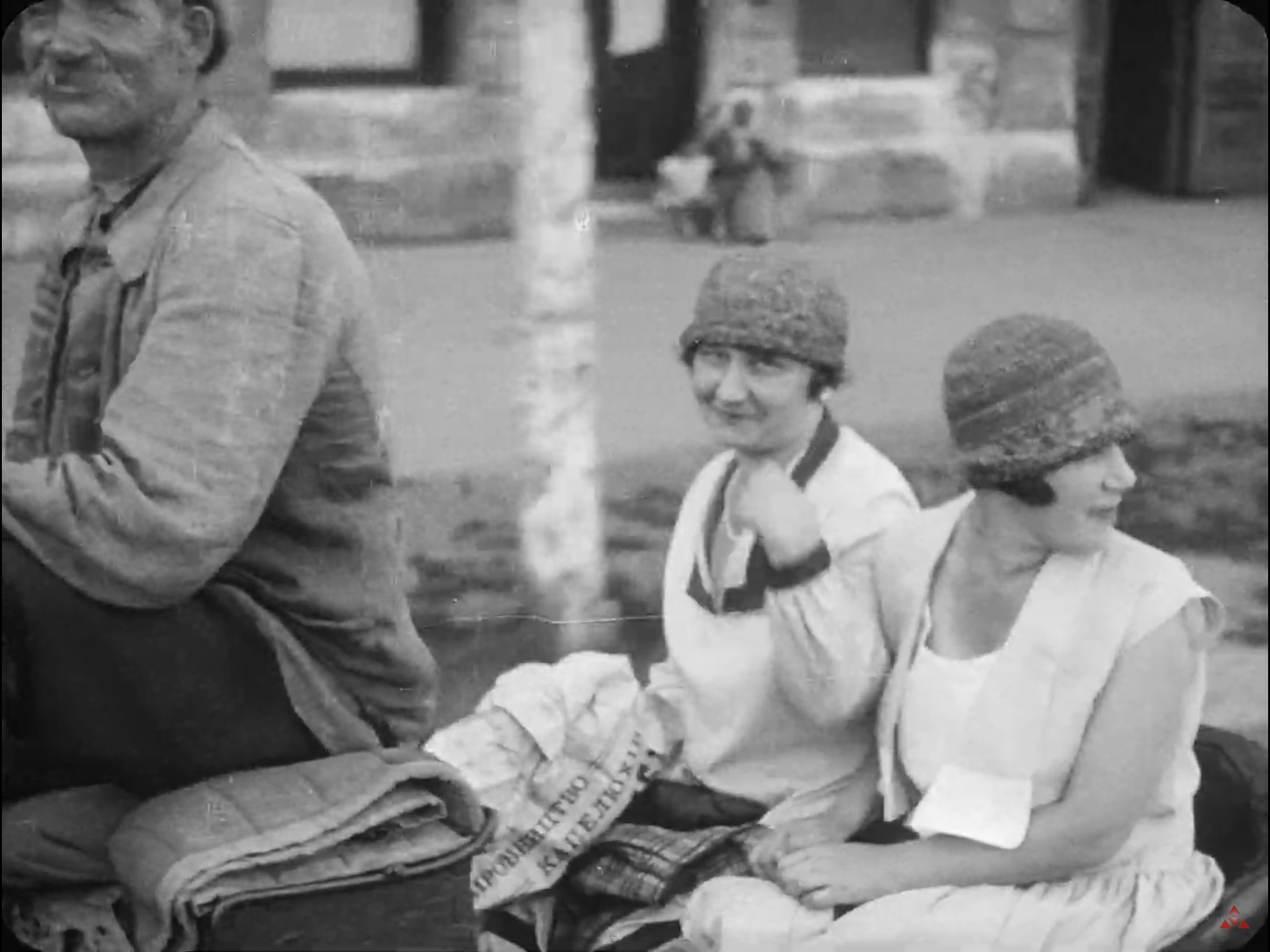 [00:22:39] 2nd cab with two women on Pushkins’ka (one imitating the cameraman!).
[00:22:39] 2nd cab with two women on Pushkins’ka (one imitating the cameraman!).
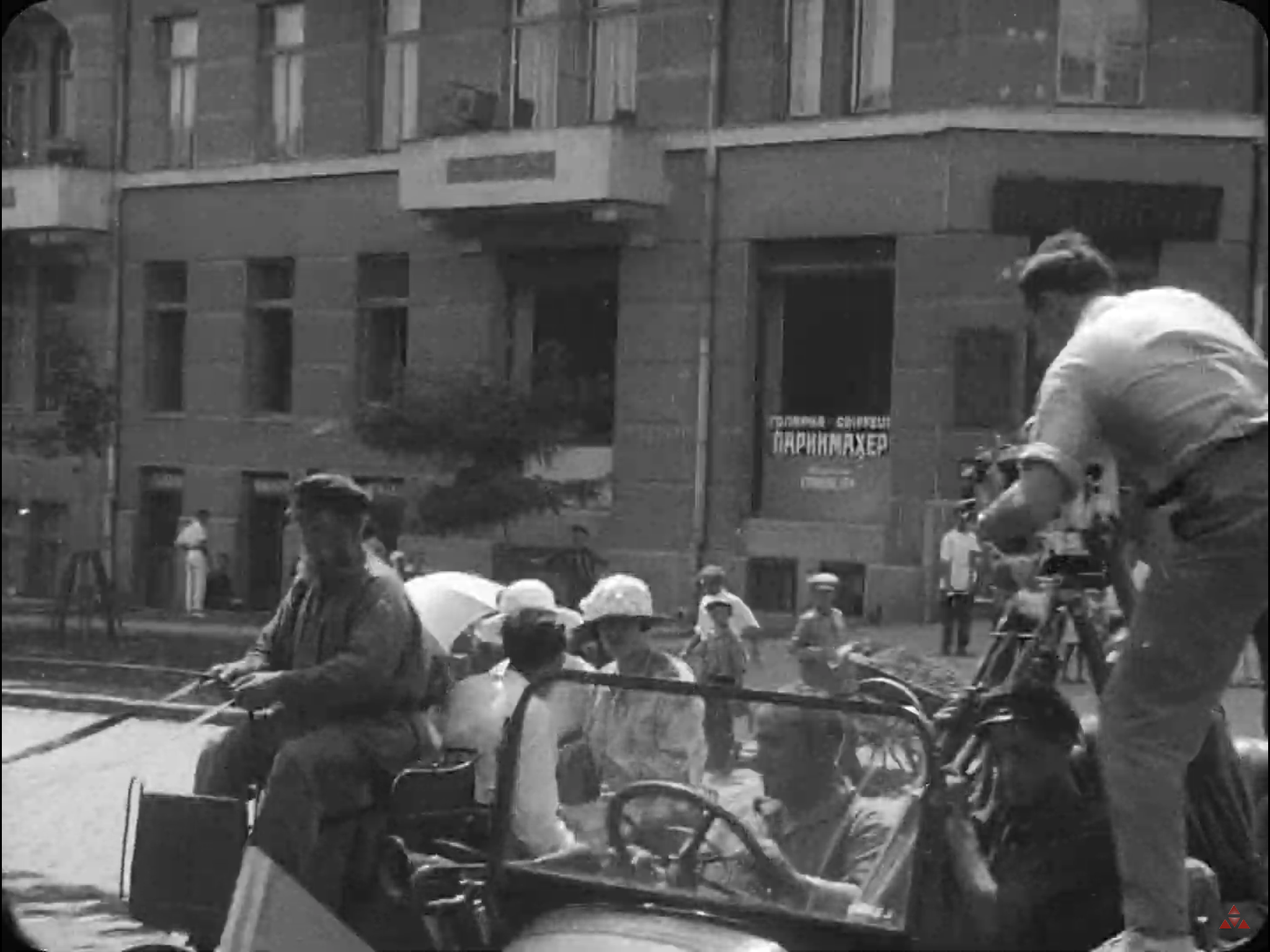 [00:22:45] MK and camera car on Pushkins’ka (the building below on Troitska Street is behind – the balconies have disappeared!).
[00:22:45] MK and camera car on Pushkins’ka (the building below on Troitska Street is behind – the balconies have disappeared!).
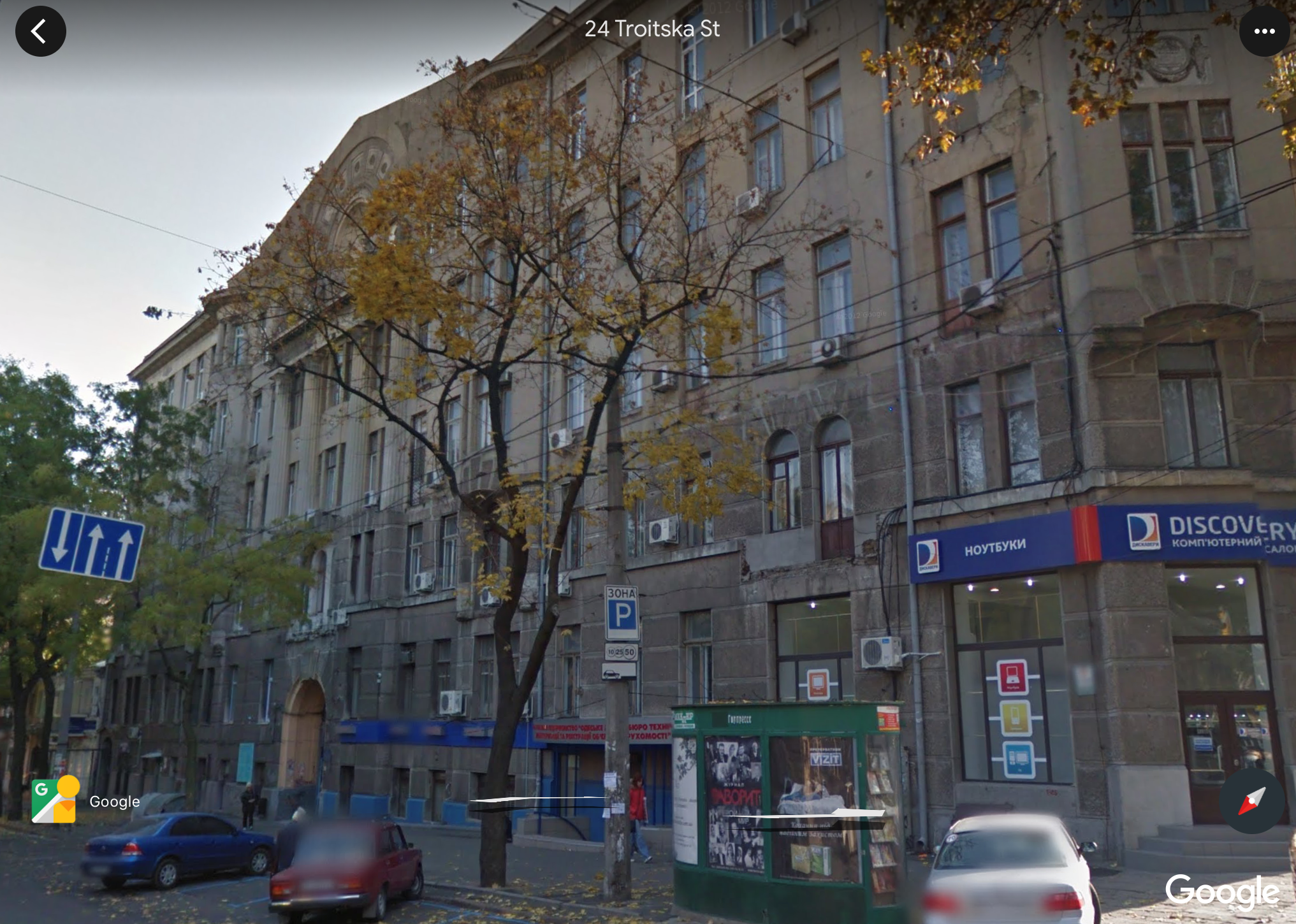 Current view of the building on Troitska Street in the background of the screenshot above. [Google Earth]
Current view of the building on Troitska Street in the background of the screenshot above. [Google Earth]
[00:22:53] [00:23:00] Horse galloping, and then ‘frozen’. Assumed Odesa.
[00:22:57] Camera car on Pushkins’ka.
[00:23:04] ‘Frozen’ carriage and passengers (reverse view of the same ones seen briefly in [00:22:36] et al).
[00:23:07] ‘Frozen’ street view. Location not found.
[00:23:15] ‘Frozen’ view of the north end of Khreschatyk Street, Kyiv.
REEL 3
Note: rising numeral 3 missing from Eye/Lobster Films print.
[00:24:45] ‘Frozen’ view of the north end of Khreschatyk.
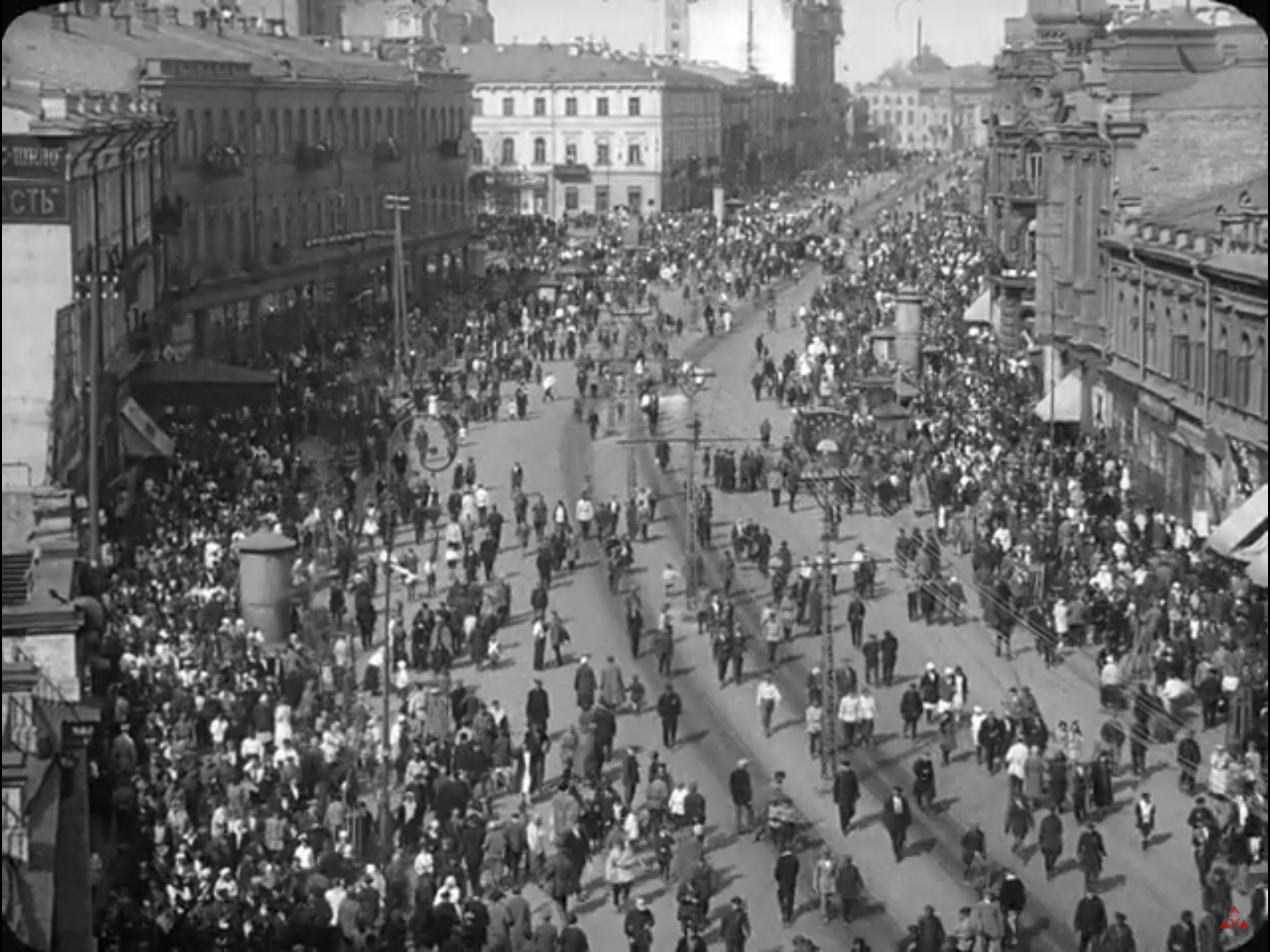 [00:24:48] North end of Khreschatyk, crowds in motion. Mykhailo Kalnytsky suggests the camera was located at No. 28/2 Khreschatyk (on the corner of Prorizna Street), which is much taller than its neighbours (see photograph and arrow on the map below). The main square of Kyiv, then known as Sovetskaya Square, is on the lhs by the sunlit building. It was previously known as Khreschatyk Square, then Dumskaya (Council) Square, and after being called many different names in the Soviet era it was re-named Independence Square (Maidan Nezalezhnosti) in 1991.
[00:24:48] North end of Khreschatyk, crowds in motion. Mykhailo Kalnytsky suggests the camera was located at No. 28/2 Khreschatyk (on the corner of Prorizna Street), which is much taller than its neighbours (see photograph and arrow on the map below). The main square of Kyiv, then known as Sovetskaya Square, is on the lhs by the sunlit building. It was previously known as Khreschatyk Square, then Dumskaya (Council) Square, and after being called many different names in the Soviet era it was re-named Independence Square (Maidan Nezalezhnosti) in 1991.
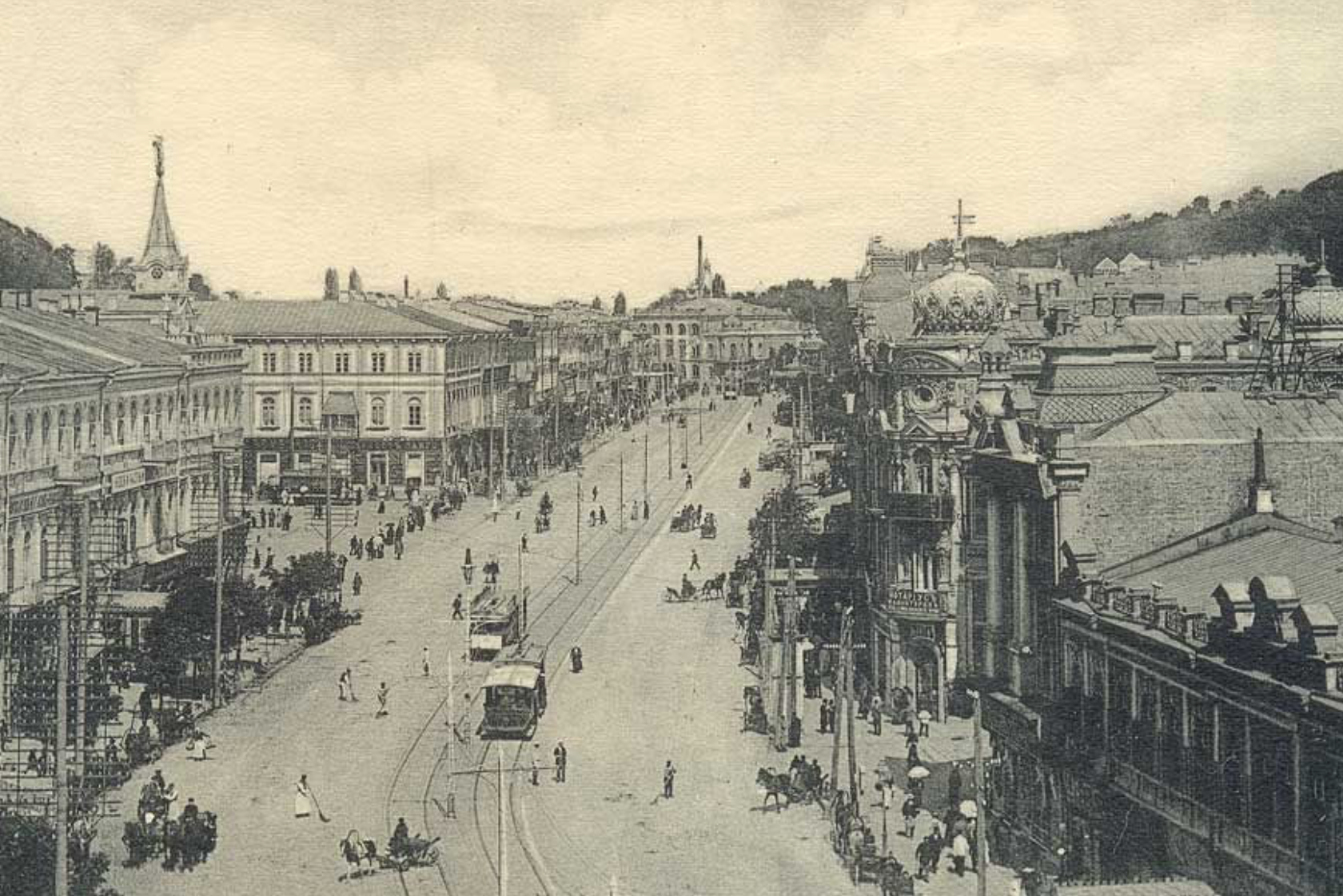 An early 1900s view of the north end of Khreschatyk. The buildings are much the same except for the end of a large new building spoiling the street on the lhs of the screenshot. Apparently taken from the same building as the screenshot.
An early 1900s view of the north end of Khreschatyk. The buildings are much the same except for the end of a large new building spoiling the street on the lhs of the screenshot. Apparently taken from the same building as the screenshot.
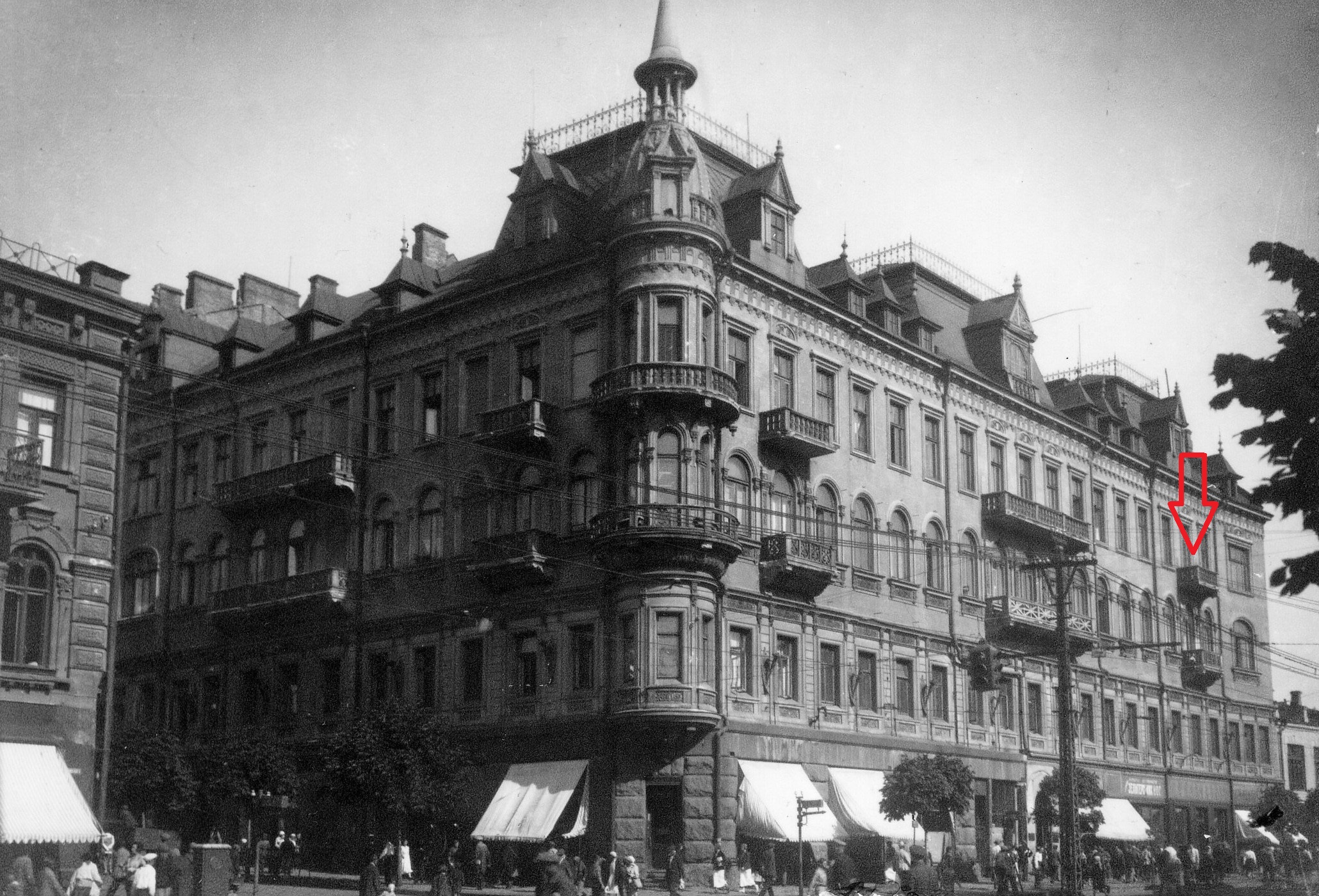 Mykhailo Kalnytsky suggests that the camera was located on the top rhs balcony of 28/2 Khreschatyk. This beautiful building was built in 1902, designed by the famous Kyiv architect of Polish origin Vladyslav Horodetsky. It was the first on Khreschatyk to be blown up in 1941 by the retreating Red Army. [M. Kalnytsky]
Mykhailo Kalnytsky suggests that the camera was located on the top rhs balcony of 28/2 Khreschatyk. This beautiful building was built in 1902, designed by the famous Kyiv architect of Polish origin Vladyslav Horodetsky. It was the first on Khreschatyk to be blown up in 1941 by the retreating Red Army. [M. Kalnytsky]
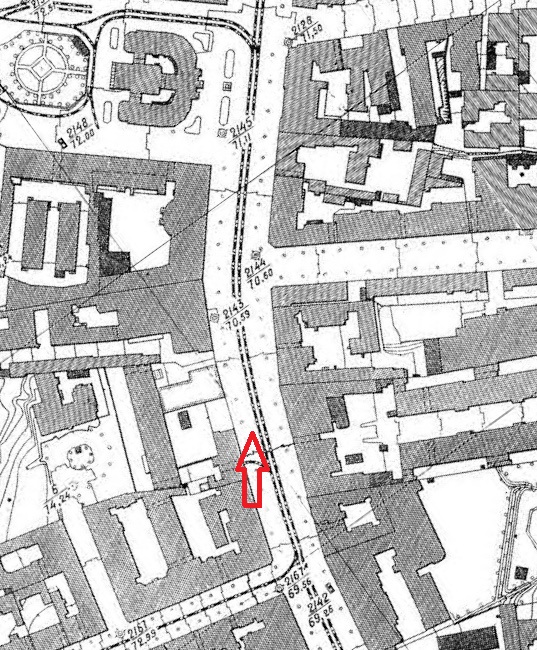 Contemporary street plan showing the suggested location of the camera overlooking Khreschatyk. [M. Kalnytsky]
Contemporary street plan showing the suggested location of the camera overlooking Khreschatyk. [M. Kalnytsky]
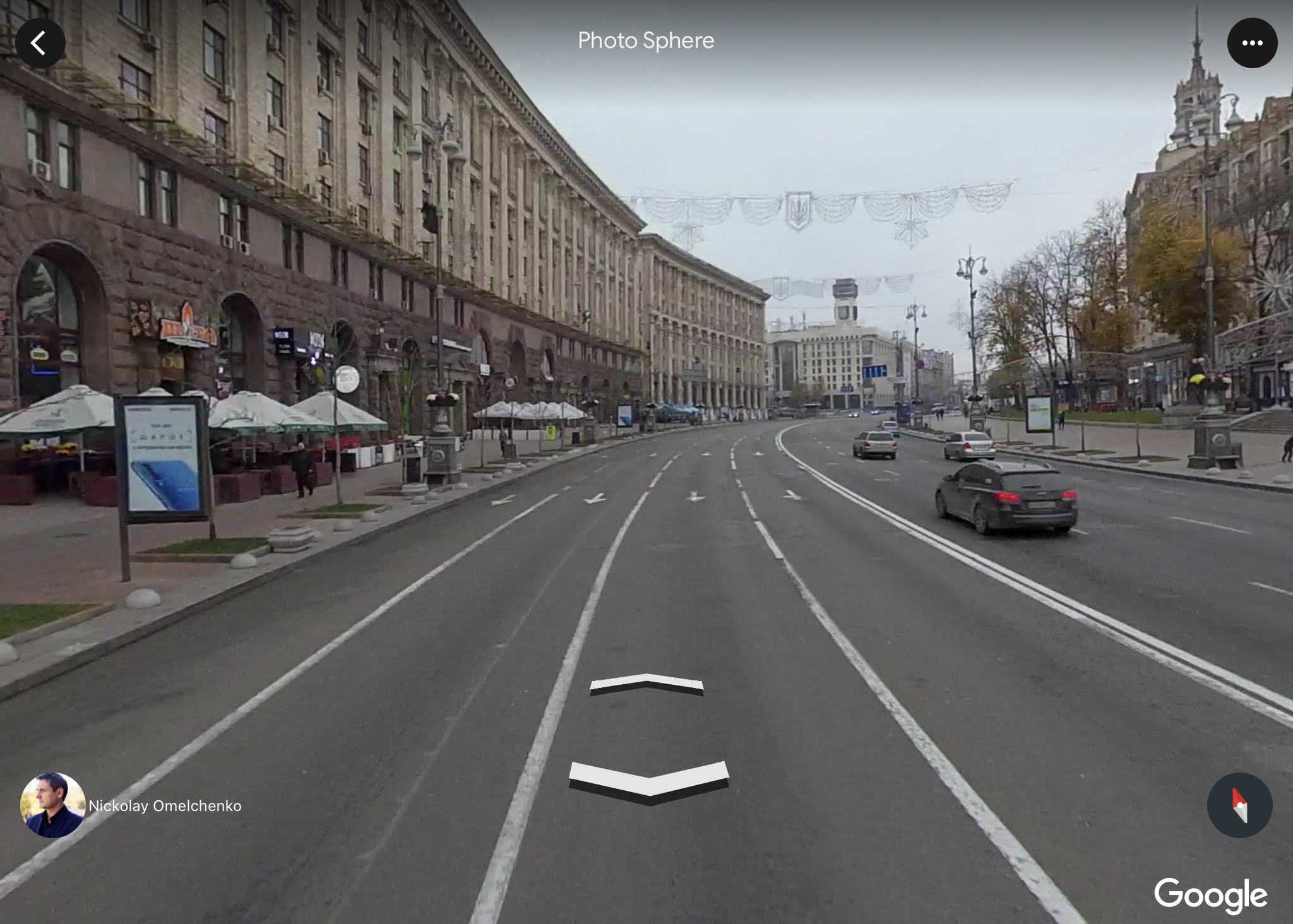 Current view of the north end of Khreschatyk at a similar location [photograph by Nikolay Omelchenko on Google Earth]. Nothing much is left of the old street thanks to its destruction by the retreating Red Army in 1941. Much of the re-building after the war was in the Stalinist neo-classical style as can be seen here. Independence Square is just ahead, and now occupies both sides of the street.
Current view of the north end of Khreschatyk at a similar location [photograph by Nikolay Omelchenko on Google Earth]. Nothing much is left of the old street thanks to its destruction by the retreating Red Army in 1941. Much of the re-building after the war was in the Stalinist neo-classical style as can be seen here. Independence Square is just ahead, and now occupies both sides of the street.
[00:25:01] Passengers in a carriage, Pushkins’ka, Odesa (reverse view, ‘frozen’ at first’ – originally seen in [00:22:36] and [00:23:04]).
[00:25:08] Views of streets behind horse’s head, Odesa. From similarities to previous shots presumably around Pushkins’ka, but not verified.
[00:25:12] Two women in a carriage, Odesa. Presumably around Pushkins’ka, but not verified.
[00:25:21 on] Carriage and women outside a house in Odesa. Exact location not found.
[00:25:38] Mikhail Kaufman (assumed) with Debrie Interview camera and tripod walking in a street. Location not found.
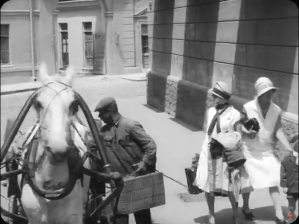 [00:25:40] Carriage outside a building on Vorontsovs’kyi Lane, Odesa.
[00:25:40] Carriage outside a building on Vorontsovs’kyi Lane, Odesa.
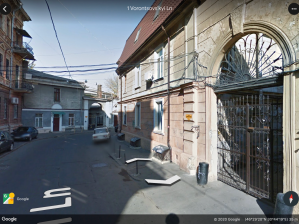 Modern view of the location. Windows and cellar openings have been added. The street leads to the Vorontsov Palace and the end of Primorskyi Boulevard. [Google Street View]
Modern view of the location. Windows and cellar openings have been added. The street leads to the Vorontsov Palace and the end of Primorskyi Boulevard. [Google Street View]
[00:25:47] Revolving doors at the Palace Hotel, Kyiv [see 00:25:57].
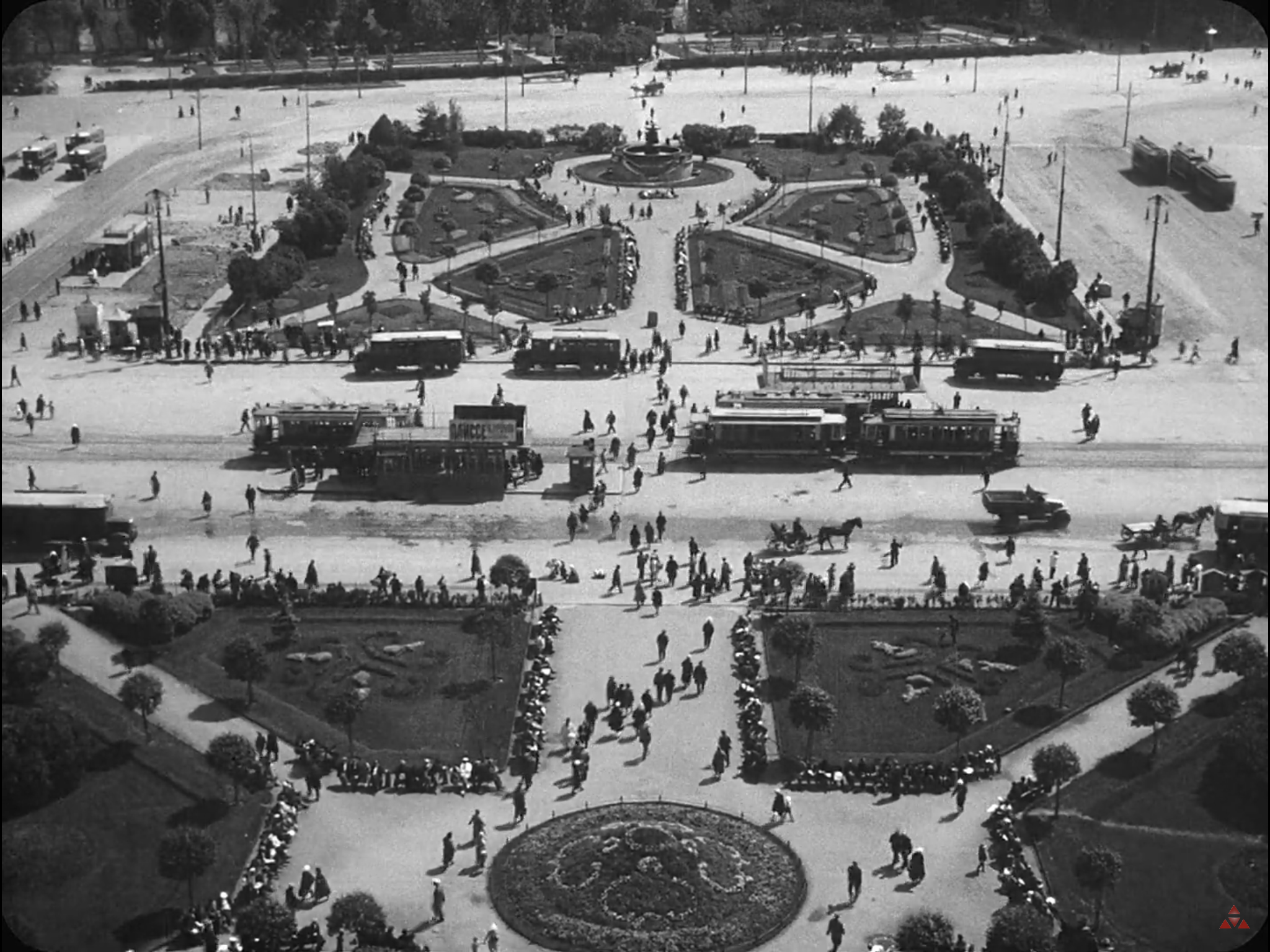 [00:25:50] Theatre and Revolution Squares, Moscow (taken from the top floor or pediment of the Bolshoi Theatre). This is a view to the left of the one in screen shot [00:14:42].
[00:25:50] Theatre and Revolution Squares, Moscow (taken from the top floor or pediment of the Bolshoi Theatre). This is a view to the left of the one in screen shot [00:14:42].
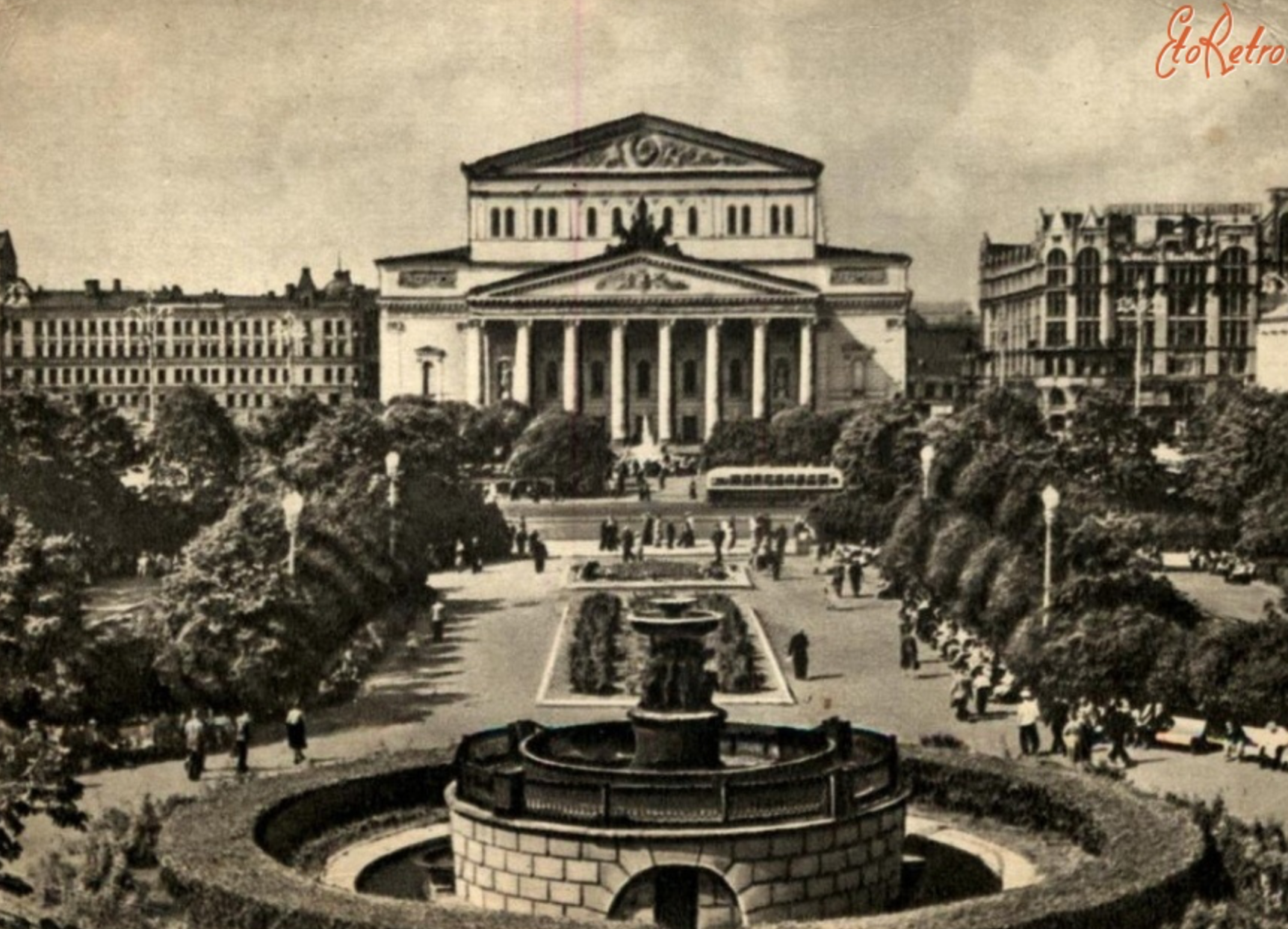 Old postcard of the opposite view, Revolution Square with 1827 Petrovsky Fountain (Moscow’s oldest) in the foreground. The layout of the squares has changed considerably, but the fountain is still in place.
Old postcard of the opposite view, Revolution Square with 1827 Petrovsky Fountain (Moscow’s oldest) in the foreground. The layout of the squares has changed considerably, but the fountain is still in place.
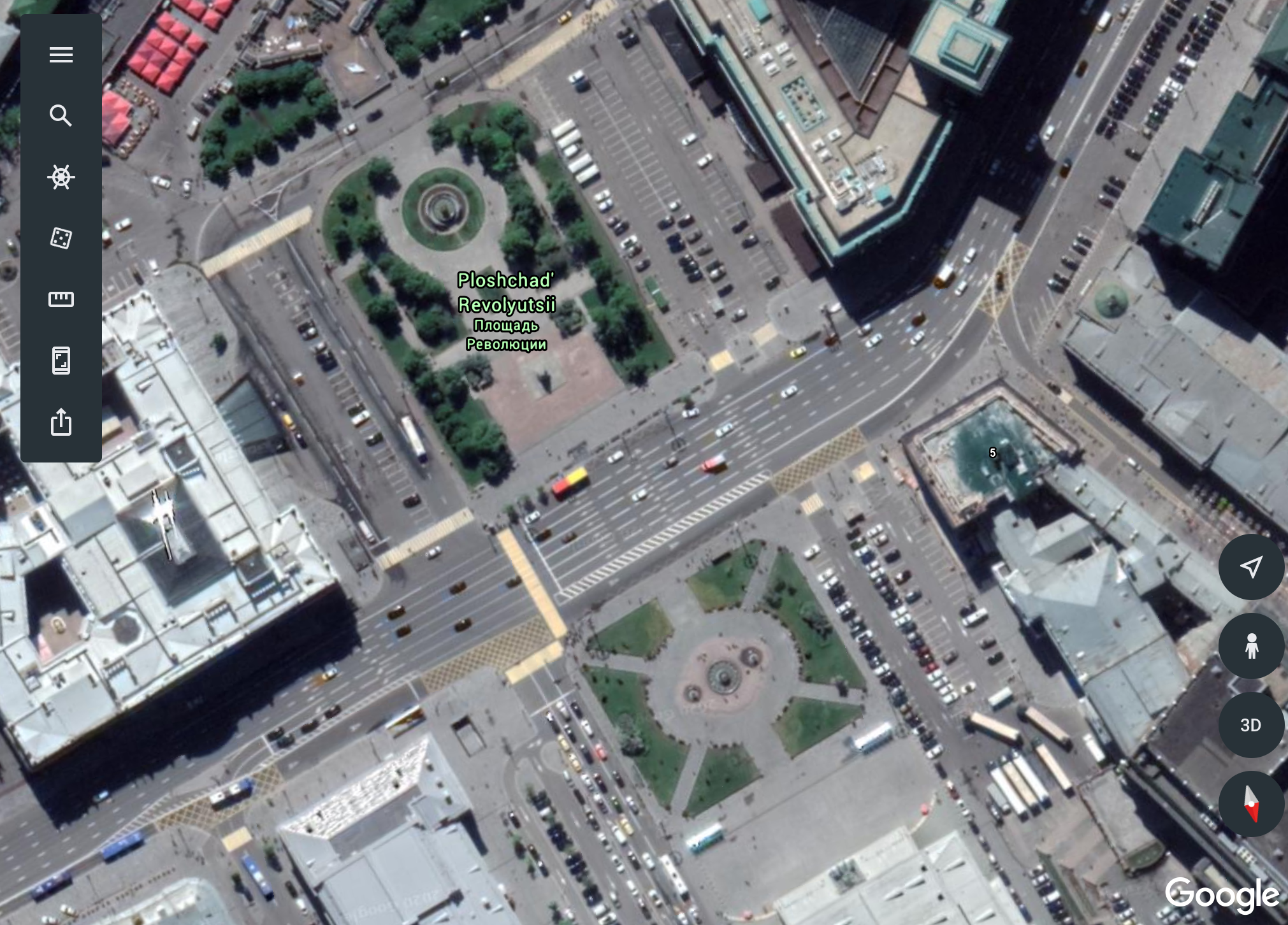 Current aerial view of Theatre and Revolution Squares. The Bolshoi Theatre is at the bottom of the picture. The beautiful Art Nouveau Metropol Hotel is on the left. Sadly, most of the area is now taken up by parking. [Google Earth]
Current aerial view of Theatre and Revolution Squares. The Bolshoi Theatre is at the bottom of the picture. The beautiful Art Nouveau Metropol Hotel is on the left. Sadly, most of the area is now taken up by parking. [Google Earth]
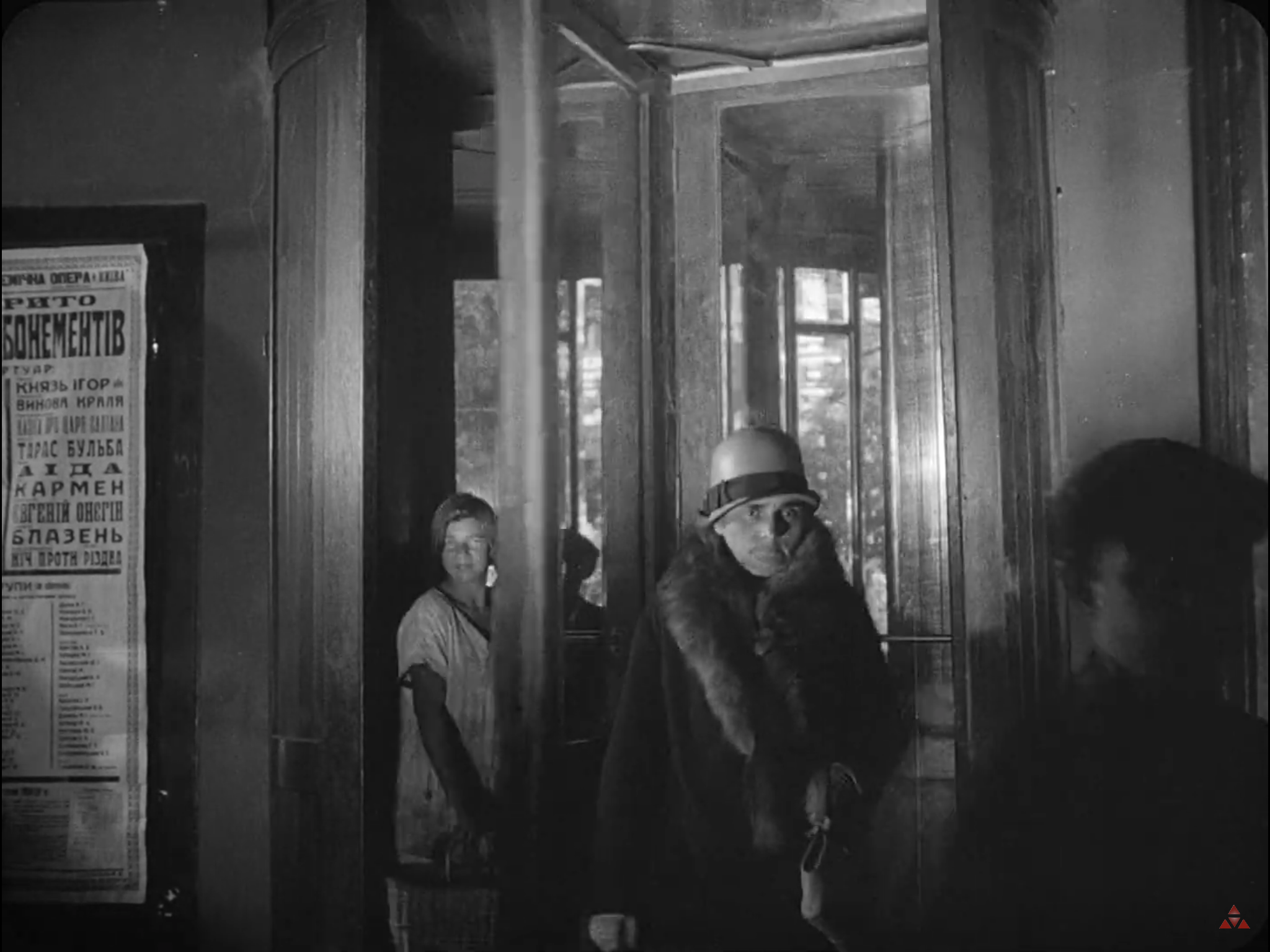 [00:25:57] Entrance to the Palace Hotel, Kyiv (advertisement for the Kyiv Opera House on the left).
[00:25:57] Entrance to the Palace Hotel, Kyiv (advertisement for the Kyiv Opera House on the left).
 The Palace Hotel, or Hotel Palast, was and is one of the premier hotels in Kyiv. On Tarasa Shevchenko Boulevard it opened in 1912 in time for the ‘All Russia Exhibition’ held in the city in 1913. This exhibition was the catalyst for the extraordinary amount of fine early 19th Century architecture in the city. [Hotel advertisement from M. Kalnytsky]
The Palace Hotel, or Hotel Palast, was and is one of the premier hotels in Kyiv. On Tarasa Shevchenko Boulevard it opened in 1912 in time for the ‘All Russia Exhibition’ held in the city in 1913. This exhibition was the catalyst for the extraordinary amount of fine early 19th Century architecture in the city. [Hotel advertisement from M. Kalnytsky]
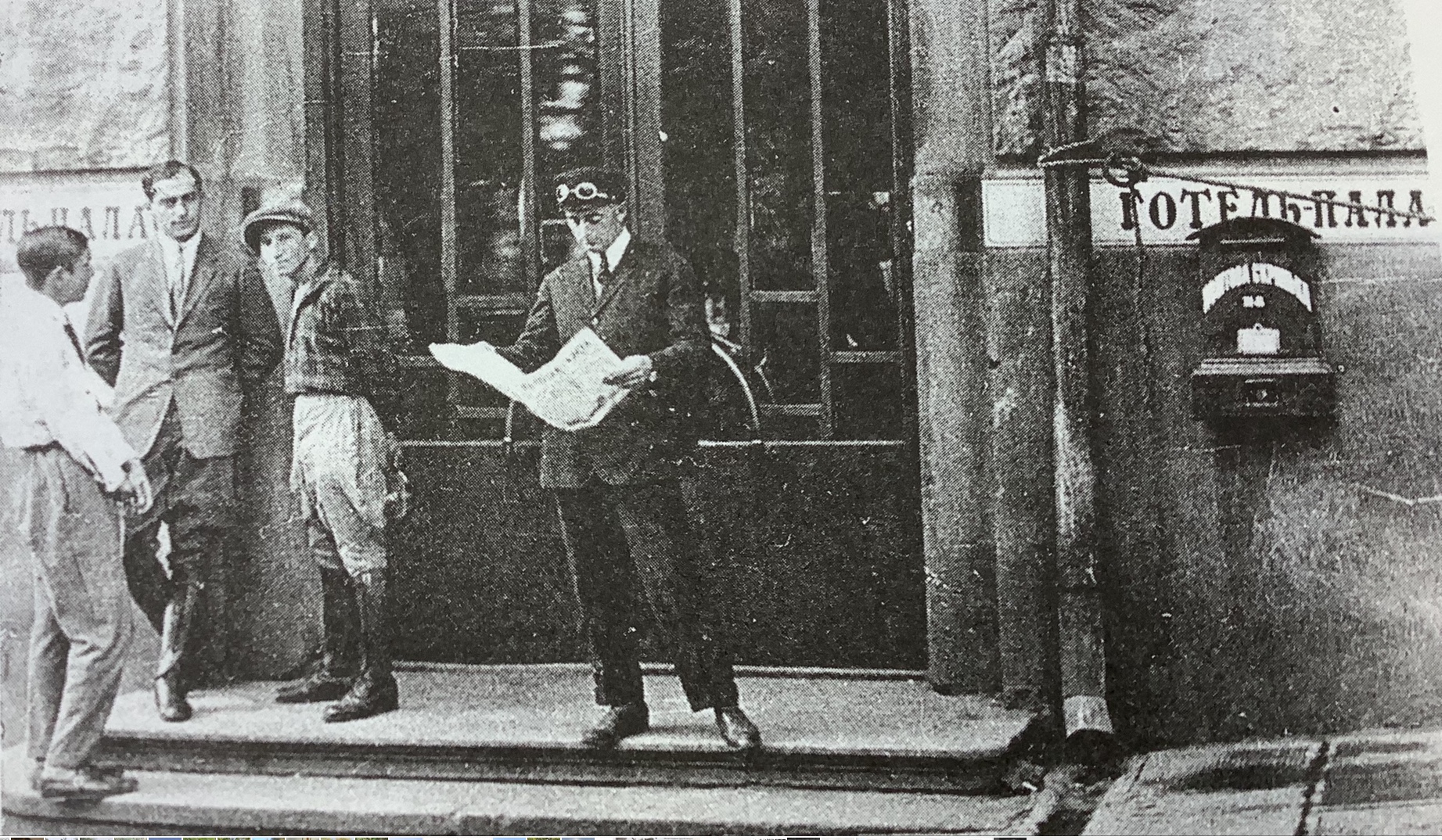 Dziga Vertov and Elizaveta Svilova stayed in the hotel when they moved to Kyiv in 1927 (not certain if Mikhail Kaufman was there also). This photograph shows MK (2nd left) and DV (right) outside the entrance. Note the design of the doors as seen in [00:25:57] and [00:30:31]. [photograph courtesy of the Oleksandr Dovzhenko Centre, from ‘Mikhail Kaufman’s Ukrainian Dilogy’, S. Bytiutskyi, 2018]
Dziga Vertov and Elizaveta Svilova stayed in the hotel when they moved to Kyiv in 1927 (not certain if Mikhail Kaufman was there also). This photograph shows MK (2nd left) and DV (right) outside the entrance. Note the design of the doors as seen in [00:25:57] and [00:30:31]. [photograph courtesy of the Oleksandr Dovzhenko Centre, from ‘Mikhail Kaufman’s Ukrainian Dilogy’, S. Bytiutskyi, 2018]
The figure in the centre (possibly the cameraman Georgii Khimchenko) is intriguing as he is dressed in the same clothing that Mikhail Kaufman is often seen in, giving rise to the possibility that he was a ‘stand-in’ for MK in some of the scenes in the film where his face is not visible, such as the introduction in the Shantser Cinema and Novo-Sukharevsky Market.
 [00:26:03] Corner of Theatre Square, Moscow. Metropol Hotel in the background, Maly Theatre on the lhs. This is a view to the left of the one in screen shot [00:25:50].
[00:26:03] Corner of Theatre Square, Moscow. Metropol Hotel in the background, Maly Theatre on the lhs. This is a view to the left of the one in screen shot [00:25:50].
 Current view of the same corner. Maly Theatre on the left, Metropol Hotel in the background. [Google Earth]
Current view of the same corner. Maly Theatre on the left, Metropol Hotel in the background. [Google Earth]
The Maly Theatre (literally ‘Small Theatre’ in contrast to the ‘Bolshoi’) has been in this building since 1824. One of the leading classical theatres of Europe it also operates the Shchepkin Theatre School, Moscow’s oldest.
The Metropol is one of Europe’s greatest Grand Hotels. Opened in 1905 in a beautiful Art Nouveau style building designed by the Scottish-Russian architect William Walcot its central stained glass vaulted dining room must one of the most spectacular places in the world to have breakfast (from personal experience!). From a balcony in this room the great Russian bass Fyodor Shalyapin sang and Vladimir Lenin declaimed. After the Revolution the Metropol was used for government offices and then returned to being a deluxe hotel as the Bolsheviks realised that foreign visitors would expect something better than the average post-revolution Moscow hotel!
[00:26:12] [00:26:17] Close up of the traffic policeman at the signal in Kuznetsky Most, Moscow (assumed).
[00:26:19] Telephoto view of Revolution Square taken from the Bolshoi.
[00:26:23] [00:26:57] [00:27:03] Traffic signal on Kuznetsky Most (assumed).
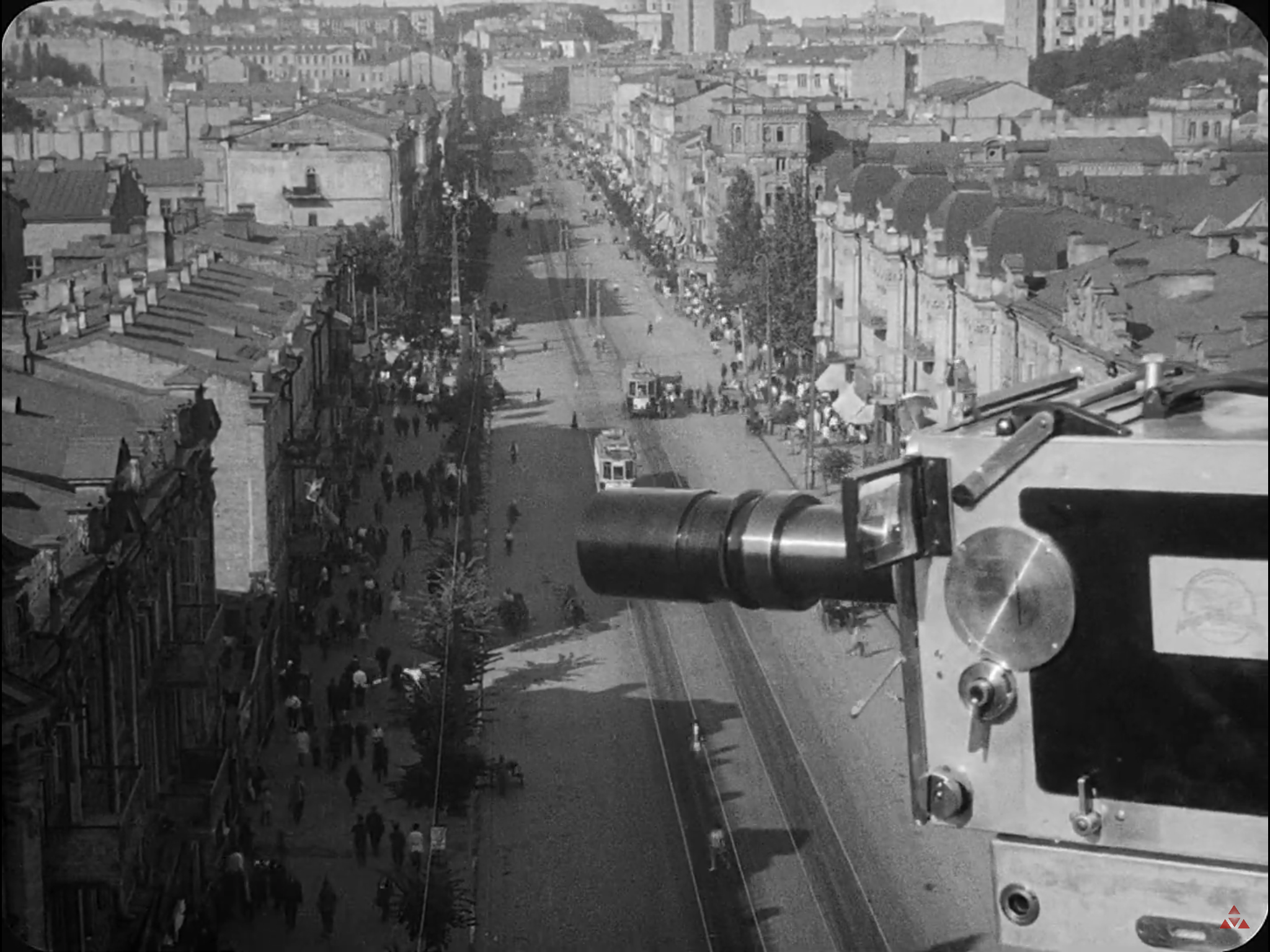 [00:26:25] [00:26:43] [00:26:52] [00:27:06] The camera overlooks Velyka Vasylkivska Street and Khreschatyk beyond, in Kyiv. Mykhailo Kalnytsky suggests the camera(s) were on the roof of No. 13 Velyka Vasylkivska (a five storey building) as it is on a bend in the road (see screenshot [00:18:48]). The depth of field (ie the camera is in focus as well as the background) is impressive!
[00:26:25] [00:26:43] [00:26:52] [00:27:06] The camera overlooks Velyka Vasylkivska Street and Khreschatyk beyond, in Kyiv. Mykhailo Kalnytsky suggests the camera(s) were on the roof of No. 13 Velyka Vasylkivska (a five storey building) as it is on a bend in the road (see screenshot [00:18:48]). The depth of field (ie the camera is in focus as well as the background) is impressive!
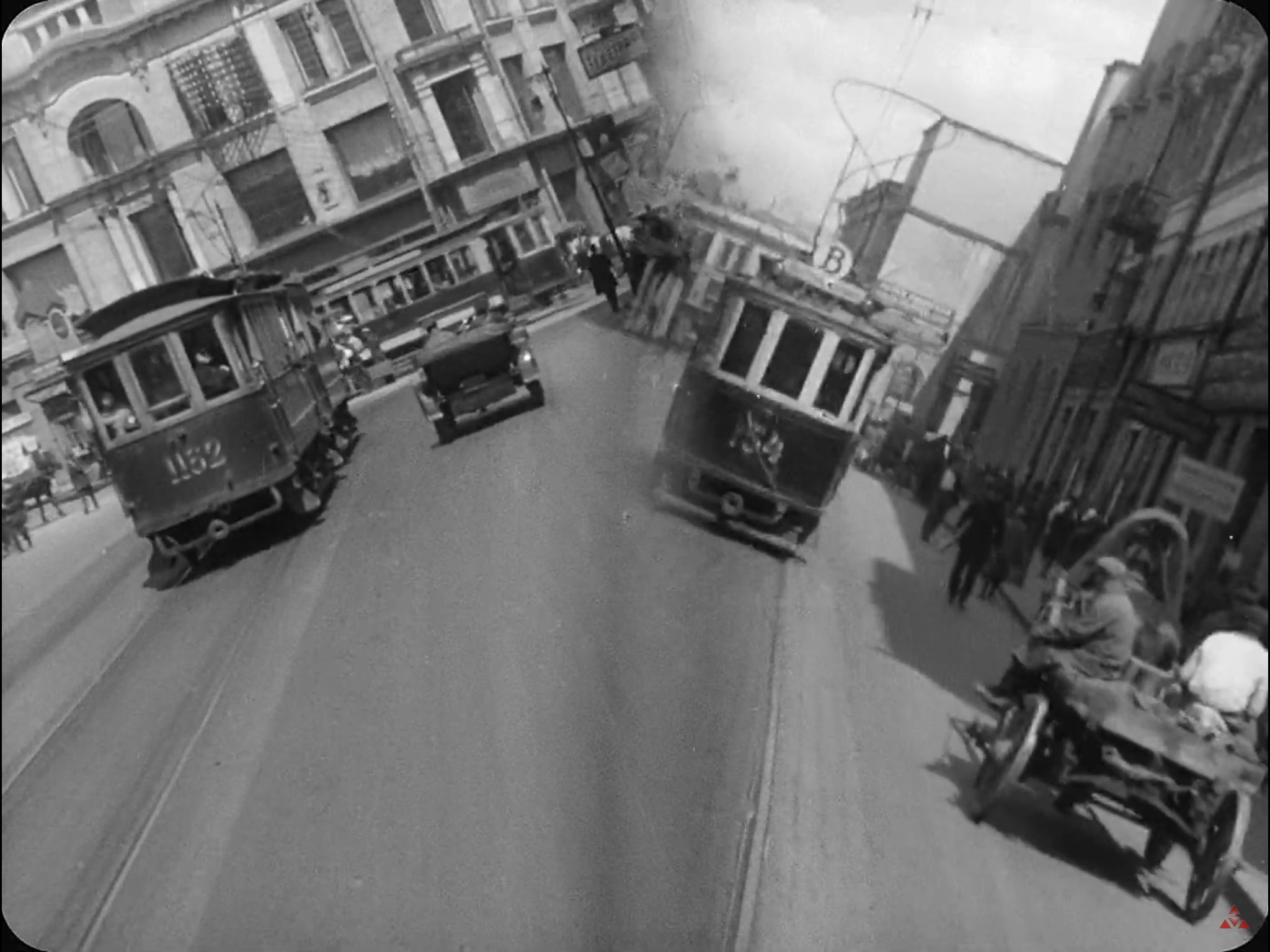 [00:27:36] Split screen view of Moscow streets and trams. Locations not found.
[00:27:36] Split screen view of Moscow streets and trams. Locations not found.
[00:27:52] Tverskaya Street, corner of Strastnaya Square.
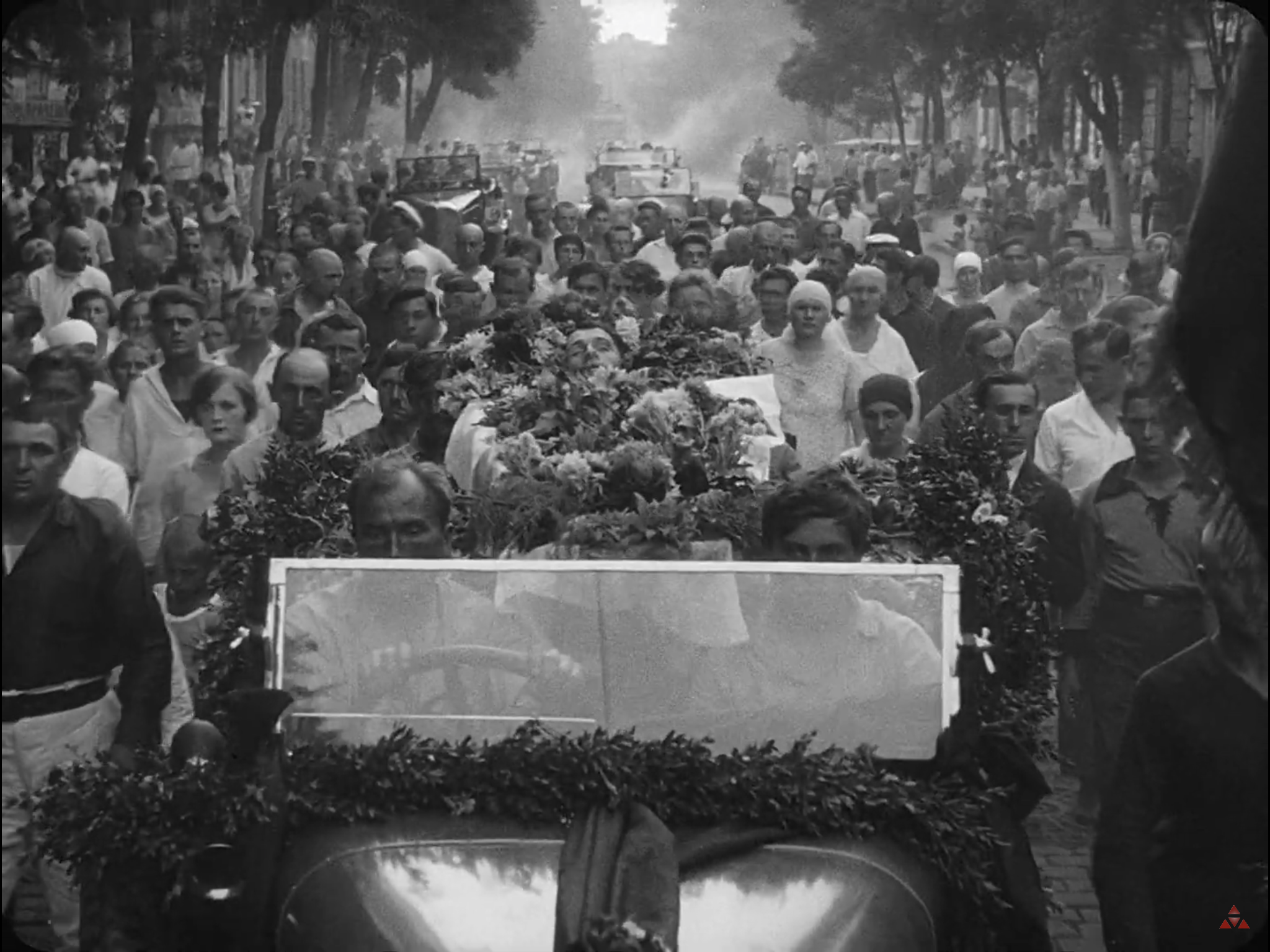 [00:28:18 on] Funeral procession, Derybasivska Street, Odesa. Presumably the cortege is for an important individual, but his identity is unknown so far. The street was known as Lassalle Street at the time, after the Prussian socialist philosopher Ferdinand Lassalle.
[00:28:18 on] Funeral procession, Derybasivska Street, Odesa. Presumably the cortege is for an important individual, but his identity is unknown so far. The street was known as Lassalle Street at the time, after the Prussian socialist philosopher Ferdinand Lassalle.
[00:28:25 on] Marriage and dusty street, Odesa? Location not found.
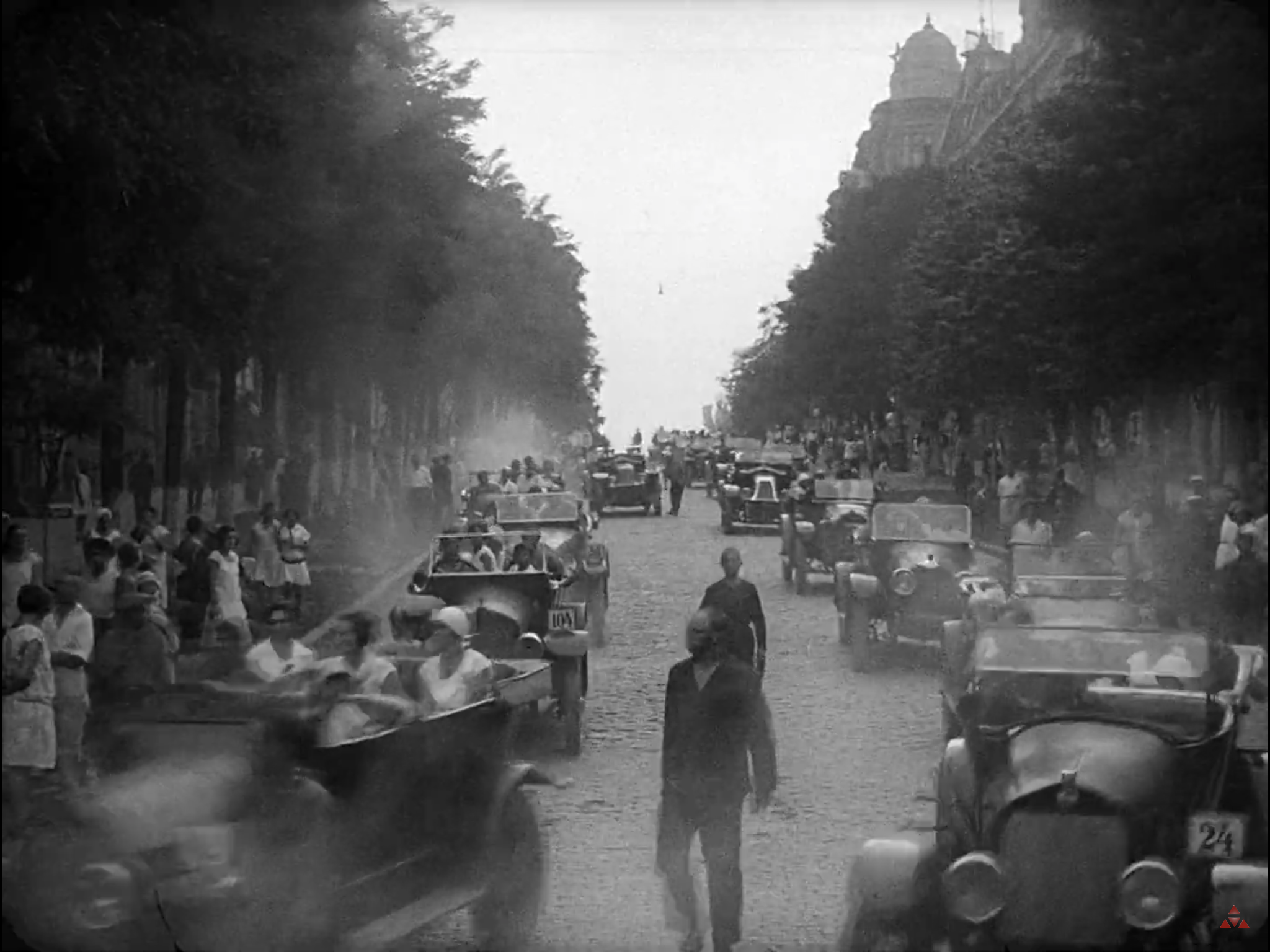 [00:29:02] Car procession, corner of Derybasivska Street and Pushkins’ka, Odesa. Part of the funeral cortege above? The corner dome of the huge Novikov Building can be seen in the background.
[00:29:02] Car procession, corner of Derybasivska Street and Pushkins’ka, Odesa. Part of the funeral cortege above? The corner dome of the huge Novikov Building can be seen in the background.
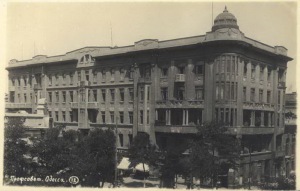 1913 Novikov Building, Derybasivska Street, Odesa. [M. Kalnytsky]
1913 Novikov Building, Derybasivska Street, Odesa. [M. Kalnytsky]
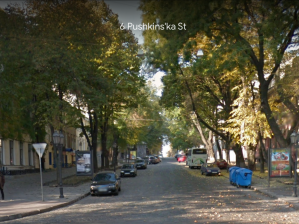 Current view of the same location. The camera was probably mounted on the camera car as the screenshot has a more elevated viewpoint. [Google Earth]
Current view of the same location. The camera was probably mounted on the camera car as the screenshot has a more elevated viewpoint. [Google Earth]
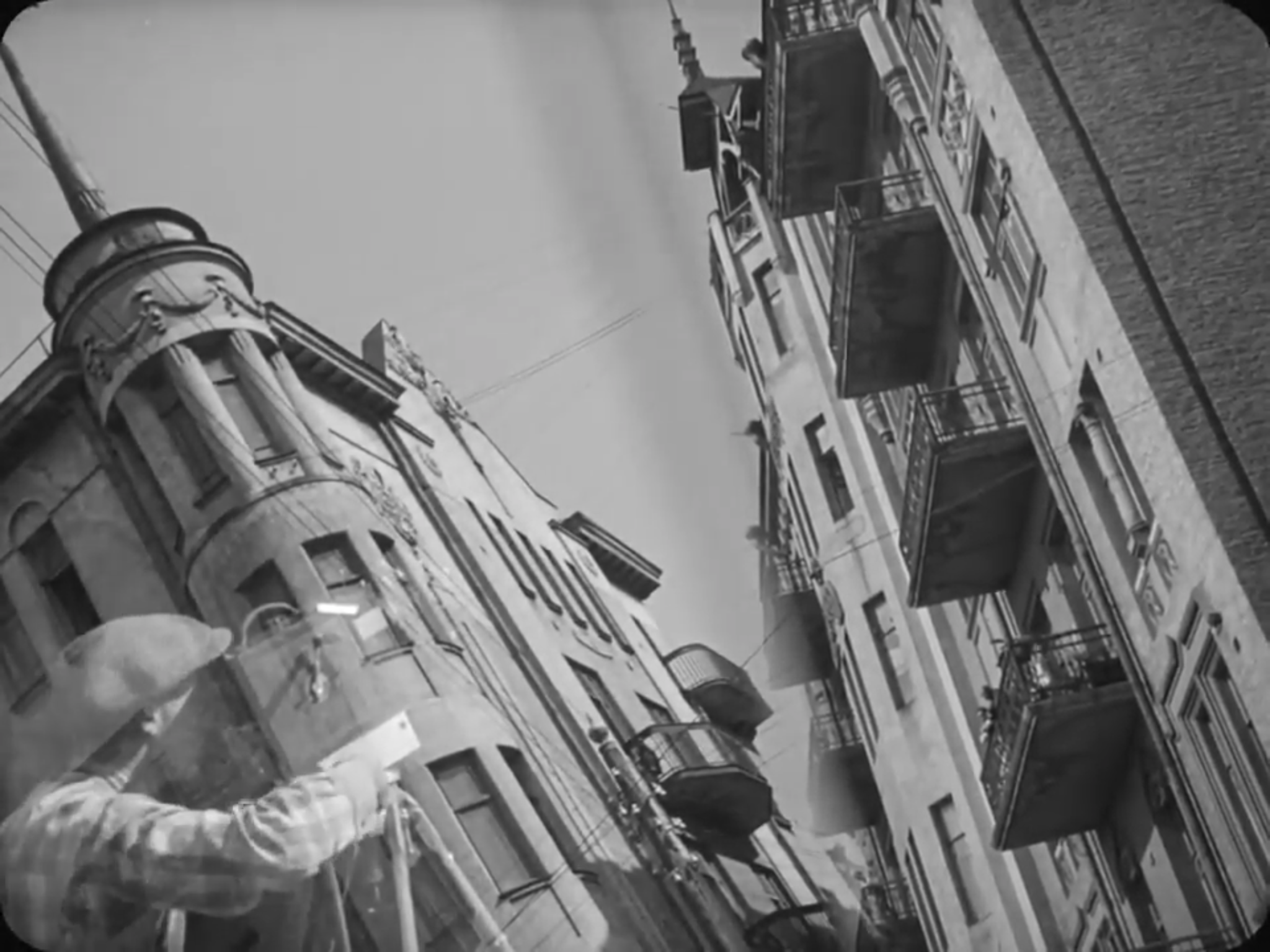 [00:29:16] [00:29:27] [00:29:33] MK filming in a double (triple?) exposure of angled buildings. Both buildings still exist on Strilets’ka Street in Kyiv. The building with the spire is on the corner of Reitarska Street where the ambulance garage is located [00:31:31].
[00:29:16] [00:29:27] [00:29:33] MK filming in a double (triple?) exposure of angled buildings. Both buildings still exist on Strilets’ka Street in Kyiv. The building with the spire is on the corner of Reitarska Street where the ambulance garage is located [00:31:31].
[Google Earth]
[00:29:40] [00:29:59] [00:30:10] Okhotny Ryad, Moscow.
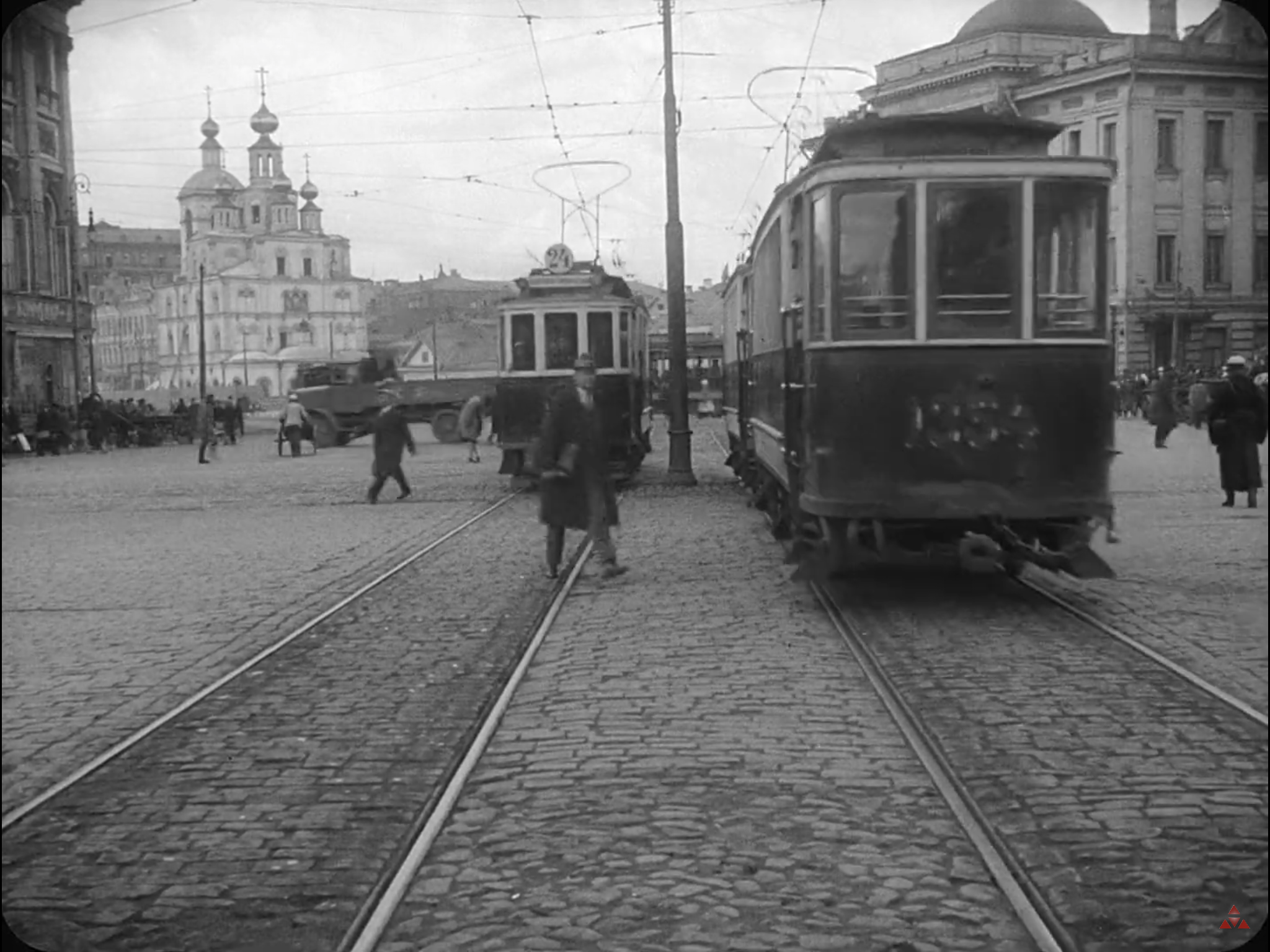 [00:29:44] Okhotny Ryad with a much clearer view of St Paraskeva church.
[00:29:44] Okhotny Ryad with a much clearer view of St Paraskeva church.
[00:29:45 on] Interior of the Palace Hotel [see 00:25:57]. The design of the doors confirms the location. It is assumed that the lift and telephone box in some of the scenes are also in the hotel, but this has not been verified. The poster for the Kyiv Opera that appears in [00:25:57] on the left of the doors is not visible. It may be concealed behind the wall or there may be two revolving doors into the hotel.
[00:30:23] [00:30:35] Teatral’nyy Projzed, Moscow.
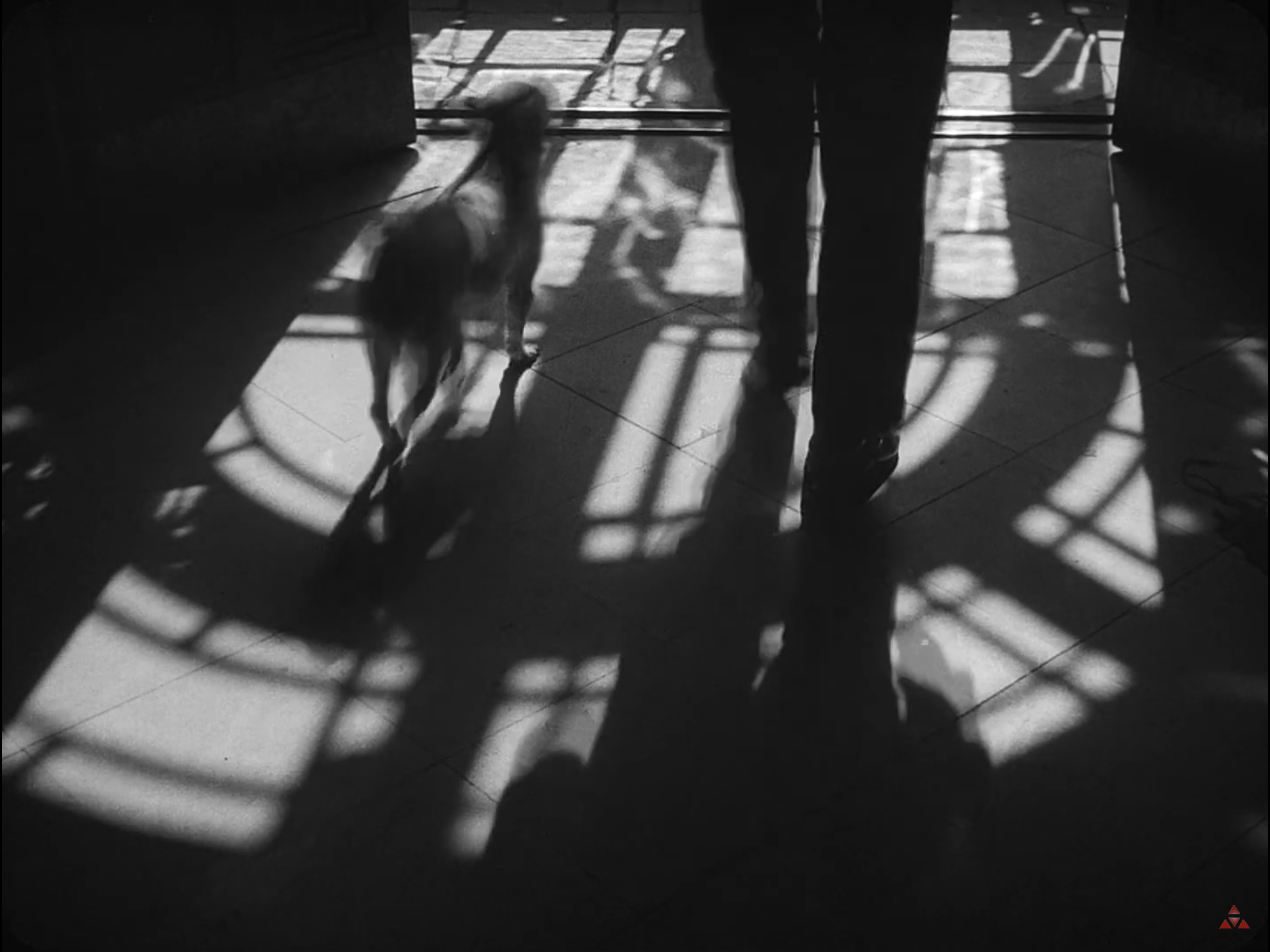 [00:30:27 on] Multiple shots of the shadow of the glass entrance door seen at the beginning of the film [00:08:46] and likely to be the main courtyard entrance to the Ginzburg Skyscraper.
[00:30:27 on] Multiple shots of the shadow of the glass entrance door seen at the beginning of the film [00:08:46] and likely to be the main courtyard entrance to the Ginzburg Skyscraper.
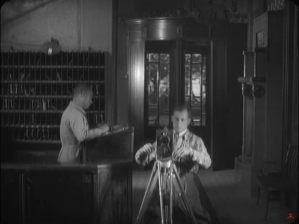 [00:30:31] The lobby of the Palace Hotel, Kyiv
[00:30:31] The lobby of the Palace Hotel, Kyiv
[00:30:42] Tram passing balloons (same tram as in [01:04:11]?). Location unknown.
[00:30:50] Double exposure of Okhotny Ryad, Moscow.
[00:31:00] Camera in a car (assumed) careering around a corner, Moscow (assumed). Location not found.
[00:31:03] Speeded up traffic in Teatral’nyy Projzed, Moscow.
[00:31:10] to [00:31:31] Fast montage sequence starting with the front of a Kyiv tram (white panel on the front), with an eye looking over various street scenes. These frames have been analysed carefully and some interesting and significant locations in Kyiv have been found by Mykhailo Kalnytsky (the images are only seen for a fraction of a second and some are difficult to locate). We have been unable to locate the other fragmented images in the sequence with certainty (one looks like the view from the Bolshoi).
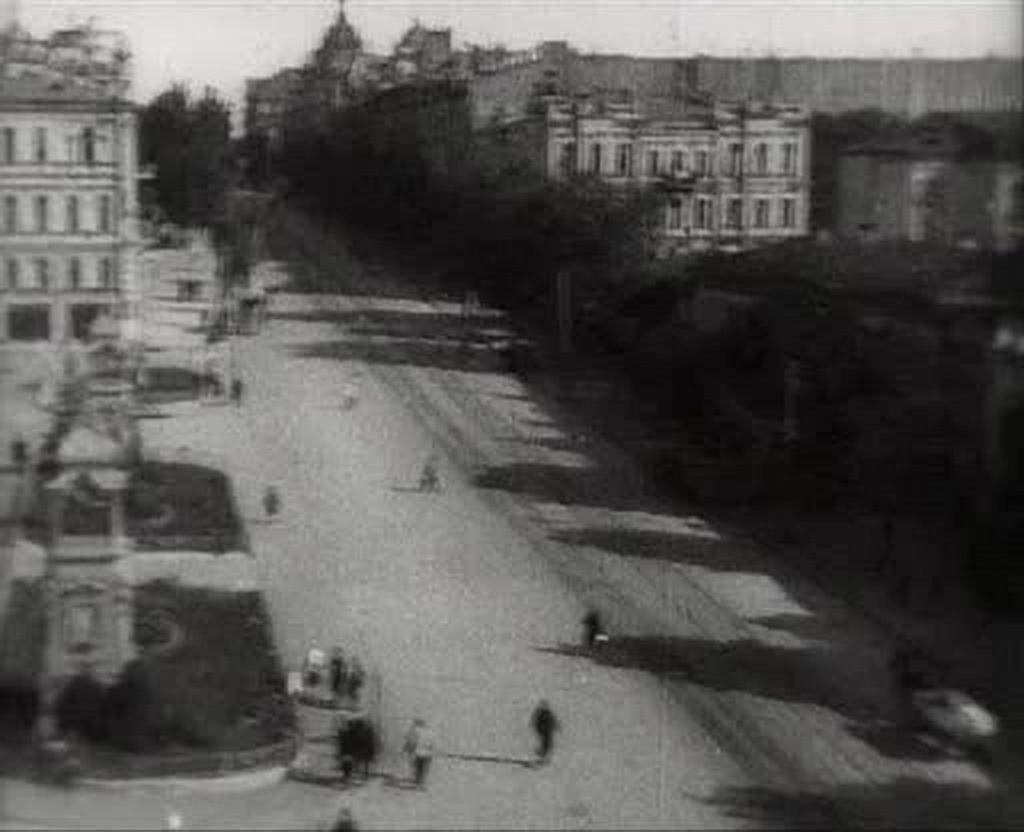 [00:31:11] Volodymyrska Street near the Opera House, Kyiv.
[00:31:11] Volodymyrska Street near the Opera House, Kyiv.
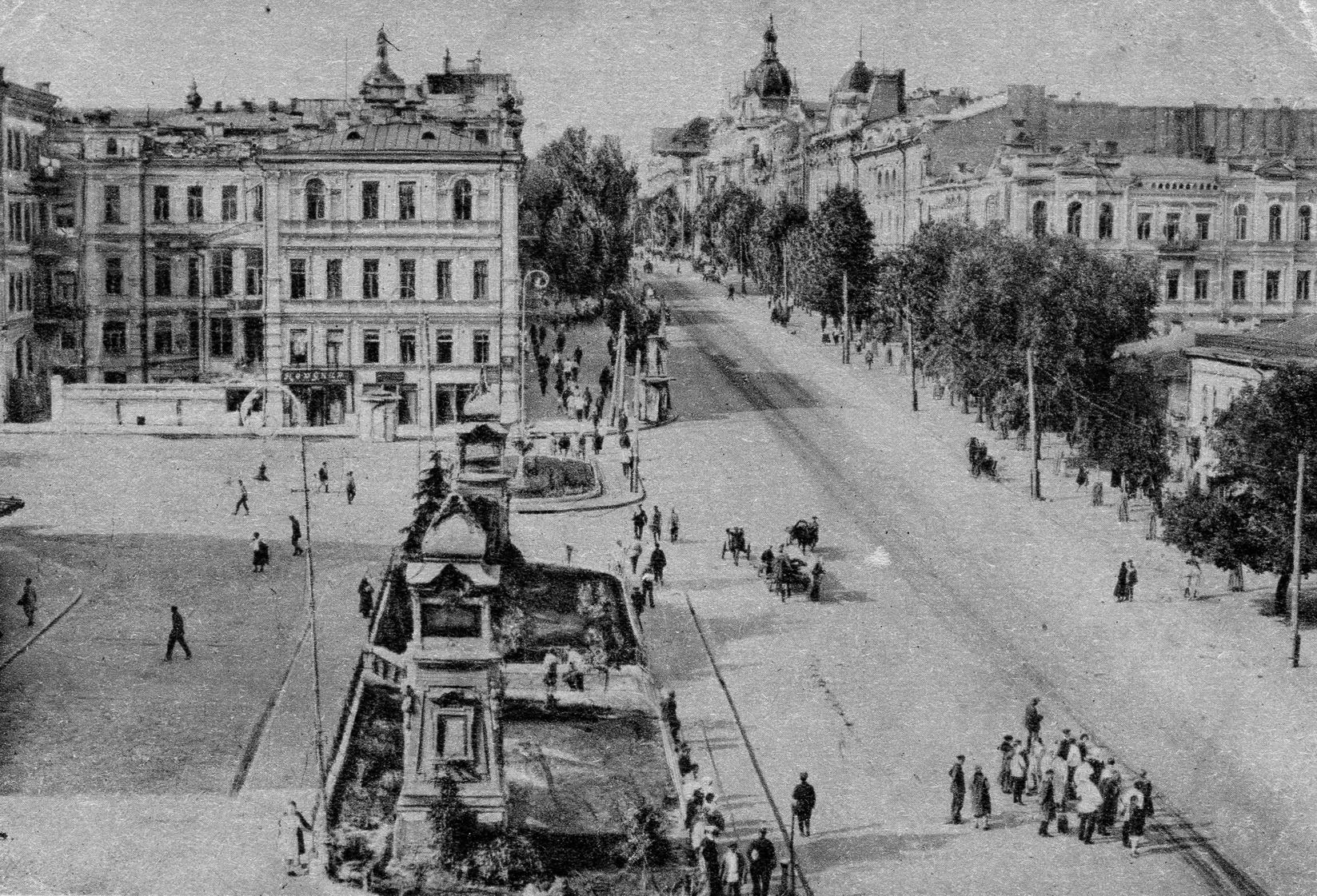 Photograph c1930 from the same location (Opera House hidden on lhs). [M. Kalnytsky]
Photograph c1930 from the same location (Opera House hidden on lhs). [M. Kalnytsky]
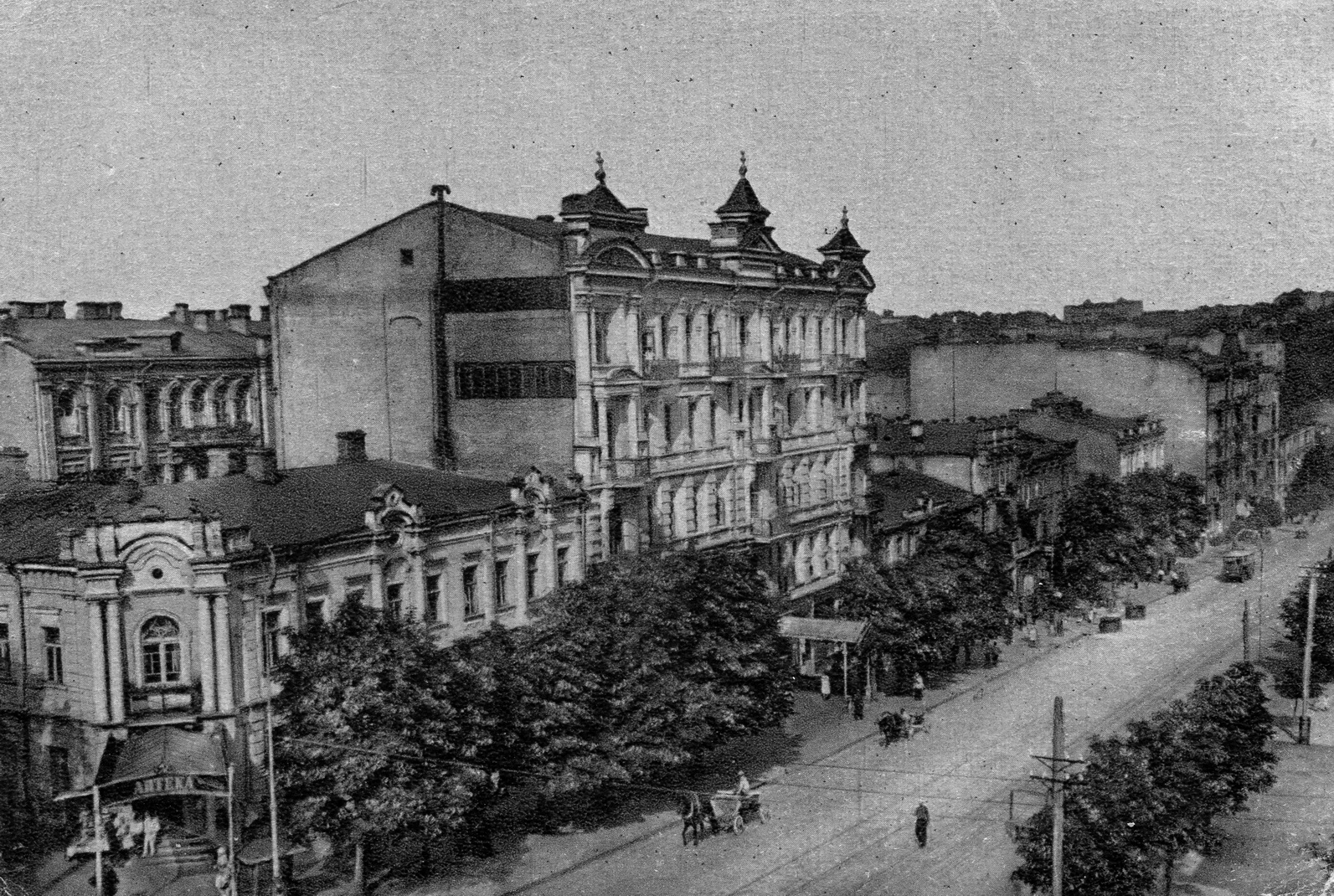 [00:31:11 next few frames] and [00:31:18] Lenina (now Bogdan Khmelnytsky) Street just below the intersection with Volodymyrska Street. Contemporary photograph of the same buildings, probably taken from the same location as the screenshots. [M. Kalnytsky]
[00:31:11 next few frames] and [00:31:18] Lenina (now Bogdan Khmelnytsky) Street just below the intersection with Volodymyrska Street. Contemporary photograph of the same buildings, probably taken from the same location as the screenshots. [M. Kalnytsky]
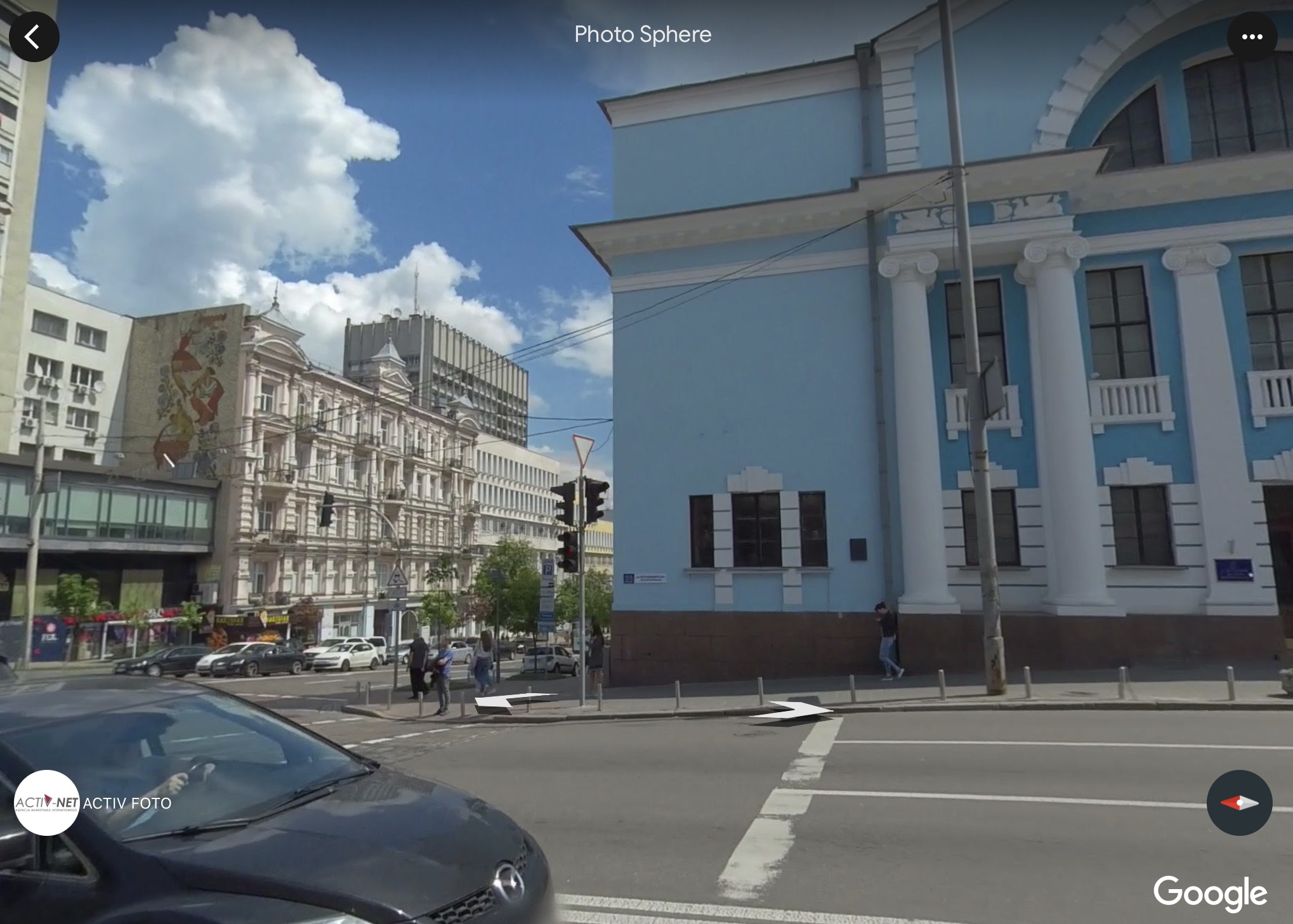 Current view of the intersection with the Academy of Sciences on the right and the only surviving building in the screenshot in the background.[Google Earth/Activ Foto]
Current view of the intersection with the Academy of Sciences on the right and the only surviving building in the screenshot in the background.[Google Earth/Activ Foto]
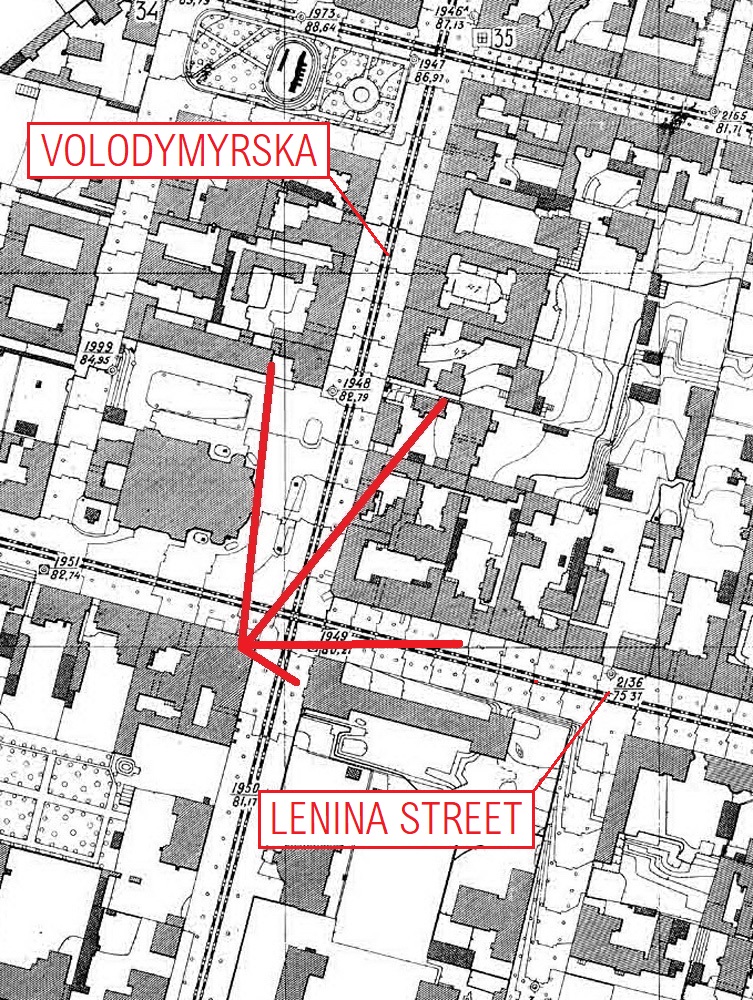 Contemporary street plan showing the camera location in a building on the corner of Lenina and Volodymyrska Streets. [M. Kalnytsky]
Contemporary street plan showing the camera location in a building on the corner of Lenina and Volodymyrska Streets. [M. Kalnytsky]
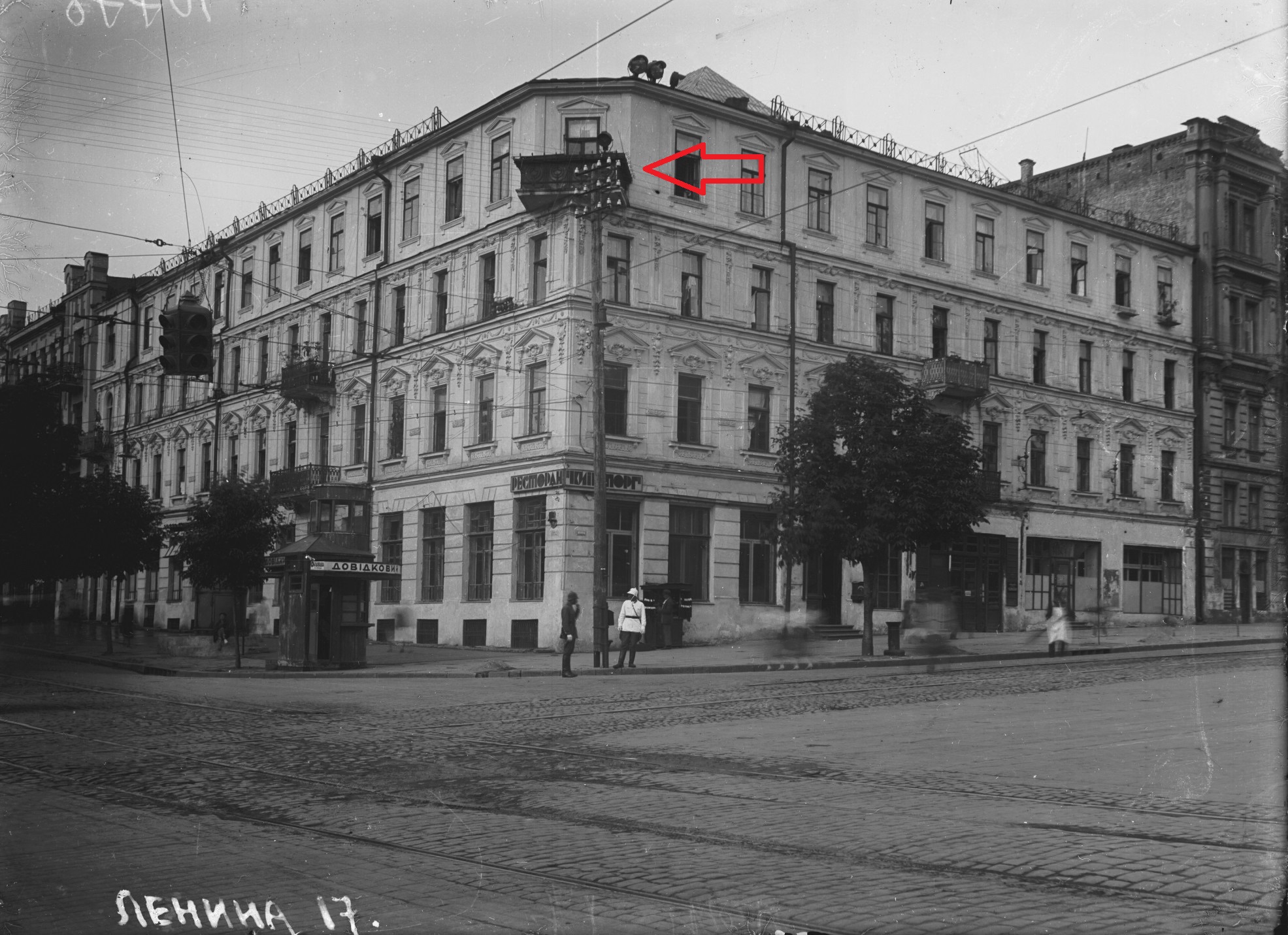 These fragmentary shots and [00:31:18] [00:31:21] would probably have been taken from the corner balcony at 17 Lenina Street, on the corner of Volodymyrska. The building no longer exists. Shots from this location do not appear in any other part of the film. [M. Kalnytsky]
These fragmentary shots and [00:31:18] [00:31:21] would probably have been taken from the corner balcony at 17 Lenina Street, on the corner of Volodymyrska. The building no longer exists. Shots from this location do not appear in any other part of the film. [M. Kalnytsky]
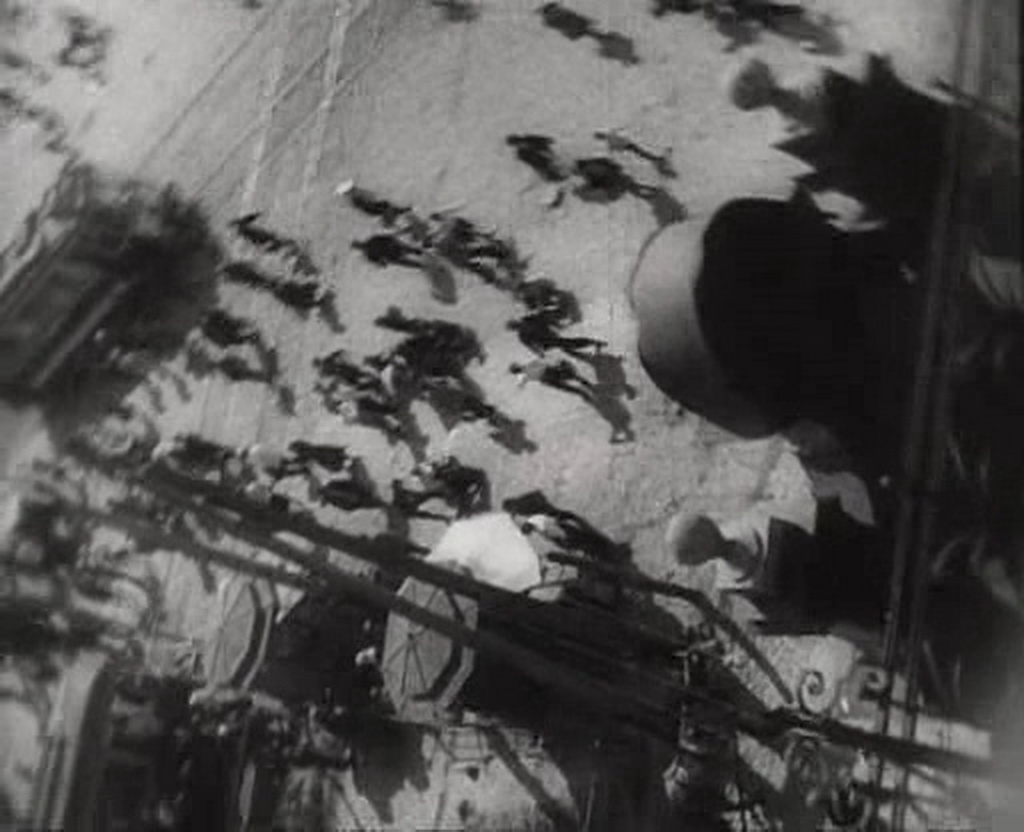
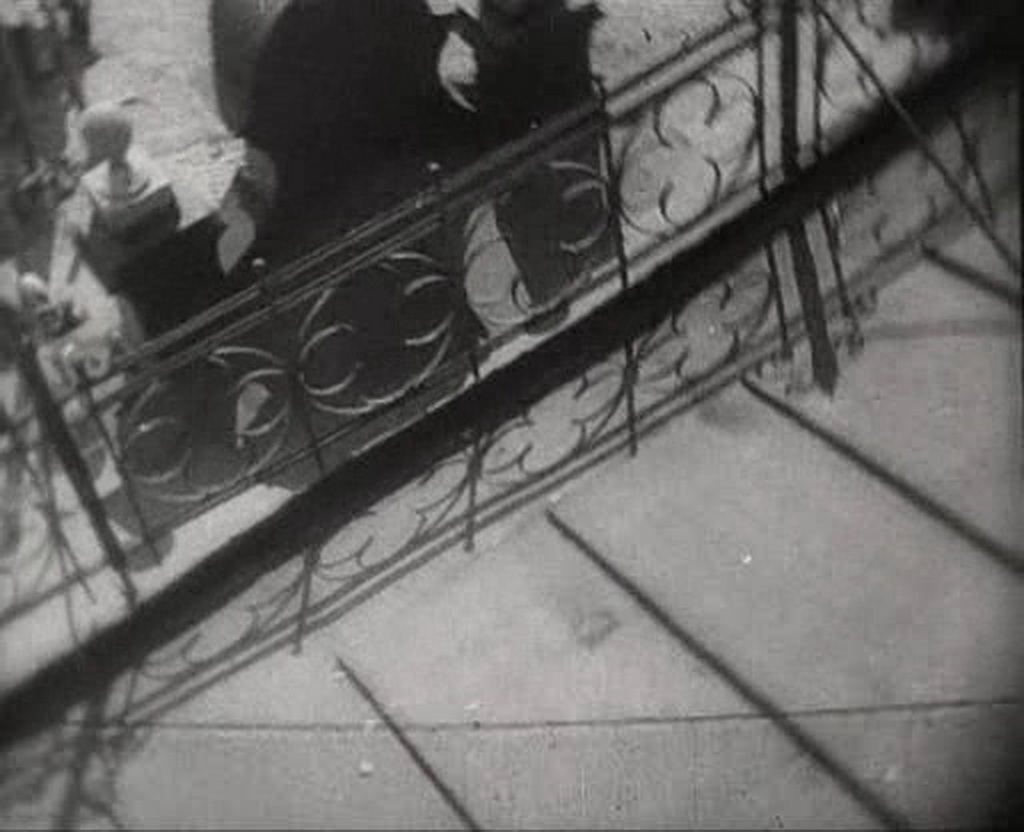 [00:31:12] [00:31:23] Roof top views of a building on Halytska Square.
[00:31:12] [00:31:23] Roof top views of a building on Halytska Square.
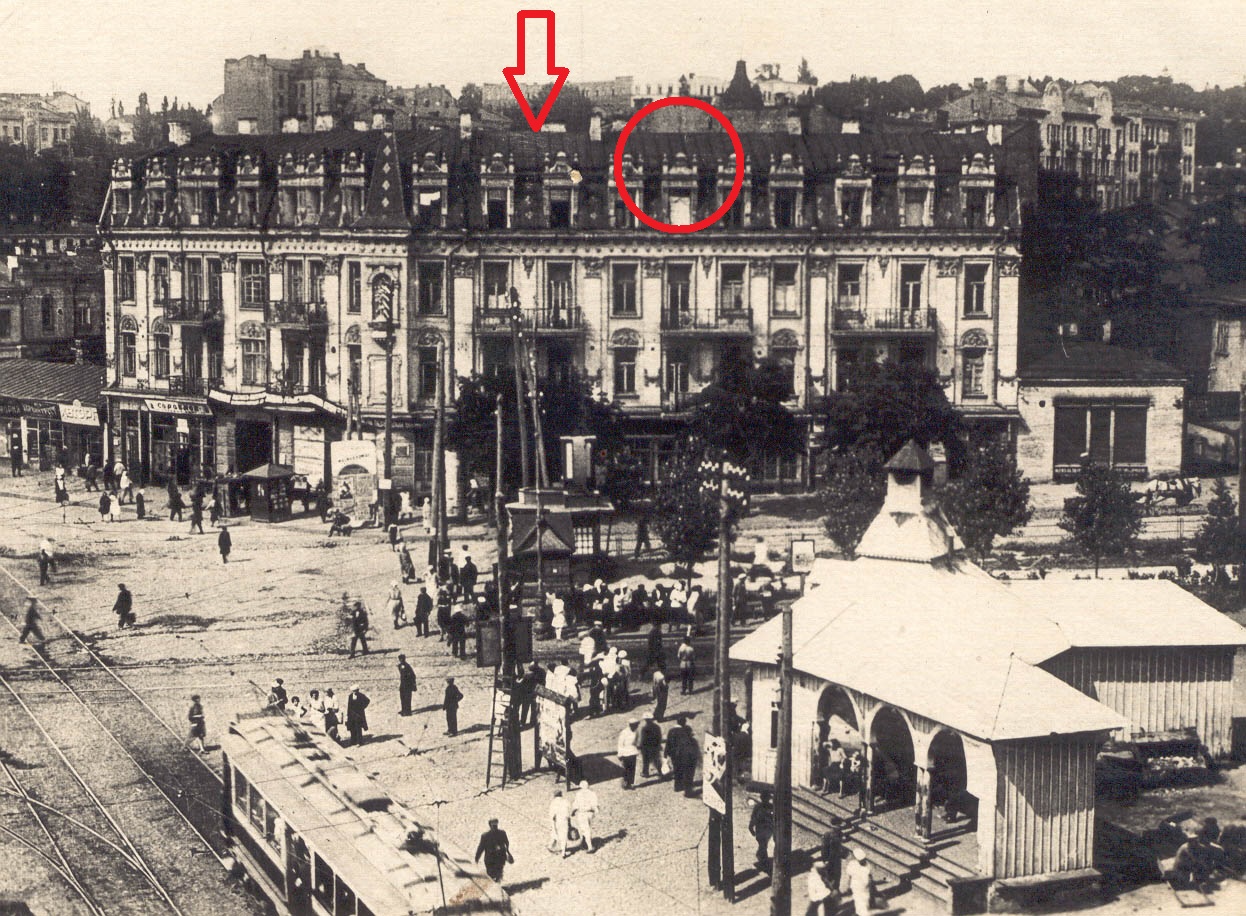 Contemporary view of the opposite side of Halytska Square to the one below. The building (which no longer exists) was on the corner of Taras Shevchenko Boulevard and Dmytrivska Street. The camera location can be confirmed as the roof of this building from the details of the attic window pediments. [M. Kalnytsky]
Contemporary view of the opposite side of Halytska Square to the one below. The building (which no longer exists) was on the corner of Taras Shevchenko Boulevard and Dmytrivska Street. The camera location can be confirmed as the roof of this building from the details of the attic window pediments. [M. Kalnytsky]
These fragmentary shots from the roof of a building on Halytska Square are interesting for two reasons. The fifth* high level camera location in Kyiv can be confirmed as the roof of this building from the fragmentary shots of the stone details on the top of the attic windows. Part of the wrought iron railing and lead or zinc roof covering can also be seen. The style of these shots (and others in this sequence) point to the use of a hand held automatic camera, most likely the Kinamo, and not the Debrie camera which is hand-cranked and weighs around 10kg. See my blog post on the cameras in the film for details. The more straightforward shots of the square (below) would most likely have been filmed with the Debrie to achieve the speeded up and reversed footage. You can see the small pavilion with a distinctive roof in the foreground of the contemporary photograph above on the lhs below.
*The others being the Red Kiev Hotel on Volodymyrska, 13 Velyka Vasylkivska, 28/2 Khreschatyk, and 17 Lenina Street.
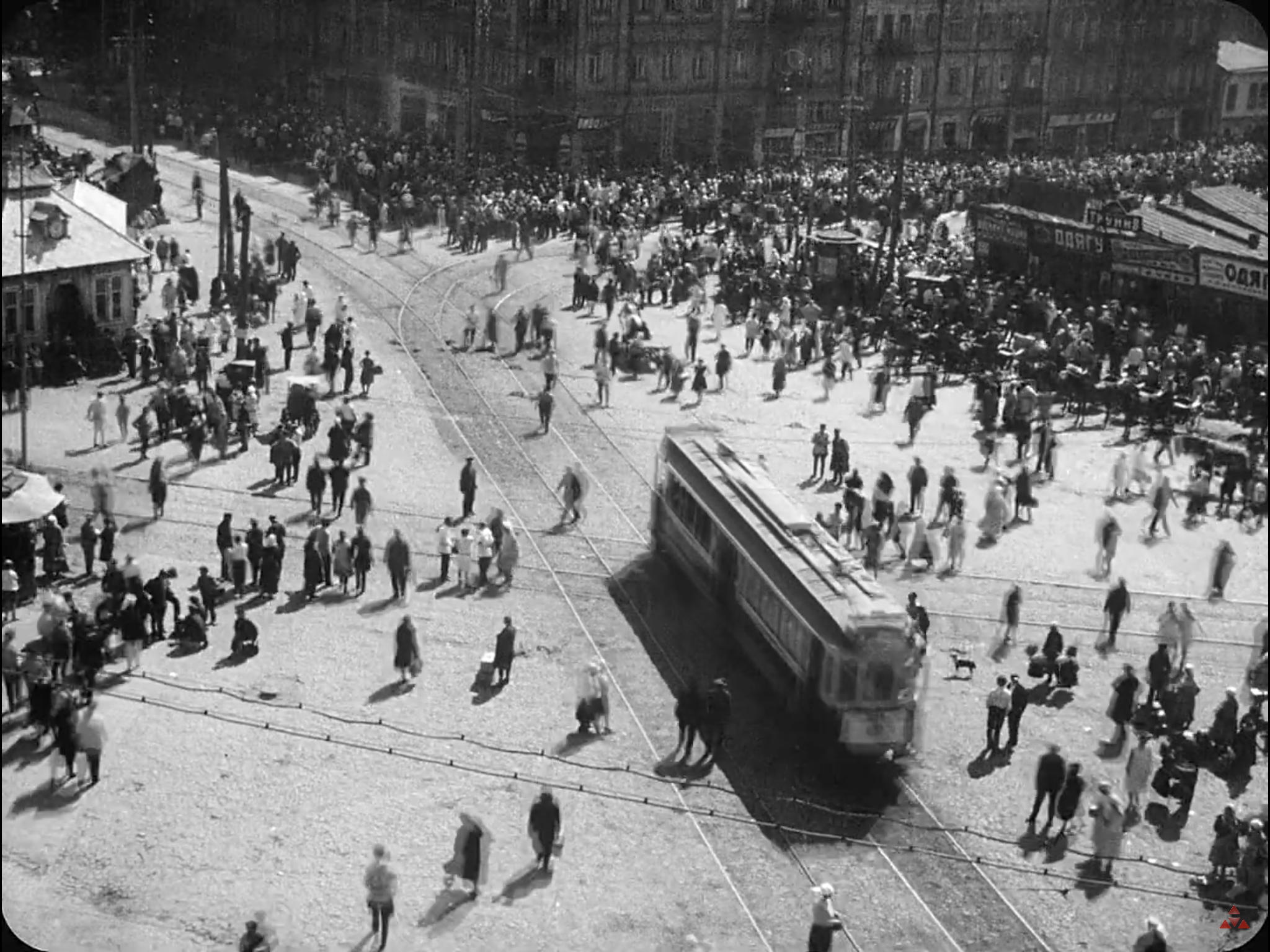 [01:06:17 on] Views over Halytska Square (shots of trams and people, speeded up and reversed).
[01:06:17 on] Views over Halytska Square (shots of trams and people, speeded up and reversed).
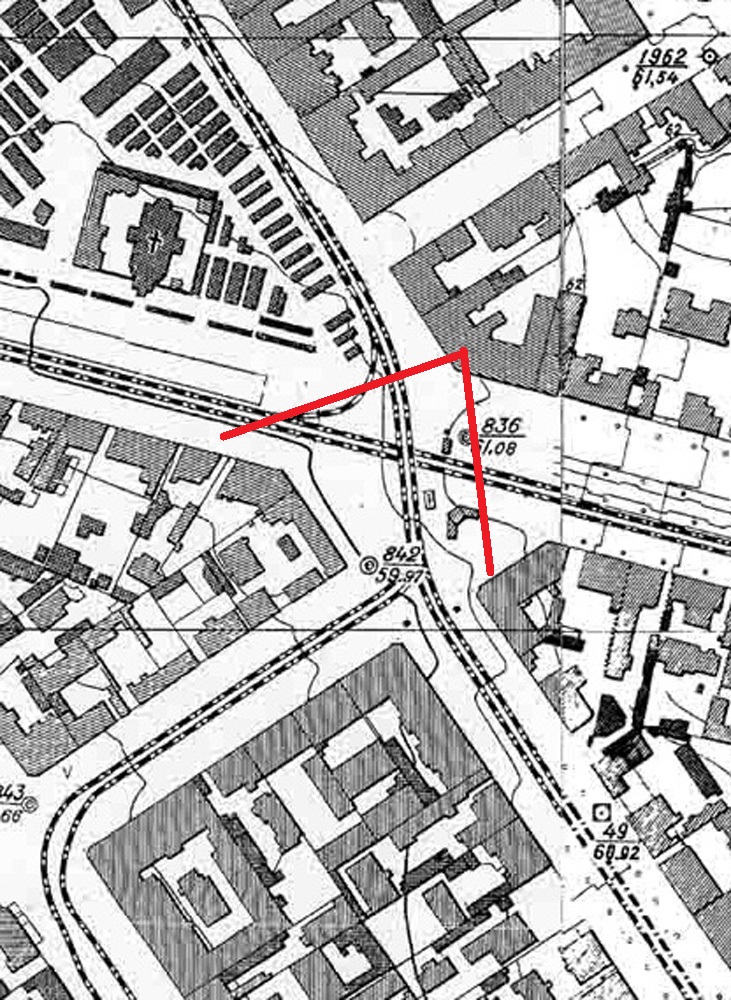 Contemporary street plan showing the camera location for the sequence in Halytska Square. [M. Kalnytsky]
Contemporary street plan showing the camera location for the sequence in Halytska Square. [M. Kalnytsky]
 [00:31:18] [00:31:21] Fragmentary shot of the All-Ukrainian Academy of Sciences on Volodymyrska Street, Kyiv. Taken from a building on the corner of Lenina Street (see above).
[00:31:18] [00:31:21] Fragmentary shot of the All-Ukrainian Academy of Sciences on Volodymyrska Street, Kyiv. Taken from a building on the corner of Lenina Street (see above).
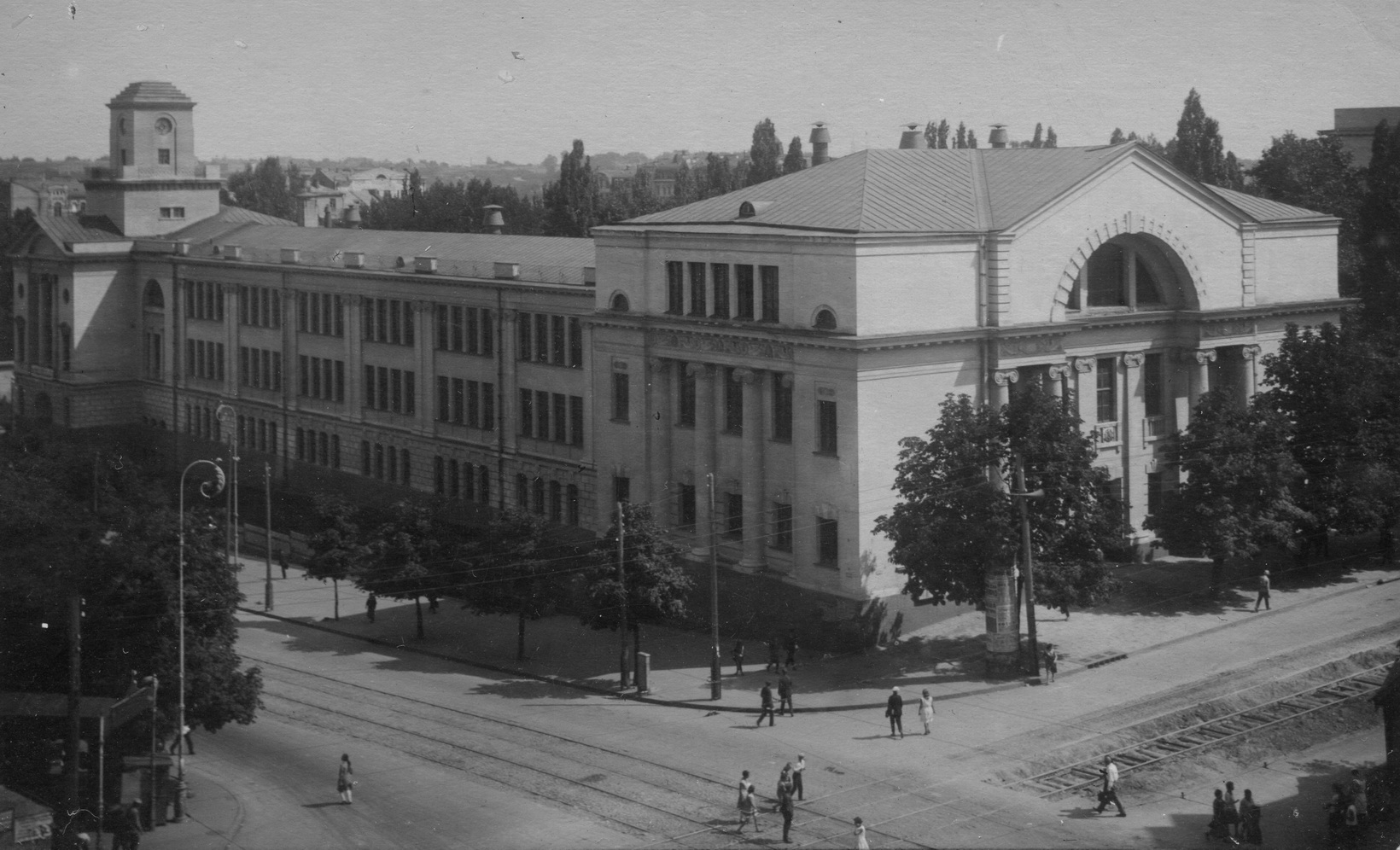 Mid 20thC view of the Academy building. [M. Kalnytsky]
Mid 20thC view of the Academy building. [M. Kalnytsky]
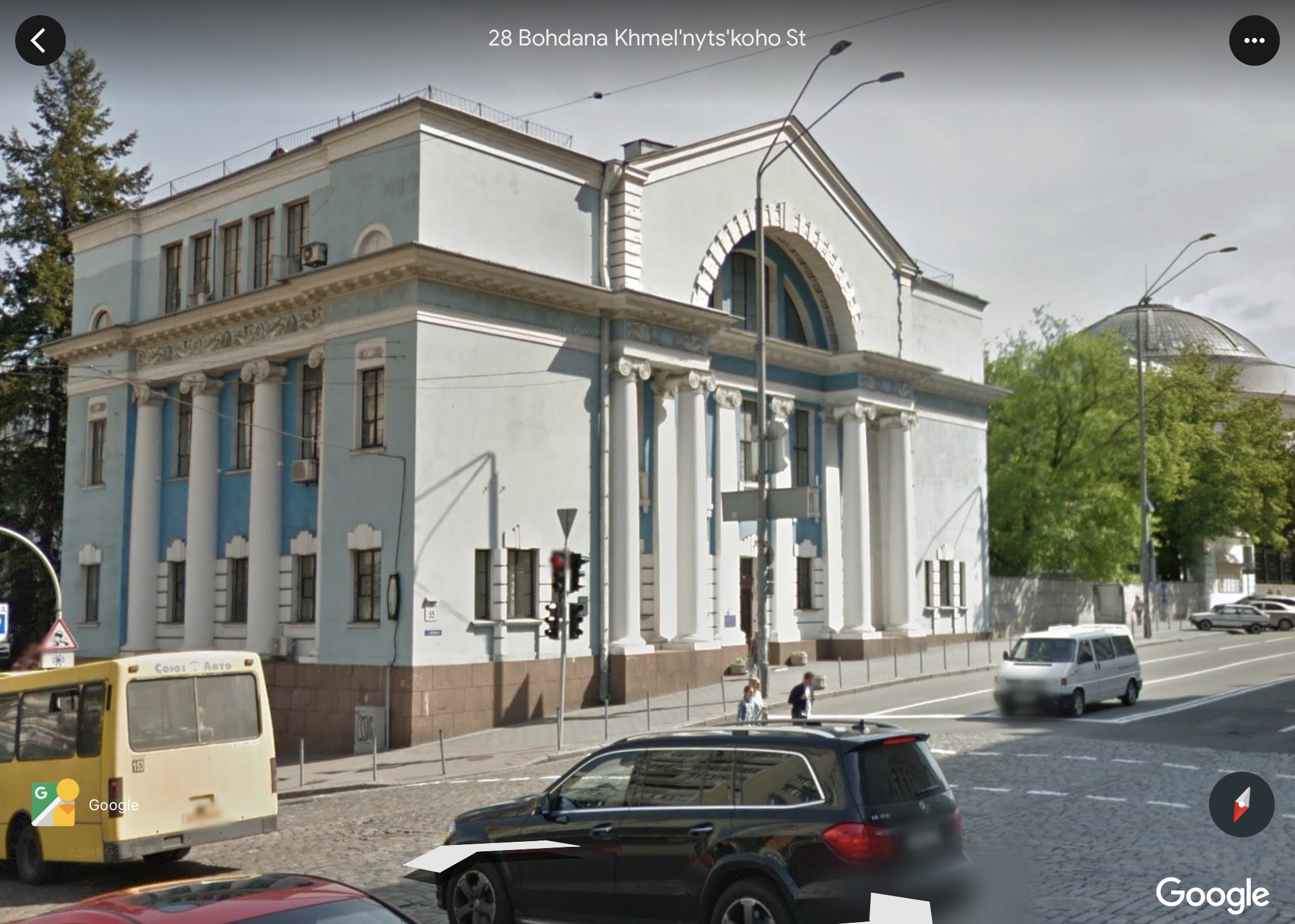 Current view. [Google Earth]
Current view. [Google Earth]
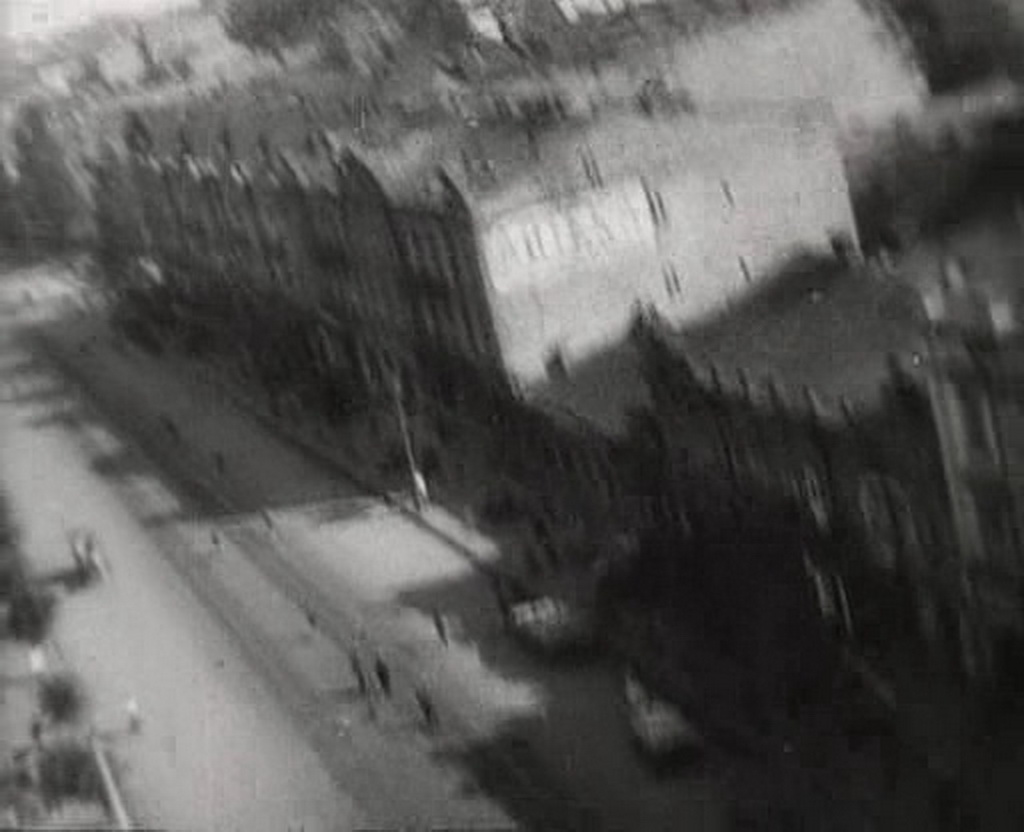 [00:31:25] Fragmentary shot of Velyka Vasylkivska Street, Kyiv, from the roof of No. 13 (see [00:18:48]). You can now see the full word АПТЕКА (pharmacy) on the side of the building.
[00:31:25] Fragmentary shot of Velyka Vasylkivska Street, Kyiv, from the roof of No. 13 (see [00:18:48]). You can now see the full word АПТЕКА (pharmacy) on the side of the building.
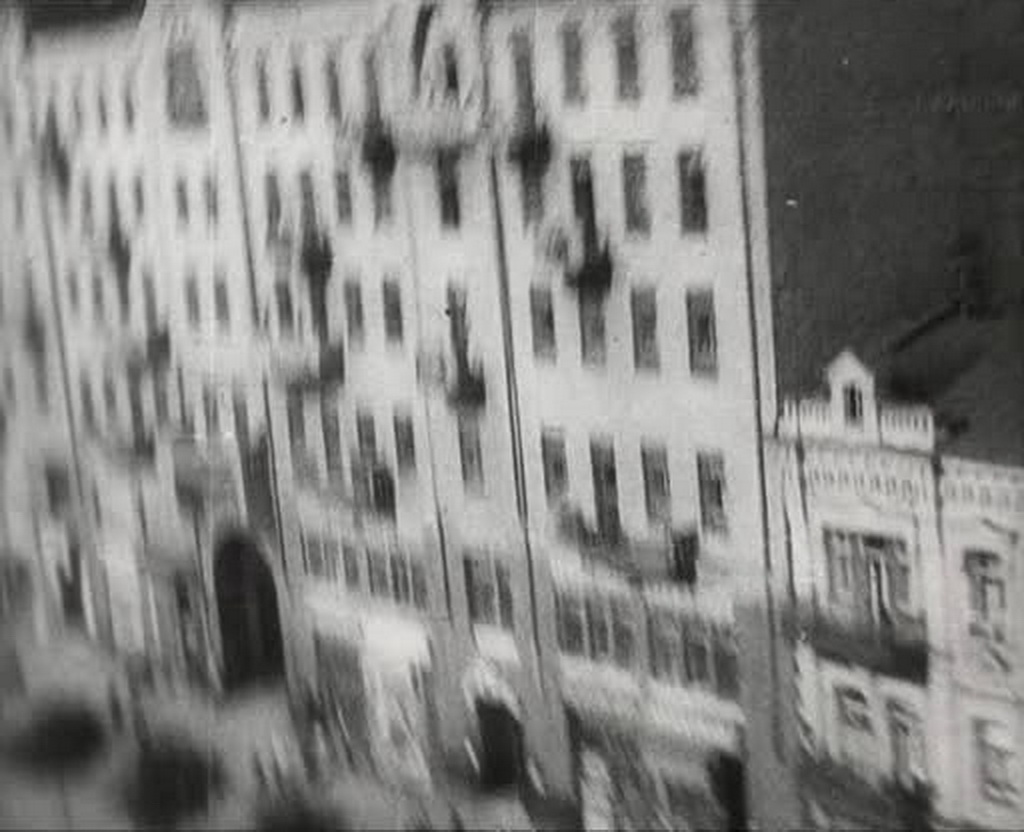 [00:31:29] Fragmentary shots of an apartment building on Velyka Vasylkivska Street taken from the roof of No. 13.
[00:31:29] Fragmentary shots of an apartment building on Velyka Vasylkivska Street taken from the roof of No. 13.
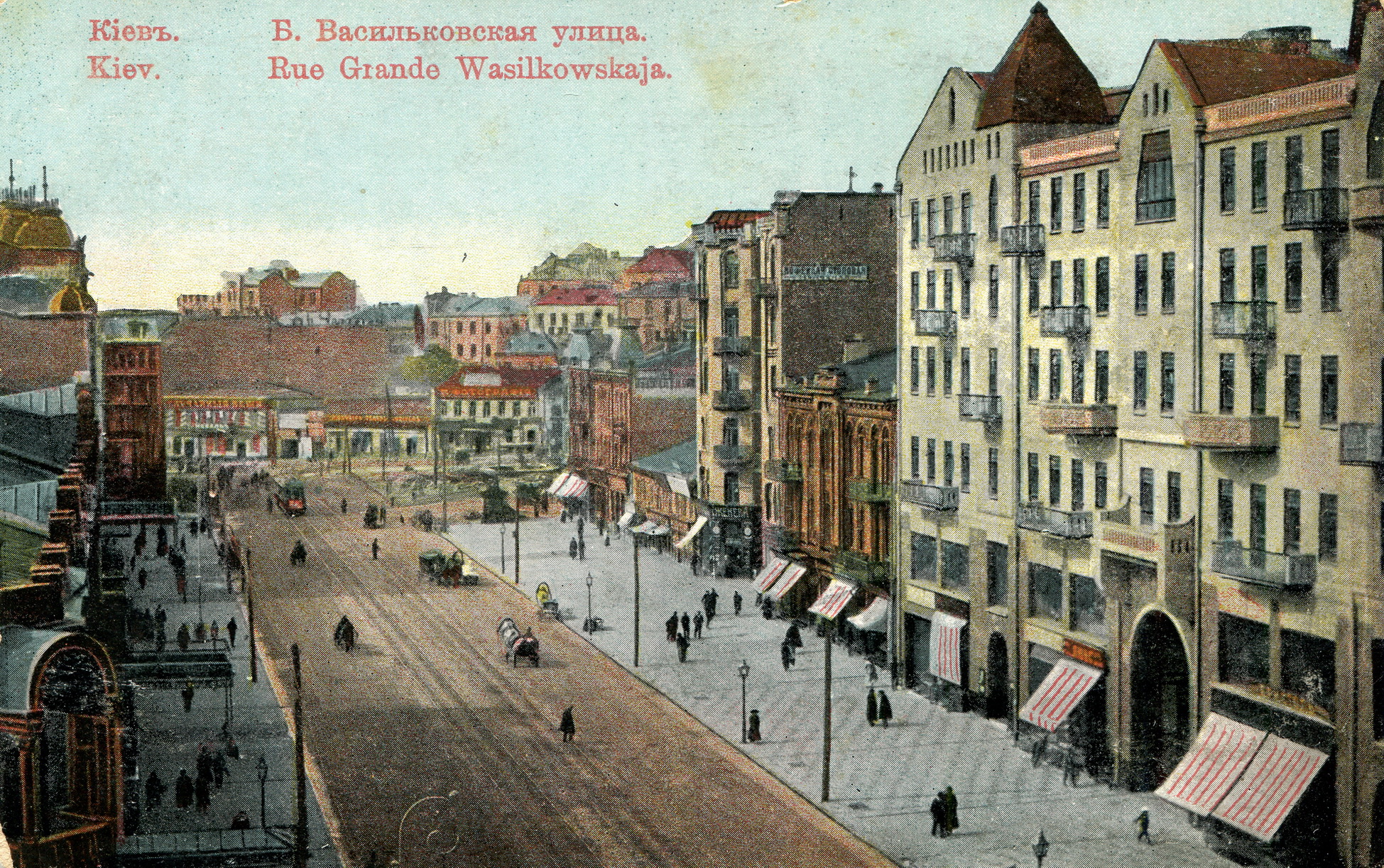 Early 1900s postcard view of the building, looking towards L’va Tolstoho Square. [M. Kalnytsky]
Early 1900s postcard view of the building, looking towards L’va Tolstoho Square. [M. Kalnytsky]
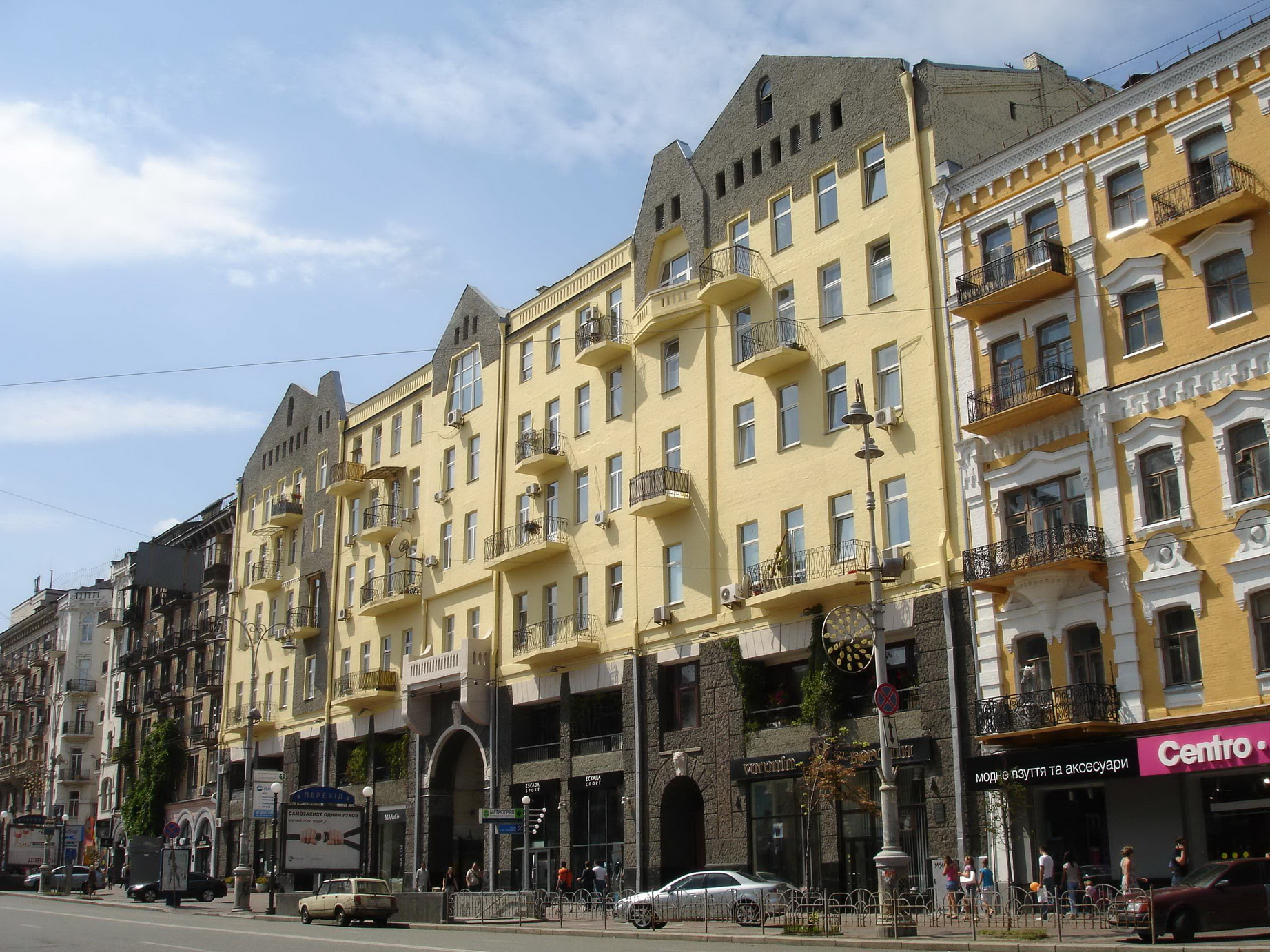 Current view of the recently restored building. An interesting early 20thC apartment block by the undeservedly little known architect Pavlo Svatkovsky. [photograph M. Kalnytsky]
Current view of the recently restored building. An interesting early 20thC apartment block by the undeservedly little known architect Pavlo Svatkovsky. [photograph M. Kalnytsky]
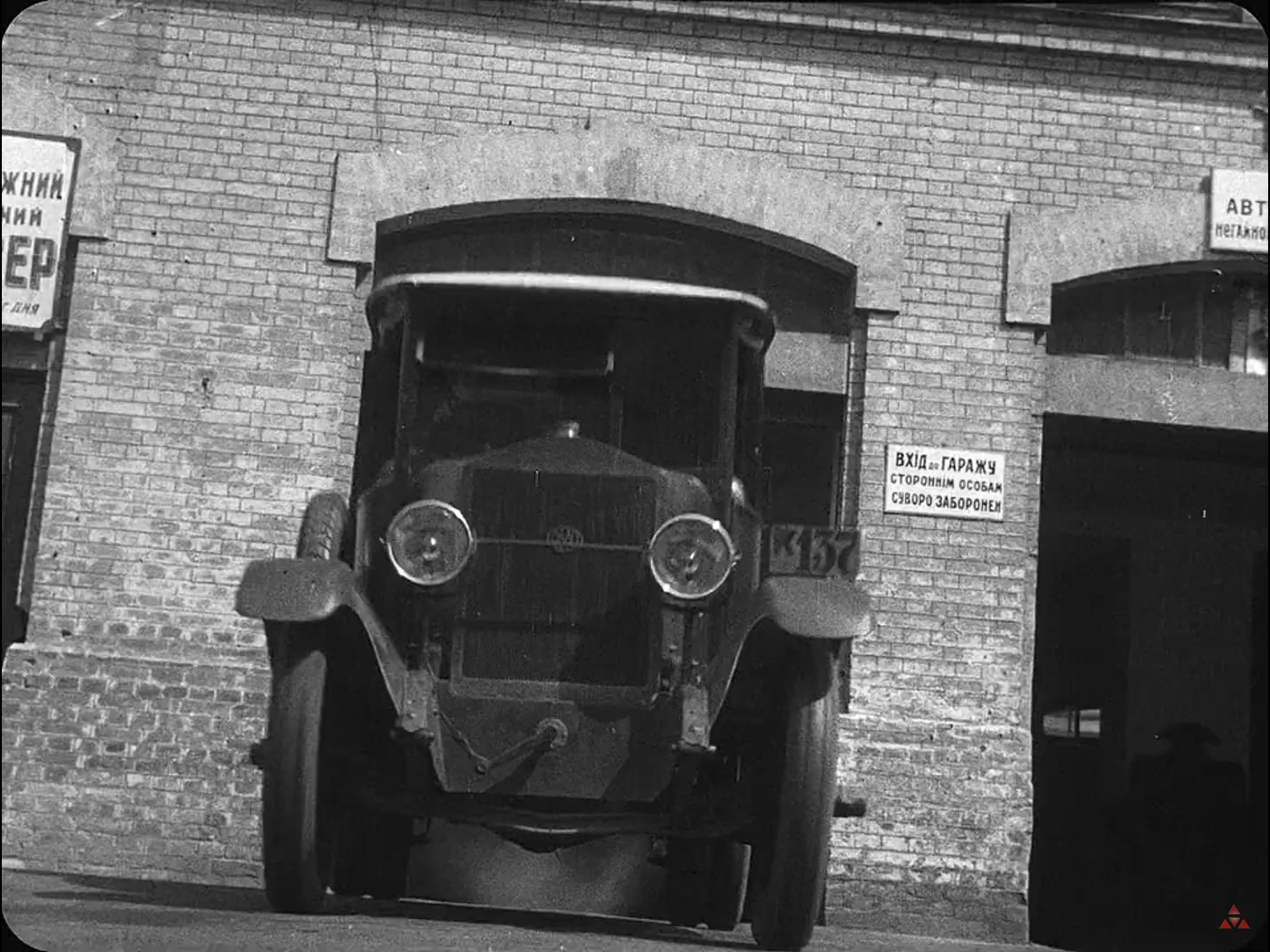 [00:31:31 on] Ambulance sequence, Kyiv. The ambulance garage was behind 22 Reitarska Street. The address can be seen on the back of the ambulance and the price list [00:33:05 on].
[00:31:31 on] Ambulance sequence, Kyiv. The ambulance garage was behind 22 Reitarska Street. The address can be seen on the back of the ambulance and the price list [00:33:05 on].
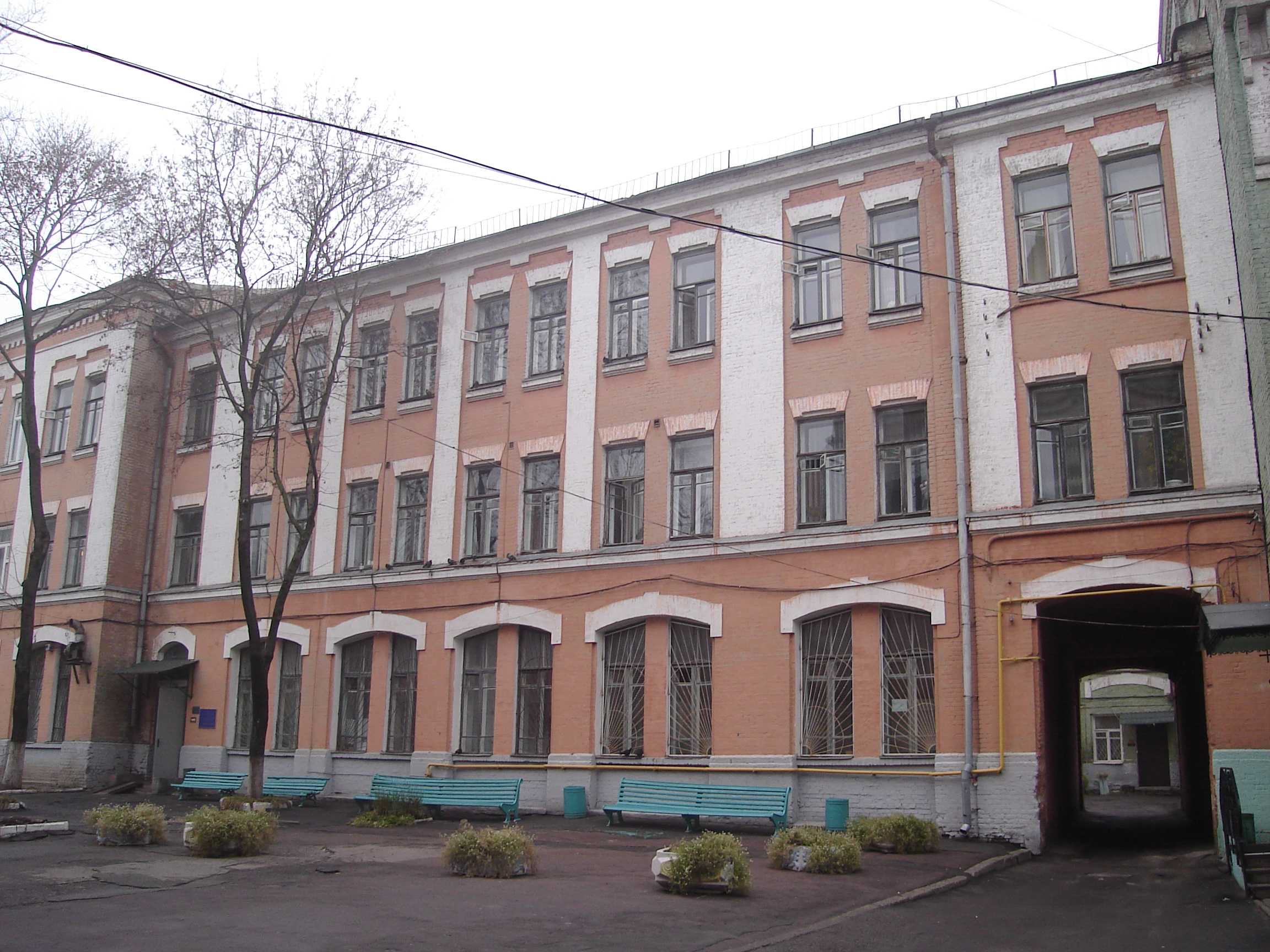 Recent photograph of the garage building in the courtyard of 22 Reitarska Street. The doors have been replaced with windows but the distinctive lintels are visible in the screenshot. [M. Kalnytsky]
Recent photograph of the garage building in the courtyard of 22 Reitarska Street. The doors have been replaced with windows but the distinctive lintels are visible in the screenshot. [M. Kalnytsky]
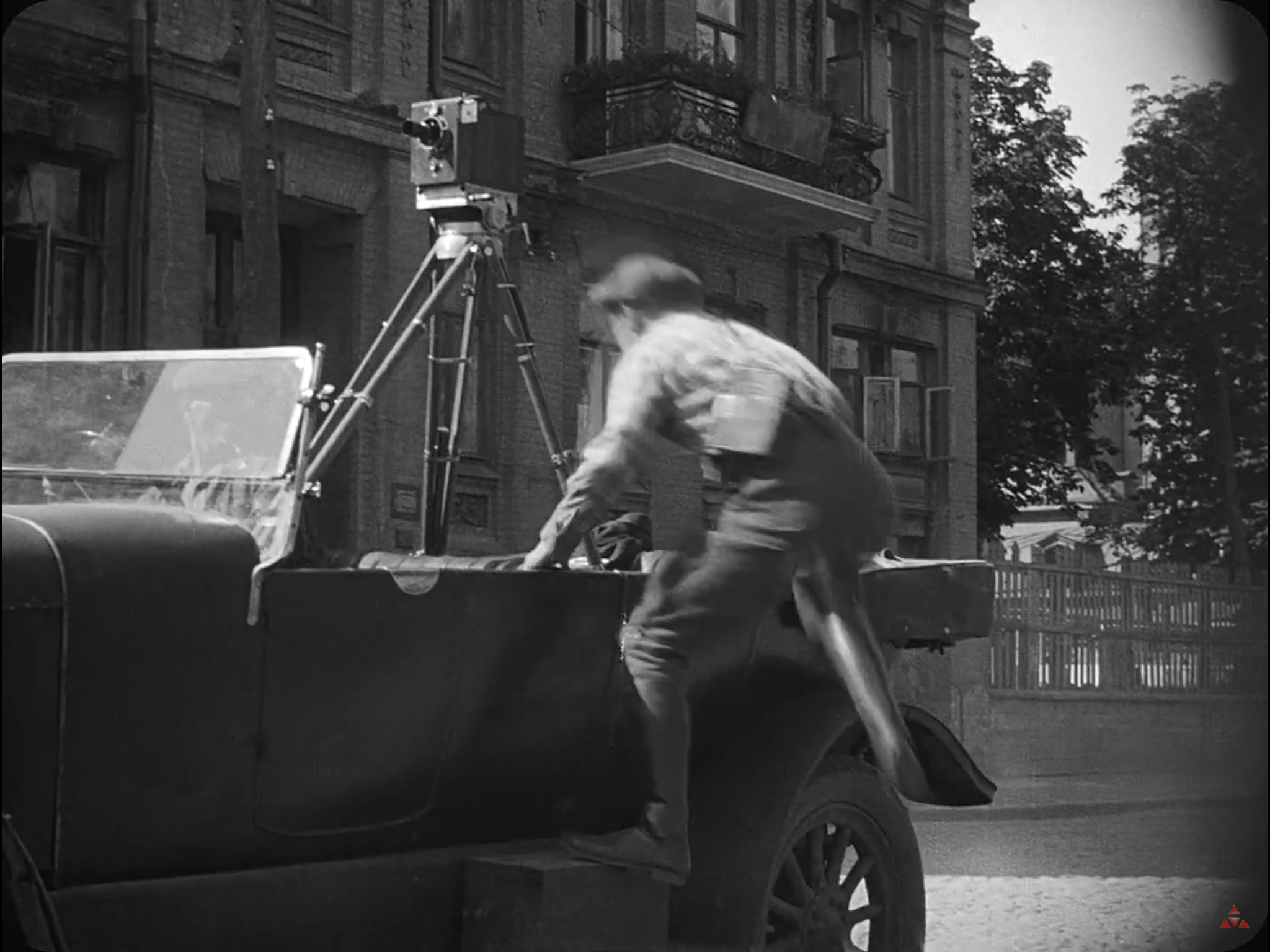 [00:31:41] The cameraman leaps into a car opposite the ambulance garage. The house behind still exists, below (the balconies have been changed, but the window details are recognisable).
[00:31:41] The cameraman leaps into a car opposite the ambulance garage. The house behind still exists, below (the balconies have been changed, but the window details are recognisable).
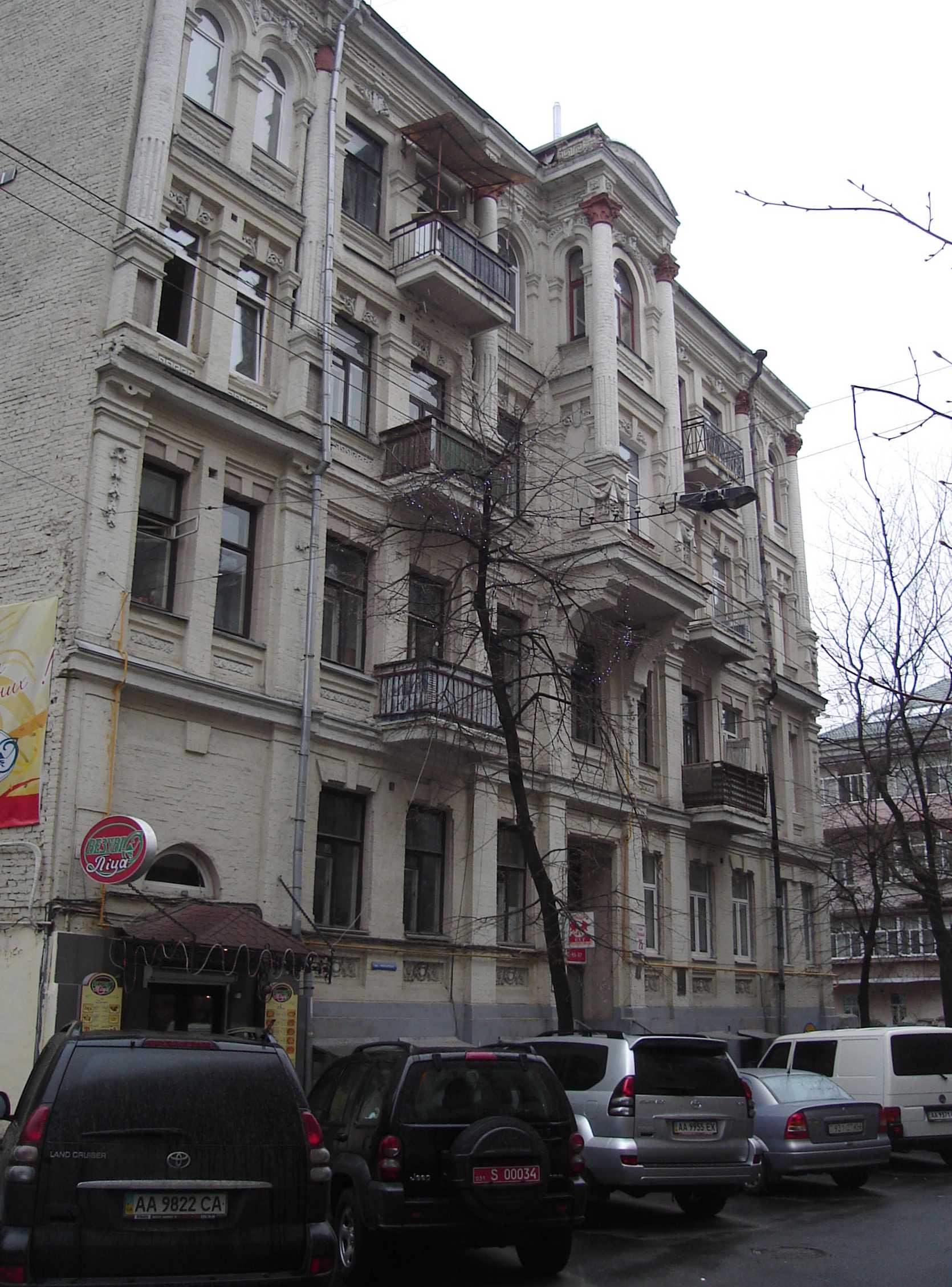 25 Reitarska Street. [photograph M. Kalnytsky]
25 Reitarska Street. [photograph M. Kalnytsky]
[00:31:45] These houses have disappeared, but are seen on a contemporary photograph of the street looking NW towards the junction with Strilets’ka Street. No. 25 is in the background opposite the garage. The building with the corner tower in [00:29:16] is hidden on the rhs.
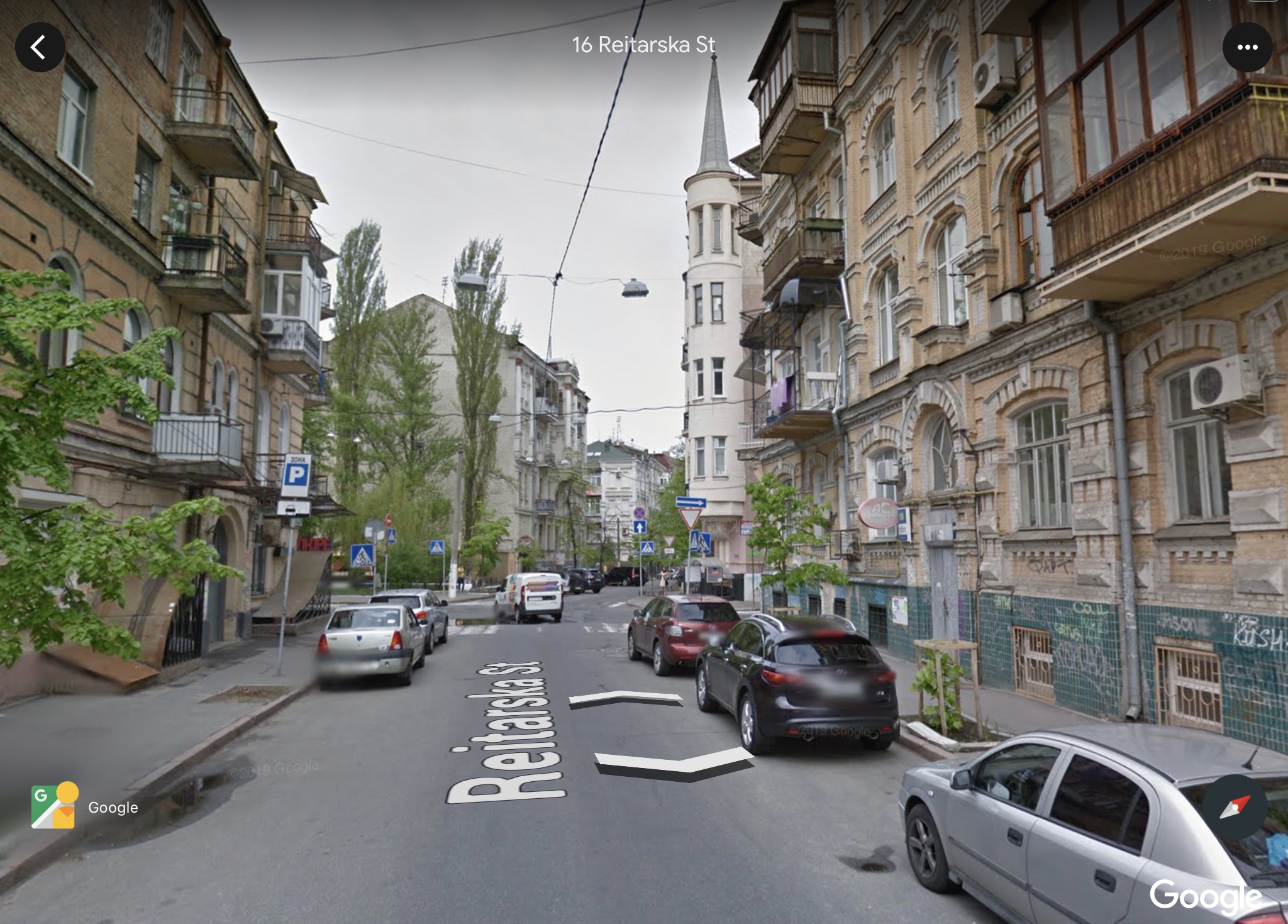 A similar view of the junction today. [Google Earth]
A similar view of the junction today. [Google Earth]
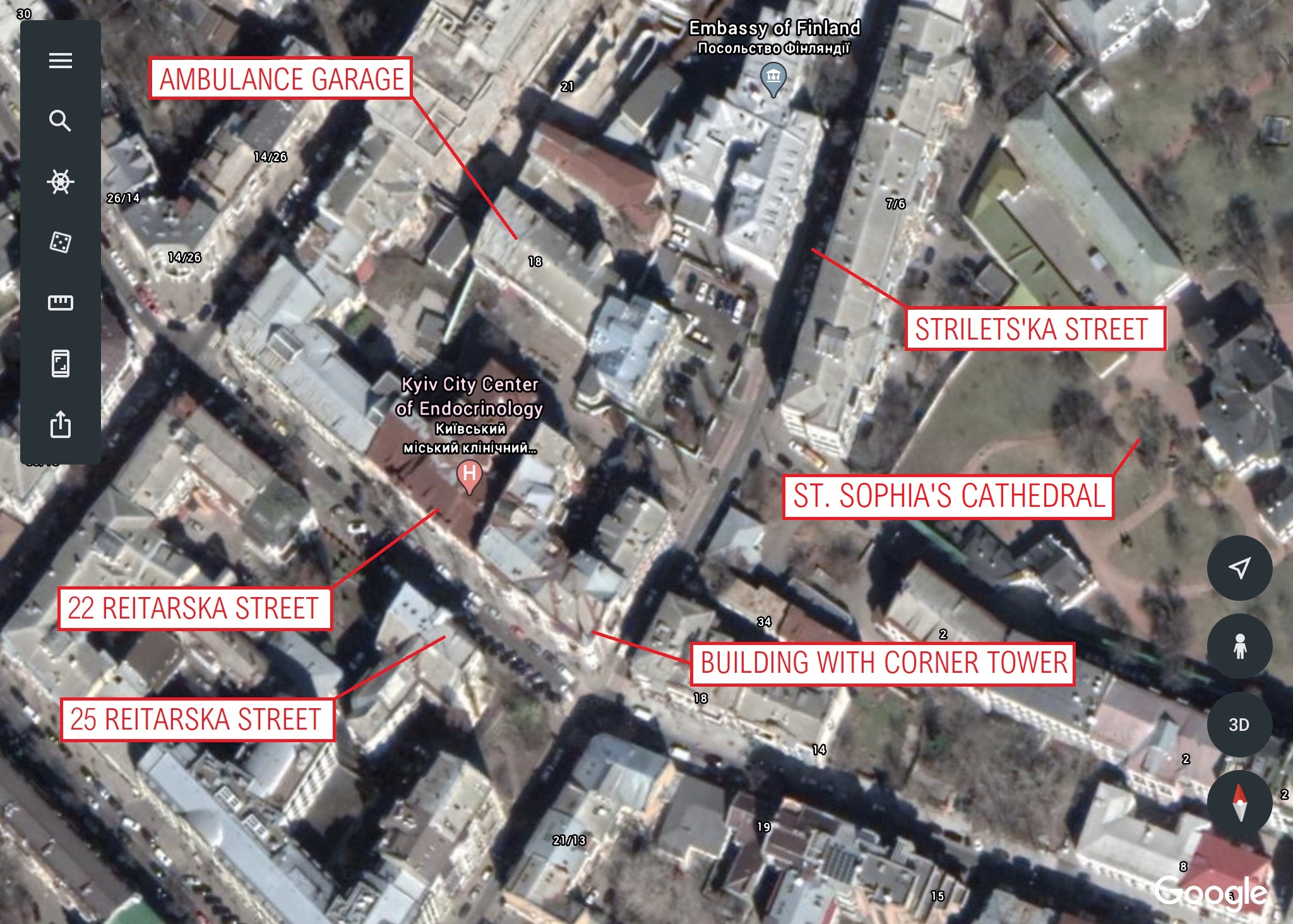 Google Earth screenshot showing the garage and location of the building with the corner tower and spire on the corner of Strilets’ka and Reitarska Streets in [00:29:16 et al]. 22 Reitarska Street is still a medical clinic!
Google Earth screenshot showing the garage and location of the building with the corner tower and spire on the corner of Strilets’ka and Reitarska Streets in [00:29:16 et al]. 22 Reitarska Street is still a medical clinic!
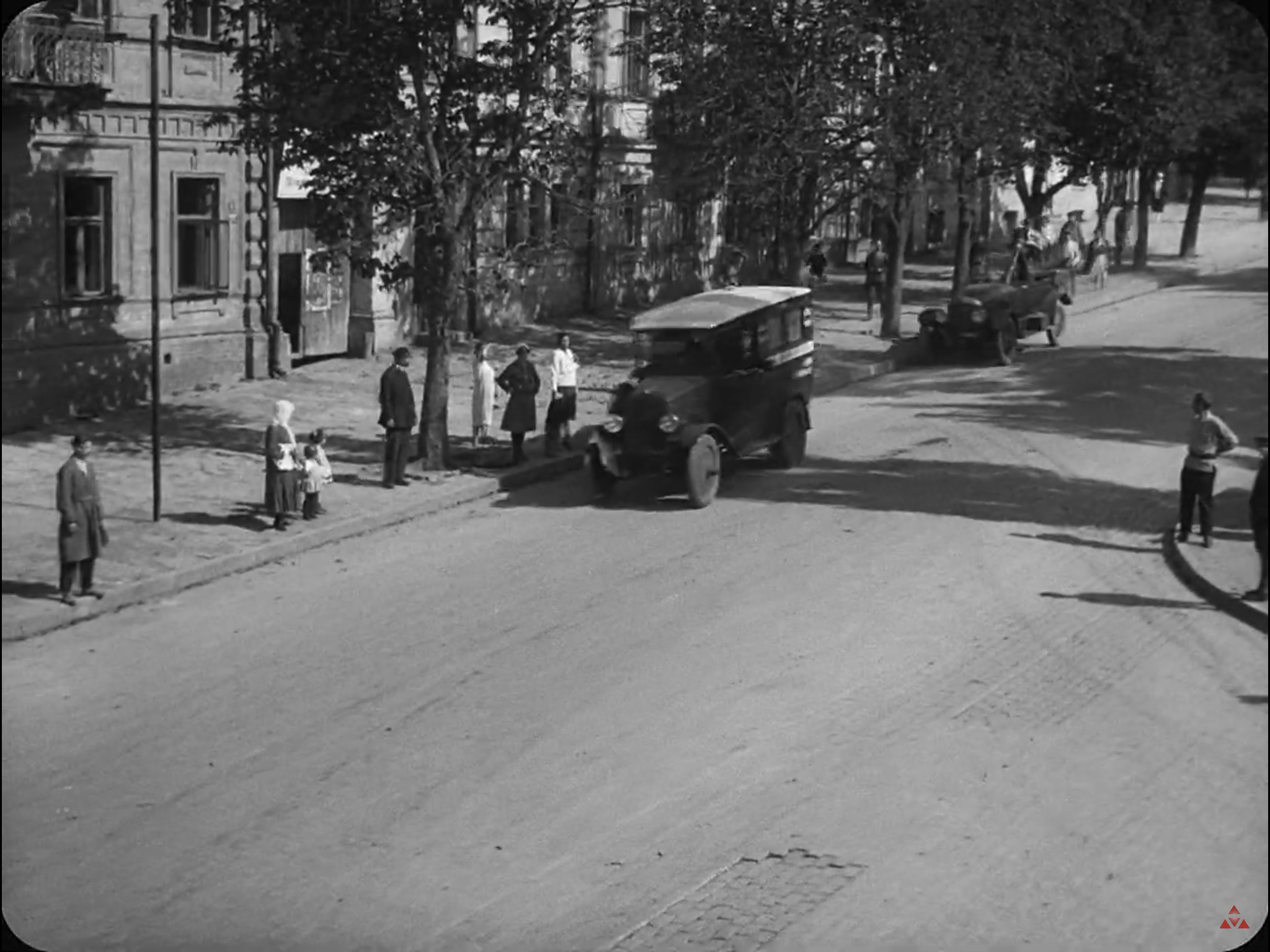
 [00:31:49] [00:31:55] The ambulance and camera car have gone down Tarasa Shevchenko Boulevard and turned left into Kominterna (now Symona Petlyury) Street. The building on the corner still exists, below.
[00:31:49] [00:31:55] The ambulance and camera car have gone down Tarasa Shevchenko Boulevard and turned left into Kominterna (now Symona Petlyury) Street. The building on the corner still exists, below.
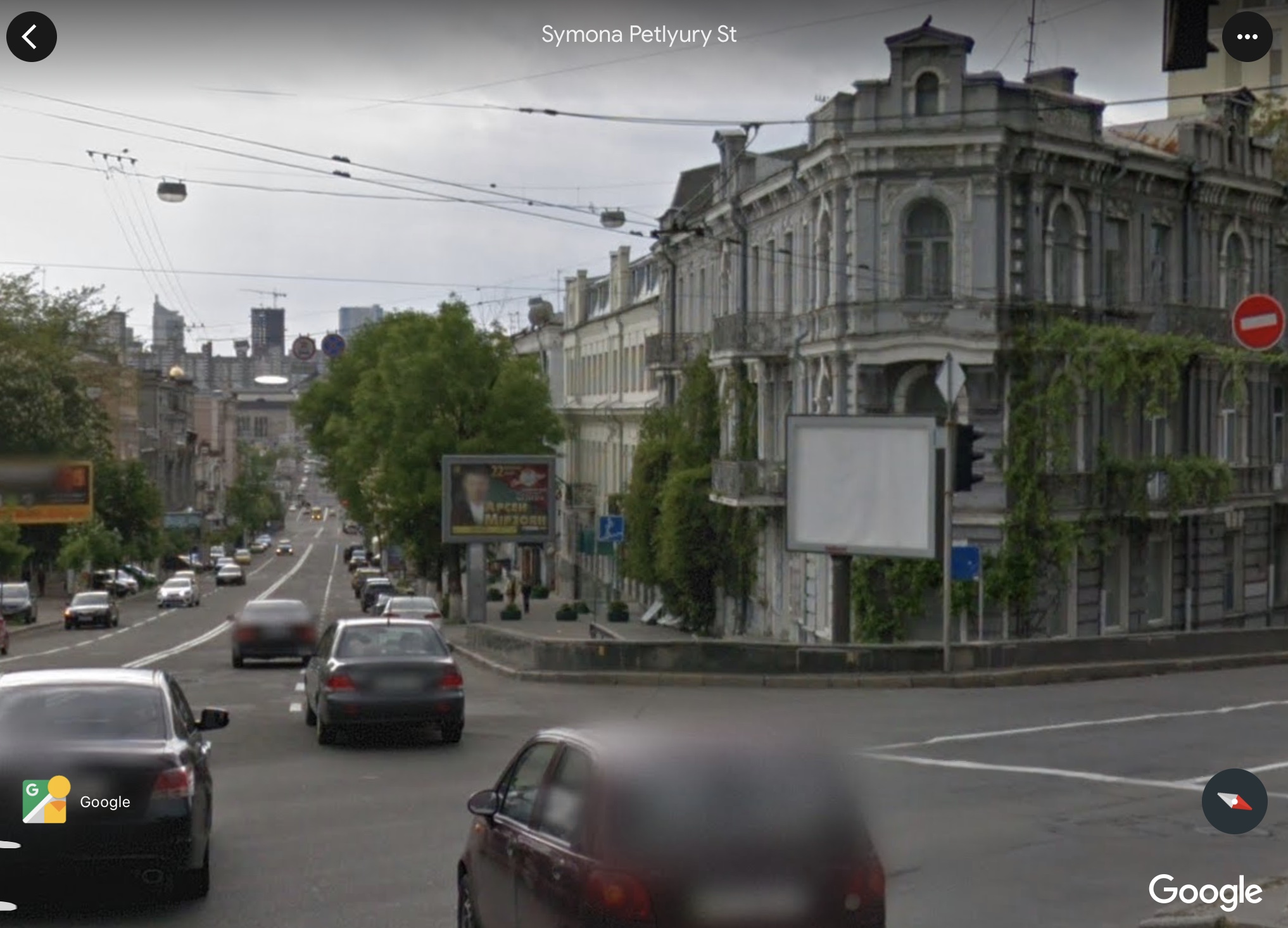
[00:32:14] The ambulance collects the ‘injured man’ outside a house (No. 40) on Tarasa Shevchenko Boulevard (the house has been demolished but the window and cellar opening from the far end are recognisable). Note the post on the lhs of the ambulance, also seen in [00:32:53].
There is a curious fragment of editing at [00:32:47] when the doors are closing on a different ambulance in front of a different house!
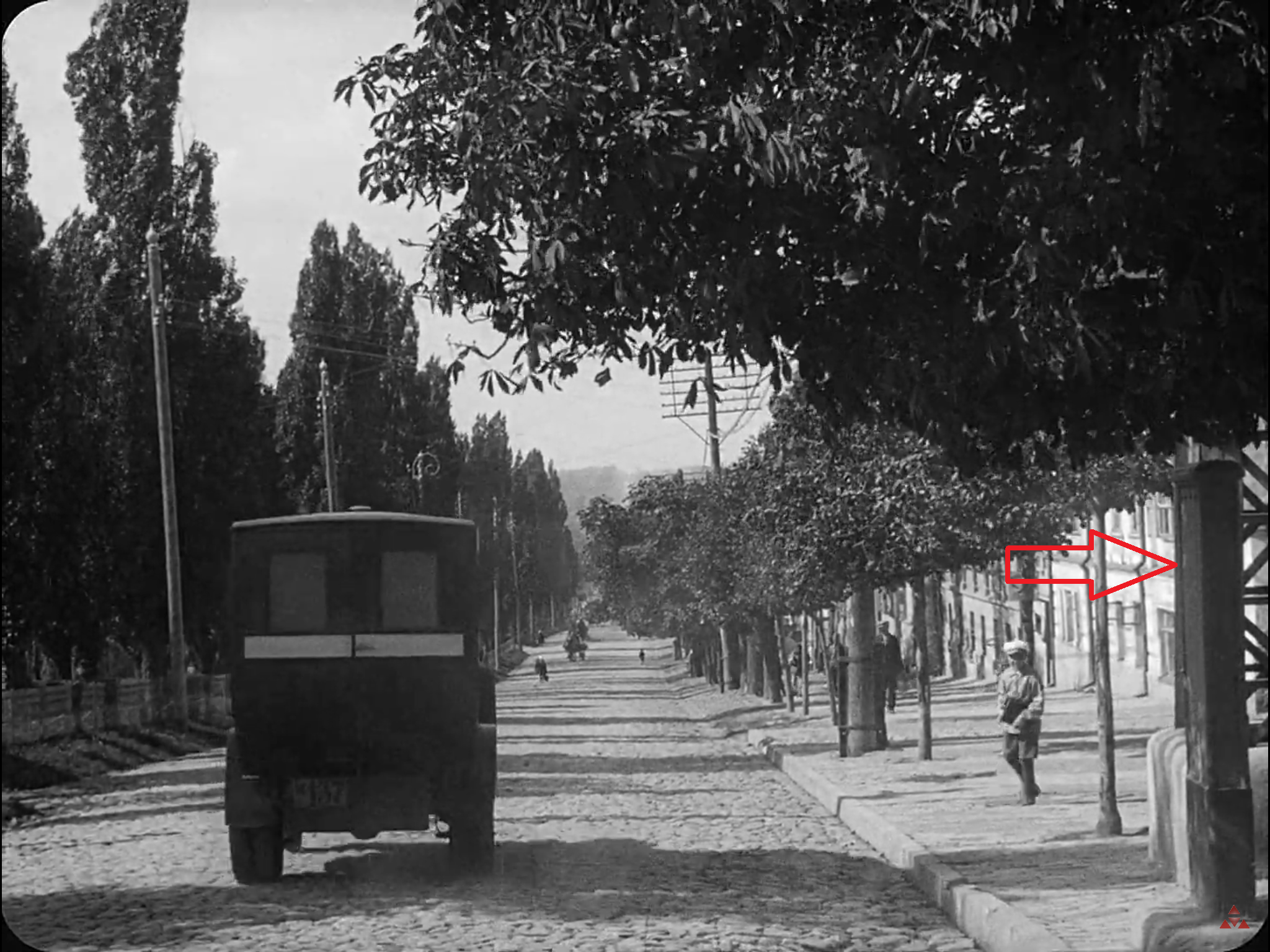 [00:32:53] The ambulance goes down the northern carriageway of Tarasa Shevchenko Boulevard (cobbled section). Note the post on the rhs, also seen next to the house in [00:32:14]. The boulevard was (and still is) divided by a wide tree lined pedestrian route (lhs). Tram lines were on the southern carriageway.
[00:32:53] The ambulance goes down the northern carriageway of Tarasa Shevchenko Boulevard (cobbled section). Note the post on the rhs, also seen next to the house in [00:32:14]. The boulevard was (and still is) divided by a wide tree lined pedestrian route (lhs). Tram lines were on the southern carriageway.
 [00:32:34 on] Fire engine sequence, Odesa.
[00:32:34 on] Fire engine sequence, Odesa.
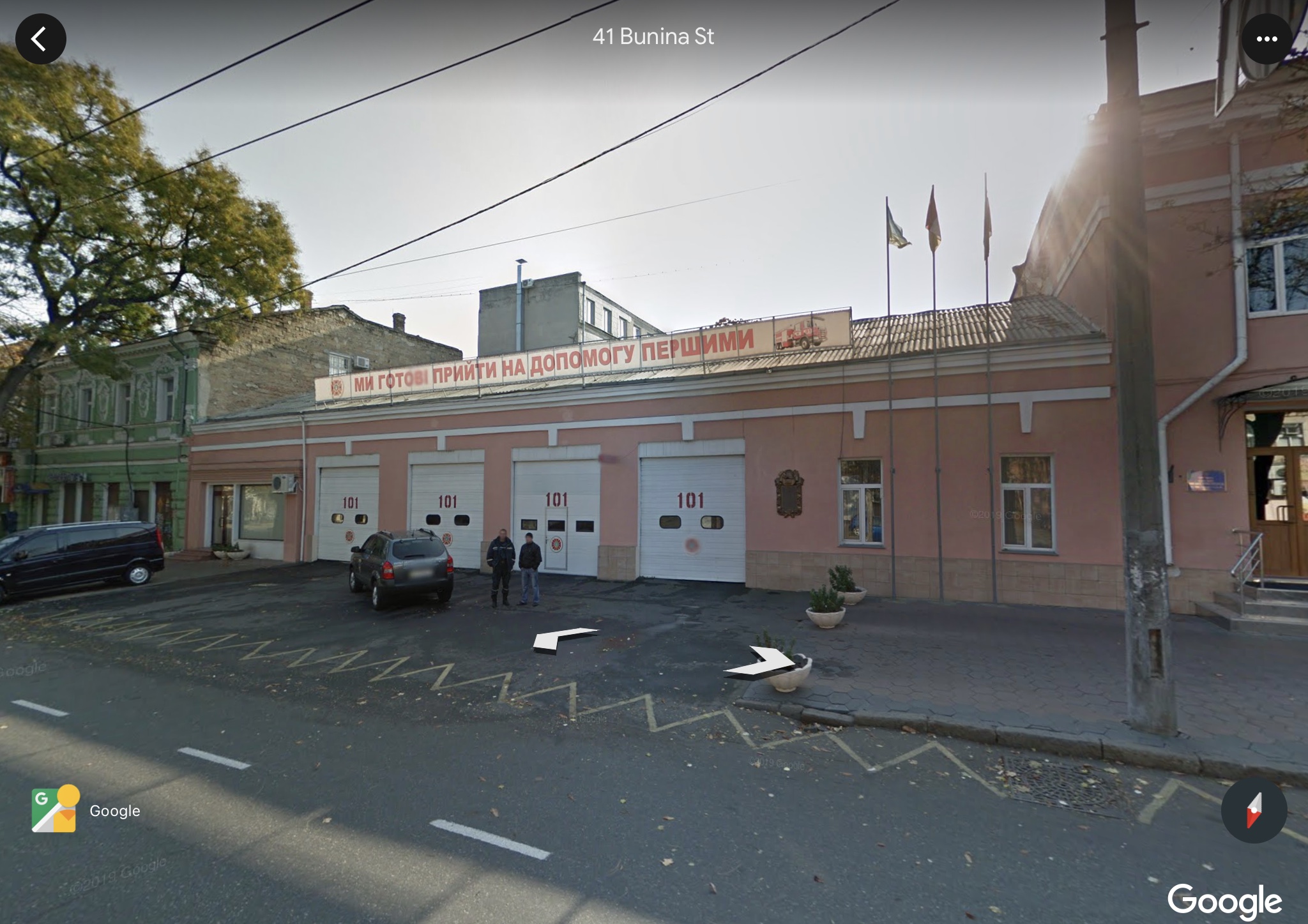 The Odesa Fire Brigade is still in the same building on the former Rosa Luxemburg Street over 90 years later! On the same street as the Philharmonic Theatre in [00:22:33].
The Odesa Fire Brigade is still in the same building on the former Rosa Luxemburg Street over 90 years later! On the same street as the Philharmonic Theatre in [00:22:33].
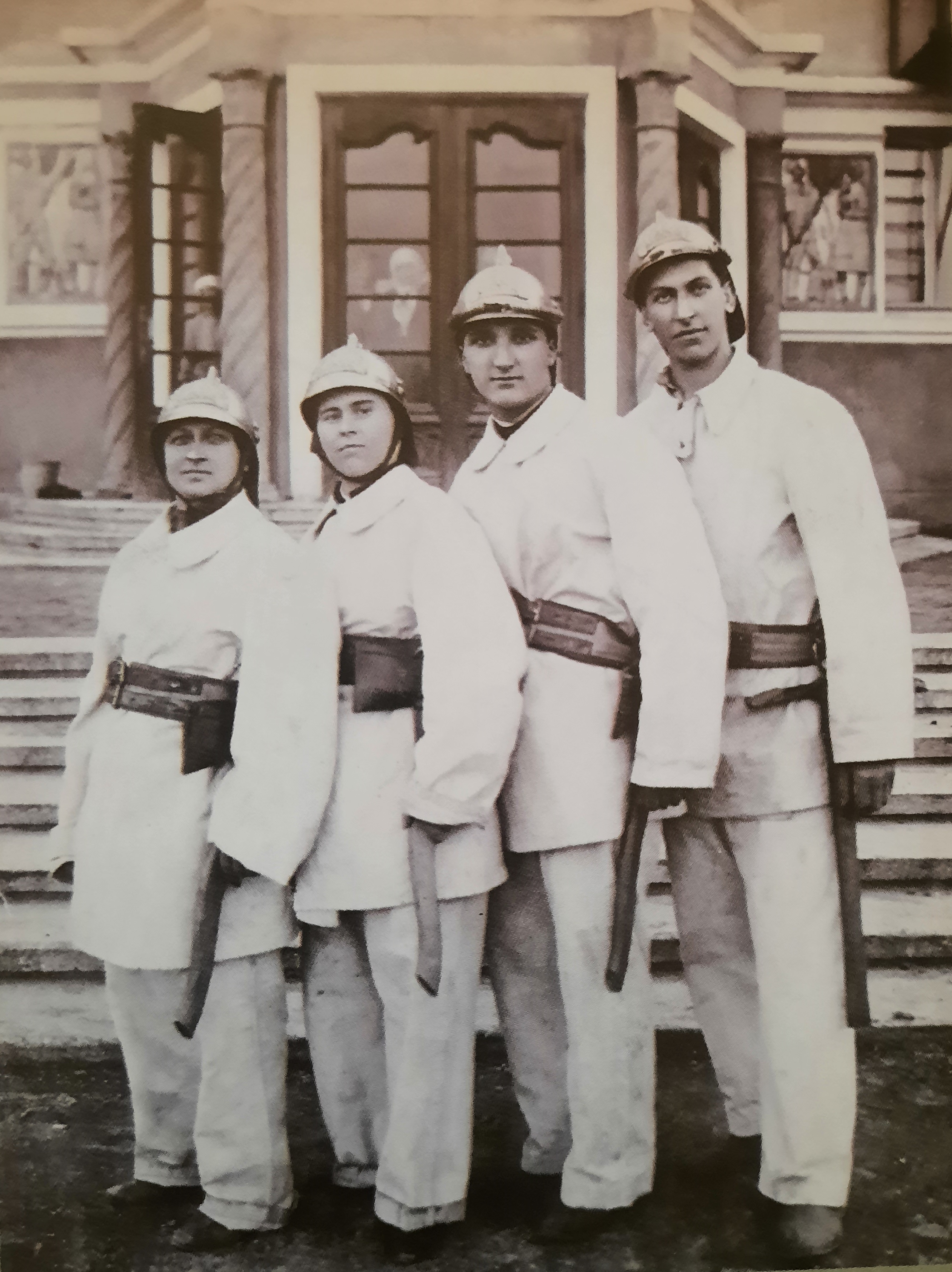 The women and men of the Odesa Fire Brigade in 1930. [from ‘Odesa in Old Photographs’ by Y. Volokin et al., 2017]
The women and men of the Odesa Fire Brigade in 1930. [from ‘Odesa in Old Photographs’ by Y. Volokin et al., 2017]
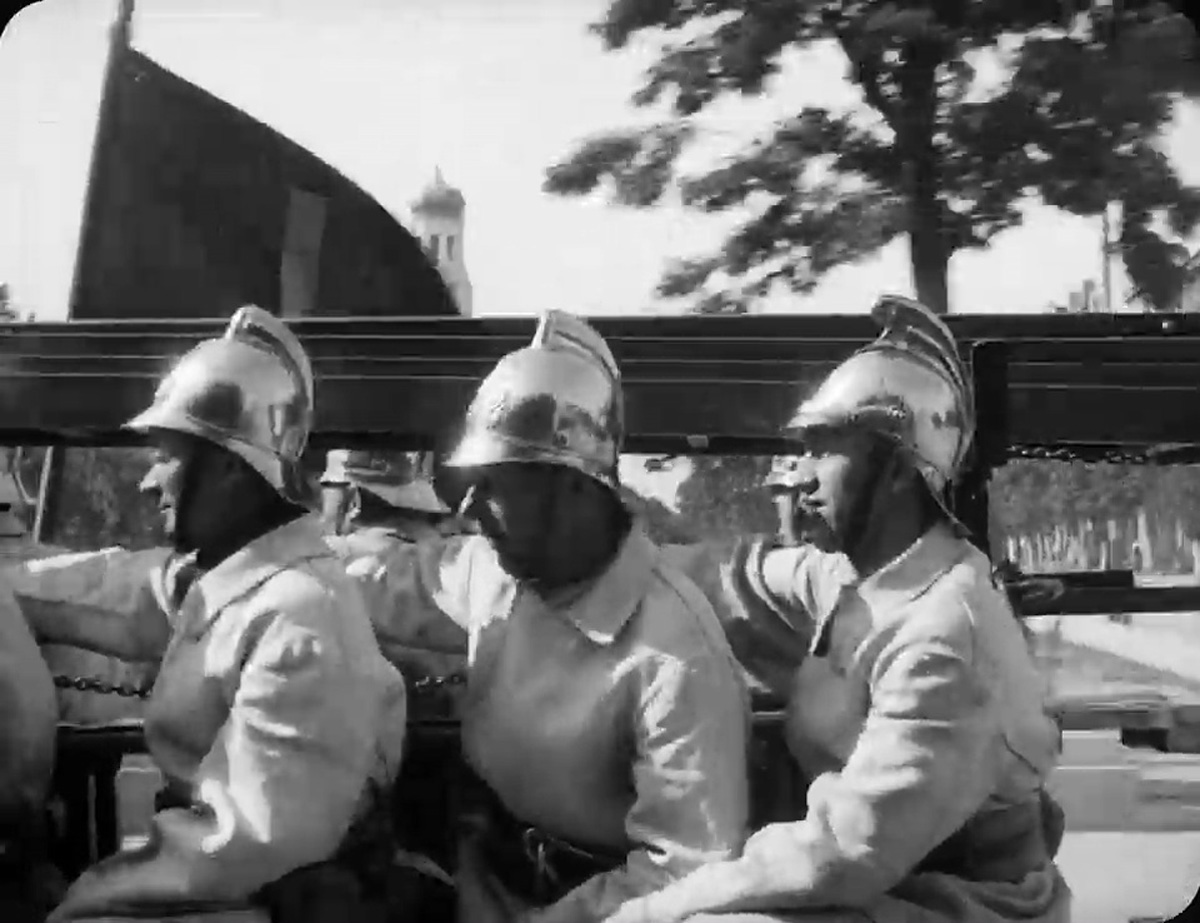 [00:32:55] The fire engine heads along Rosa Luxemburg (now Bunina) Street crossing Schmidt (now Oleksandrivs’kyi) Avenue (the bell tower of the Intercession Church is seen in the background, demolished in the 1930s). A building on the corner of both streets is still recognisable. The fire engine is actually going in the opposite direction to the ones emerging from the fire station in [00:32:40].
[00:32:55] The fire engine heads along Rosa Luxemburg (now Bunina) Street crossing Schmidt (now Oleksandrivs’kyi) Avenue (the bell tower of the Intercession Church is seen in the background, demolished in the 1930s). A building on the corner of both streets is still recognisable. The fire engine is actually going in the opposite direction to the ones emerging from the fire station in [00:32:40].
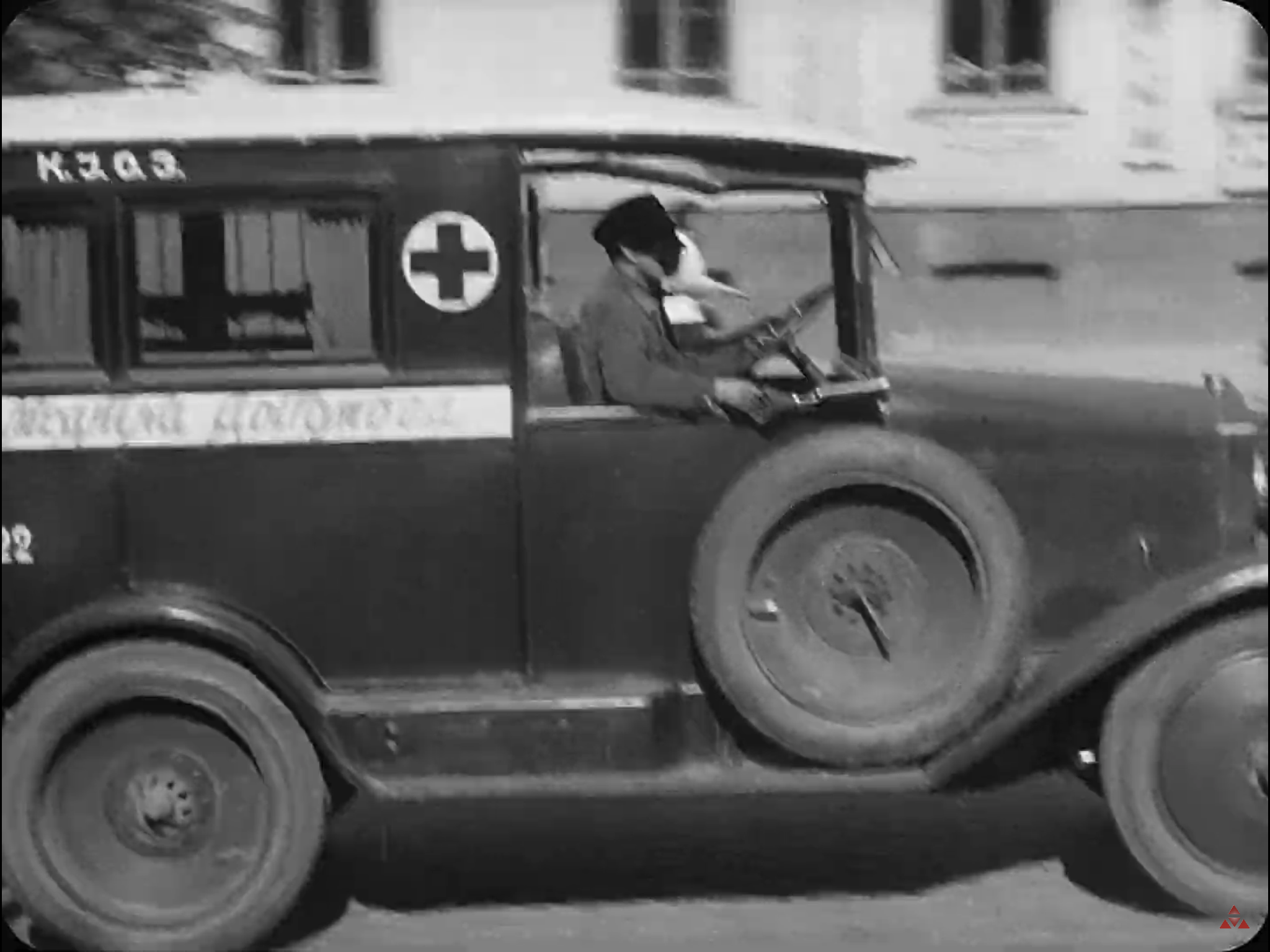 [00:32:58] to [00:33:42] Ambulance and fire engine speeding through the streets sequence. A wonderful example of ‘Creative Geography’ as these scenes are set in two different cities but edited to look like the streets of one. The ambulance driver squeezing the rubber bulb of his horn regularly instead of a siren is a period touch! Mr Kalnytsky sent me an advertisement and price list from the Kyiv Directory of 1929 for the very same ambulance service!
[00:32:58] to [00:33:42] Ambulance and fire engine speeding through the streets sequence. A wonderful example of ‘Creative Geography’ as these scenes are set in two different cities but edited to look like the streets of one. The ambulance driver squeezing the rubber bulb of his horn regularly instead of a siren is a period touch! Mr Kalnytsky sent me an advertisement and price list from the Kyiv Directory of 1929 for the very same ambulance service!
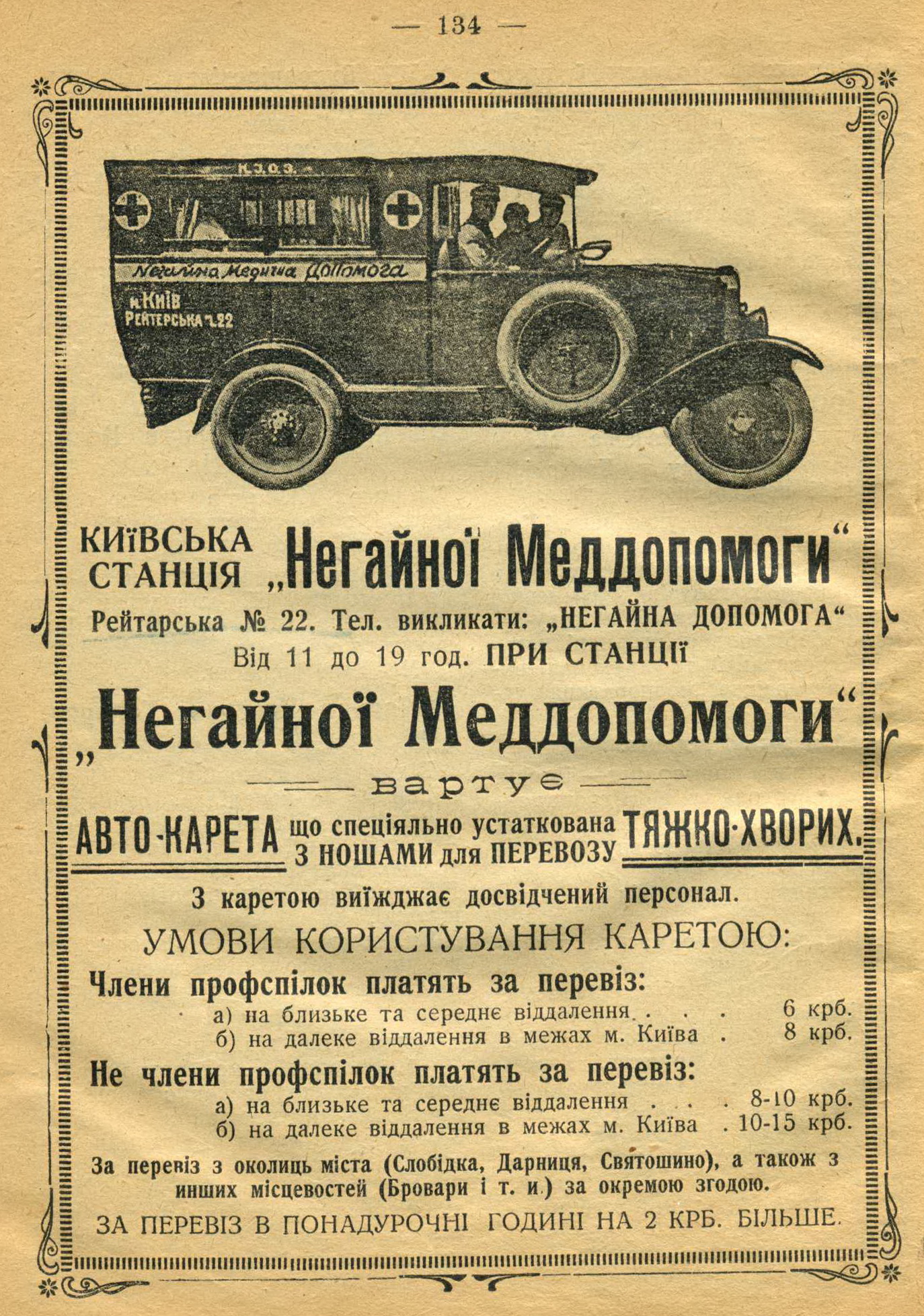
REEL 4
Note: rising numeral 4 present in Eye/Lobster Films and other prints.
[00:33:49] Ginzburg Skyscraper courtyard facade, Kyiv.
[00:33:56] Traffic policeman with signal, MK with camera, on Kuznetsky Most, Moscow.
[00:34:00 on] Hairdressing and manicure sequences. Unknown location(s).
[00:34:07 on] Working activity scenes. Unknown location(s) except [00:36:20] and tobacco factory below.
[00:35:03] ‘Paris Specialist Cleaner’ shoeshine booth, Odesa? MK is wearing his white Odesa shirt but exact location not found.
[00:36:20] Traffic policeman, Kuznetsky Most, Moscow.
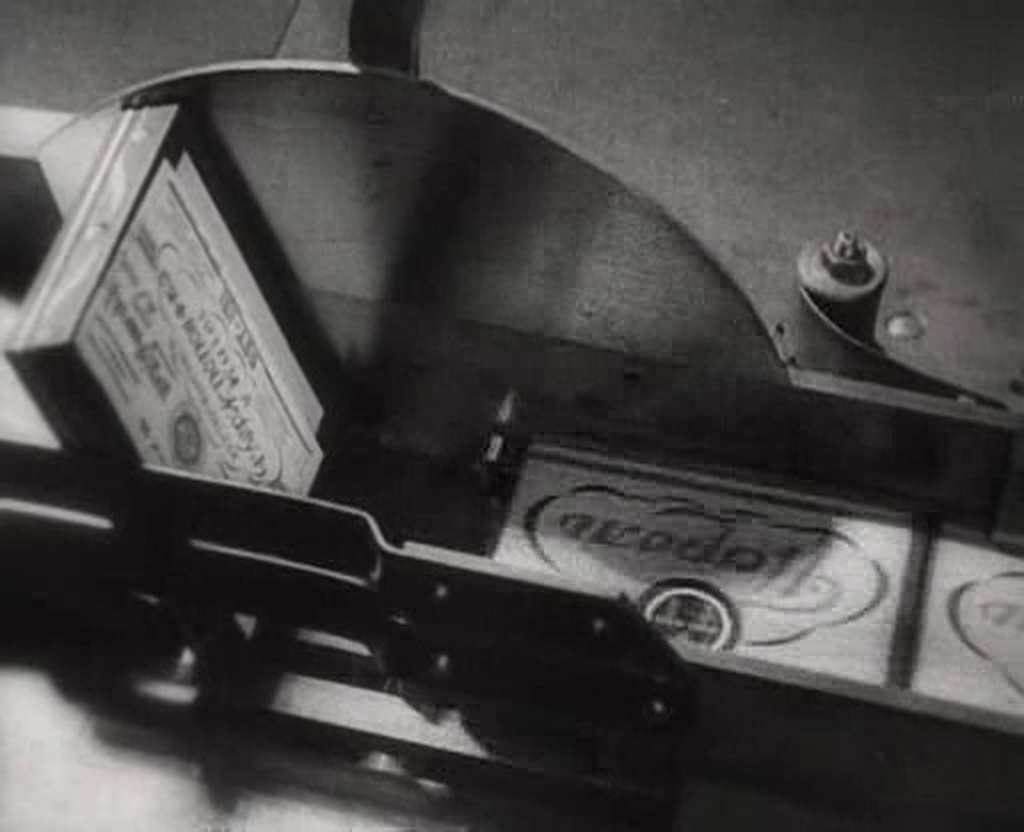 [00:36:29] Cigarette packets on a production line.
[00:36:29] Cigarette packets on a production line.
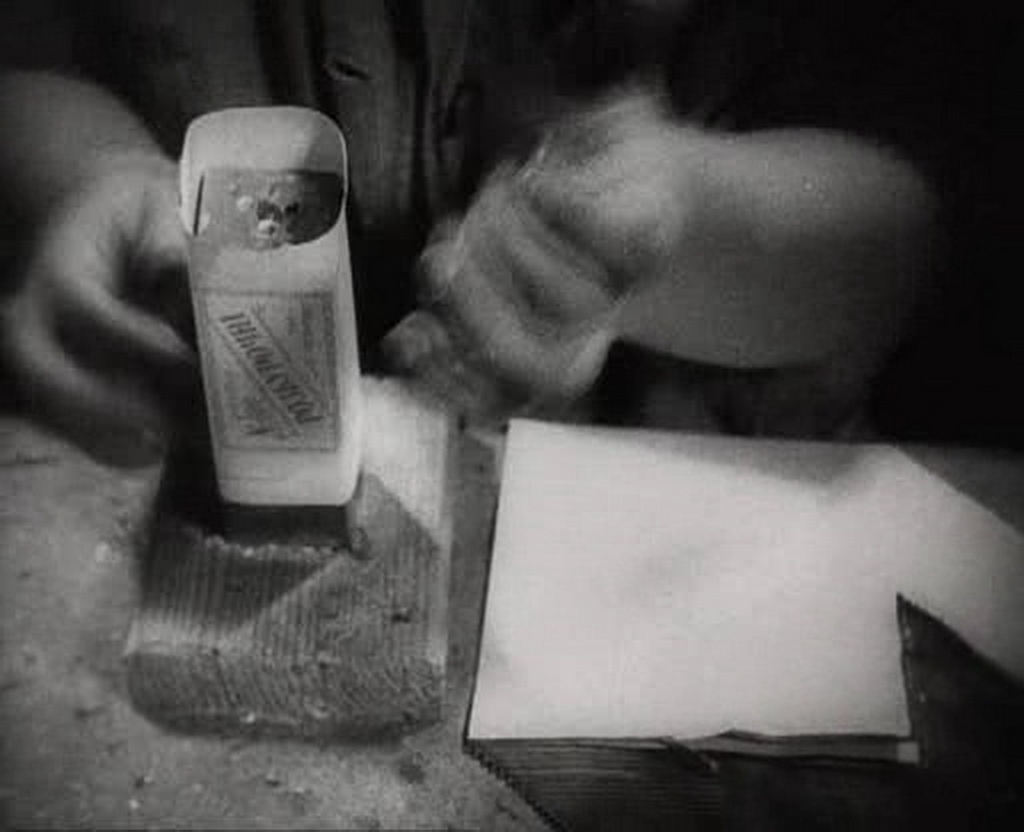 [00:36:42] Cheerful woman making packets for ‘Razkurochny’ cigarettes.
[00:36:42] Cheerful woman making packets for ‘Razkurochny’ cigarettes.
This was probably filmed at the well-known tobacco factory, on Tarasa Shevchenko Boulevard near Halytska Square in Kyiv, established by the Kogen family in the 19thC. Confiscated after the Revolution and re-named ‘4th State Tobacco Factory’. A cigarette factory, possibly this one, also featured in Mikhail Kaufman’s 1927 film ‘Moscow’.
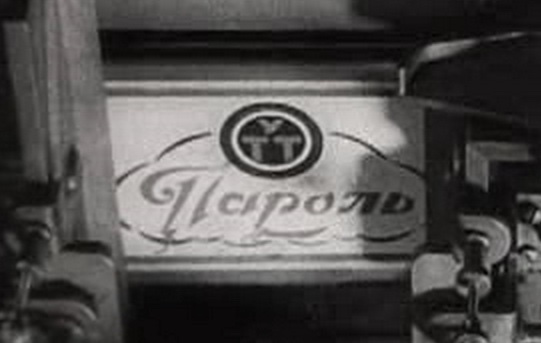
The factory name can be read (in a cursive font, with difficulty) on the back of the ‘Parol’ (Password) brand packets on the production line (above). On the front of the packet are the letters ‘YTT (UTT) for Ukrainian Tobacco Trust. The cheerful woman would have had an employee’s certificate from the factory as the cover below. [information from M. Kalnytsky]
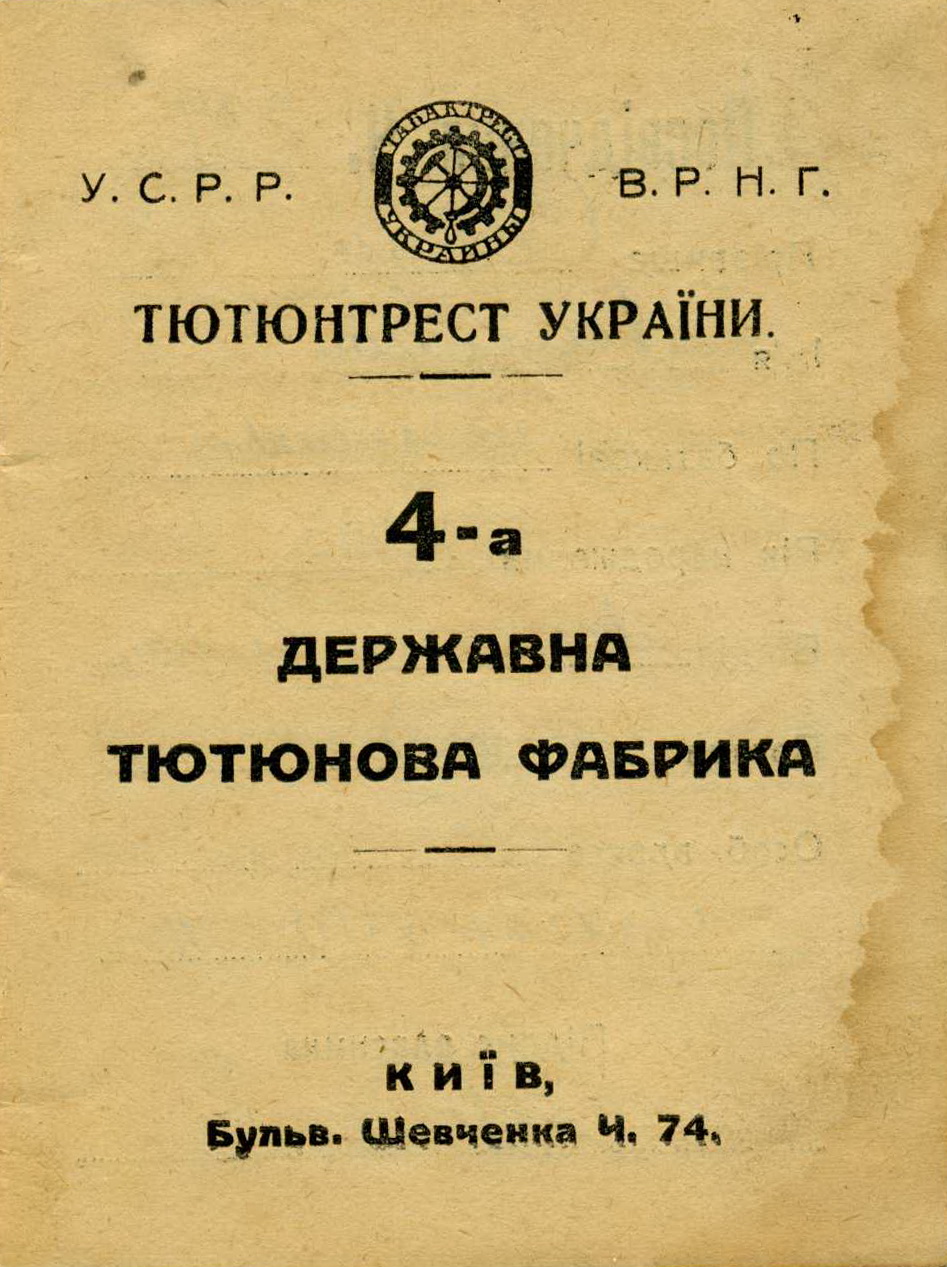
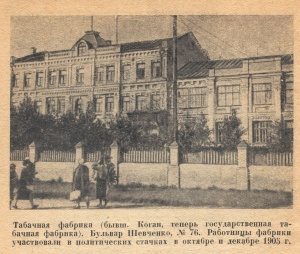 A 1940s photograph of the fine looking tobacco factory at No. 74-76 Tarasa Shevchenko Boulevard, constructed around 1903-1904. [M. Kalnytsky]
A 1940s photograph of the fine looking tobacco factory at No. 74-76 Tarasa Shevchenko Boulevard, constructed around 1903-1904. [M. Kalnytsky]
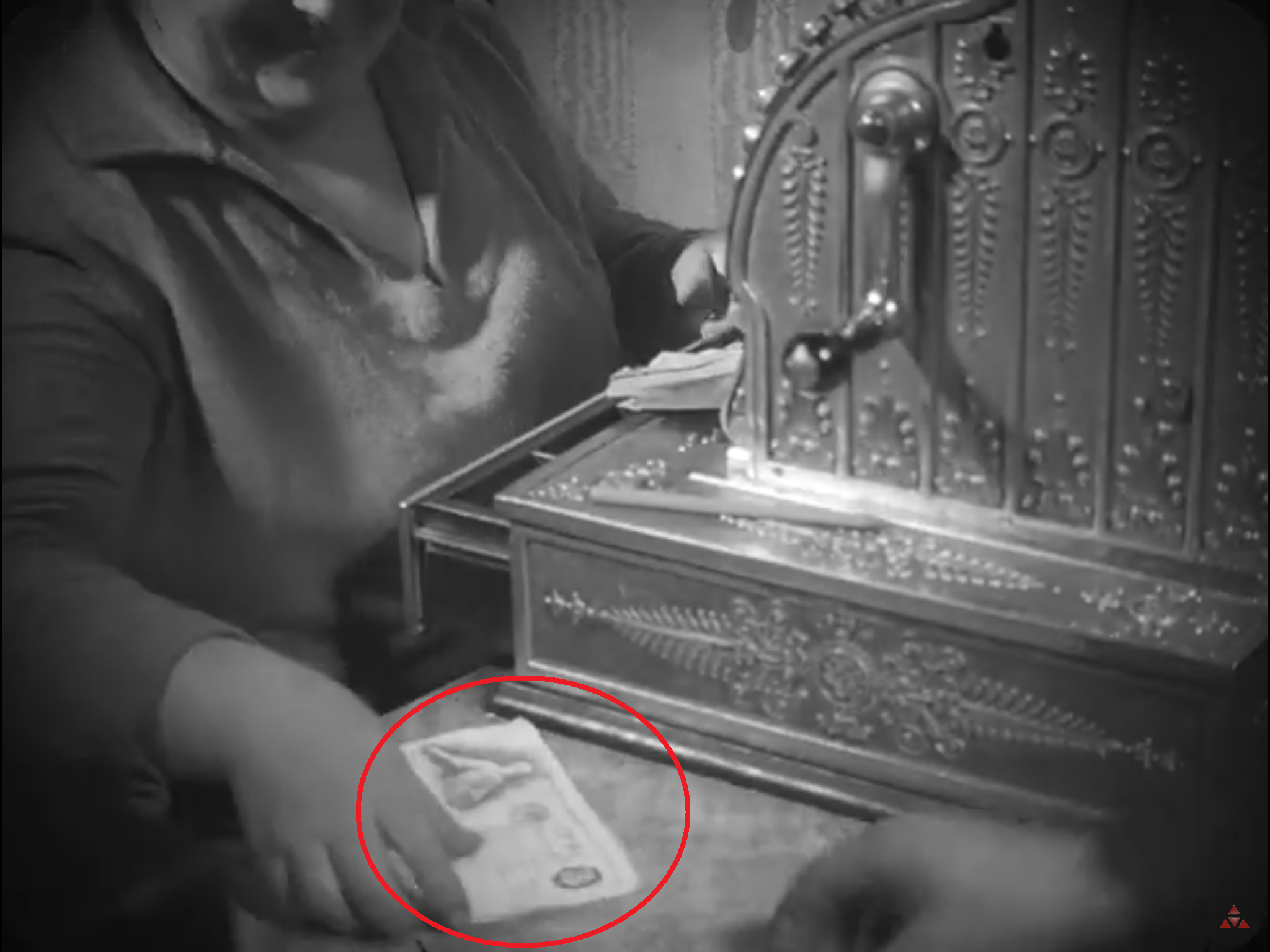 [00:36:37] [00:37:59] An unknown location, but an interesting detail. The 3 chervonets banknote on the counter (and below) was issued at the start of the New Economic Policy in late 1922 to try to stabilise the currency. One chervonets was equivalent to a pre-revolutionary ten roubles gold coin. There is an interesting description of this currency on the ‘Master & Margarita’ website.
[00:36:37] [00:37:59] An unknown location, but an interesting detail. The 3 chervonets banknote on the counter (and below) was issued at the start of the New Economic Policy in late 1922 to try to stabilise the currency. One chervonets was equivalent to a pre-revolutionary ten roubles gold coin. There is an interesting description of this currency on the ‘Master & Margarita’ website.
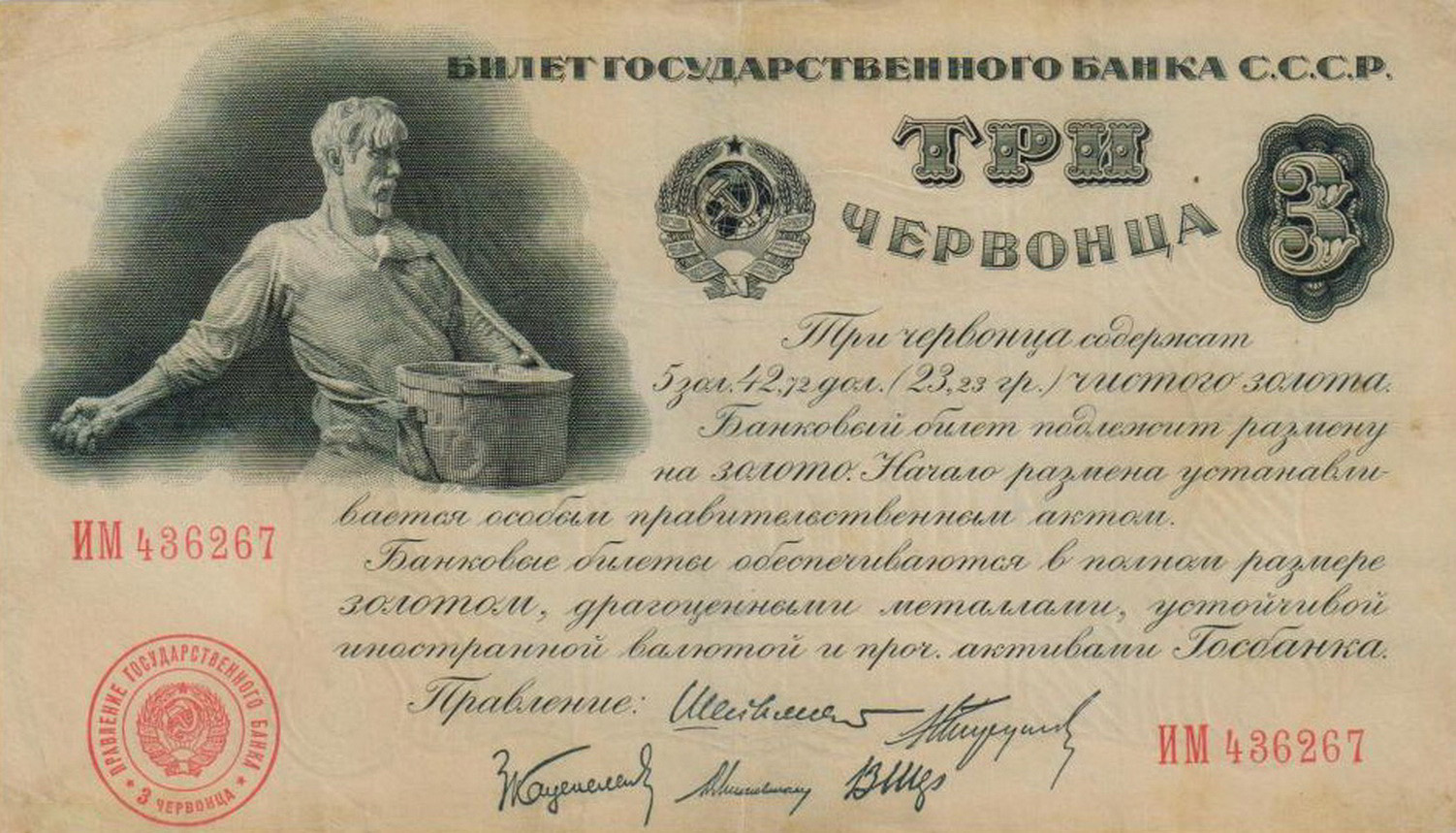
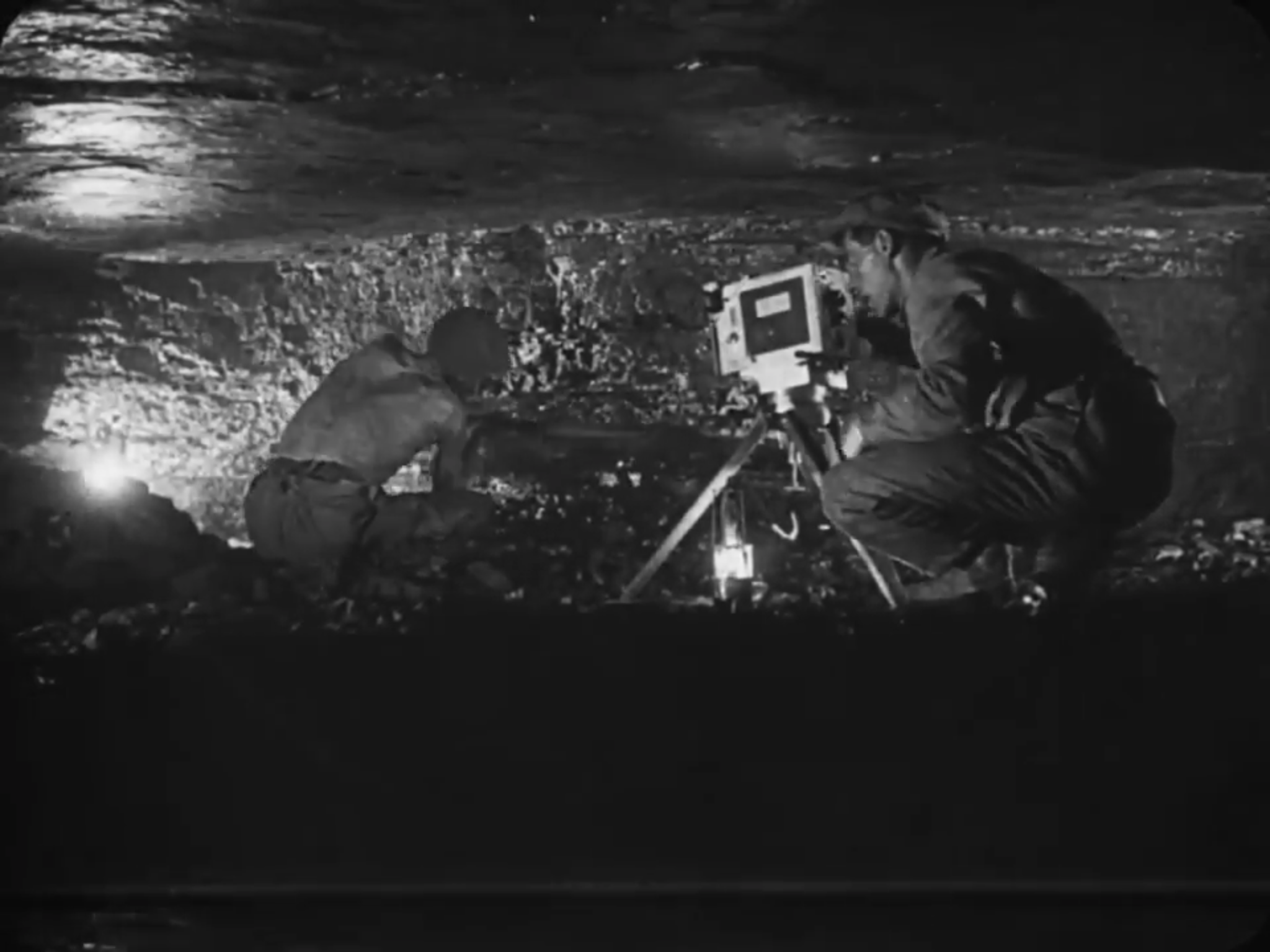 [00:38:22 on] Coal mine in Rutchenkovo in the Donbas.
[00:38:22 on] Coal mine in Rutchenkovo in the Donbas.
Vertov’s diary entry of June 22nd 1927 written in Zaporozh’e (on the Dnieper River) records filming in the Dzerzhinsky steelworks in Kamianske, but then goes on to describe filming underground in a mine, and at the end of the entry talks about wanting ‘to embrace and caress those gigantic smokestacks and black gas tanks’ (of the steelworks), the implication being that it is all in the same place. There are no coal mines in Kamianske (or Zaporozh’e), all the coal for the blast furnaces there come by rail from the Donbas so this entry is very confusing.
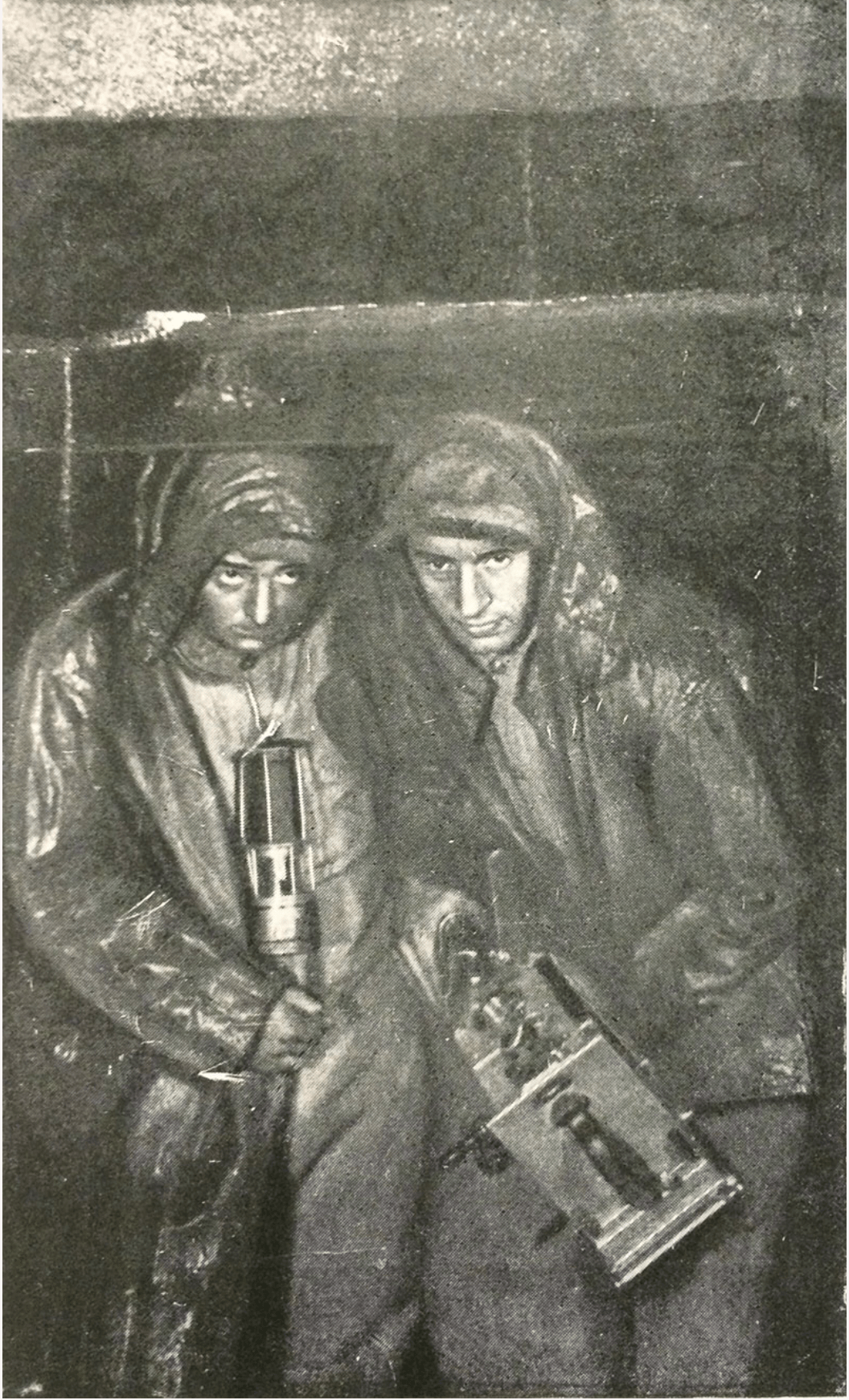
Dziga Vertov and Mikhail Kaufman looking rather miserable in the mine at Rutchenkovo during filming of ‘The Eleventh Year’.
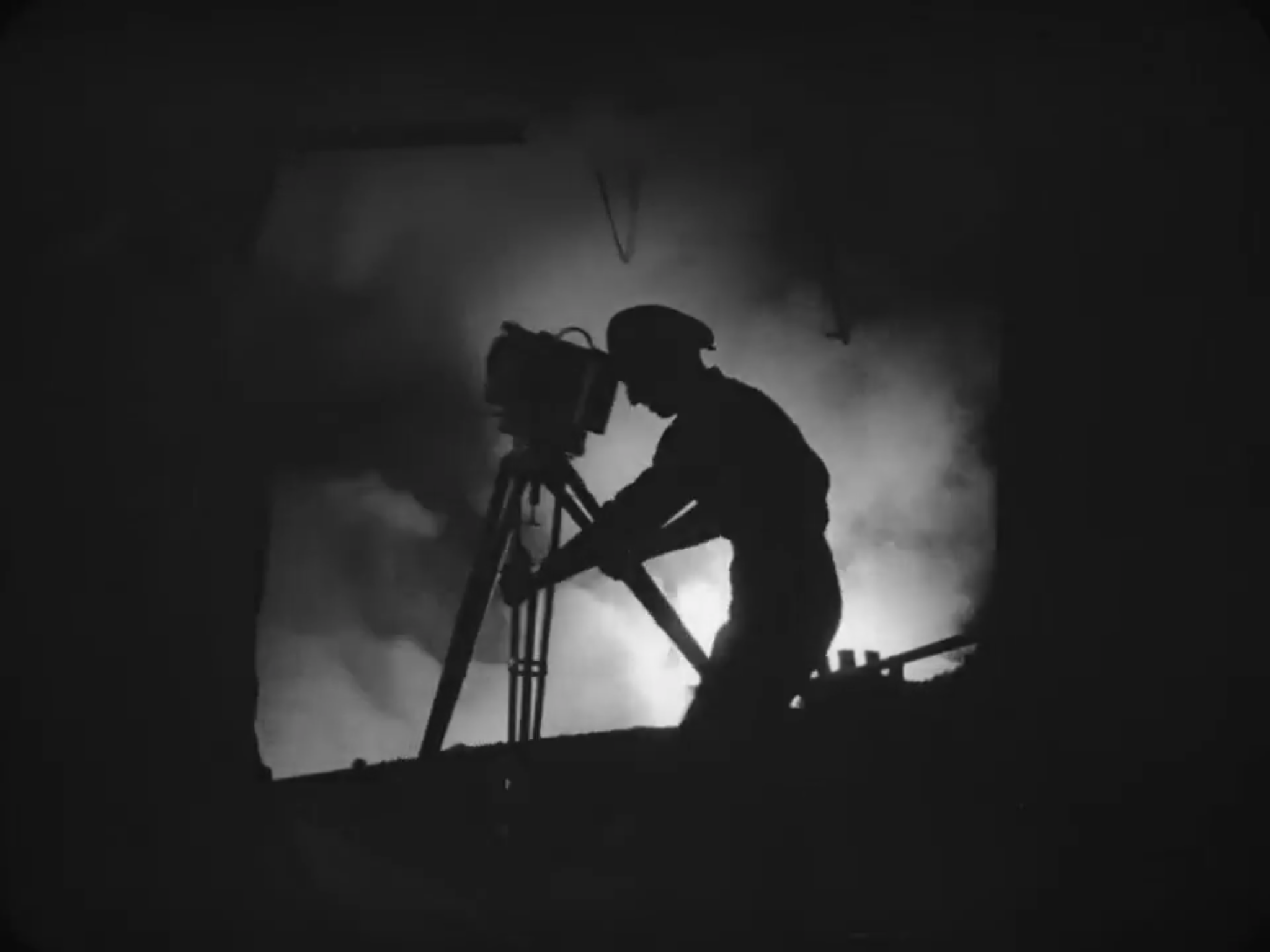 [00:39:19] Dzherzhinsky steelworks interior – a spectacular sequence of industrial images! See [00:08:30] for notes on the steelworks.
[00:39:19] Dzherzhinsky steelworks interior – a spectacular sequence of industrial images! See [00:08:30] for notes on the steelworks.
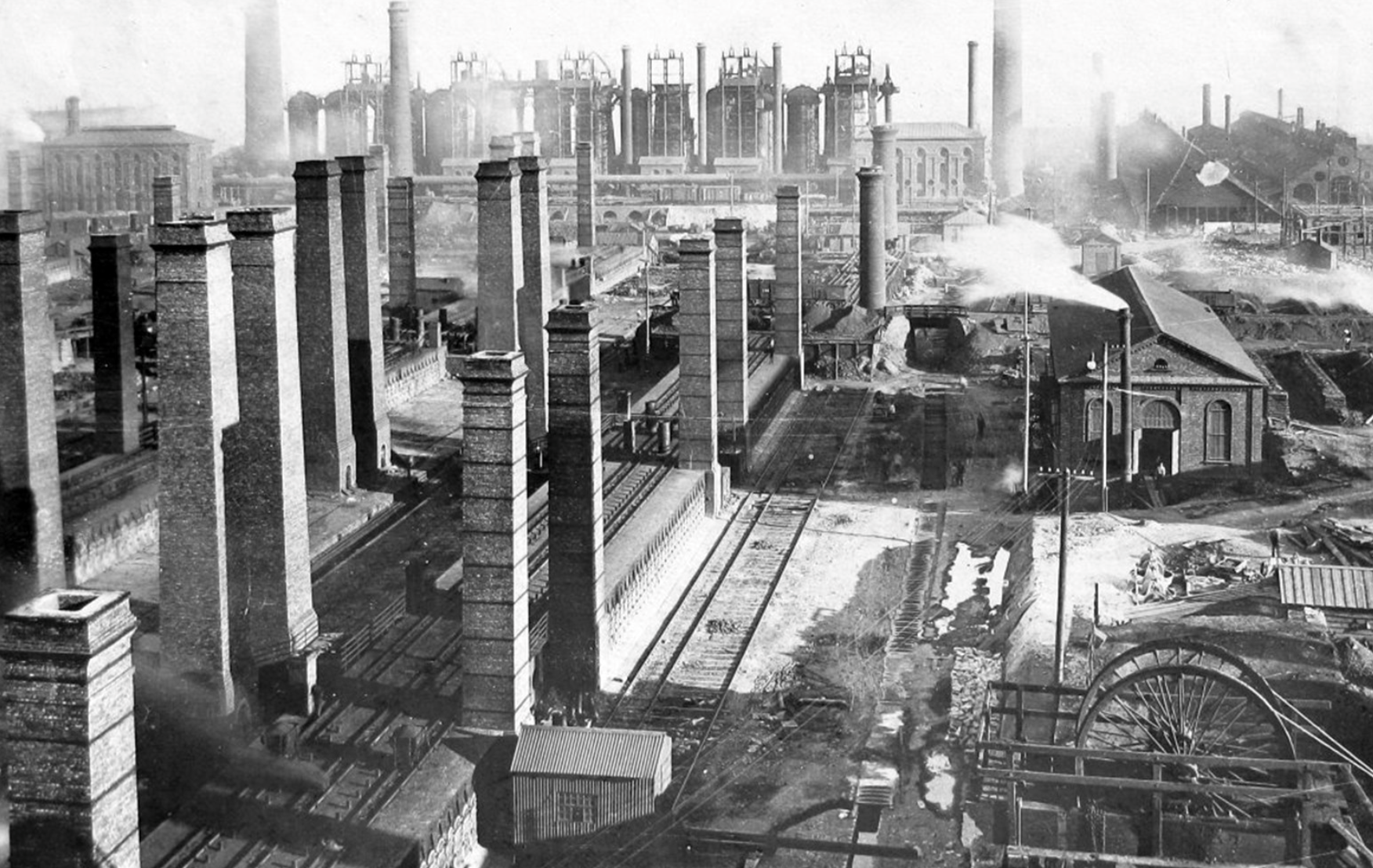 Typical contemporary Donbas scene of coke ovens (lhs), coal mine (rhs) and steelworks blast furnaces (background).
Typical contemporary Donbas scene of coke ovens (lhs), coal mine (rhs) and steelworks blast furnaces (background).
[00:40:35] [00:40:48] [00:40:55] [00:41:00] Volkhov Hydroelectric Power Plant, near Leningrad.
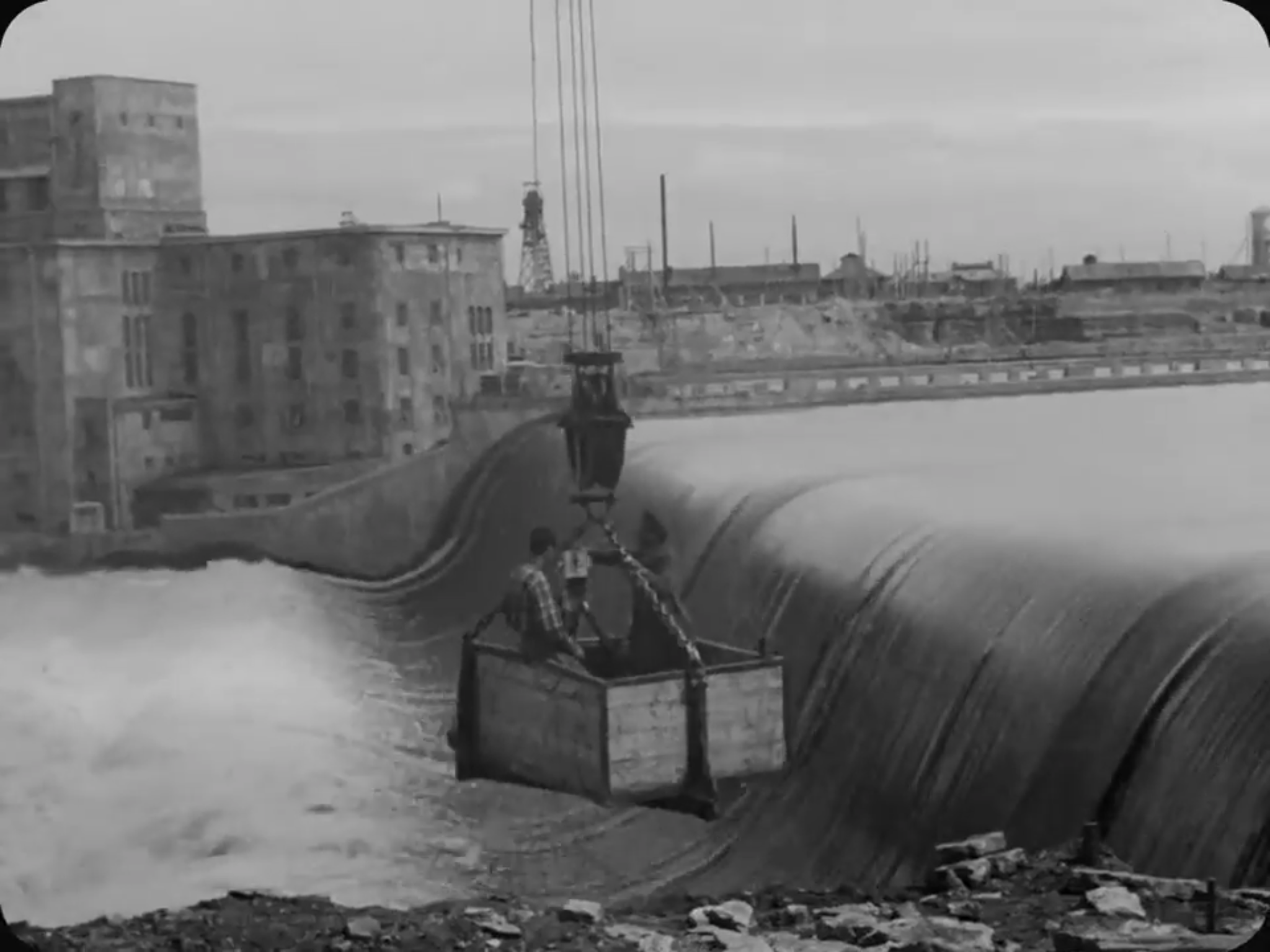 [00:41:08] [00:41:21] [00:41:32] [00:41:43] [00:41:50] [00:41:57] [00:42:04] MK and assistant in a suspended platform over the Volkhov Dam.
[00:41:08] [00:41:21] [00:41:32] [00:41:43] [00:41:50] [00:41:57] [00:42:04] MK and assistant in a suspended platform over the Volkhov Dam.
The Volkhov Hydroelectric Power Plant (Волховская ГEС) is on the river of the same name near to Lake Ladoga in the Leningrad Oblast (County). Opened in 1926 (but actually a pre-revolutionary design) and named after VI Lenin, it is the oldest hydroelectric plant still operating in Russia.
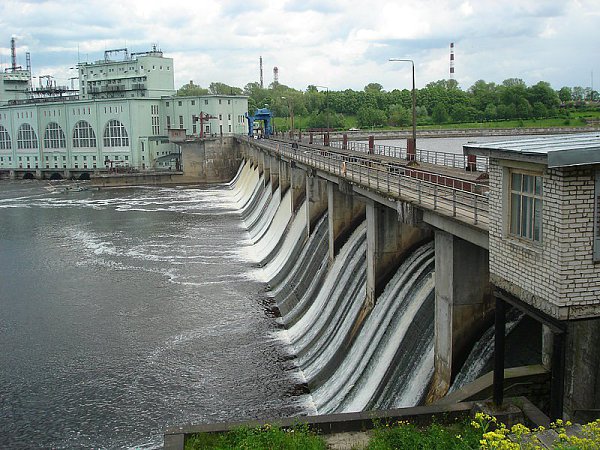 Current view of the dam and generating building taken from a similar position [fotostrana].
Current view of the dam and generating building taken from a similar position [fotostrana].
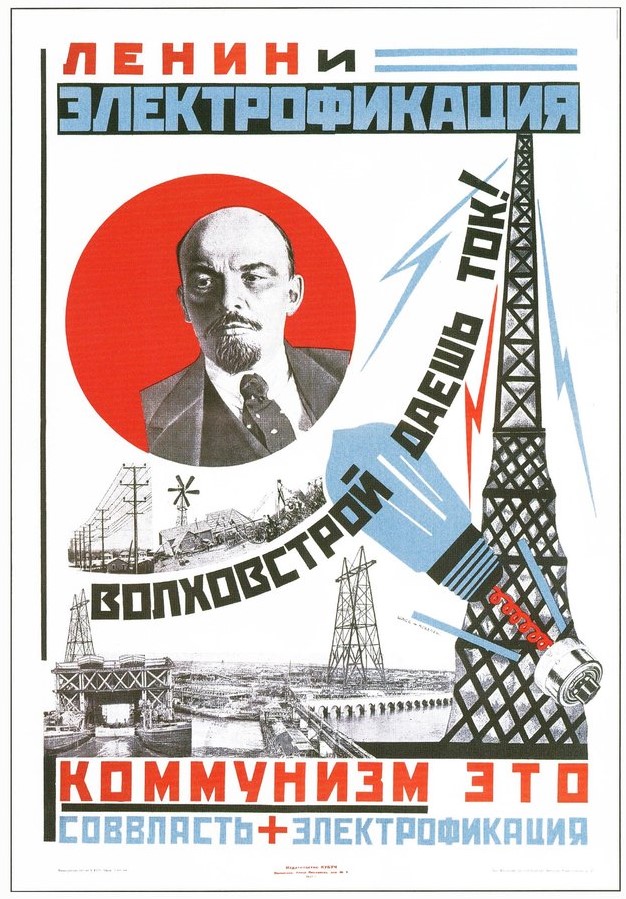 Contemporary poster celebrating Lenin’s electrification plans featuring the Volkhov Hydroelectric Power Plant.
Contemporary poster celebrating Lenin’s electrification plans featuring the Volkhov Hydroelectric Power Plant.
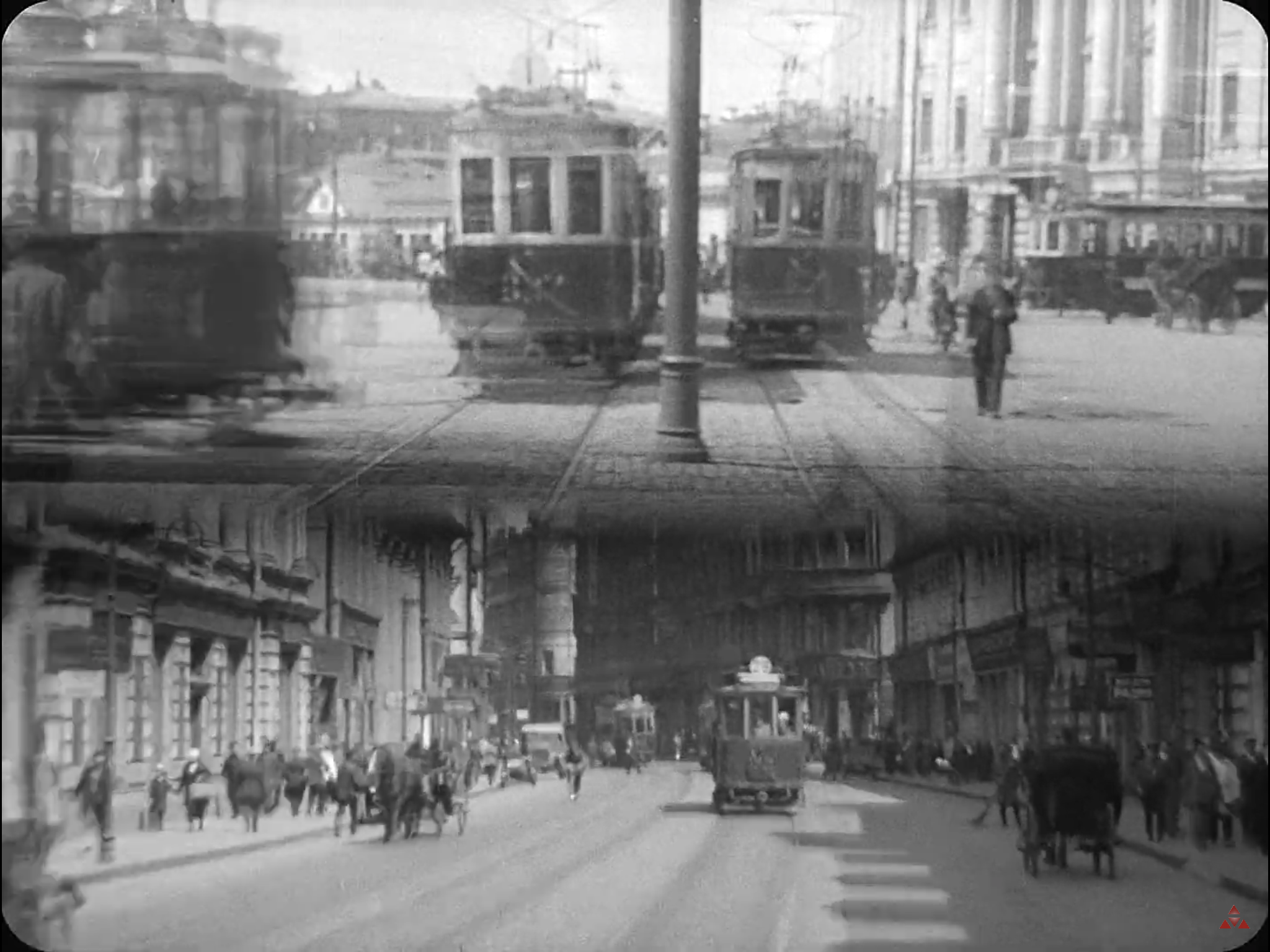 [00:42:10] Split screen scene of trams in Moscow. Top is of Okhotny Ryad, bottom is of Myasnytska Street.
[00:42:10] Split screen scene of trams in Moscow. Top is of Okhotny Ryad, bottom is of Myasnytska Street.
[00:42:52] Kuznetsky Most, Moscow? Not verified.
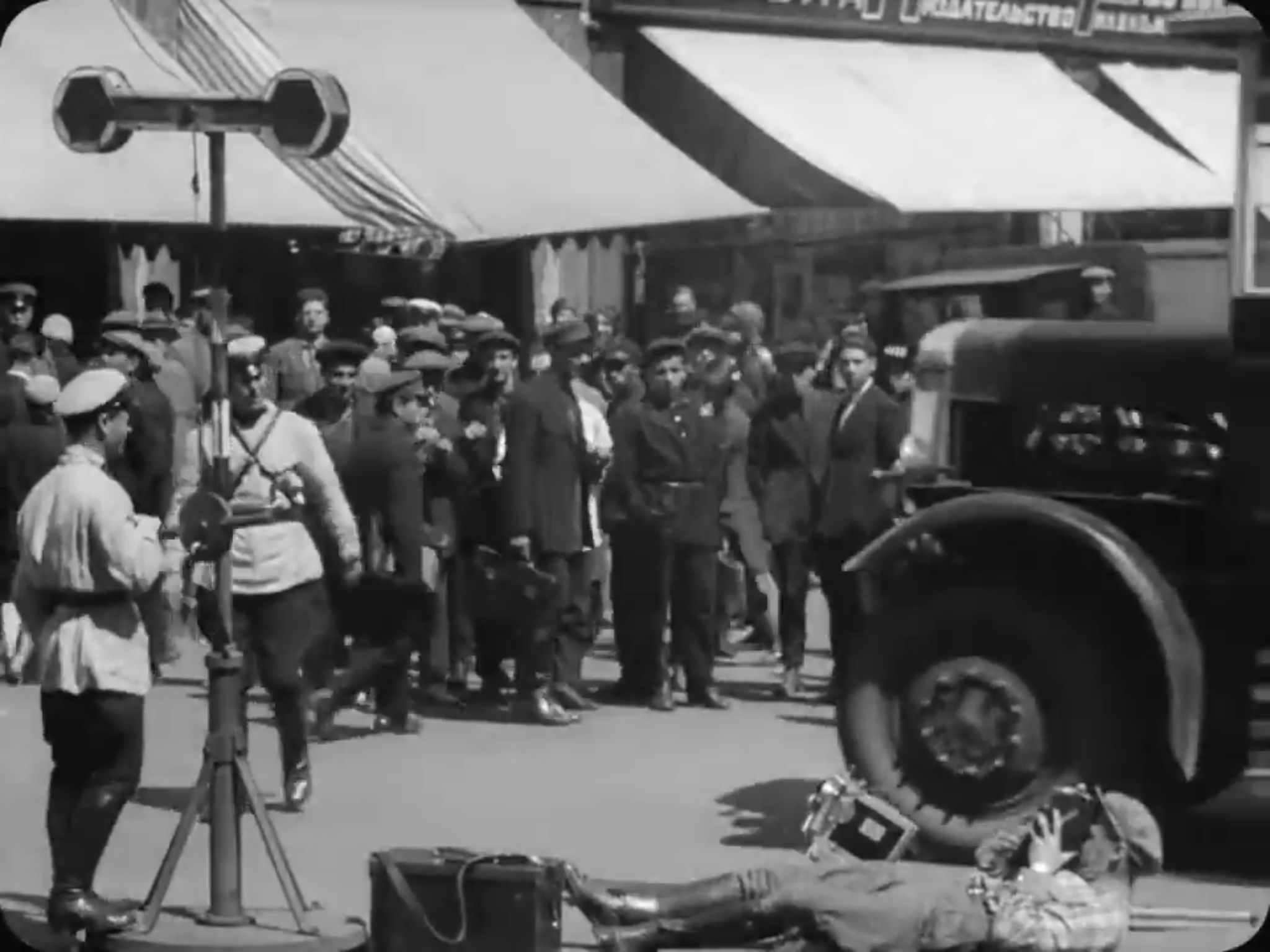 [00:42:59 on] Kuznetsky Most, Moscow. MK with Kinamo and Debrie Parvo cameras.
[00:42:59 on] Kuznetsky Most, Moscow. MK with Kinamo and Debrie Parvo cameras.
[00:43:10] As above, except the Parvo on a spreadeagled tripod without the cameraman.
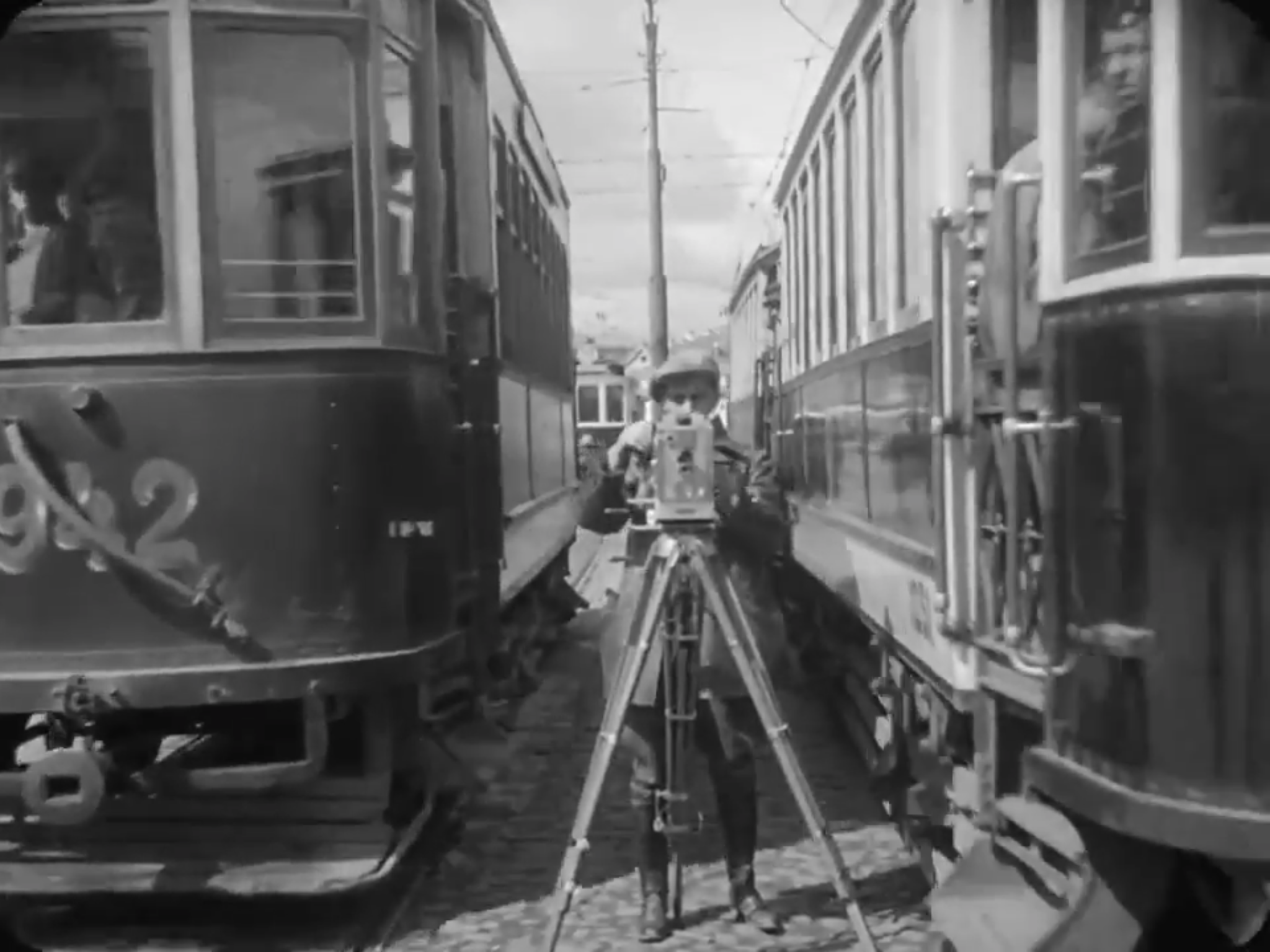 [00:43:12 on] MK with Debrie camera(s) on Teatral’nyy Projzed, Moscow.
[00:43:12 on] MK with Debrie camera(s) on Teatral’nyy Projzed, Moscow.
[00:43:24] Split screen scene of trams in Moscow. Top is of Okhotny Ryad, bottom is of Myasnitska Street.
REEL 5
Note: rising numeral 5 missing from Eye/Lobster print.
[00:44:42] Park Bridge, Kyiv.
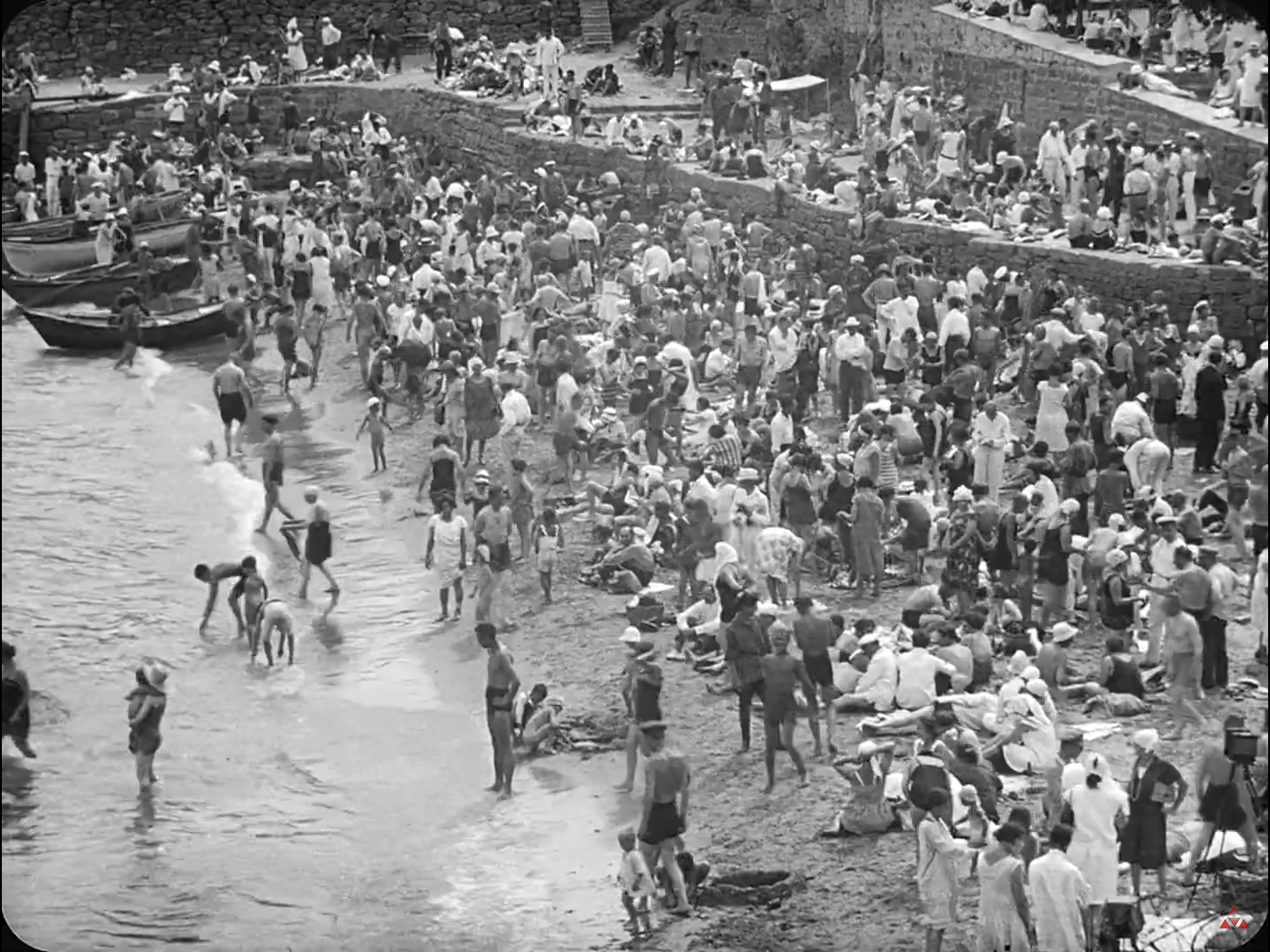 [00:44:47 on] Arcadia Beach, Odesa.
[00:44:47 on] Arcadia Beach, Odesa.
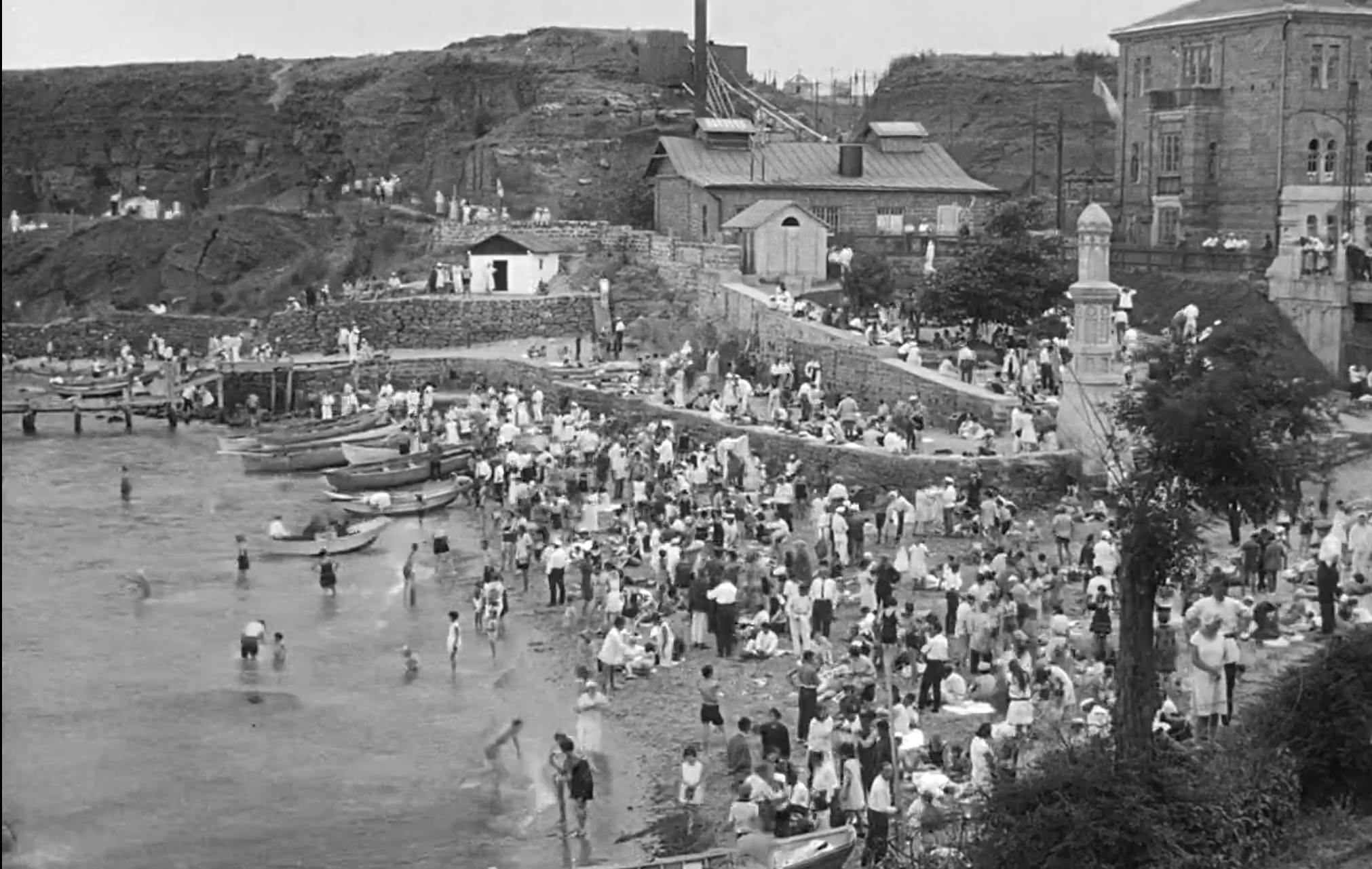 [01:06:04] A wider view of the beach from the rapid montage sequence at the end of the film – note the building at the top right, and below, which was a spa and hydrotherapy centre and is now a hotel.
[01:06:04] A wider view of the beach from the rapid montage sequence at the end of the film – note the building at the top right, and below, which was a spa and hydrotherapy centre and is now a hotel.
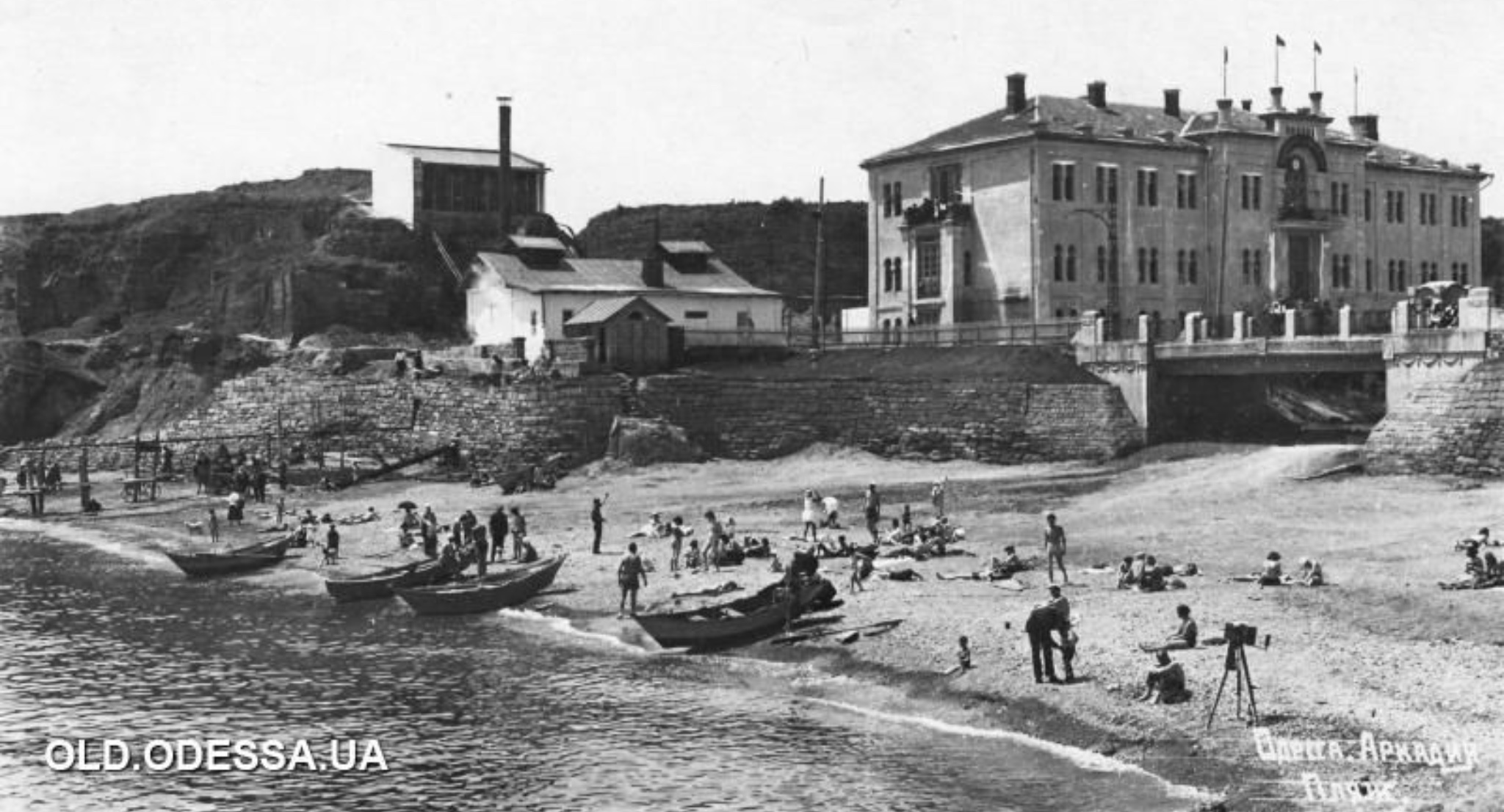 A quieter Arcadia Beach in the early 20thC.
A quieter Arcadia Beach in the early 20thC.
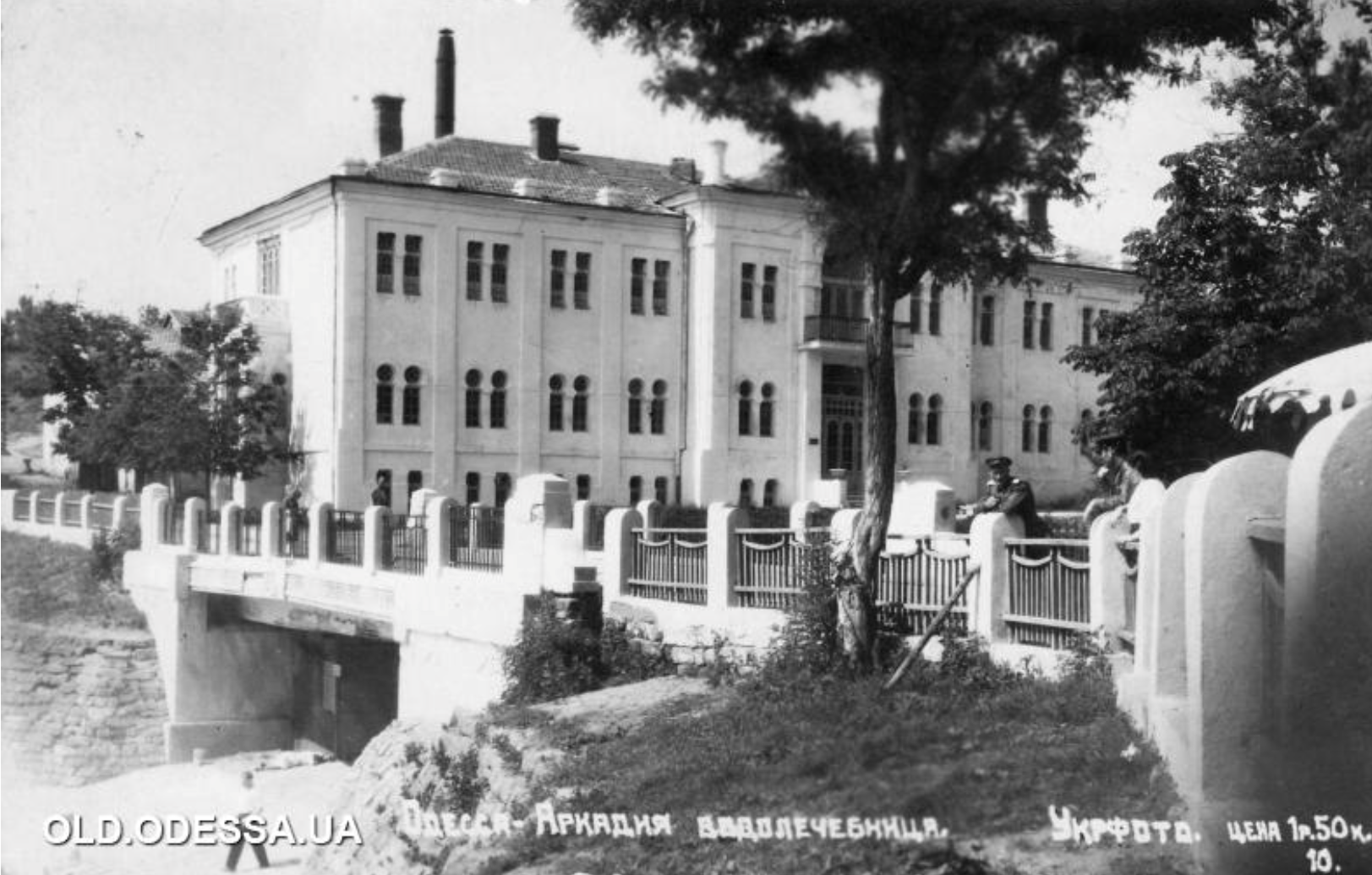 Information and photographs above from viknaodessa.
Information and photographs above from viknaodessa.
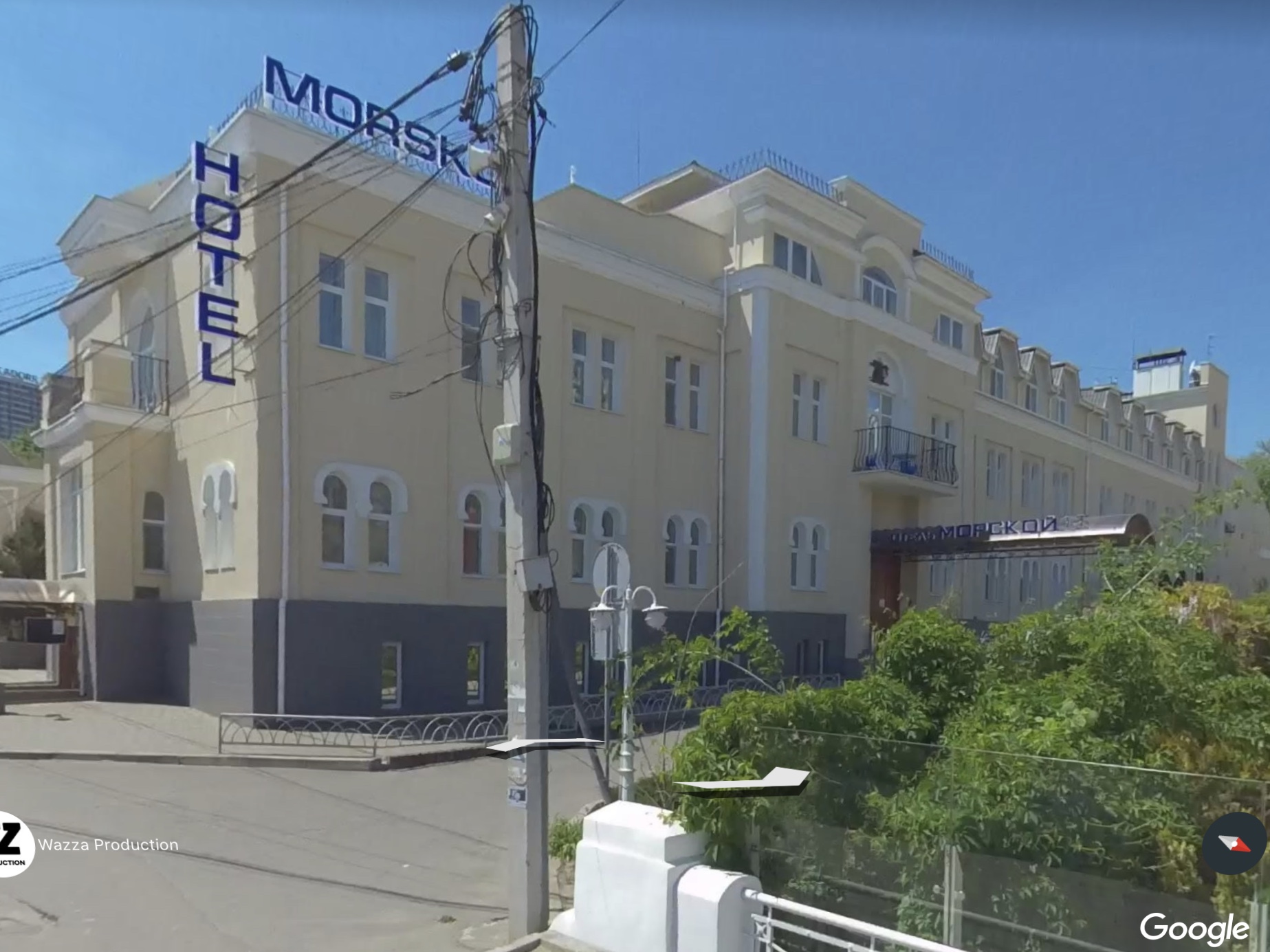 The building still exists as a hotel. [Google Earth – photograph by Wazza Production]
The building still exists as a hotel. [Google Earth – photograph by Wazza Production]
 Current view of Arcadia Beach. The former hydrotherapy centre is marked with an arrow.[Google Earth – photograph by Sergii Kushnarov]
Current view of Arcadia Beach. The former hydrotherapy centre is marked with an arrow.[Google Earth – photograph by Sergii Kushnarov]
Named after an idyllic area of Greece to encourage visitors, Arcadia Beach was Odesa’s main seaside resort in the late 1920s, and still is. On the outskirts of the city, connected by tram, it was very popular from the start of its development at the end of the 19thC. There were restaurants, cafes, warm sea baths, a spa and hydrotherapy clinic, sanatoriums, and ‘a polyclinic with electro-mechano-therapeutic rooms’ which sounds intimidating! Next to the beach there was a pleasant seafront park with the inevitable monument to VI Lenin.
[00:45:28 on] Swimming and exercises, Odesa Port (see also [00:48:55] on). Confirmed by Yevgeny Volokin because of the distinctive iron mooring bollard.
[00:45:34 on] Conjuror and children sequences. Unknown location. There is a similar scene in ‘Kino-glaz’ (1924).
[00:45:50] Carousel (the same one as sequence [00:54:23]?). Likely to be Odesa but location not found.
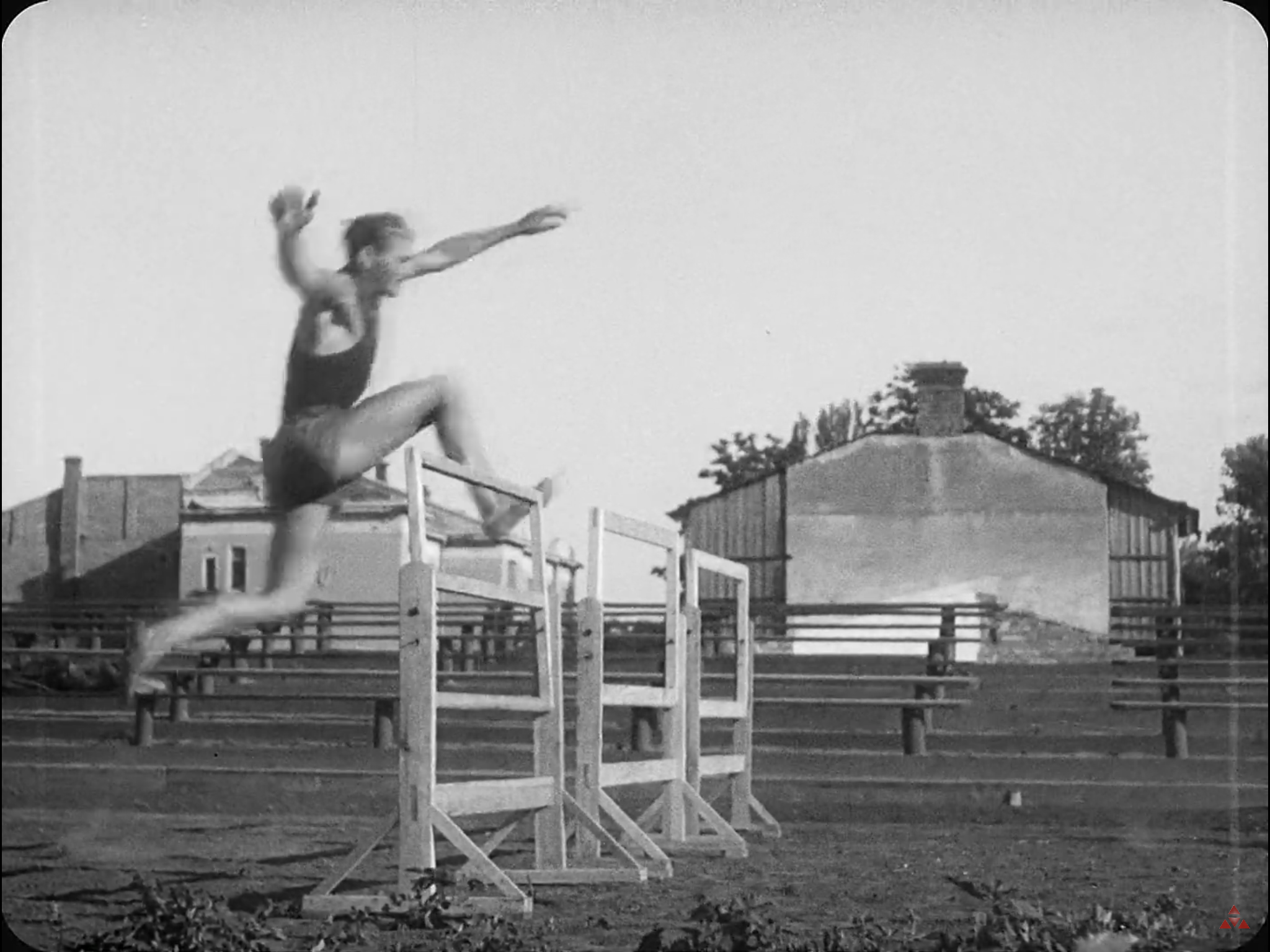 [00:46:38 on] Athletics sequence, Odesa. The seating is similar to that seen in later sports sequences (see [00:54:15 on]).
[00:46:38 on] Athletics sequence, Odesa. The seating is similar to that seen in later sports sequences (see [00:54:15 on]).
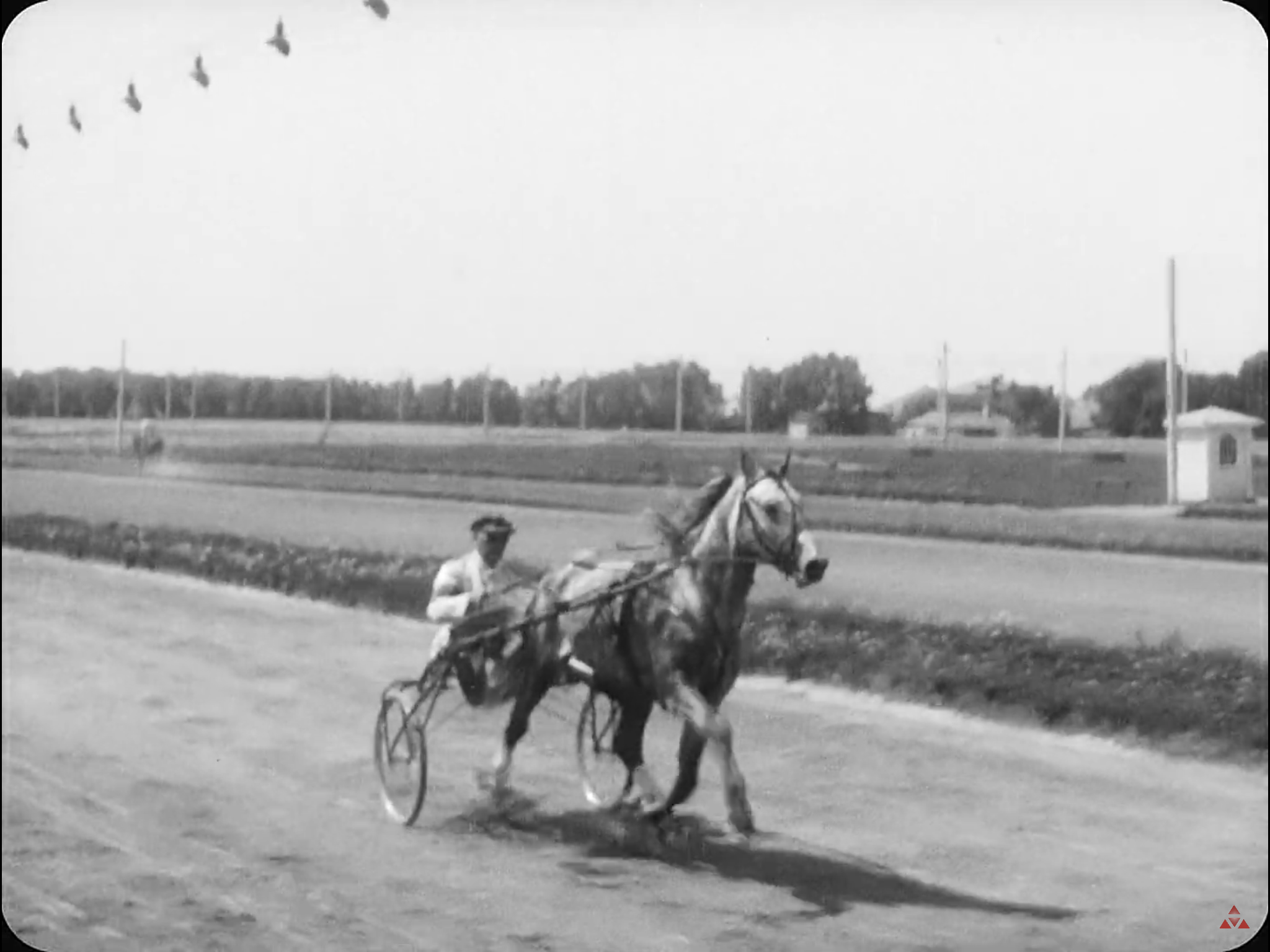
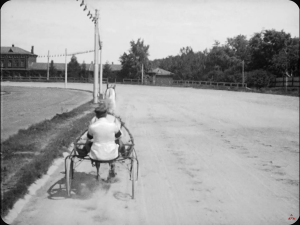
[00:48:27 on] Trotting (Harness racing) at Moscow Hippodrome. The spectacular grandstand below does not appear in any of the footage, most likely because there were no spectators. This was difficult to locate because of the lack of clues but the (assumed) stables building at the end of the track on the left above appears in an early 1900s photograph of a race.
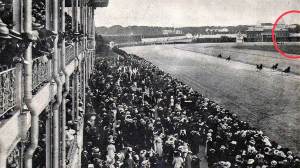
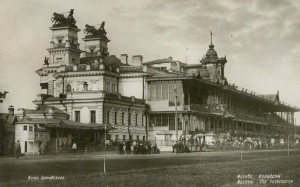
 Moscow Hippodrome [Google Earth]. Only the left wing of the building seems to have survived, circled above.
Moscow Hippodrome [Google Earth]. Only the left wing of the building seems to have survived, circled above.
[00:48:36 on] Horse riding on a track (?). Difficult to see if it is the same hippodrome as there are no clues except for the distinctive fence which isn’t seen in the trotting sequence. Location not verified.
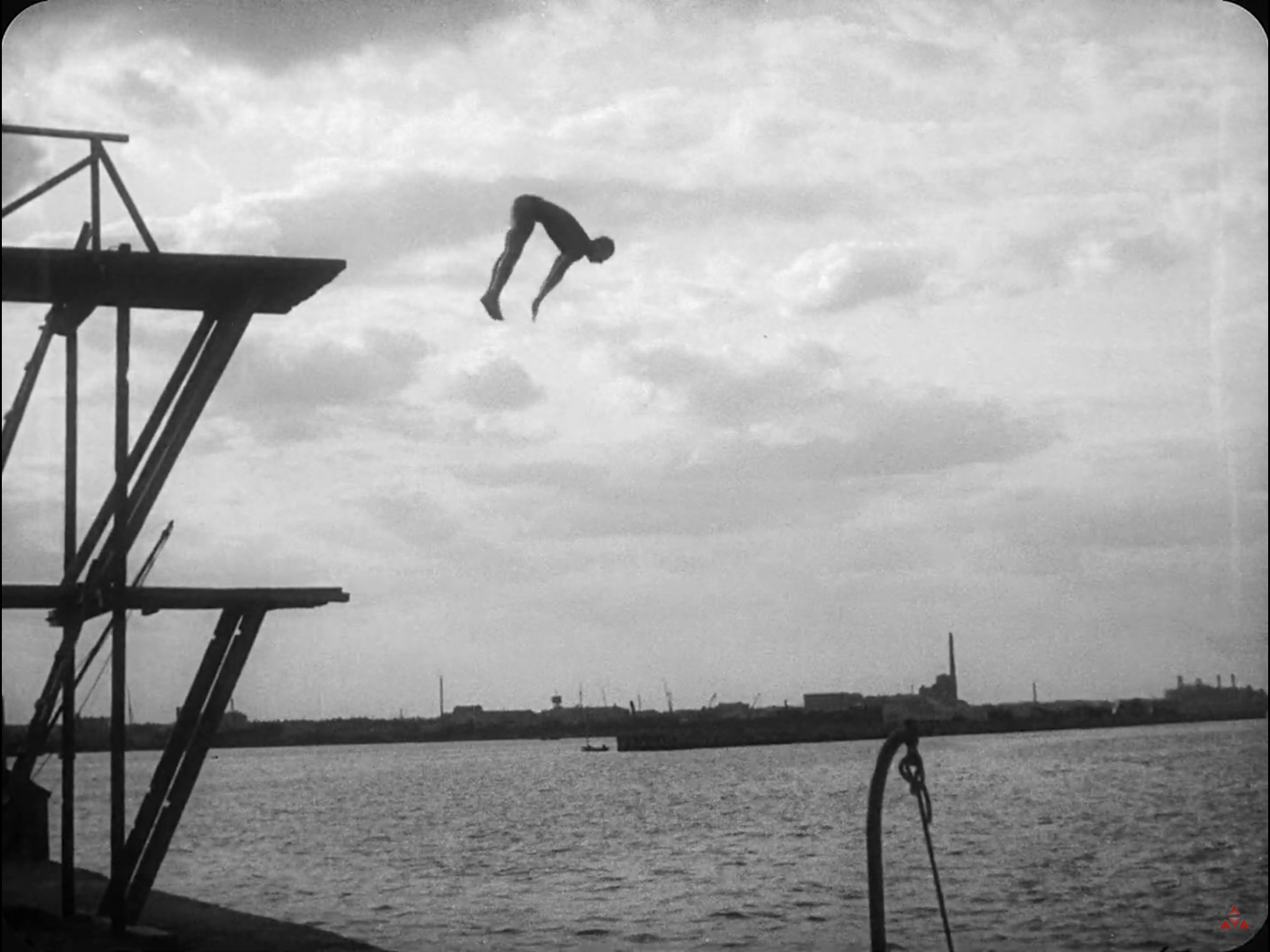
[00:48:55 on] Diving, exercising, and swimming at Odesa Port (the harbour, not a swimming pool – note the large mooring bollards). The diving tower was located in the yacht club.
[00:49:47 on] Mud and sun bathing at Kuyal’nik resort, near Odesa.
A perfect example of ‘Creative Geography’: the impression of a journey by sea is given from the travel agent’s window advertising passage from Odesa to Jaffa on the ‘Lenin’ [00:19:17] and the ship leaving port [00:44:22].
The ‘Man with the Camera’ disembarks [00:50:15], and then goes on to a beach with his camera [00:50:48]. The resort is nowhere near Jaffa but actually on a land-locked shallow salt lagoon a few km by road from the centre of Odesa! The ship then returns to the city ‘after the holiday’ at the beginning of reel 6 [00:55:37].
[00:50:39 on] [00:52:03 on] Exercise machines at Kuyal’nik Sanatorium? Not verified.
 [00:50:48] MK walks across the beach at Kuyal’nik
[00:50:48] MK walks across the beach at Kuyal’nik
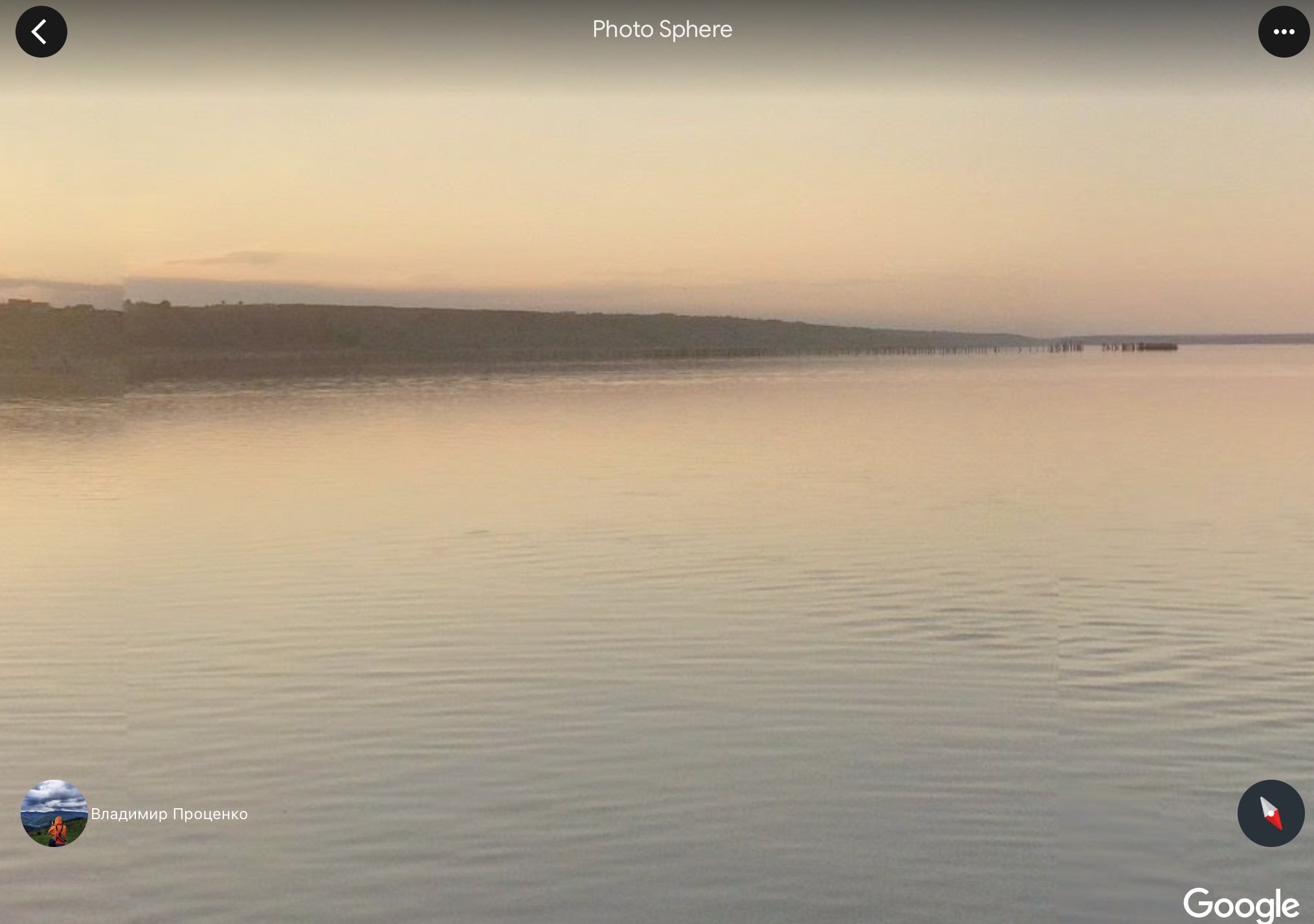 The same view today with the ruins of the pier from the Sanatorium in the background (Google Earth – photograph by Vladimir Percenko).
The same view today with the ruins of the pier from the Sanatorium in the background (Google Earth – photograph by Vladimir Percenko).
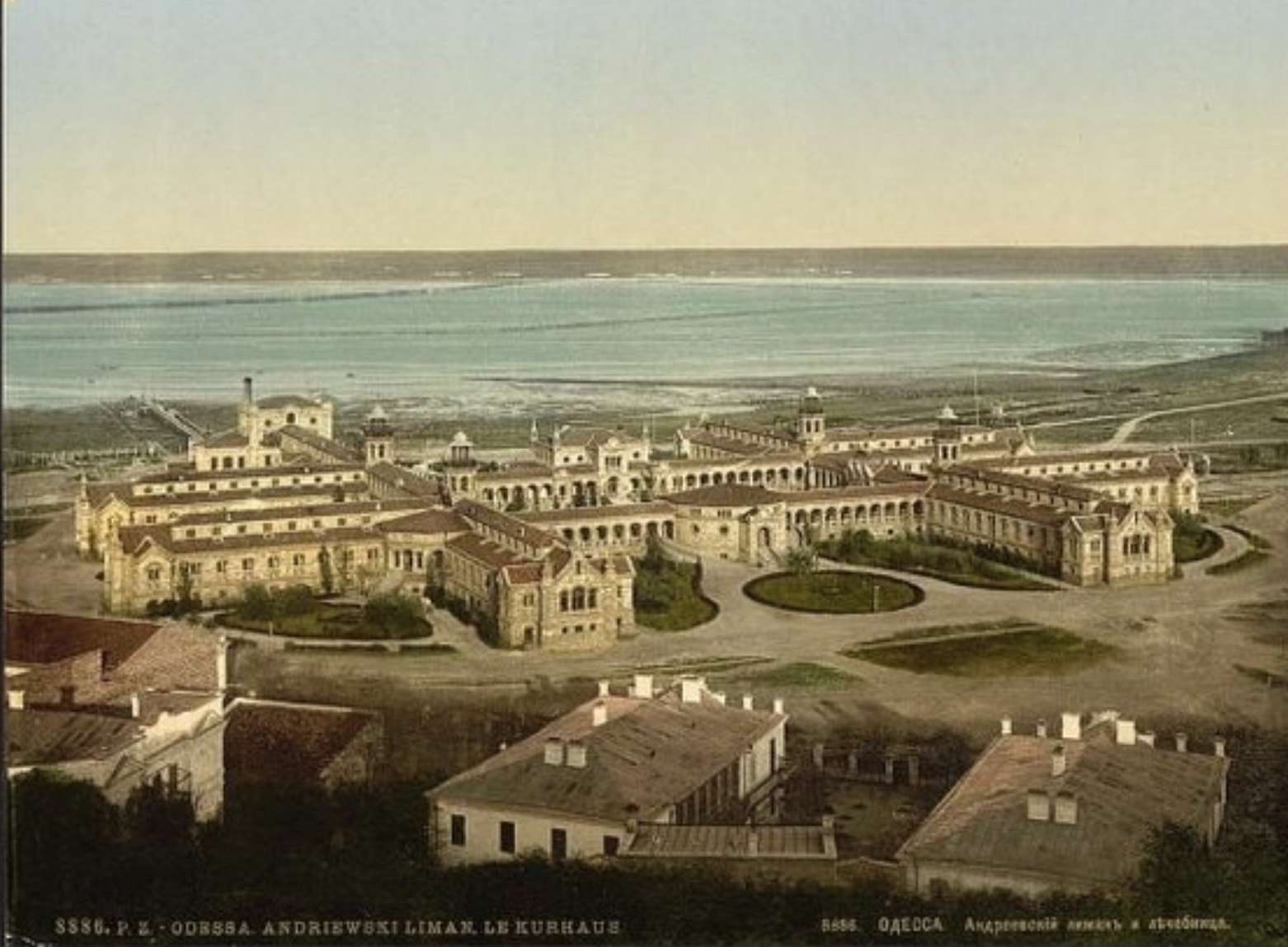 Late 19thC postcard showing the Kuyal’nik Sanitorium in its heyday.
Late 19thC postcard showing the Kuyal’nik Sanitorium in its heyday.
Current Google Earth images showing the derelict Sanatorium and remains of its pier.
[00:52:14] Disembodied weight lifter, Kuyal’nik? Not verified.
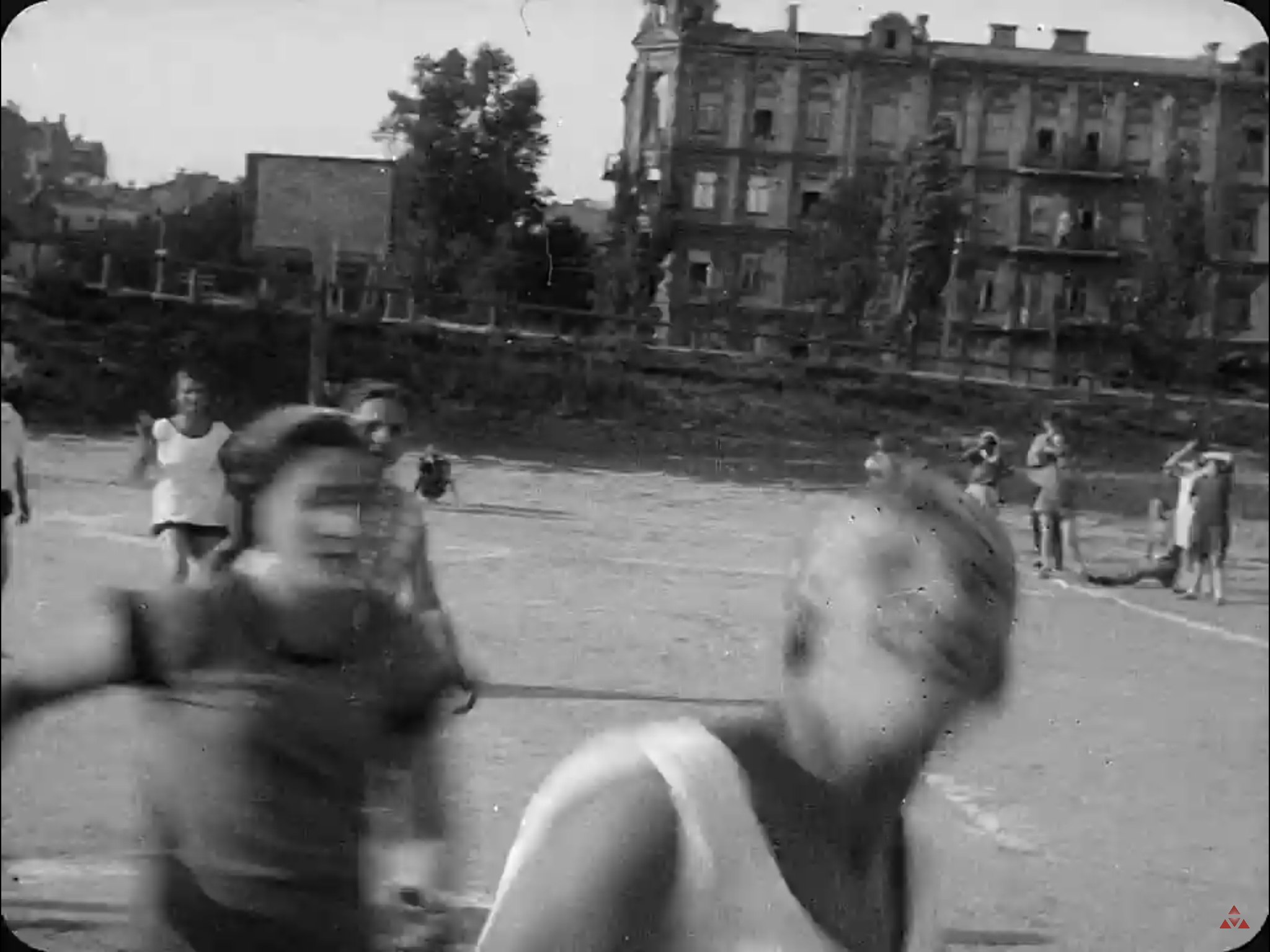 [00:53:05] Netball sequence at the ‘Red Stadium’ in Kyiv.
[00:53:05] Netball sequence at the ‘Red Stadium’ in Kyiv.
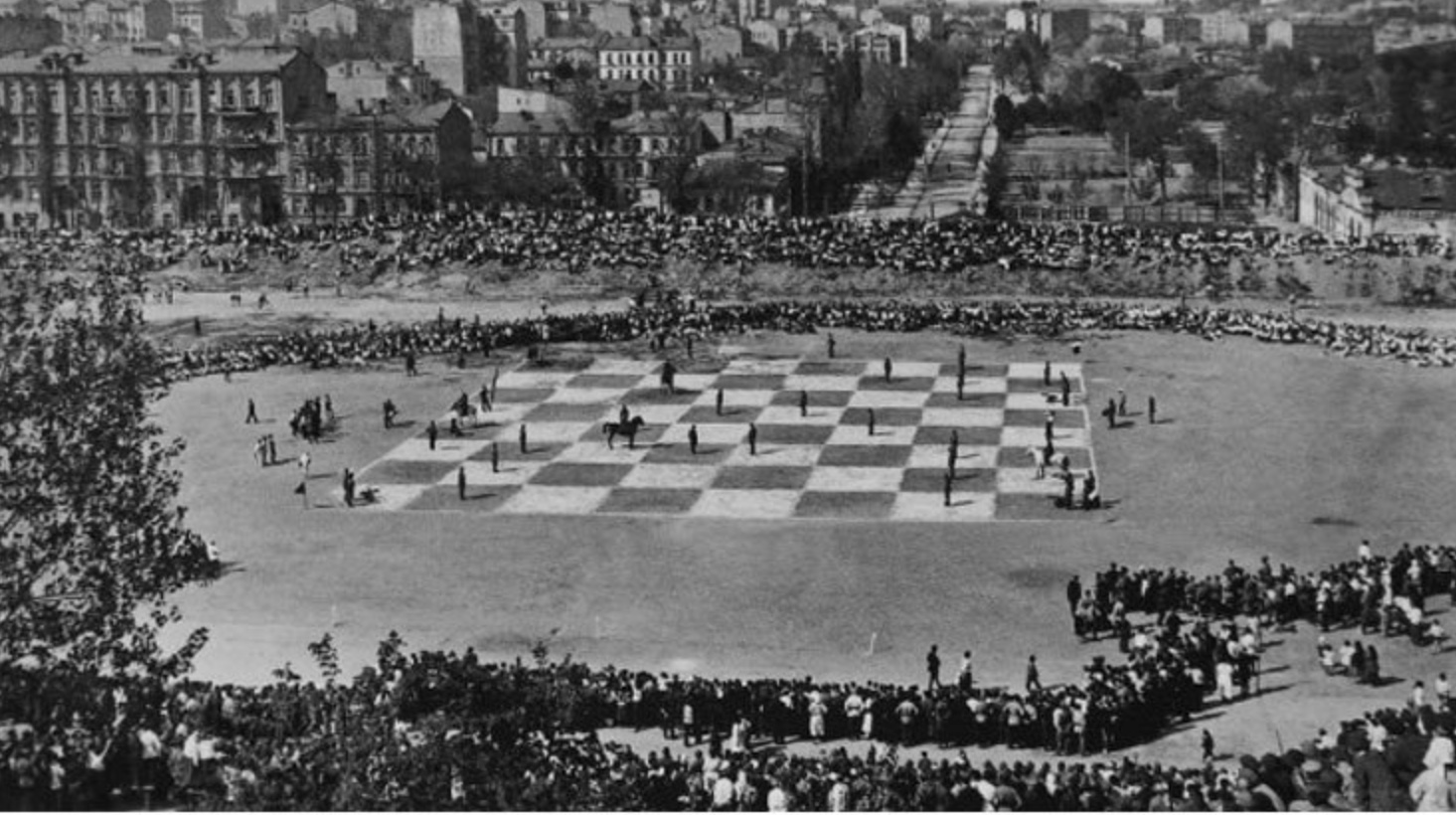 Overall view of the stadium with a ‘human chess’ event! The netball would have been played at the top left judging by the large building on the lhs in the background and in the screenshot which was on Zhilyanska Street, since demolished for the Olympic Stadium .
Overall view of the stadium with a ‘human chess’ event! The netball would have been played at the top left judging by the large building on the lhs in the background and in the screenshot which was on Zhilyanska Street, since demolished for the Olympic Stadium .
[00:53:28 on] Football (part?) and intermittent athletics sequences, Odesa. The sports ground can be located as in one of the frames there is a glimpse of a nearby church and churchyard which is St John of Kronstadt, unrecognisable today from the beautiful building below right. The spectator seating below left can be seen in the athletics and some of the shots of the football match. It isn’t clear if the rest of the match is being filmed in the stadium.
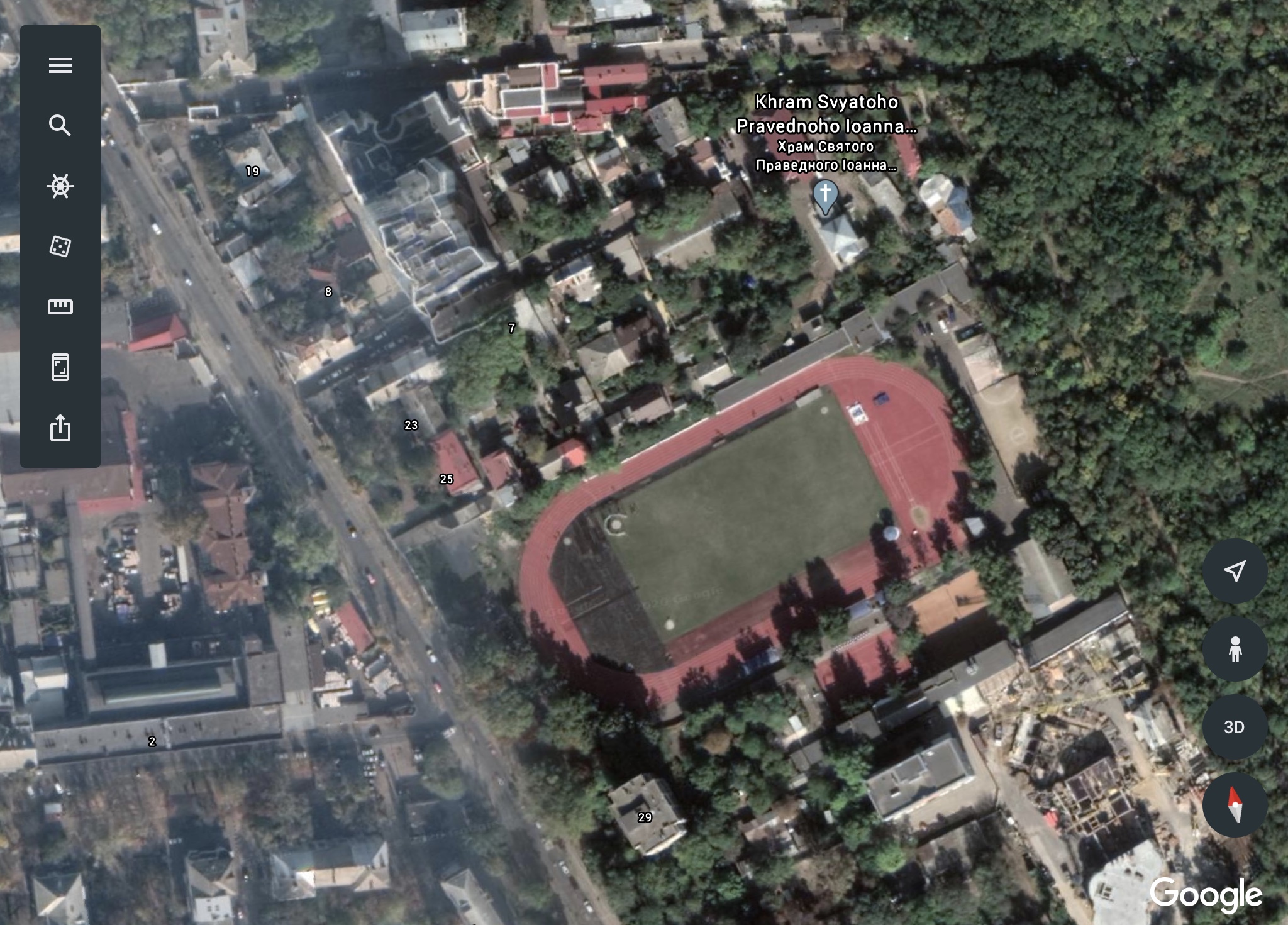 The sports ground still exists, called Dynamo. The church is just above the rh end [Google Earth].
The sports ground still exists, called Dynamo. The church is just above the rh end [Google Earth].
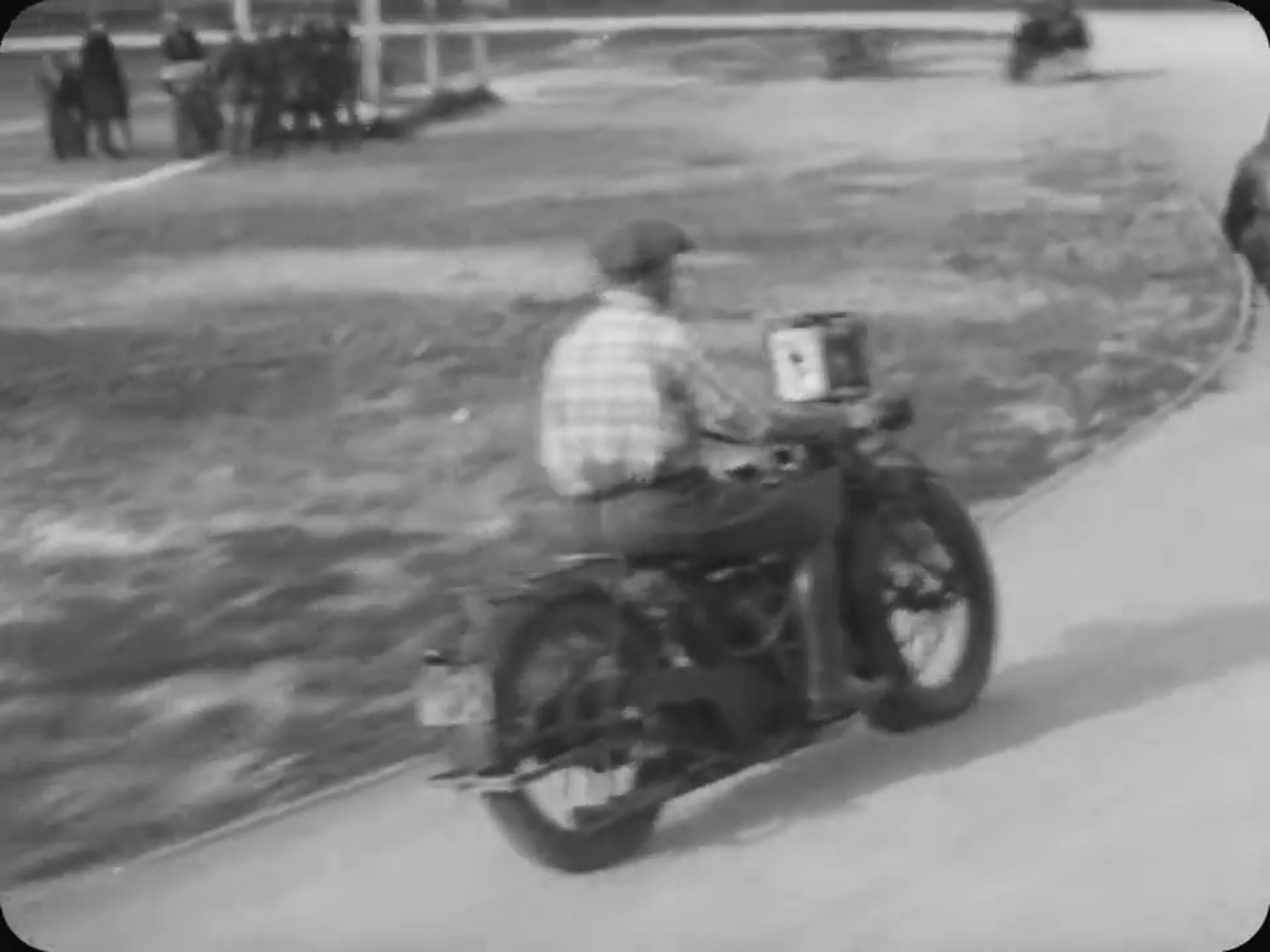 [00:54:19 on] Motor cycles on a track. The banked part of the track is seen during the sequence in a triple horizontal exposure ([00:54:48] check the broken concrete line!) to give the impression it was wider and there were more ‘competitors’.
[00:54:19 on] Motor cycles on a track. The banked part of the track is seen during the sequence in a triple horizontal exposure ([00:54:48] check the broken concrete line!) to give the impression it was wider and there were more ‘competitors’.
I have not yet found the location of this track which I think was a velodrome (cycling track) as is too narrow for a motor racing circuit compared to Brooklands in Surrey (UK) for example. It seems to be in a semi-derelict condition (top image below [00:54:26]) which implies it was old in the late 1920s. It could be one of two early velodromes (cycle racing tracks) in Kyiv. The later one seems to have been in use at the time of the film (location map below) but I cannot find any record of the first one built at Bibikovsky Boulevard in 1899. There were also early velodromes in Kharkiv, Odesa, and Donetsk. For a visual comparison there was a later velodrome in Odesa (bottom image below) built in 1929. Investigations continue!
 1925 location map (Kyiv Public Utilities Department #311) of the second (1913) Kyiv Velodrome which has been restored and is in use again. The diagonal road at the bottom is Bogdan Khmelnytsky Street. [map courtesy of M. Kalnytsky]
1925 location map (Kyiv Public Utilities Department #311) of the second (1913) Kyiv Velodrome which has been restored and is in use again. The diagonal road at the bottom is Bogdan Khmelnytsky Street. [map courtesy of M. Kalnytsky]
 [00:54:22 on] Carousel sequences, in Odesa judging by the clothing. Exact location not found. The carousel is actually ‘mirrored’ in parts of this sequence (as in this screenshot – the camera is the wrong way around!). Perhaps for artistic reasons to contrast with the motor cycles going around the track in the opposite direction?
[00:54:22 on] Carousel sequences, in Odesa judging by the clothing. Exact location not found. The carousel is actually ‘mirrored’ in parts of this sequence (as in this screenshot – the camera is the wrong way around!). Perhaps for artistic reasons to contrast with the motor cycles going around the track in the opposite direction?
REEL 6
Note: rising numeral 6 missing from Eye/Lobster print.
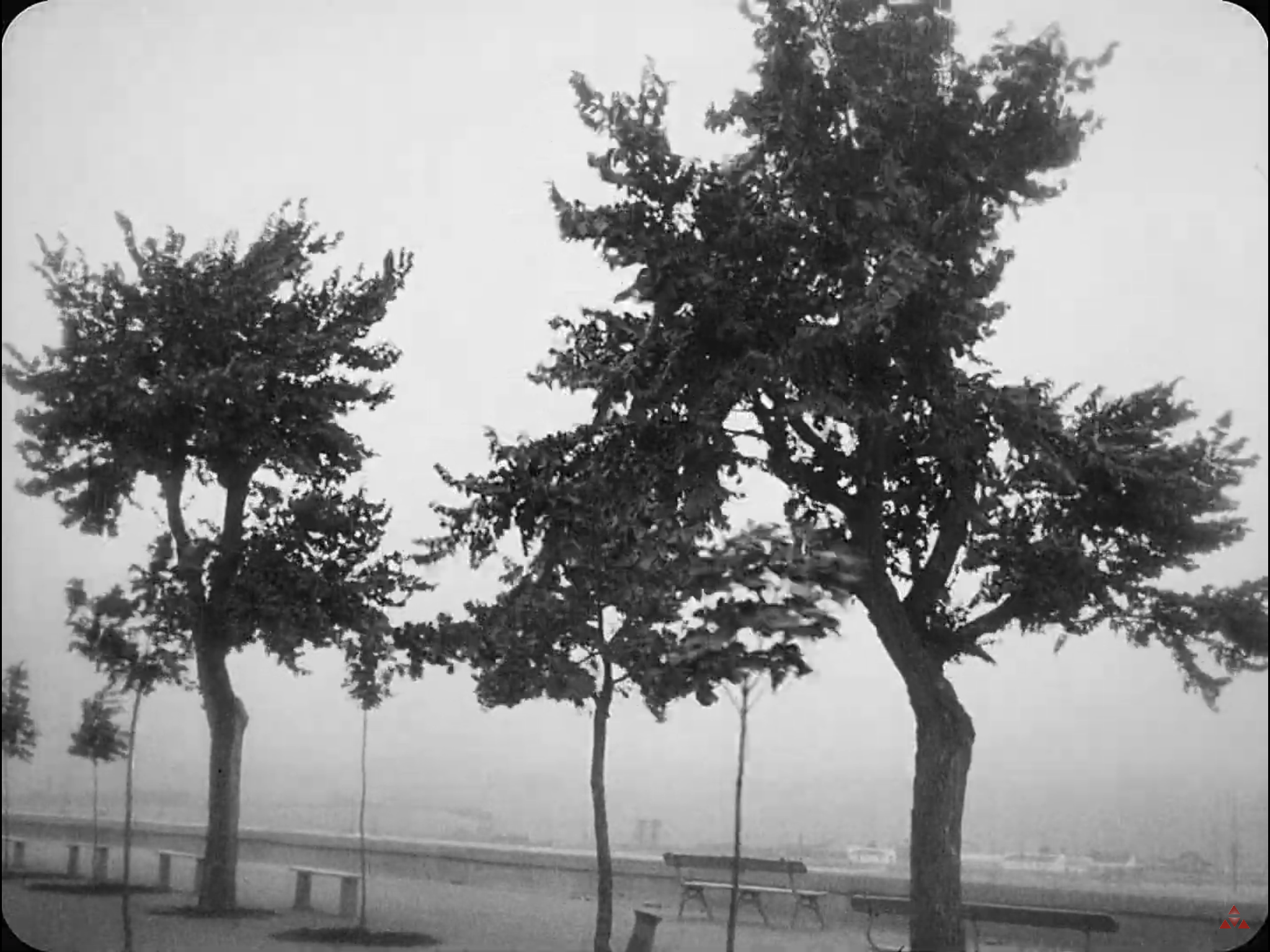 [00:55:40] Prymorskyi Boulevard, Odesa. Views over the Port.
[00:55:40] Prymorskyi Boulevard, Odesa. Views over the Port.
[00:55:48] Proletarian Cinema, (later Beaumonde [Бомонд] Cinema), October Revolution Square, Odesa.
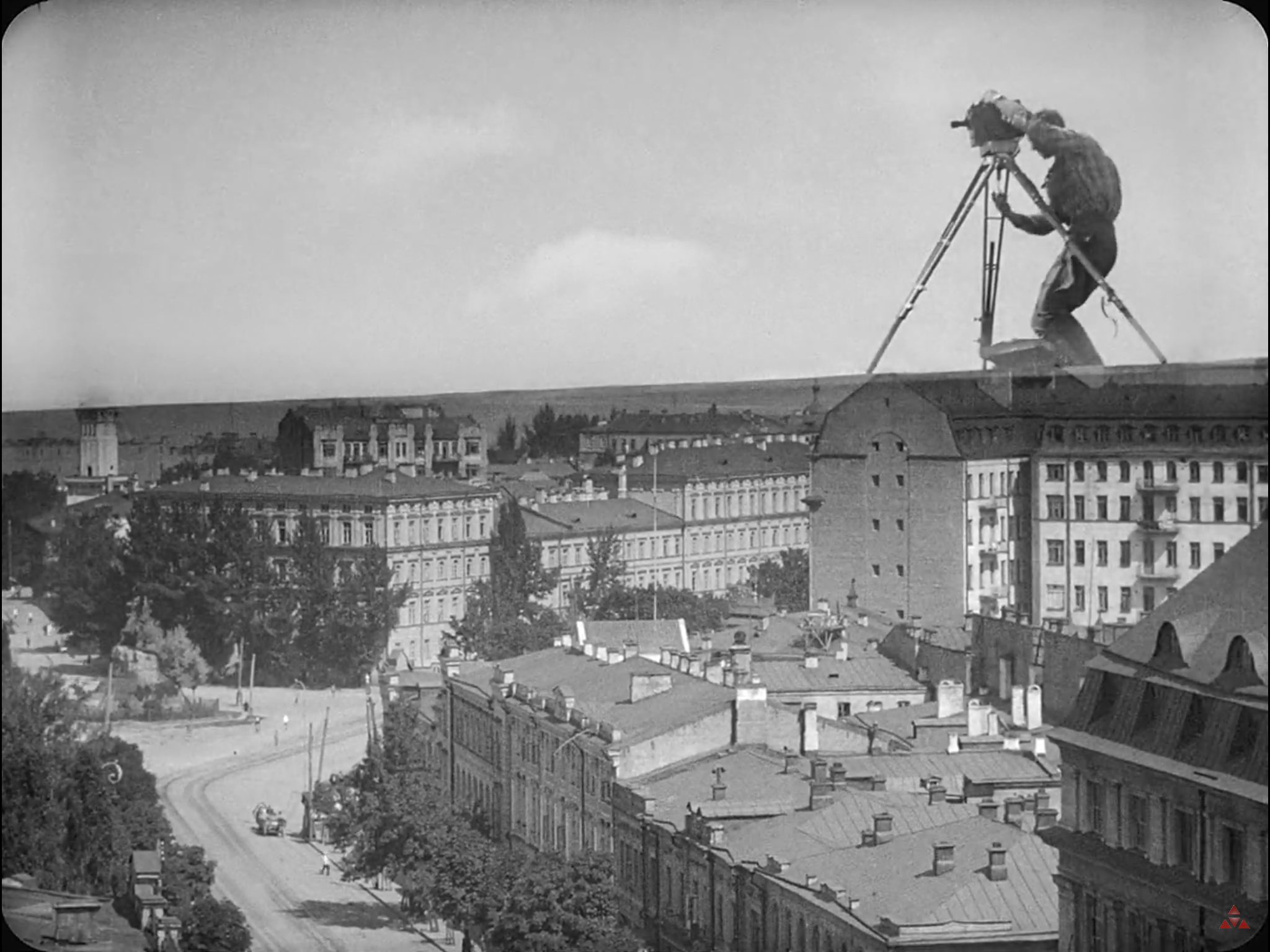 [00:55:59] Giant camera overlooking Sofiys’ka Square, Kyiv. The angle of view is narrower than the previous one overlooking Volodymyrska Street (see screenshot [00:07:03]) as the 21cm Krauss Zeiss telephoto lens would probably have been used here (this is the lens that is most commonly seen in the film). See my blog post on the cameras in the film for details of the lenses.
[00:55:59] Giant camera overlooking Sofiys’ka Square, Kyiv. The angle of view is narrower than the previous one overlooking Volodymyrska Street (see screenshot [00:07:03]) as the 21cm Krauss Zeiss telephoto lens would probably have been used here (this is the lens that is most commonly seen in the film). See my blog post on the cameras in the film for details of the lenses.
Current views of Sofiys’ka Square and statue – the building behind the statue of Bogdan Khmelnytsky is recognisable in the screenshot from the film [top: Google Earth; bottom: Ukrainian Trip Adviser]. Sofiys’ka is one of the main squares of Kyiv, overlooked by the Cathedral of St Sophia.
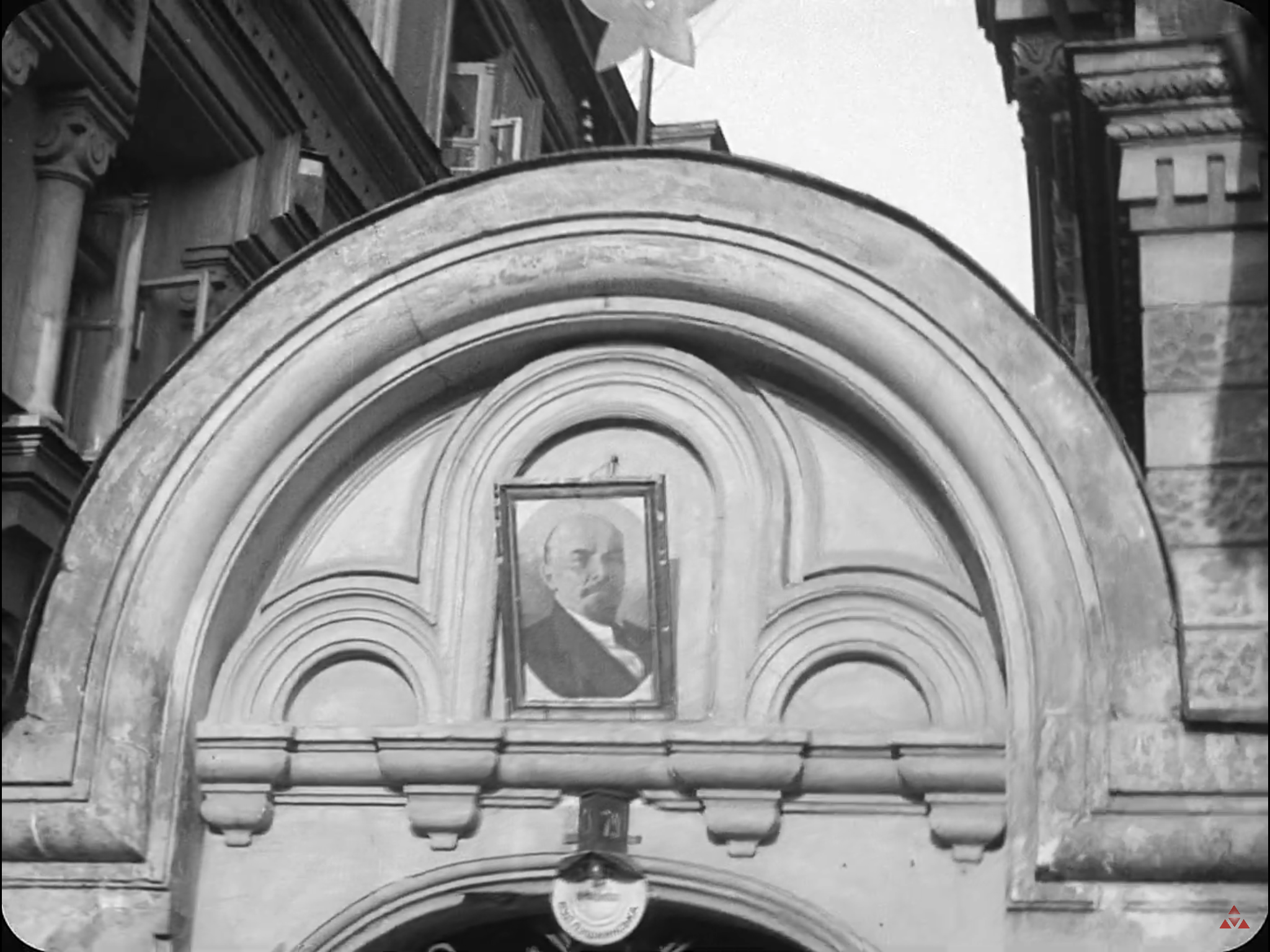
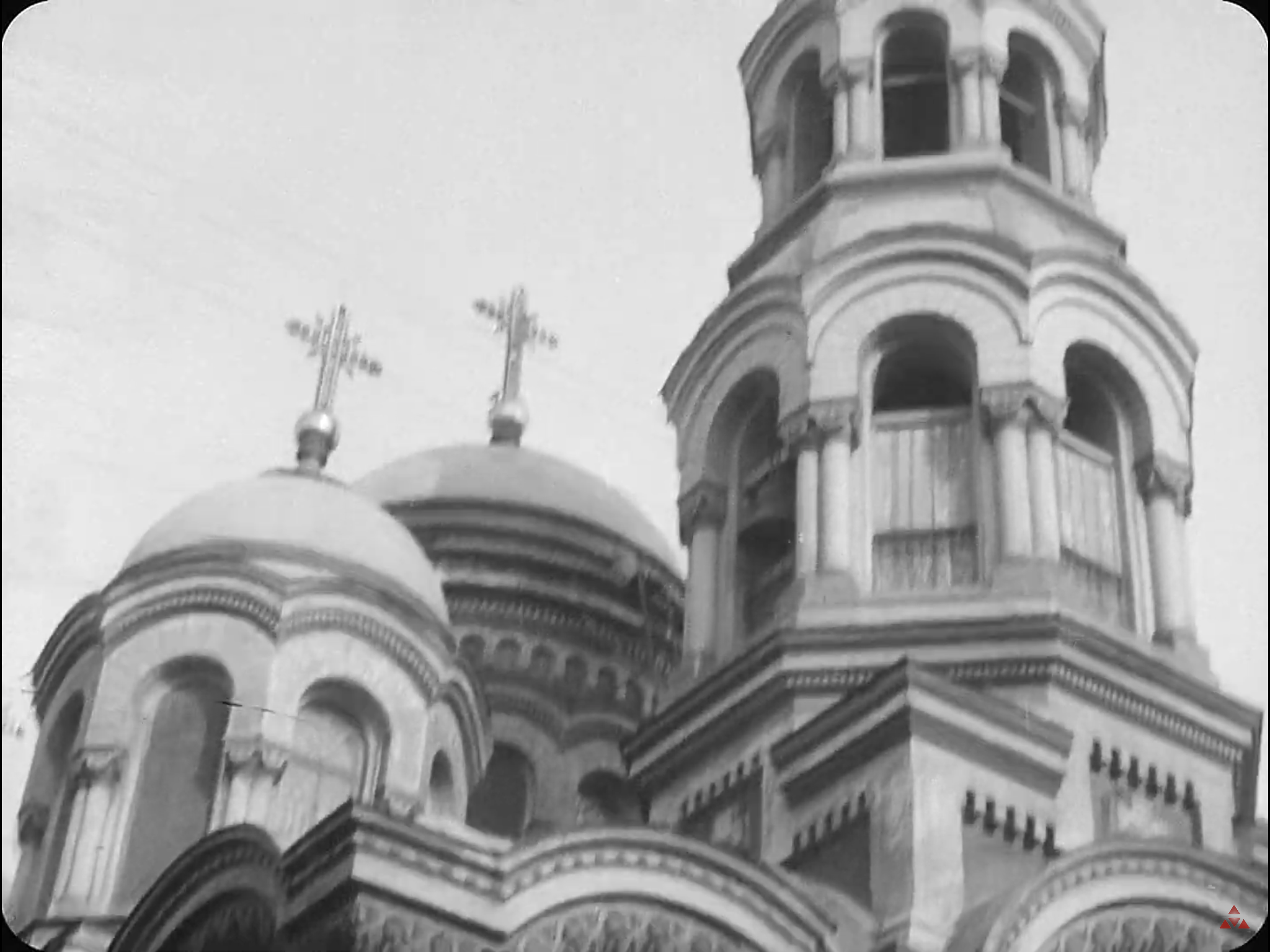 [00:57:06] ‘Drunken’ views over a candle shop and church (former St Elijah’s Monastery) converted into the VI Ulyanov (Lenin’s real name) workers’ club, Pushkins’ka Street, Odesa.
[00:57:06] ‘Drunken’ views over a candle shop and church (former St Elijah’s Monastery) converted into the VI Ulyanov (Lenin’s real name) workers’ club, Pushkins’ka Street, Odesa.
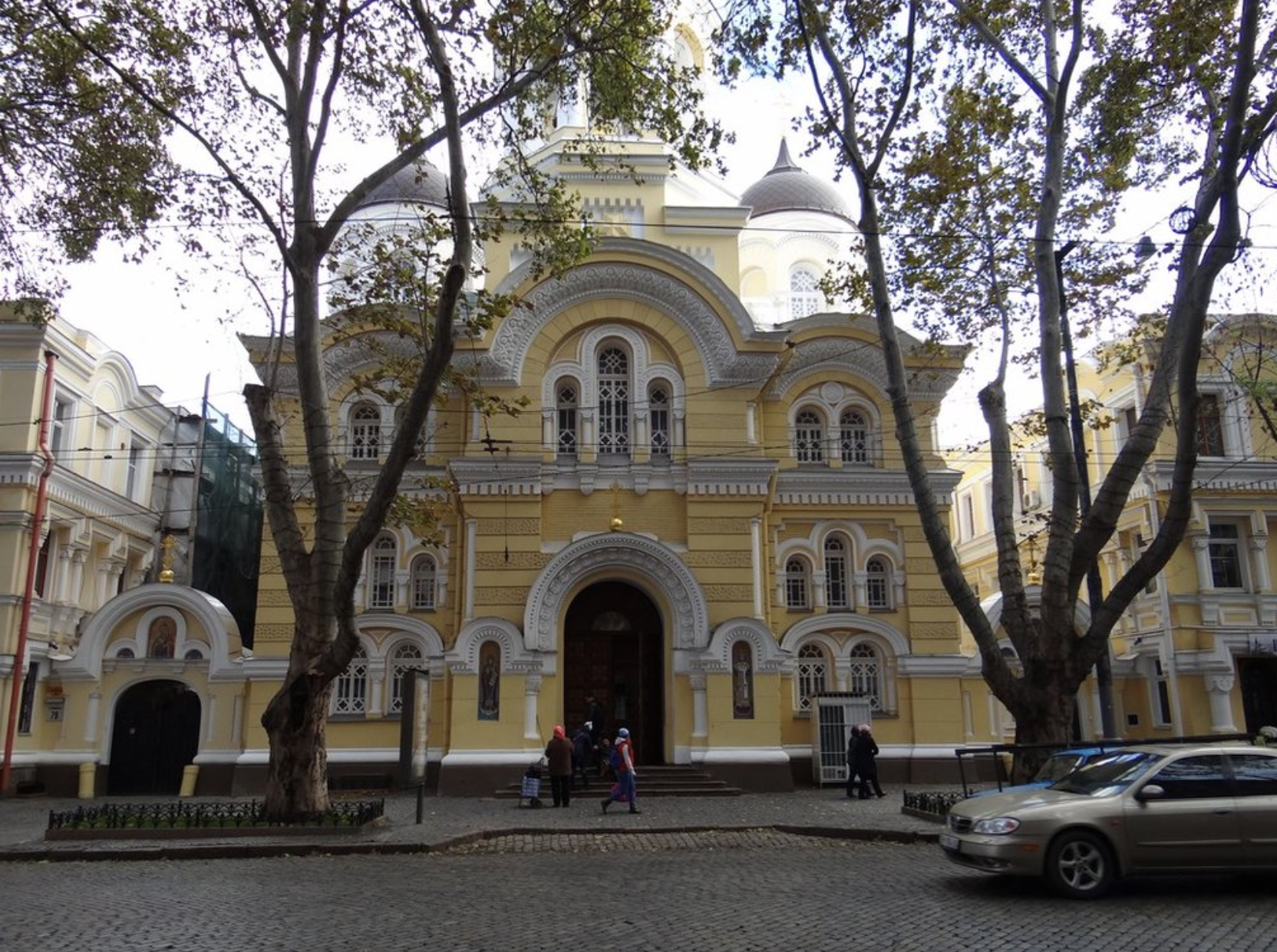 Current view of St Elijah’s Monastery, beautifully restored, with a religious scene over the gates instead of Lenin!
Current view of St Elijah’s Monastery, beautifully restored, with a religious scene over the gates instead of Lenin!
[00:57:40] Rifle range. Location not found.
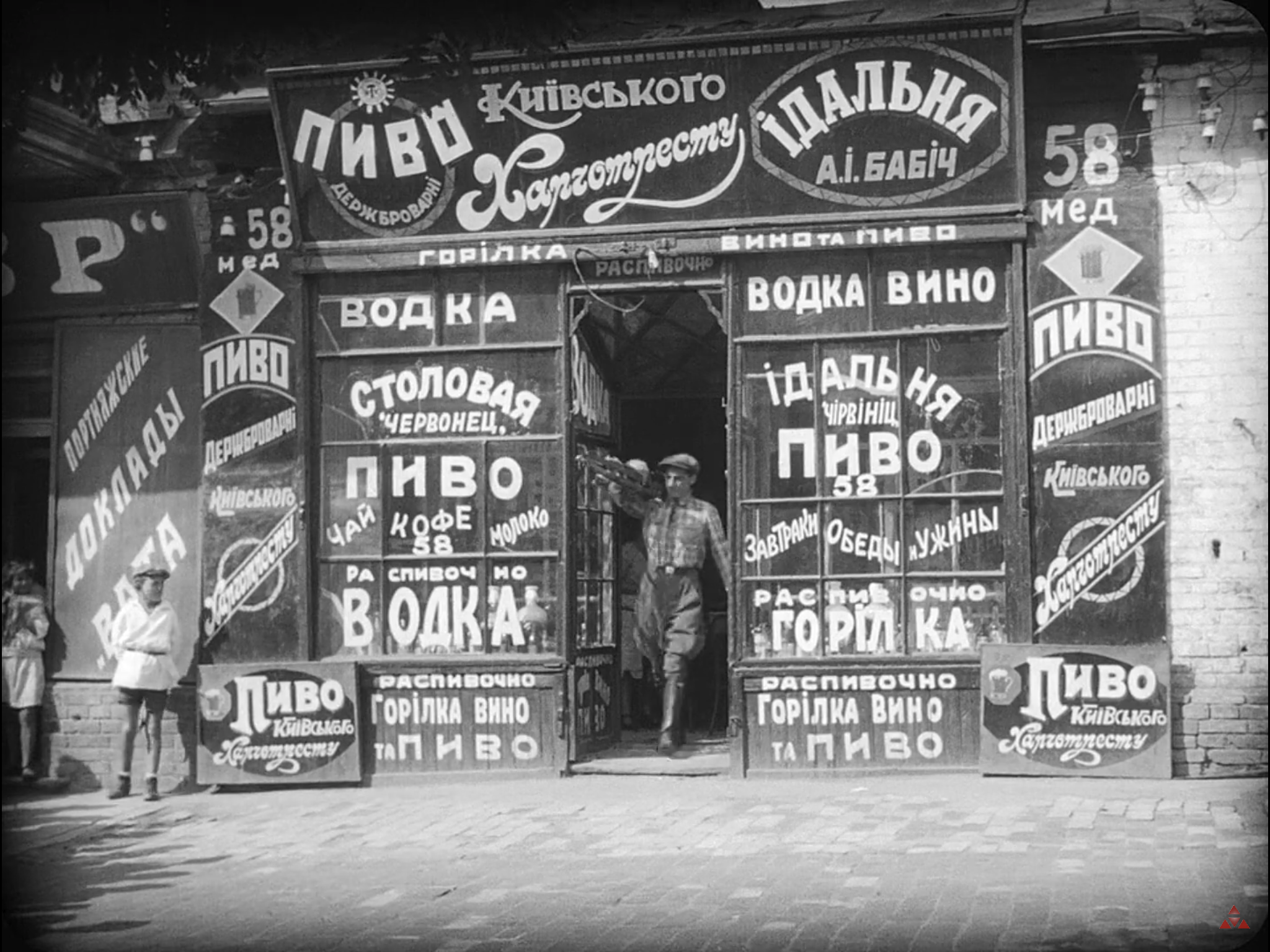 [00:58:29] Drinks shop, Kyiv (city name on fascia). An example of private enterprise during the NEP era. Exact location not found.
[00:58:29] Drinks shop, Kyiv (city name on fascia). An example of private enterprise during the NEP era. Exact location not found.
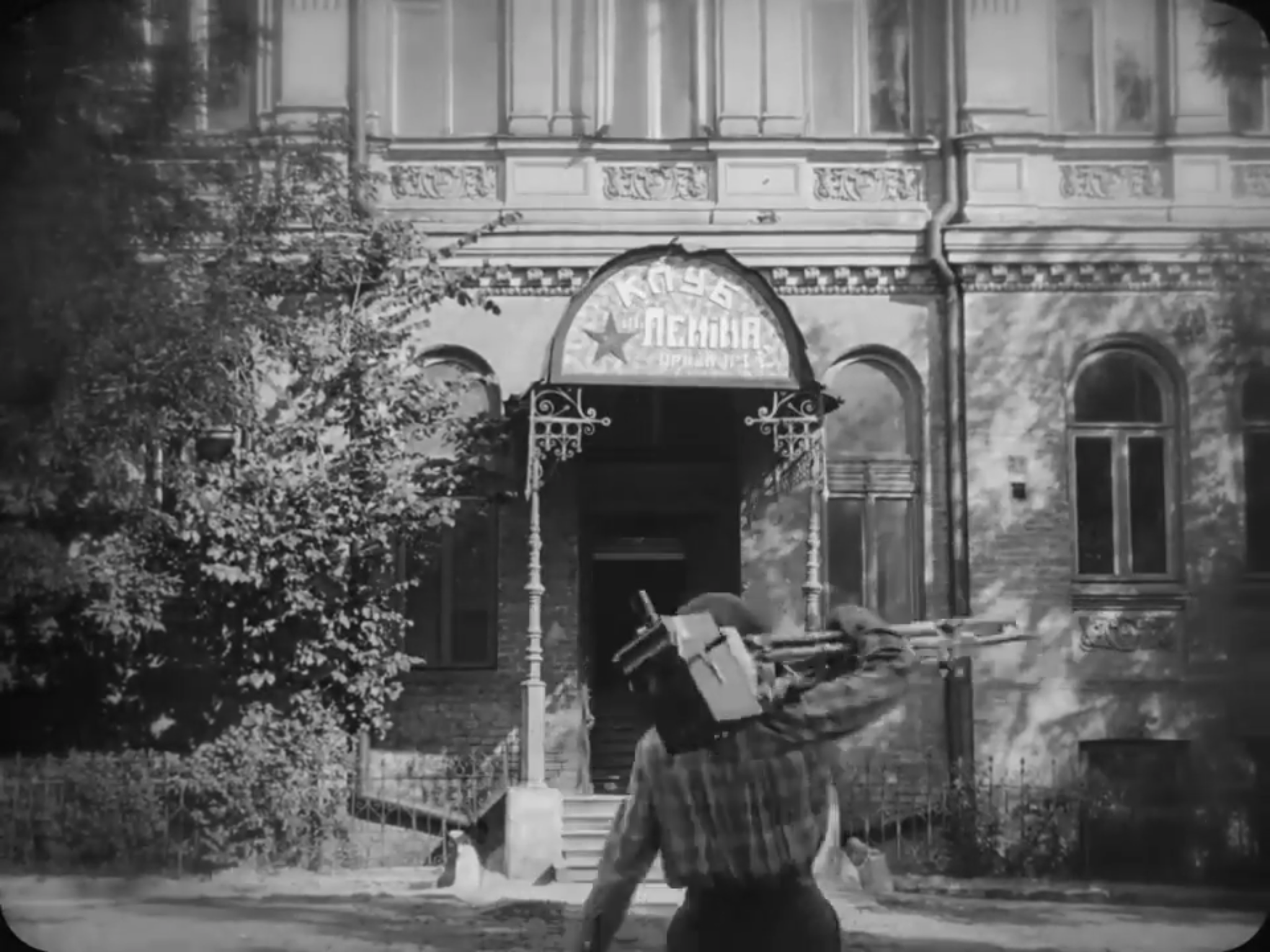 [00:58:39] Lenin Club, No. 19 Ivana Franka Street, Kyiv.
[00:58:39] Lenin Club, No. 19 Ivana Franka Street, Kyiv.
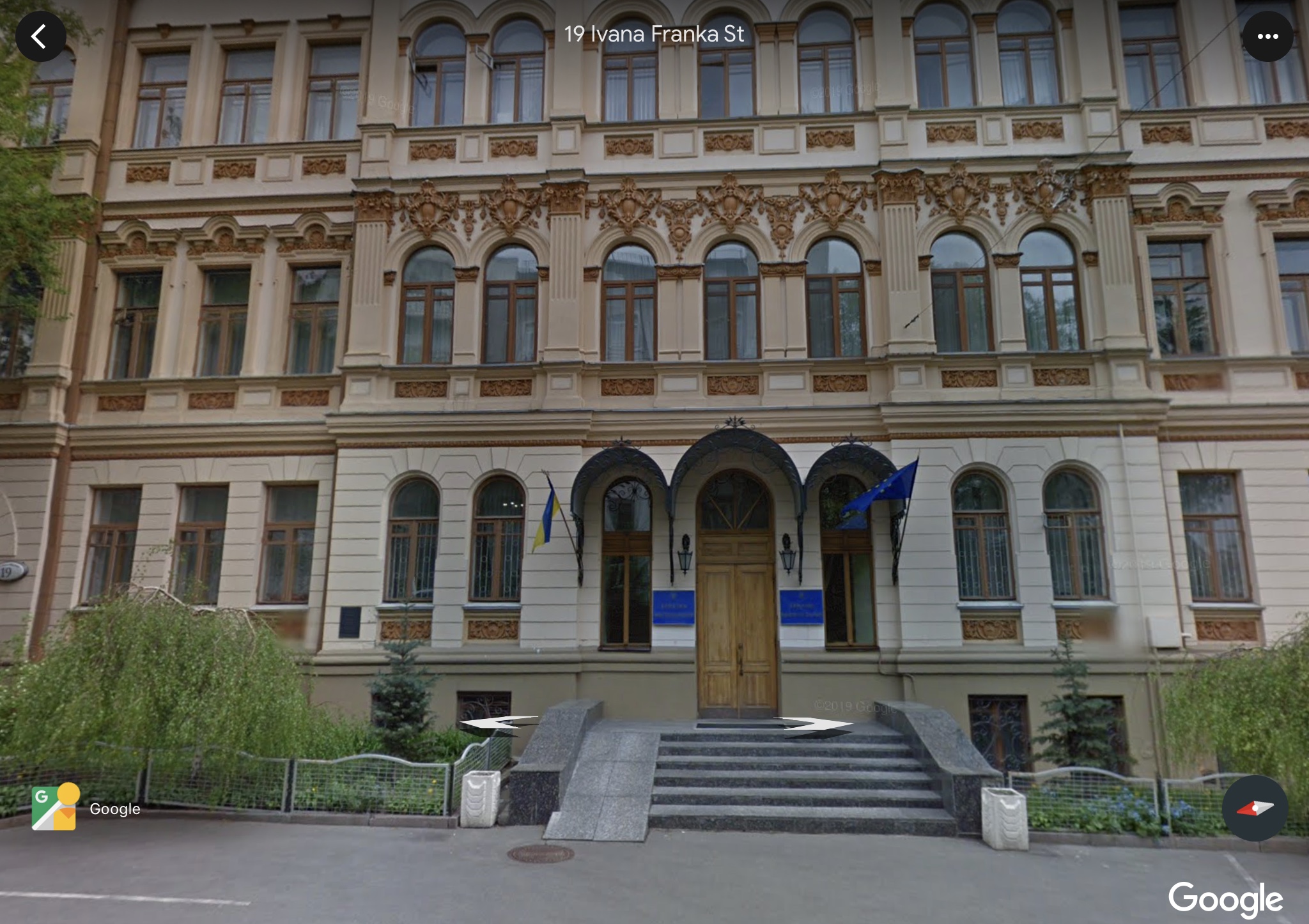 The well restored building is now occupied by the Ministry of Culture.
The well restored building is now occupied by the Ministry of Culture.
[01:00:35] Audience in Shantser Cinema, Kyiv.
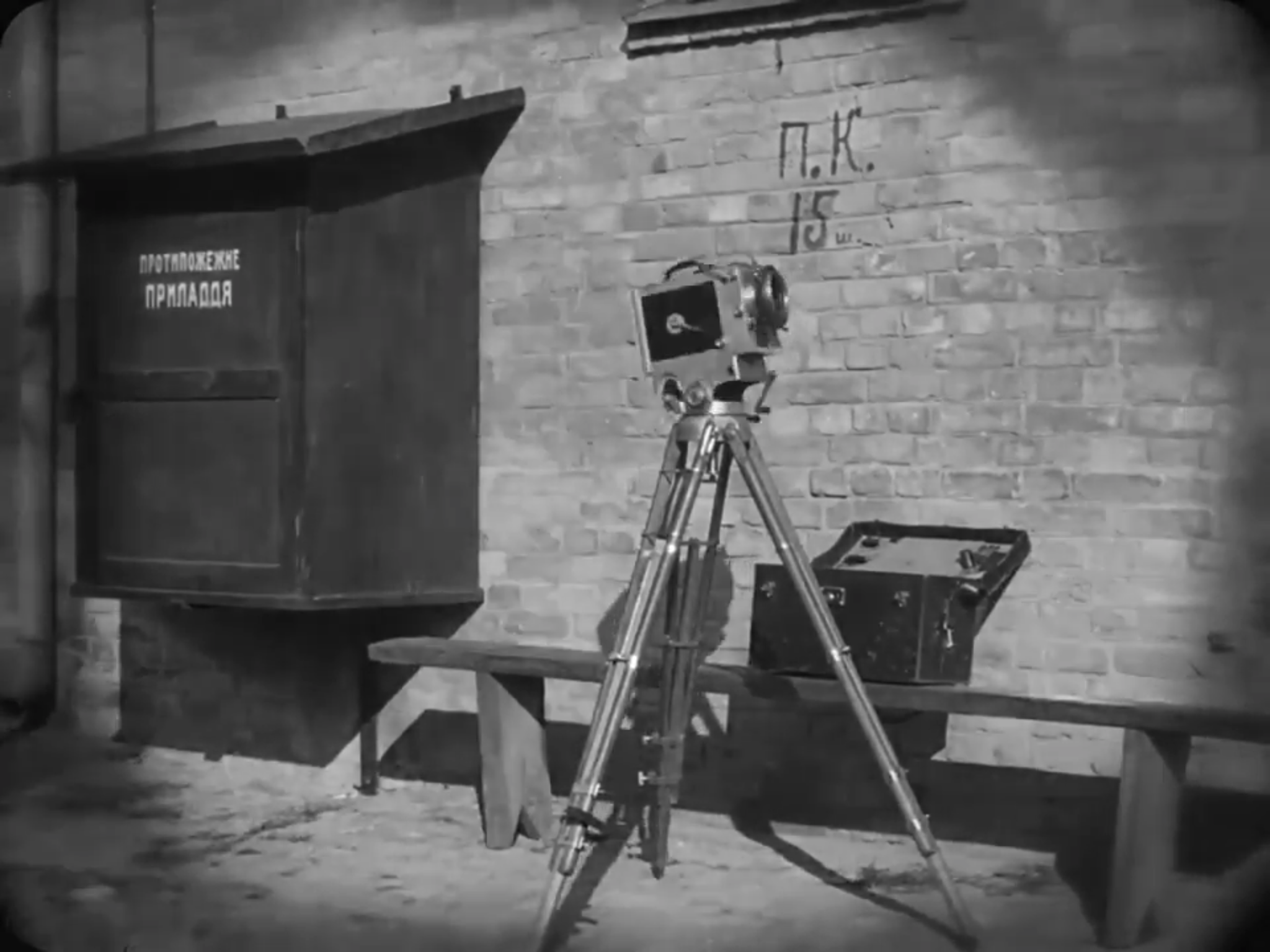 [01:00:38] Stop motion tripod and camera action. Location not found.
[01:00:38] Stop motion tripod and camera action. Location not found.
{01:01:41 on] Shantser Cinema, Kyiv.
[01:02:40 on] Split screen sequences of Okhotny Ryad, Moscow.
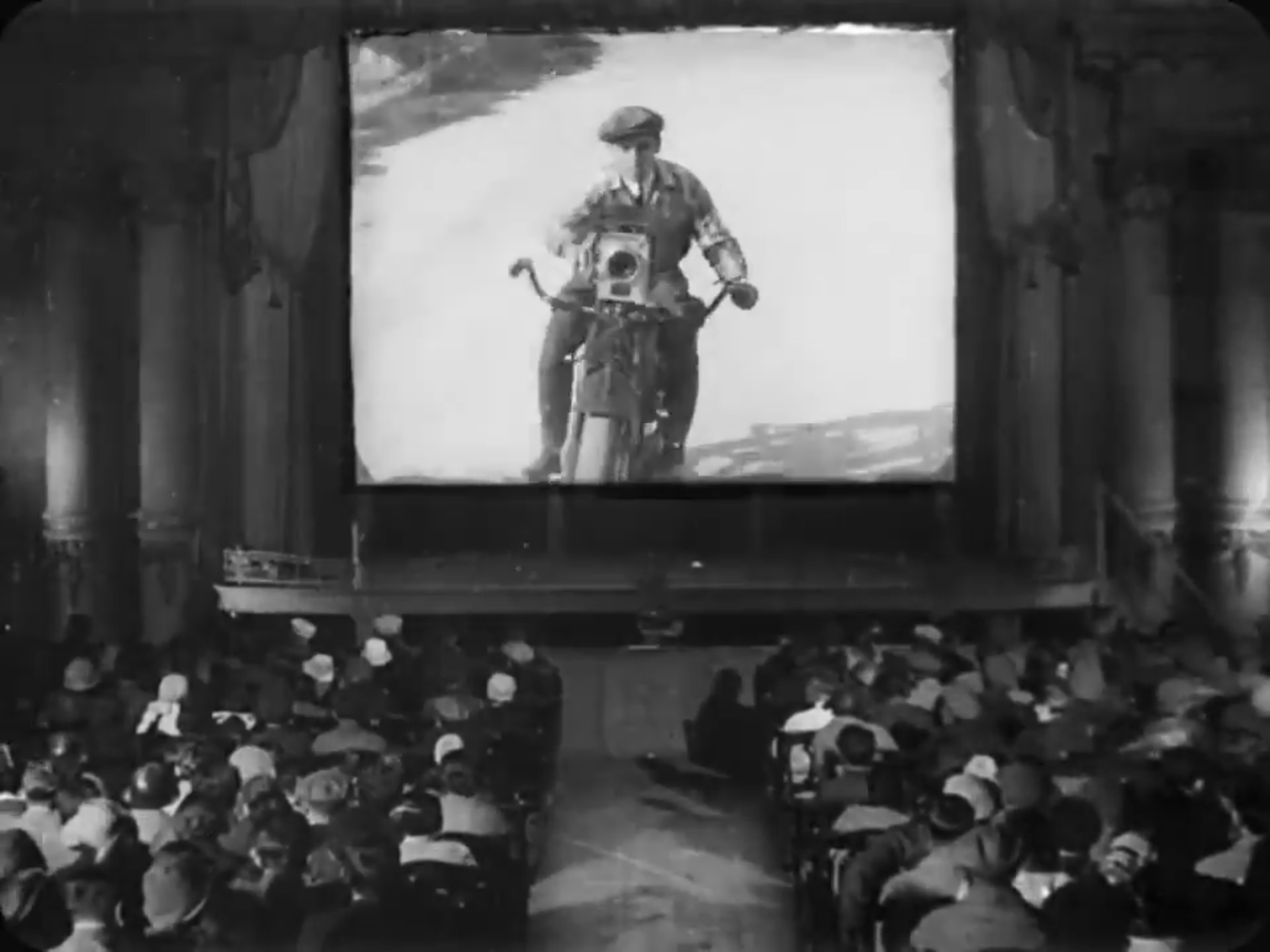 [01:03:30] MK and Indian motorcycle on screen in the Shantser Cinema (and on the track). See my blog post on the cameras in the film for details of the motorcycle.
[01:03:30] MK and Indian motorcycle on screen in the Shantser Cinema (and on the track). See my blog post on the cameras in the film for details of the motorcycle.
[01:03:44] [01:03:56] Multi exposure and split screen images of crowds. Possibly Stepanovska Street, Kyiv? (see also [01:04:56]). Not verified.
[01:04:05] A carriage turning in the street, Odesa. Pushkins’ka? Not verified.
[01:04:11] Moscow tram passing through Strastnaya Square (Sarastovsko -Leningradskaya on headboard).
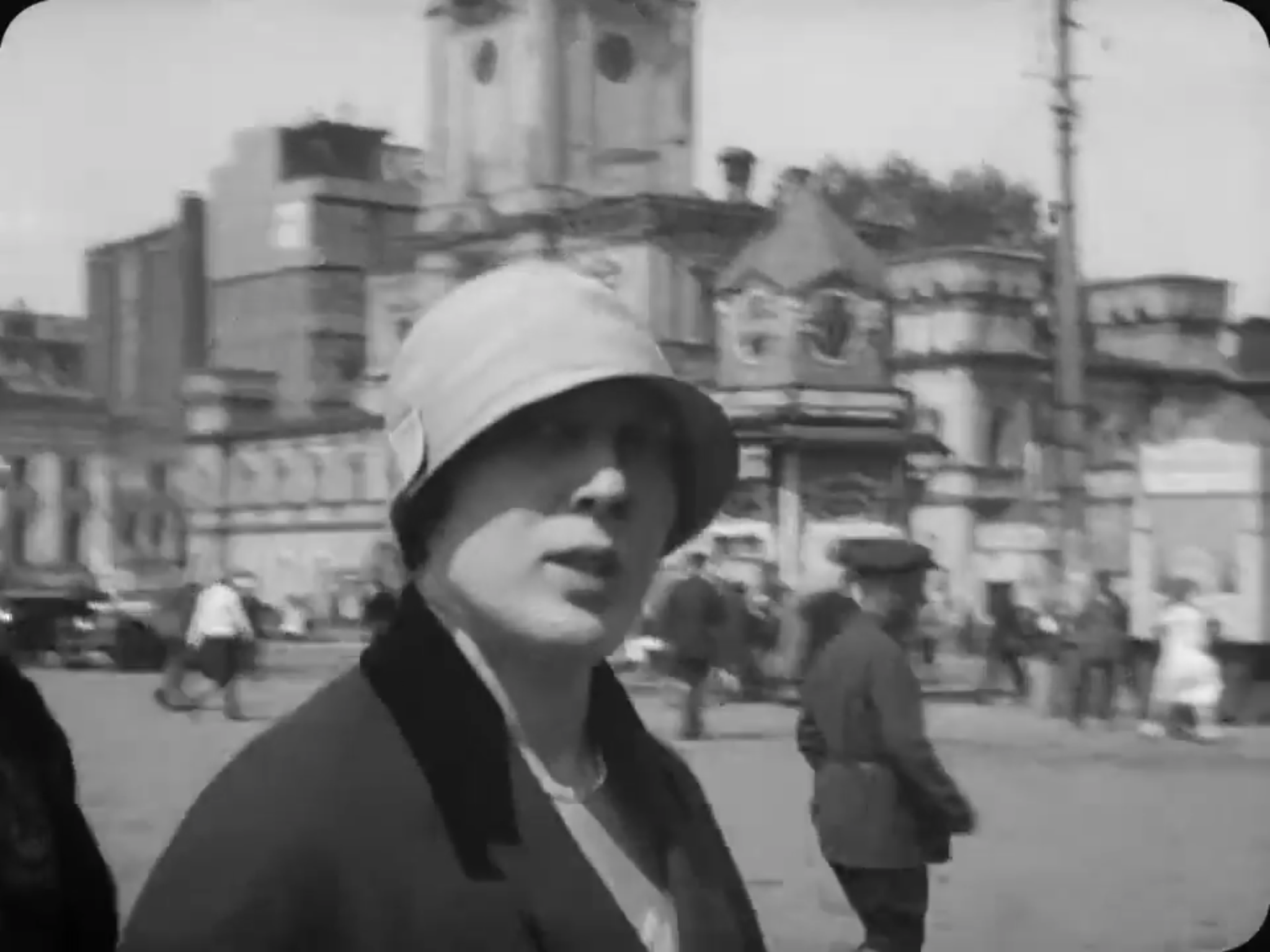 [01:04:17] City street scene, motorcycle and sidecar, bicycle, cars and people, Strastnaya Square, Moscow. Strastnoy Monastery and corner of Izvestia building in the background.
[01:04:17] City street scene, motorcycle and sidecar, bicycle, cars and people, Strastnaya Square, Moscow. Strastnoy Monastery and corner of Izvestia building in the background.
Two expensive recently imported cars filmed speeding through the square – perhaps a commentary on the NEPmen’s extravagance? A French Amilcar sports car is on the left, and an English Crossley Tourer apparently being driven by a chauffeur.
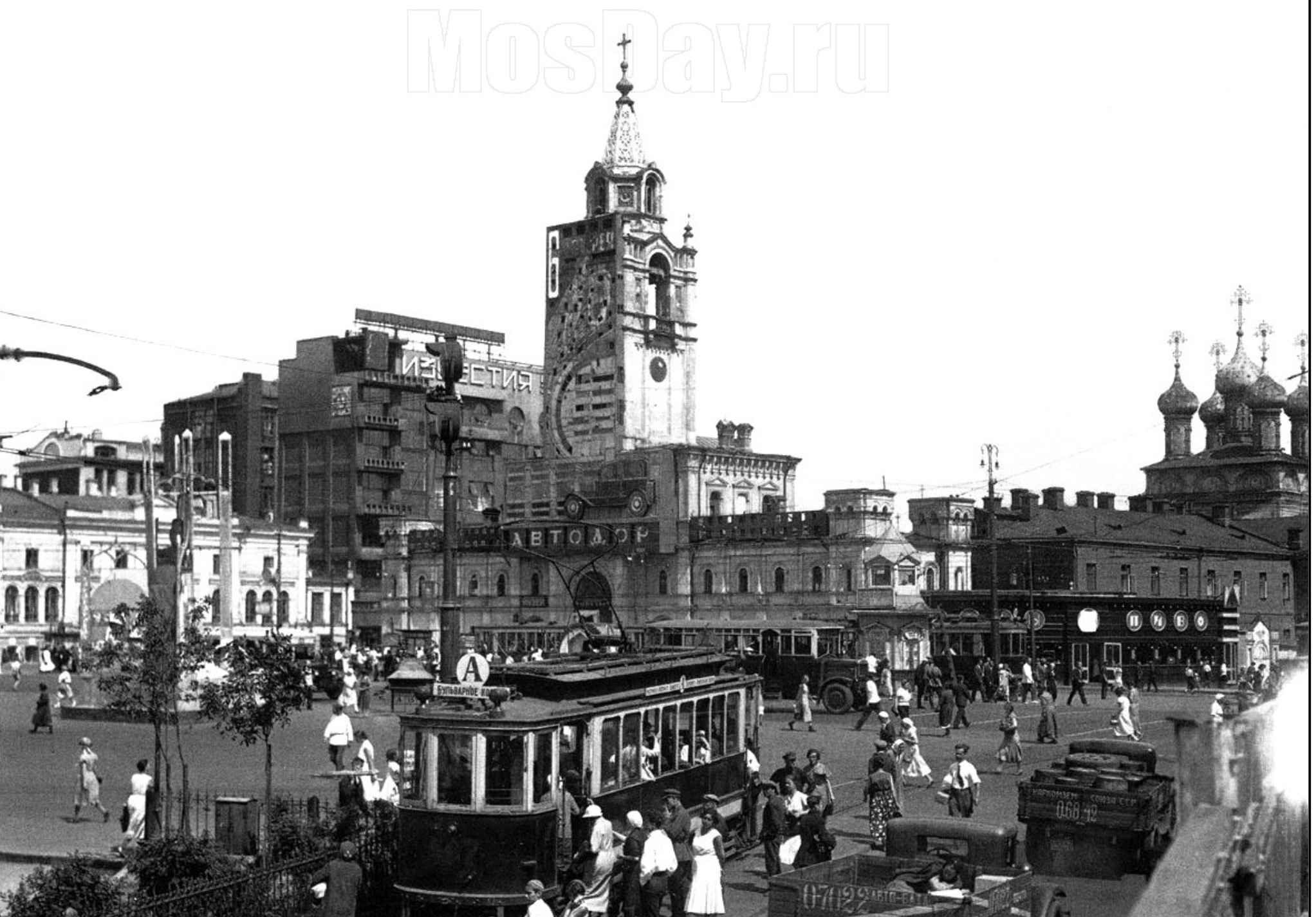 This photograph shows the Strastnoy Monastery entrance tower covered up with an advert for AVTODOR, the state body tasked with improving roads and ‘Automobilism’ in the Soviet Union, set up in 1927. Deliberate disrespect for the religious institution, and even less at night! (photograph courtesy of MosDay.ru).
This photograph shows the Strastnoy Monastery entrance tower covered up with an advert for AVTODOR, the state body tasked with improving roads and ‘Automobilism’ in the Soviet Union, set up in 1927. Deliberate disrespect for the religious institution, and even less at night! (photograph courtesy of MosDay.ru).
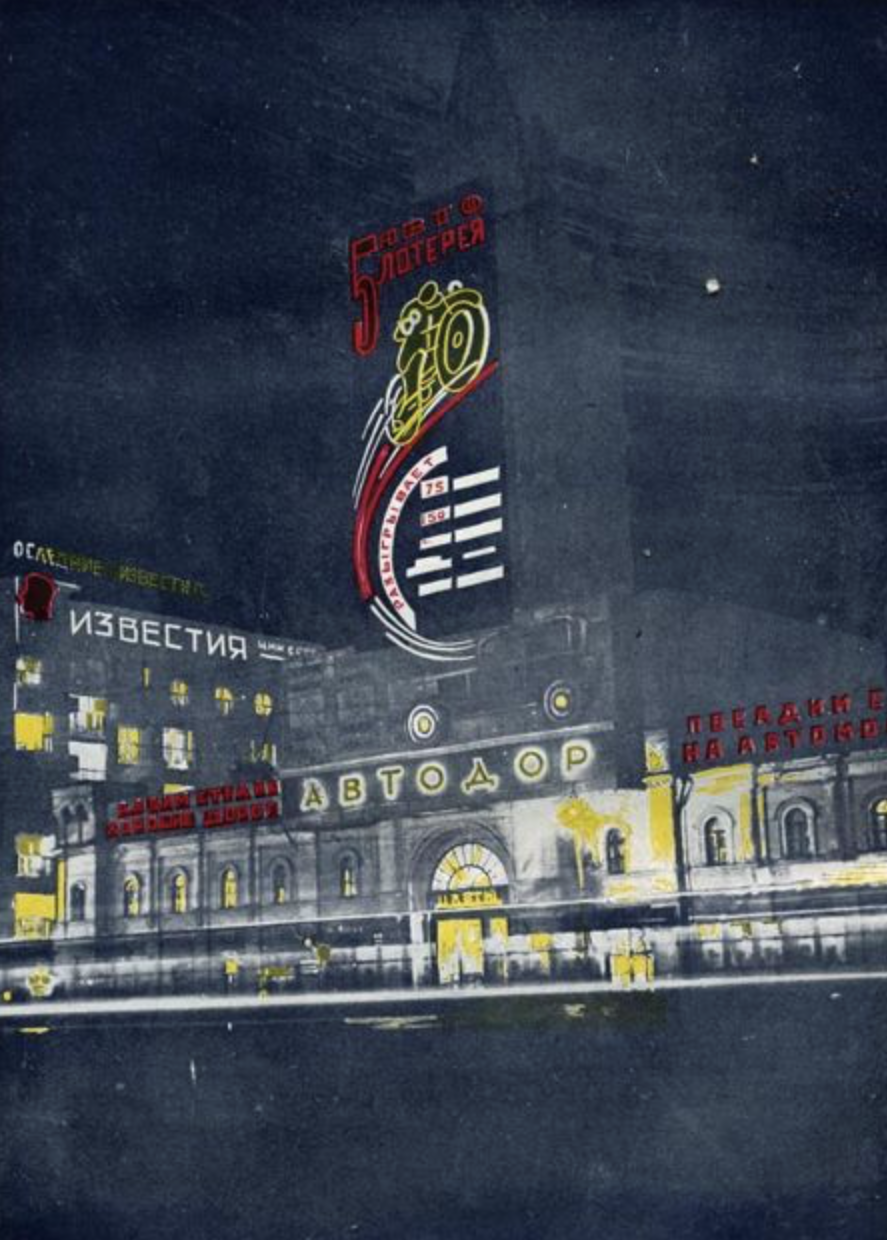
[01:04:36 on] Trams and carriage, Moscow (Strastnaya Square?).
[01:04:51] Shantser Cinema, Kyiv.
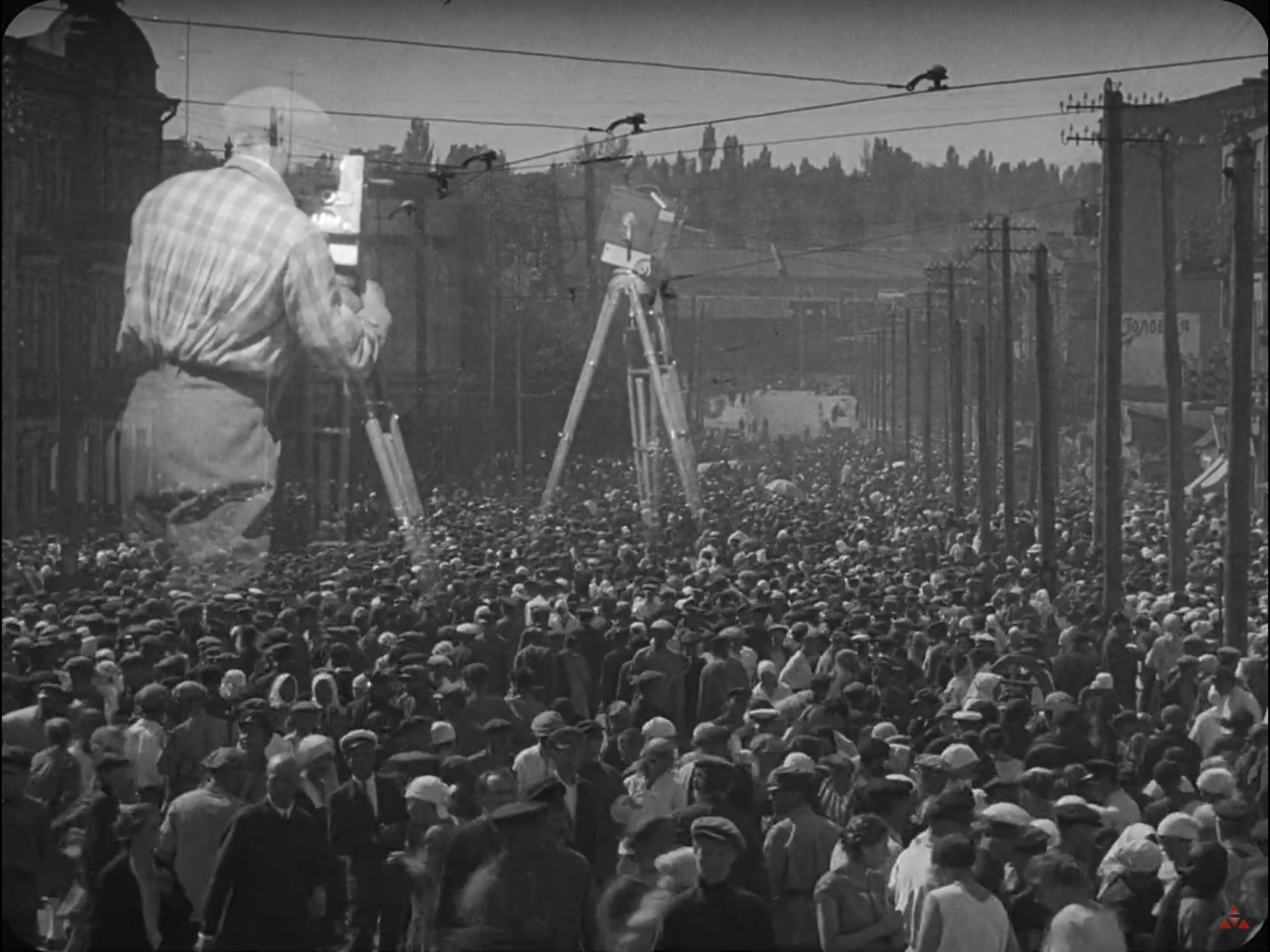 [01:04:56] Double (or more?) exposure of MK and cameras over crowds of people (there are two Debrie Interviews plus the crowd). There are other glimpses of the scene in the final rapid montage sequence. Mikhailo Kalnytsky believes this location to be Stepanovska Street (now called Starovokzalna) in Kyiv which led to a temporary station while the Central Station nearby was being constructed (1927-1932). He suggests it is crowded due to the proximity of the Jewish Bazaar market (see Halytska Square below).
[01:04:56] Double (or more?) exposure of MK and cameras over crowds of people (there are two Debrie Interviews plus the crowd). There are other glimpses of the scene in the final rapid montage sequence. Mikhailo Kalnytsky believes this location to be Stepanovska Street (now called Starovokzalna) in Kyiv which led to a temporary station while the Central Station nearby was being constructed (1927-1932). He suggests it is crowded due to the proximity of the Jewish Bazaar market (see Halytska Square below).
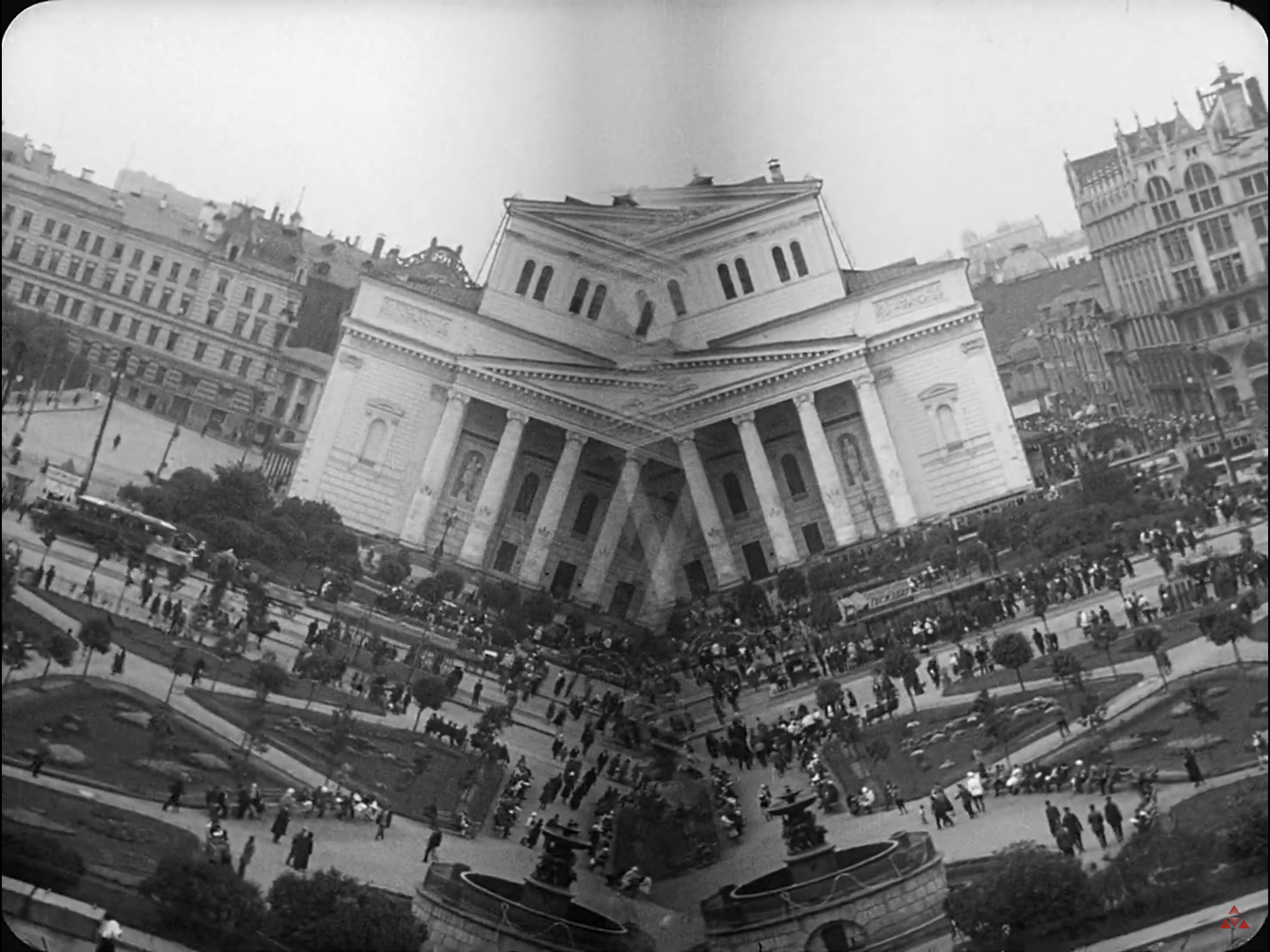 [01:05:07] The best known image in the film – the Bolshoi Theatre and squares split in the middle!
[01:05:07] The best known image in the film – the Bolshoi Theatre and squares split in the middle!
[01:05:23] Shantser Cinema, Kyiv. Odesa carriages on the screen
 [01:06:17 on] Halytska Square, Kyiv. The location of several scenes in the final sequence with both speeded up and reversed crowds and trams, and close-ups (the small ‘kiosk’ above the tram is visible in one shot). This was the location of the popular Jewish market at the time which explains the crowds. See also [00:31:12 et al] for the location of the camera that took this footage.
[01:06:17 on] Halytska Square, Kyiv. The location of several scenes in the final sequence with both speeded up and reversed crowds and trams, and close-ups (the small ‘kiosk’ above the tram is visible in one shot). This was the location of the popular Jewish market at the time which explains the crowds. See also [00:31:12 et al] for the location of the camera that took this footage.
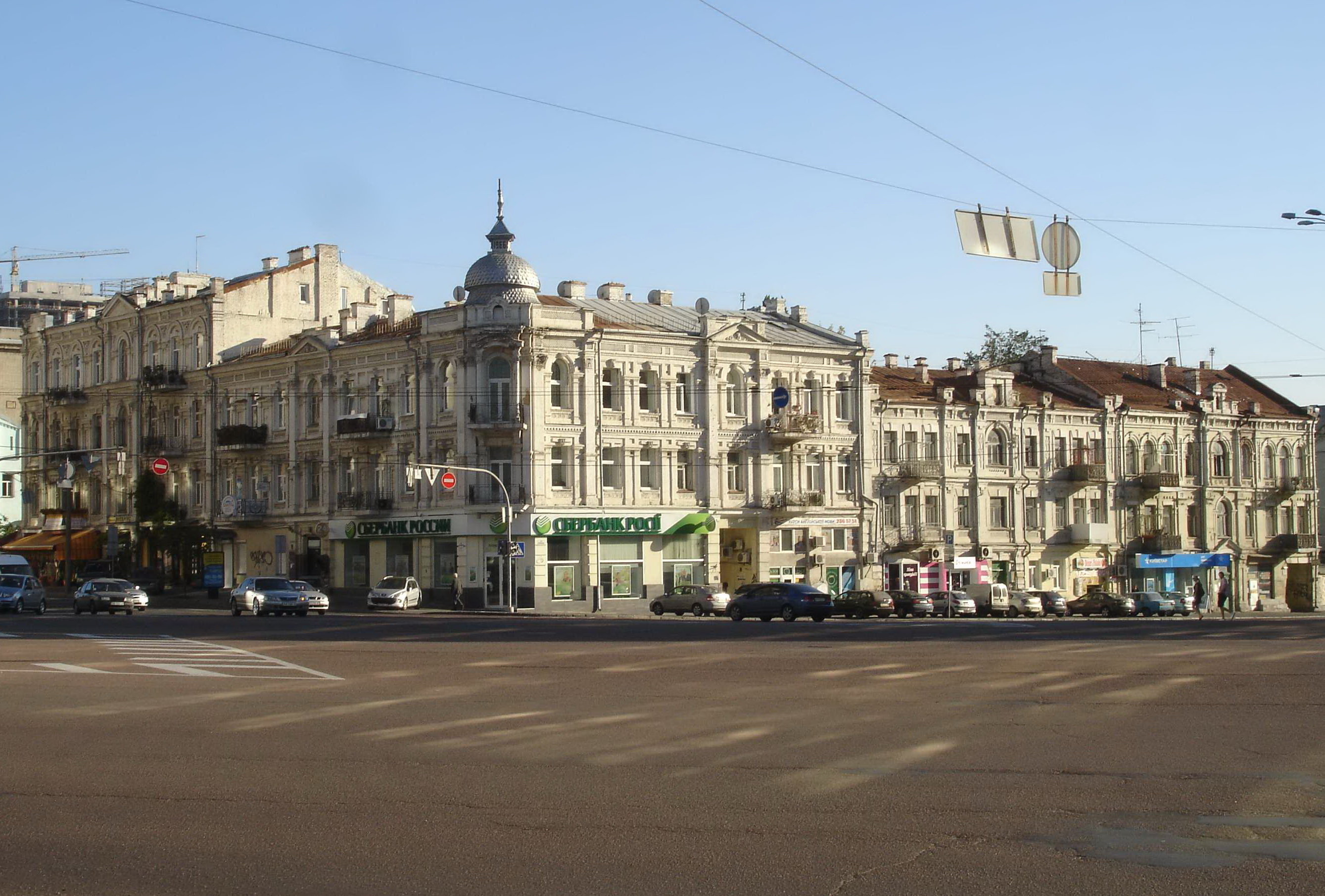 A recent view of the modern Perehomy (Victory) Square. The buildings in the background of the screenshot can still be seen here on the corner of modern Saksaganskoho and Starovokzalna Streets. The tram tracks and pavilions have disappeared. [photograph and information from M. Kalnytsky]
A recent view of the modern Perehomy (Victory) Square. The buildings in the background of the screenshot can still be seen here on the corner of modern Saksaganskoho and Starovokzalna Streets. The tram tracks and pavilions have disappeared. [photograph and information from M. Kalnytsky]
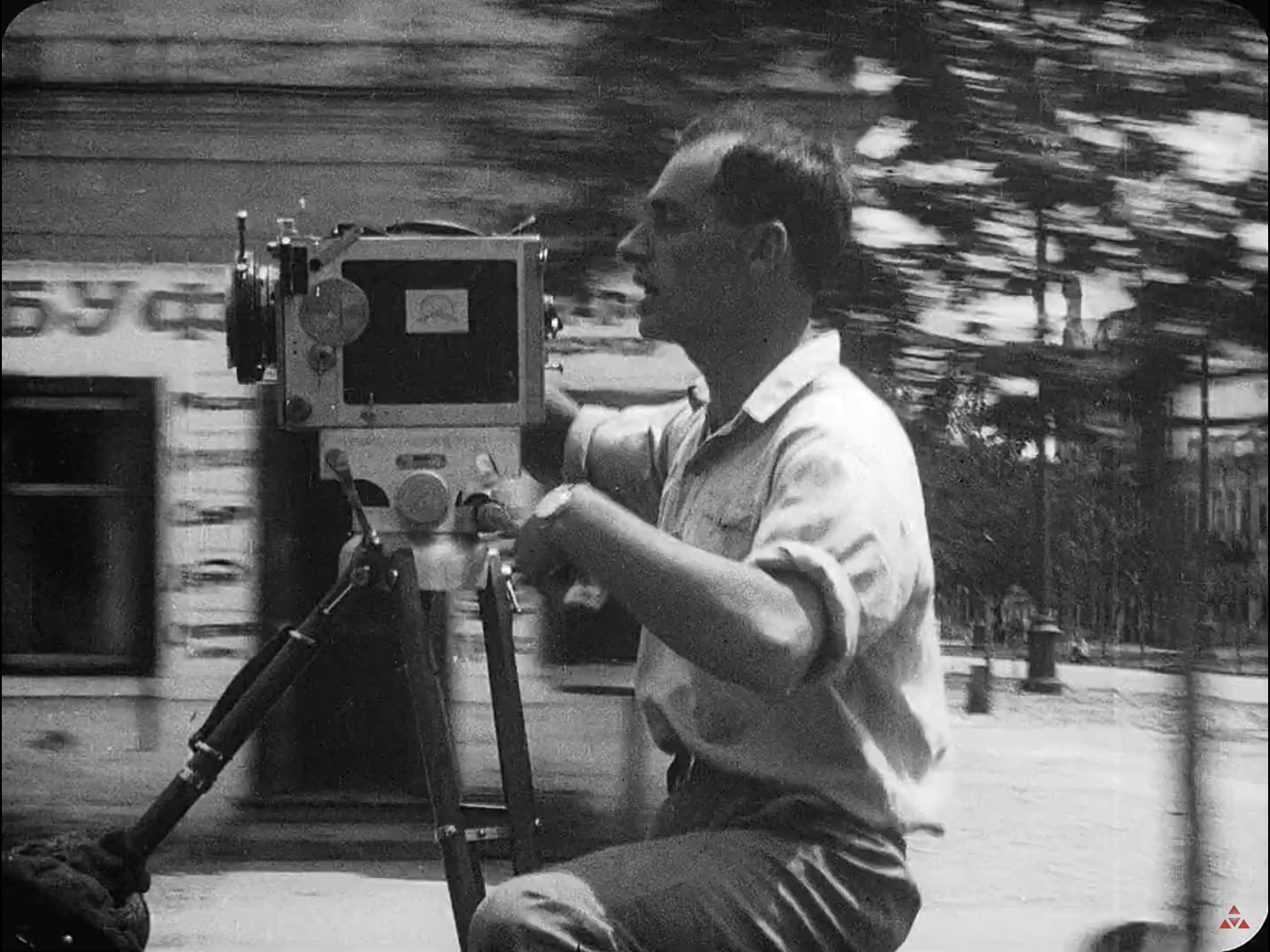 [01:05:33 on] Mikhail Kaufman in the camera car speeding along Pushkins’ka in Odesa. This has been difficult to locate because of the lack of obvious clues and fast movement. Some sources placed it firmly in Kharkiv. However, a close scan of the frames, and of the buildings along this street, uncovered the following clues that definitely placed the sequence in Odesa:
[01:05:33 on] Mikhail Kaufman in the camera car speeding along Pushkins’ka in Odesa. This has been difficult to locate because of the lack of obvious clues and fast movement. Some sources placed it firmly in Kharkiv. However, a close scan of the frames, and of the buildings along this street, uncovered the following clues that definitely placed the sequence in Odesa:
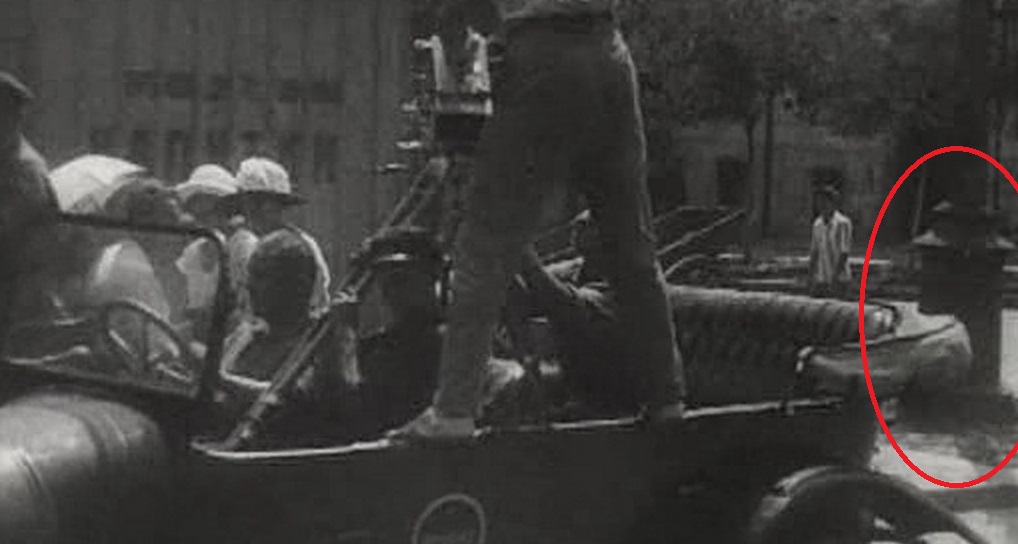 The distinctive lamp posts of Odesa still exist in the city centre. Also visible on Pushkins’ka several times during the carriage and car sequences. [observation M. Kalnytsky]
The distinctive lamp posts of Odesa still exist in the city centre. Also visible on Pushkins’ka several times during the carriage and car sequences. [observation M. Kalnytsky]
Archways to Pushkins’ka 45 and 55. [Google Earth]
The same distinctive balconies on a Troitska Street building at the corner of Pushkins’ka are also visible in the carriage sequences. [observation M. Kalnytsky]
[01:05:24 on] a carriage in Odesa; MK and his Debrie Parvo Model L camera in a car speeding through Odesa; carriages on Primorskyi Boulevard, Odesa; the Shantser Cinema audience; Theatre and Revolution Squares, Moscow; Park Bridge, Kyiv; trams, aeroplanes, railcar, and trains; Arcadia Beach, Odesa; Khreschatyk and Velyka Vasylkivska, Kyiv (and an image of it ‘splitting’); a crowded Halytska square in Kyiv (see above); Stepanovska Street, Kyiv; cars in Derybasivska Street, Odesa; people rushing through glass doors seen in shadow on the floor (see [00:08:46 on] for the likely location of these doors); film editing and the eyes of E. Svilova; Teatral’nyy Proyezd, Moscow; a crowded street and trams; the cinema audience; the last frames of the film are of the No. 7 Kyiv tram and the remarkable image of the camera iris ‘Film-Eye’ closing. This is the most extraordinary feat of editing by Elizaveta Svilova, so fast that I had difficulty catching all the locations so there may be some I have missed!
Note: the AVG version used for the screenshots differs from the Eye Film Institute/Lobster Films restoration in a number of respects. AVG includes the original film titles, but omits the ‘Eye’ image seen in [00:31:10 on], and MK carrying the Debrie Interview camera in the final frames. As noted above the Eye/Lobster Films version omits several rising numbers at the beginning of the reels. In December 2020 the AVG version was unfortunately withdrawn from YouTube.
FOR AN UPDATED VERSION OF THIS POST PLEASE GO TO: richardbossons.academia.edu/research
END
кінець
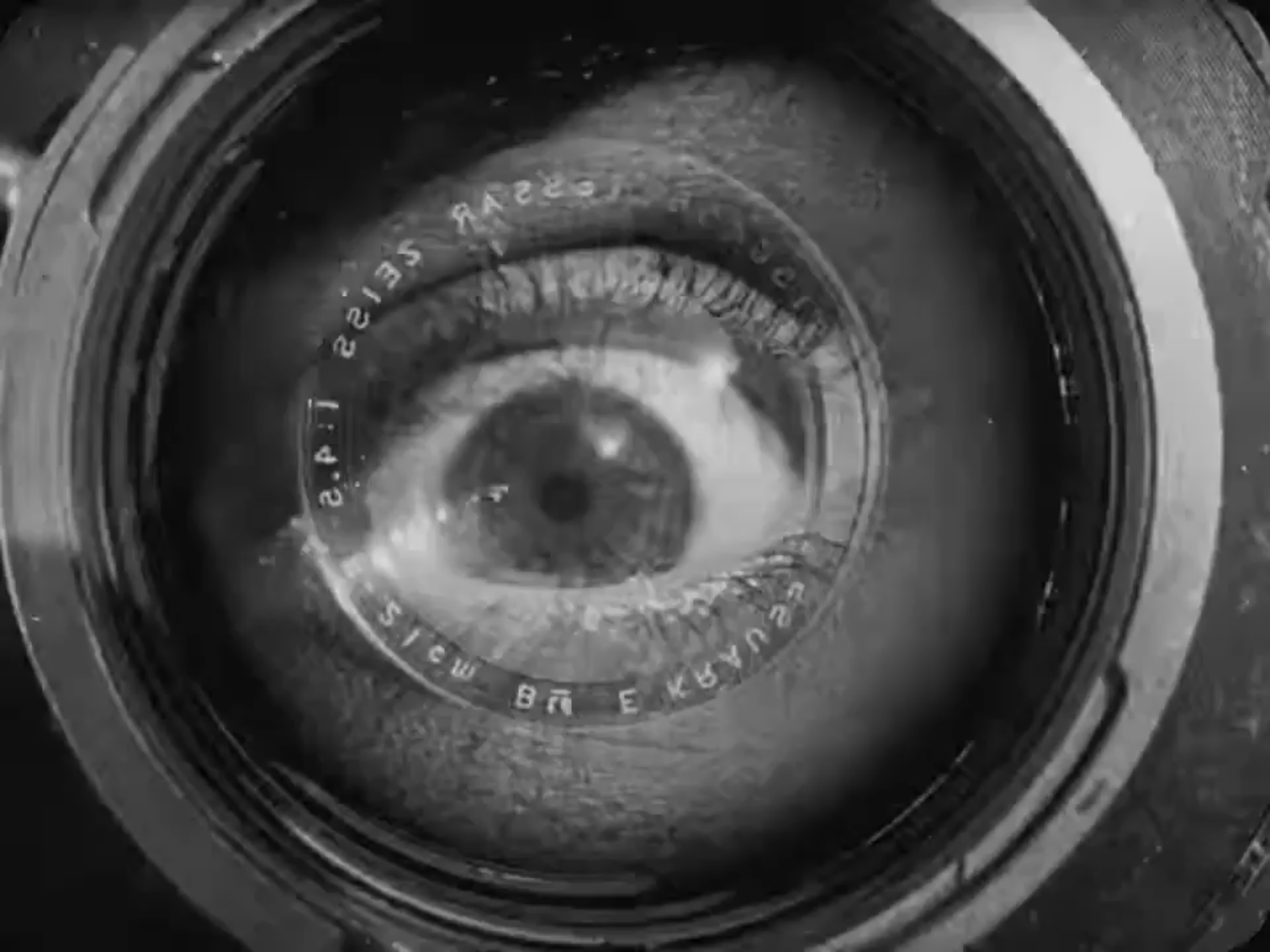
CITY MAPS
Maps from OpenStreetMap © OpenStreetMap contributors. Available under Open Database Licence.
MOSCOW FILMING LOCATIONS
Kuznetsky Most, Bolshoi Theatre, Theatre & Revolution Squares, Teatral’nyy Proyezd, Okhotny Ryad, Tverskaya, Strastnaya Square, Bakhmetevsky Bus Garage, Novo-Sukharevsky Market, Hippodrome.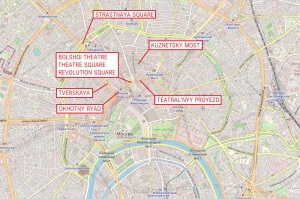
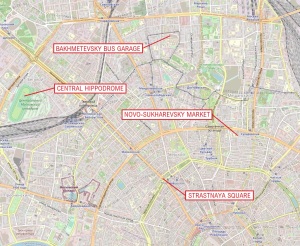
KYIV FILMING LOCATIONS
Velyka Vasylkivska and Khreschatyk, Volodymyrska Street & Sofiys’ka Square, Park Bridge, Strilets’ka & Reitarska Streets, Tarasa Shevchenko Boulevard & Kominterna Street, Red Stadium (netball), Lenin Club, Ginzburg Skyscraper, Palace Hotel (on TS Boulevard), Tobacco Factory (on TS Boulevard), Halytska Square.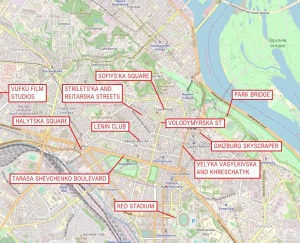
ODESA FILMING LOCATIONS
Prymorskyi Boulevard (at the top of Primorskyi Stairs aka Potemkin Stairs), Port, Station & Pryvokzal’na Square, Pushkins’ka Street, Tram Depot, Fire Station & Rosa Luxemburg Street, Sports Ground, Arcadia Beach, Kuyal’nik Resort. Hippodrome location in the film not verified so far.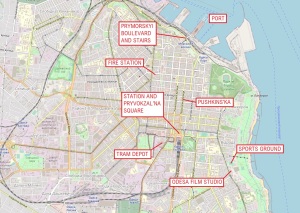
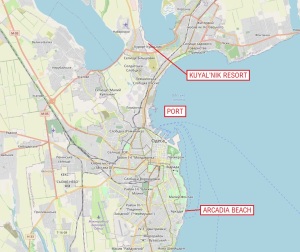
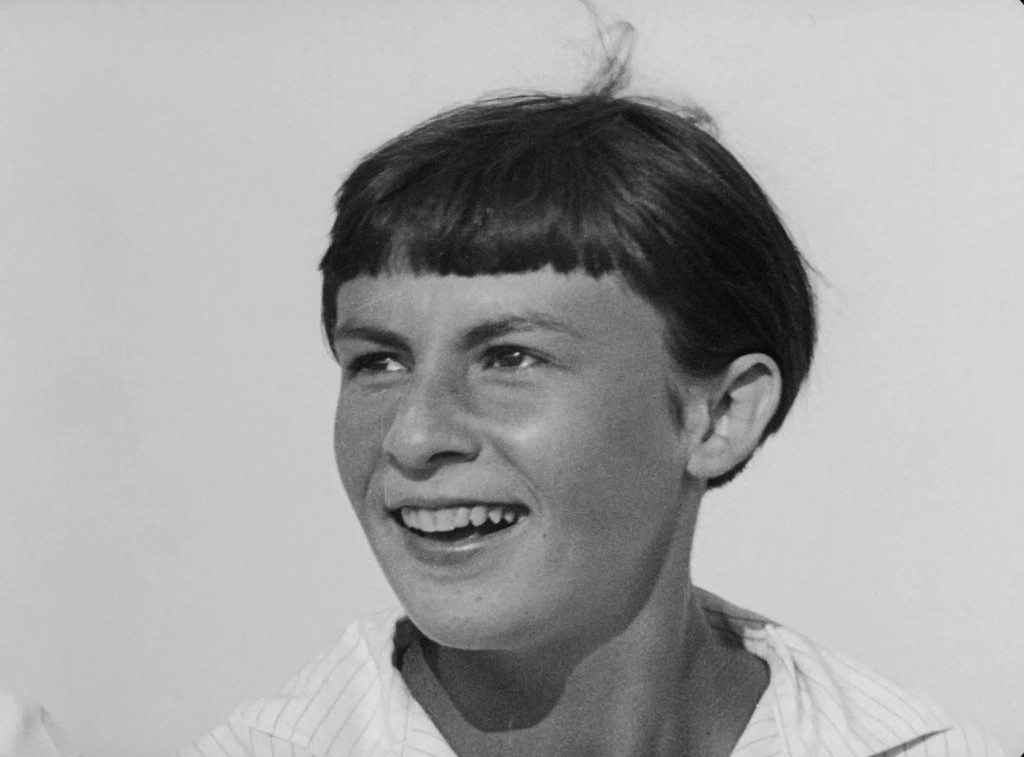





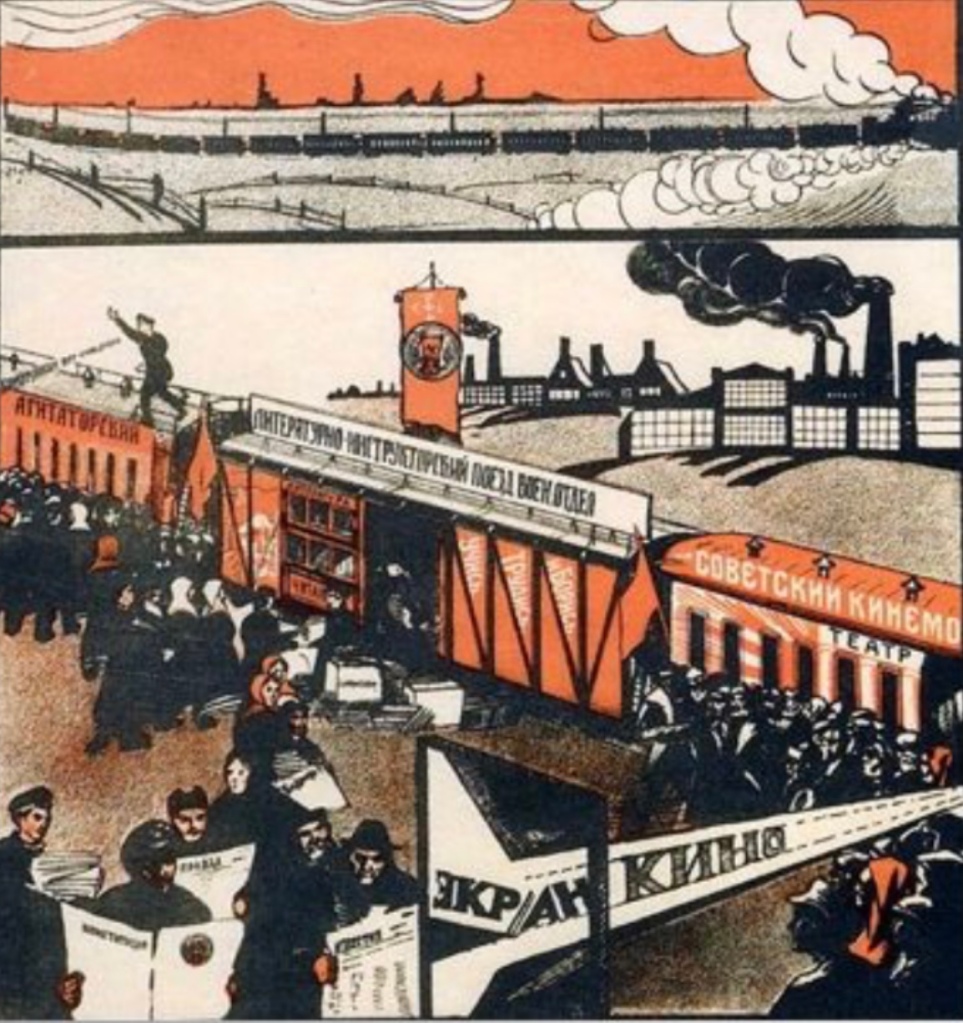

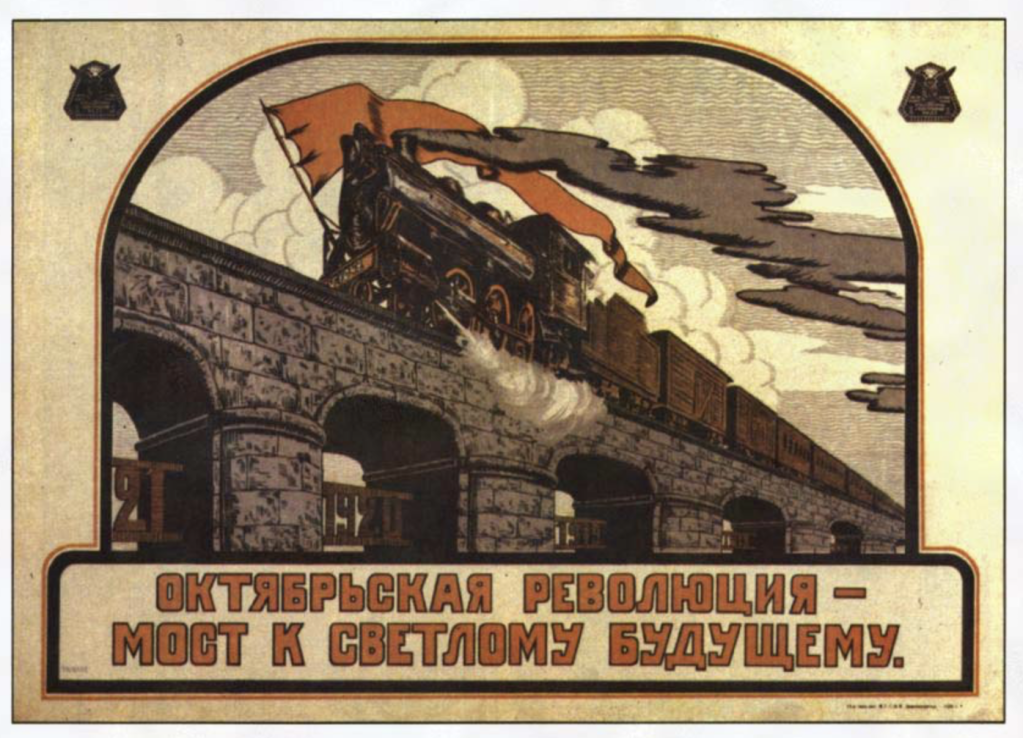


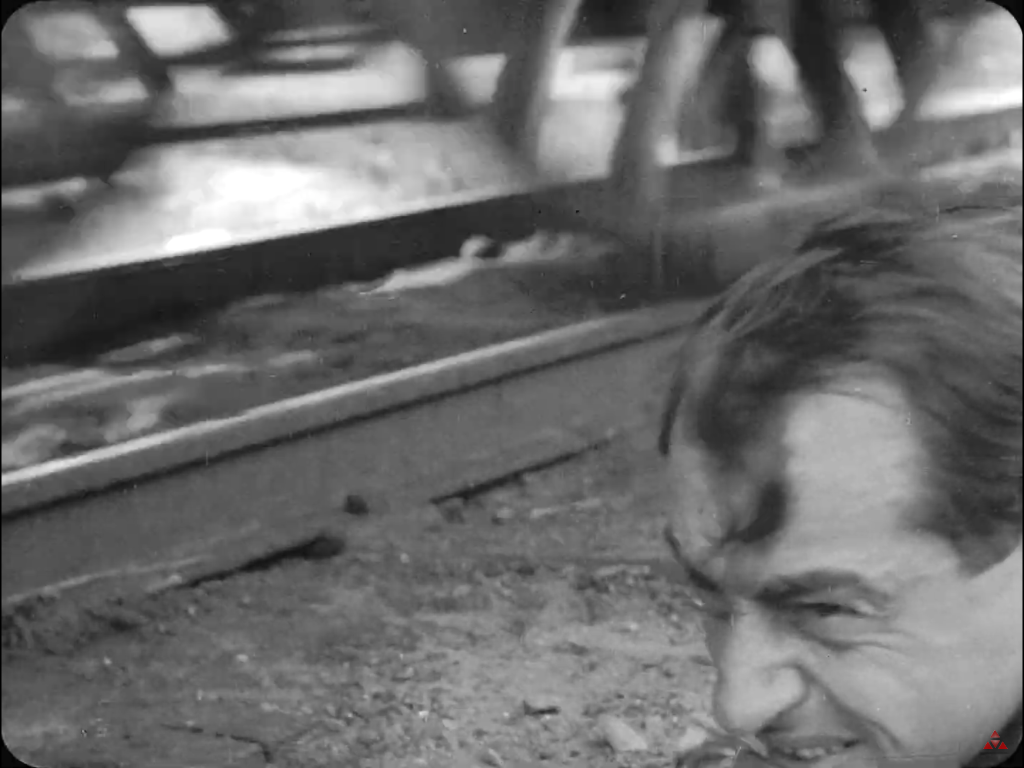

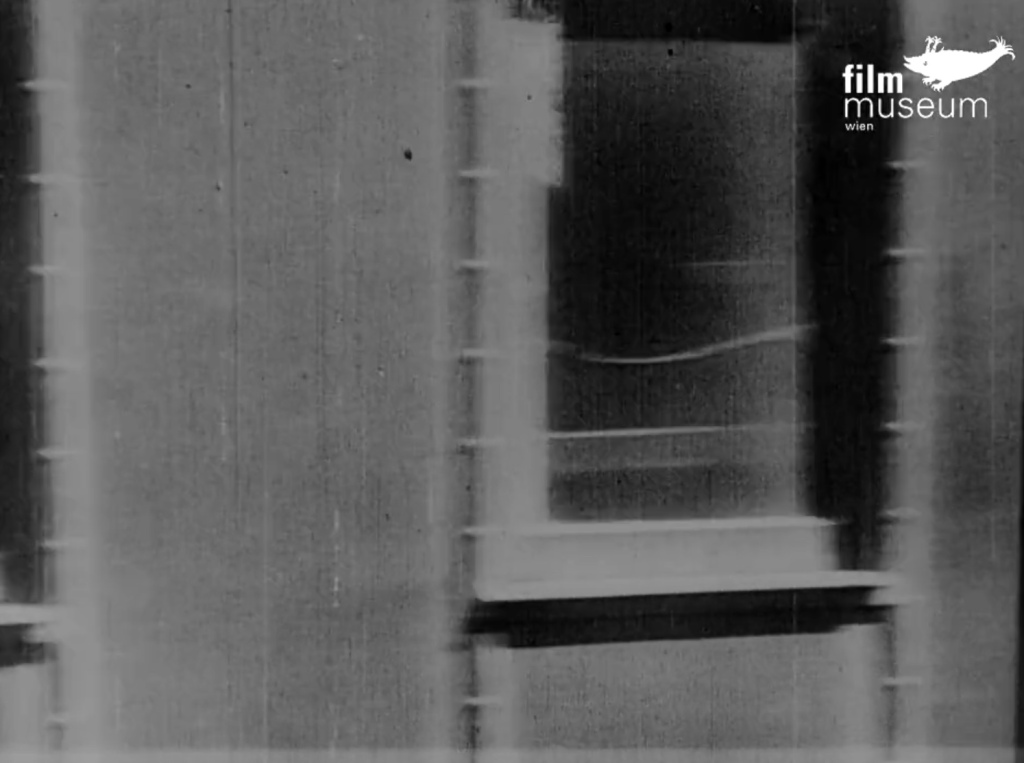


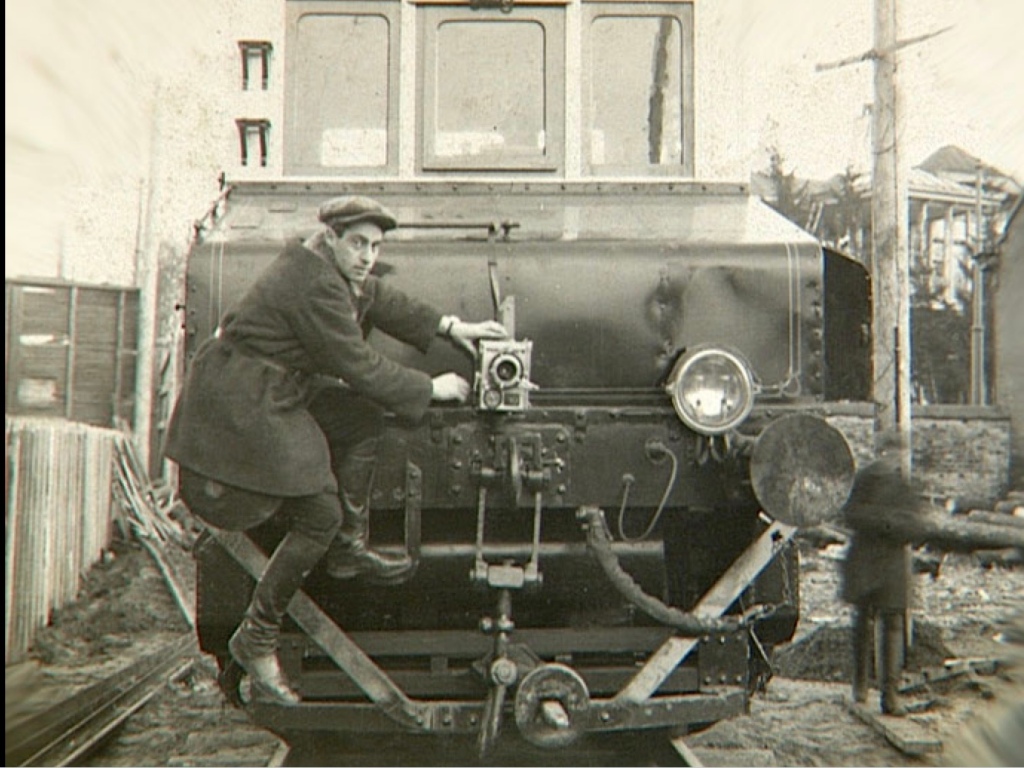







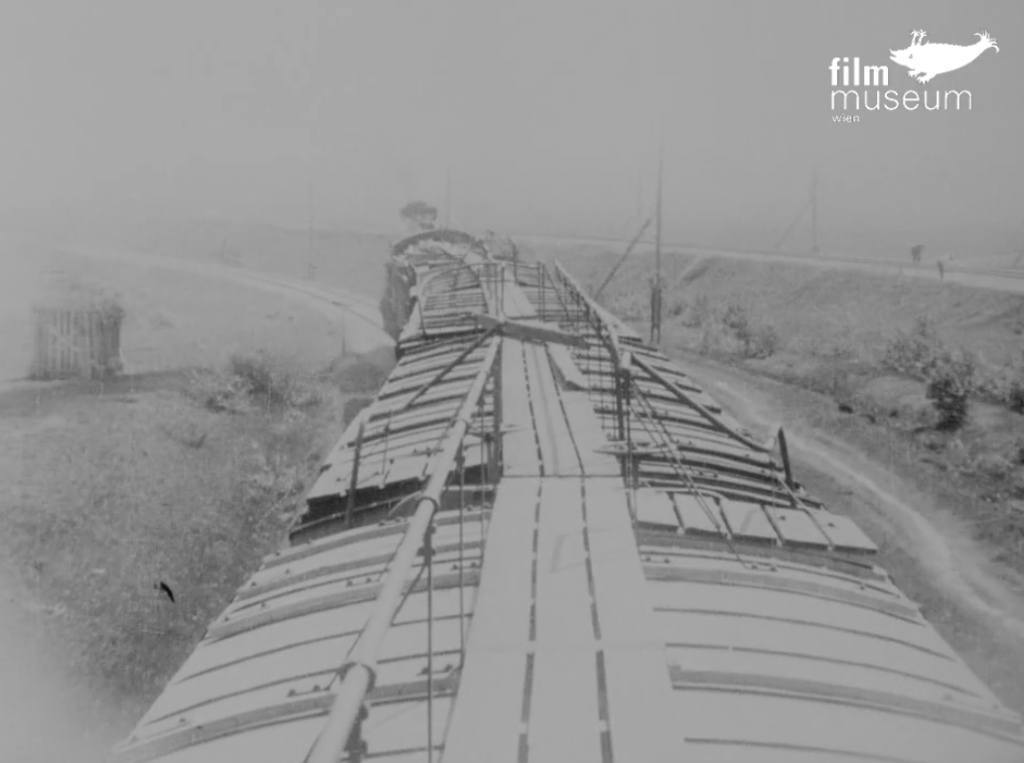






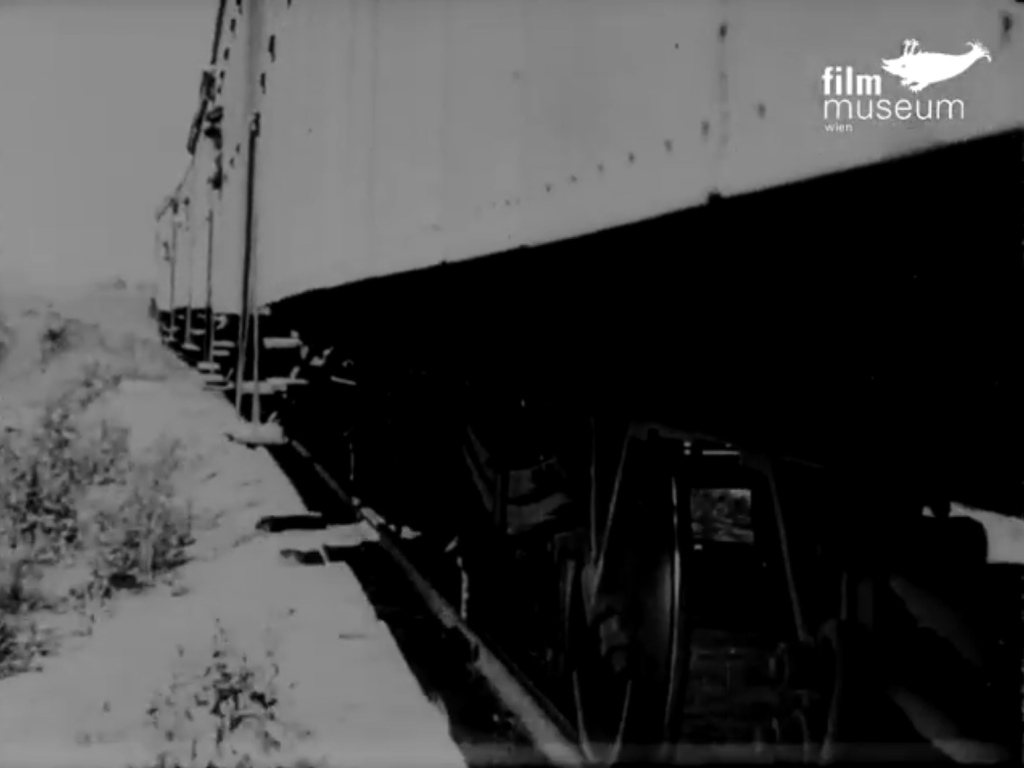
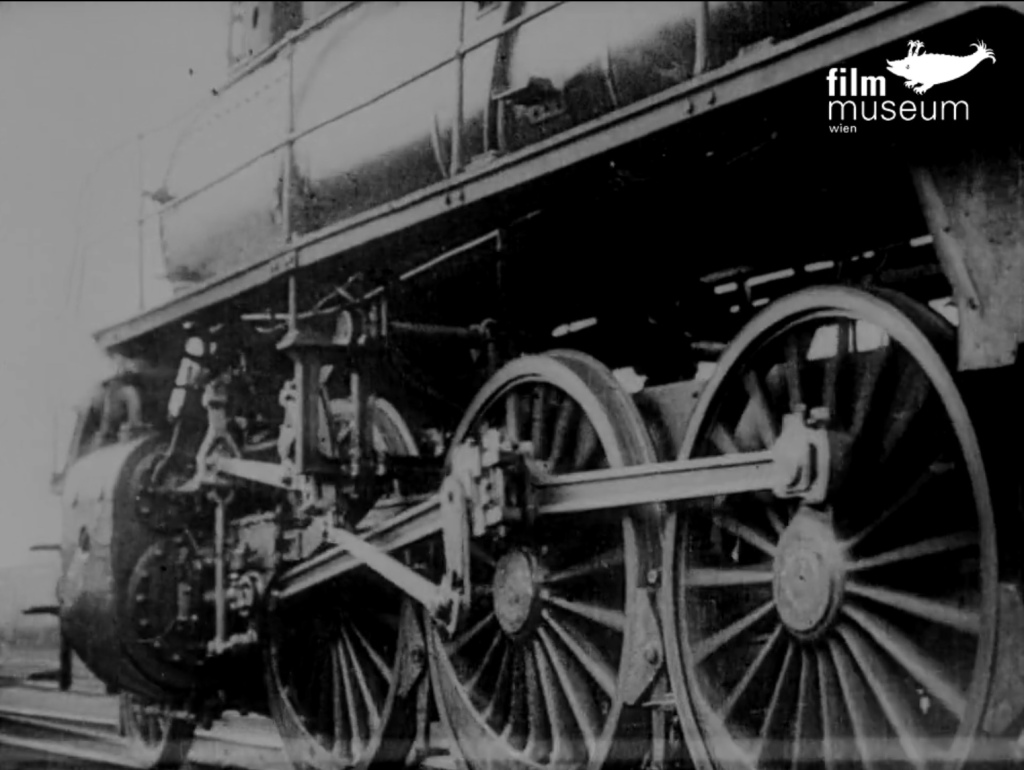





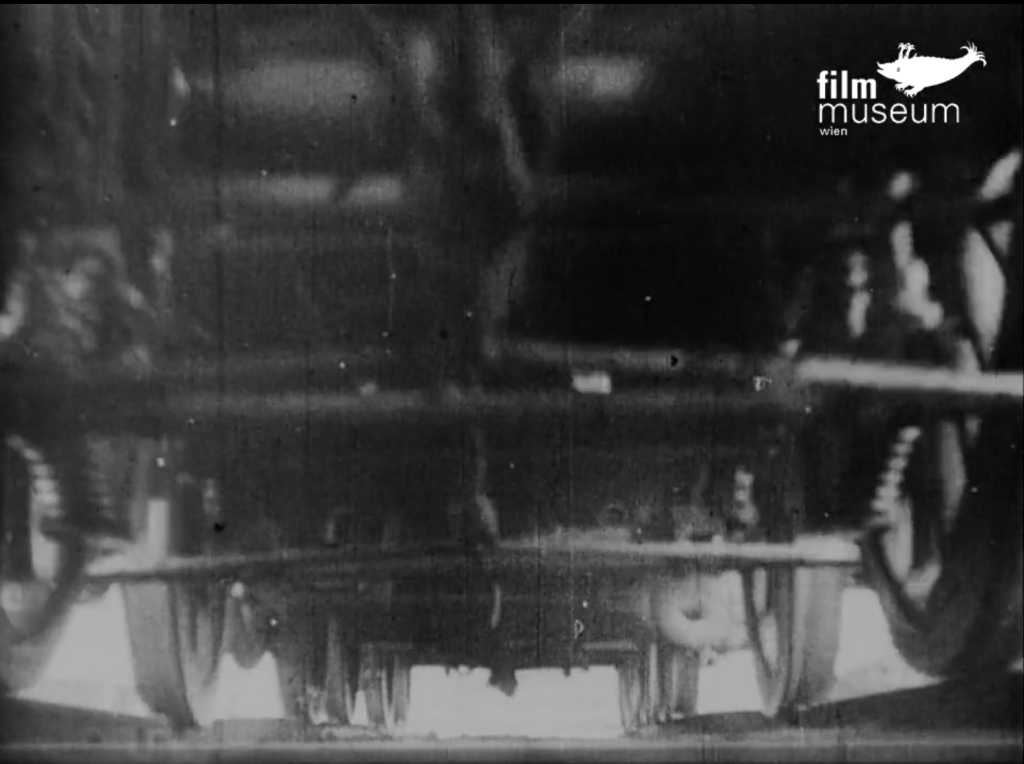






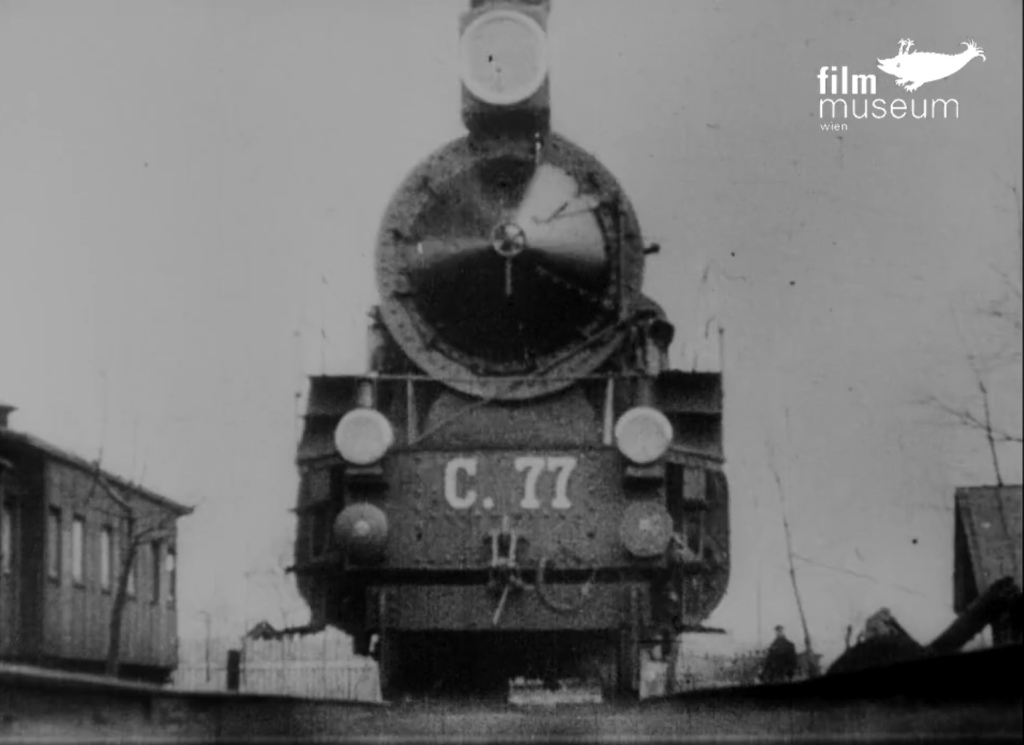



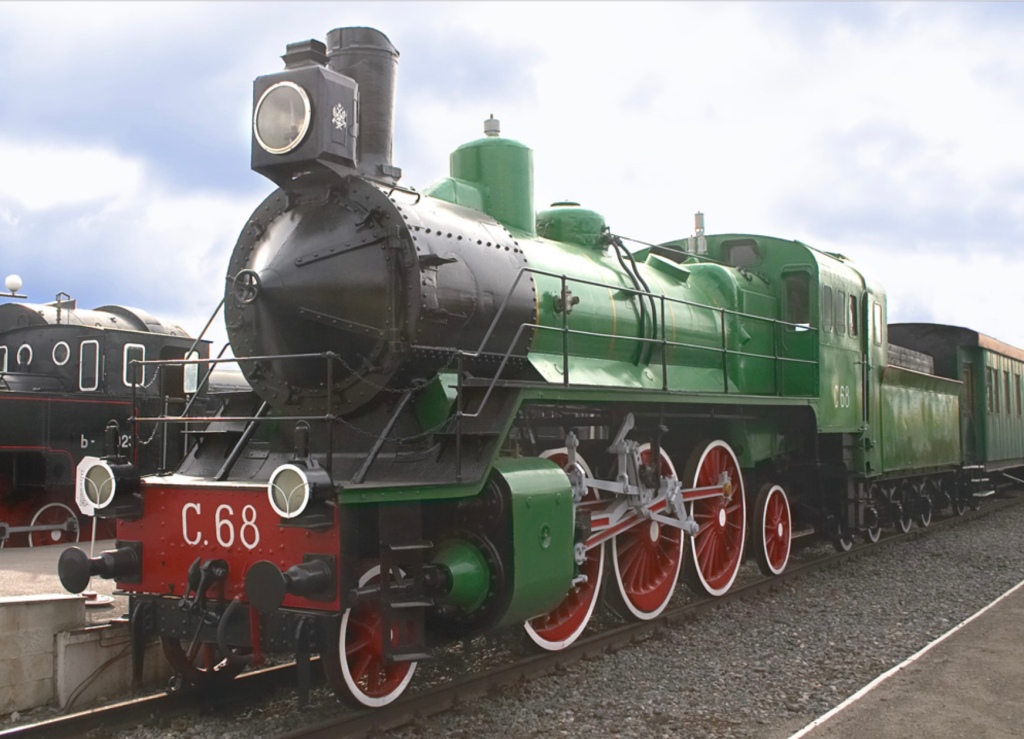

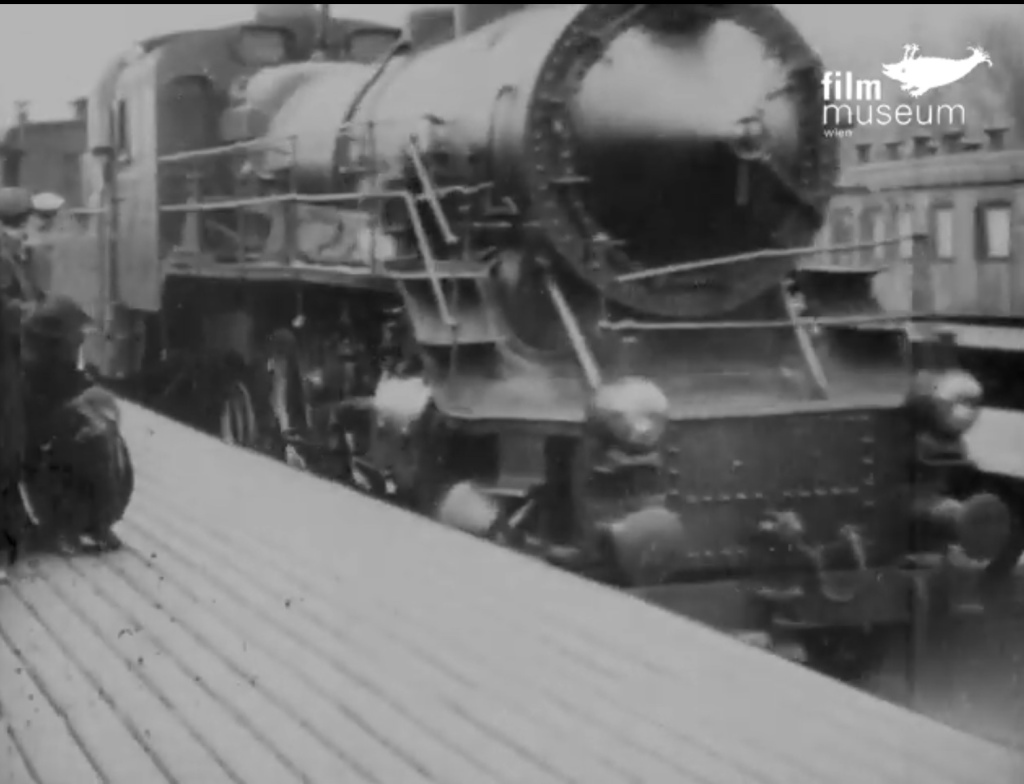



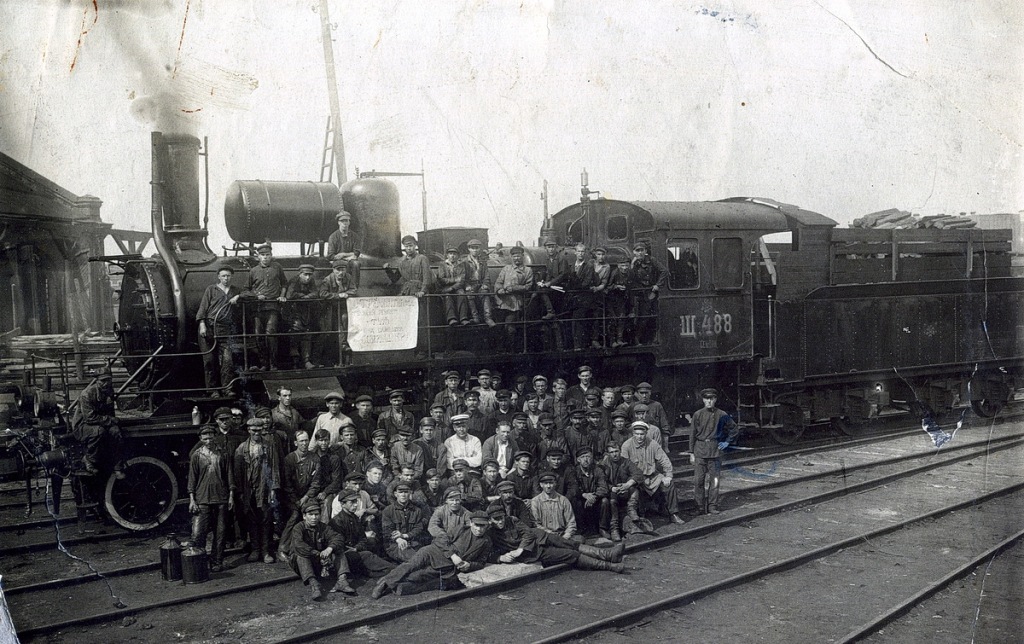





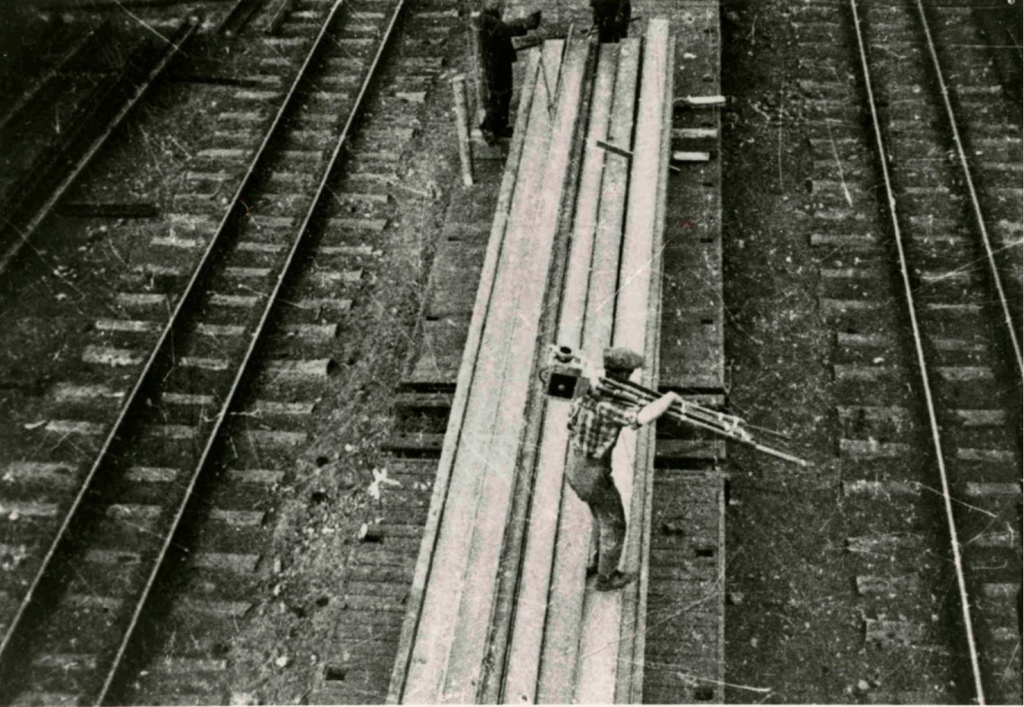
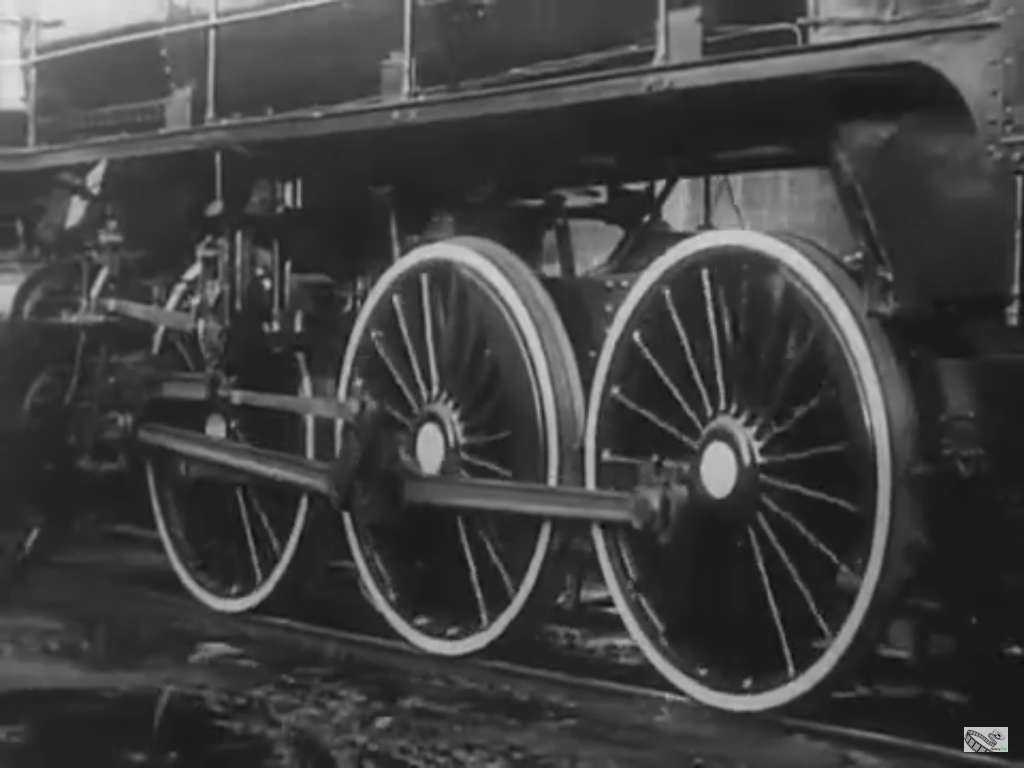
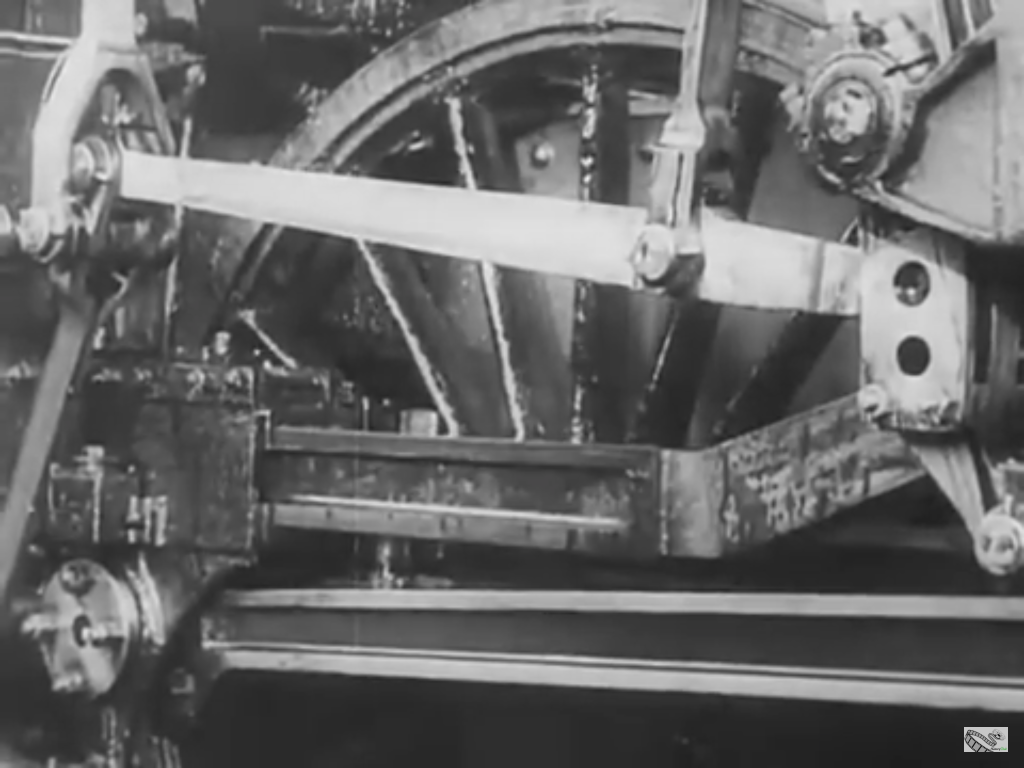
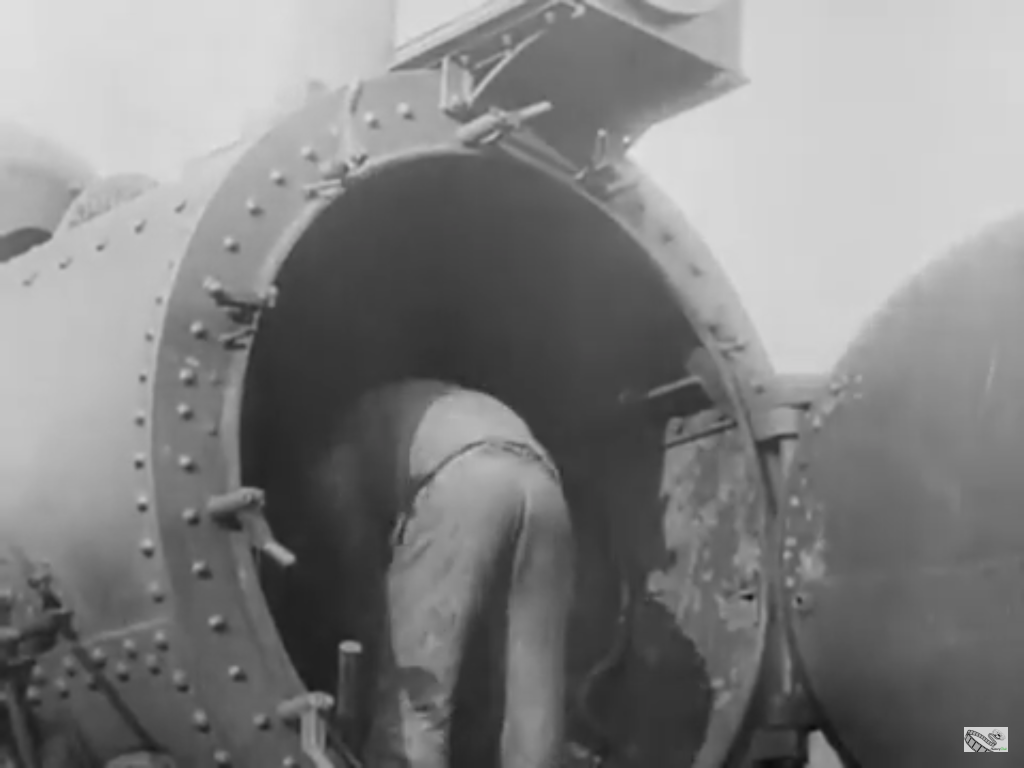
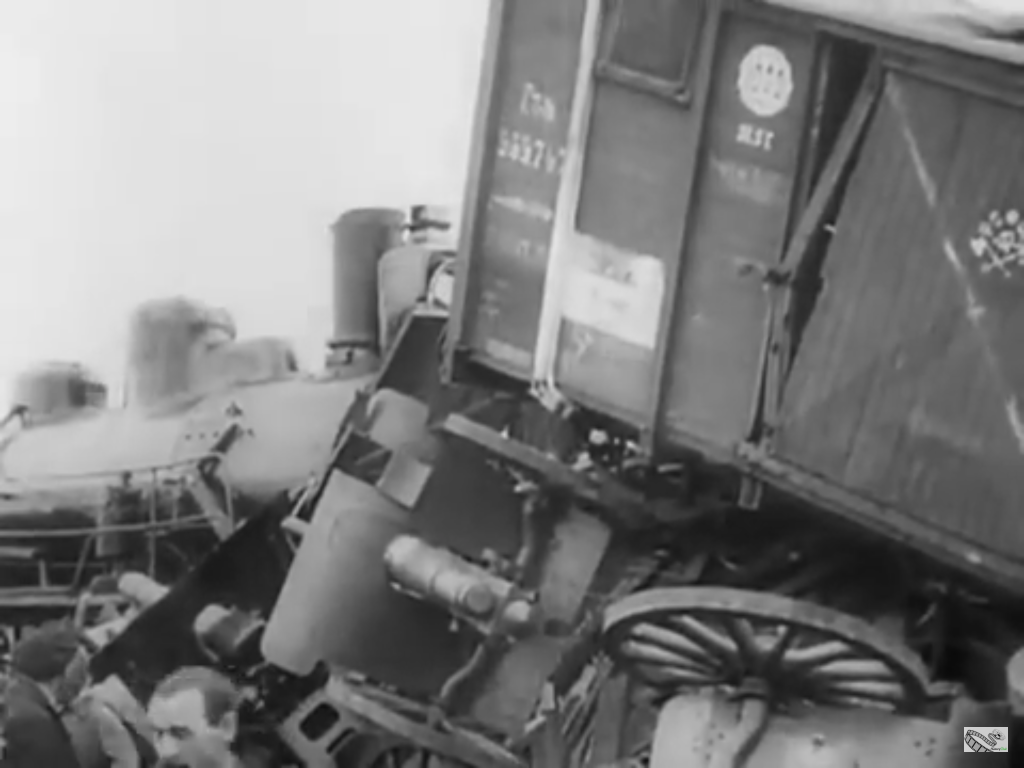
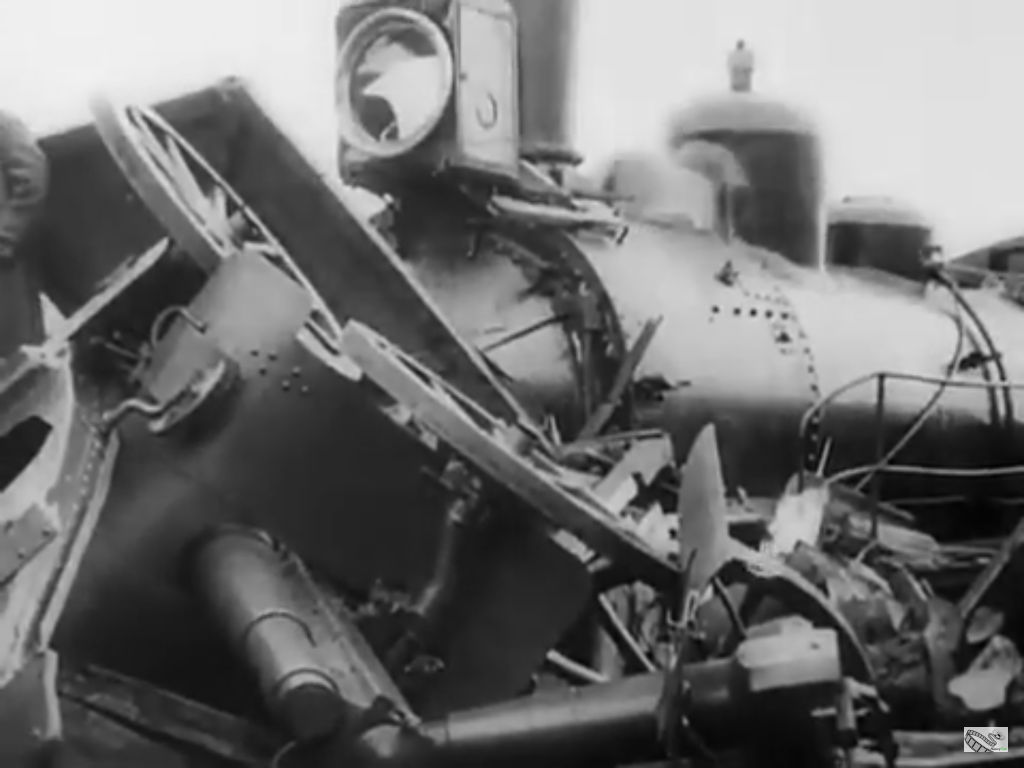
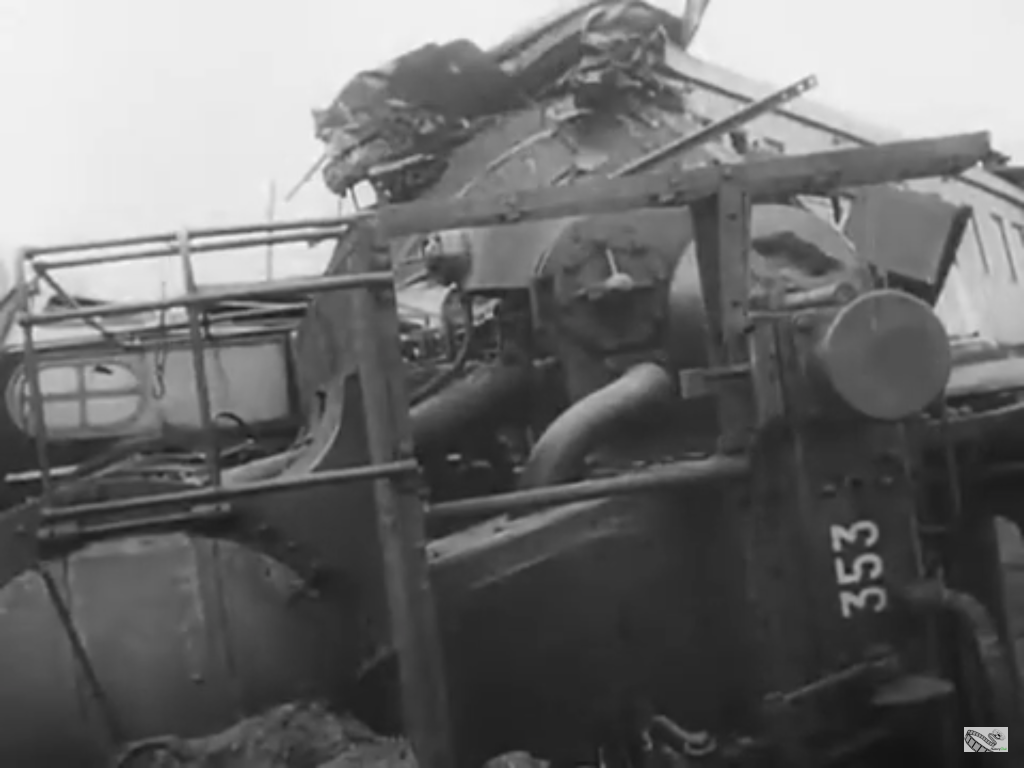
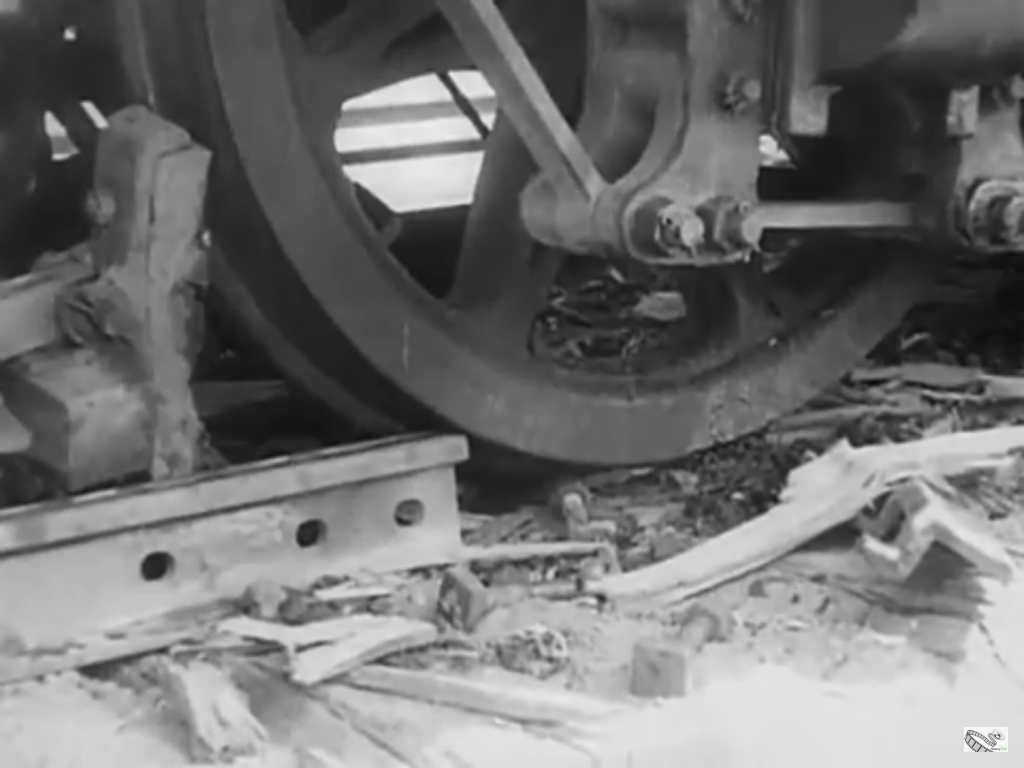
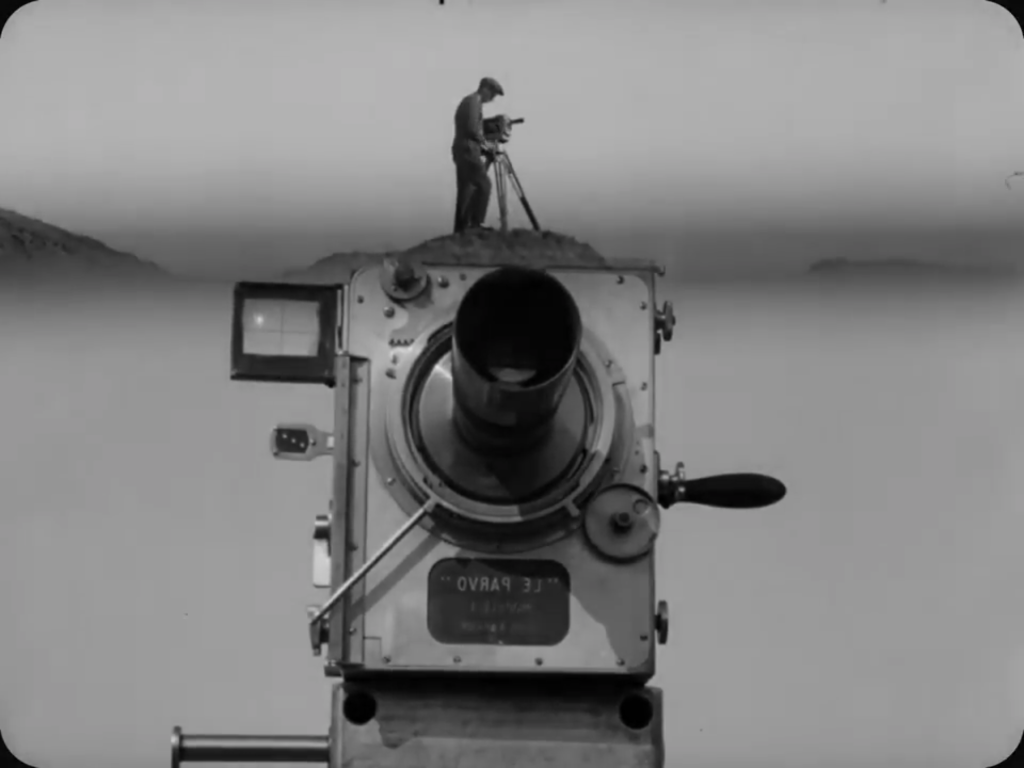

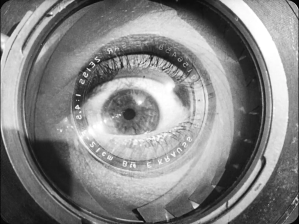
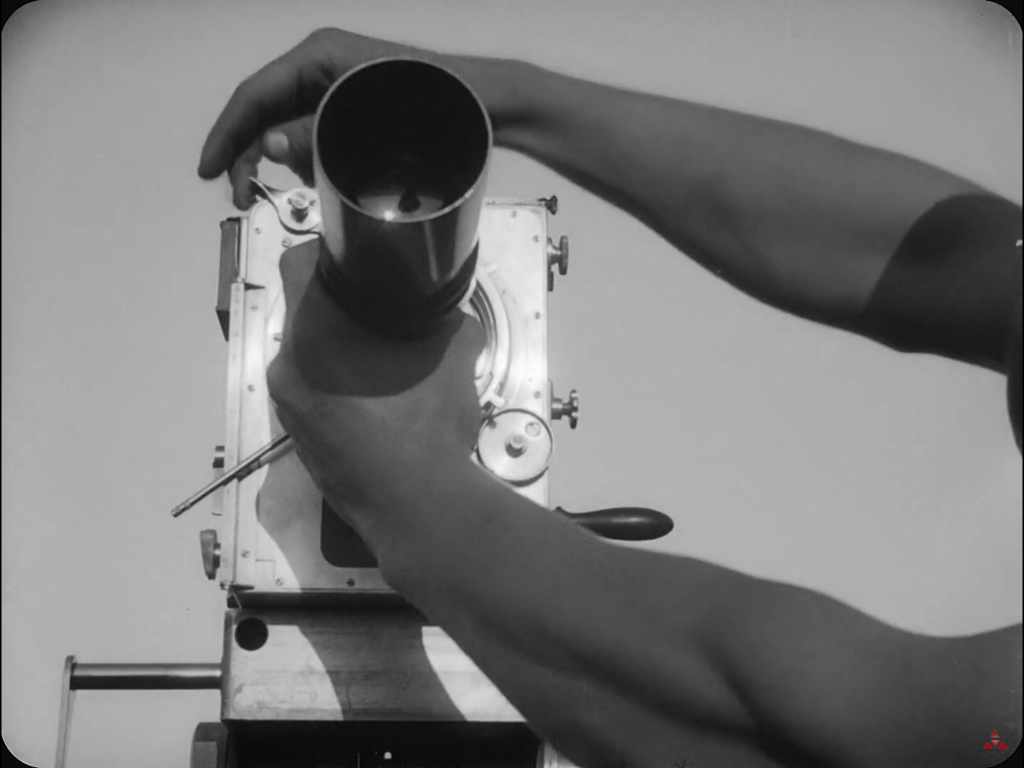
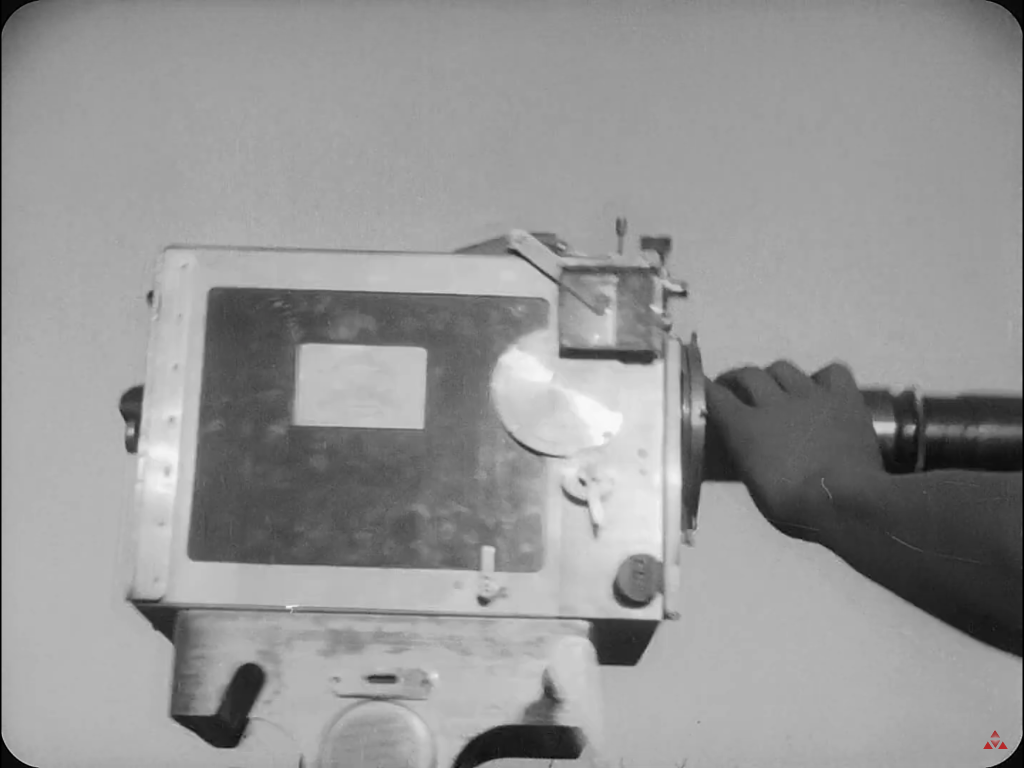
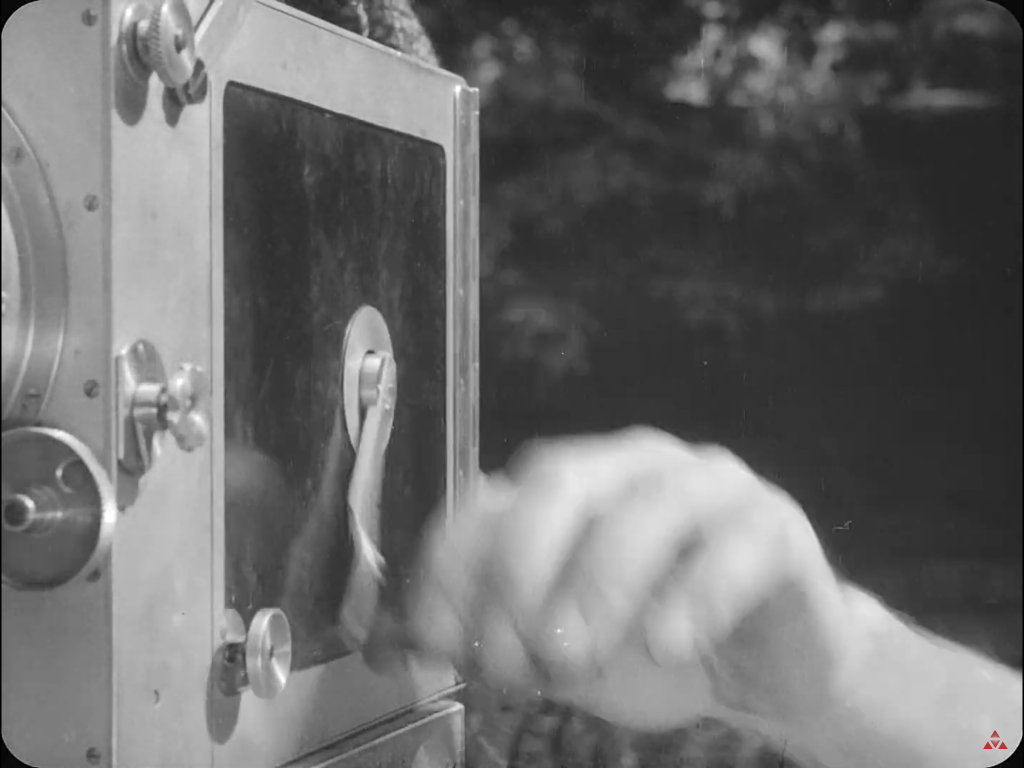
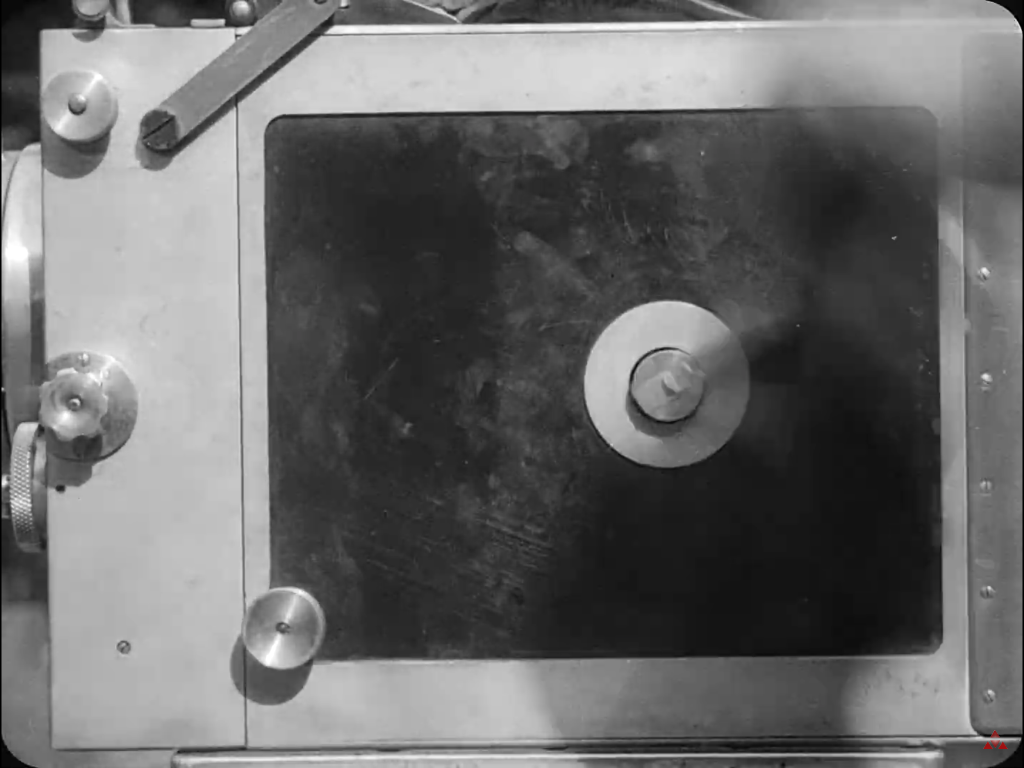
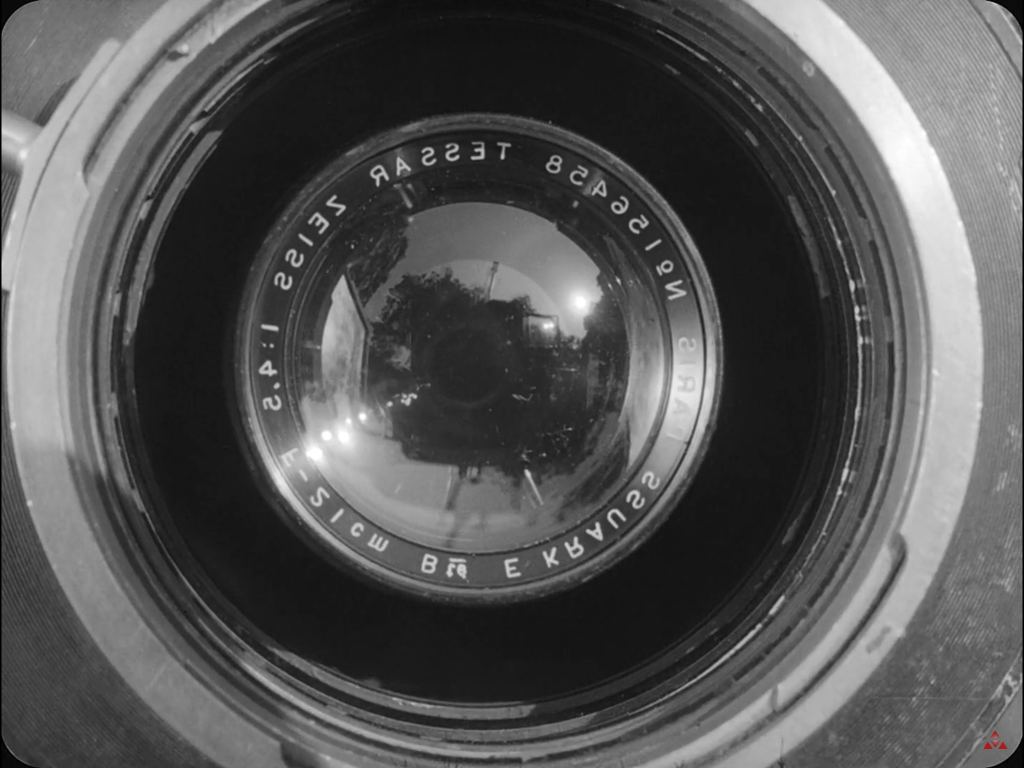



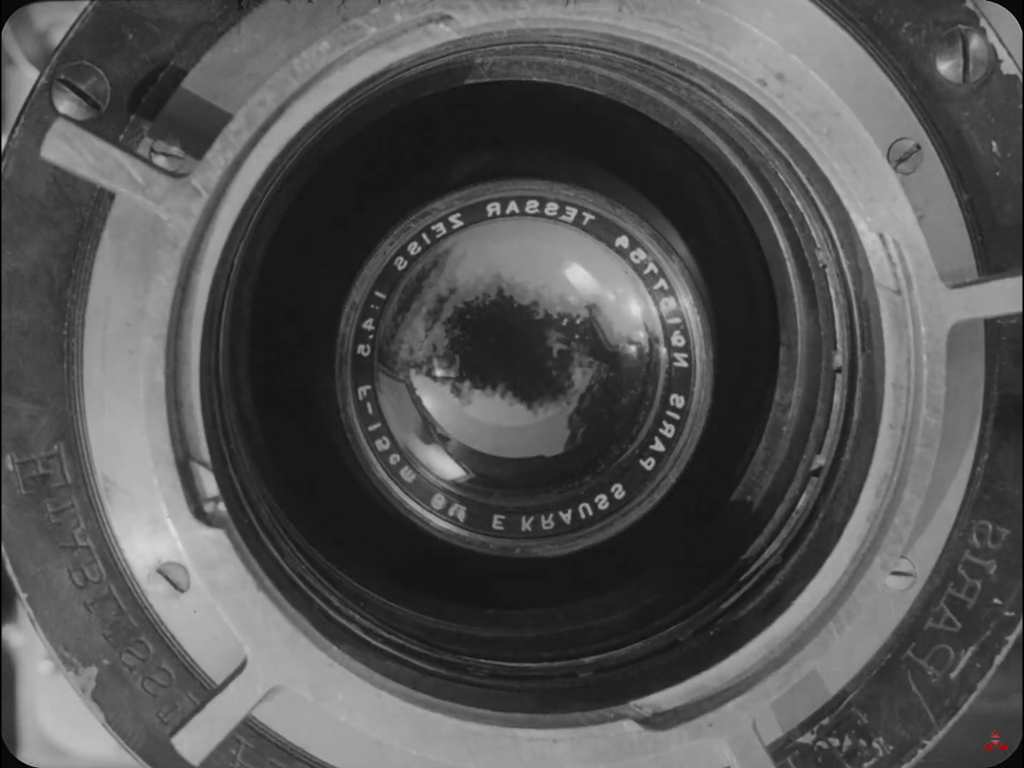
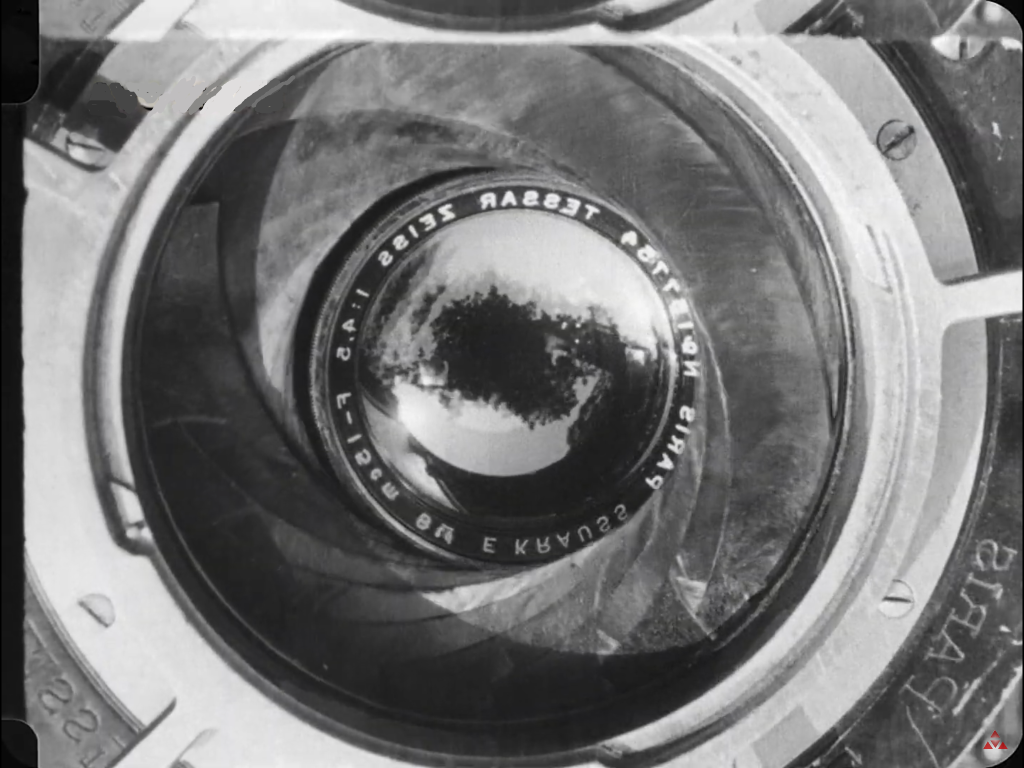

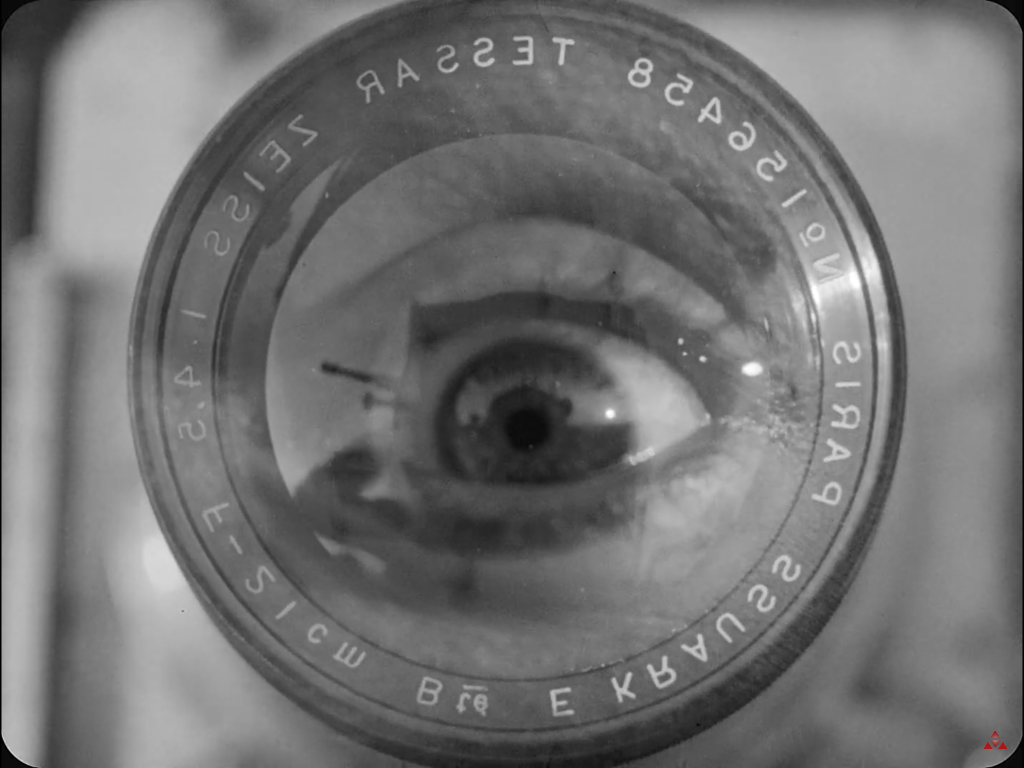
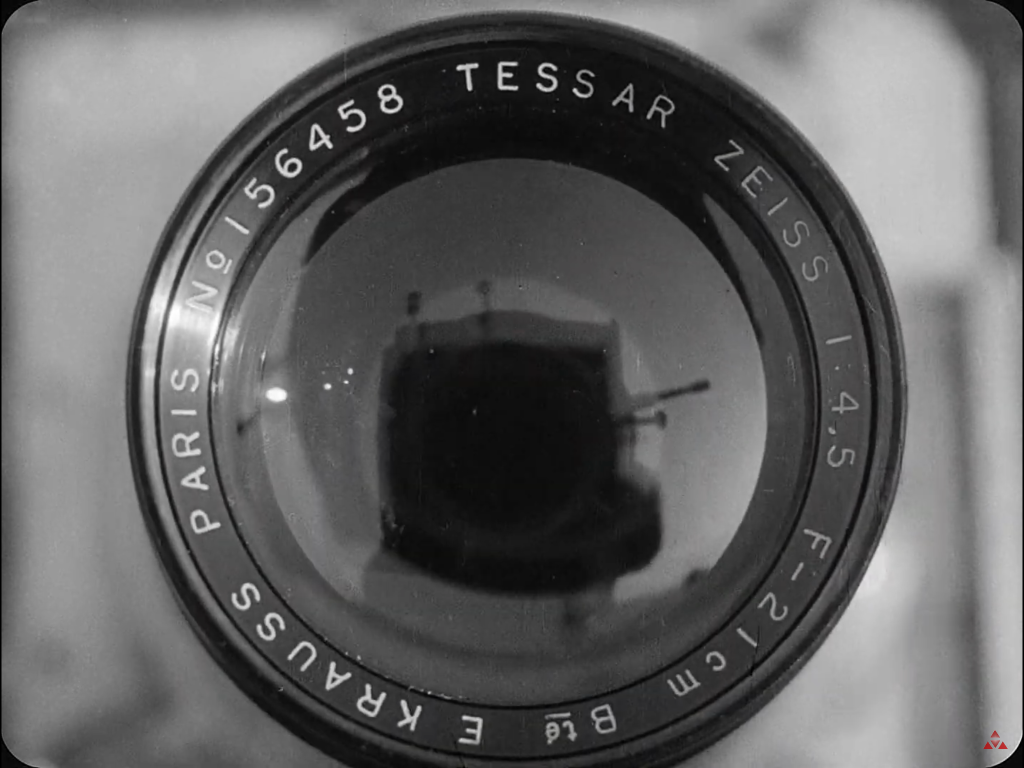
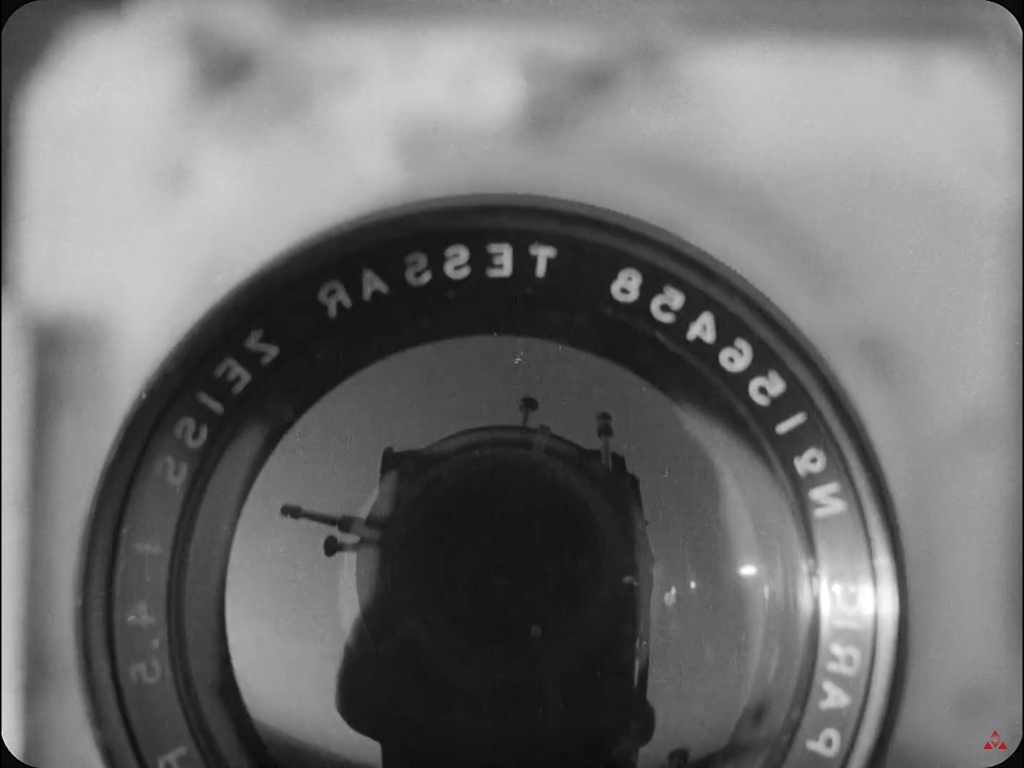
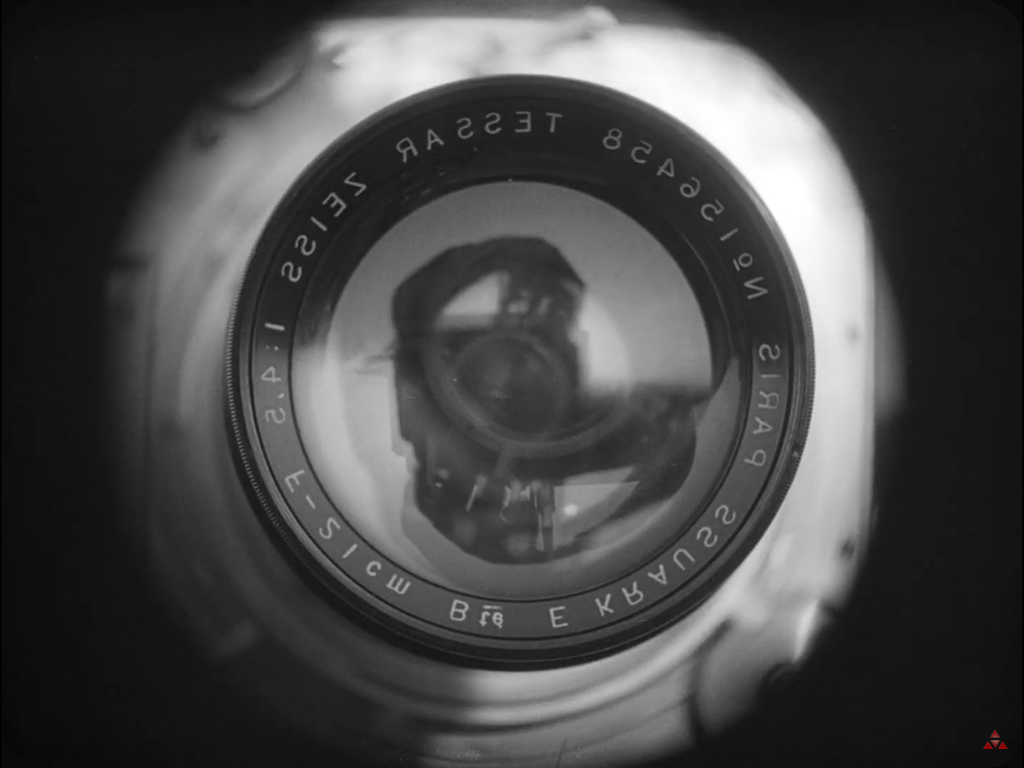
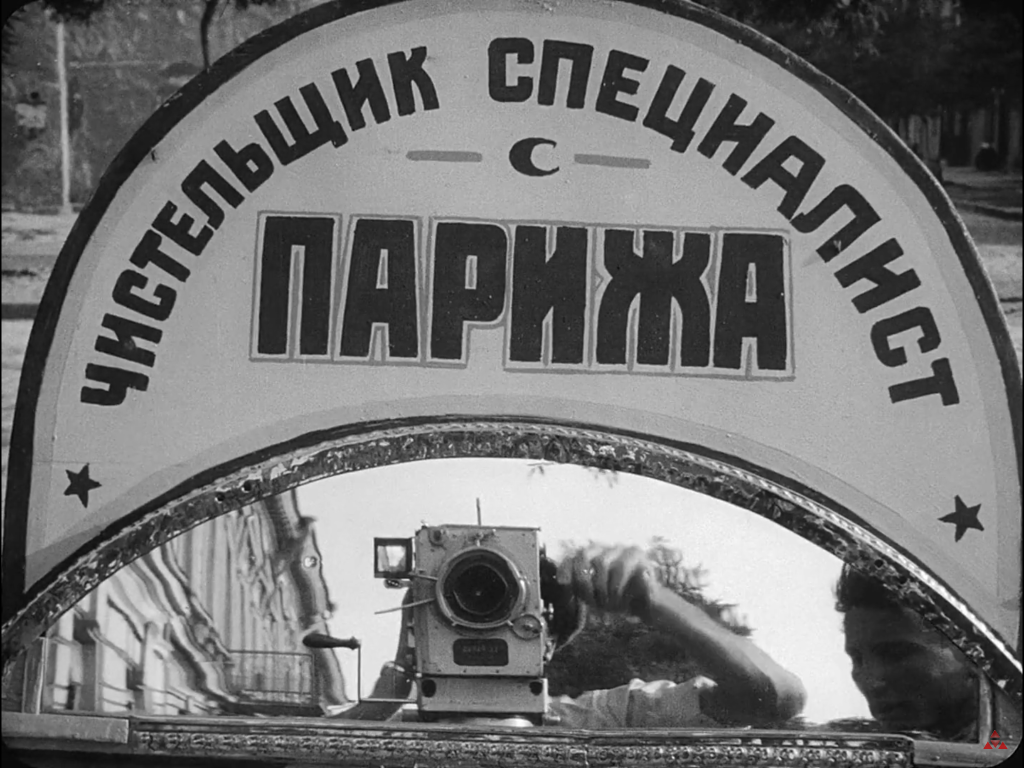
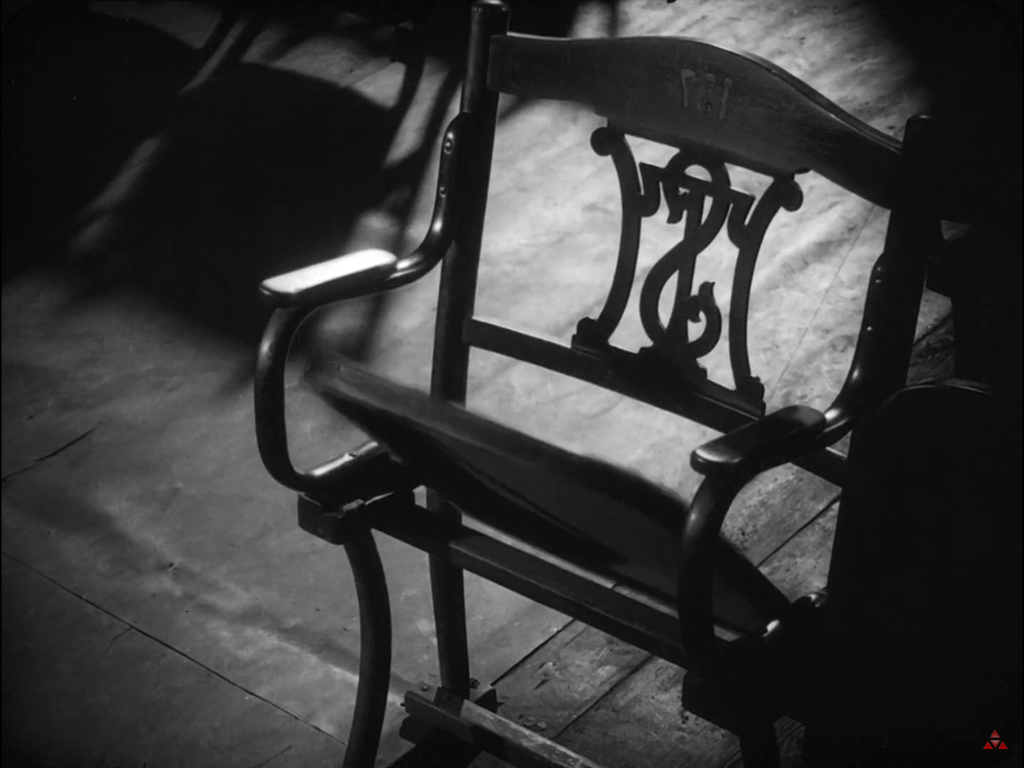
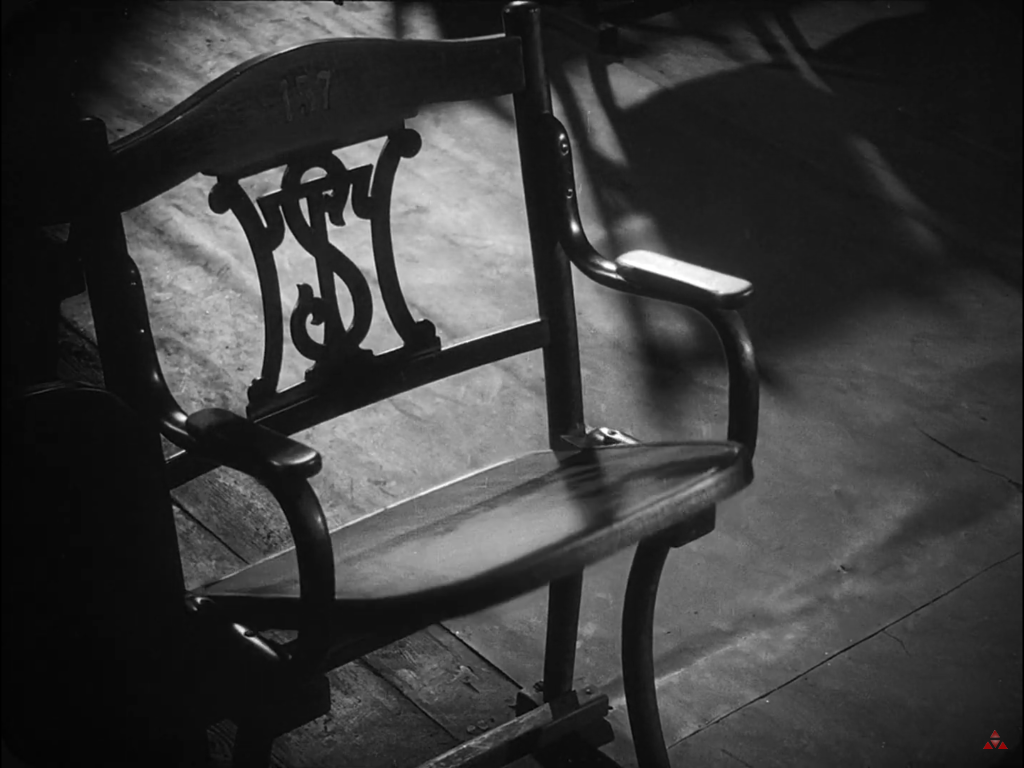
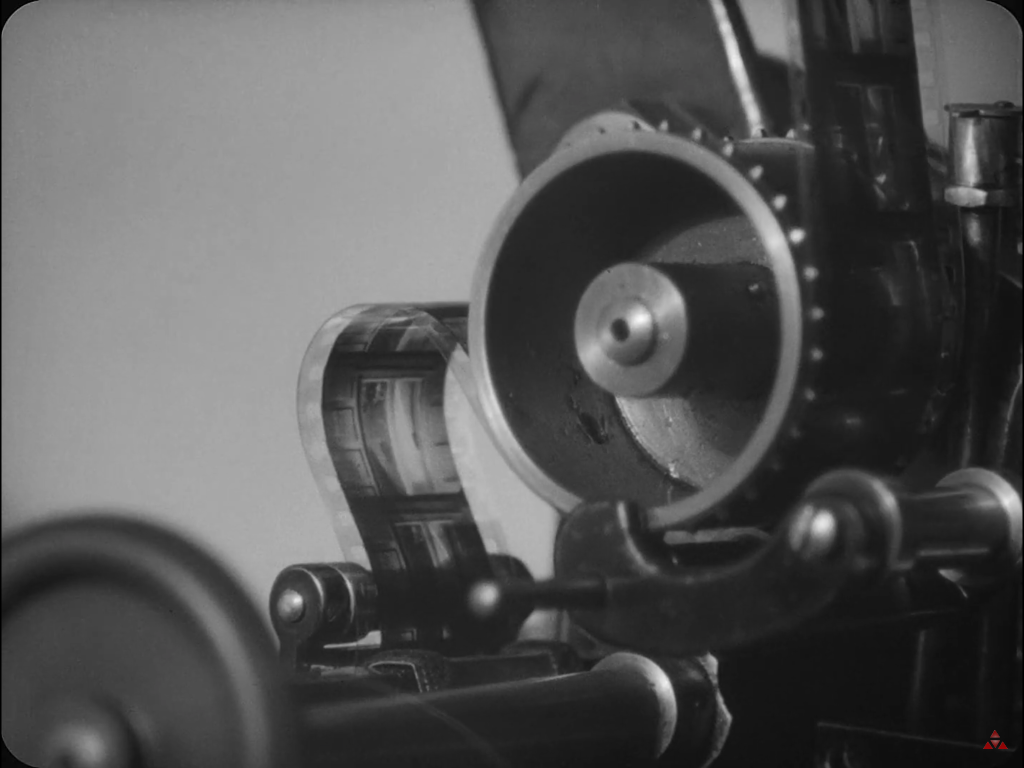
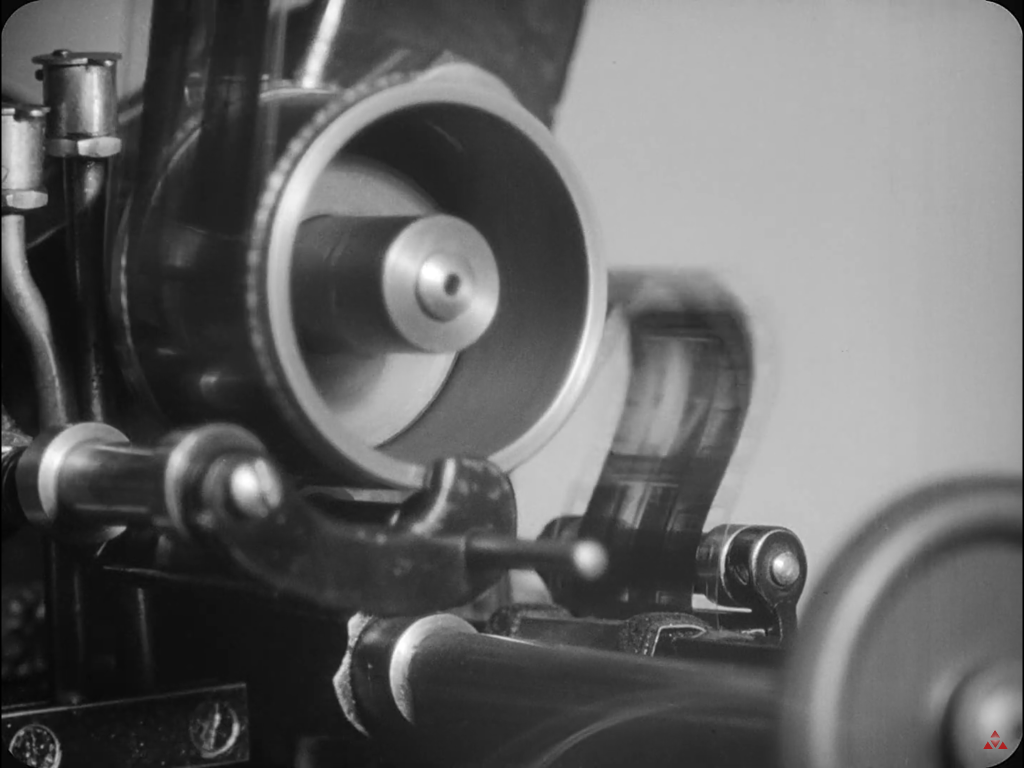
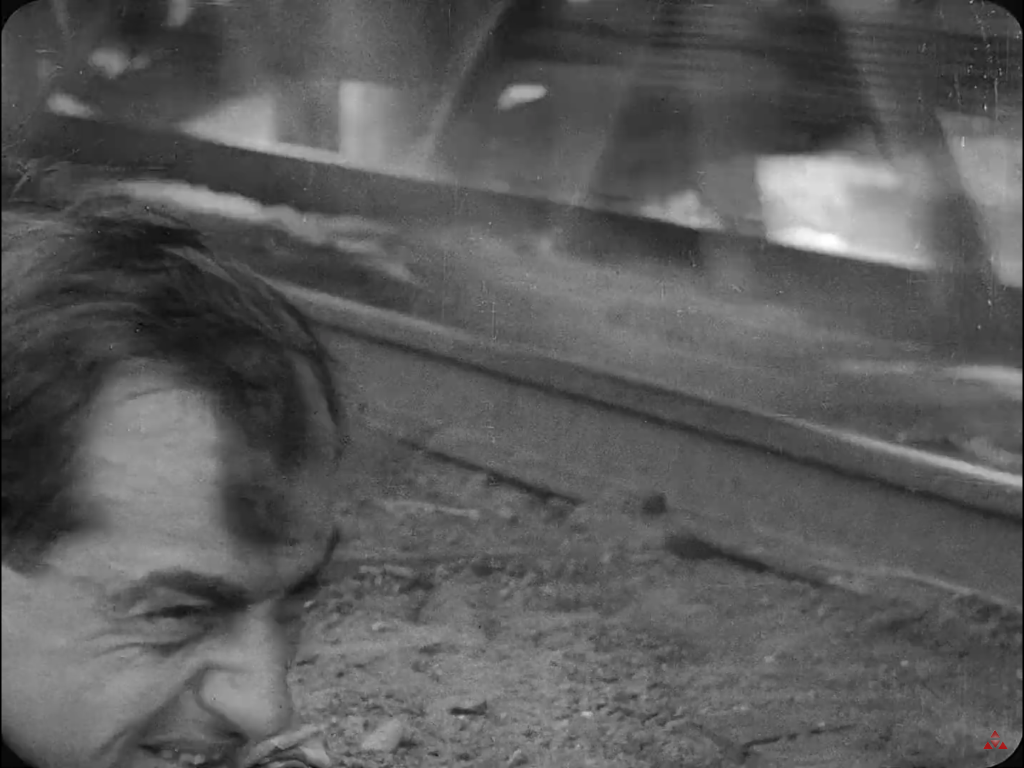








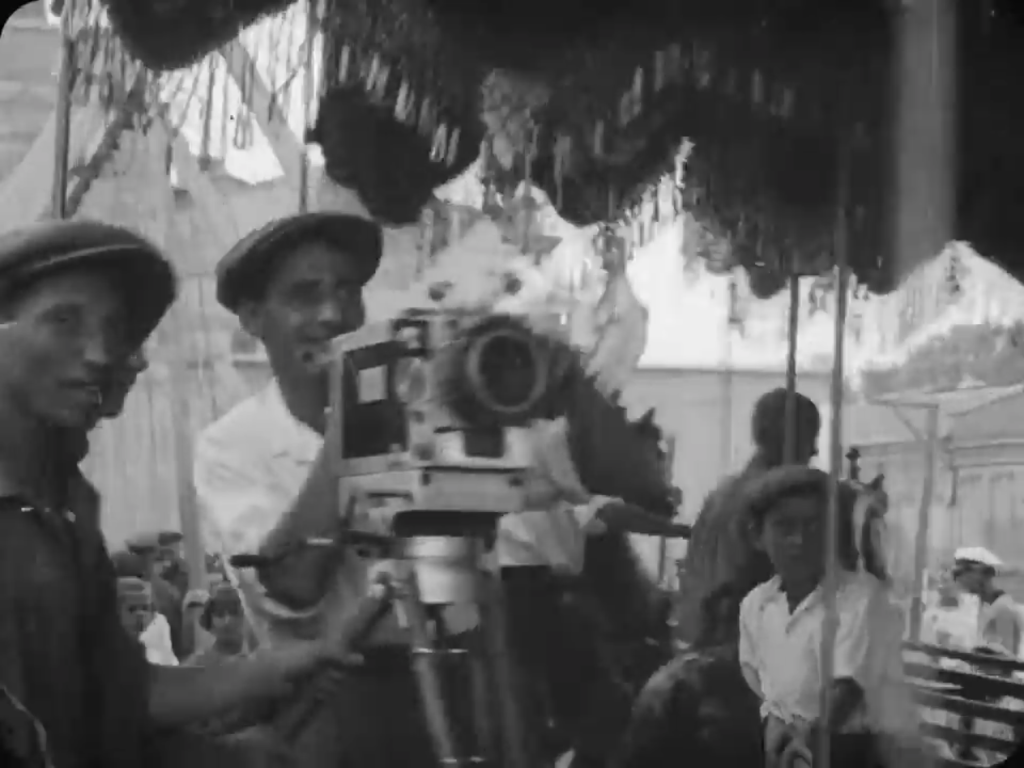

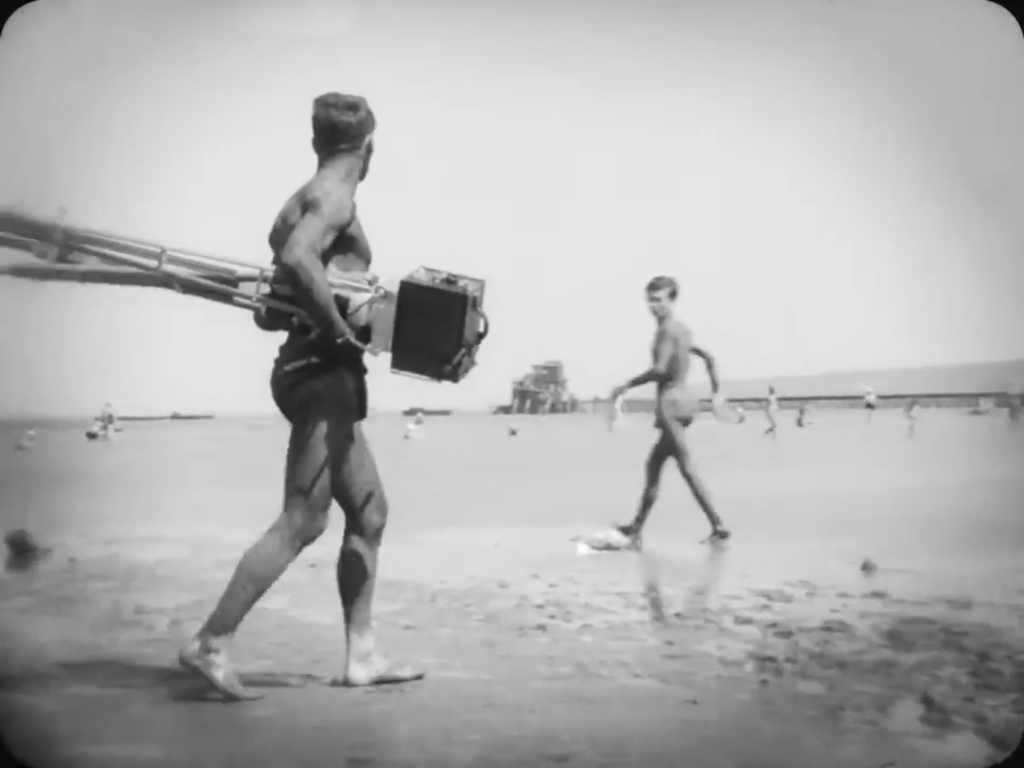
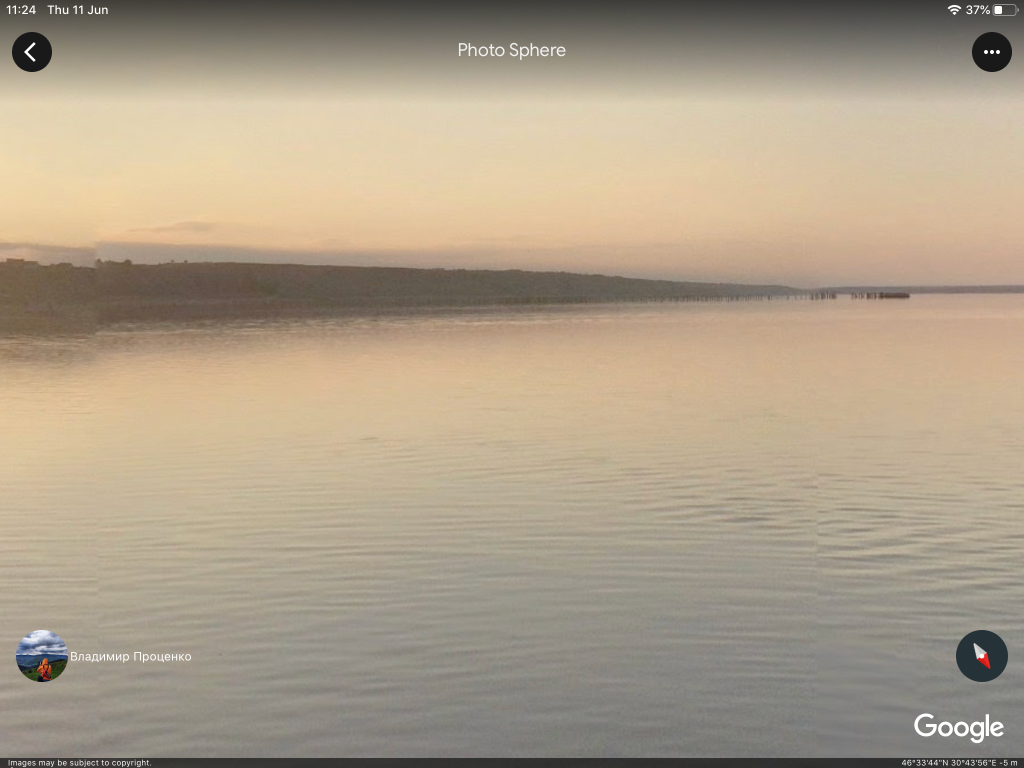
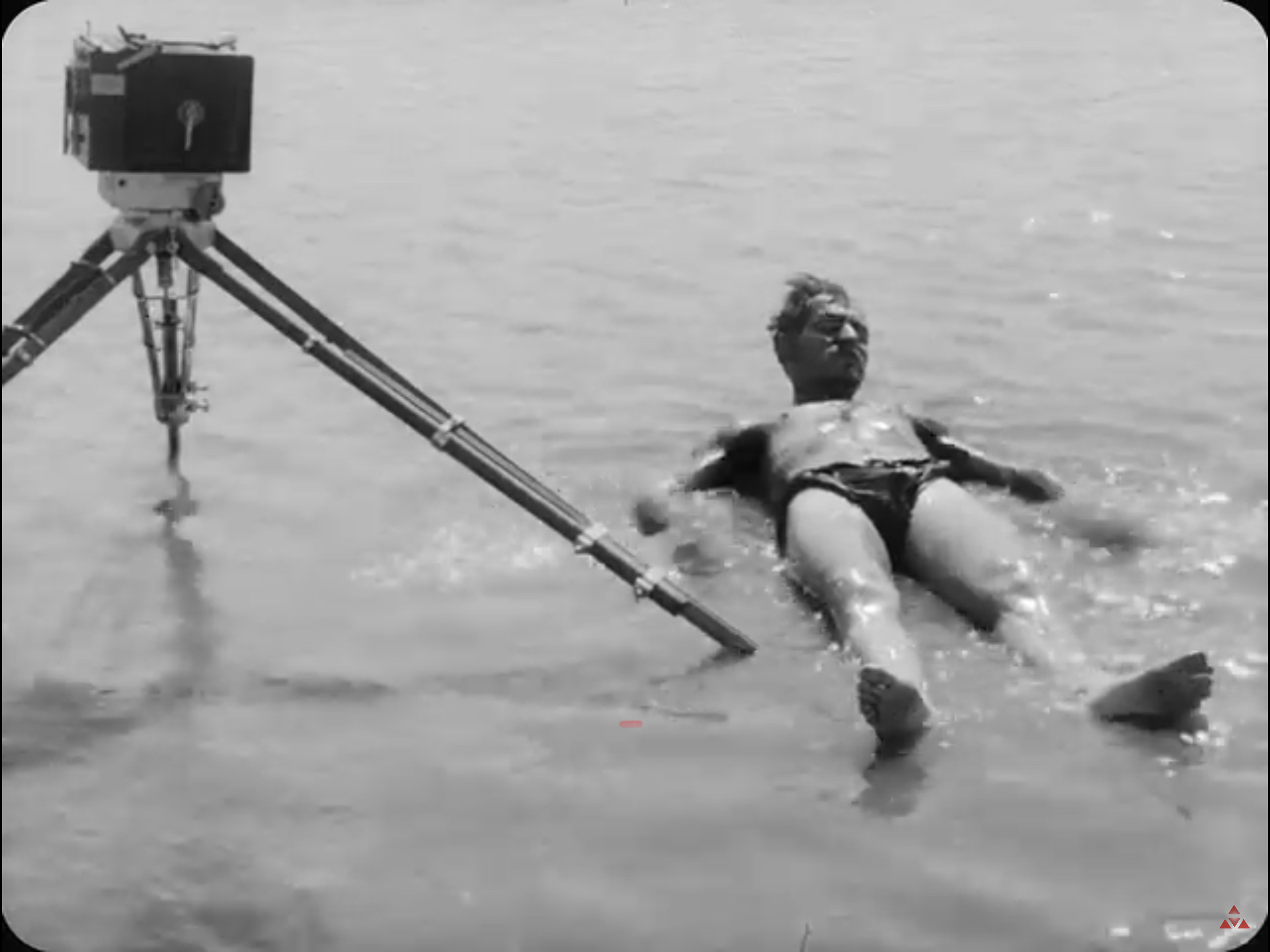

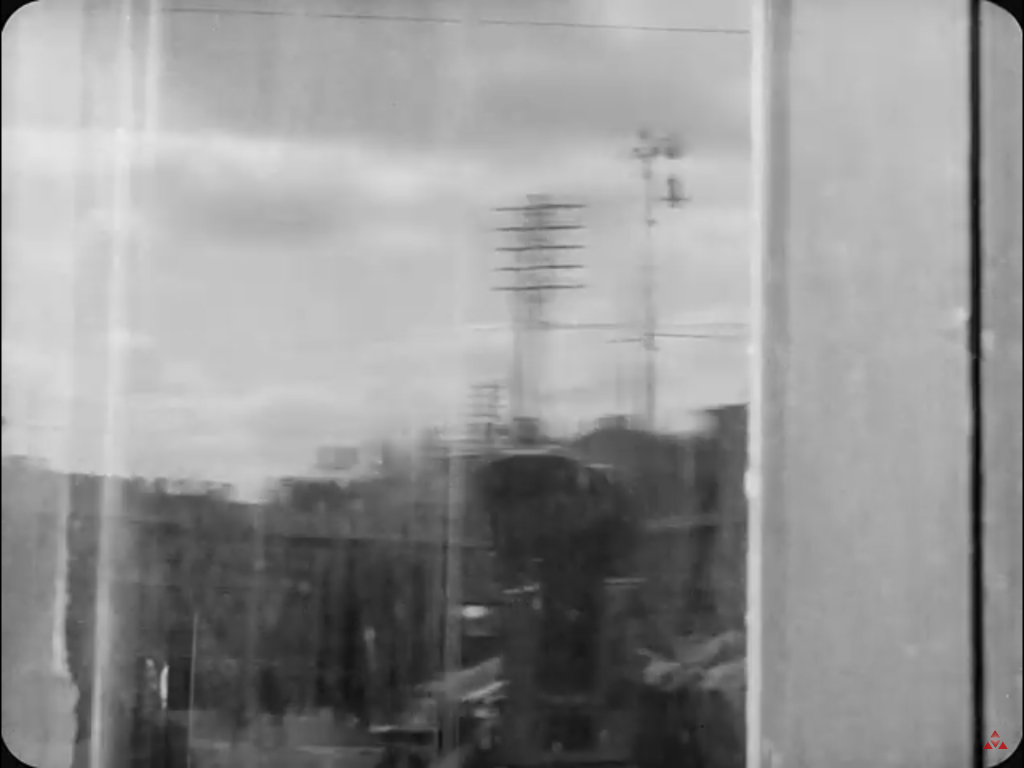
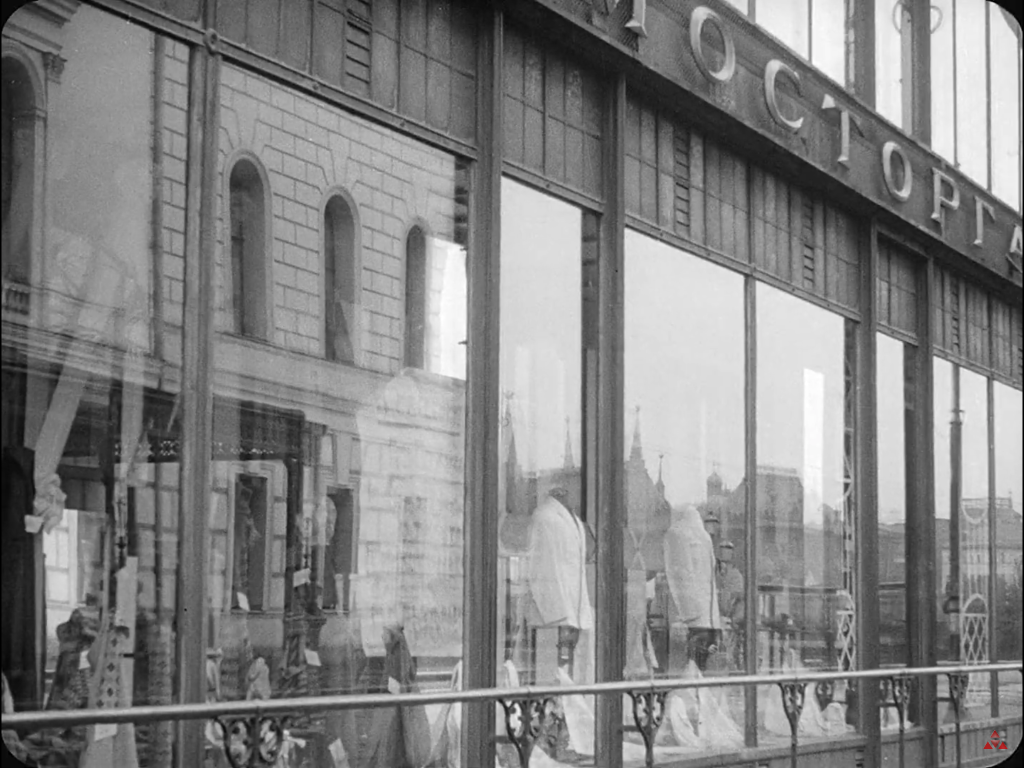
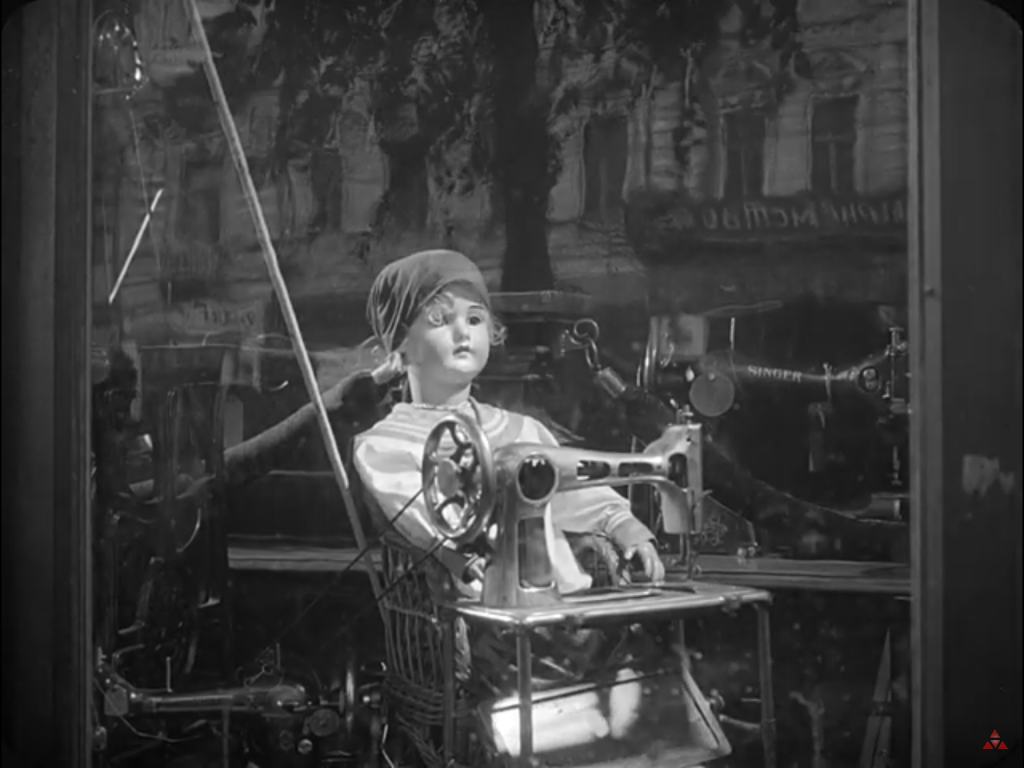
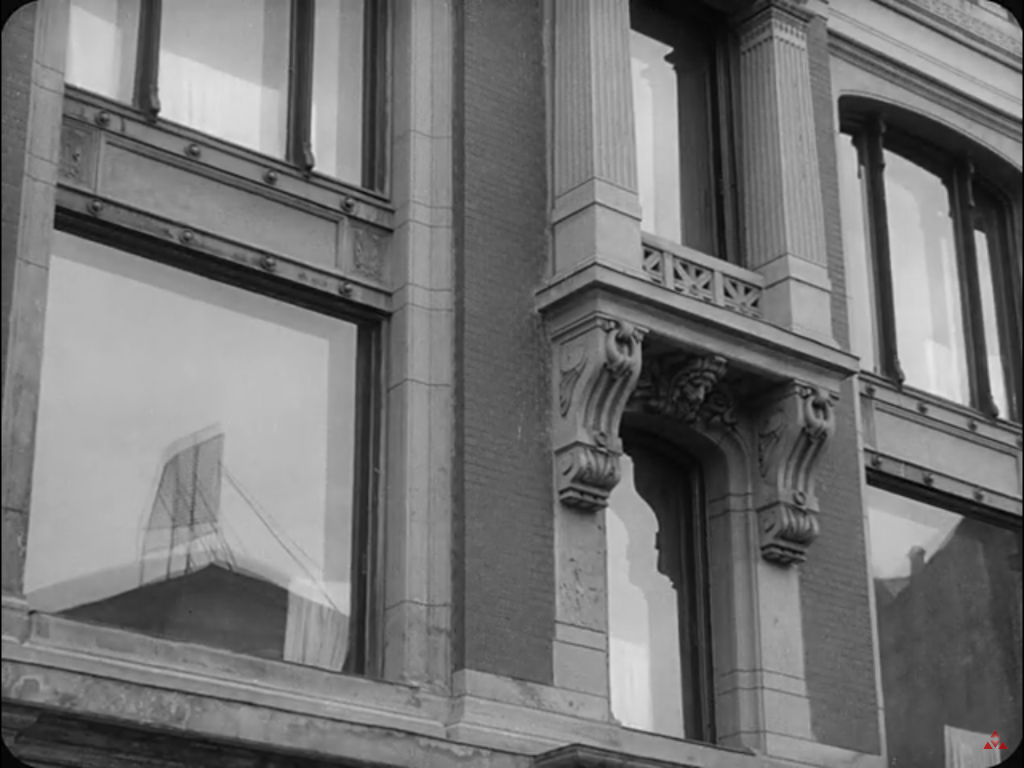
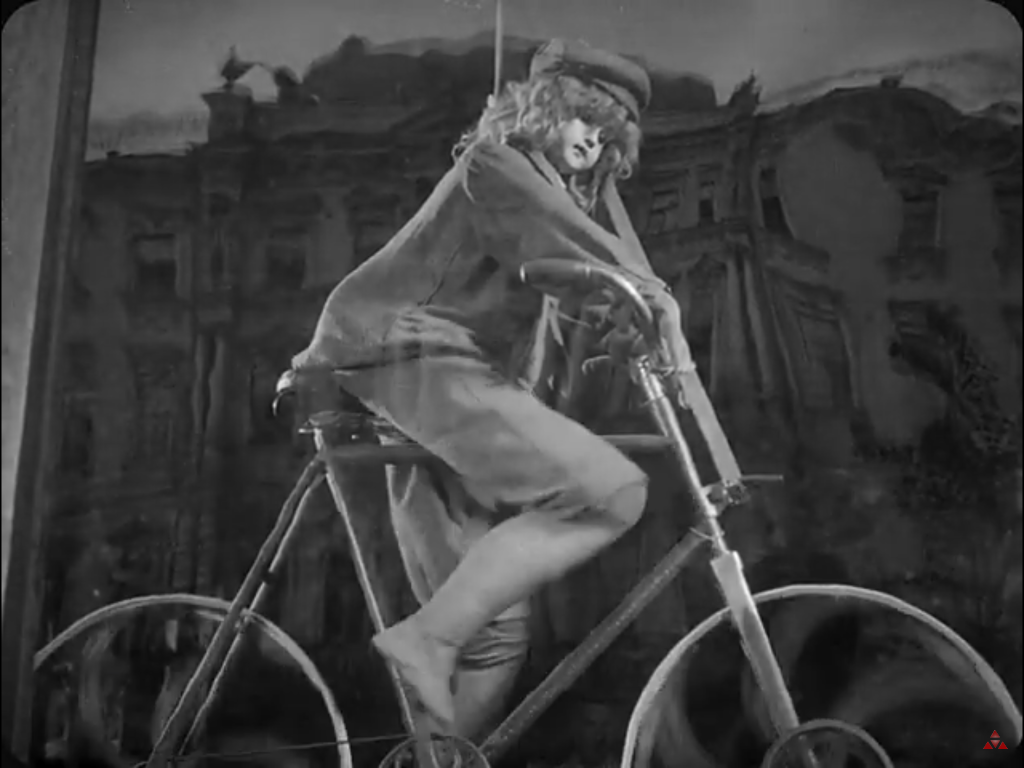
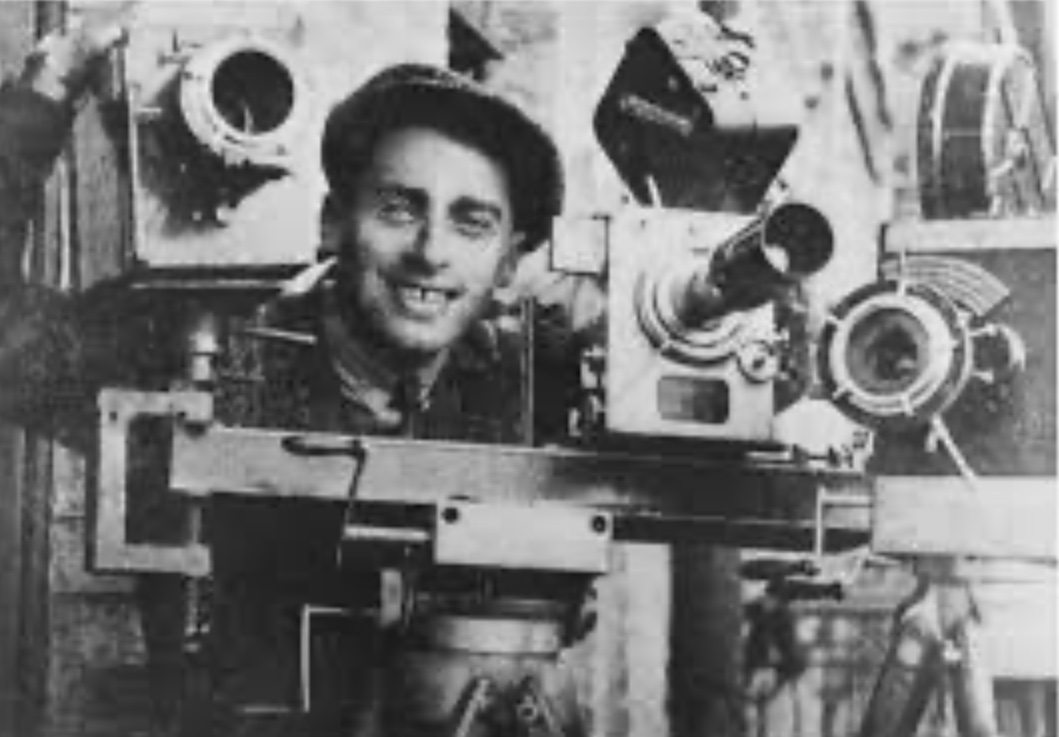
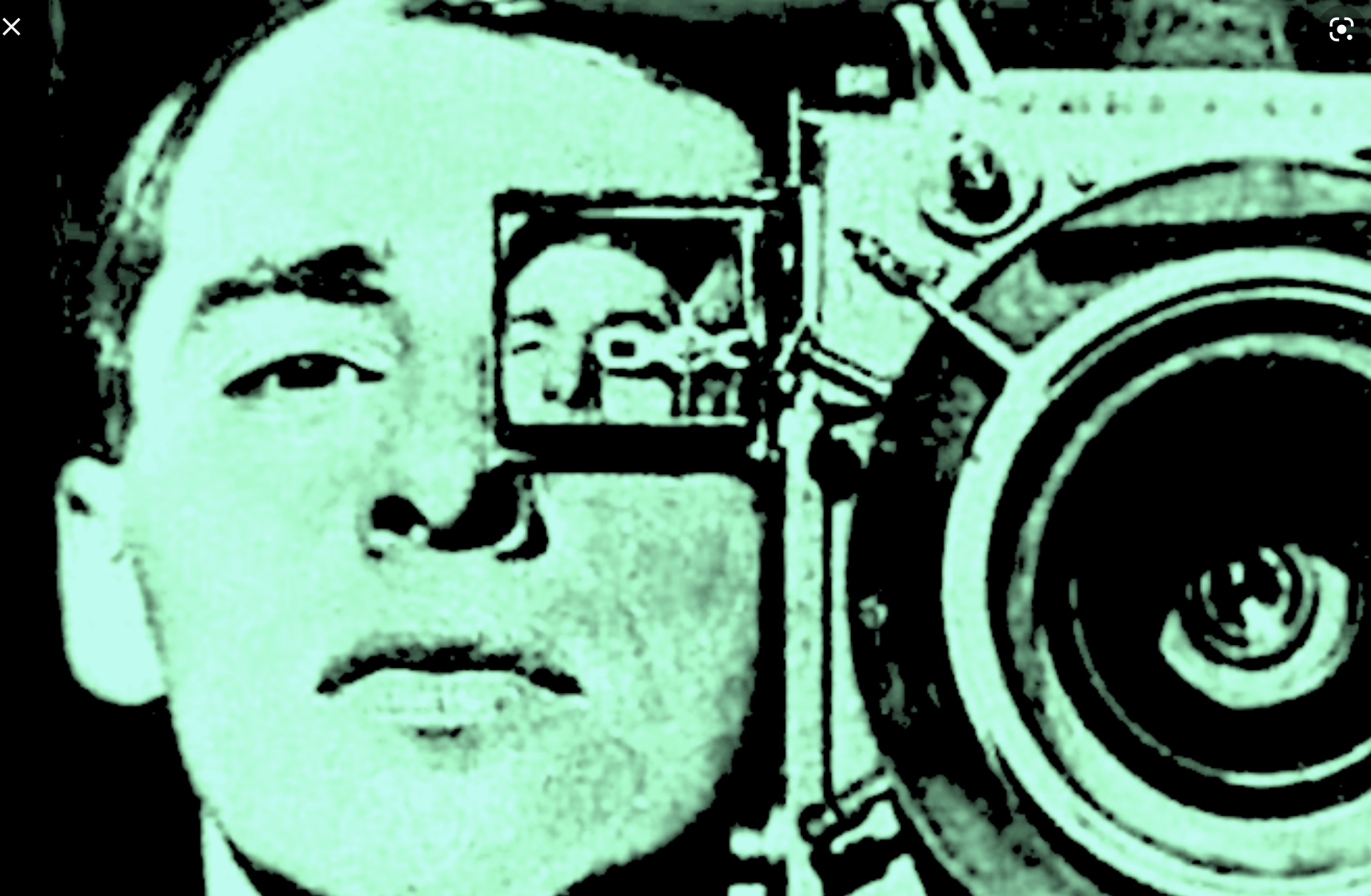
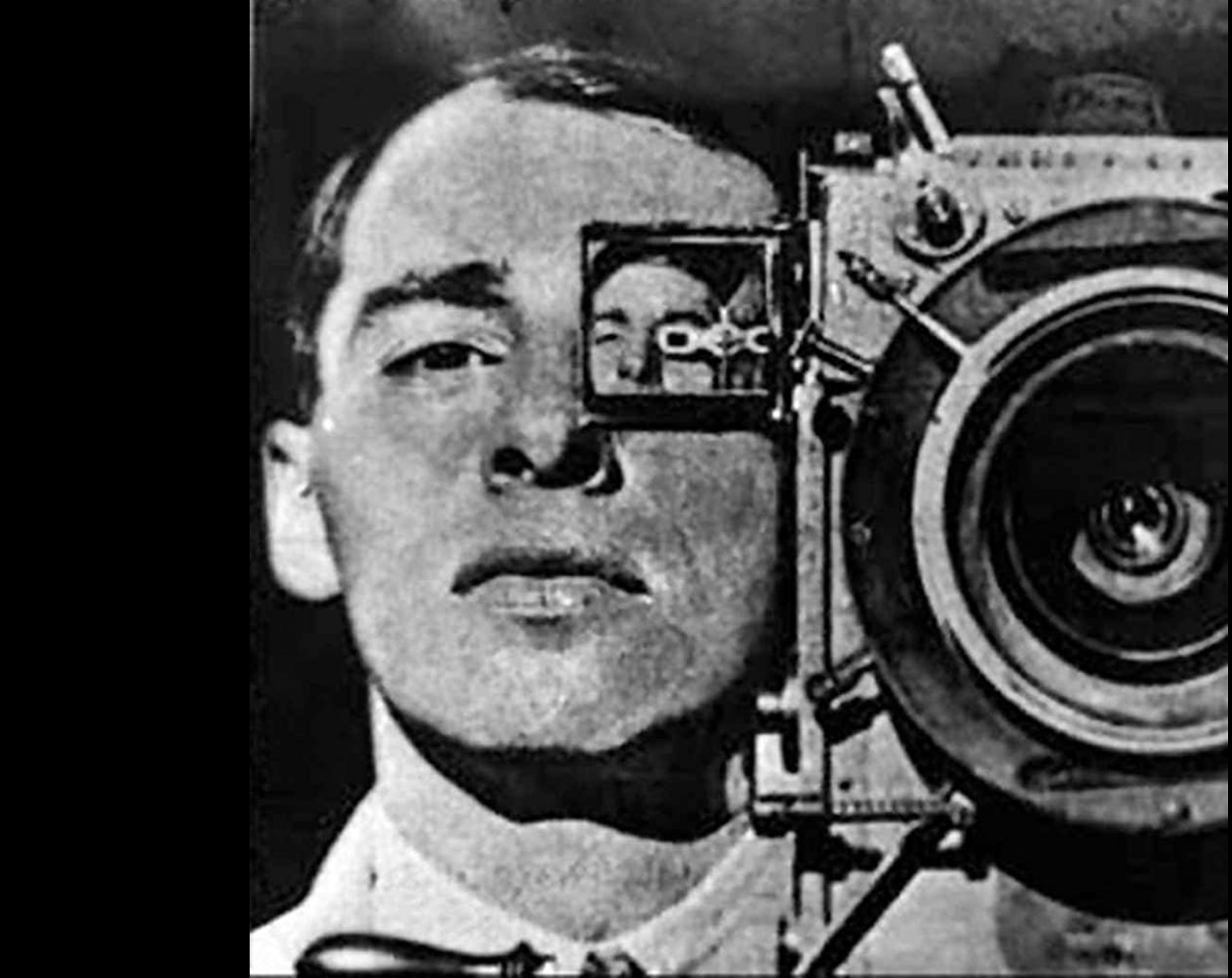
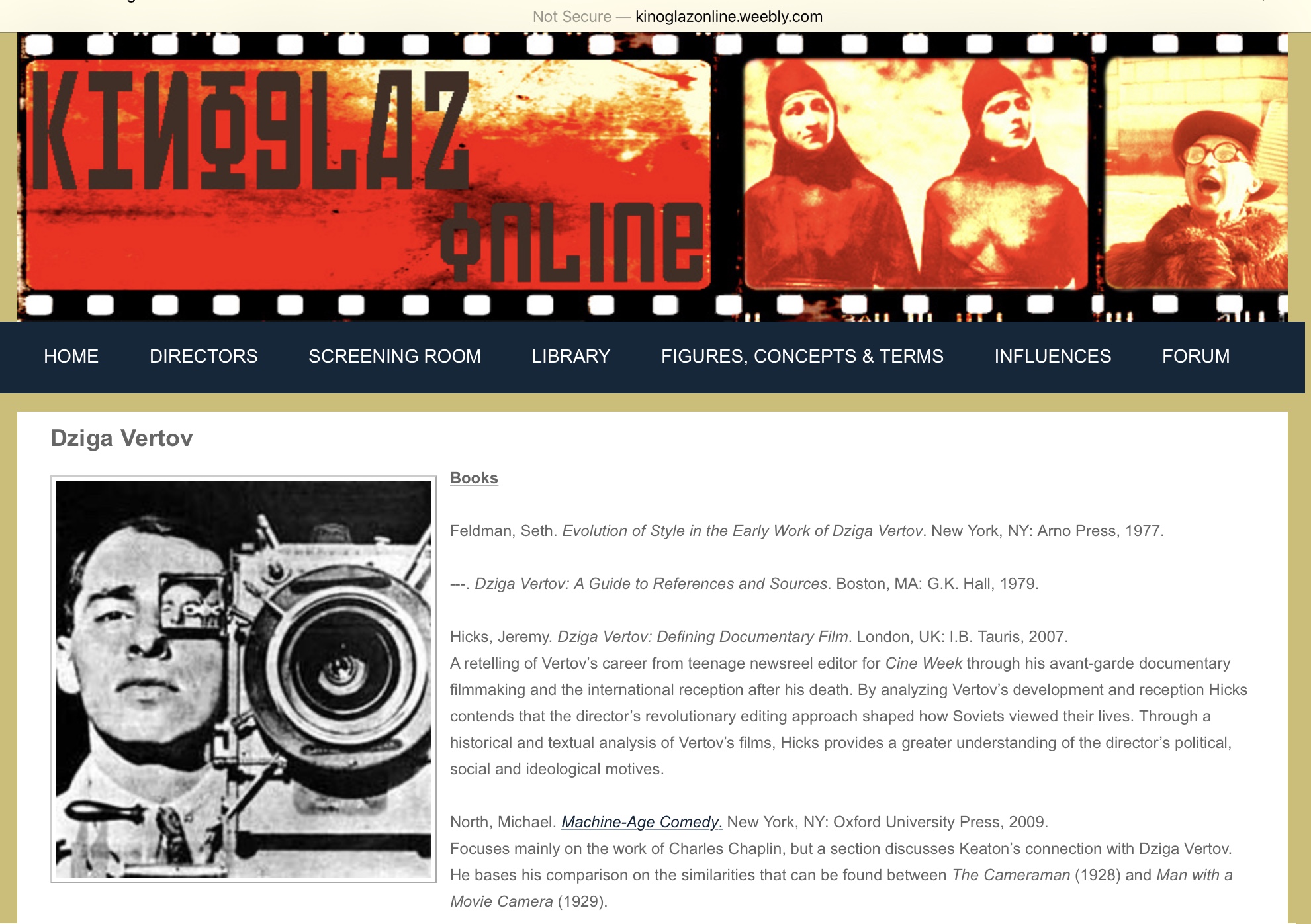
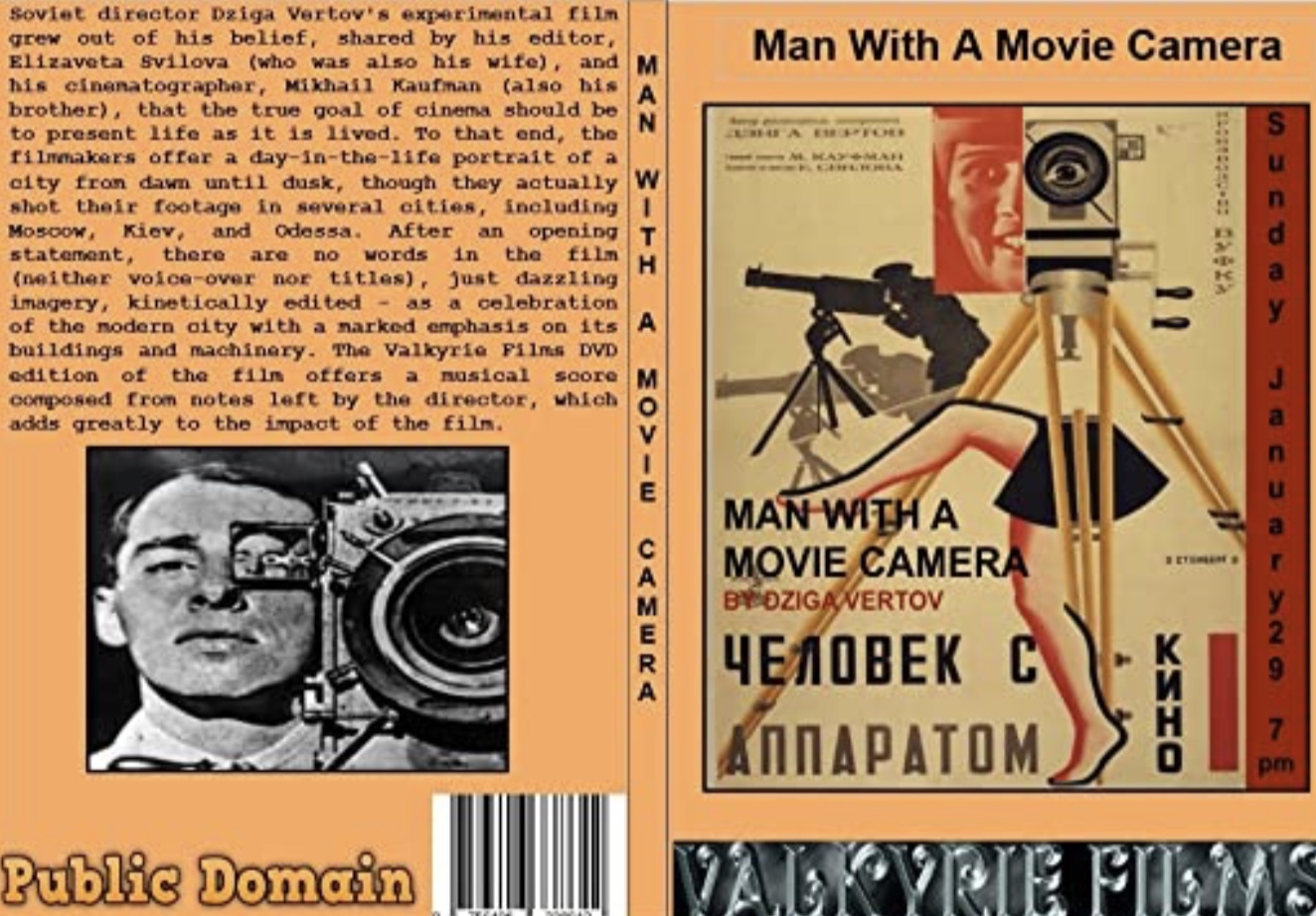

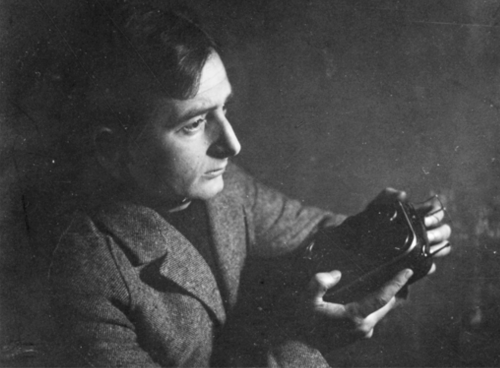
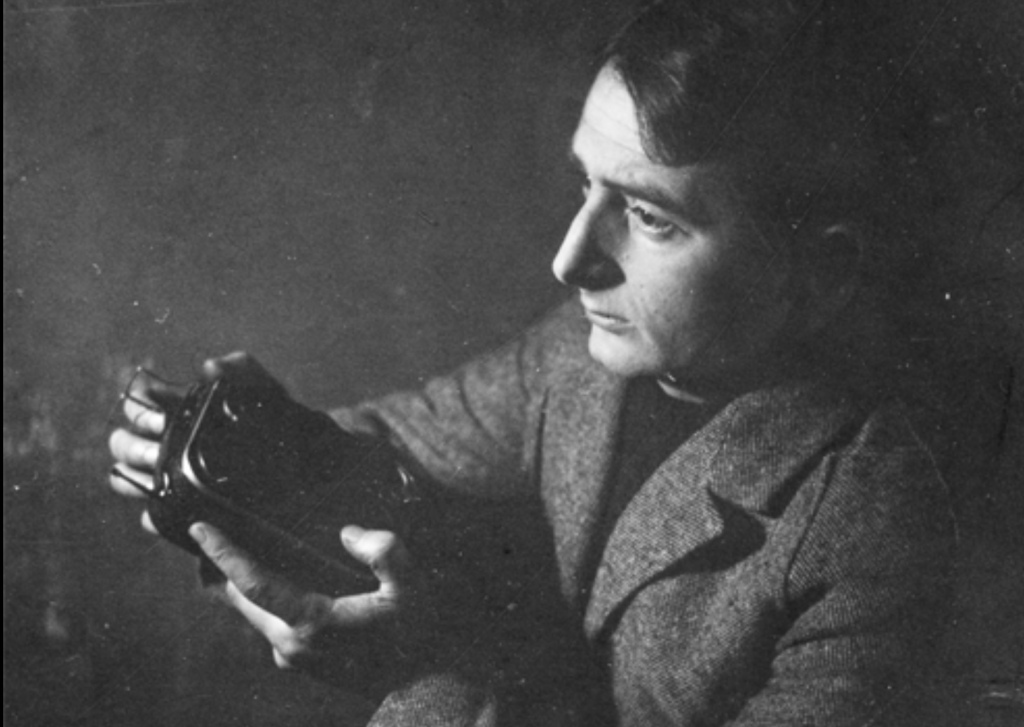
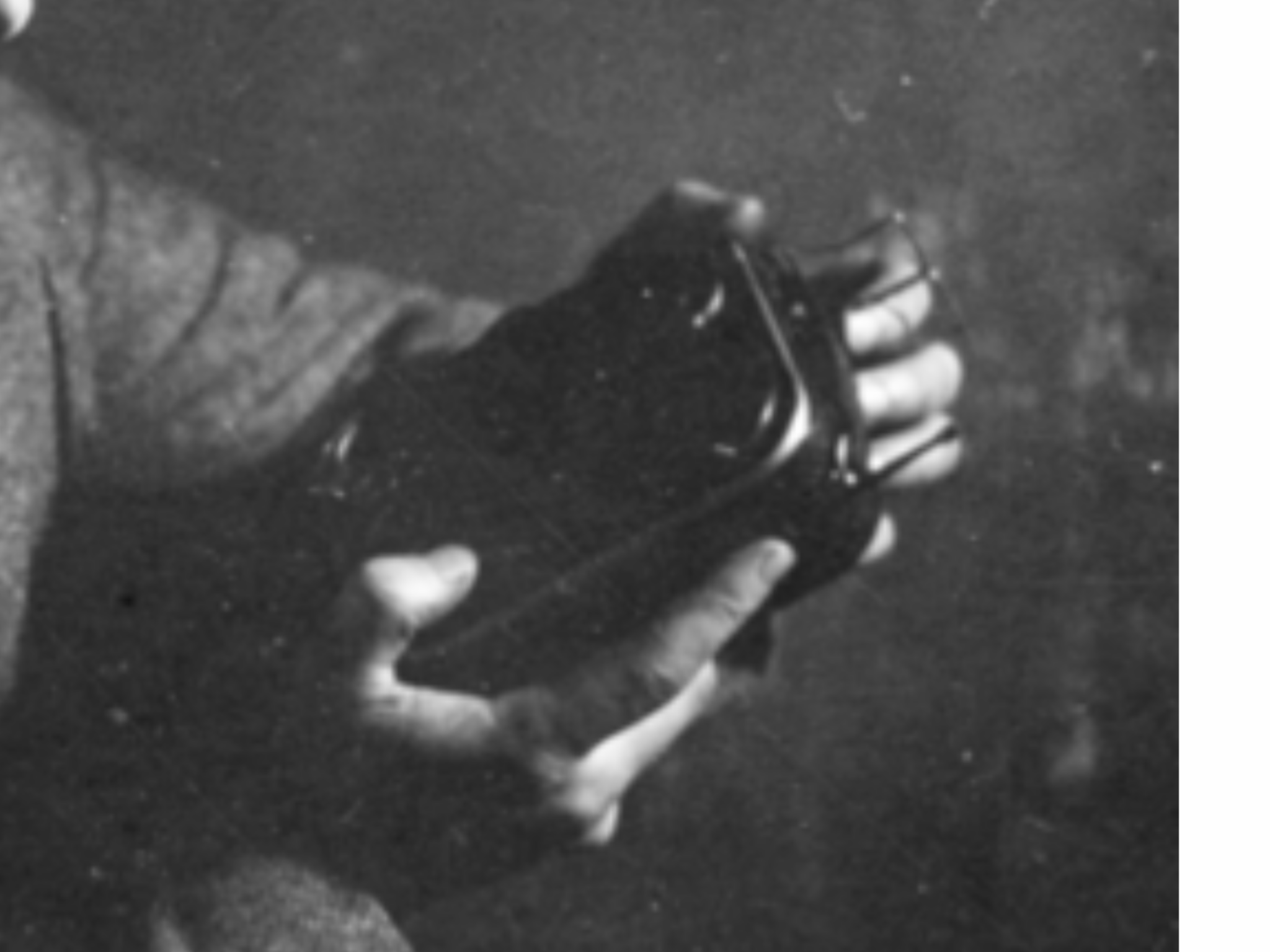
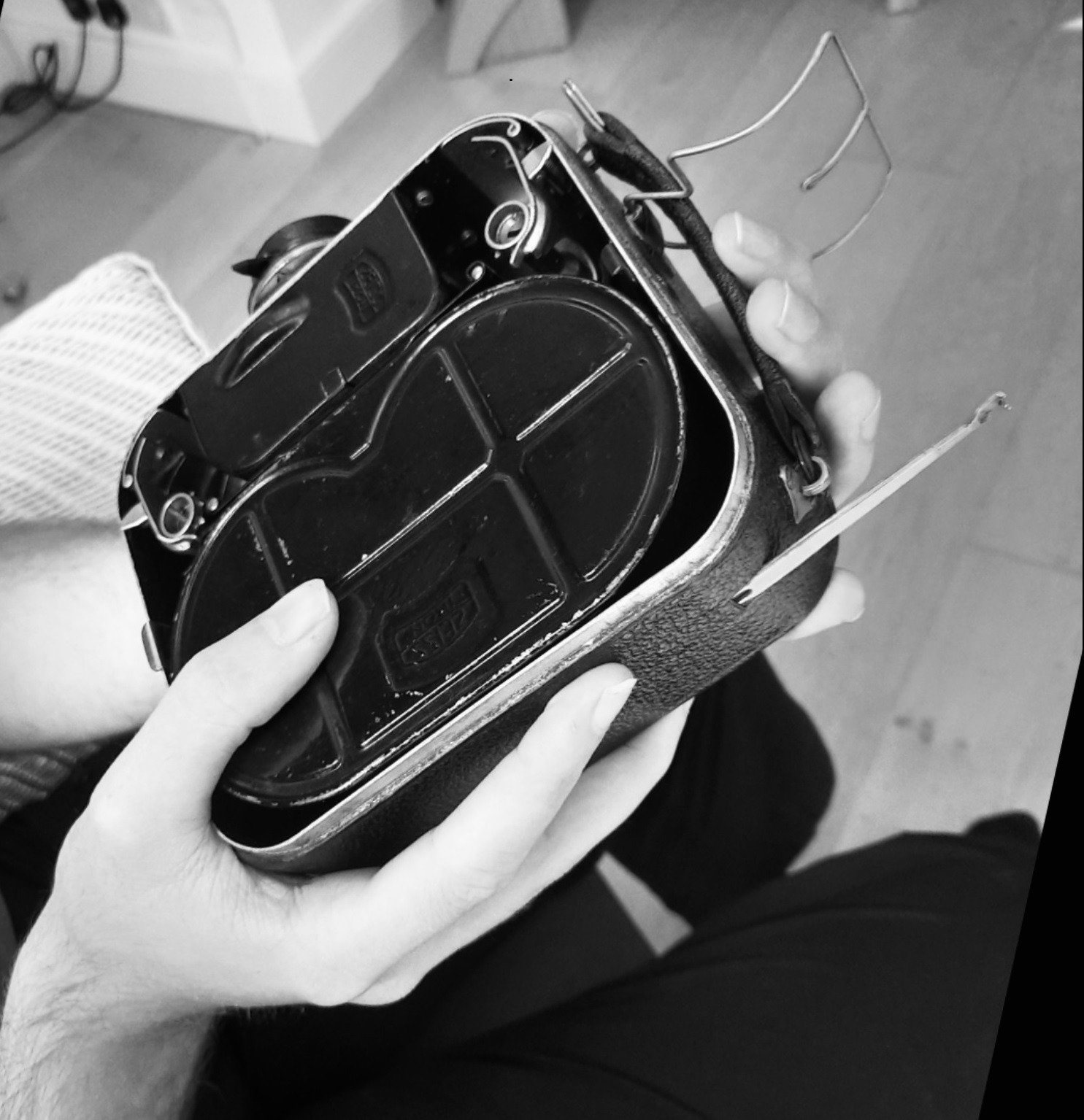

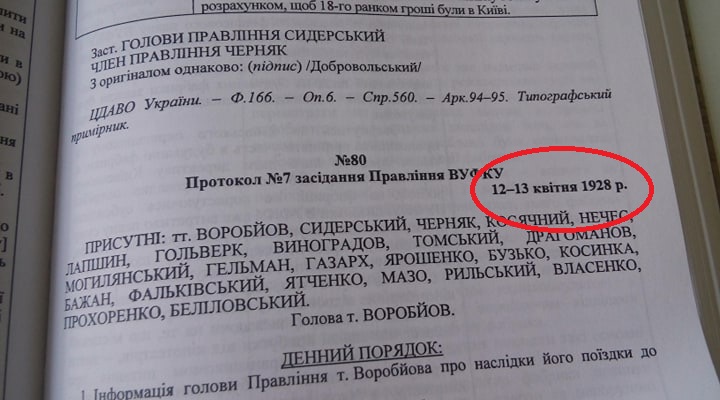
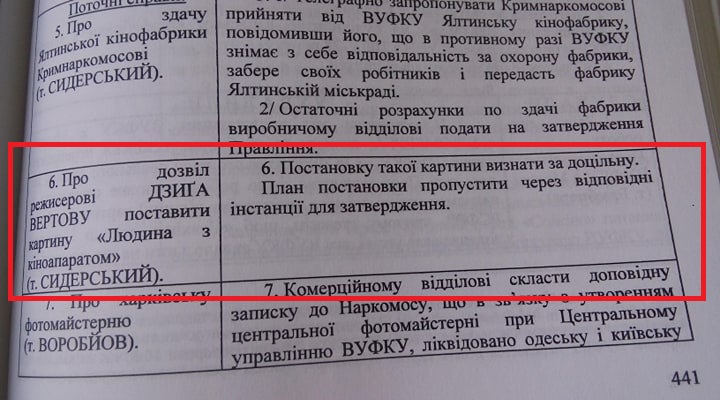
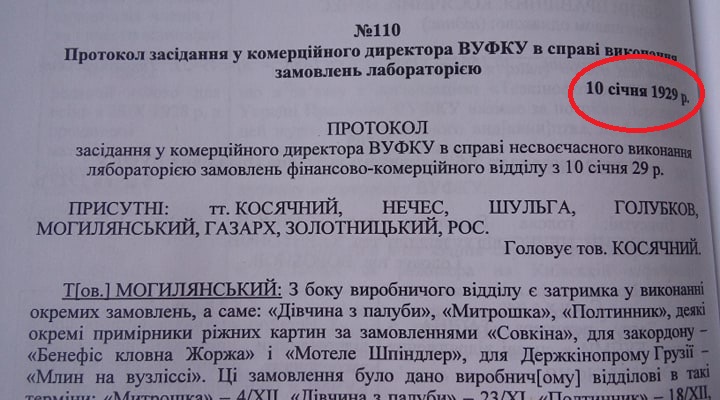
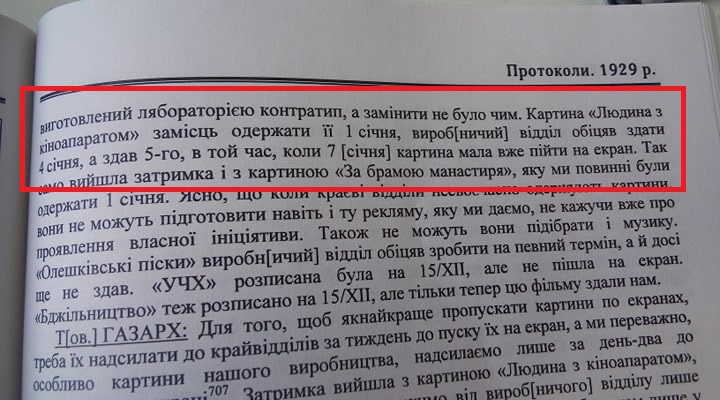
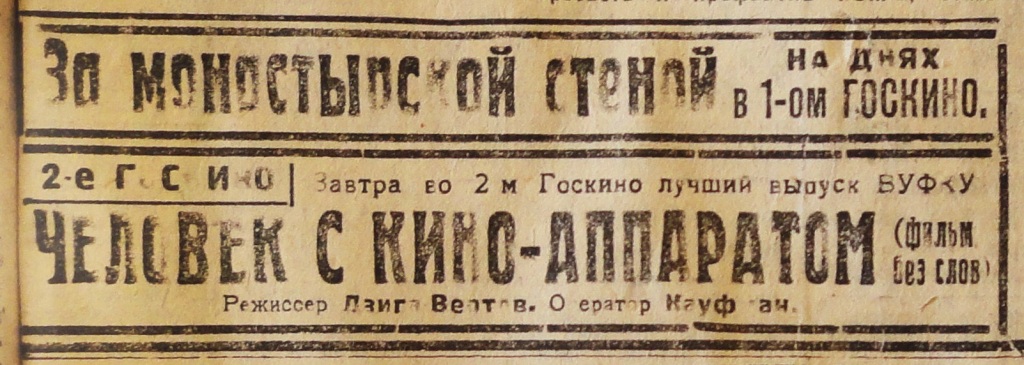
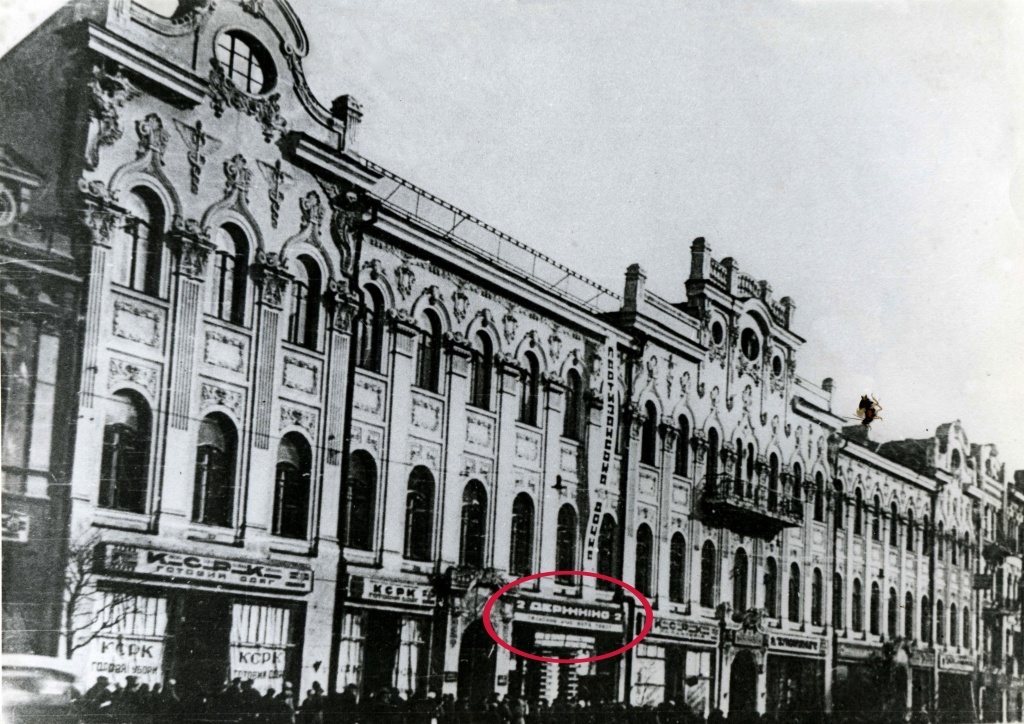
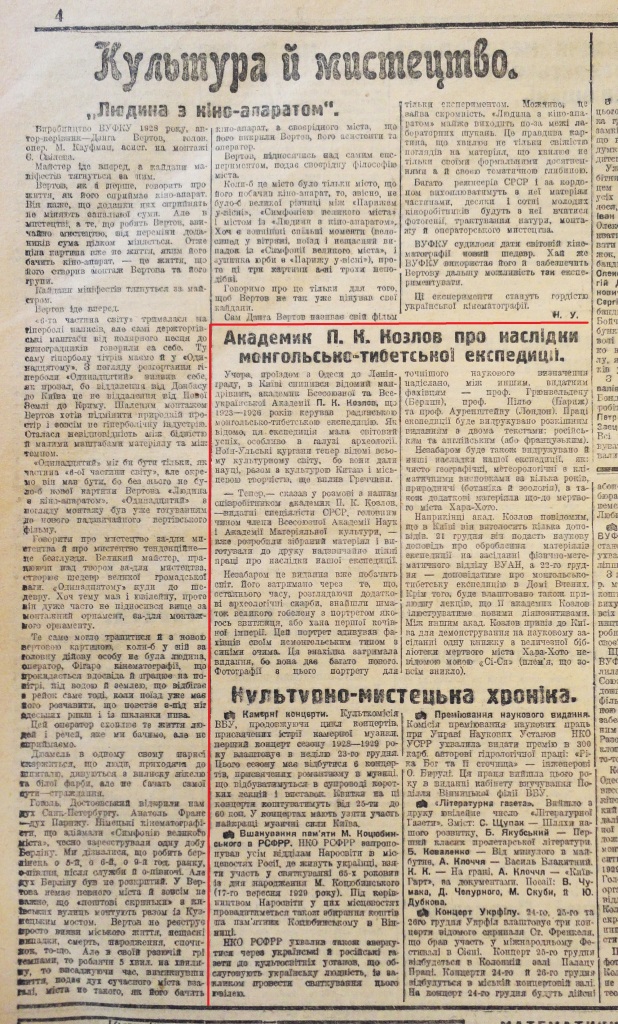
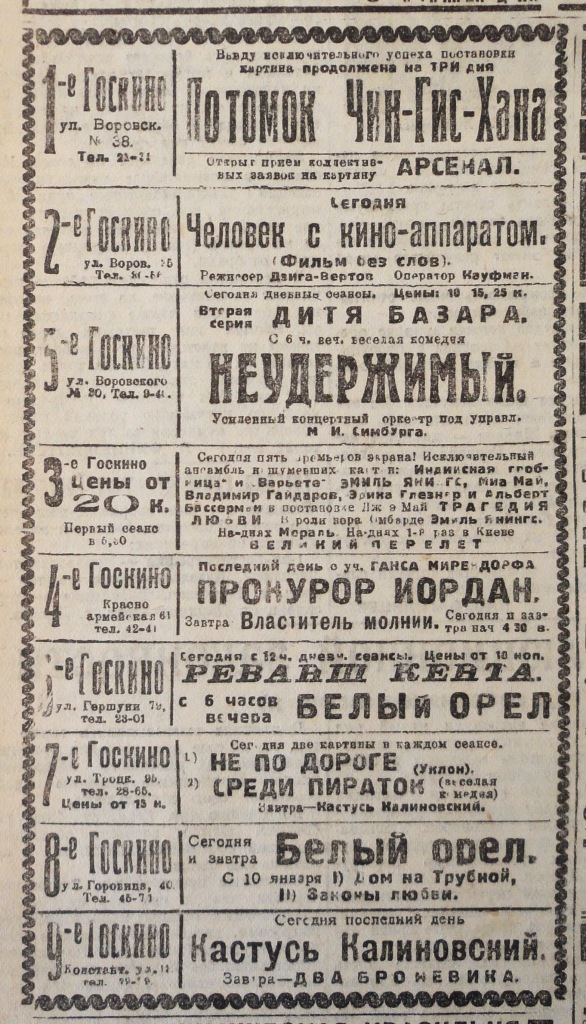
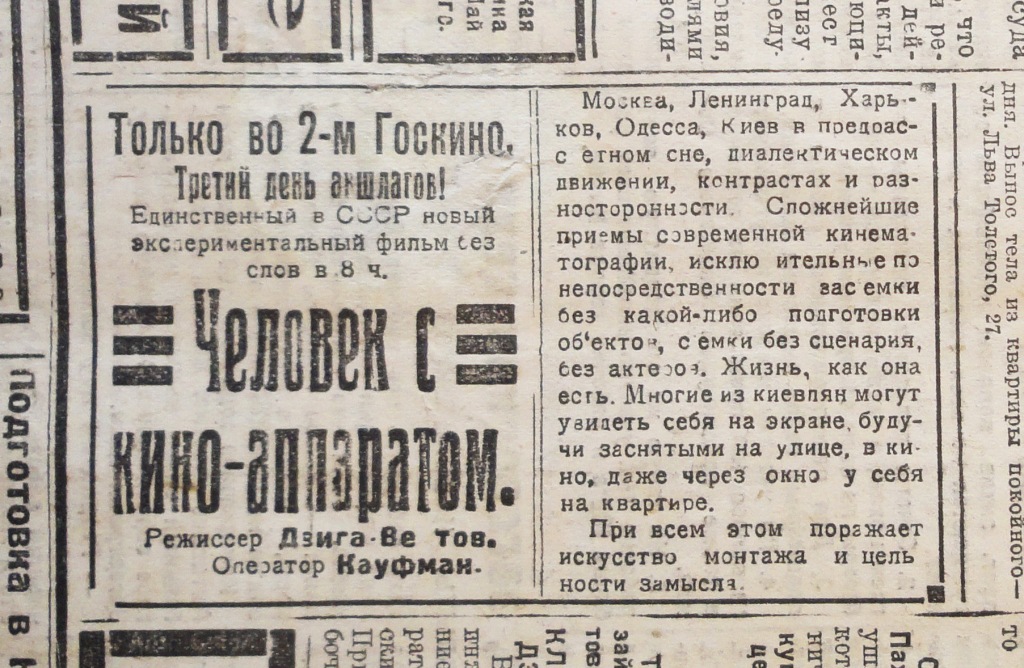
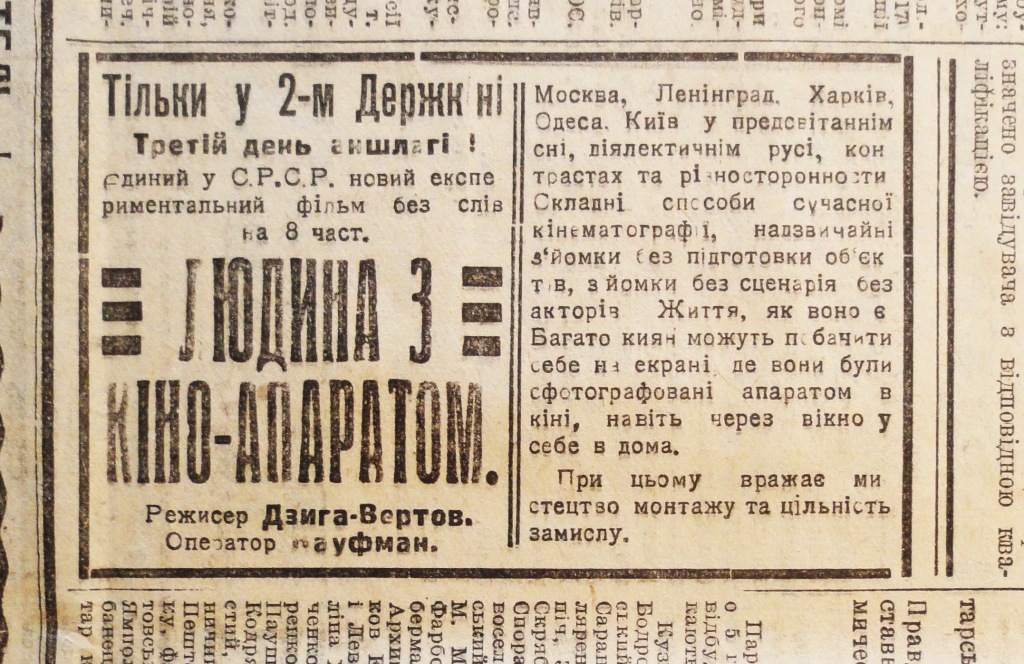
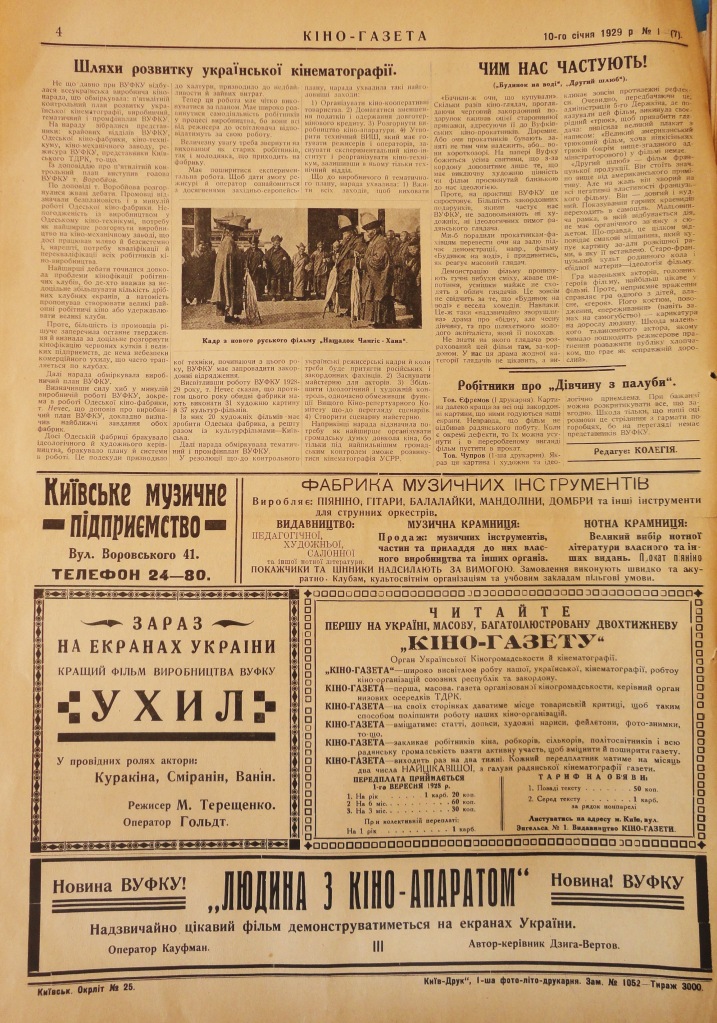
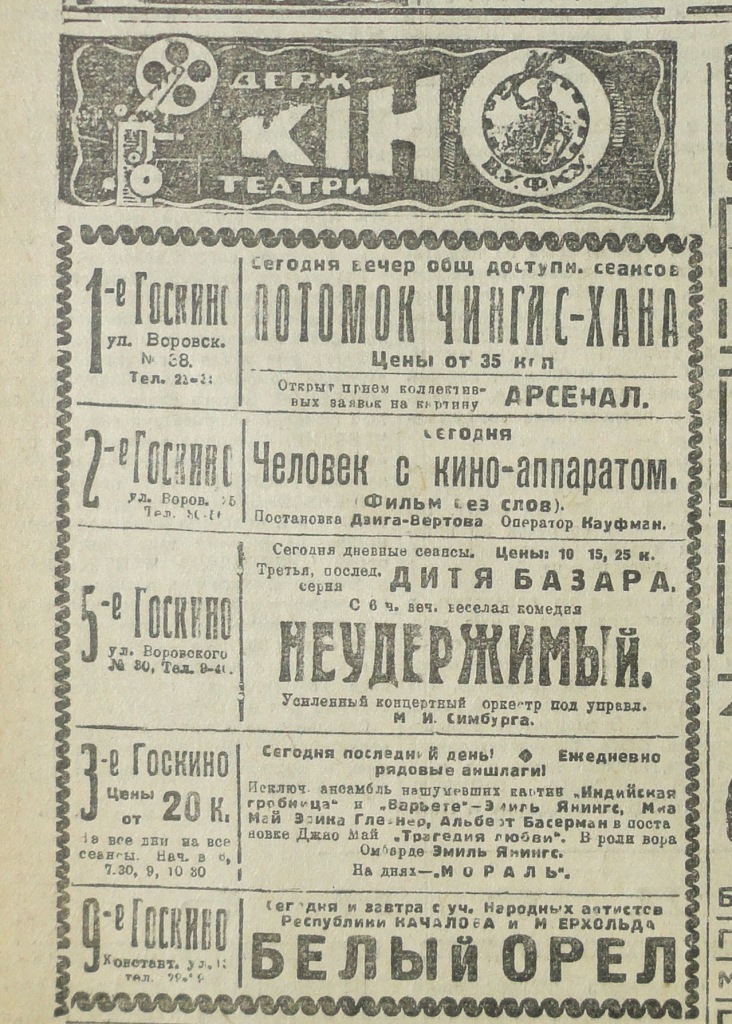
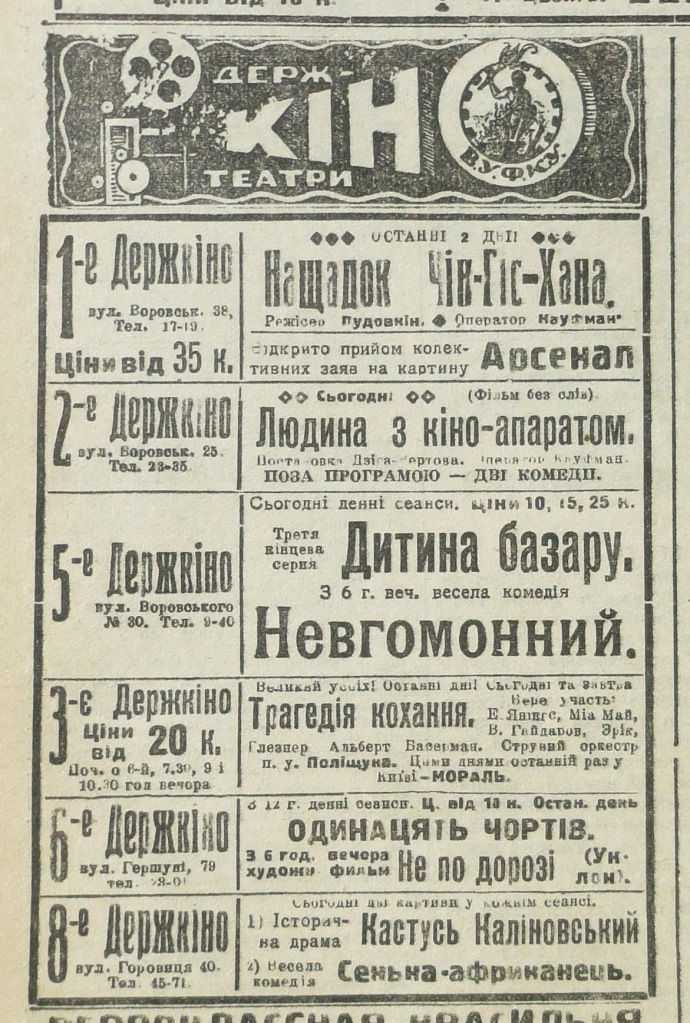
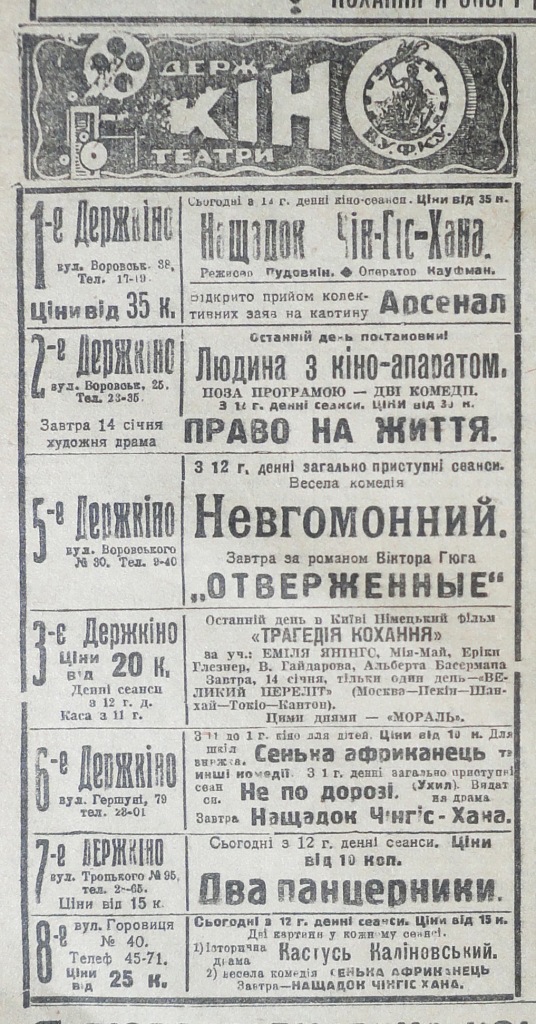

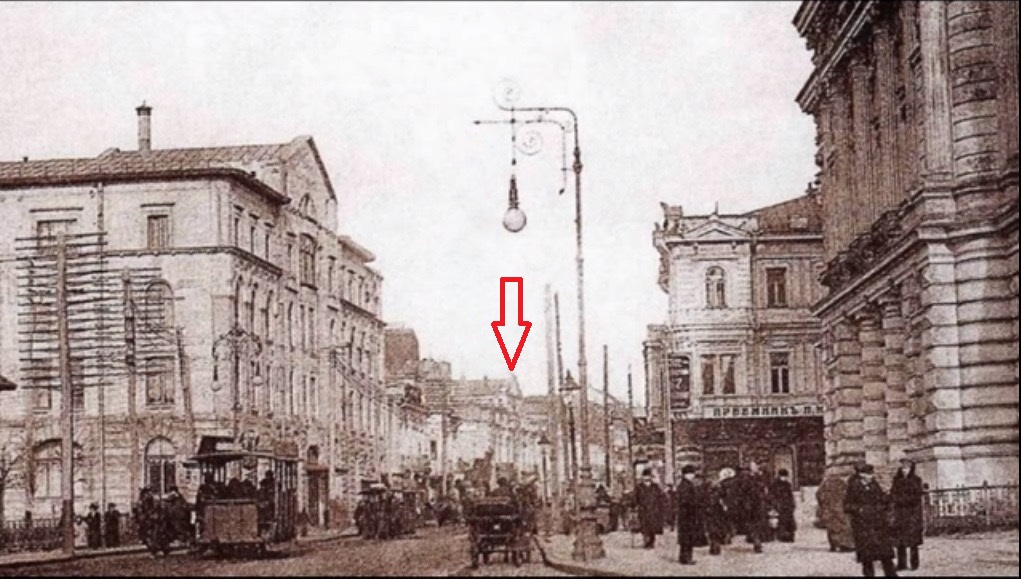
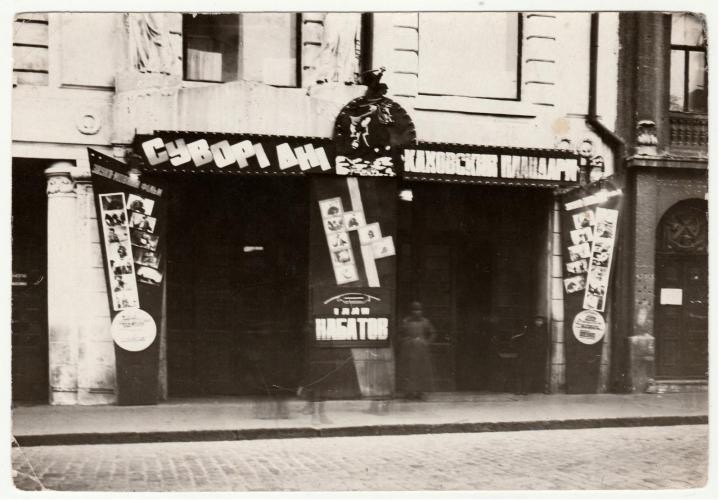
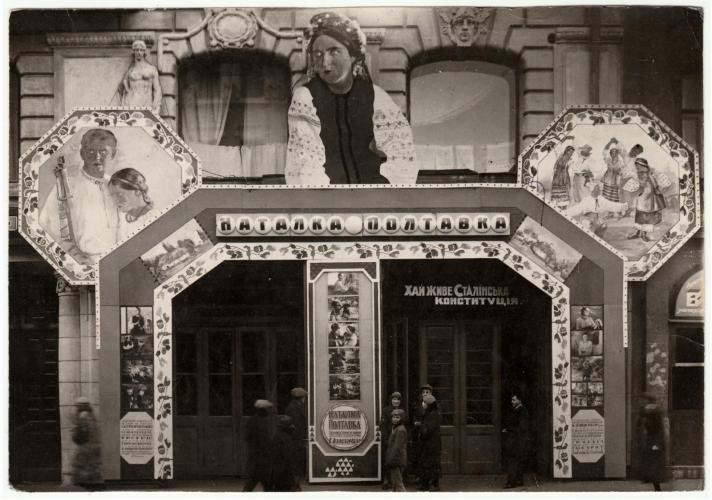


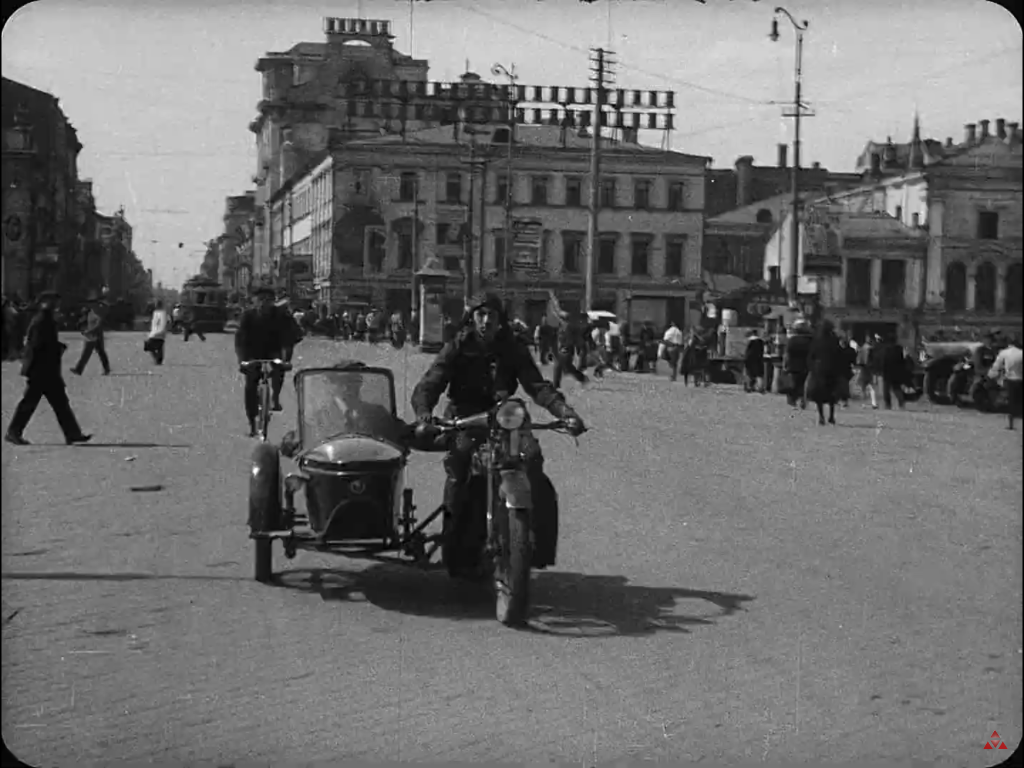
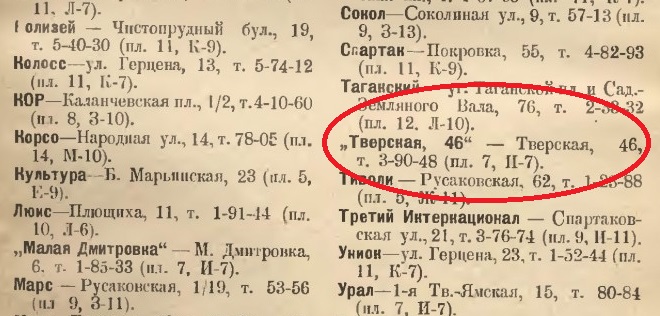

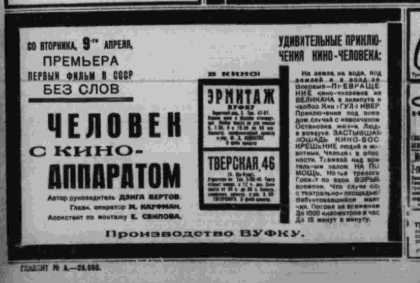
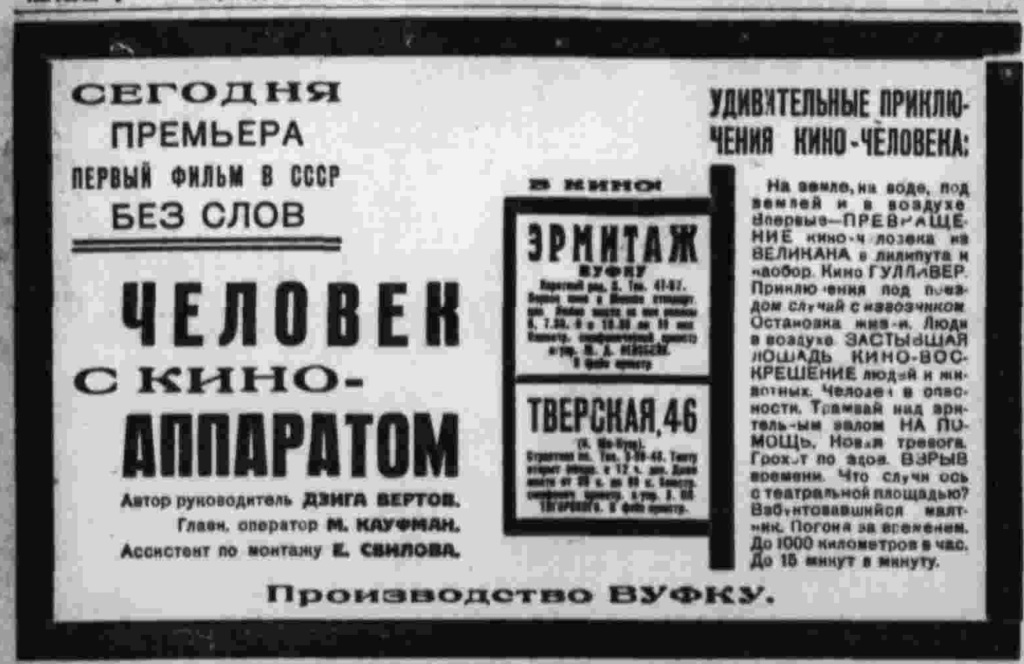

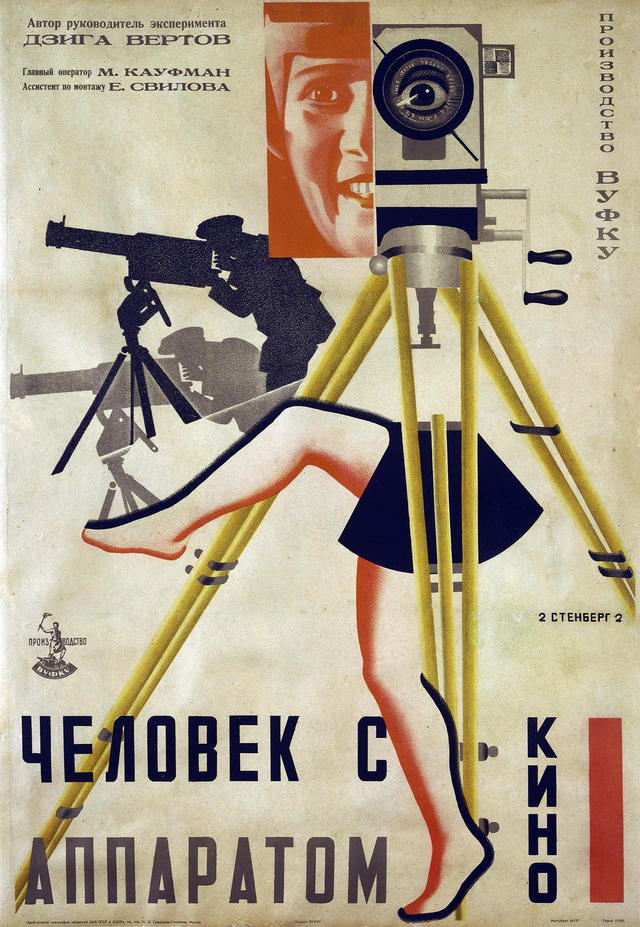
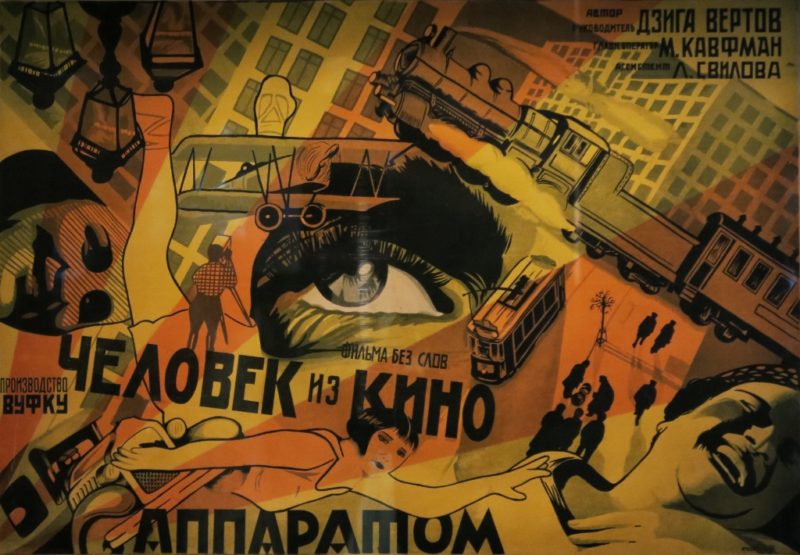
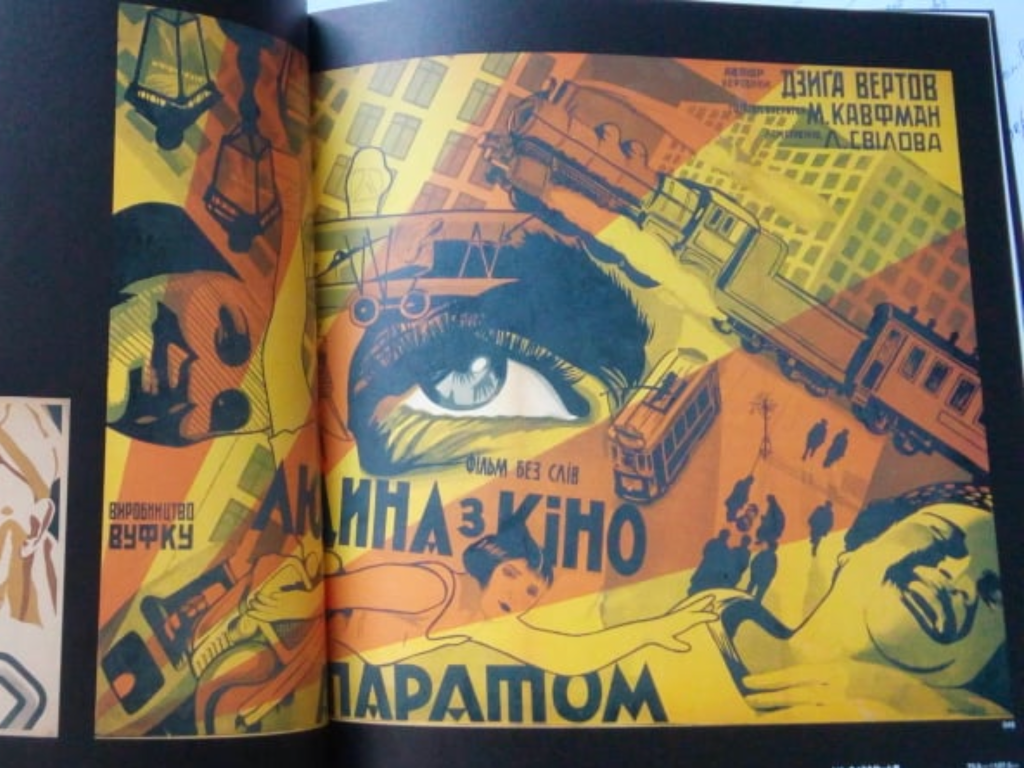
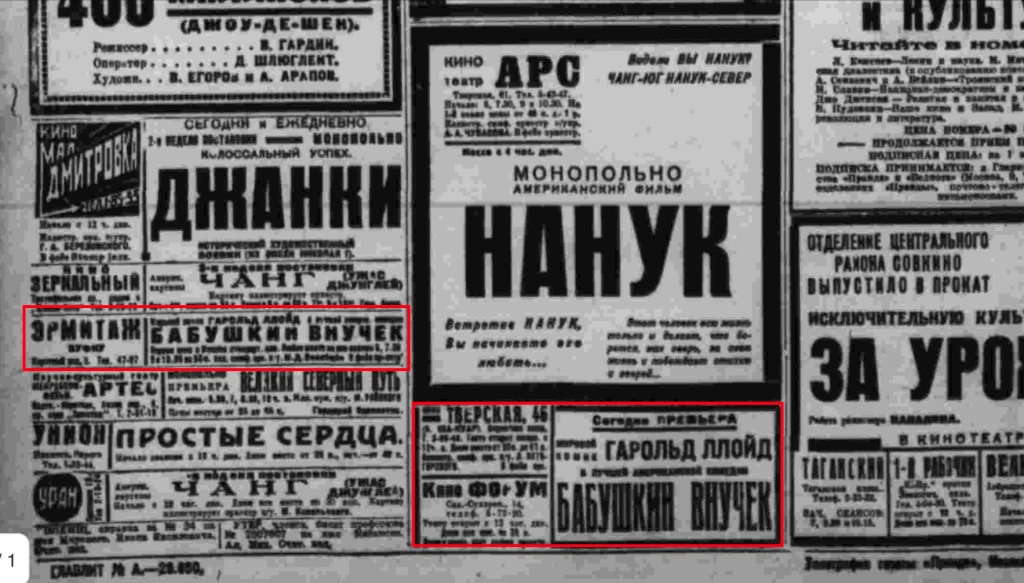
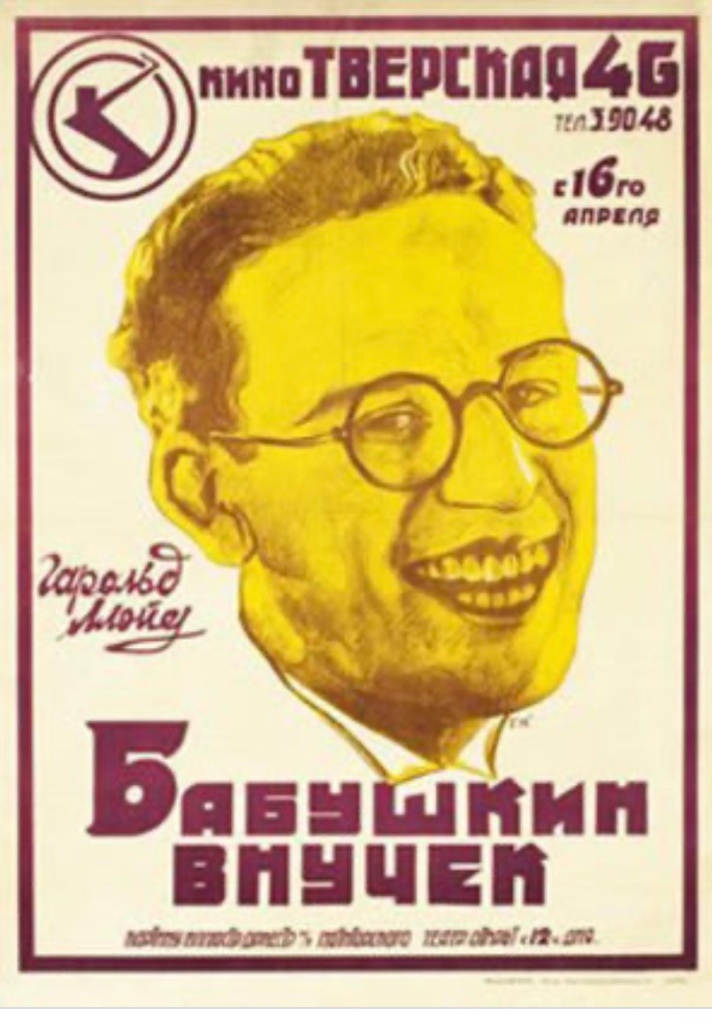
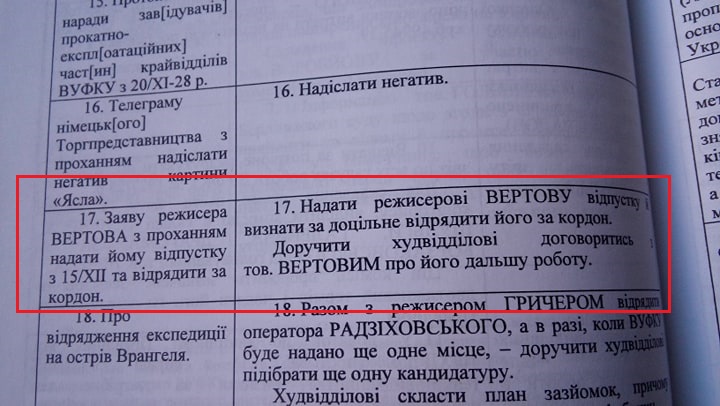
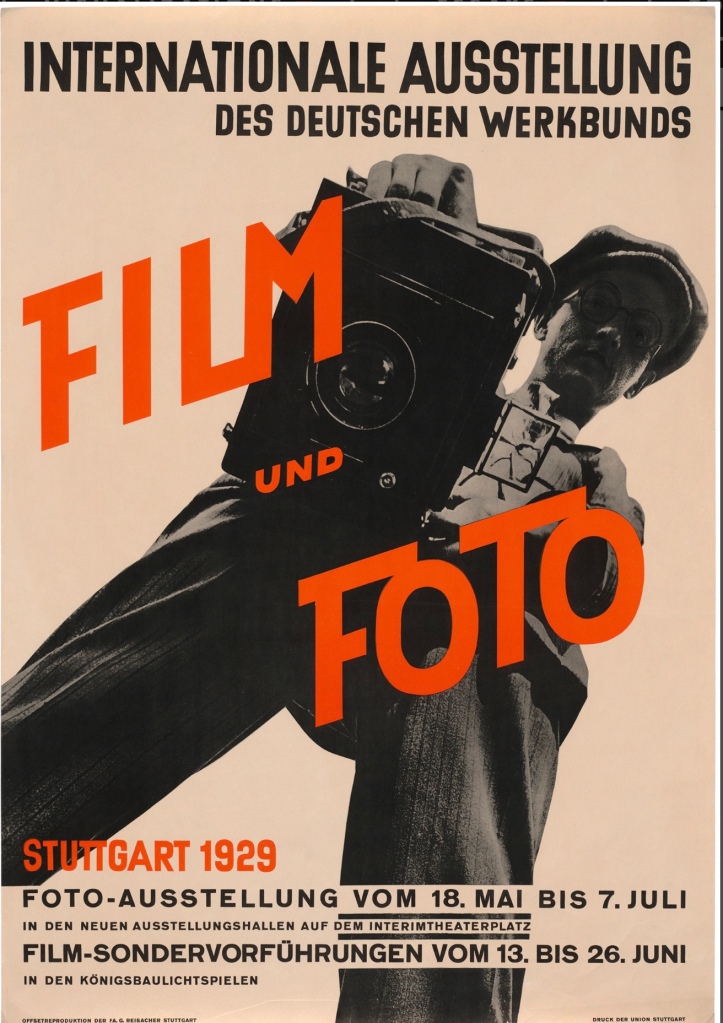
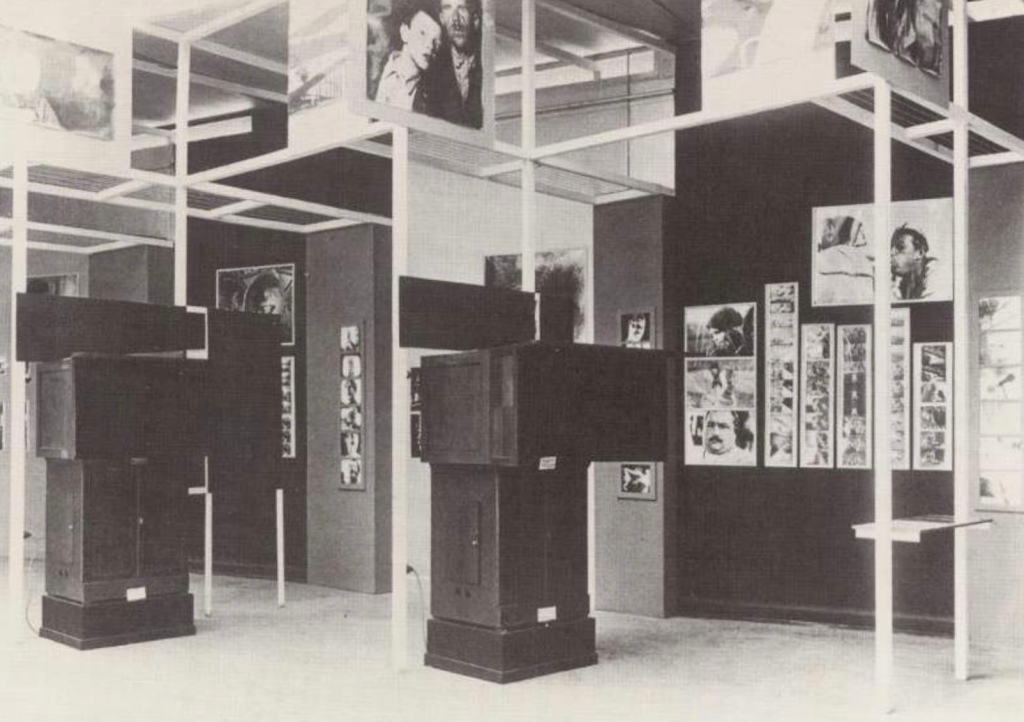

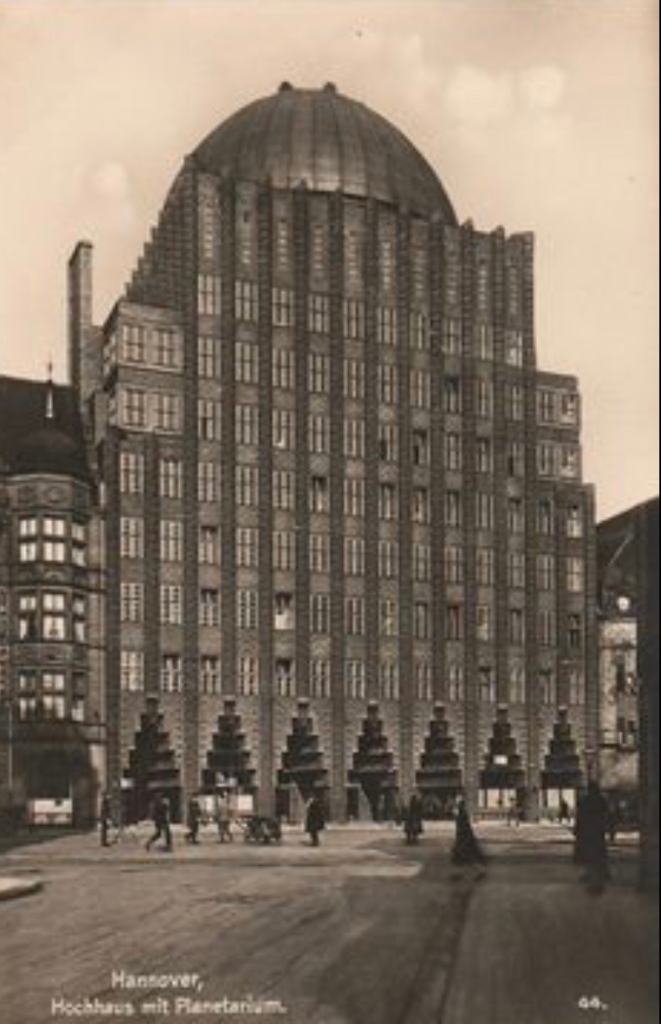

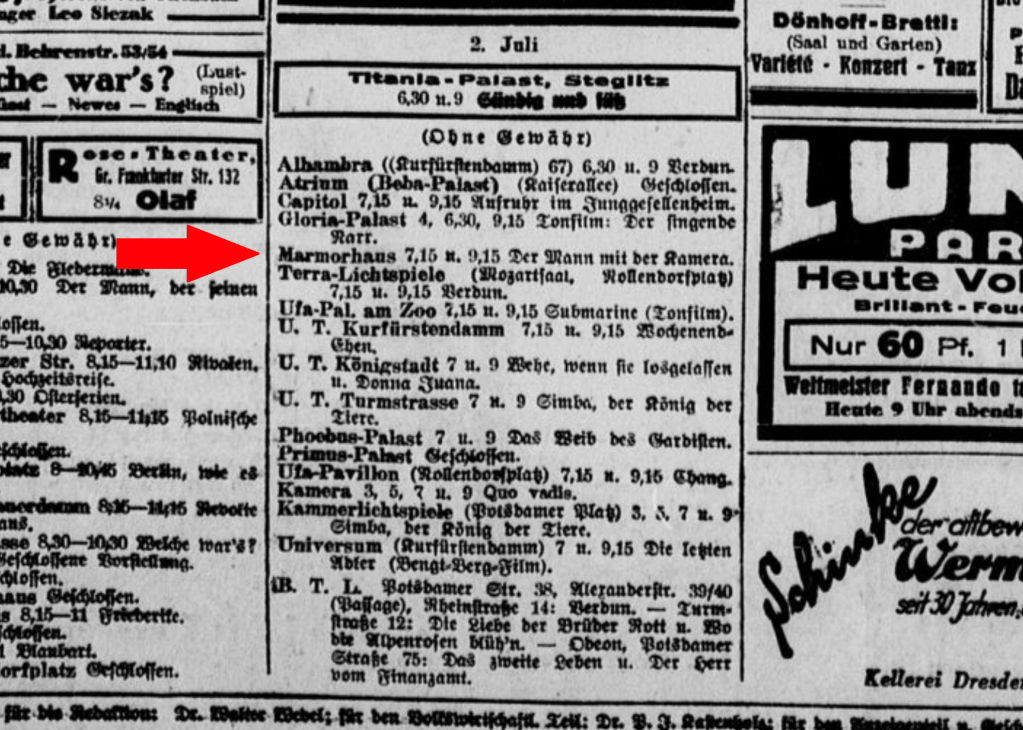
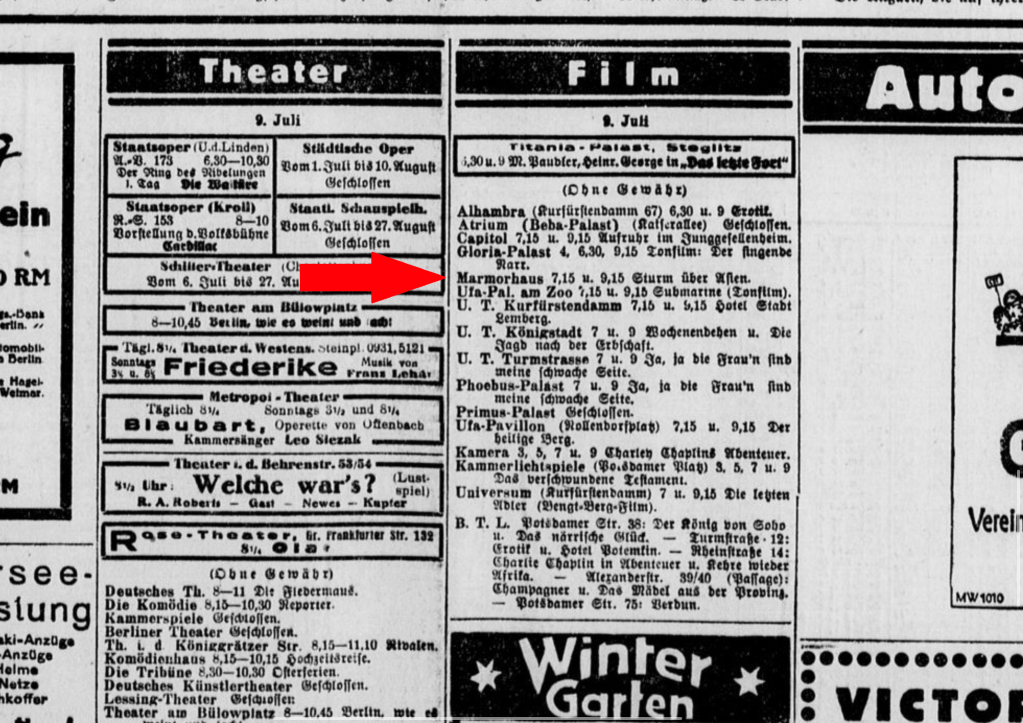
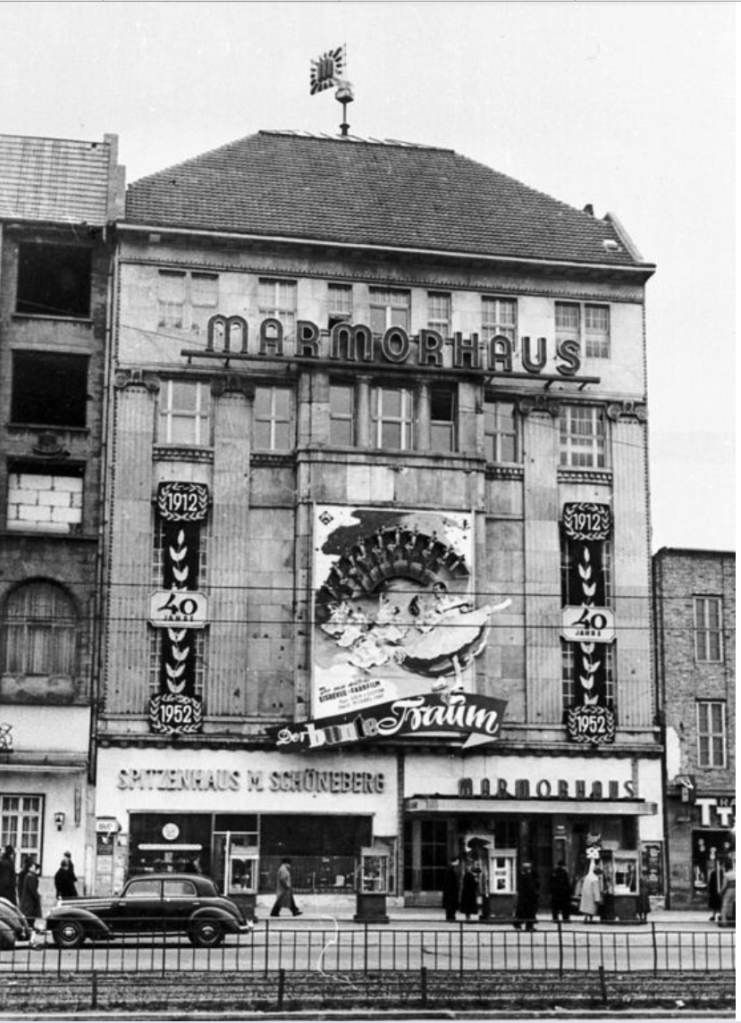
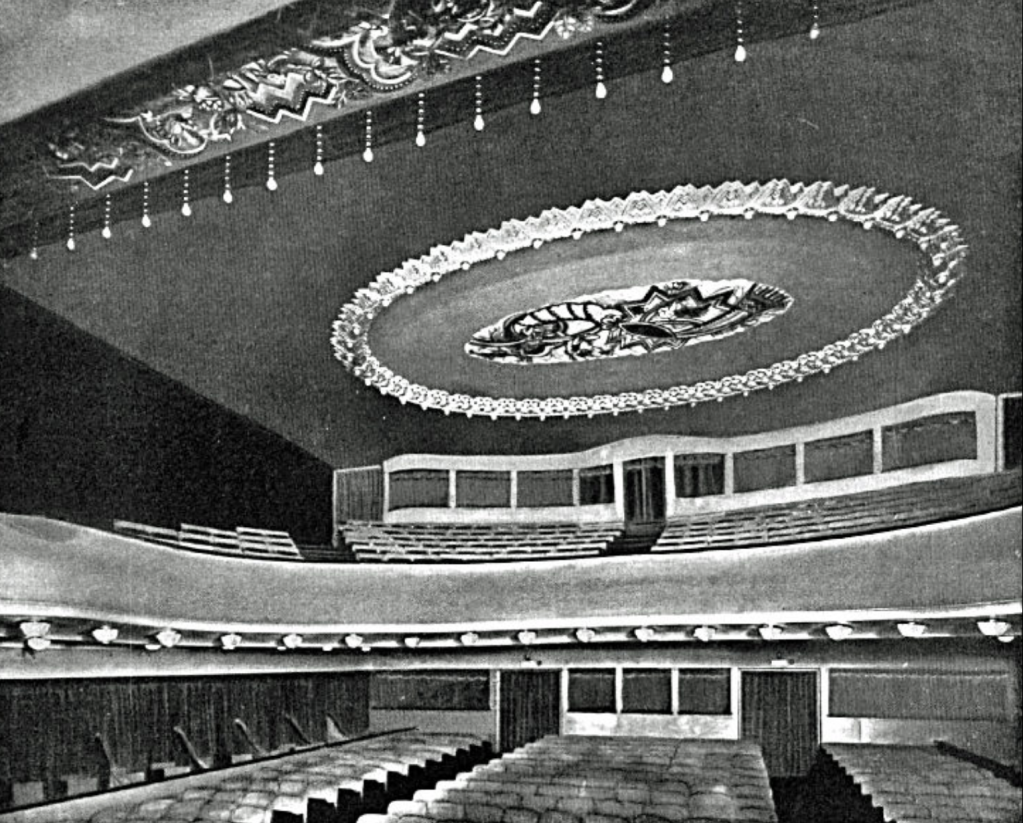
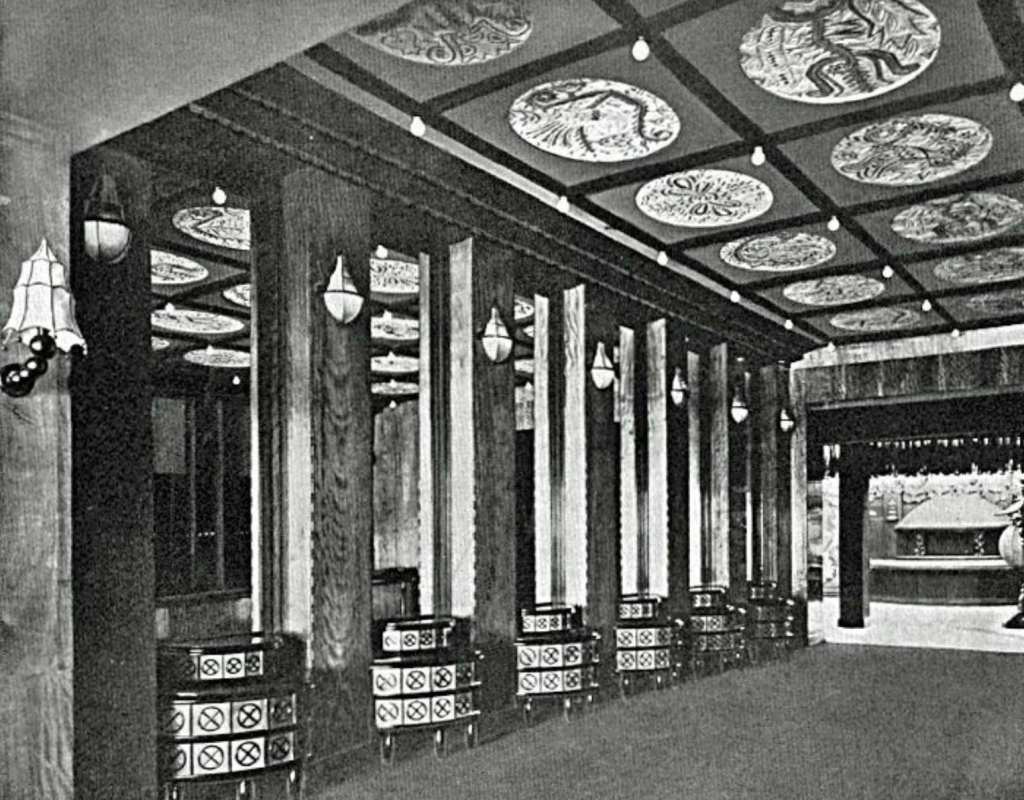
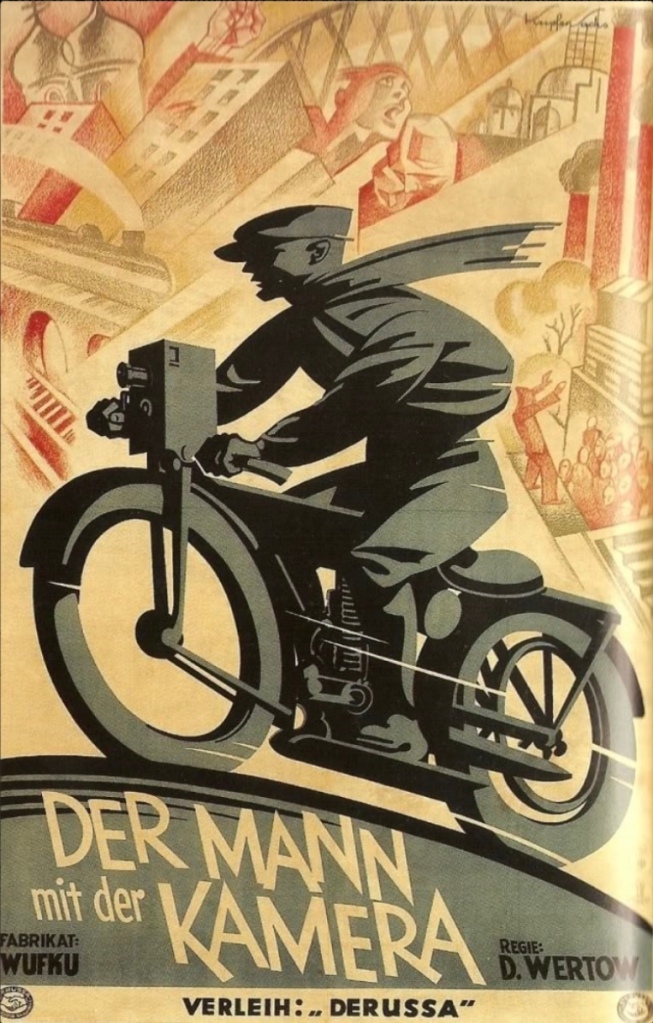
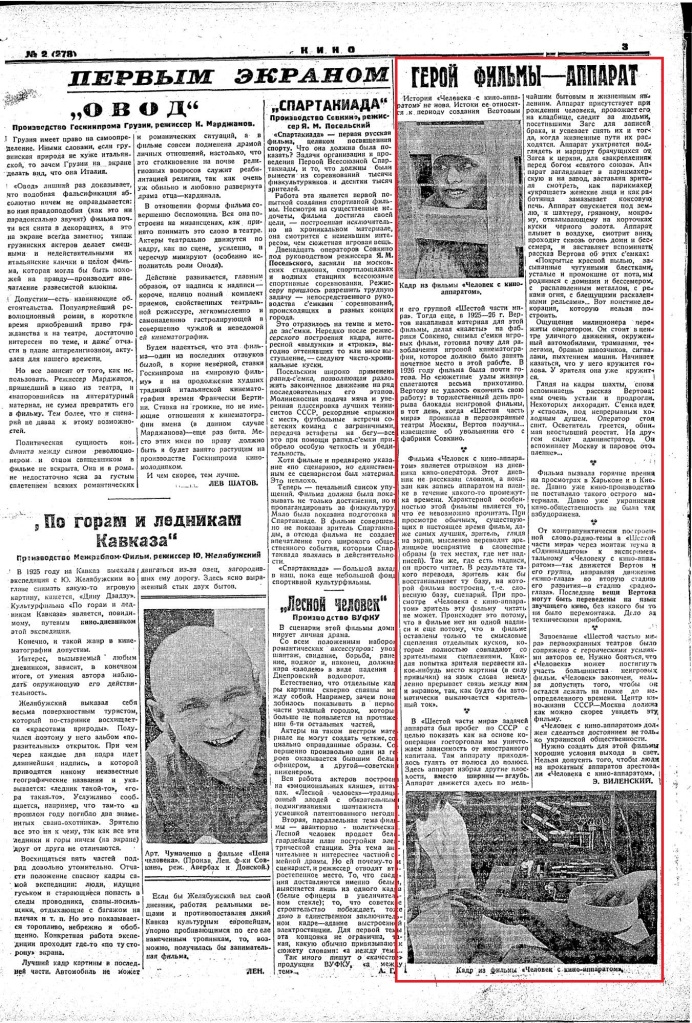
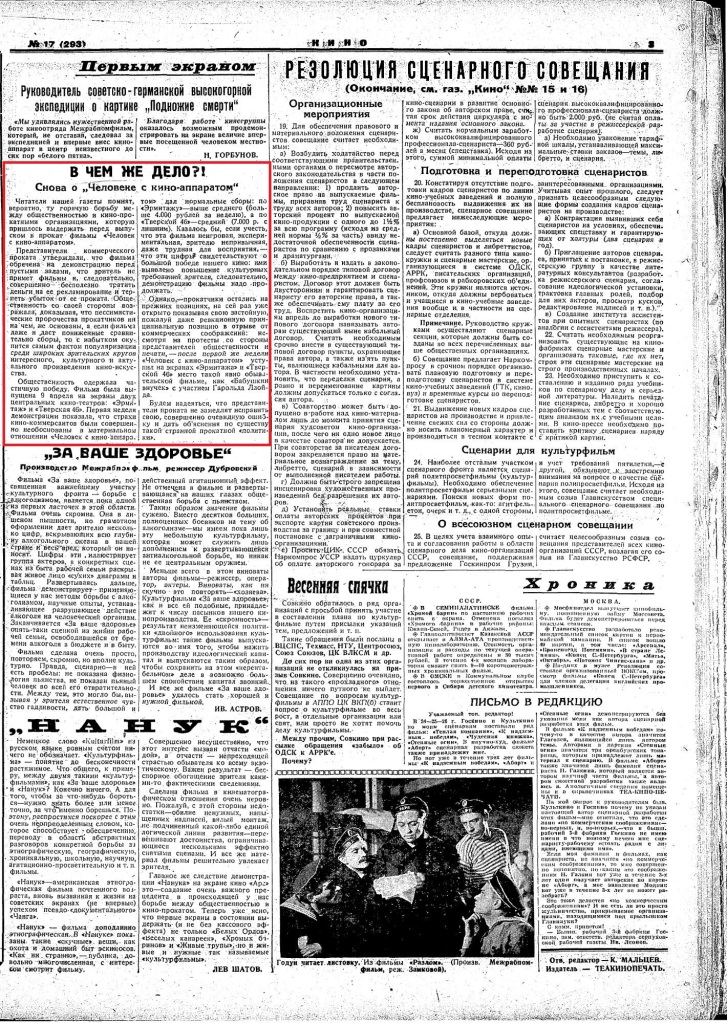
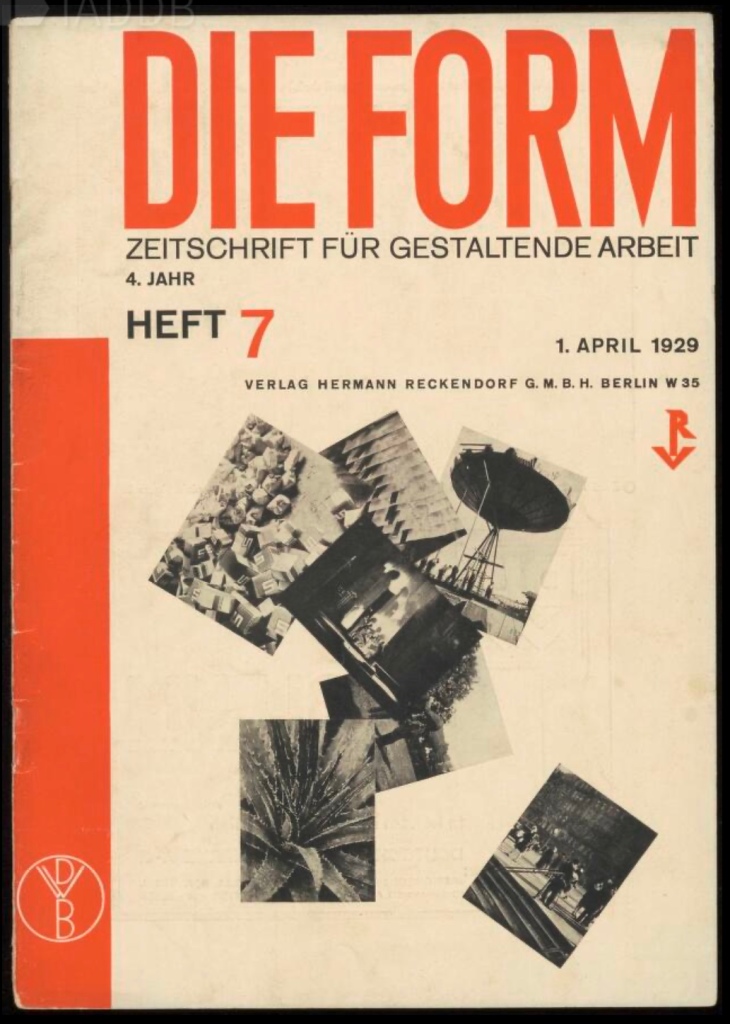
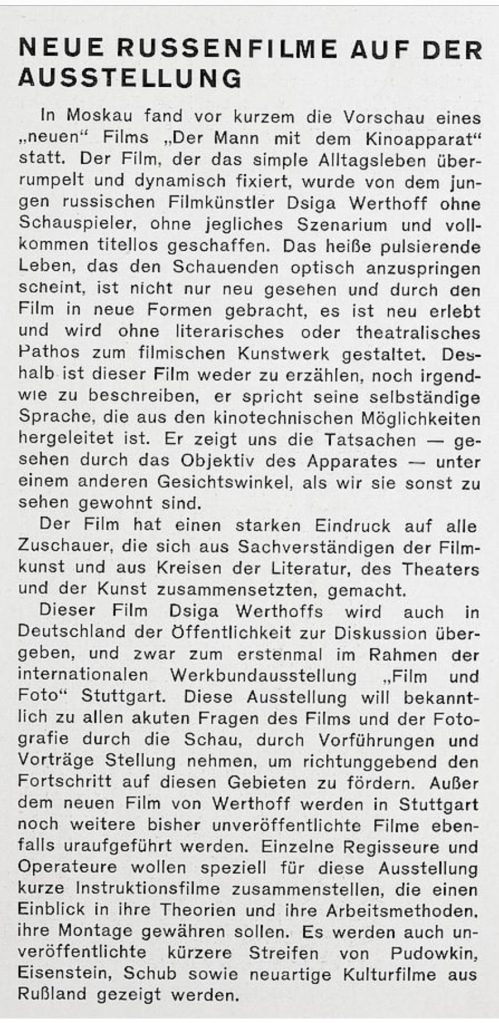

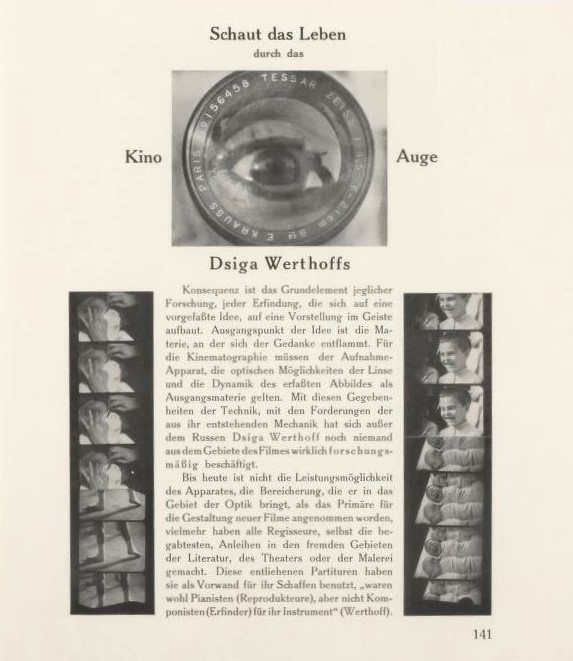
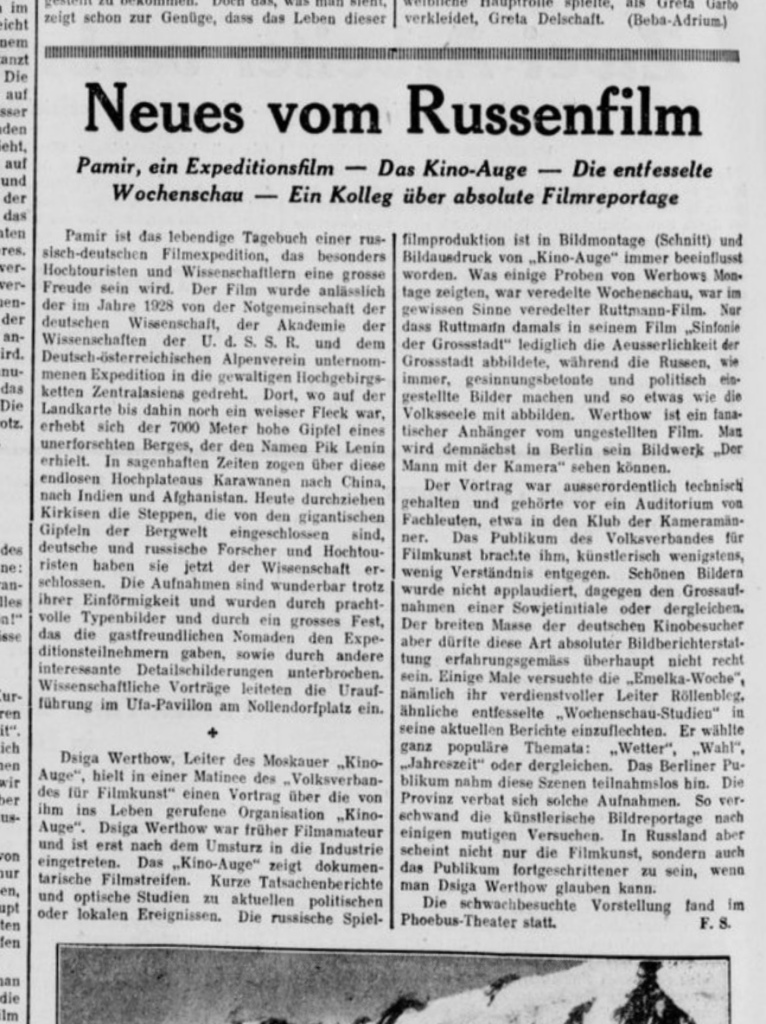
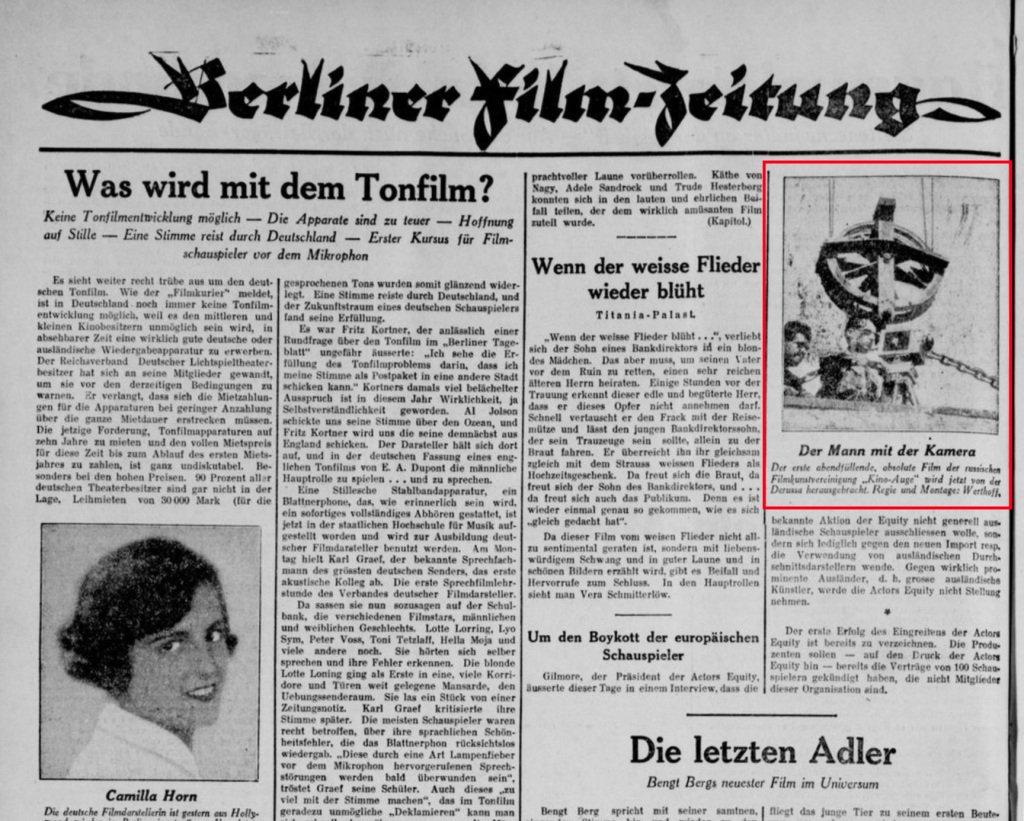
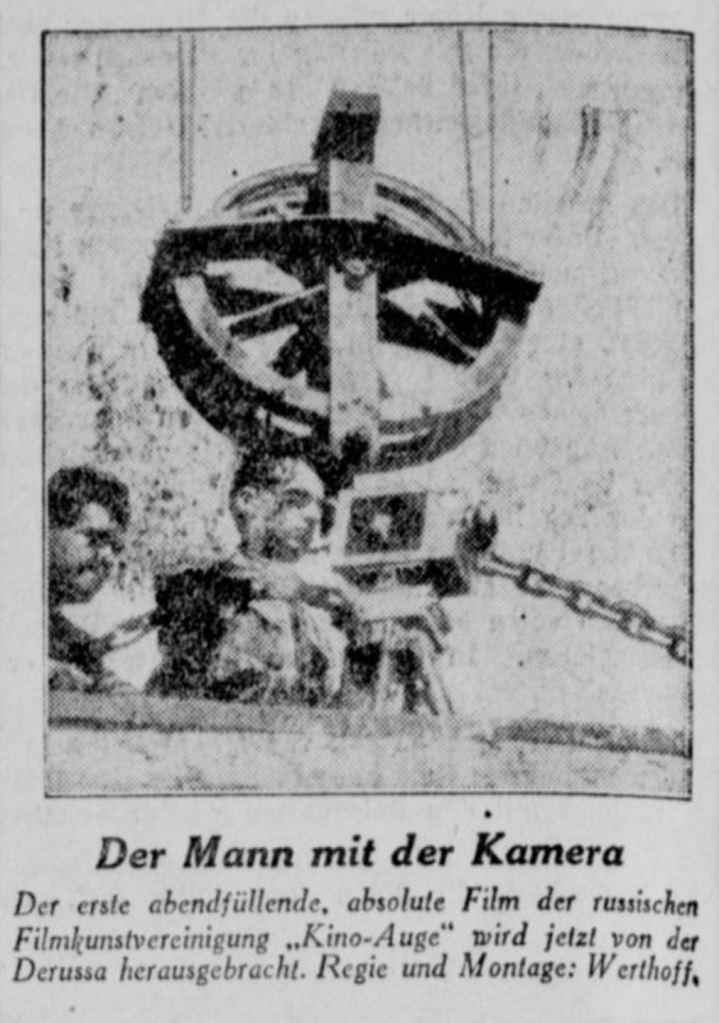
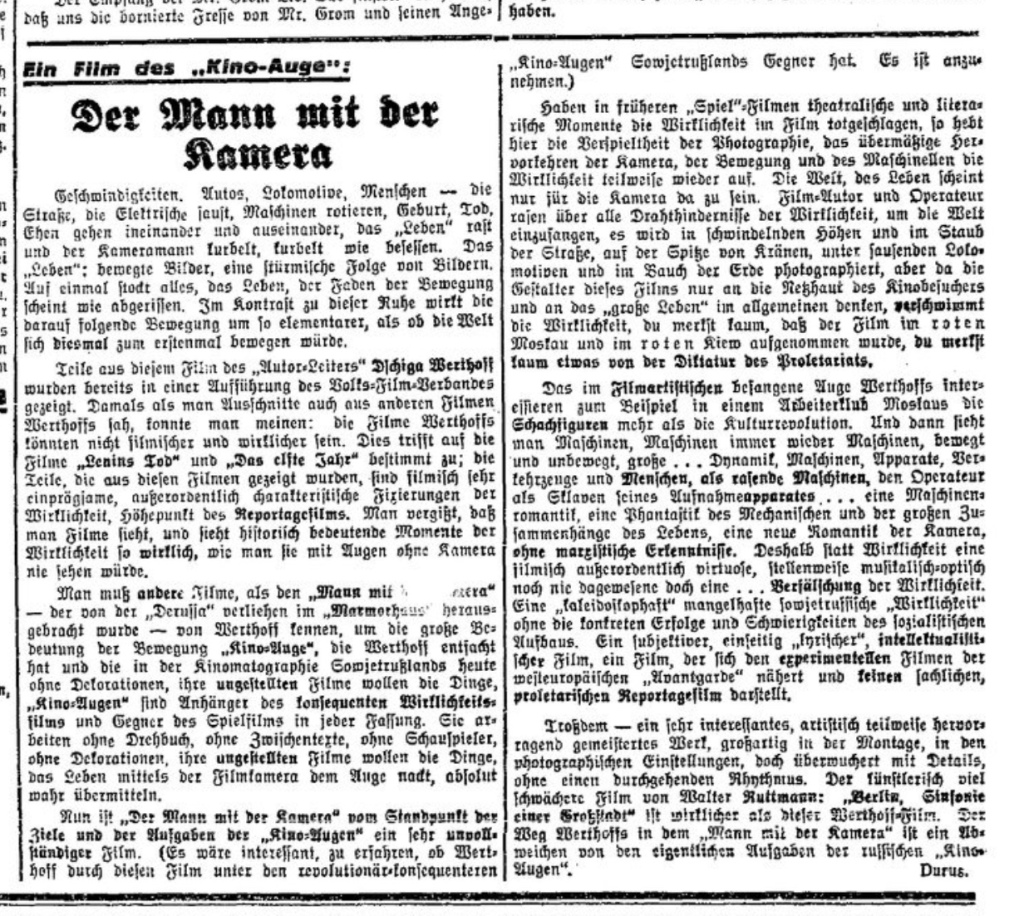


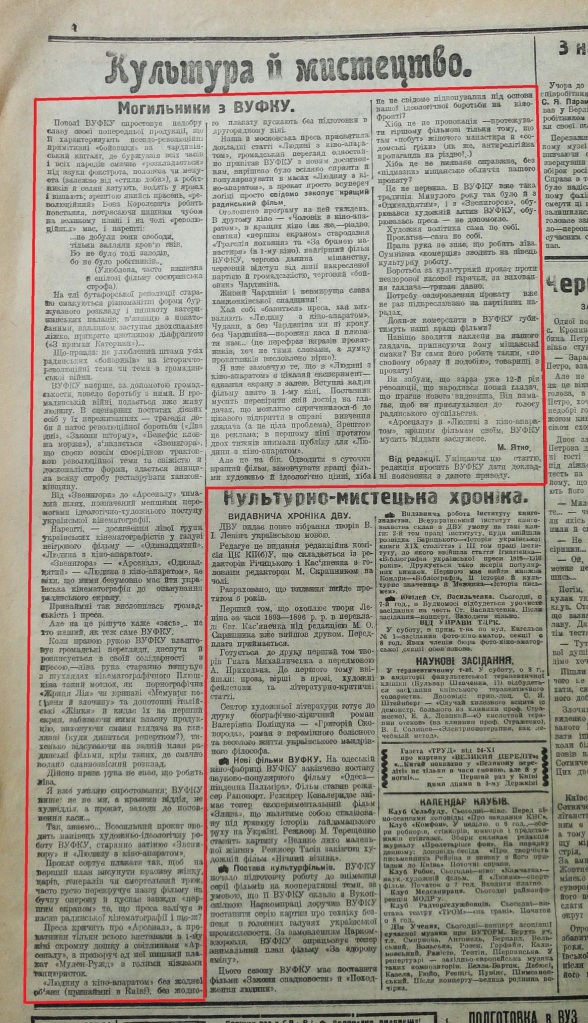
 Location map (see end of blog post for detailed maps of cities). Illustration to
Location map (see end of blog post for detailed maps of cities). Illustration to 
 The original mosaics at the top of this famous hotel, on the corner of Tverskaya and Mokhovaya Street opposite Red Square, are barely visible in the opening frames of Reel 1. They were replaced with the tractor, pylons, and chimneys of the Socialist realist images above when the hotel was restored in 1931. Designed by the architect Alexander Ivanov, the National opened in 1903; after the Revolution the hotel became the seat of the first Soviet government in 1918. Lenin, Trotsky, and Dzerzhinsky all lived in the National at this time. Still a luxury hotel, now owned by the
The original mosaics at the top of this famous hotel, on the corner of Tverskaya and Mokhovaya Street opposite Red Square, are barely visible in the opening frames of Reel 1. They were replaced with the tractor, pylons, and chimneys of the Socialist realist images above when the hotel was restored in 1931. Designed by the architect Alexander Ivanov, the National opened in 1903; after the Revolution the hotel became the seat of the first Soviet government in 1918. Lenin, Trotsky, and Dzerzhinsky all lived in the National at this time. Still a luxury hotel, now owned by the 

 [00:02:41] Goskino No. 1 Cinema (originally
[00:02:41] Goskino No. 1 Cinema (originally


 Note TS on chair =
Note TS on chair = The spectacular interior of the cinema is largely concealed in the film.
The spectacular interior of the cinema is largely concealed in the film. The balcony needed propping up later as there are two centre posts visible in the film!
The balcony needed propping up later as there are two centre posts visible in the film!
 Views of the Khreschatyk Street entrance to the courtyard of the Belle Vue Hotel where the cinema was located. This block and most of the rest of the street was destroyed in WW2.
Views of the Khreschatyk Street entrance to the courtyard of the Belle Vue Hotel where the cinema was located. This block and most of the rest of the street was destroyed in WW2.  Street plan showing the cinema behind Khreschatyk 38. The outline of the canopy in the photographs above, and the passage into the courtyard is shown. [M. Kalnytsky]
Street plan showing the cinema behind Khreschatyk 38. The outline of the canopy in the photographs above, and the passage into the courtyard is shown. [M. Kalnytsky] [Photograph: M Kalnytsky]
[Photograph: M Kalnytsky]


 [00:05:43] As above featuring a giant bottle advertisement. Surprisingly, I have not managed to locate any period photographs or postcards with this, presumably, well-known feature of the restaurant! Screenshot
[00:05:43] As above featuring a giant bottle advertisement. Surprisingly, I have not managed to locate any period photographs or postcards with this, presumably, well-known feature of the restaurant! Screenshot  A contemporary photograph of the restaurant – note the stone pillars visible in the screenshots, now painted white [photograph and restaurant information from Y. Volokin and
A contemporary photograph of the restaurant – note the stone pillars visible in the screenshots, now painted white [photograph and restaurant information from Y. Volokin and  The restaurant seen from a crowded Boulevard Steps; the distinctive stone pillars are clearly visible on the corners of the terrace [photograph from
The restaurant seen from a crowded Boulevard Steps; the distinctive stone pillars are clearly visible on the corners of the terrace [photograph from  Mid 19thC engraving of the recently completed (1841) Boulevard Steps and Primorskyi Boulevard gives a slightly exaggerated impression of how high the city stands above its harbour (the Steps rise nearly 30m with 192 steps). Previously the only way up was by winding paths and rickety wooden steps. A funicular railway was built up the slope in 1902.
Mid 19thC engraving of the recently completed (1841) Boulevard Steps and Primorskyi Boulevard gives a slightly exaggerated impression of how high the city stands above its harbour (the Steps rise nearly 30m with 192 steps). Previously the only way up was by winding paths and rickety wooden steps. A funicular railway was built up the slope in 1902. Top of the
Top of the [00:05:53] Rubbish bin, Kyiv. The brand new bin (chained to a post) has an exhortation by the Kyiv City authorities: ‘Citizens – Preserve Cleanliness!’ (compare and contrast the rather tatty bins provided by its Moscow counterpart! [00:06:45])
[00:05:53] Rubbish bin, Kyiv. The brand new bin (chained to a post) has an exhortation by the Kyiv City authorities: ‘Citizens – Preserve Cleanliness!’ (compare and contrast the rather tatty bins provided by its Moscow counterpart! [00:06:45]) [00:06:00] Bakhmetevsky Bus Garage, Obraztsova Street, Moscow.
[00:06:00] Bakhmetevsky Bus Garage, Obraztsova Street, Moscow. A contemporary view of the garage.
A contemporary view of the garage. Current view after restoration and conversion into The Garage Center for Contemporary Culture.
Current view after restoration and conversion into The Garage Center for Contemporary Culture. Diagrammatic plan of the garage (Wikipedia)
Diagrammatic plan of the garage (Wikipedia) [00:06:08] Shop front fascia with sign reading
[00:06:08] Shop front fascia with sign reading 

 [00:06:12] Novo-Sukharevsky Market (1926-1930), North Moscow.
[00:06:12] Novo-Sukharevsky Market (1926-1930), North Moscow.
 Contemporary aerial views of the interesting roof design of the market.
Contemporary aerial views of the interesting roof design of the market.  The Market office building – the only surviving structure (to be restored).
The Market office building – the only surviving structure (to be restored). [00:06:34] At first glance this looks like a park overlooking the sea, and therefore in Odesa. However, the sea does not look like this from the high viewpoint of the city parks [00:09:54] [00:55:41], and Yevgeny Volokin confirmed that it is not in Odesa. I believe it to be a park or square in Moscow because the letters MK can just be seen on some of the distinctive rubbish bins of this era between the benches. MK stands for “Московский коммунальщик” (Moscow Communal Services) and the same initials are seen more clearly on the bin in screenshot [00:06:45]. What appears to be the sea is more likely a large area of cobbles (see [00:15:10] for a similar texture). There are also possible tram lines top right. There are no other obvious clues, and the landscaping is rather nondescript so I can’t find the exact location in Moscow.
[00:06:34] At first glance this looks like a park overlooking the sea, and therefore in Odesa. However, the sea does not look like this from the high viewpoint of the city parks [00:09:54] [00:55:41], and Yevgeny Volokin confirmed that it is not in Odesa. I believe it to be a park or square in Moscow because the letters MK can just be seen on some of the distinctive rubbish bins of this era between the benches. MK stands for “Московский коммунальщик” (Moscow Communal Services) and the same initials are seen more clearly on the bin in screenshot [00:06:45]. What appears to be the sea is more likely a large area of cobbles (see [00:15:10] for a similar texture). There are also possible tram lines top right. There are no other obvious clues, and the landscaping is rather nondescript so I can’t find the exact location in Moscow.

 [00:06:40] Bolshoi Theatre, Theatre Square, Moscow. Advertisement for BORJOMI mineral water from Georgia (still being produced). See above for details of rubbish bin.
[00:06:40] Bolshoi Theatre, Theatre Square, Moscow. Advertisement for BORJOMI mineral water from Georgia (still being produced). See above for details of rubbish bin. [00:06:45] Park bench with MK rubbish bin, Moscow (see above for details). Exact location not found. The bench design differs slightly from that in Strastnaya Square (see [00:14:30] and [00:14:39]).
[00:06:45] Park bench with MK rubbish bin, Moscow (see above for details). Exact location not found. The bench design differs slightly from that in Strastnaya Square (see [00:14:30] and [00:14:39]). [00:06:48] Bolshoi Theatre.
[00:06:48] Bolshoi Theatre. 19thC postcard of the theatre.
19thC postcard of the theatre. Current view [Google Earth].
Current view [Google Earth].
 Mykhailo Kalnytsky suggests that the camera would have been located on the summer restaurant terrace on the top of the ‘Red Kiev’ Hotel (formerly Prague Hotel) at Volodymyrska 36.
Mykhailo Kalnytsky suggests that the camera would have been located on the summer restaurant terrace on the top of the ‘Red Kiev’ Hotel (formerly Prague Hotel) at Volodymyrska 36. Another view of the hotel and roof terrace looking towards Sofiys’ka Square, showing why it was the likely high level location for the camera. St Sophia’s Cathedral bell tower in the background. [
Another view of the hotel and roof terrace looking towards Sofiys’ka Square, showing why it was the likely high level location for the camera. St Sophia’s Cathedral bell tower in the background. [ Mr Kalnytsky has also provided a postcard from c1913 with the view from the terrace for comparison. Note the second roof on the lhs which is also seen in the screenshot.
Mr Kalnytsky has also provided a postcard from c1913 with the view from the terrace for comparison. Note the second roof on the lhs which is also seen in the screenshot. The hotel is quite far away from the square but the 15cm Krauss Zeiss telephoto lens would probably have been used (see [00:55:59] for the view with the 21cm telephoto lens). See my
The hotel is quite far away from the square but the 15cm Krauss Zeiss telephoto lens would probably have been used (see [00:55:59] for the view with the 21cm telephoto lens). See my  [00:07:11] Large apartment block, Kyiv. Rear of building on Yaroslaviv Val (off Volodymyrska Street). Mykhailo Kalnytsky suggests that this shot was also taken from the roof terrace of the Red Kiev Hotel, in a SW direction.
[00:07:11] Large apartment block, Kyiv. Rear of building on Yaroslaviv Val (off Volodymyrska Street). Mykhailo Kalnytsky suggests that this shot was also taken from the roof terrace of the Red Kiev Hotel, in a SW direction.

 [00:07:46] The first of many scenes on Kuznetsky Most in central Moscow. The poster is advertising an anniversary (presumably the 60th as he was born in 1868) collection of Maxim Gorky’s works available from the state publishing house Gosizdat.
[00:07:46] The first of many scenes on Kuznetsky Most in central Moscow. The poster is advertising an anniversary (presumably the 60th as he was born in 1868) collection of Maxim Gorky’s works available from the state publishing house Gosizdat. A similar view of the street from the early 1930s with a luxury Lincoln Model K parked next to the building under the banner above. No doubt a top ranking official going shopping!
A similar view of the street from the early 1930s with a luxury Lincoln Model K parked next to the building under the banner above. No doubt a top ranking official going shopping! Late 19th Century postcard of the street looking towards the same junction (all the buildings in the background are recognisable in the screenshot).
Late 19th Century postcard of the street looking towards the same junction (all the buildings in the background are recognisable in the screenshot). Current appearance of the street from a similar viewpoint as the screenshot. The buildings on the left have survived, and the large one on the rhs. [Google Earth]
Current appearance of the street from a similar viewpoint as the screenshot. The buildings on the left have survived, and the large one on the rhs. [Google Earth] [00:08:04] Izvestia newspaper building, St
[00:08:04] Izvestia newspaper building, St 1950s view of building (after the demolition of Strastnoy Monastery).
1950s view of building (after the demolition of Strastnoy Monastery). Architect’s perspective view (courtesy of
Architect’s perspective view (courtesy of  Contemporary aerial view of Strastnaya Square. The Izvestia building is on the right opposite
Contemporary aerial view of Strastnaya Square. The Izvestia building is on the right opposite  Contemporary view over Strastnaya Square with the new Izvestia building behind the Strastnoy Monastery tower. Pushkin’s statue is at the bottom left. The dome of St. Demetrius Church in the foreground.
Contemporary view over Strastnaya Square with the new Izvestia building behind the Strastnoy Monastery tower. Pushkin’s statue is at the bottom left. The dome of St. Demetrius Church in the foreground. Early 1900s view of the huge monastery. There is a current
Early 1900s view of the huge monastery. There is a current  [00:08:12] View of steelworks, Kamianske (or Donbas)*.
[00:08:12] View of steelworks, Kamianske (or Donbas)*. [00:08:30] View of blast furnace Cowper stove
[00:08:30] View of blast furnace Cowper stove [00:08:46] [00:09:00] View of a glass entrance door from a building interior. This door appears on several occasions in the film ([00:30:27 on] and during the final sequence at the end) and the available evidence suggests it is the main courtyard entrance to the 1912 Ginzburg Skyscraper. There are few detailed photographs of this building (destroyed in 1941), but it appears that there was a door each side of the entrance from the street (as seen in [00:09:18]) and the larger arched door in the West wing that we think is seen in the film, circled below. What appears to be the outline of the low fence around the central landscaped area below can just be made out through the glass. Without a clear exterior photograph of the doors this cannot be verified.
[00:08:46] [00:09:00] View of a glass entrance door from a building interior. This door appears on several occasions in the film ([00:30:27 on] and during the final sequence at the end) and the available evidence suggests it is the main courtyard entrance to the 1912 Ginzburg Skyscraper. There are few detailed photographs of this building (destroyed in 1941), but it appears that there was a door each side of the entrance from the street (as seen in [00:09:18]) and the larger arched door in the West wing that we think is seen in the film, circled below. What appears to be the outline of the low fence around the central landscaped area below can just be made out through the glass. Without a clear exterior photograph of the doors this cannot be verified.  View into the courtyard of the Ginzburg Skyscraper through the entrance archway from Zhovtnya Street (formerly and now Institutska Street) with the suggested glass doors to the West wing entrance circled. The tower that appears in [00:13:08] is on the corner. See also [00:09:18] for a glimpse of the top of this arch seen from the courtyard side. The small trees in the centre landscaped area look similar to those seen through the glass doors in [00:09:09]. [Photograph courtesy of Fotiy Krasitsky]
View into the courtyard of the Ginzburg Skyscraper through the entrance archway from Zhovtnya Street (formerly and now Institutska Street) with the suggested glass doors to the West wing entrance circled. The tower that appears in [00:13:08] is on the corner. See also [00:09:18] for a glimpse of the top of this arch seen from the courtyard side. The small trees in the centre landscaped area look similar to those seen through the glass doors in [00:09:09]. [Photograph courtesy of Fotiy Krasitsky] [00:08:52] Courtyard of the Ginzburg Skyscraper. The roof in the background is over the
[00:08:52] Courtyard of the Ginzburg Skyscraper. The roof in the background is over the  [00:09:09]
[00:09:09] [00:09:18] The camera car leaving the courtyard (South side) through the entrance archway (as photo above). See also [00:07:19] for a glimpse of the top of the archway, [00:13:08] for an external view and description of the building, and also [00:06:16] and [00:33:49].
[00:09:18] The camera car leaving the courtyard (South side) through the entrance archway (as photo above). See also [00:07:19] for a glimpse of the top of the archway, [00:13:08] for an external view and description of the building, and also [00:06:16] and [00:33:49].
 [00:09:22] Park Bridge, Petrivs’ka Alley, Kyiv. Another iconic image from the film.
[00:09:22] Park Bridge, Petrivs’ka Alley, Kyiv. Another iconic image from the film. A contemporary view of the elegant pedestrian bridge and contrasting heavy looking abutments. [M. Kalnytsky]
A contemporary view of the elegant pedestrian bridge and contrasting heavy looking abutments. [M. Kalnytsky] Current view of the bridge and abutments [Google Earth].
Current view of the bridge and abutments [Google Earth].

 The view towards the city from the bridge at the time of the film, with the Ginzburg Skyscraper in the background. [M. Kalnytsky]
The view towards the city from the bridge at the time of the film, with the Ginzburg Skyscraper in the background. [M. Kalnytsky] [00:09:43] Pigeons in Strastnoy Monastery rh corner tower, Strastnaya Square, Moscow.
[00:09:43] Pigeons in Strastnoy Monastery rh corner tower, Strastnaya Square, Moscow. [00:09:54] Restaurant of the ‘London’ Hotel, Prymorskyi
[00:09:54] Restaurant of the ‘London’ Hotel, Prymorskyi  [00:10:13 on] Woman waking, dressing, and washing
[00:10:13 on] Woman waking, dressing, and washing
 [00:11:36] Woman sweeping tram tracks, Strastnaya Square, Moscow (clues are the tram stop pavilion behind and the grit bin in the background
[00:11:36] Woman sweeping tram tracks, Strastnaya Square, Moscow (clues are the tram stop pavilion behind and the grit bin in the background 
 Close up of the kiosk on the square, behind Pushkin’s statue (note the wooden grit bins at the top by the tram stop pavilion visible in other scenes).
Close up of the kiosk on the square, behind Pushkin’s statue (note the wooden grit bins at the top by the tram stop pavilion visible in other scenes).  [00:12:06] Cast iron posts being hosed down, Kyiv. These look like the canopy supports to the Khreschatyk Street entrance of the Belle Vue Hotel and Shantser Cinema. The supports (a unique design in the city) are next to an electricity post, as can be seen in the contemporary photograph below. They look closer together in the screenshot but this may be telephoto lens foreshortening.
[00:12:06] Cast iron posts being hosed down, Kyiv. These look like the canopy supports to the Khreschatyk Street entrance of the Belle Vue Hotel and Shantser Cinema. The supports (a unique design in the city) are next to an electricity post, as can be seen in the contemporary photograph below. They look closer together in the screenshot but this may be telephoto lens foreshortening. 
 [00:13:07] This is the corner tower in the courtyard of the ‘Ginzburg Skyscraper’ in Kyiv. See also [00:08:46 on] for views of the courtyard.
[00:13:07] This is the corner tower in the courtyard of the ‘Ginzburg Skyscraper’ in Kyiv. See also [00:08:46 on] for views of the courtyard.
 The ‘Ginzburg Skyscraper’ was an enormous multi-storey apartment block built in 1912 by Lev Ginzburg; at the time it was the ‘tallest building in the Russian Empire’. The building was destroyed, along with most of the area around
The ‘Ginzburg Skyscraper’ was an enormous multi-storey apartment block built in 1912 by Lev Ginzburg; at the time it was the ‘tallest building in the Russian Empire’. The building was destroyed, along with most of the area around  [00:13:19] Mikhail Kaufman (MK) runs up a large industrial structure with a Debrie Model K camera and tripod – I have been unable to verify what or where this is. I have not found any past or present bridges in Moscow, Kyiv, Odesa, Kharkiv, Kamianske, or Donetsk with this structure. A structural engineer told me that it was not likely to be a conventional bridge (an odd looking inverted bowstring truss suspension design). See later image of this structure below for further notes.
[00:13:19] Mikhail Kaufman (MK) runs up a large industrial structure with a Debrie Model K camera and tripod – I have been unable to verify what or where this is. I have not found any past or present bridges in Moscow, Kyiv, Odesa, Kharkiv, Kamianske, or Donetsk with this structure. A structural engineer told me that it was not likely to be a conventional bridge (an odd looking inverted bowstring truss suspension design). See later image of this structure below for further notes. [00:13:26] Aircraft hangar, Kharkiv aerodrome. This was built in 1923-24 for Ukraine’s first airline, ‘Ukrvozduhput’ (Укрвоздухпуть
[00:13:26] Aircraft hangar, Kharkiv aerodrome. This was built in 1923-24 for Ukraine’s first airline, ‘Ukrvozduhput’ (Укрвоздухпуть


 [00:13:48] Tram depot, Vodoprovidna Street, Odesa
[00:13:48] Tram depot, Vodoprovidna Street, Odesa


 [00:13:57] Mikhail Kaufman on top of an industrial structure with a tram. This was likely to have been filmed during ‘The Eleventh Year’ in 1927 as the camera appears to be the Model K Debrie Parvo used on this film (as seen above it does not have the silver disc on the side of the Model L used during the 1928 filming). The tram is unusual in that it is in one drab looking colour (Moscow, Kyiv, and Odesa trams generally had light coloured superstructures; also see above note on trams in these cities); the second carriage is very short and industrial looking with open ends; and the headboard design is unlike the other cities and says in Ukrainian ‘Factories’ and ‘Station’.
[00:13:57] Mikhail Kaufman on top of an industrial structure with a tram. This was likely to have been filmed during ‘The Eleventh Year’ in 1927 as the camera appears to be the Model K Debrie Parvo used on this film (as seen above it does not have the silver disc on the side of the Model L used during the 1928 filming). The tram is unusual in that it is in one drab looking colour (Moscow, Kyiv, and Odesa trams generally had light coloured superstructures; also see above note on trams in these cities); the second carriage is very short and industrial looking with open ends; and the headboard design is unlike the other cities and says in Ukrainian ‘Factories’ and ‘Station’.

 [00:14:30] [00:14:39] Woman on a bench, Strastnaya Square, Moscow. Clues are the pharmacy (АПТЕКА) on the corner of the square (lhs) and the tram stop pavilion and toilets behind the tram seen in the middle of the square above. Many thanks to
[00:14:30] [00:14:39] Woman on a bench, Strastnaya Square, Moscow. Clues are the pharmacy (АПТЕКА) on the corner of the square (lhs) and the tram stop pavilion and toilets behind the tram seen in the middle of the square above. Many thanks to  [00:14:42] Teatral’naya (Theatre) and Revolyutsii (Revolution) Squares, Moscow.
[00:14:42] Teatral’naya (Theatre) and Revolyutsii (Revolution) Squares, Moscow.
 [00:14:50] Mostorg Department Store, Theatre Square, Moscow. This was the former
[00:14:50] Mostorg Department Store, Theatre Square, Moscow. This was the former 


 [Google Earth]
[Google Earth] [00:14:56] Tverskaya Street at the corner of Strastnaya Square, Moscow.
[00:14:56] Tverskaya Street at the corner of Strastnaya Square, Moscow.
 Cinema information courtesy of
Cinema information courtesy of  [00:15:05] MK (assumed – see [00:25:57]) with Debrie Interview camera and tripod on his shoulder walks past a poster for ‘The Awakening of a Woman’, 1927, dir. Fred Sauer. This poster also appears earlier in the film, and in the reflected view of Strastnaya Square [00:19:52]. The film was showing in Moscow at the time of the filming in early June 1928 at the ‘Hermitage’, ‘Horn’ and ‘Union’ Cinemas (Pravda advertisements) but none looks like the building in the screenshot so the location has not been found. The cinema may have been in Kyiv, but this is not confirmed by Mykhailo Kalnitsky.
[00:15:05] MK (assumed – see [00:25:57]) with Debrie Interview camera and tripod on his shoulder walks past a poster for ‘The Awakening of a Woman’, 1927, dir. Fred Sauer. This poster also appears earlier in the film, and in the reflected view of Strastnaya Square [00:19:52]. The film was showing in Moscow at the time of the filming in early June 1928 at the ‘Hermitage’, ‘Horn’ and ‘Union’ Cinemas (Pravda advertisements) but none looks like the building in the screenshot so the location has not been found. The cinema may have been in Kyiv, but this is not confirmed by Mykhailo Kalnitsky. [00:15:10] Strastnaya Square, Moscow. The Pushkin statue is concealed on the right (moved to the centre of the re-planned square in 1950). Most likely filmed with the 21cm telephoto lens from the Monastery opposite.
[00:15:10] Strastnaya Square, Moscow. The Pushkin statue is concealed on the right (moved to the centre of the re-planned square in 1950). Most likely filmed with the 21cm telephoto lens from the Monastery opposite. A contemporary wider angle view of the square and Pushkin statue (centre).
A contemporary wider angle view of the square and Pushkin statue (centre).  [00:15:35] [00:15:47] [00:15:53] [00:15:58] [00:16:03] Mikhail Kaufman climbs up a steelworks chimney, Donbas or Kamianske*.
[00:15:35] [00:15:47] [00:15:53] [00:15:58] [00:16:03] Mikhail Kaufman climbs up a steelworks chimney, Donbas or Kamianske*.


 [00:17:06] Coal yard and gantry, Donbas (presumed to be Rutchenkovo – see below for a general view with a similar gantry).
[00:17:06] Coal yard and gantry, Donbas (presumed to be Rutchenkovo – see below for a general view with a similar gantry). [00:17:32] View of
[00:17:32] View of 

 Contemporary view over Kamenskoe (Kamianske) steelworks.
Contemporary view over Kamenskoe (Kamianske) steelworks. Contemporary poster -‘The Donbass is the Heart of Russia’
Contemporary poster -‘The Donbass is the Heart of Russia’ [00:17:36] Strastnaya Square, Moscow (Izvestia building on lhs).
[00:17:36] Strastnaya Square, Moscow (Izvestia building on lhs). Contemporary image of the building – note the huge clock!
Contemporary image of the building – note the huge clock! Current view of the re-named Pushkinskaya Square – restored Izvestia Building on the left and a much wider road following the Strastnoy Monastery demolition and re-planning of the square.
Current view of the re-named Pushkinskaya Square – restored Izvestia Building on the left and a much wider road following the Strastnoy Monastery demolition and re-planning of the square. [00:17:40] MK with the Debrie Parvo Model K on a moving gantry over a steelworks(?) yard, Donbas or Kamianske. Not located.
[00:17:40] MK with the Debrie Parvo Model K on a moving gantry over a steelworks(?) yard, Donbas or Kamianske. Not located. A still of the same huge gantry from ‘The Eleventh Year’
A still of the same huge gantry from ‘The Eleventh Year’ [00:17:56] Presumed entrance to Novo-Sukharevsky Market, Moscow (not verified).
[00:17:56] Presumed entrance to Novo-Sukharevsky Market, Moscow (not verified). [00:18:17] MK (assumed – see [00:25:57]) and camera (Debrie Interview) walking through the main avenue of Novo-Sukharevsky Market, Moscow (see screenshot [00:06:12] for details of the Market).
[00:18:17] MK (assumed – see [00:25:57]) and camera (Debrie Interview) walking through the main avenue of Novo-Sukharevsky Market, Moscow (see screenshot [00:06:12] for details of the Market). [00:18:48] View over Velyka Vasylkivska Street and Khreschatyk beyond (the main boulevard in the centre of Kyiv, at that time [1923-1937] known as Vorovsky Street). Independence Square (Maidan Nezalezhnosti) is at the top, just past the bend (then known as Soviet Square). Mykhailo Kalnytsky suggests the camera was located on the roof of No. 13 Velyka Vasylkivska (a five storey building) as it is on a turn in the road (see the contemporary map and GE screenshot). Mr Kalnytsky has also sent me an early 20thC postcard with a view taken from exactly the same spot (you can see the A of АПТЕКА (pharmacy) in the screenshot). A slightly lower viewpoint so perhaps taken from a window rather than the roof. You can also see the Ginzburg Skyscraper in the background!
[00:18:48] View over Velyka Vasylkivska Street and Khreschatyk beyond (the main boulevard in the centre of Kyiv, at that time [1923-1937] known as Vorovsky Street). Independence Square (Maidan Nezalezhnosti) is at the top, just past the bend (then known as Soviet Square). Mykhailo Kalnytsky suggests the camera was located on the roof of No. 13 Velyka Vasylkivska (a five storey building) as it is on a turn in the road (see the contemporary map and GE screenshot). Mr Kalnytsky has also sent me an early 20thC postcard with a view taken from exactly the same spot (you can see the A of АПТЕКА (pharmacy) in the screenshot). A slightly lower viewpoint so perhaps taken from a window rather than the roof. You can also see the Ginzburg Skyscraper in the background!
 There is a very similar high level view at the beginning of Dziga Vertov’s 1926 film ‘Stride, Soviet!’ and in Mikhail Kaufman’s ‘Moscow (1927). Not Velyka Vasylkivska but Tverskaya-Yamskaya Street in Moscow shot from the top of the Triumphal Arch on Tverskaya Zastava Square.
There is a very similar high level view at the beginning of Dziga Vertov’s 1926 film ‘Stride, Soviet!’ and in Mikhail Kaufman’s ‘Moscow (1927). Not Velyka Vasylkivska but Tverskaya-Yamskaya Street in Moscow shot from the top of the Triumphal Arch on Tverskaya Zastava Square. Arrow showing the viewpoint of the camera on the roof of No. 13 Velyka Vasylkivska
Arrow showing the viewpoint of the camera on the roof of No. 13 Velyka Vasylkivska Current view of Velyka Vasylkivska looking south with the suggested location of the camera. The distinctive building on the left and right below is recognisable from the screenshot and postcard. [Google Earth]
Current view of Velyka Vasylkivska looking south with the suggested location of the camera. The distinctive building on the left and right below is recognisable from the screenshot and postcard. [Google Earth] Current view of the street looking north; Khreschatyk beyond was mostly rebuilt and widened after war damage (part of the centre of the city was blown up by the retreating Red Army in 1941). [Google Earth]
Current view of the street looking north; Khreschatyk beyond was mostly rebuilt and widened after war damage (part of the centre of the city was blown up by the retreating Red Army in 1941). [Google Earth] [00:19:19] I am fairly certain that this is Strastnaya Square. The only clue is the sign on the post and the cables at top right. Compare with the sign, post, and cables in screenshot [00:15:10] below. The smooth pathways between the cobbles look similar as well.
[00:19:19] I am fairly certain that this is Strastnaya Square. The only clue is the sign on the post and the cables at top right. Compare with the sign, post, and cables in screenshot [00:15:10] below. The smooth pathways between the cobbles look similar as well.
 [00:19:31]
[00:19:31]  [00:20:07]
[00:20:07]  A contemporary view of the street. Part of the
A contemporary view of the street. Part of the  A similar view but looking very different now,
A similar view but looking very different now, [00:20:16] Kuznetsky Most, Moscow
[00:20:16] Kuznetsky Most, Moscow [00:20:31] Okhotny Ryad, Moscow. The end facade of Dom Soyuzov (House of the Unions) is on the rhs. The beautiful 17thC church of St Paraskeva on the lhs was destroyed (in June 1928) just after it was filmed.
[00:20:31] Okhotny Ryad, Moscow. The end facade of Dom Soyuzov (House of the Unions) is on the rhs. The beautiful 17thC church of St Paraskeva on the lhs was destroyed (in June 1928) just after it was filmed. 19thC postcard of Okhotny Ryad and St Paraskeva Church.
19thC postcard of Okhotny Ryad and St Paraskeva Church. Current appearance of the street from the same viewpoint as the screenshot! [Google Earth]. Okhotny Ryad is the continuation of Teatral’nyy Proyezd (Theatre Passage) from Theatre Square to the bottom of Tverskaya and the top of Red Square. Famous for its market, restaurants, speciality shops and old hotels before the Revolution the whole area was devastated by Stalin’s re-planning of central Moscow in the 1930s.
Current appearance of the street from the same viewpoint as the screenshot! [Google Earth]. Okhotny Ryad is the continuation of Teatral’nyy Proyezd (Theatre Passage) from Theatre Square to the bottom of Tverskaya and the top of Red Square. Famous for its market, restaurants, speciality shops and old hotels before the Revolution the whole area was devastated by Stalin’s re-planning of central Moscow in the 1930s. Contemporary photograph of Dom Soyuzov.
Contemporary photograph of Dom Soyuzov. [00:21:09] Former second-class entrance pavilion, Odesa Station (and below).
[00:21:09] Former second-class entrance pavilion, Odesa Station (and below). Photograph and Station information from
Photograph and Station information from  [00:21:13] Main entrance to Odesa Station.
[00:21:13] Main entrance to Odesa Station. Early 1900s view of the station entrance on Pryvokzal’na Square. [courtesy of
Early 1900s view of the station entrance on Pryvokzal’na Square. [courtesy of  [00:21:19] Mikhail Kaufman in the camera car in Pushkins’ka, Odesa (presumed, as I am unable to locate the building behind the trees on the rhs).
[00:21:19] Mikhail Kaufman in the camera car in Pushkins’ka, Odesa (presumed, as I am unable to locate the building behind the trees on the rhs). Early 20thC postcard view of Pushkins’ka from Pryvokzal’na Square, with the spire of St Elijah’s Monastery on the right (see [00:57:06]).
Early 20thC postcard view of Pushkins’ka from Pryvokzal’na Square, with the spire of St Elijah’s Monastery on the right (see [00:57:06]). Current view of Pushkins’ka [Google Earth]
Current view of Pushkins’ka [Google Earth] [00:21:21] Cars and horse drawn cabs in Pryvokzal’na Square, Odesa. The car is the one being filmed in [00:22:18] et al.
[00:21:21] Cars and horse drawn cabs in Pryvokzal’na Square, Odesa. The car is the one being filmed in [00:22:18] et al. [00:21:55] MK and camera car on Pushkins’ka.
[00:21:55] MK and camera car on Pushkins’ka. [00:22:18] [00:22:51] Car and passengers on Pushkins’ka (the same car as seen in [00:21:21]).
[00:22:18] [00:22:51] Car and passengers on Pushkins’ka (the same car as seen in [00:21:21]). [00:22:30] 2nd car and passengers on Pushkins’ka.
[00:22:30] 2nd car and passengers on Pushkins’ka.
 This is the imposing Italian Gothic Revival building of the Odesa Philharmonic Theatre glimpsed behind the car above, on the former Rosa Luxemburg Street, off Pushkins’ka. Designed to resemble the Doge’s Palace in Venice, it was built as a stock exchange in 1894. [Google Earth]
This is the imposing Italian Gothic Revival building of the Odesa Philharmonic Theatre glimpsed behind the car above, on the former Rosa Luxemburg Street, off Pushkins’ka. Designed to resemble the Doge’s Palace in Venice, it was built as a stock exchange in 1894. [Google Earth] [00:22:39] 2nd cab with two women on Pushkins’ka (one imitating the cameraman!).
[00:22:39] 2nd cab with two women on Pushkins’ka (one imitating the cameraman!). [00:22:45] MK and camera car on Pushkins’ka (the building below on Troitska Street is behind – the balconies have disappeared!).
[00:22:45] MK and camera car on Pushkins’ka (the building below on Troitska Street is behind – the balconies have disappeared!). Current view of the building on Troitska Street in the background of the screenshot above. [Google Earth]
Current view of the building on Troitska Street in the background of the screenshot above. [Google Earth] [00:24:48] North end of Khreschatyk, crowds in motion. Mykhailo Kalnytsky suggests the camera was located at No. 28/2 Khreschatyk (on the corner of Prorizna Street), which is much taller than its neighbours (see photograph and arrow on the map below). The main square of Kyiv, then known as Sovetskaya Square, is on the lhs by the sunlit building. It was previously known as Khreschatyk Square, then Dumskaya (Council) Square, and after being called many different names in the Soviet era it was re-named Independence Square (Maidan Nezalezhnosti) in 1991.
[00:24:48] North end of Khreschatyk, crowds in motion. Mykhailo Kalnytsky suggests the camera was located at No. 28/2 Khreschatyk (on the corner of Prorizna Street), which is much taller than its neighbours (see photograph and arrow on the map below). The main square of Kyiv, then known as Sovetskaya Square, is on the lhs by the sunlit building. It was previously known as Khreschatyk Square, then Dumskaya (Council) Square, and after being called many different names in the Soviet era it was re-named Independence Square (Maidan Nezalezhnosti) in 1991. An early 1900s view of the north end of Khreschatyk. The buildings are much the same except for the end of a large new building spoiling the street on the lhs of the screenshot. Apparently taken from the same building as the screenshot.
An early 1900s view of the north end of Khreschatyk. The buildings are much the same except for the end of a large new building spoiling the street on the lhs of the screenshot. Apparently taken from the same building as the screenshot. Mykhailo Kalnytsky suggests that the camera was located on the top rhs balcony of 28/2 Khreschatyk. This beautiful building was built in 1902, designed by the famous Kyiv architect of Polish origin
Mykhailo Kalnytsky suggests that the camera was located on the top rhs balcony of 28/2 Khreschatyk. This beautiful building was built in 1902, designed by the famous Kyiv architect of Polish origin  Contemporary street plan showing the suggested location of the camera overlooking Khreschatyk. [M. Kalnytsky]
Contemporary street plan showing the suggested location of the camera overlooking Khreschatyk. [M. Kalnytsky] Current view of the north end of Khreschatyk at a similar location [photograph by Nikolay Omelchenko on Google Earth]. Nothing much is left of the old street thanks to its destruction by the retreating Red Army in 1941. Much of the re-building after the war was in the Stalinist neo-classical style as can be seen here. Independence Square is just ahead, and now occupies both sides of the street.
Current view of the north end of Khreschatyk at a similar location [photograph by Nikolay Omelchenko on Google Earth]. Nothing much is left of the old street thanks to its destruction by the retreating Red Army in 1941. Much of the re-building after the war was in the Stalinist neo-classical style as can be seen here. Independence Square is just ahead, and now occupies both sides of the street.

 [00:25:50] Theatre and Revolution Squares, Moscow (taken from the top floor or pediment of the Bolshoi Theatre). This is a view to the left of the one in screen shot [00:14:42].
[00:25:50] Theatre and Revolution Squares, Moscow (taken from the top floor or pediment of the Bolshoi Theatre). This is a view to the left of the one in screen shot [00:14:42]. Old postcard of the opposite view, Revolution Square with 1827 Petrovsky Fountain (
Old postcard of the opposite view, Revolution Square with 1827 Petrovsky Fountain ( Current aerial view of Theatre and Revolution Squares. The Bolshoi Theatre is at the bottom of the picture. The beautiful Art Nouveau
Current aerial view of Theatre and Revolution Squares. The Bolshoi Theatre is at the bottom of the picture. The beautiful Art Nouveau  [00:25:57] Entrance to the Palace Hotel, Kyiv (advertisement for the Kyiv Opera House on the left).
[00:25:57] Entrance to the Palace Hotel, Kyiv (advertisement for the Kyiv Opera House on the left). The Palace Hotel, or Hotel Palast, was and is one of the premier hotels in Kyiv. On Tarasa Shevchenko Boulevard it opened in 1912 in time for the ‘All Russia Exhibition’ held in the city in 1913. This exhibition was the catalyst for the extraordinary amount of fine early 19th Century architecture in the city. [Hotel advertisement from M. Kalnytsky]
The Palace Hotel, or Hotel Palast, was and is one of the premier hotels in Kyiv. On Tarasa Shevchenko Boulevard it opened in 1912 in time for the ‘All Russia Exhibition’ held in the city in 1913. This exhibition was the catalyst for the extraordinary amount of fine early 19th Century architecture in the city. [Hotel advertisement from M. Kalnytsky] Dziga Vertov and Elizaveta Svilova stayed in the hotel when they moved to Kyiv in 1927 (not certain if Mikhail Kaufman was there also). This photograph shows MK (2nd left) and DV (right) outside the entrance. Note the design of the doors as seen in [00:25:57] and [00:30:31]. [photograph courtesy of the Oleksandr Dovzhenko Centre, from
Dziga Vertov and Elizaveta Svilova stayed in the hotel when they moved to Kyiv in 1927 (not certain if Mikhail Kaufman was there also). This photograph shows MK (2nd left) and DV (right) outside the entrance. Note the design of the doors as seen in [00:25:57] and [00:30:31]. [photograph courtesy of the Oleksandr Dovzhenko Centre, from  [00:26:03] Corner of Theatre Square, Moscow. Metropol Hotel in the background, Maly Theatre on the lhs. This is a view to the left of the one in screen shot [00:25:50].
[00:26:03] Corner of Theatre Square, Moscow. Metropol Hotel in the background, Maly Theatre on the lhs. This is a view to the left of the one in screen shot [00:25:50]. Current view of the same corner. Maly Theatre on the left, Metropol Hotel in the background.
Current view of the same corner. Maly Theatre on the left, Metropol Hotel in the background. [00:26:25] [00:26:43] [00:26:52] [00:27:06] The camera overlooks Velyka Vasylkivska Street and Khreschatyk beyond, in Kyiv. Mykhailo Kalnytsky suggests the camera(s) were on the roof of No. 13 Velyka Vasylkivska (a five storey building) as it is on a bend in the road (see screenshot [00:18:48]). The depth of field (ie the camera is in focus as well as the background) is impressive!
[00:26:25] [00:26:43] [00:26:52] [00:27:06] The camera overlooks Velyka Vasylkivska Street and Khreschatyk beyond, in Kyiv. Mykhailo Kalnytsky suggests the camera(s) were on the roof of No. 13 Velyka Vasylkivska (a five storey building) as it is on a bend in the road (see screenshot [00:18:48]). The depth of field (ie the camera is in focus as well as the background) is impressive! [00:27:36] Split screen view of Moscow streets and trams. Locations not found.
[00:27:36] Split screen view of Moscow streets and trams. Locations not found. [00:28:18 on] Funeral procession, Derybasivska Street, Odesa. Presumably the cortege is for an important individual, but his identity is unknown so far. The street was known as Lassalle Street at the time, after the Prussian socialist philosopher Ferdinand Lassalle.
[00:28:18 on] Funeral procession, Derybasivska Street, Odesa. Presumably the cortege is for an important individual, but his identity is unknown so far. The street was known as Lassalle Street at the time, after the Prussian socialist philosopher Ferdinand Lassalle. [00:29:02] Car procession, corner of Derybasivska Street and Pushkins’ka, Odesa. Part of the funeral cortege above? The corner dome of the huge Novikov Building can be seen in the background.
[00:29:02] Car procession, corner of Derybasivska Street and Pushkins’ka, Odesa. Part of the funeral cortege above? The corner dome of the huge Novikov Building can be seen in the background.

 [00:29:16] [00:29:27] [00:29:33] MK filming in a double (triple?) exposure of angled buildings. Both buildings still exist on Strilets’ka Street in Kyiv. The building with the spire is on the corner of Reitarska Street where the ambulance garage is located [00:31:31].
[00:29:16] [00:29:27] [00:29:33] MK filming in a double (triple?) exposure of angled buildings. Both buildings still exist on Strilets’ka Street in Kyiv. The building with the spire is on the corner of Reitarska Street where the ambulance garage is located [00:31:31]. 

 [00:29:44] Okhotny Ryad with a much clearer view of St Paraskeva church.
[00:29:44] Okhotny Ryad with a much clearer view of St Paraskeva church. [00:30:27 on] Multiple shots of the shadow of the glass entrance door seen at the beginning of the film [00:08:46] and likely to be the main courtyard entrance to the Ginzburg Skyscraper.
[00:30:27 on] Multiple shots of the shadow of the glass entrance door seen at the beginning of the film [00:08:46] and likely to be the main courtyard entrance to the Ginzburg Skyscraper.
 [00:31:11] Volodymyrska Street near the Opera House, Kyiv.
[00:31:11] Volodymyrska Street near the Opera House, Kyiv. Photograph c1930 from the same location (Opera House hidden on lhs). [M. Kalnytsky]
Photograph c1930 from the same location (Opera House hidden on lhs). [M. Kalnytsky]

 [00:31:11 next few frames] and [00:31:18] Lenina (now Bogdan Khmelnytsky) Street just below the intersection with Volodymyrska Street. Contemporary photograph of the same buildings, probably taken from the same location as the screenshots. [M. Kalnytsky]
[00:31:11 next few frames] and [00:31:18] Lenina (now Bogdan Khmelnytsky) Street just below the intersection with Volodymyrska Street. Contemporary photograph of the same buildings, probably taken from the same location as the screenshots. [M. Kalnytsky] Current view of the intersection with the Academy of Sciences on the right and the only surviving building in the screenshot in the background.[Google Earth/Activ Foto]
Current view of the intersection with the Academy of Sciences on the right and the only surviving building in the screenshot in the background.[Google Earth/Activ Foto] Contemporary street plan showing the camera location in a building on the corner of Lenina and Volodymyrska Streets. [M. Kalnytsky]
Contemporary street plan showing the camera location in a building on the corner of Lenina and Volodymyrska Streets. [M. Kalnytsky] These fragmentary shots and [00:31:18] [00:31:21] would probably have been taken from the corner balcony at 17 Lenina Street, on the corner of Volodymyrska. The building no longer exists.
These fragmentary shots and [00:31:18] [00:31:21] would probably have been taken from the corner balcony at 17 Lenina Street, on the corner of Volodymyrska. The building no longer exists. 
 [00:31:12] [00:31:23] Roof top views of a building on Halytska Square.
[00:31:12] [00:31:23] Roof top views of a building on Halytska Square. Contemporary view of the opposite side of Halytska Square to the one below. The building (which no longer exists) was on the corner of Taras Shevchenko Boulevard and Dmytrivska Street. The camera location can be confirmed as the roof of this building from the details of the attic window pediments. [M. Kalnytsky]
Contemporary view of the opposite side of Halytska Square to the one below. The building (which no longer exists) was on the corner of Taras Shevchenko Boulevard and Dmytrivska Street. The camera location can be confirmed as the roof of this building from the details of the attic window pediments. [M. Kalnytsky] [01:06:17 on] Views over Halytska Square (shots of trams and people, speeded up and reversed).
[01:06:17 on] Views over Halytska Square (shots of trams and people, speeded up and reversed). Contemporary street plan showing the camera location for the sequence in Halytska Square. [M. Kalnytsky]
Contemporary street plan showing the camera location for the sequence in Halytska Square. [M. Kalnytsky] [00:31:18] [00:31:21] Fragmentary shot of the All-Ukrainian Academy of Sciences on Volodymyrska Street, Kyiv. Taken from a building on the corner of Lenina Street (see above).
[00:31:18] [00:31:21] Fragmentary shot of the All-Ukrainian Academy of Sciences on Volodymyrska Street, Kyiv. Taken from a building on the corner of Lenina Street (see above). Mid 20thC view of the Academy building. [M. Kalnytsky]
Mid 20thC view of the Academy building. [M. Kalnytsky] Current view. [Google Earth]
Current view. [Google Earth] [00:31:25] Fragmentary shot of Velyka Vasylkivska Street, Kyiv, from the roof of No. 13 (see [00:18:48]). You can now see the full word АПТЕКА (pharmacy) on the side of the building.
[00:31:25] Fragmentary shot of Velyka Vasylkivska Street, Kyiv, from the roof of No. 13 (see [00:18:48]). You can now see the full word АПТЕКА (pharmacy) on the side of the building. [00:31:29] Fragmentary shots of an apartment building on Velyka Vasylkivska Street taken from the roof of No. 13.
[00:31:29] Fragmentary shots of an apartment building on Velyka Vasylkivska Street taken from the roof of No. 13. Early 1900s postcard view of the building, looking towards L’va Tolstoho Square. [M. Kalnytsky]
Early 1900s postcard view of the building, looking towards L’va Tolstoho Square. [M. Kalnytsky] Current view of the recently restored building. An interesting early 20thC apartment block by the undeservedly little known architect Pavlo Svatkovsky. [photograph M. Kalnytsky]
Current view of the recently restored building. An interesting early 20thC apartment block by the undeservedly little known architect Pavlo Svatkovsky. [photograph M. Kalnytsky] [00:31:31 on] Ambulance sequence, Kyiv. The ambulance garage was behind 22 Reitarska Street. The address can be seen on the back of the ambulance and the price list [00:33:05 on].
[00:31:31 on] Ambulance sequence, Kyiv. The ambulance garage was behind 22 Reitarska Street. The address can be seen on the back of the ambulance and the price list [00:33:05 on]. Recent photograph of the garage building in the courtyard of 22 Reitarska Street. The doors have been replaced with windows but the distinctive lintels are visible in the screenshot. [M. Kalnytsky]
Recent photograph of the garage building in the courtyard of 22 Reitarska Street. The doors have been replaced with windows but the distinctive lintels are visible in the screenshot. [M. Kalnytsky] [00:31:41] The cameraman leaps into a car opposite the ambulance garage. The house behind still exists, below (the balconies have been changed, but the window details are recognisable).
[00:31:41] The cameraman leaps into a car opposite the ambulance garage. The house behind still exists, below (the balconies have been changed, but the window details are recognisable). 25 Reitarska Street. [photograph M. Kalnytsky]
25 Reitarska Street. [photograph M. Kalnytsky]

 A similar view of the junction today. [Google Earth]
A similar view of the junction today. [Google Earth] Google Earth screenshot showing the garage and location of the building with the corner tower and spire on the corner of Strilets’ka and Reitarska Streets in [00:29:16 et al]. 22 Reitarska Street is still a
Google Earth screenshot showing the garage and location of the building with the corner tower and spire on the corner of Strilets’ka and Reitarska Streets in [00:29:16 et al]. 22 Reitarska Street is still a 
 [00:31:49] [00:31:55] The ambulance and camera car have gone down Tarasa Shevchenko Boulevard and turned left into Kominterna (now Symona Petlyury) Street. The building on the corner still exists, below.
[00:31:49] [00:31:55] The ambulance and camera car have gone down Tarasa Shevchenko Boulevard and turned left into Kominterna (now Symona Petlyury) Street. The building on the corner still exists, below. 


 [00:32:53] The ambulance goes down the northern carriageway of Tarasa Shevchenko Boulevard (cobbled section). Note the post on the rhs, also seen next to the house in [00:32:14]. The boulevard was (and still is) divided by a wide tree lined pedestrian route (lhs). Tram lines were on the southern carriageway.
[00:32:53] The ambulance goes down the northern carriageway of Tarasa Shevchenko Boulevard (cobbled section). Note the post on the rhs, also seen next to the house in [00:32:14]. The boulevard was (and still is) divided by a wide tree lined pedestrian route (lhs). Tram lines were on the southern carriageway.  [00:32:34 on] Fire engine sequence, Odesa.
[00:32:34 on] Fire engine sequence, Odesa. The Odesa Fire Brigade is still in the same building on the former Rosa Luxemburg Street over 90 years later! On the same street as the Philharmonic Theatre in [00:22:33].
The Odesa Fire Brigade is still in the same building on the former Rosa Luxemburg Street over 90 years later! On the same street as the Philharmonic Theatre in [00:22:33].  The women and men of the Odesa Fire Brigade in 1930. [from ‘Odesa in Old Photographs’ by Y. Volokin et al., 2017]
The women and men of the Odesa Fire Brigade in 1930. [from ‘Odesa in Old Photographs’ by Y. Volokin et al., 2017] [00:32:55] The fire engine heads along Rosa Luxemburg (now Bunina) Street crossing Schmidt (now Oleksandrivs’kyi) Avenue (the bell tower of the
[00:32:55] The fire engine heads along Rosa Luxemburg (now Bunina) Street crossing Schmidt (now Oleksandrivs’kyi) Avenue (the bell tower of the  [00:32:58] to [00:33:42] Ambulance and fire engine speeding through the streets sequence. A wonderful example of ‘Creative Geography’ as these scenes are set in two different cities but edited to look like the streets of one. The ambulance driver squeezing the rubber bulb of his horn regularly instead of a siren is a period touch! Mr Kalnytsky sent me an advertisement and price list from the Kyiv Directory of 1929 for the very same ambulance service!
[00:32:58] to [00:33:42] Ambulance and fire engine speeding through the streets sequence. A wonderful example of ‘Creative Geography’ as these scenes are set in two different cities but edited to look like the streets of one. The ambulance driver squeezing the rubber bulb of his horn regularly instead of a siren is a period touch! Mr Kalnytsky sent me an advertisement and price list from the Kyiv Directory of 1929 for the very same ambulance service!
 [00:36:29] Cigarette packets on a production line.
[00:36:29] Cigarette packets on a production line. [00:36:42] Cheerful woman making packets for ‘Razkurochny’ cigarettes.
[00:36:42] Cheerful woman making packets for ‘Razkurochny’ cigarettes.


 [00:36:37] [00:37:59] An unknown location, but an interesting detail. The 3 chervonets banknote on the counter (and below) was issued at the start of the New Economic Policy in late 1922 to try to stabilise the currency. One chervonets was equivalent to a pre-revolutionary ten roubles gold coin. There is an interesting description of this currency on the ‘Master & Margarita’
[00:36:37] [00:37:59] An unknown location, but an interesting detail. The 3 chervonets banknote on the counter (and below) was issued at the start of the New Economic Policy in late 1922 to try to stabilise the currency. One chervonets was equivalent to a pre-revolutionary ten roubles gold coin. There is an interesting description of this currency on the ‘Master & Margarita’ 
 [00:38:22 on] Coal mine in Rutchenkovo in the Donbas.
[00:38:22 on] Coal mine in Rutchenkovo in the Donbas.
 [00:39:19] Dzherzhinsky steelworks interior – a spectacular sequence of industrial images! See [00:08:30] for notes on the steelworks.
[00:39:19] Dzherzhinsky steelworks interior – a spectacular sequence of industrial images! See [00:08:30] for notes on the steelworks. Typical contemporary Donbas scene of coke ovens (lhs), coal mine (rhs) and steelworks blast furnaces (background).
Typical contemporary Donbas scene of coke ovens (lhs), coal mine (rhs) and steelworks blast furnaces (background). [00:41:08] [00:41:21] [00:41:32] [00:41:43] [00:41:50] [00:41:57] [00:42:04] MK and assistant in a suspended platform over the Volkhov Dam.
[00:41:08] [00:41:21] [00:41:32] [00:41:43] [00:41:50] [00:41:57] [00:42:04] MK and assistant in a suspended platform over the Volkhov Dam. Current view of the dam and generating building taken from a similar position [
Current view of the dam and generating building taken from a similar position [ Contemporary poster celebrating Lenin’s electrification plans featuring the Volkhov Hydroelectric Power Plant.
Contemporary poster celebrating Lenin’s electrification plans featuring the Volkhov Hydroelectric Power Plant.
 [00:42:59 on] Kuznetsky Most, Moscow. MK with Kinamo and Debrie Parvo cameras.
[00:42:59 on] Kuznetsky Most, Moscow. MK with Kinamo and Debrie Parvo cameras. [00:43:12 on] MK with Debrie camera(s) on Teatral’nyy Projzed, Moscow.
[00:43:12 on] MK with Debrie camera(s) on Teatral’nyy Projzed, Moscow. [00:44:47 on] Arcadia Beach, Odesa.
[00:44:47 on] Arcadia Beach, Odesa.
 A quieter Arcadia Beach in the early 20thC.
A quieter Arcadia Beach in the early 20thC.  Information and photographs above from
Information and photographs above from  The building still exists as a hotel. [Google Earth – photograph by Wazza Production]
The building still exists as a hotel. [Google Earth – photograph by Wazza Production] Current view of Arcadia Beach. The former hydrotherapy centre is marked with an arrow.[Google Earth – photograph by Sergii Kushnarov]
Current view of Arcadia Beach. The former hydrotherapy centre is marked with an arrow.[Google Earth – photograph by Sergii Kushnarov] [00:46:38 on] Athletics sequence, Odesa. The seating is similar to that seen in later sports sequences (see [00:54:15 on]).
[00:46:38 on] Athletics sequence, Odesa. The seating is similar to that seen in later sports sequences (see [00:54:15 on]).











 [00:50:48] MK walks across the beach at Kuyal’nik
[00:50:48] MK walks across the beach at Kuyal’nik The same view today with the ruins of the pier from the Sanatorium in the background (Google Earth – photograph by
The same view today with the ruins of the pier from the Sanatorium in the background (Google Earth – photograph by  Late 19thC postcard showing the Kuyal’nik Sanitorium in its heyday.
Late 19thC postcard showing the Kuyal’nik Sanitorium in its heyday.

 [00:53:05] Netball sequence at the ‘Red Stadium’ in Kyiv.
[00:53:05] Netball sequence at the ‘Red Stadium’ in Kyiv. Overall view of the stadium with a ‘human chess’ event! The netball would have been played at the top left judging by the large building on the lhs in the background and in the screenshot which was on Zhilyanska Street, since demolished for the Olympic Stadium .
Overall view of the stadium with a ‘human chess’ event! The netball would have been played at the top left judging by the large building on the lhs in the background and in the screenshot which was on Zhilyanska Street, since demolished for the Olympic Stadium .

 The sports ground still exists, called Dynamo. The church is just above the rh end [Google Earth].
The sports ground still exists, called Dynamo. The church is just above the rh end [Google Earth]. [00:54:19 on] Motor cycles on a track. The banked part of the track is seen during the sequence in a triple horizontal exposure ([00:54:48] check the broken concrete line!) to give the impression it was wider and there were more ‘competitors’.
[00:54:19 on] Motor cycles on a track. The banked part of the track is seen during the sequence in a triple horizontal exposure ([00:54:48] check the broken concrete line!) to give the impression it was wider and there were more ‘competitors’.

 1925 location map (Kyiv Public Utilities Department #311) of the second (1913) Kyiv Velodrome which has been
1925 location map (Kyiv Public Utilities Department #311) of the second (1913) Kyiv Velodrome which has been  [00:54:22 on] Carousel sequences, in Odesa judging by the clothing. Exact location not found. The carousel is actually ‘mirrored’ in parts of this sequence (as in this screenshot – the camera is the wrong way around!). Perhaps for artistic reasons to contrast with the motor cycles going around the track in the opposite direction?
[00:54:22 on] Carousel sequences, in Odesa judging by the clothing. Exact location not found. The carousel is actually ‘mirrored’ in parts of this sequence (as in this screenshot – the camera is the wrong way around!). Perhaps for artistic reasons to contrast with the motor cycles going around the track in the opposite direction?
 [00:55:59] Giant camera overlooking Sofiys’ka Square, Kyiv. The angle of view is narrower than the previous one overlooking Volodymyrska Street (see screenshot [00:07:03]) as the 21cm Krauss Zeiss telephoto lens would probably have been used here (this is the lens that is most commonly seen in the film). See my
[00:55:59] Giant camera overlooking Sofiys’ka Square, Kyiv. The angle of view is narrower than the previous one overlooking Volodymyrska Street (see screenshot [00:07:03]) as the 21cm Krauss Zeiss telephoto lens would probably have been used here (this is the lens that is most commonly seen in the film). See my 


 [00:57:06] ‘Drunken’ views over a candle shop and church (former St Elijah’s Monastery) converted into the VI Ulyanov (Lenin’s real name) workers’ club,
[00:57:06] ‘Drunken’ views over a candle shop and church (former St Elijah’s Monastery) converted into the VI Ulyanov (Lenin’s real name) workers’ club,  Current view of St Elijah’s Monastery, beautifully restored, with a religious scene over the gates instead of Lenin!
Current view of St Elijah’s Monastery, beautifully restored, with a religious scene over the gates instead of Lenin!
 [00:58:39] Lenin Club, No. 19 Ivana Franka Street, Kyiv.
[00:58:39] Lenin Club, No. 19 Ivana Franka Street, Kyiv.  The well restored building is now occupied by the Ministry of Culture.
The well restored building is now occupied by the Ministry of Culture.  [01:00:38] Stop motion tripod and camera action. Location not found.
[01:00:38] Stop motion tripod and camera action. Location not found. [01:03:30] MK and Indian motorcycle on screen in the Shantser Cinema (and on the track). See my
[01:03:30] MK and Indian motorcycle on screen in the Shantser Cinema (and on the track). See my  [01:04:17] City street scene, motorcycle and sidecar, bicycle, cars and people, Strastnaya Square, Moscow. Strastnoy Monastery and corner of Izvestia building in the background.
[01:04:17] City street scene, motorcycle and sidecar, bicycle, cars and people, Strastnaya Square, Moscow. Strastnoy Monastery and corner of Izvestia building in the background.

 This photograph shows the Strastnoy Monastery entrance tower covered up with an advert for
This photograph shows the Strastnoy Monastery entrance tower covered up with an advert for 
 [01:04:56] Double (or more?) exposure of MK and cameras over crowds of people (there are two Debrie Interviews plus the crowd). There are other glimpses of the scene in the final rapid montage sequence. Mikhailo Kalnytsky believes this location to be Stepanovska Street (now called Starovokzalna) in Kyiv which led to a temporary station while the Central Station nearby was being constructed (1927-1932). He suggests it is crowded due to the proximity of the Jewish Bazaar market (see Halytska Square below).
[01:04:56] Double (or more?) exposure of MK and cameras over crowds of people (there are two Debrie Interviews plus the crowd). There are other glimpses of the scene in the final rapid montage sequence. Mikhailo Kalnytsky believes this location to be Stepanovska Street (now called Starovokzalna) in Kyiv which led to a temporary station while the Central Station nearby was being constructed (1927-1932). He suggests it is crowded due to the proximity of the Jewish Bazaar market (see Halytska Square below). [01:05:07] The best known image in the film – the Bolshoi Theatre and squares split in the middle!
[01:05:07] The best known image in the film – the Bolshoi Theatre and squares split in the middle! A recent view of the modern Perehomy (Victory) Square. The buildings in the background of the screenshot can still be seen here on the corner of modern Saksaganskoho and Starovokzalna Streets. The tram tracks and pavilions have disappeared. [photograph and information from M. Kalnytsky]
A recent view of the modern Perehomy (Victory) Square. The buildings in the background of the screenshot can still be seen here on the corner of modern Saksaganskoho and Starovokzalna Streets. The tram tracks and pavilions have disappeared. [photograph and information from M. Kalnytsky] [01:05:33 on] Mikhail Kaufman in the camera car speeding along Pushkins’ka in Odesa. This has been difficult to locate because of the lack of obvious clues and fast movement. Some sources placed it firmly in Kharkiv. However, a close scan of the frames, and of the buildings along this street, uncovered the following clues that definitely placed the sequence in Odesa:
[01:05:33 on] Mikhail Kaufman in the camera car speeding along Pushkins’ka in Odesa. This has been difficult to locate because of the lack of obvious clues and fast movement. Some sources placed it firmly in Kharkiv. However, a close scan of the frames, and of the buildings along this street, uncovered the following clues that definitely placed the sequence in Odesa:

 The distinctive lamp posts of Odesa still exist in the city centre. Also visible on Pushkins’ka several times during the carriage and car sequences. [observation M. Kalnytsky]
The distinctive lamp posts of Odesa still exist in the city centre. Also visible on Pushkins’ka several times during the carriage and car sequences. [observation M. Kalnytsky]











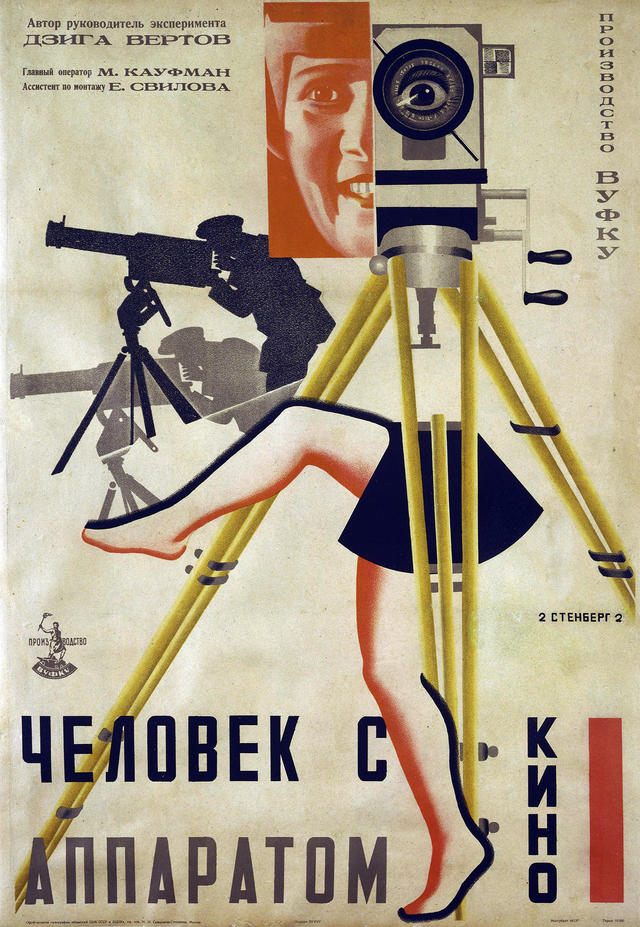
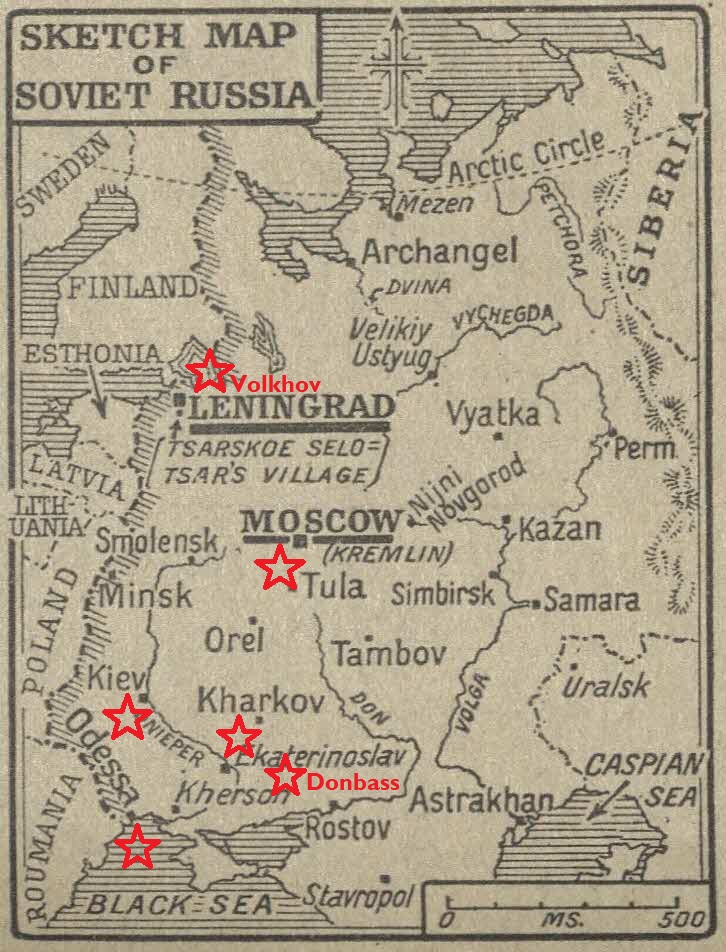 Location map (see end of blog post for detailed maps of cities). Illustration to
Location map (see end of blog post for detailed maps of cities). Illustration to 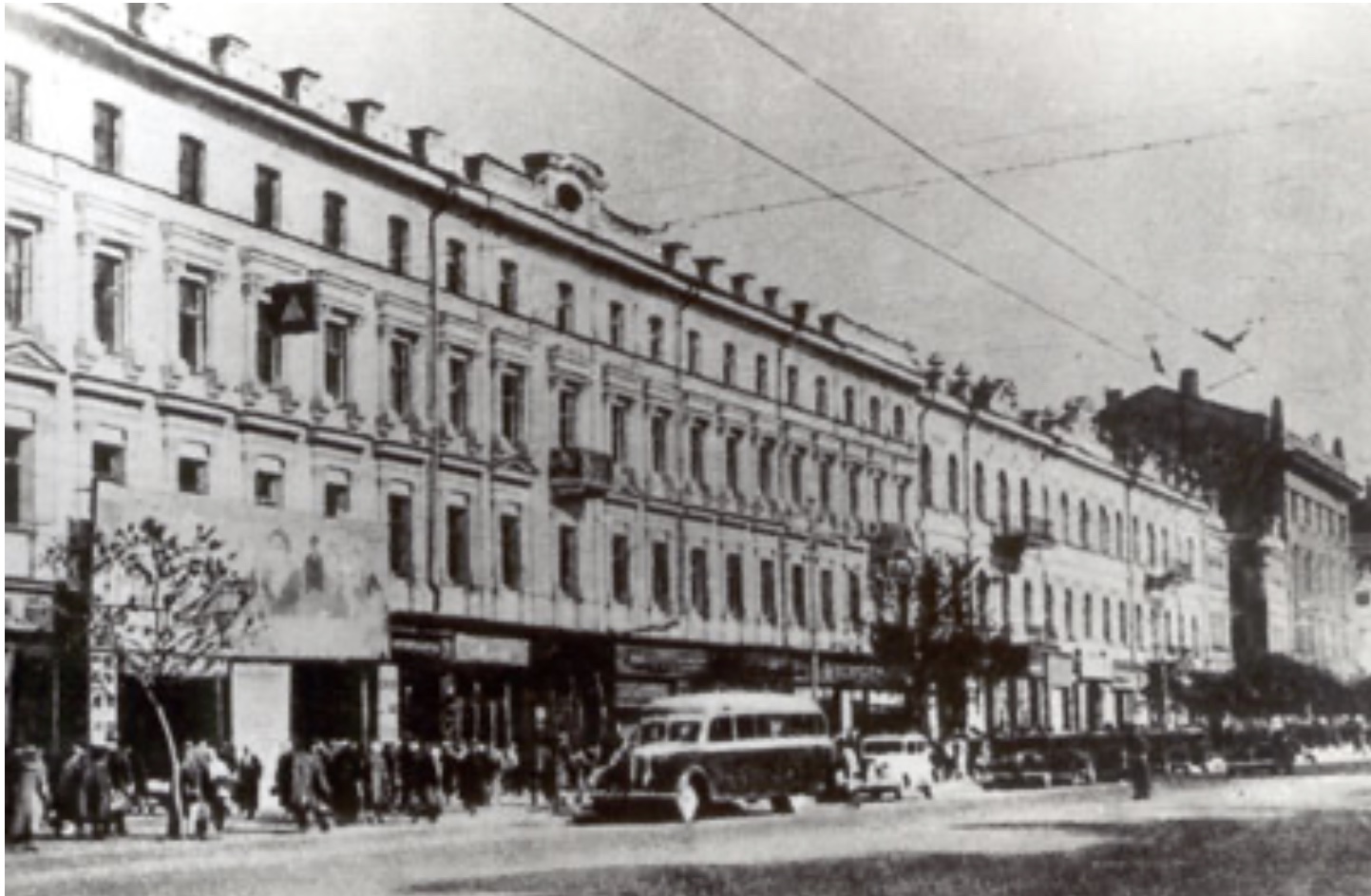 1930s view of the cinema on Khreschatyk (left of photograph). This block and most of the rest of the street was destroyed in WW2.
1930s view of the cinema on Khreschatyk (left of photograph). This block and most of the rest of the street was destroyed in WW2.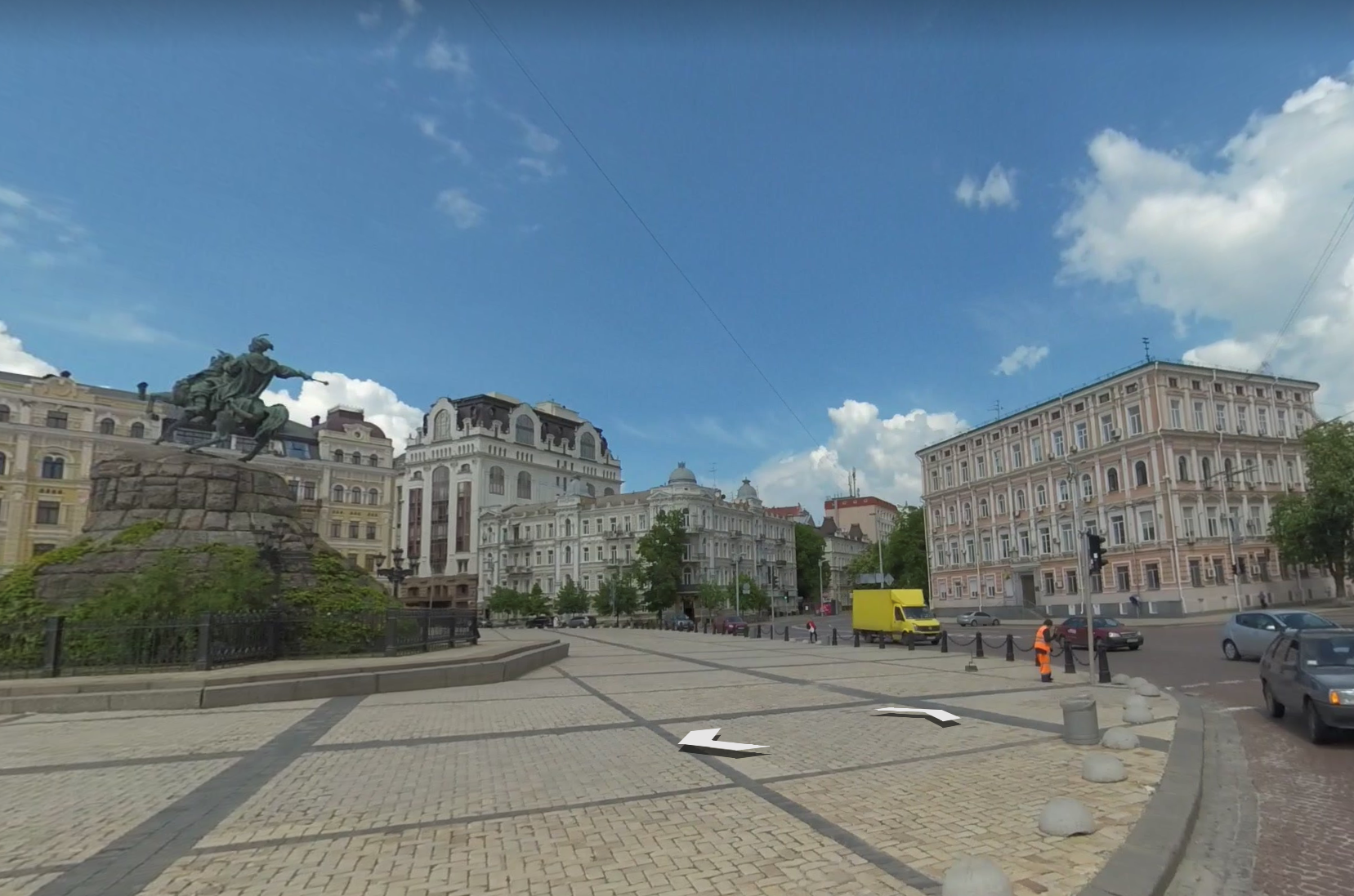
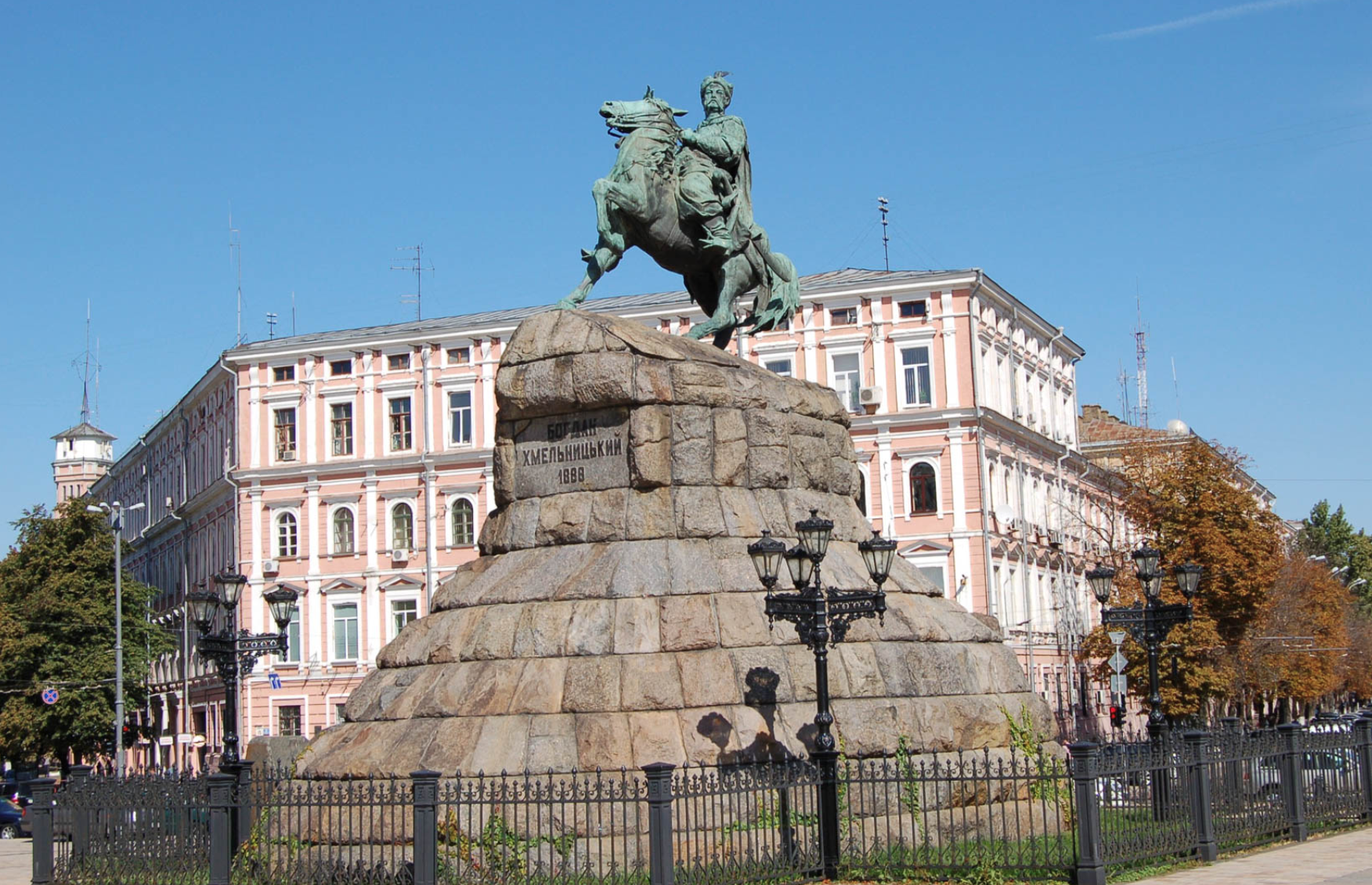 Current views of Sofiys’ka Square and statue – the building behind the statue and the one with a corner tower and dome are recognisable in the screenshot from the movie [top: Google Earth; bottom: Ukrainian Trip Adviser]. Sofiys’ka is one of the main squares of Kiev, overlooked by the Cathedral of St Sophia.
Current views of Sofiys’ka Square and statue – the building behind the statue and the one with a corner tower and dome are recognisable in the screenshot from the movie [top: Google Earth; bottom: Ukrainian Trip Adviser]. Sofiys’ka is one of the main squares of Kiev, overlooked by the Cathedral of St Sophia.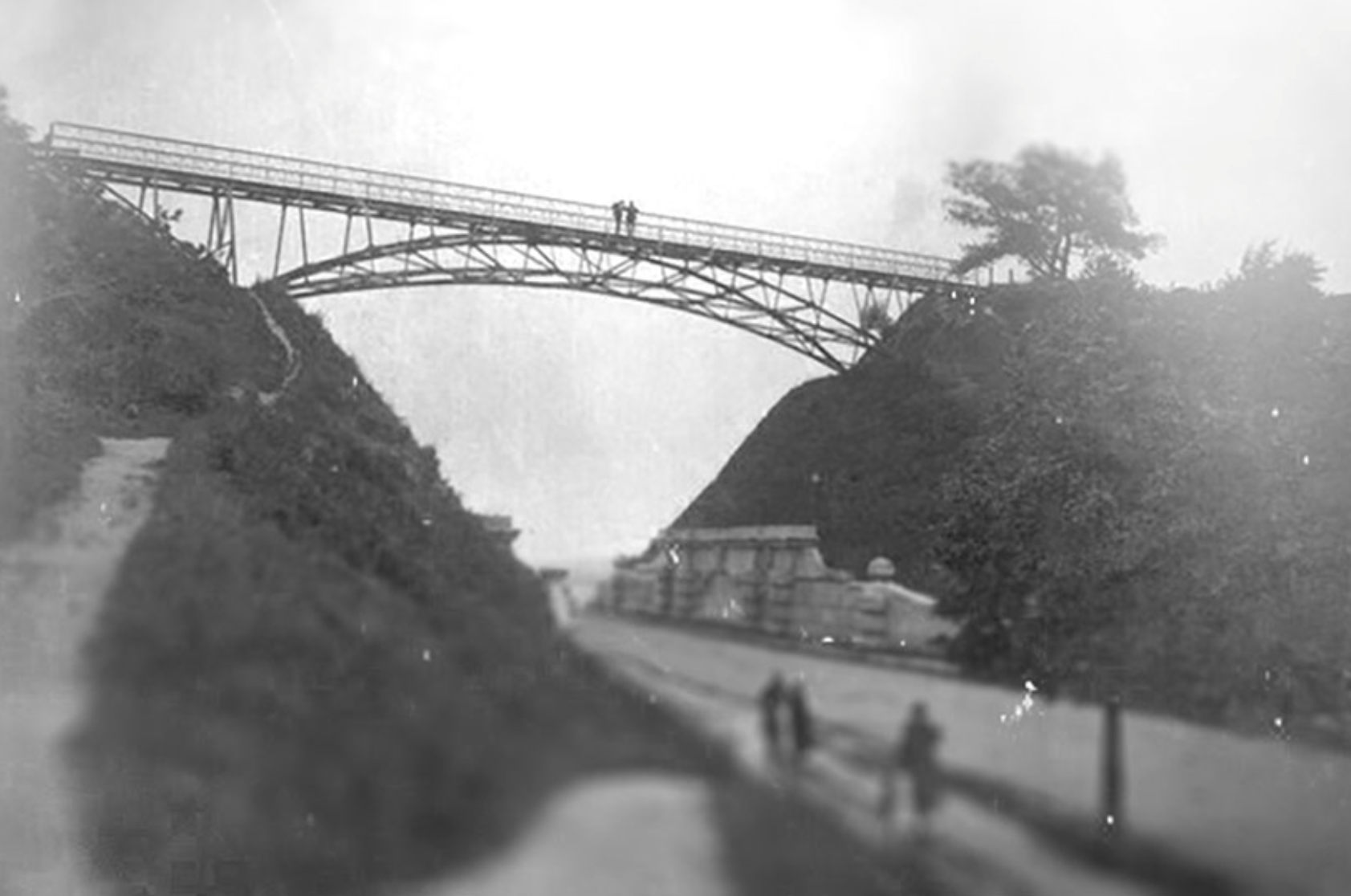 A contemporary view of the elegant pedestrian bridge and contrasting heavy looking abutments.
A contemporary view of the elegant pedestrian bridge and contrasting heavy looking abutments.

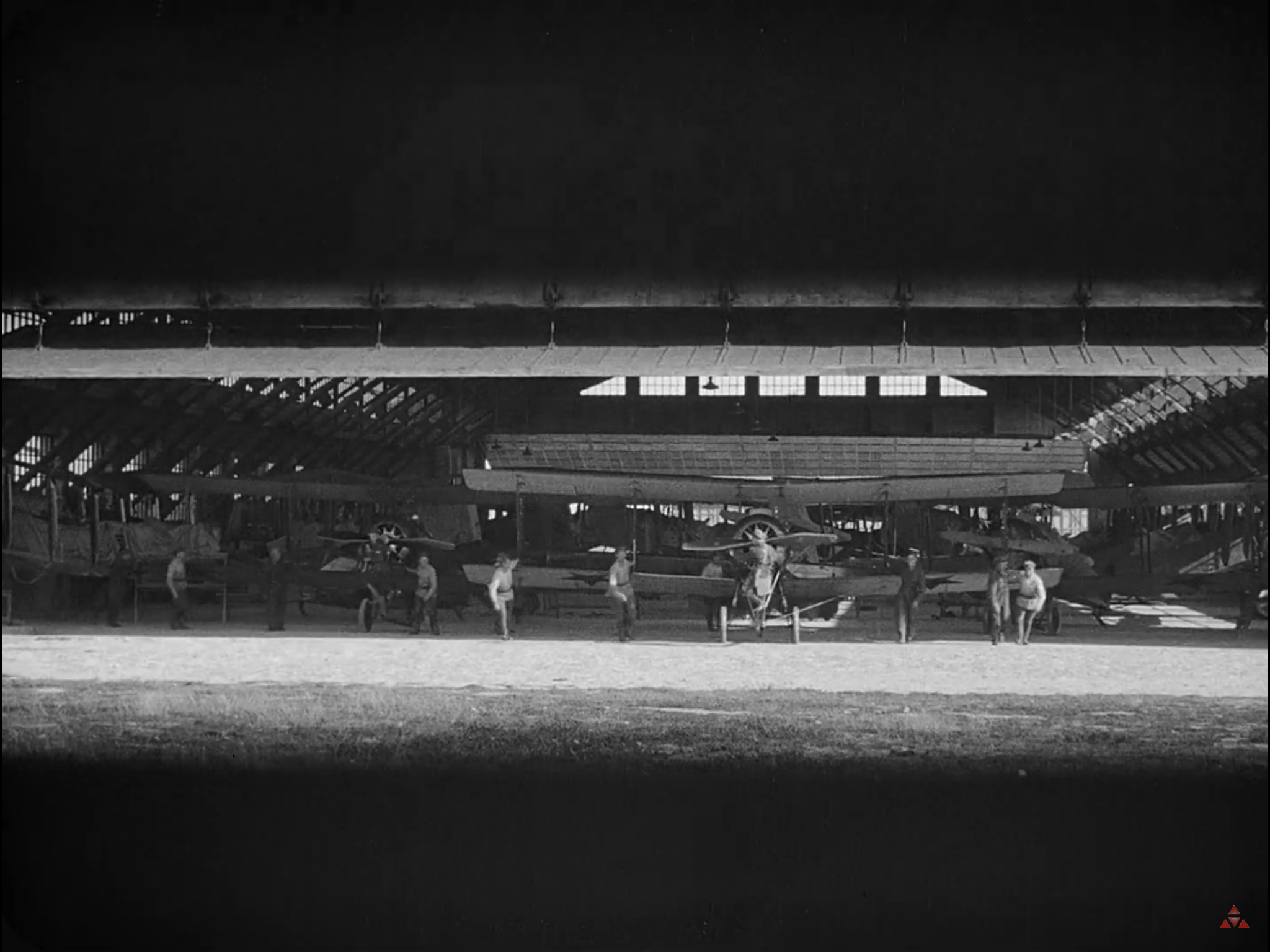 [00:12:06] Aircraft hangar – unfortunately I cannot locate this which is a pity as it looks like an interesting structure with its large clear span and huge opening door. I am waiting for information from aircraft museums in Moscow and Kiev.
[00:12:06] Aircraft hangar – unfortunately I cannot locate this which is a pity as it looks like an interesting structure with its large clear span and huge opening door. I am waiting for information from aircraft museums in Moscow and Kiev.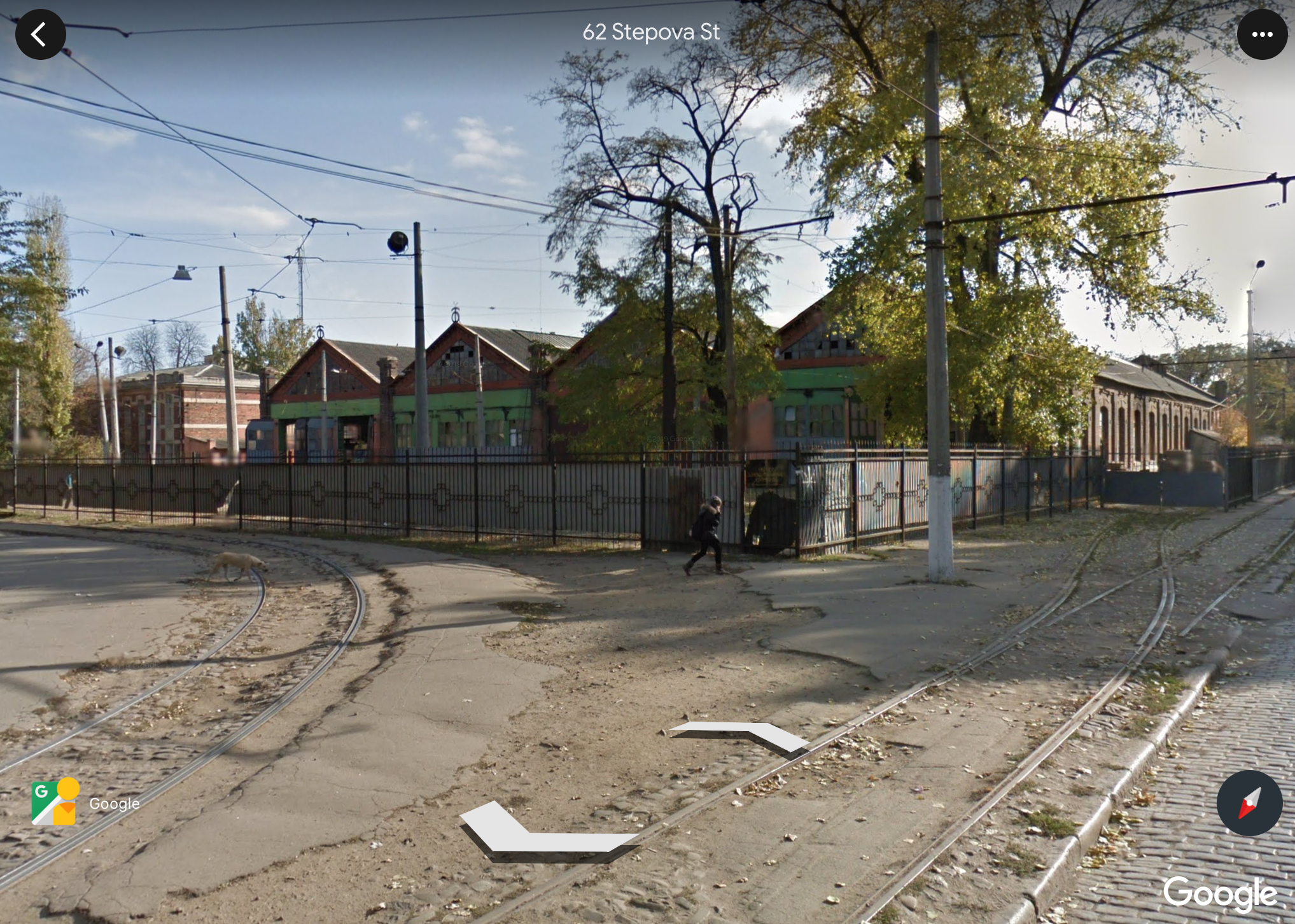 Current [Google Earth] and 1960s views of the depot which is now a museum and workshop
Current [Google Earth] and 1960s views of the depot which is now a museum and workshop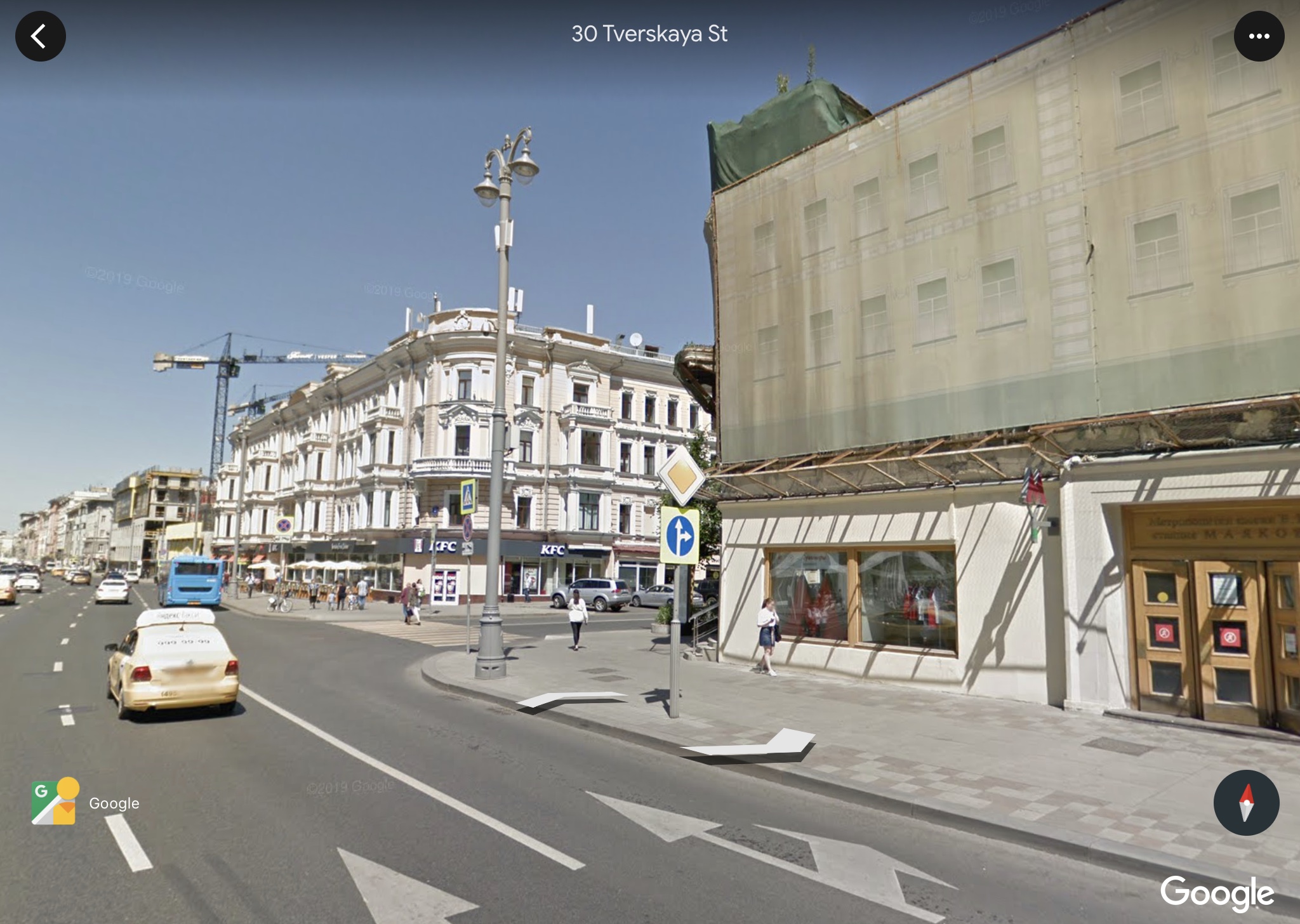 Current view of Tverskaya [Google Earth].
Current view of Tverskaya [Google Earth].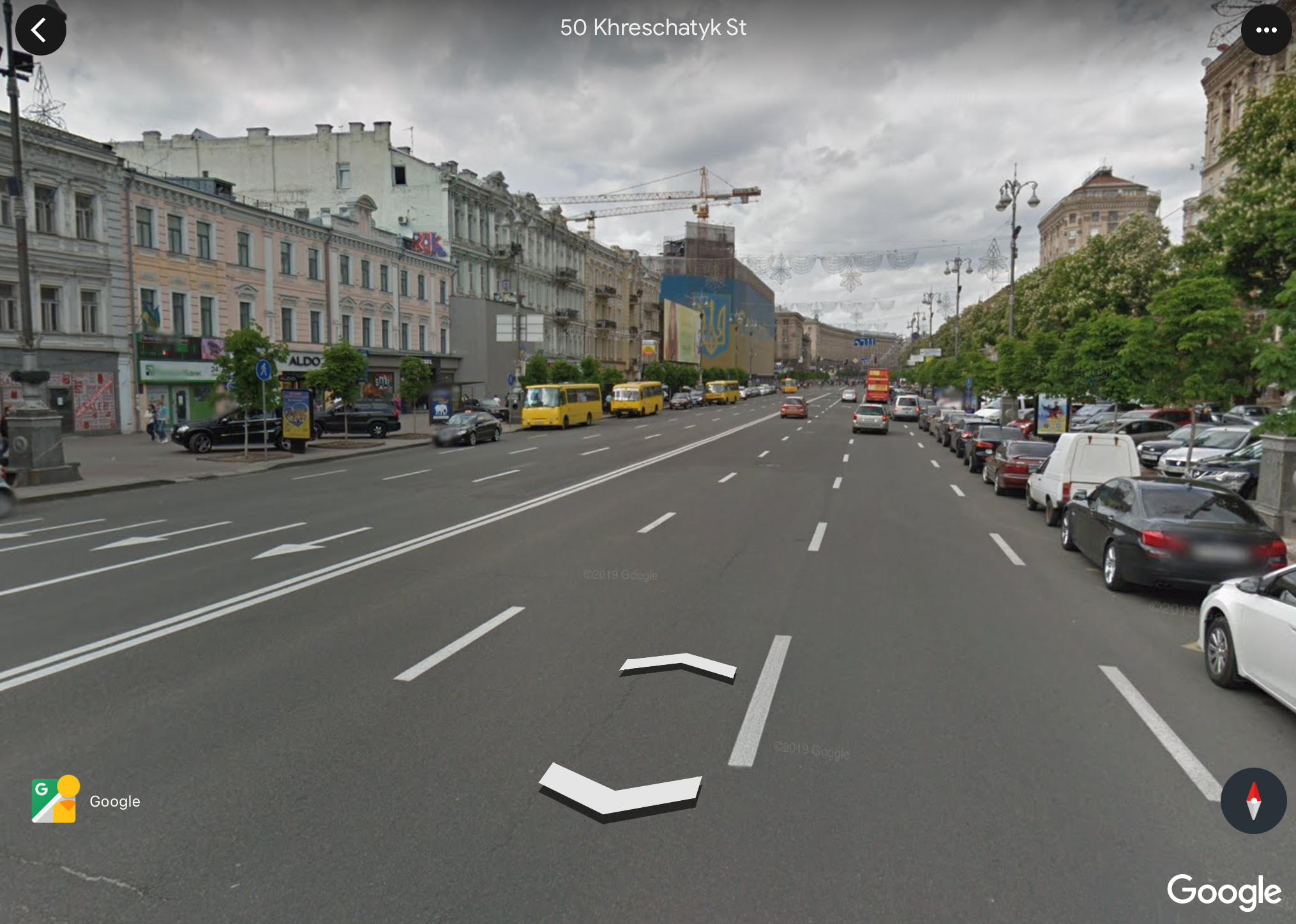 Current view of the street, mostly rebuilt and widened after war damage (the centre of the city was blown up by the retreating Red Army) [Google Earth].
Current view of the street, mostly rebuilt and widened after war damage (the centre of the city was blown up by the retreating Red Army) [Google Earth].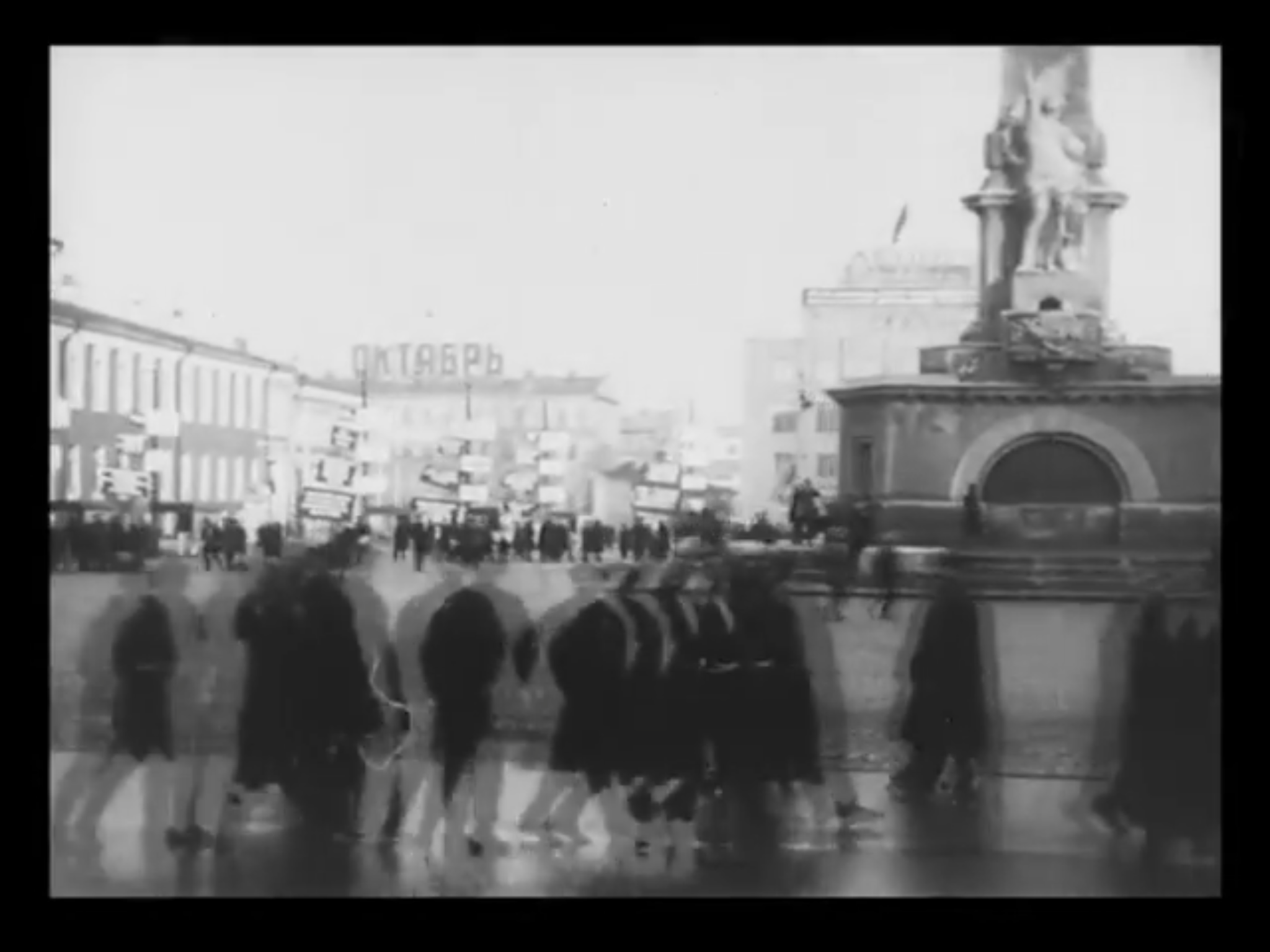
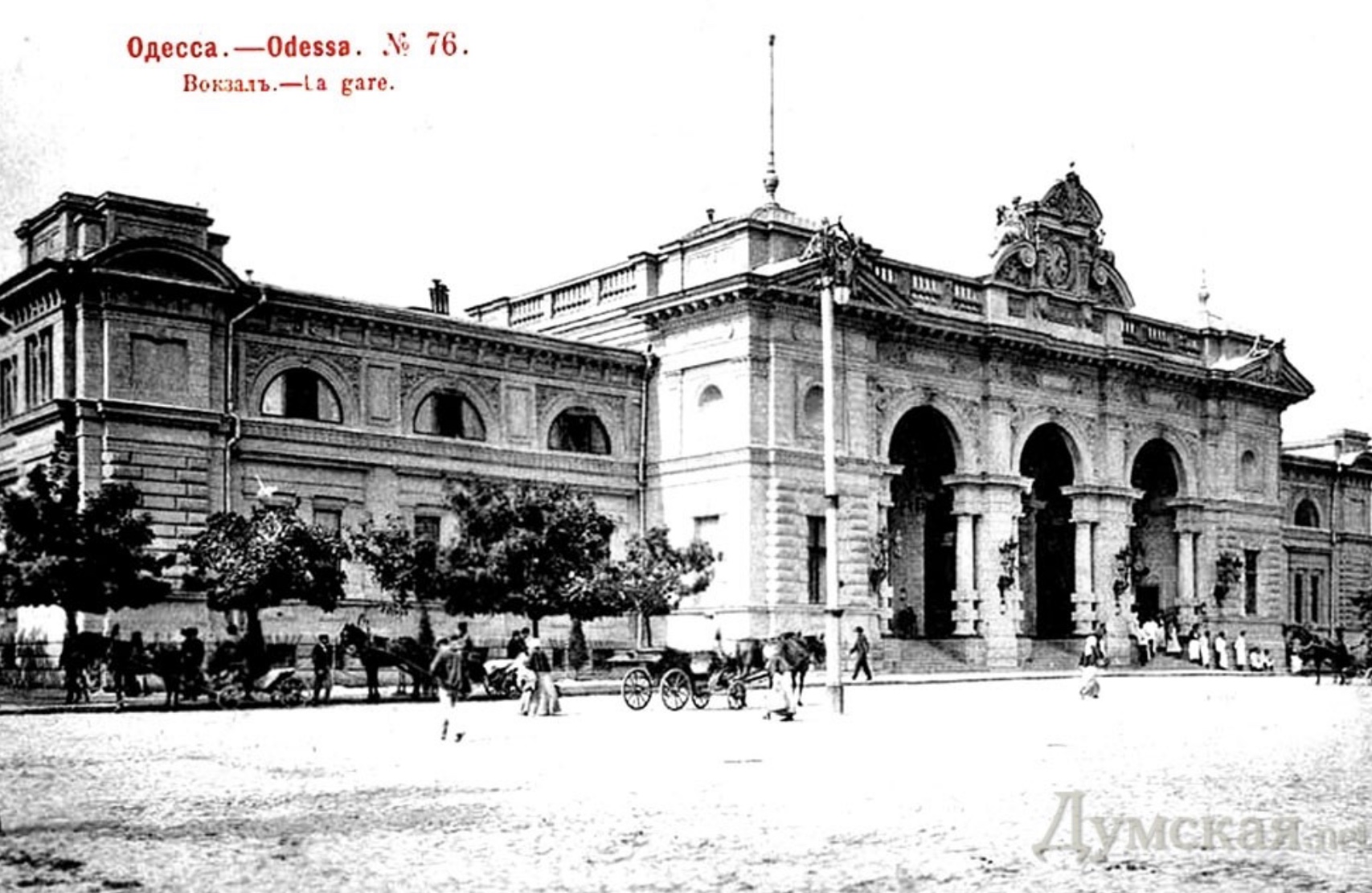 Late 19thC postcard of the station entrance on Pryvokzal’na Square (courtesy of
Late 19thC postcard of the station entrance on Pryvokzal’na Square (courtesy of 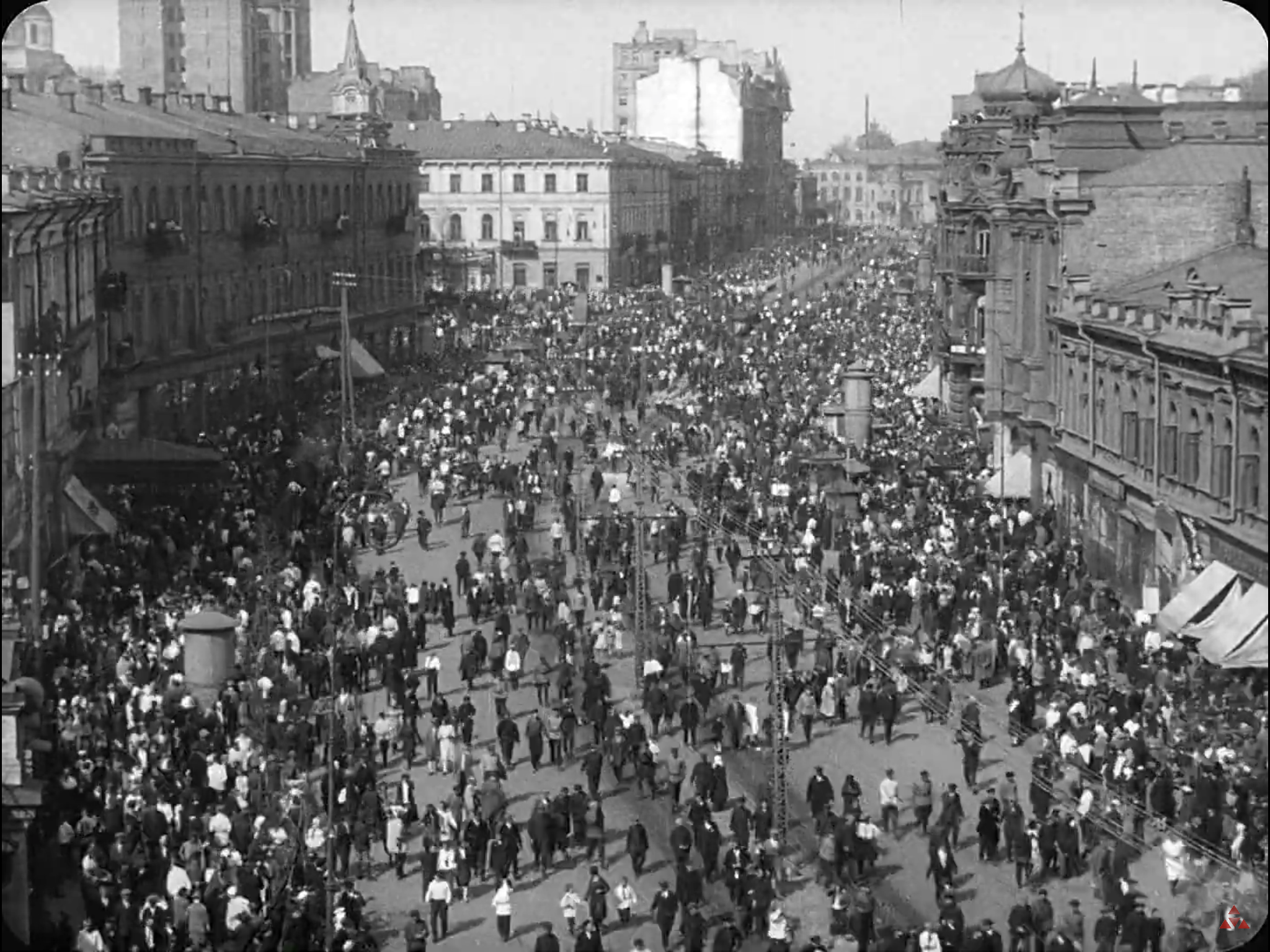 [00:21:49] ‘Frozen’ view of the north end of Khreschatyk, Kiev.
[00:21:49] ‘Frozen’ view of the north end of Khreschatyk, Kiev.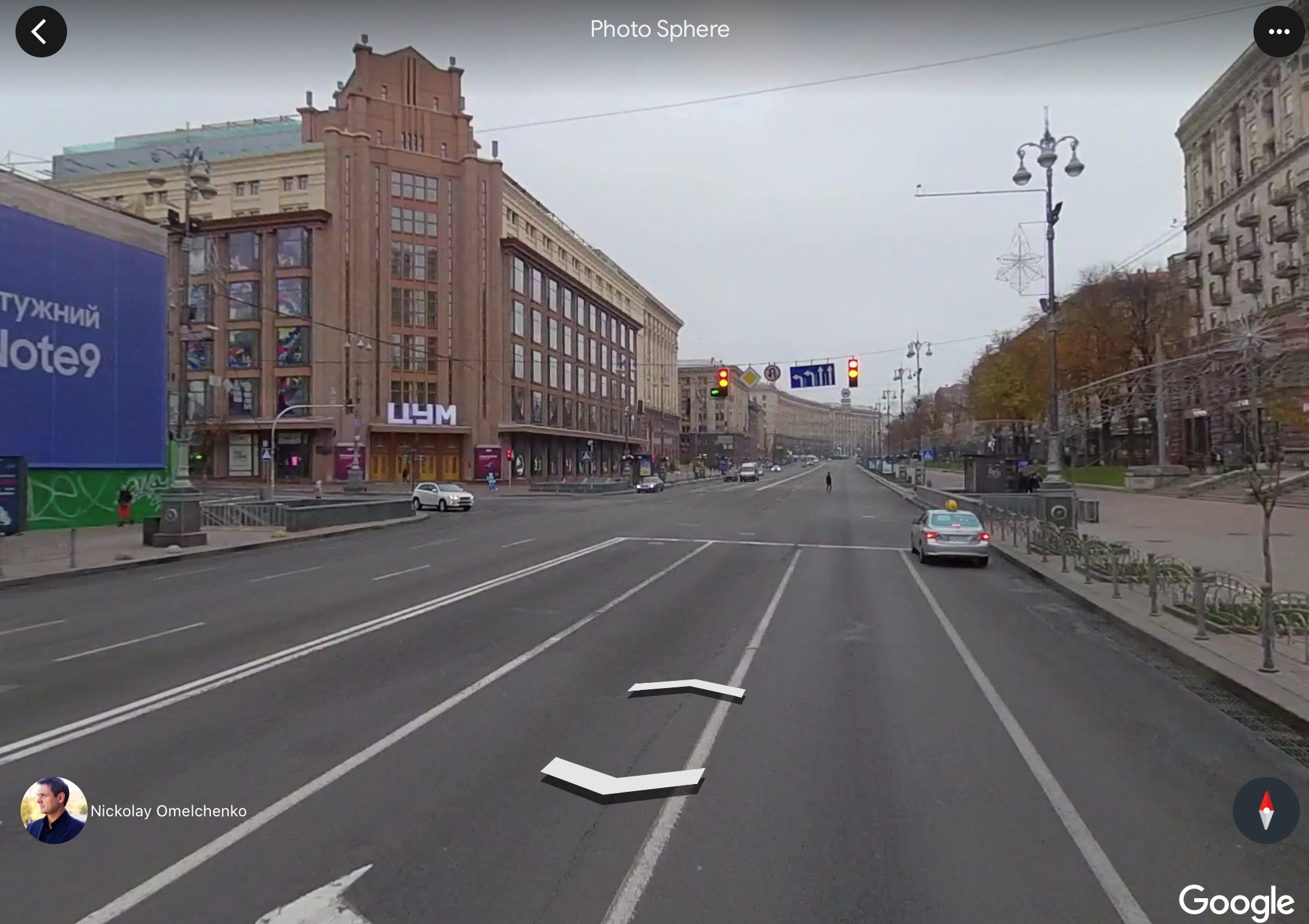 Current view of the north end of Khreschatyk [Google Earth, photograph by Nikolay Omelchenko]. Nothing much is left of the old street thanks to its destruction by the retreating Red Army in WW2. Much of the re-building after the war was in the usual Stalinist neo-classical style as can be seen here. The main square of Kiev, the Maidan, is just past the bend in the street ahead.
Current view of the north end of Khreschatyk [Google Earth, photograph by Nikolay Omelchenko]. Nothing much is left of the old street thanks to its destruction by the retreating Red Army in WW2. Much of the re-building after the war was in the usual Stalinist neo-classical style as can be seen here. The main square of Kiev, the Maidan, is just past the bend in the street ahead.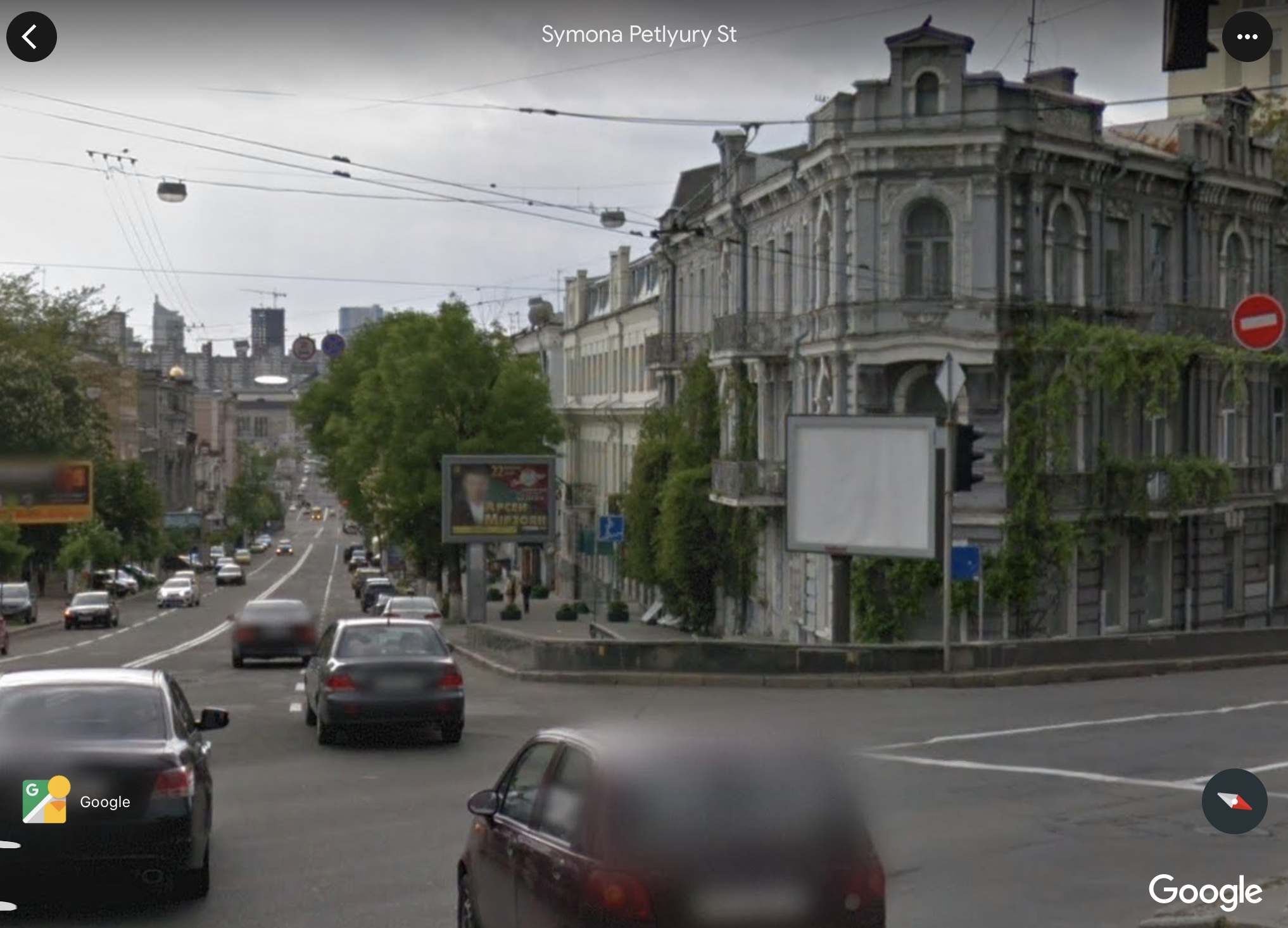 [Google Earth]
[Google Earth]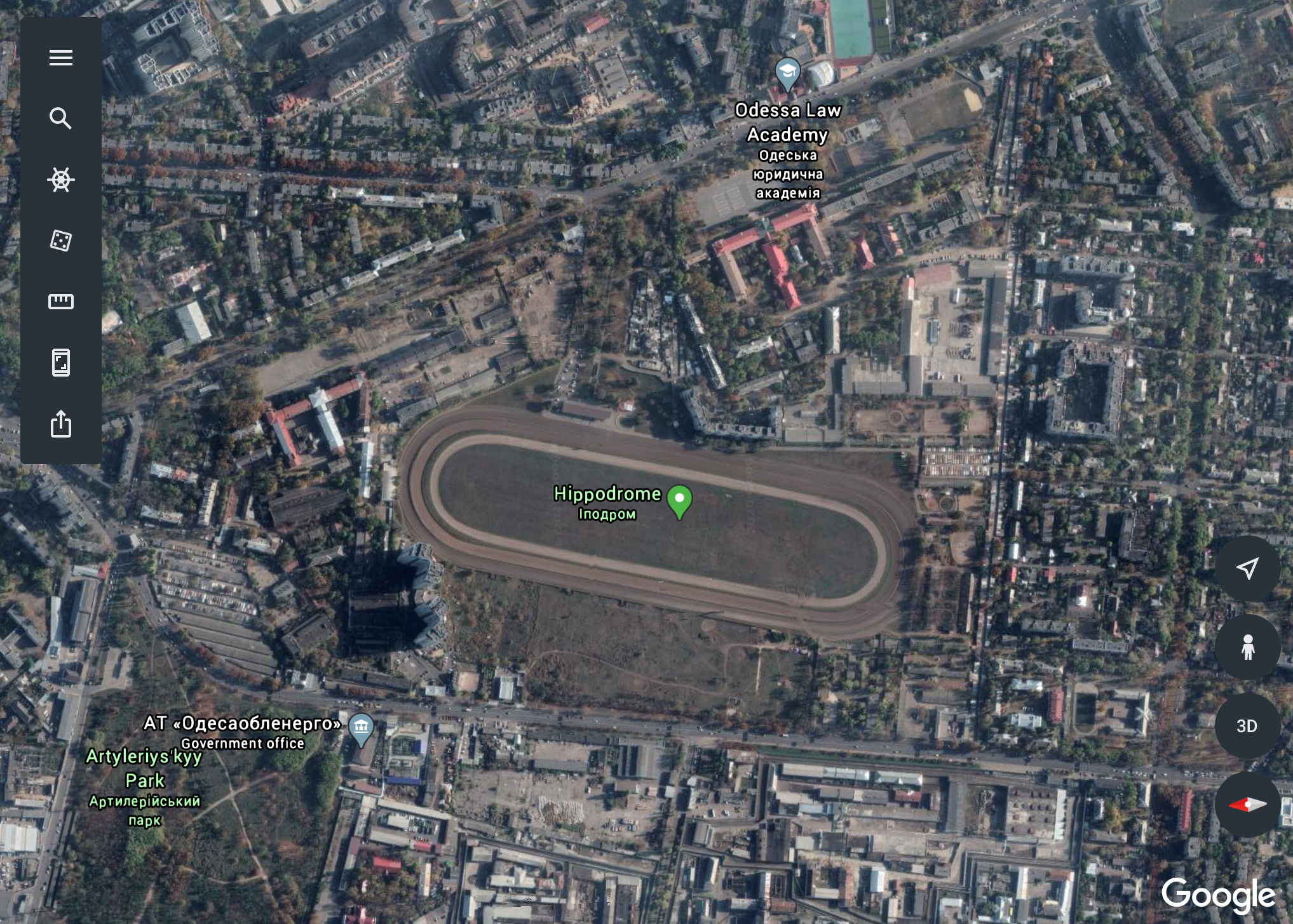 [Google Earth]
[Google Earth]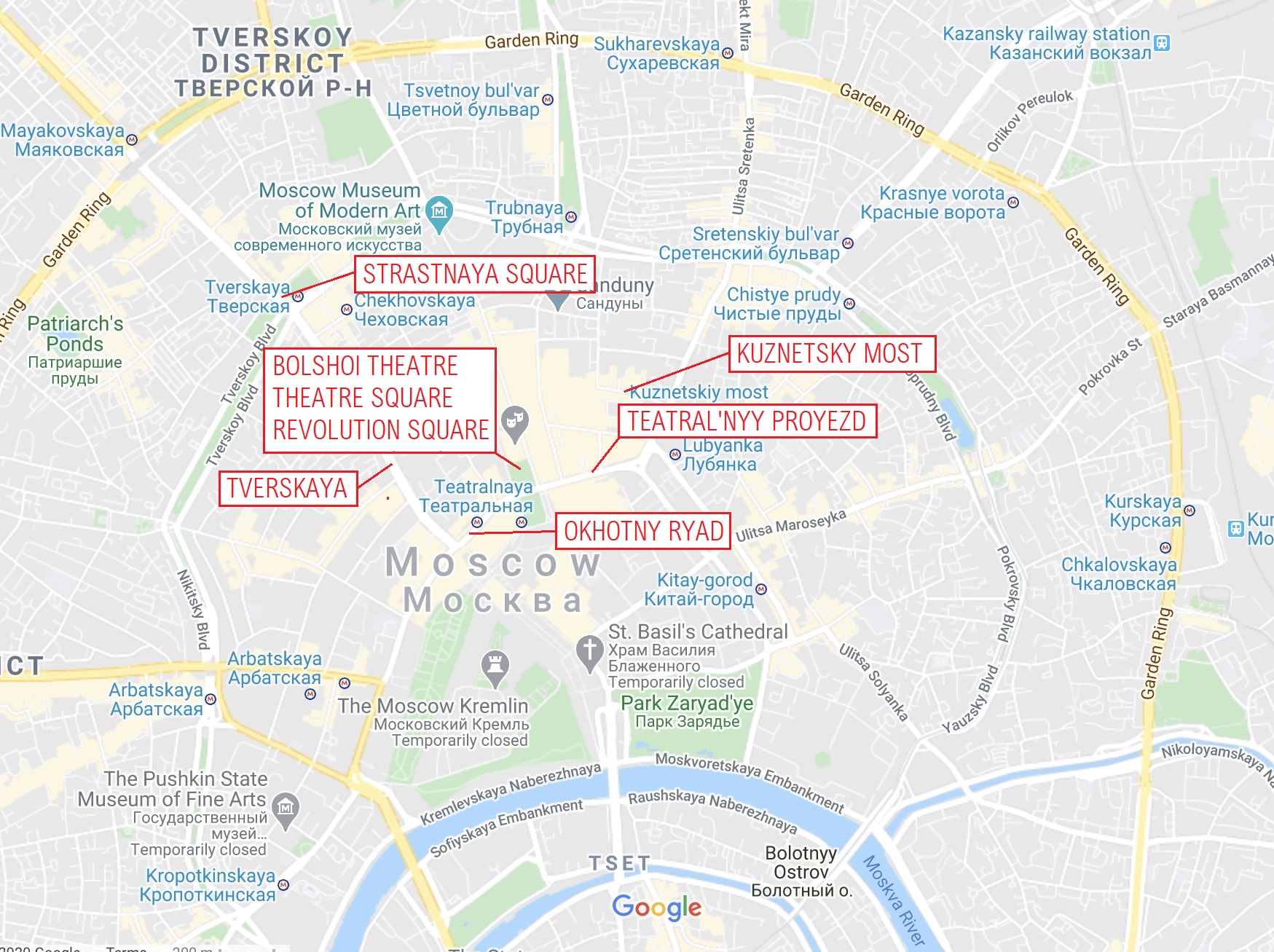
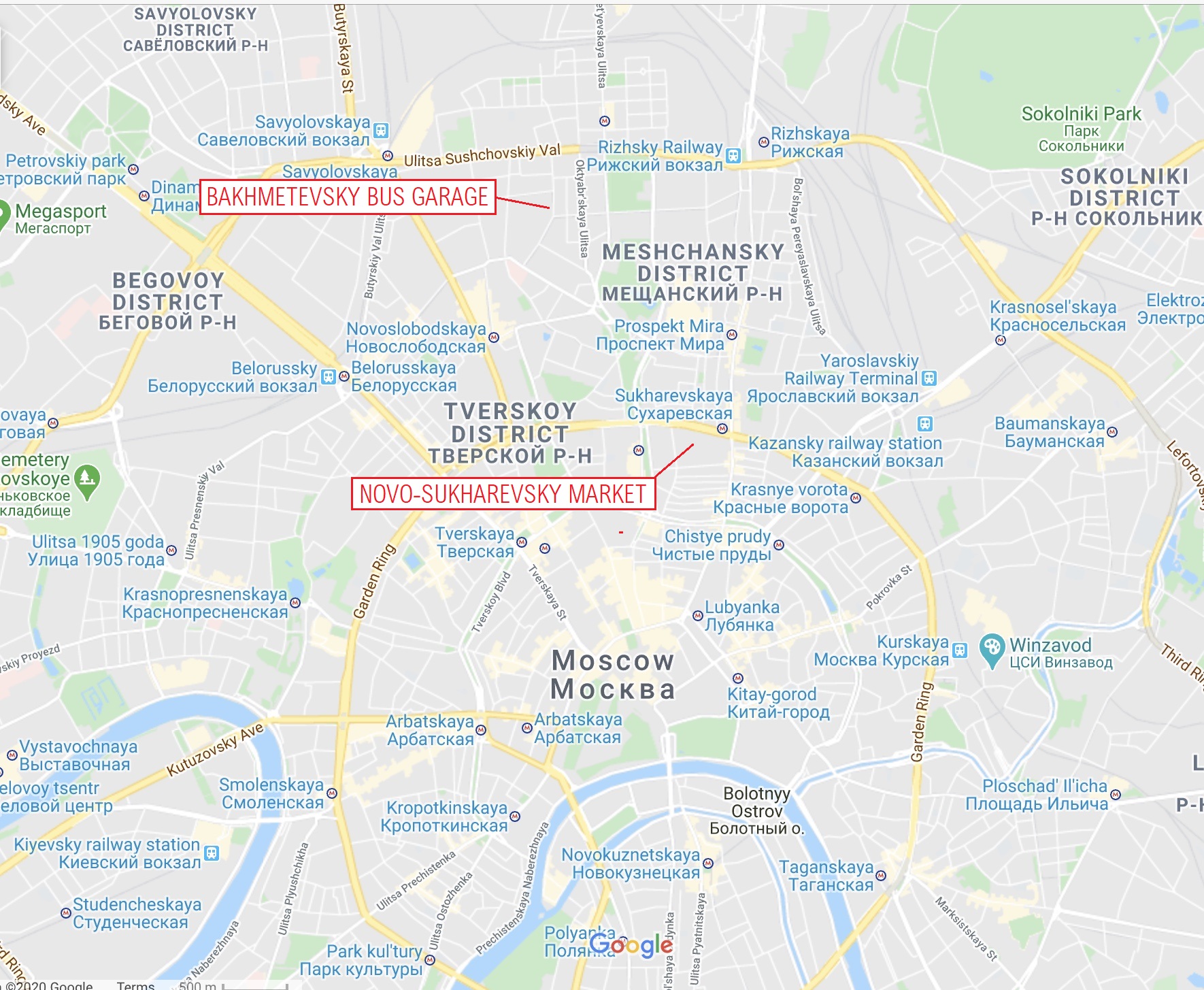
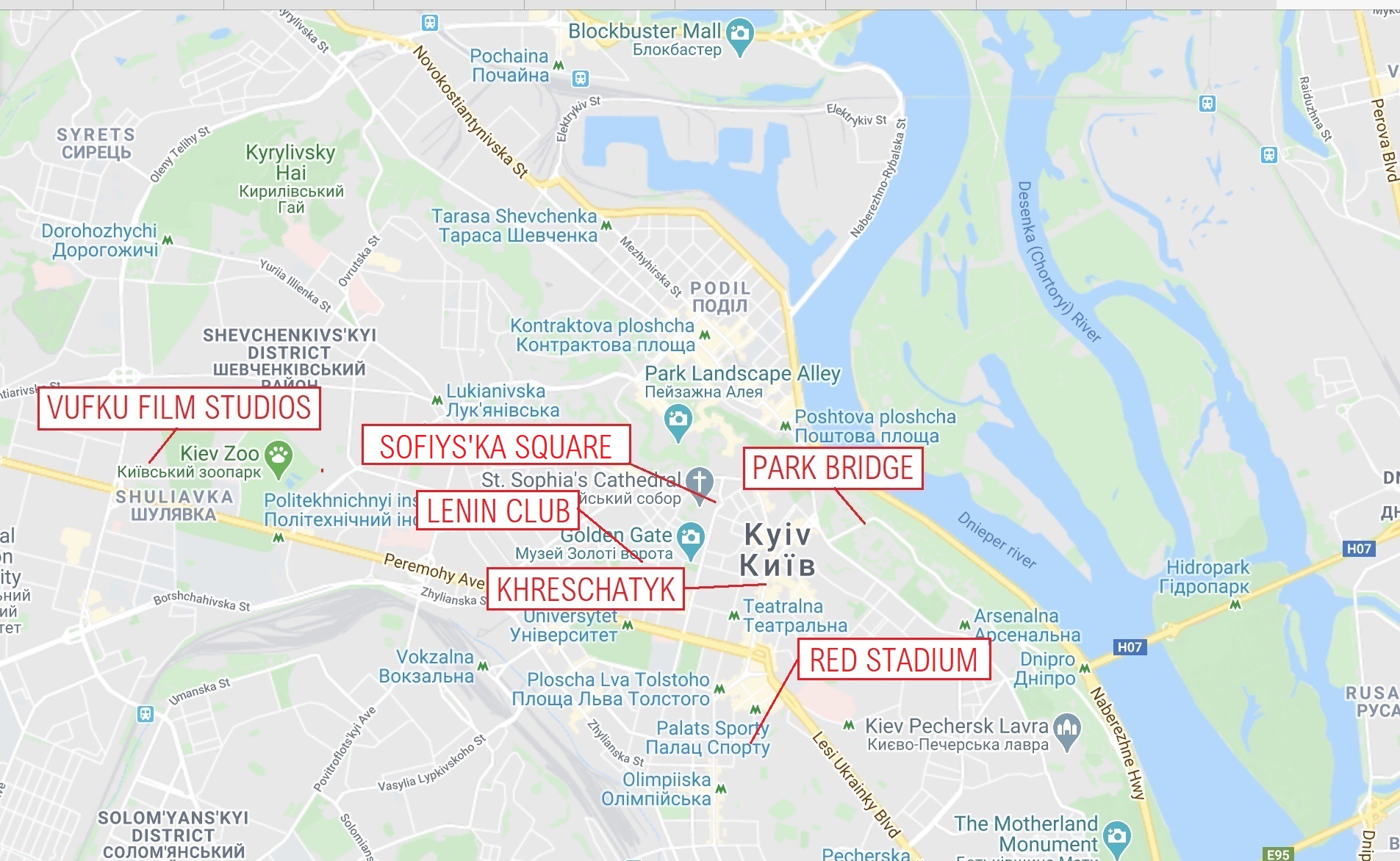
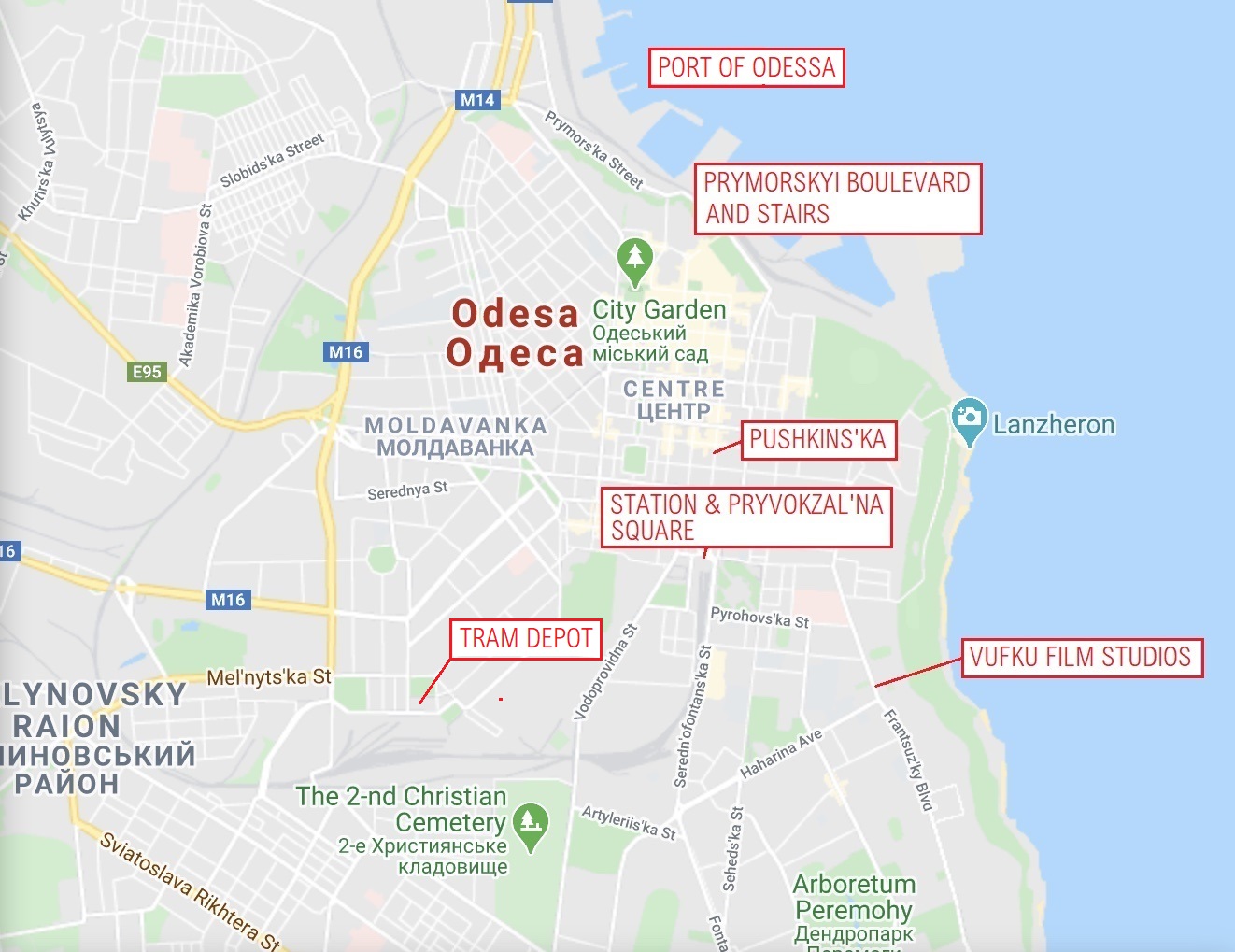
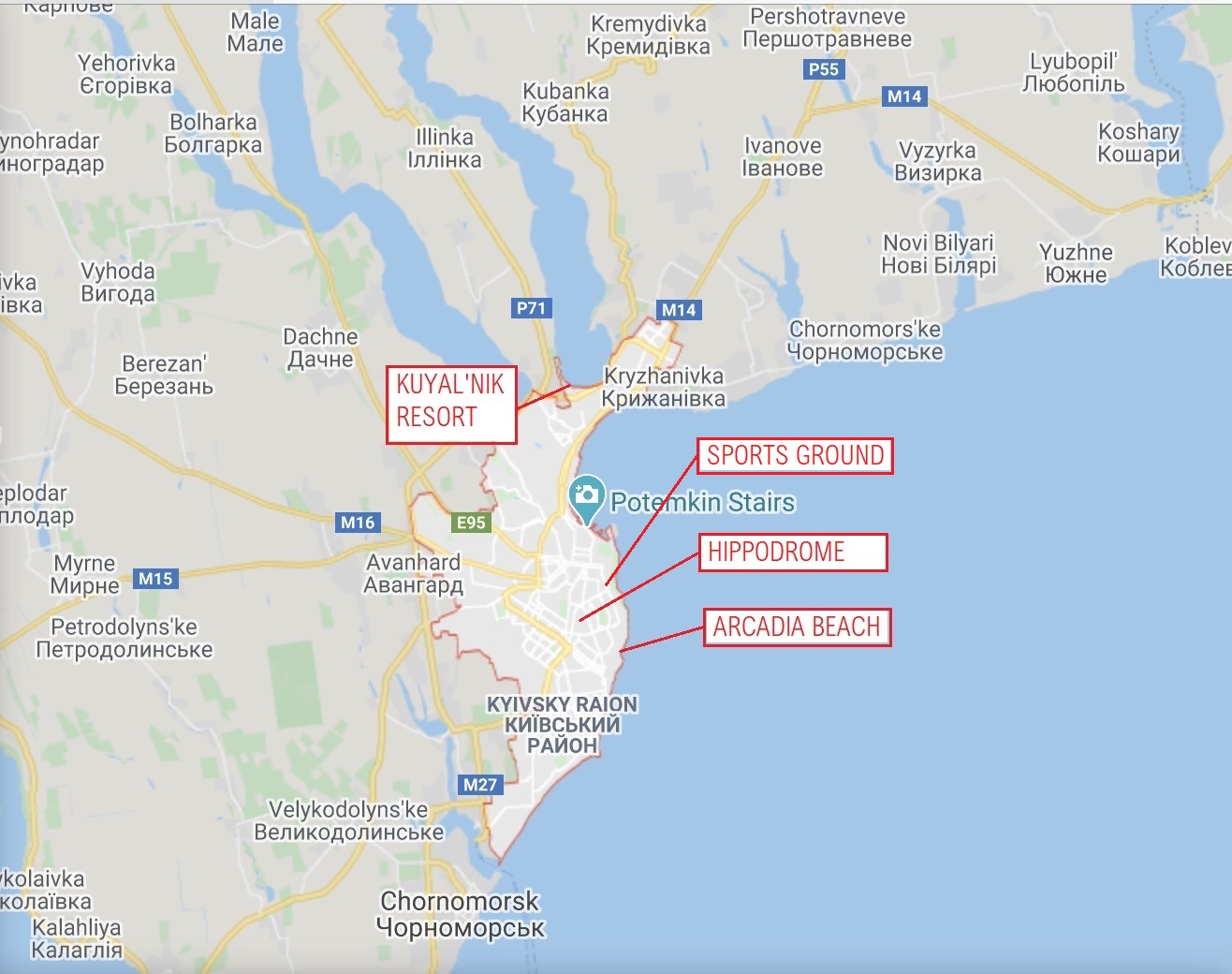
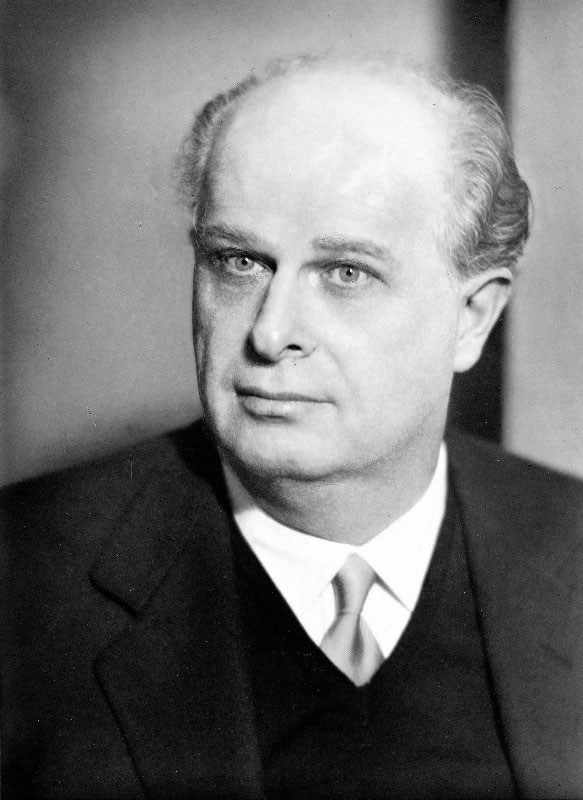
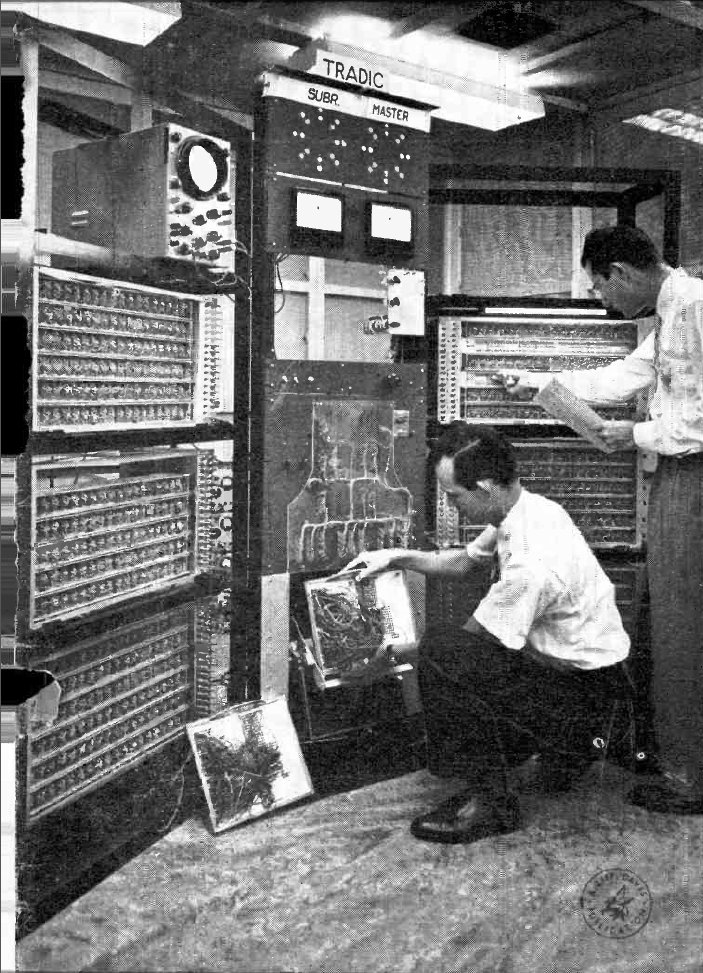
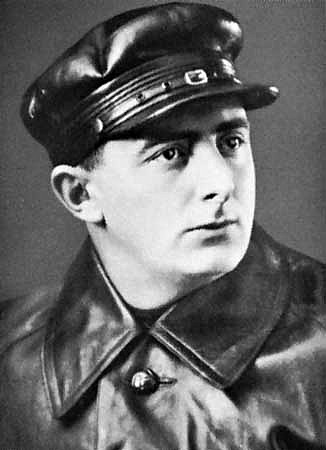 Dziga Vertov (a pseudonym meaning ‘spinning top’, his real name was David Kaufman) became a film-maker in 1918 after two years experimenting with sound in what he called the ‘Laboratory of Hearing’. During the Civil War he organised film shows and film-making on the ‘agit-trains’ spreading propaganda through the areas captured by the Red Army, and then worked on a series of short documentary films he titled ‘Kino-pravda’ (Film-truth
Dziga Vertov (a pseudonym meaning ‘spinning top’, his real name was David Kaufman) became a film-maker in 1918 after two years experimenting with sound in what he called the ‘Laboratory of Hearing’. During the Civil War he organised film shows and film-making on the ‘agit-trains’ spreading propaganda through the areas captured by the Red Army, and then worked on a series of short documentary films he titled ‘Kino-pravda’ (Film-truth
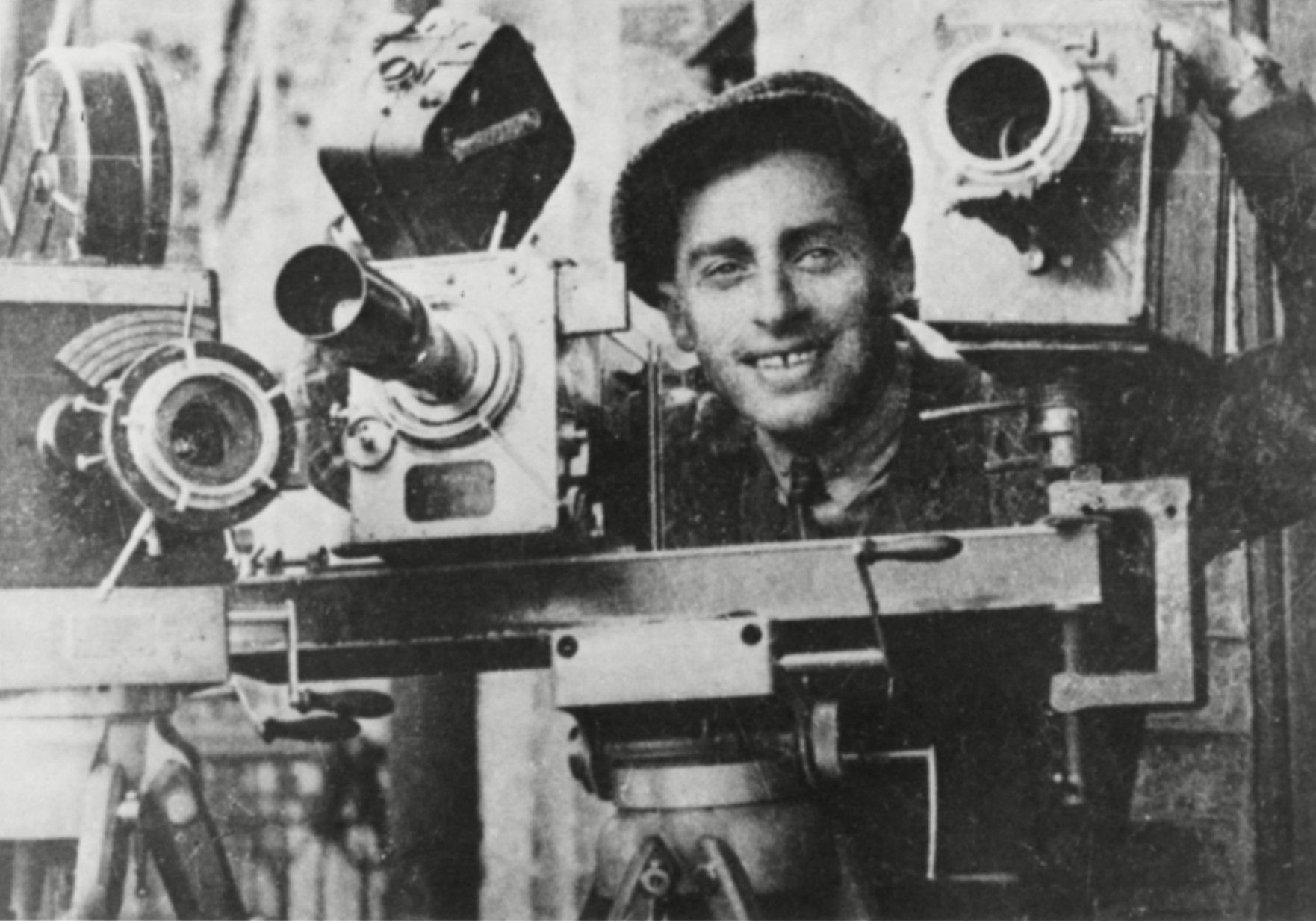
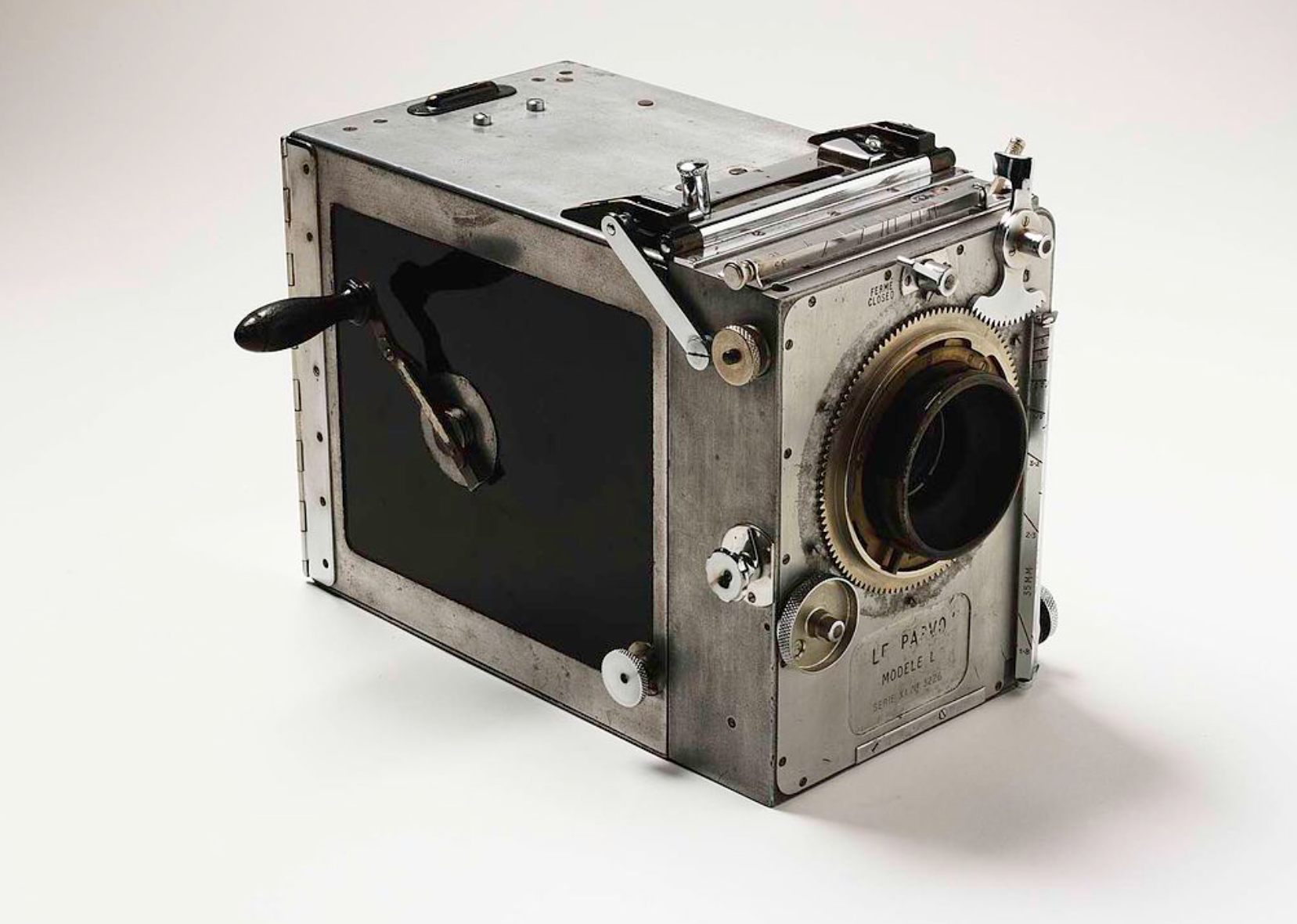
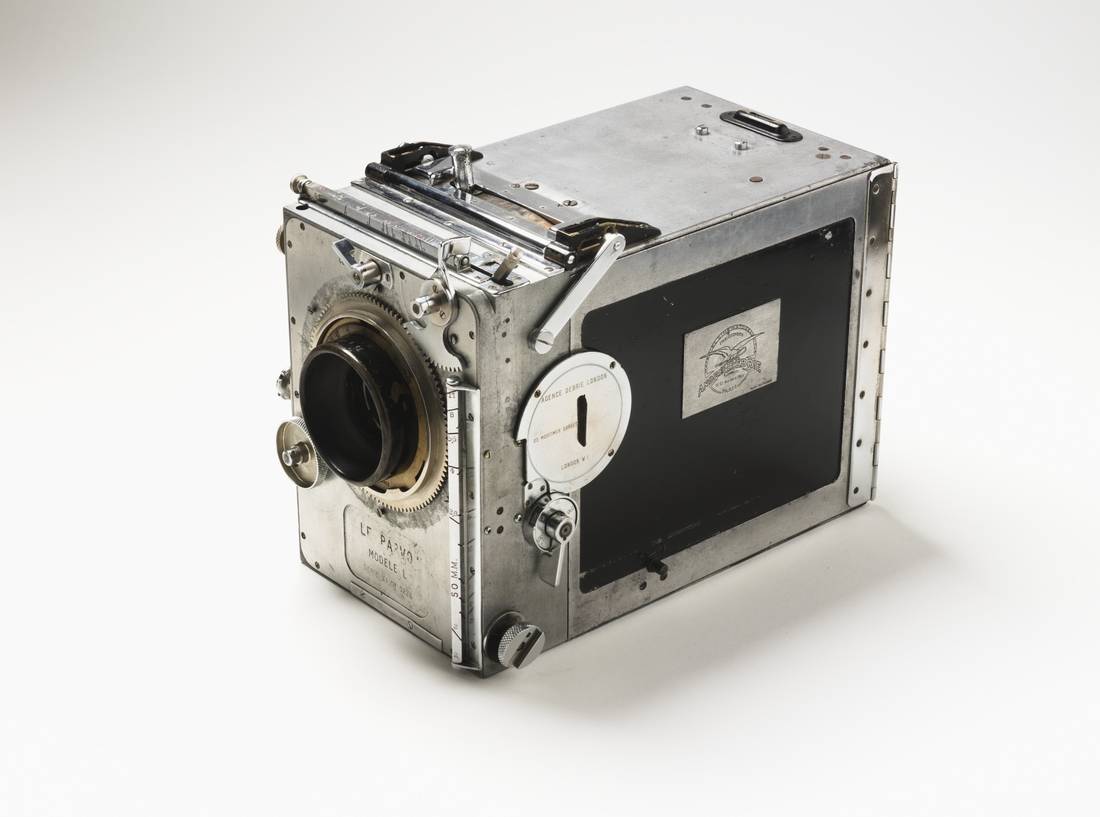 The Australian explorer Frank Hurley’s Debrie Parvo Model L.
The Australian explorer Frank Hurley’s Debrie Parvo Model L. 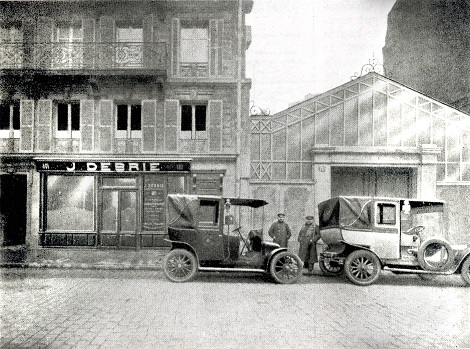

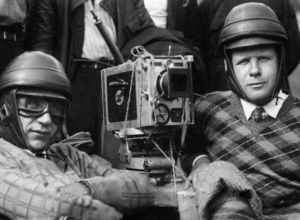 Eduard Tisse and Sergei Eisenstein in crash helmets with a Parvo Model JK!
Eduard Tisse and Sergei Eisenstein in crash helmets with a Parvo Model JK!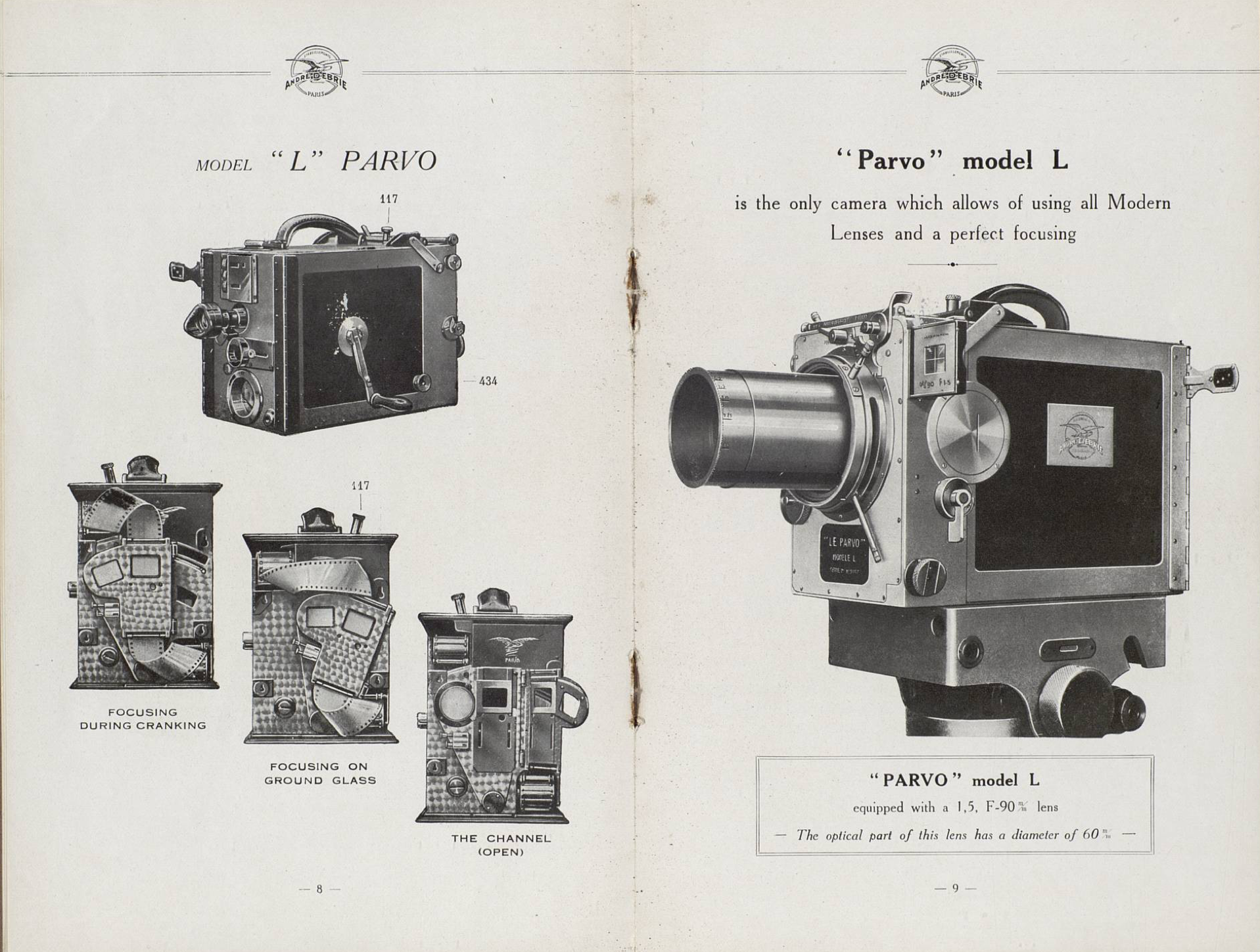
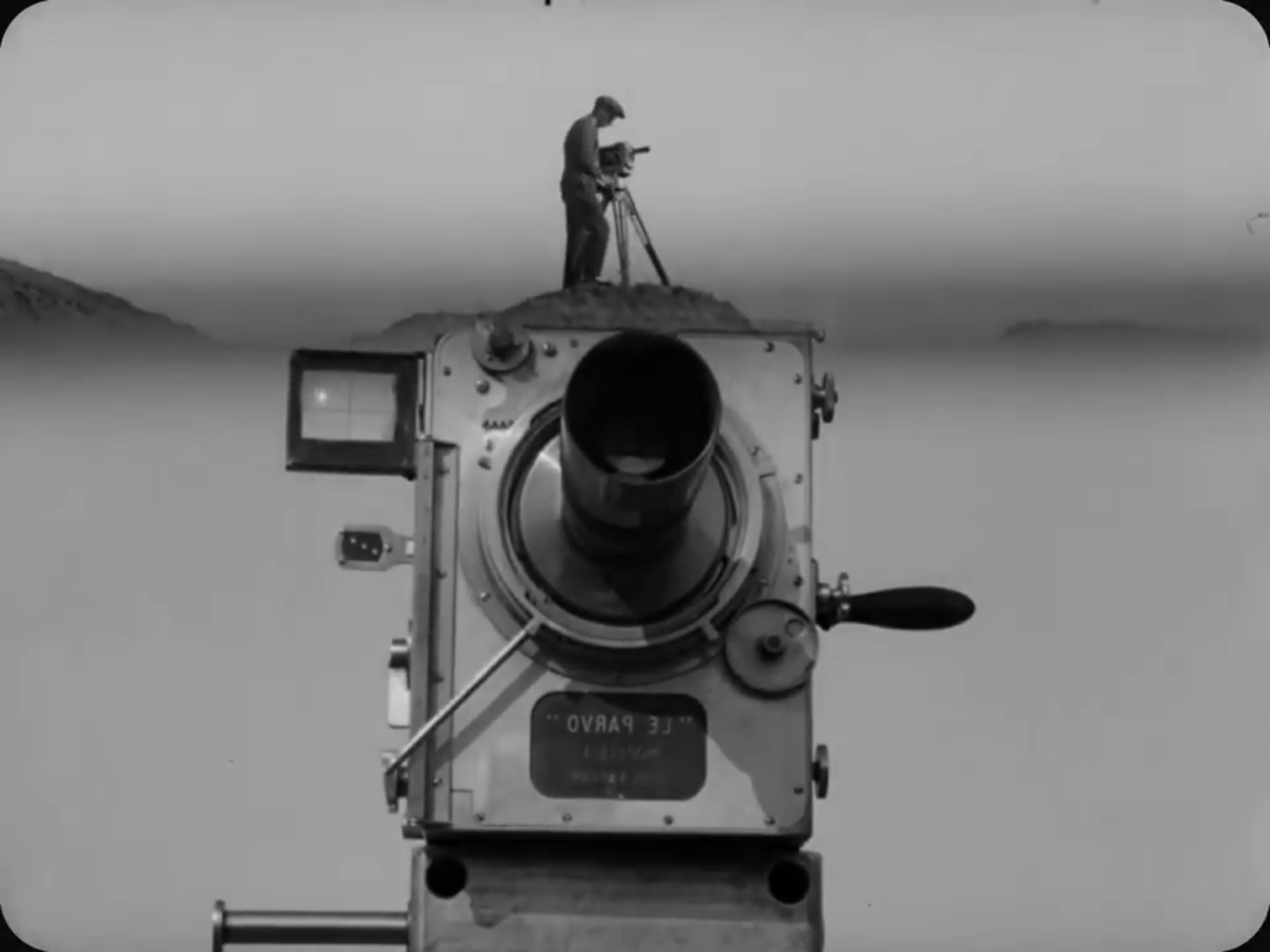
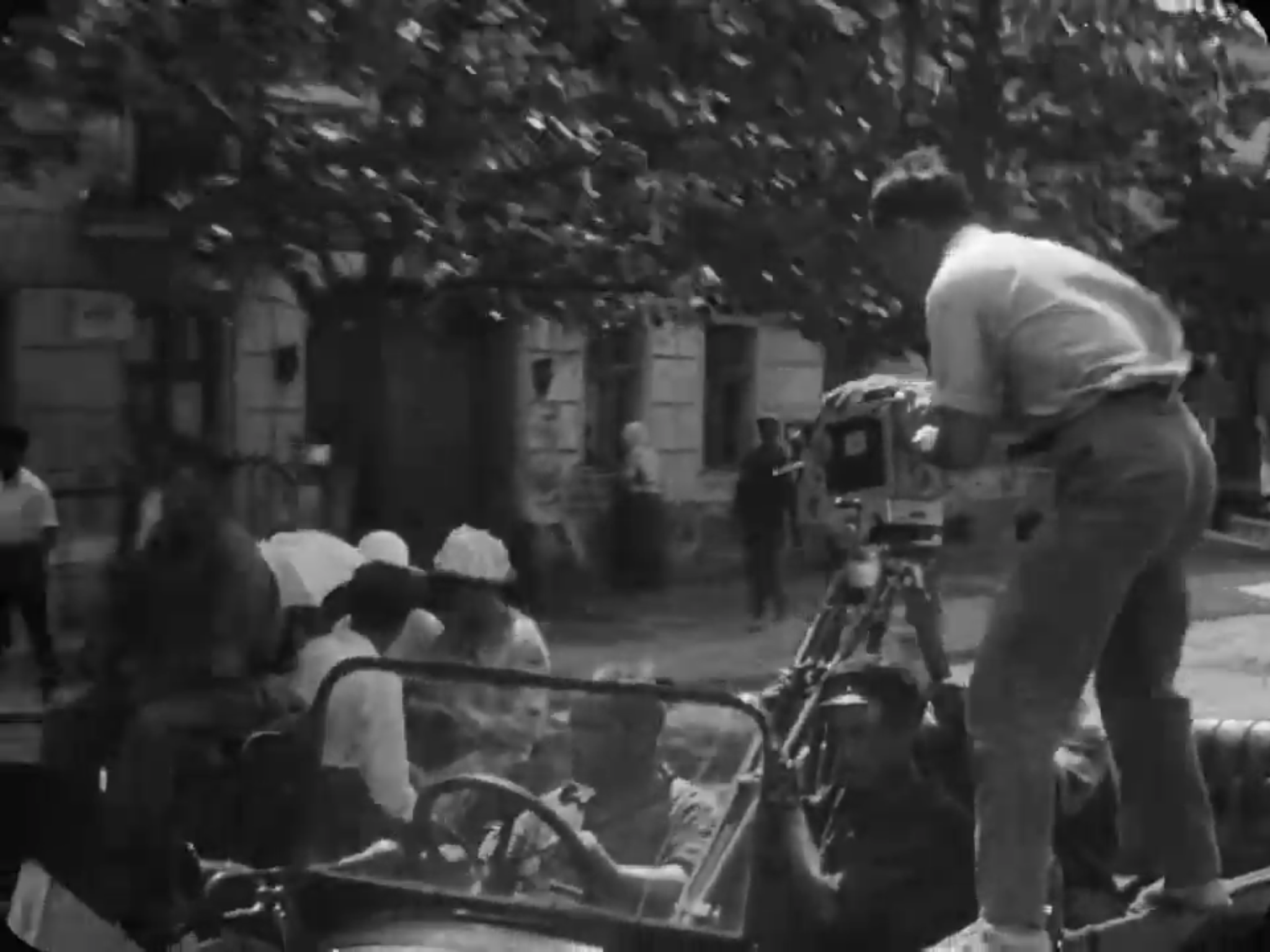
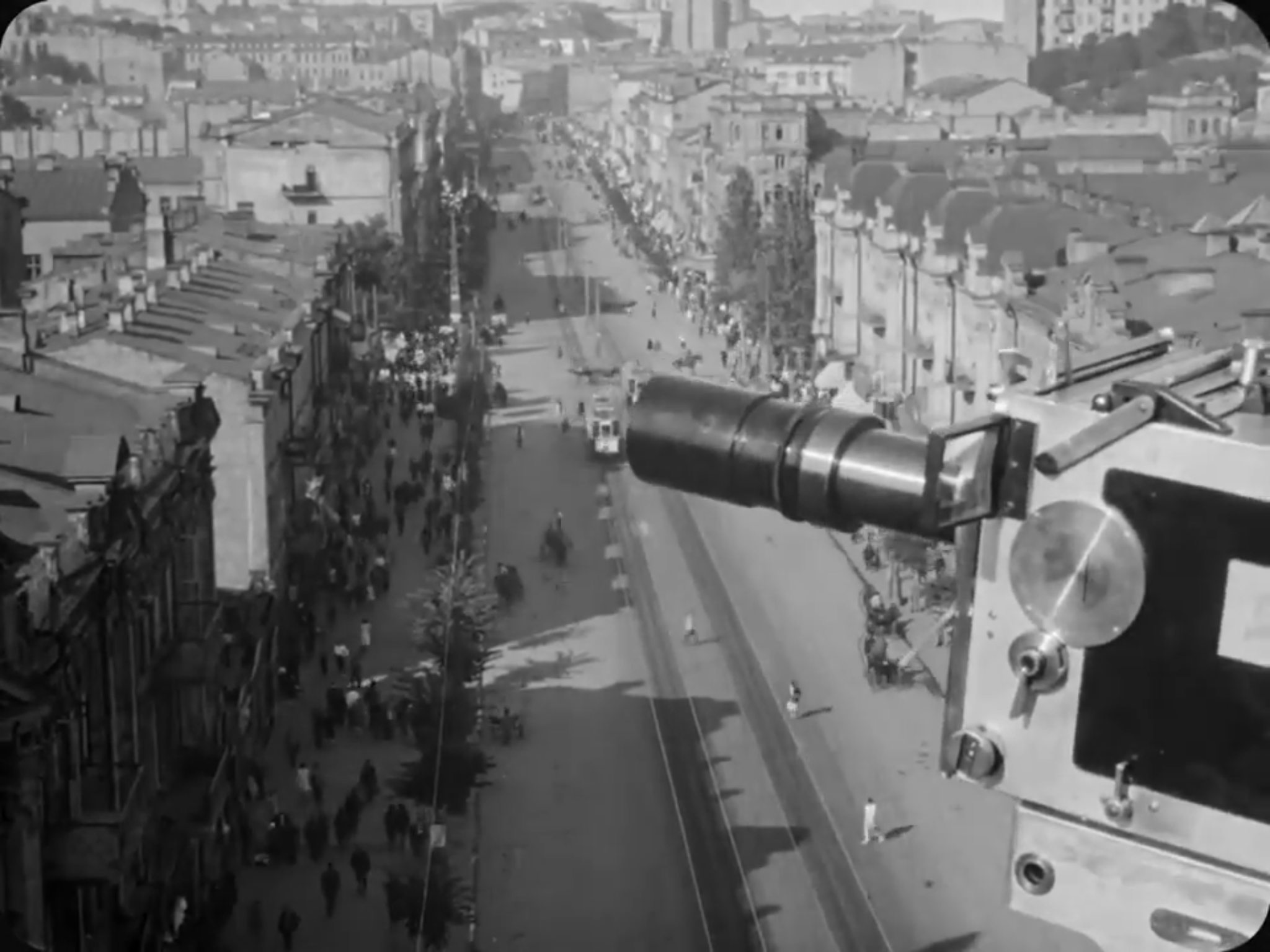
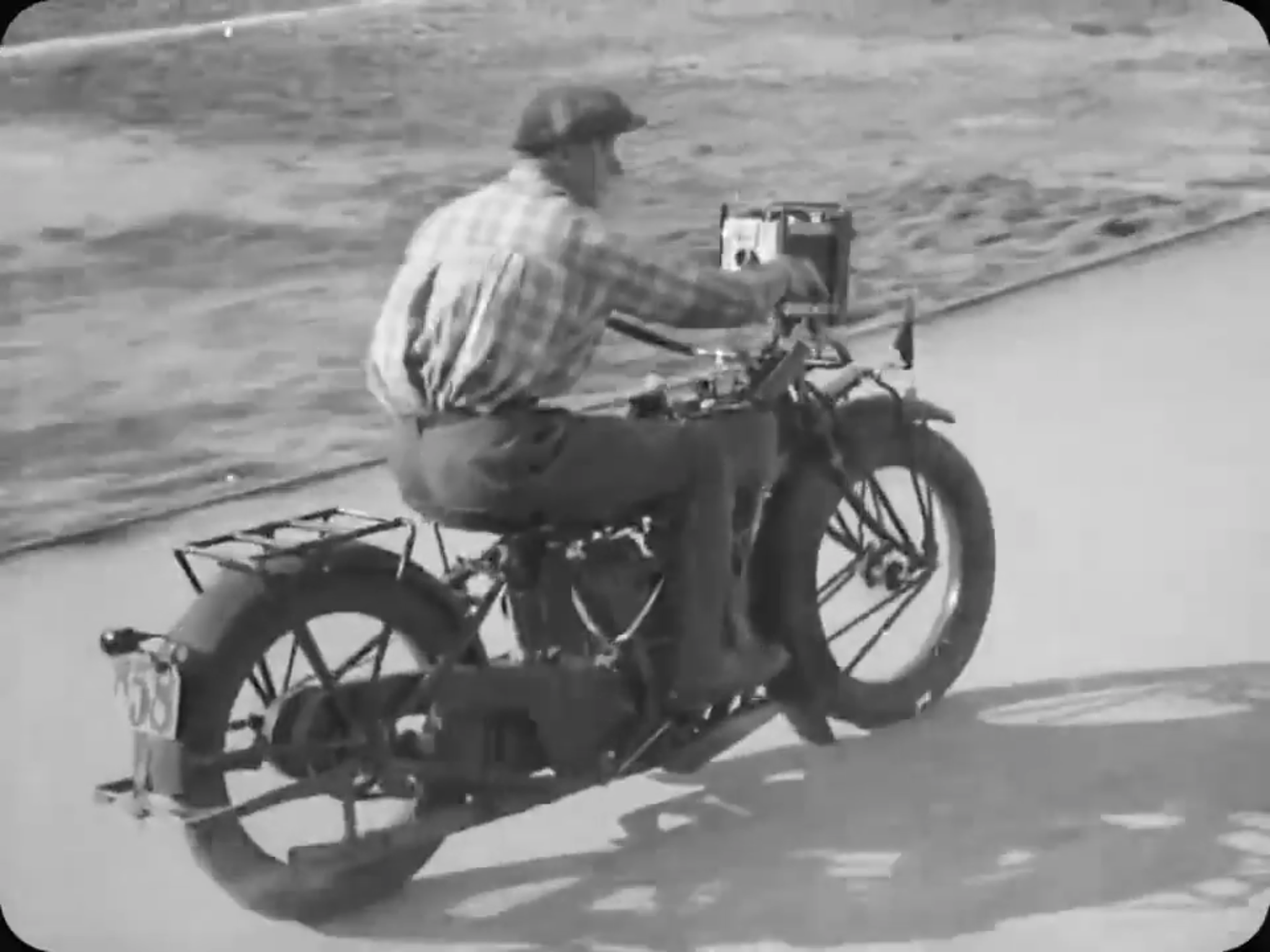
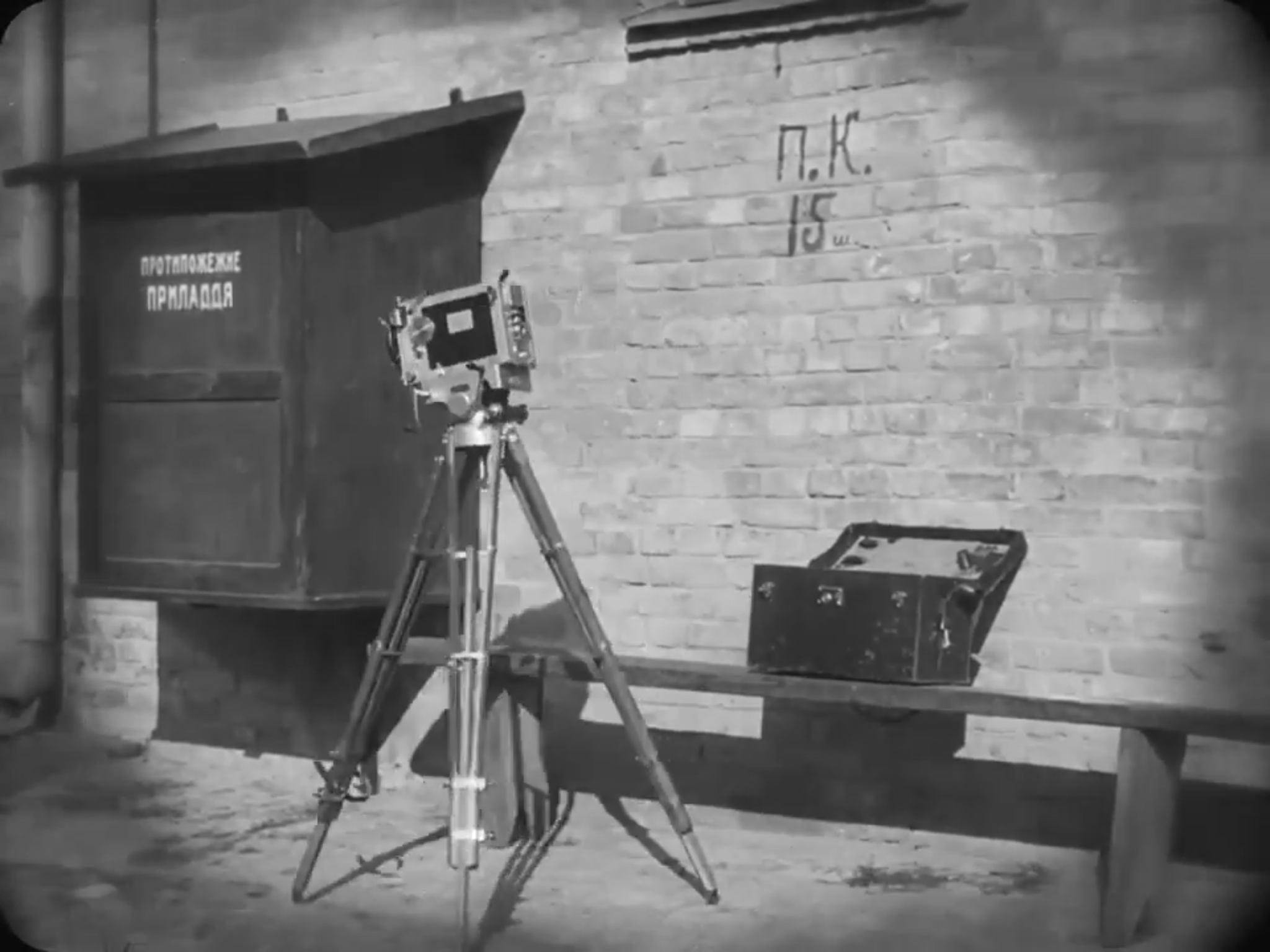
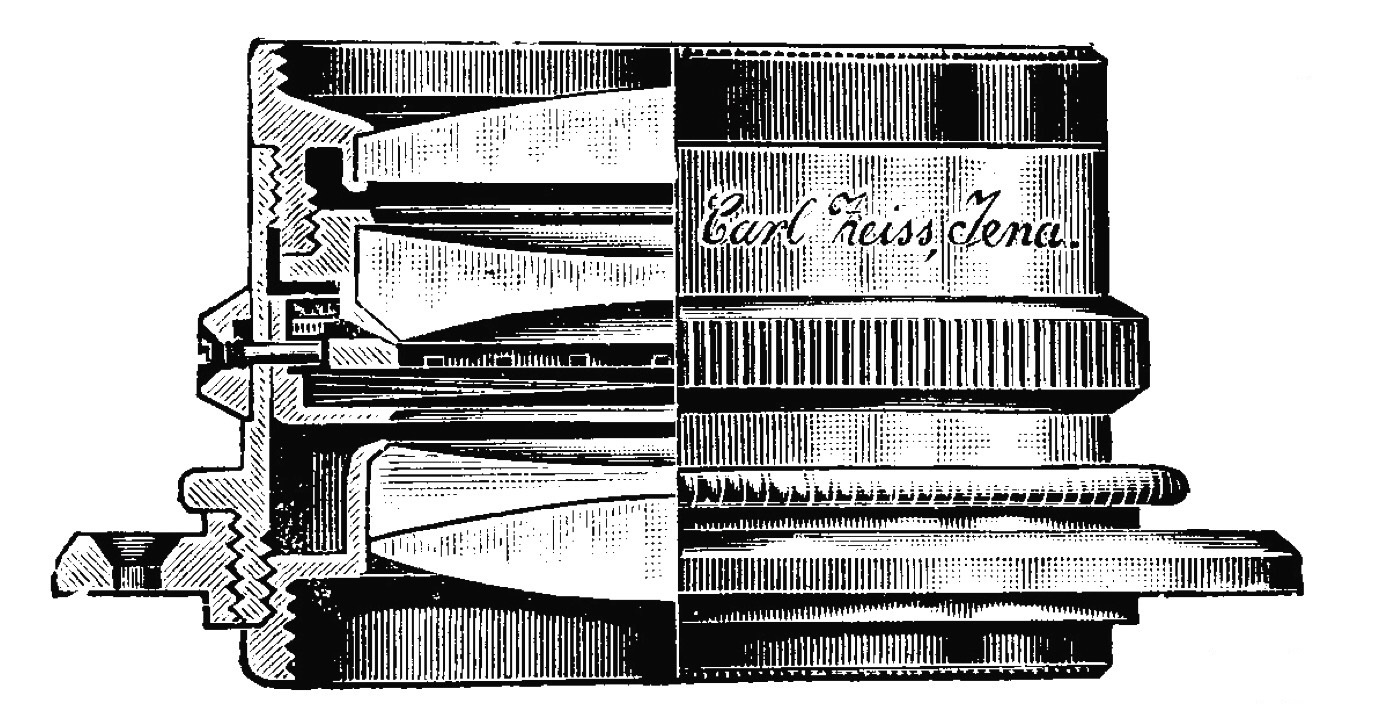
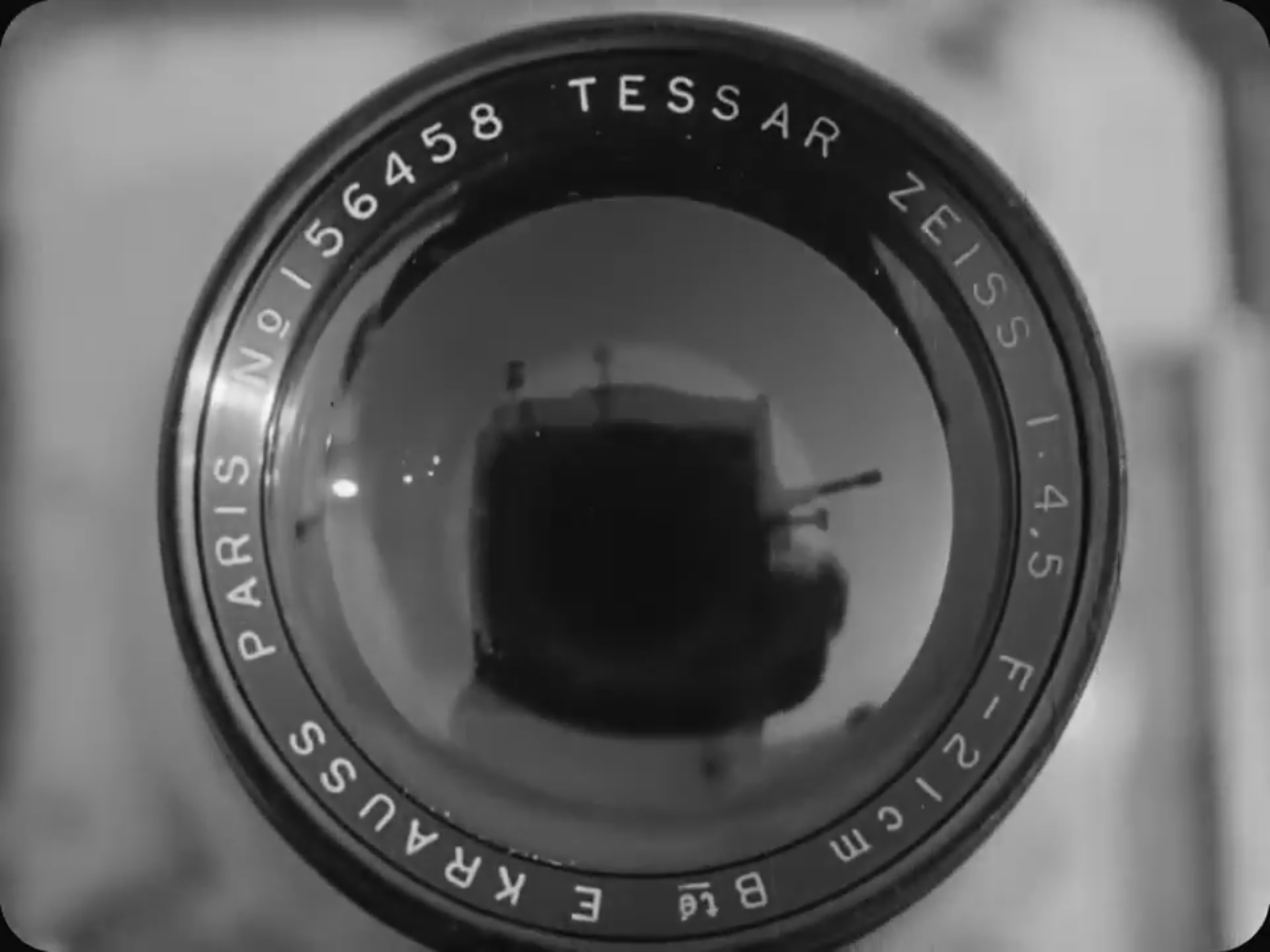
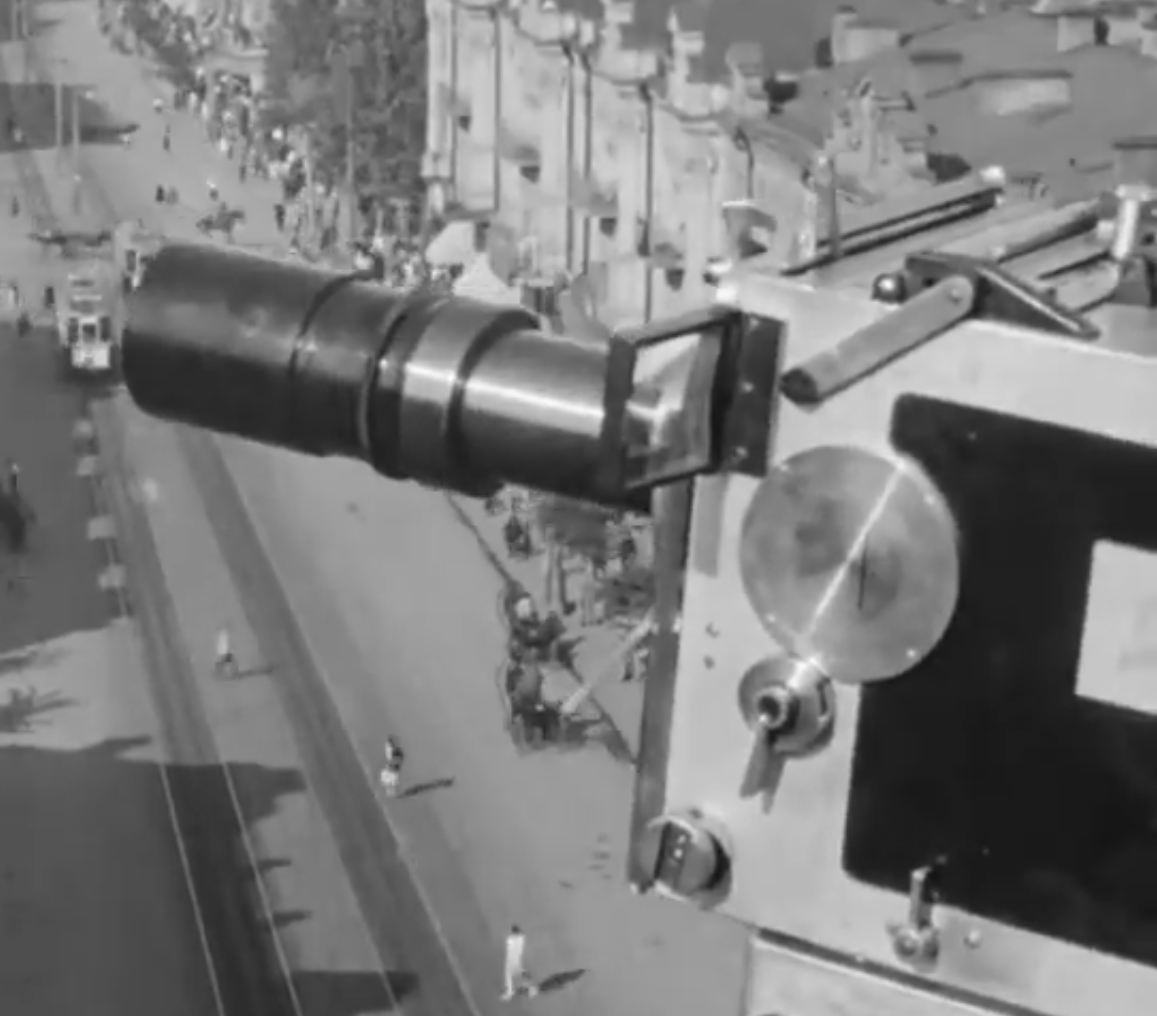
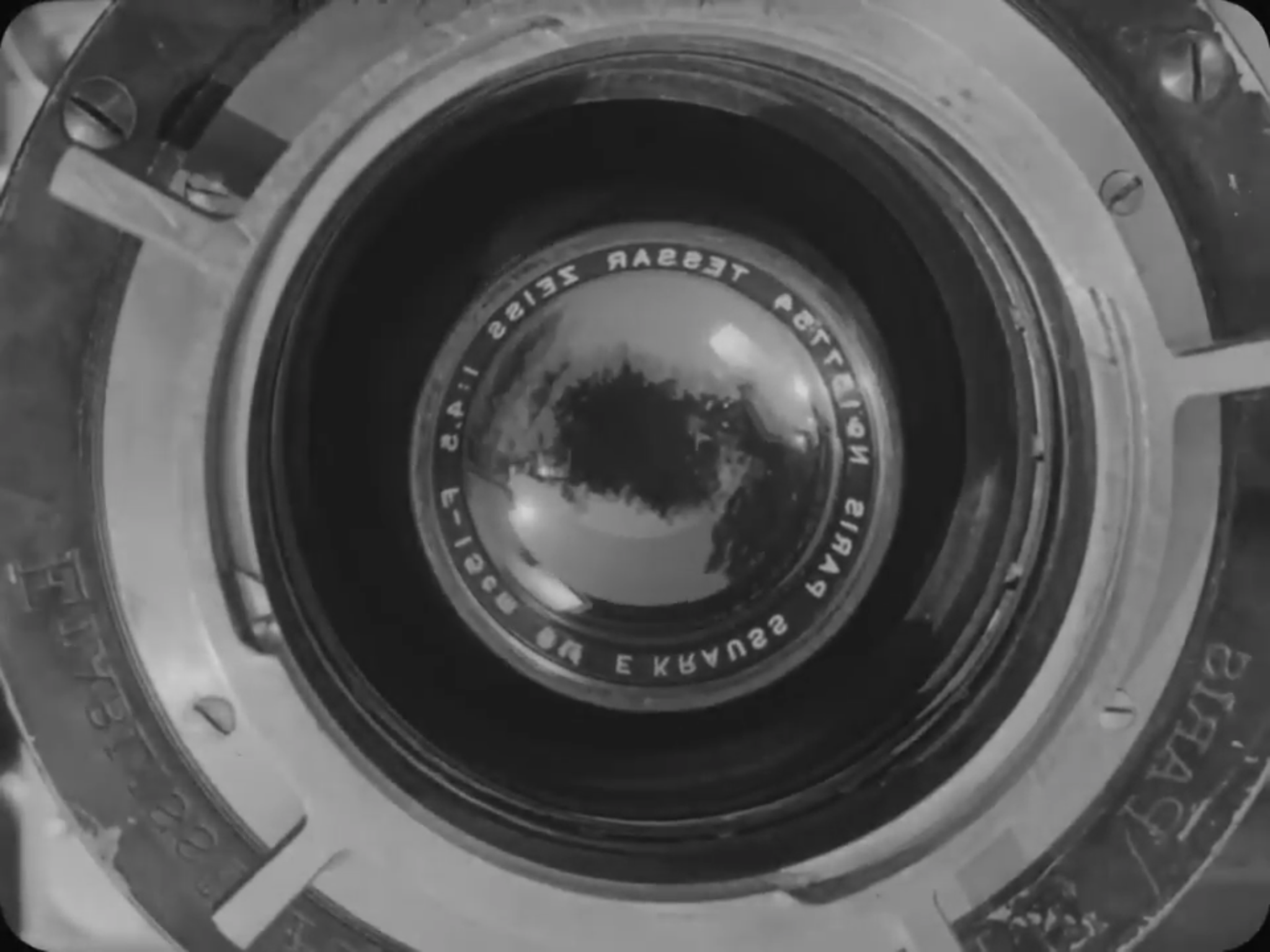
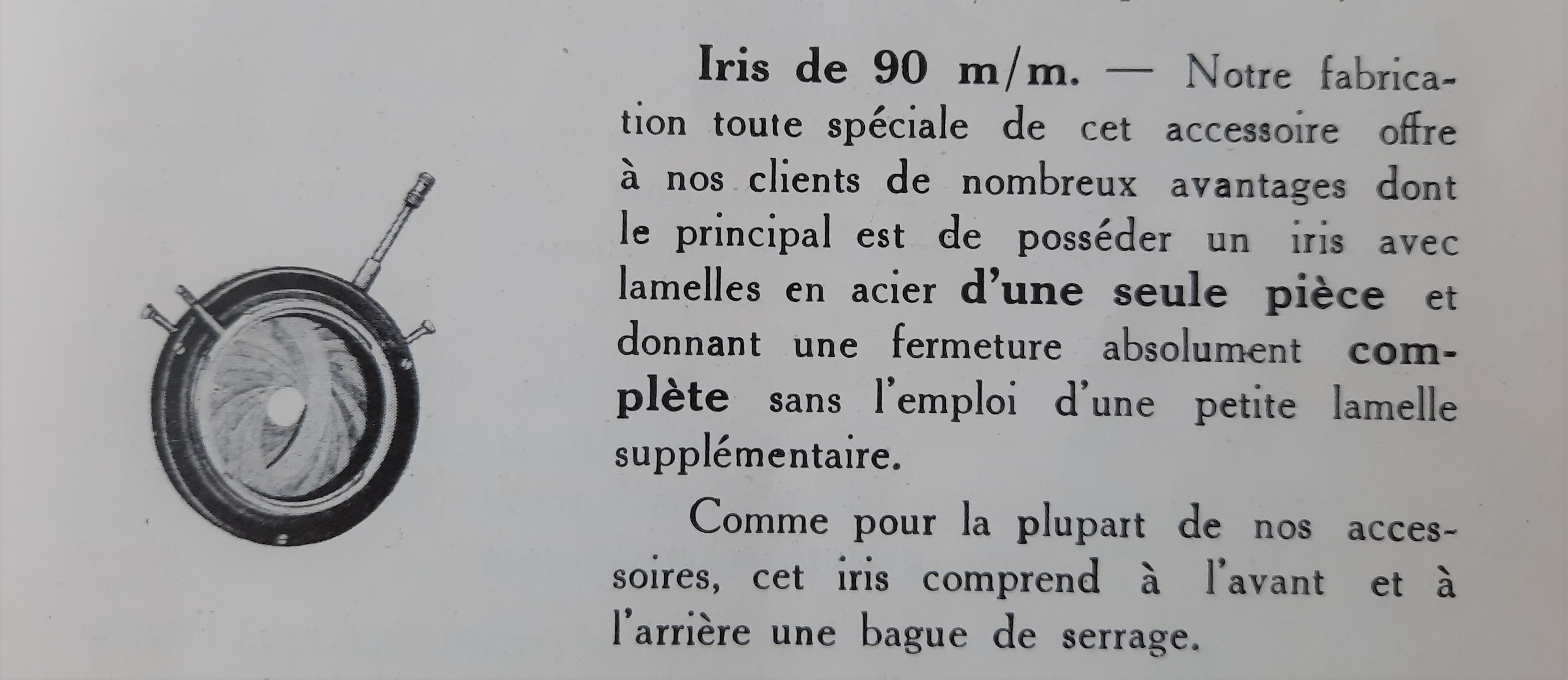

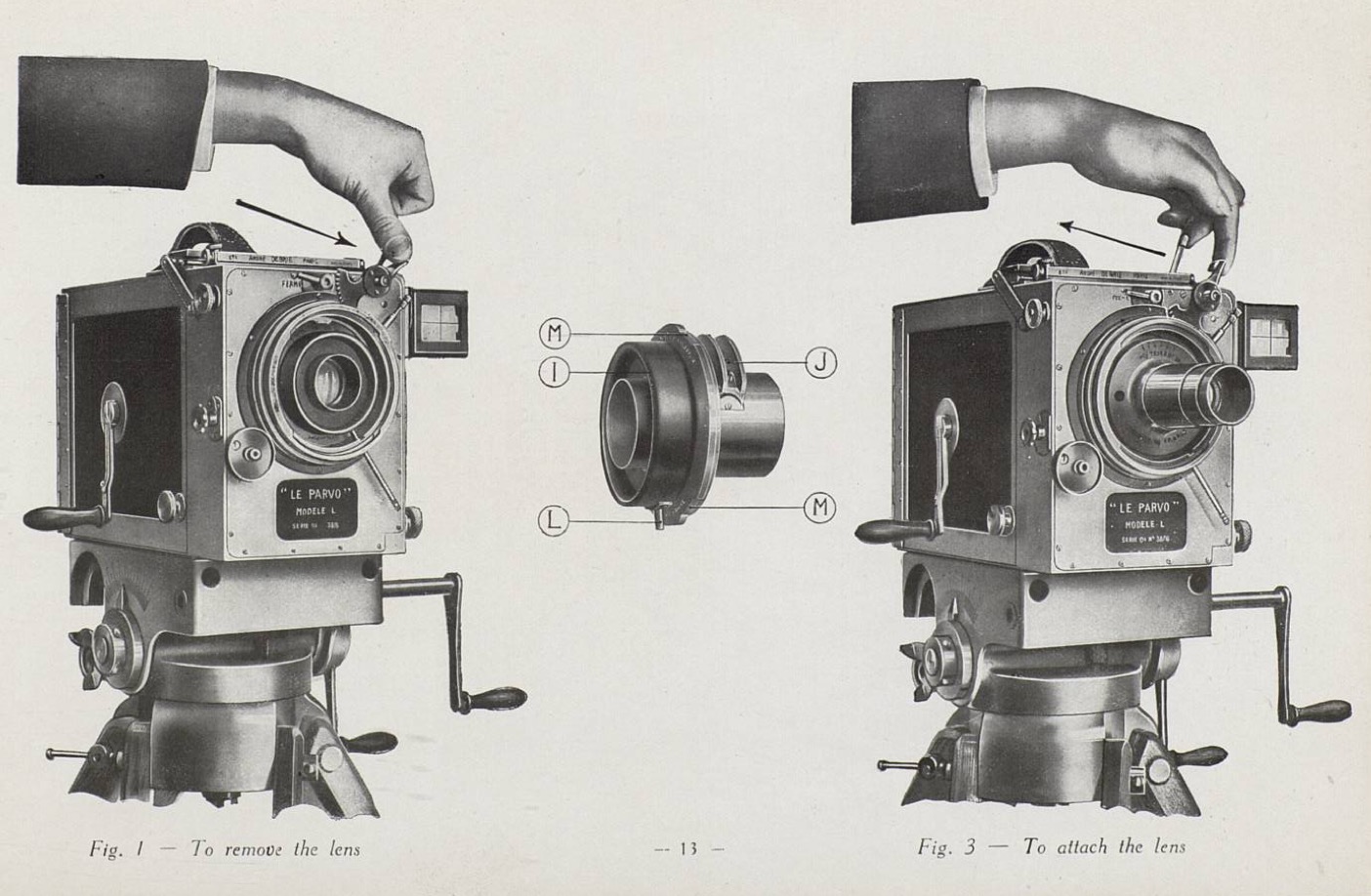
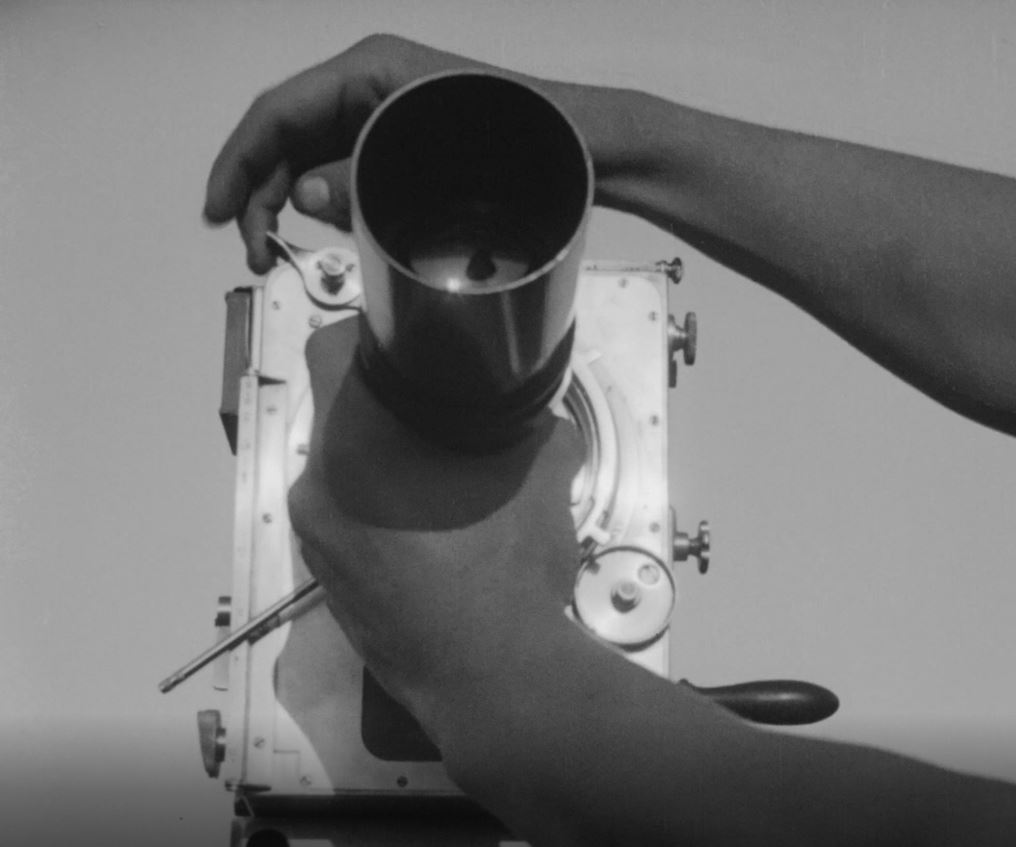
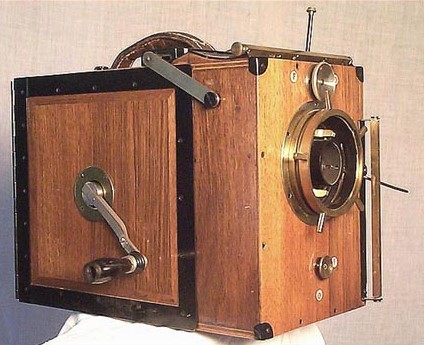
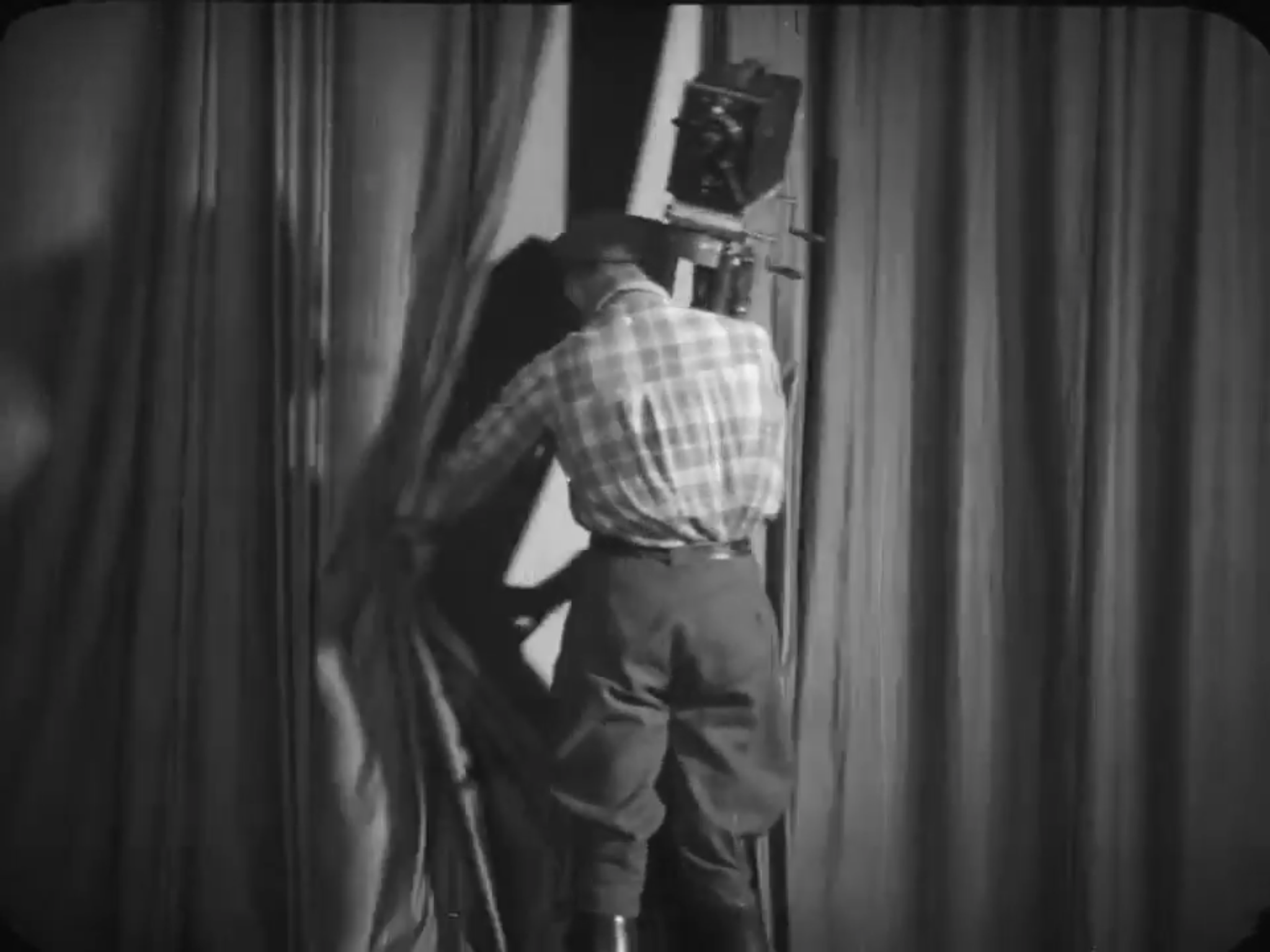
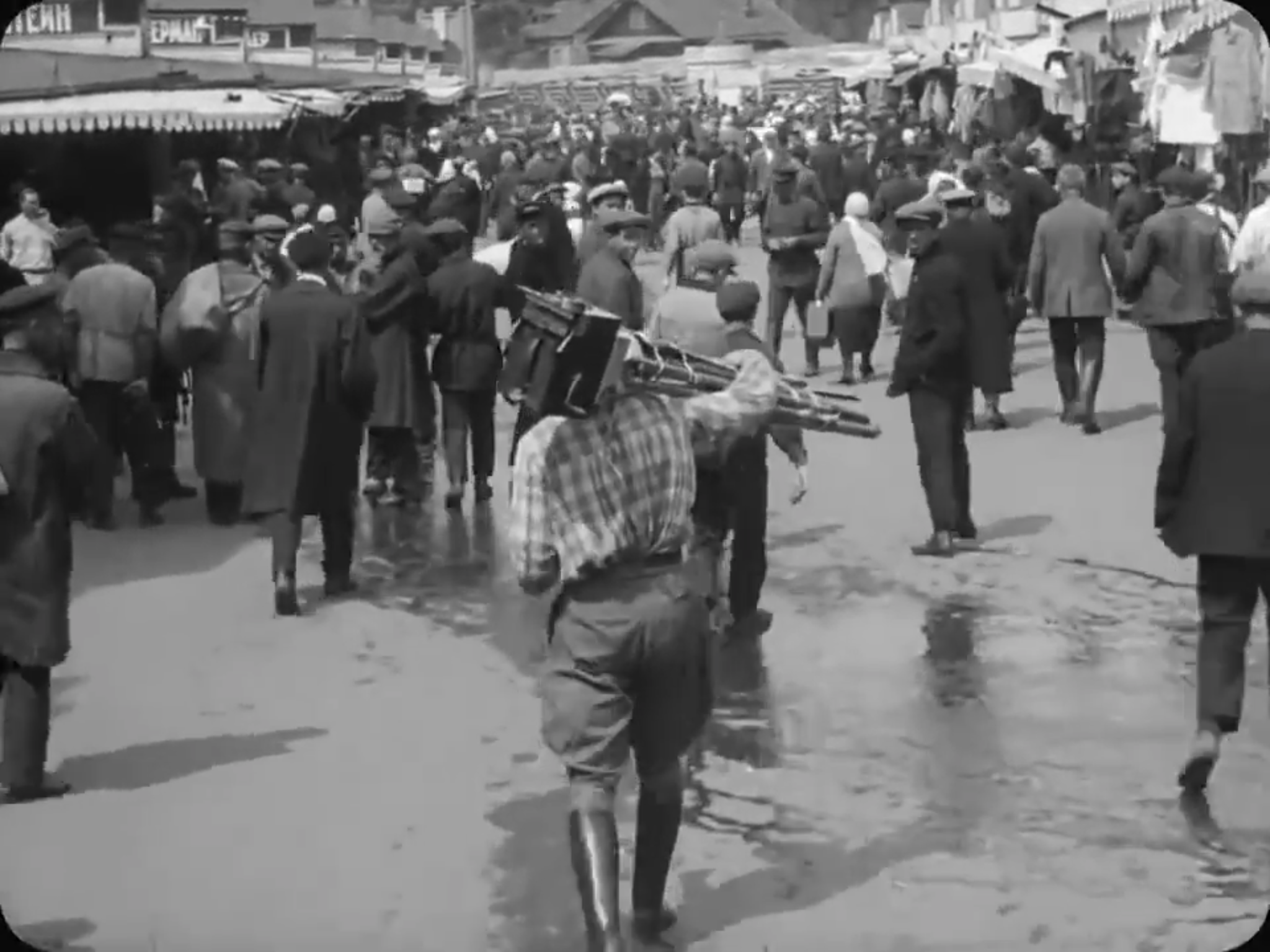
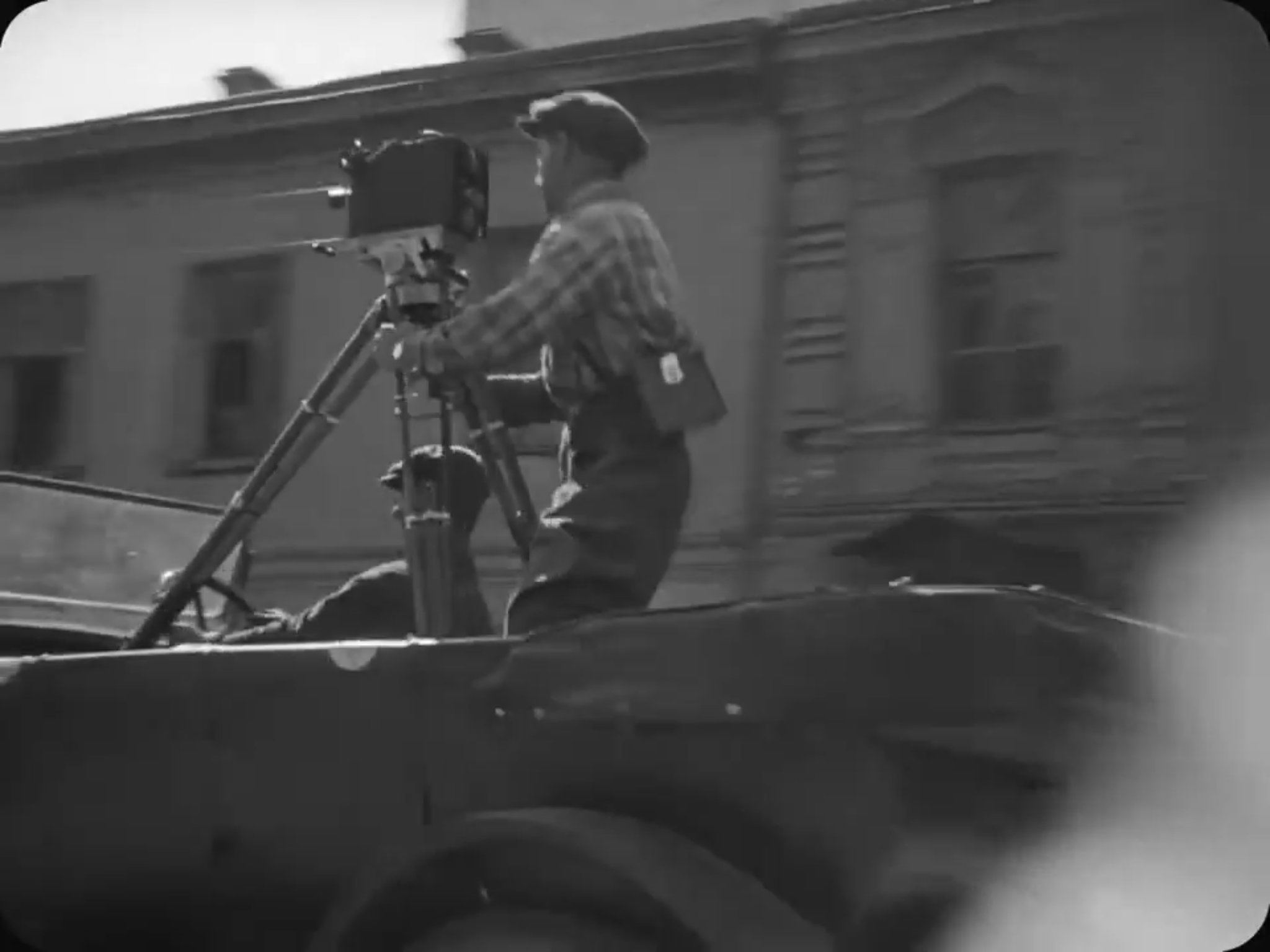
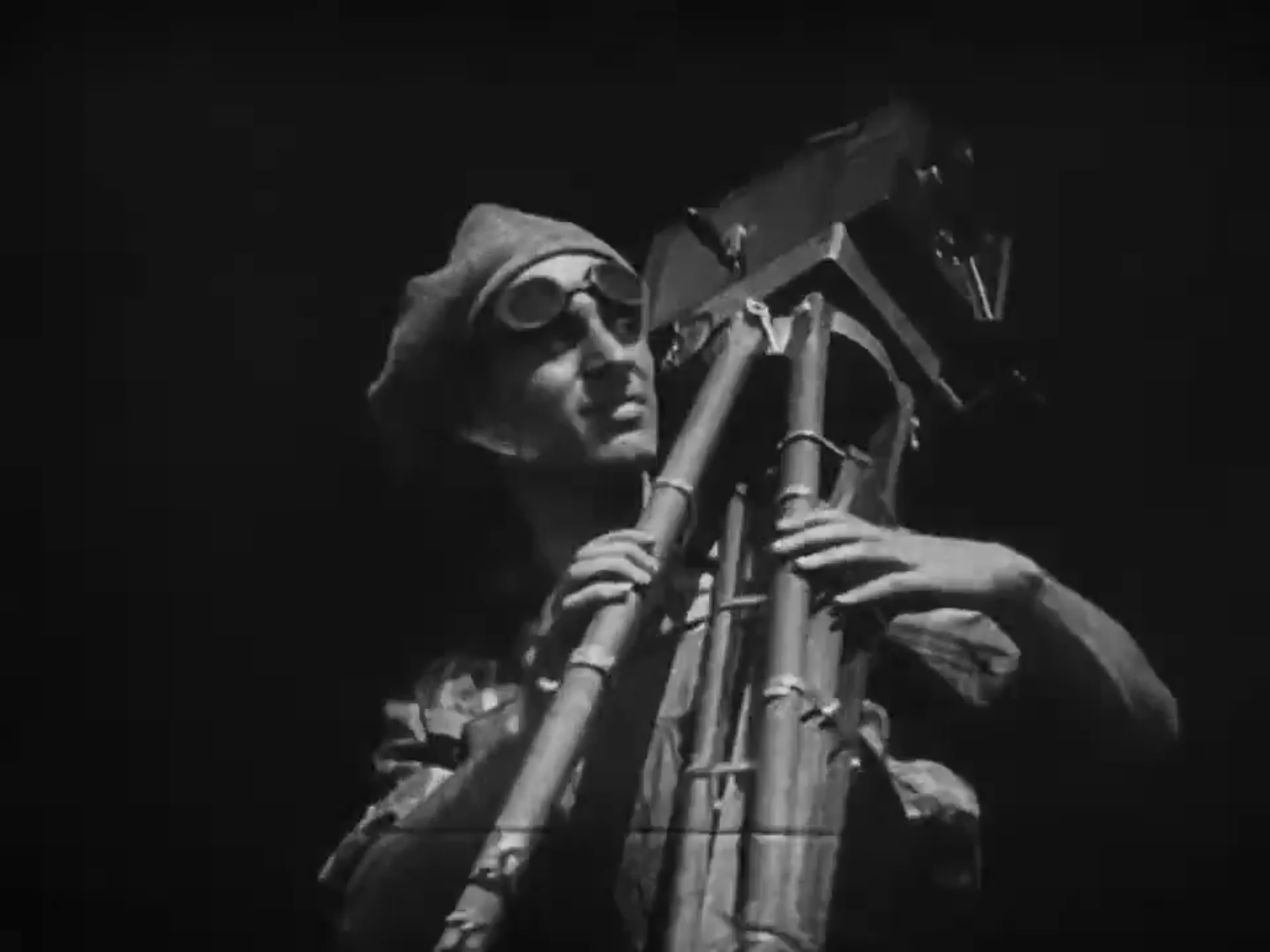
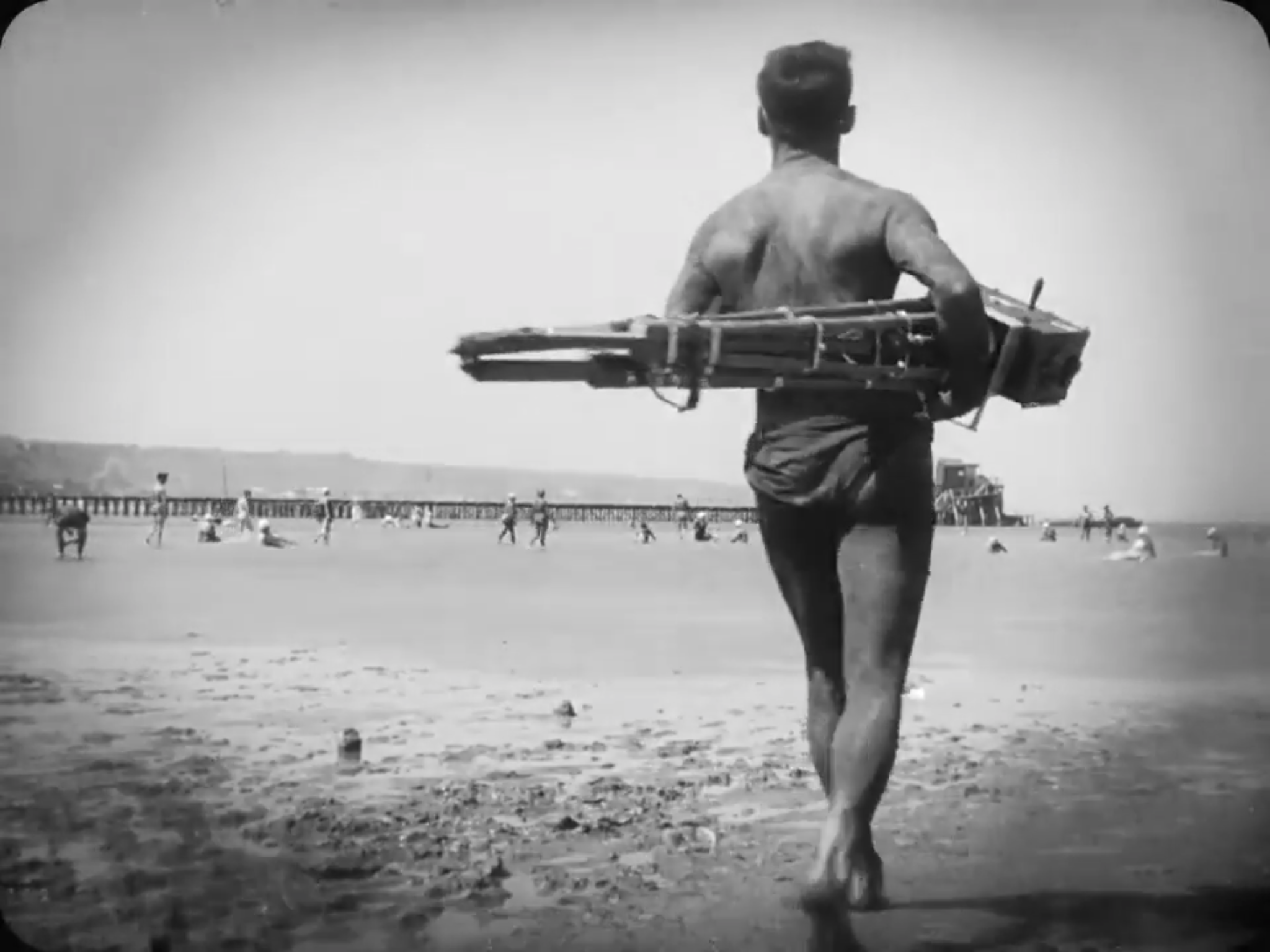
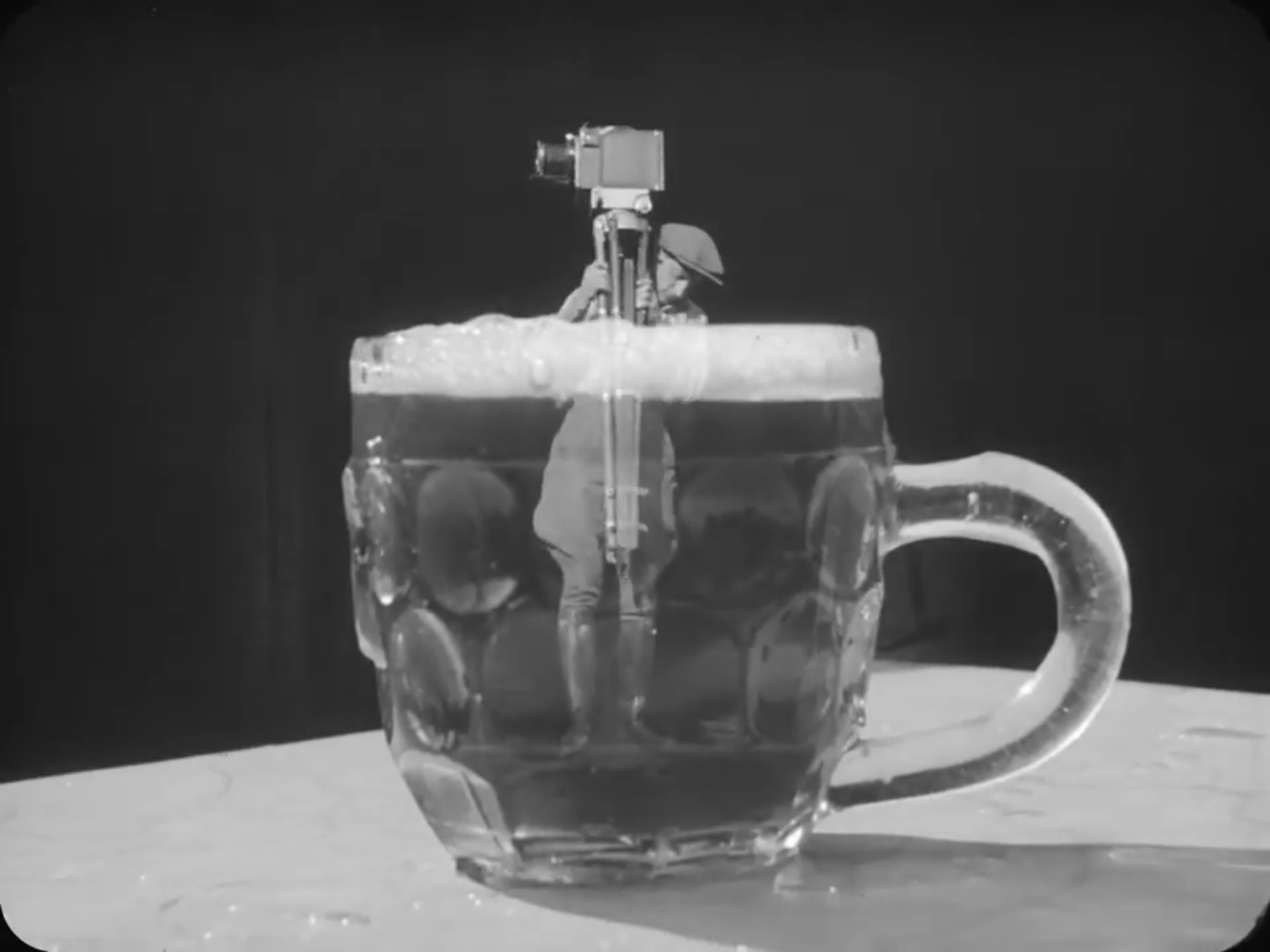
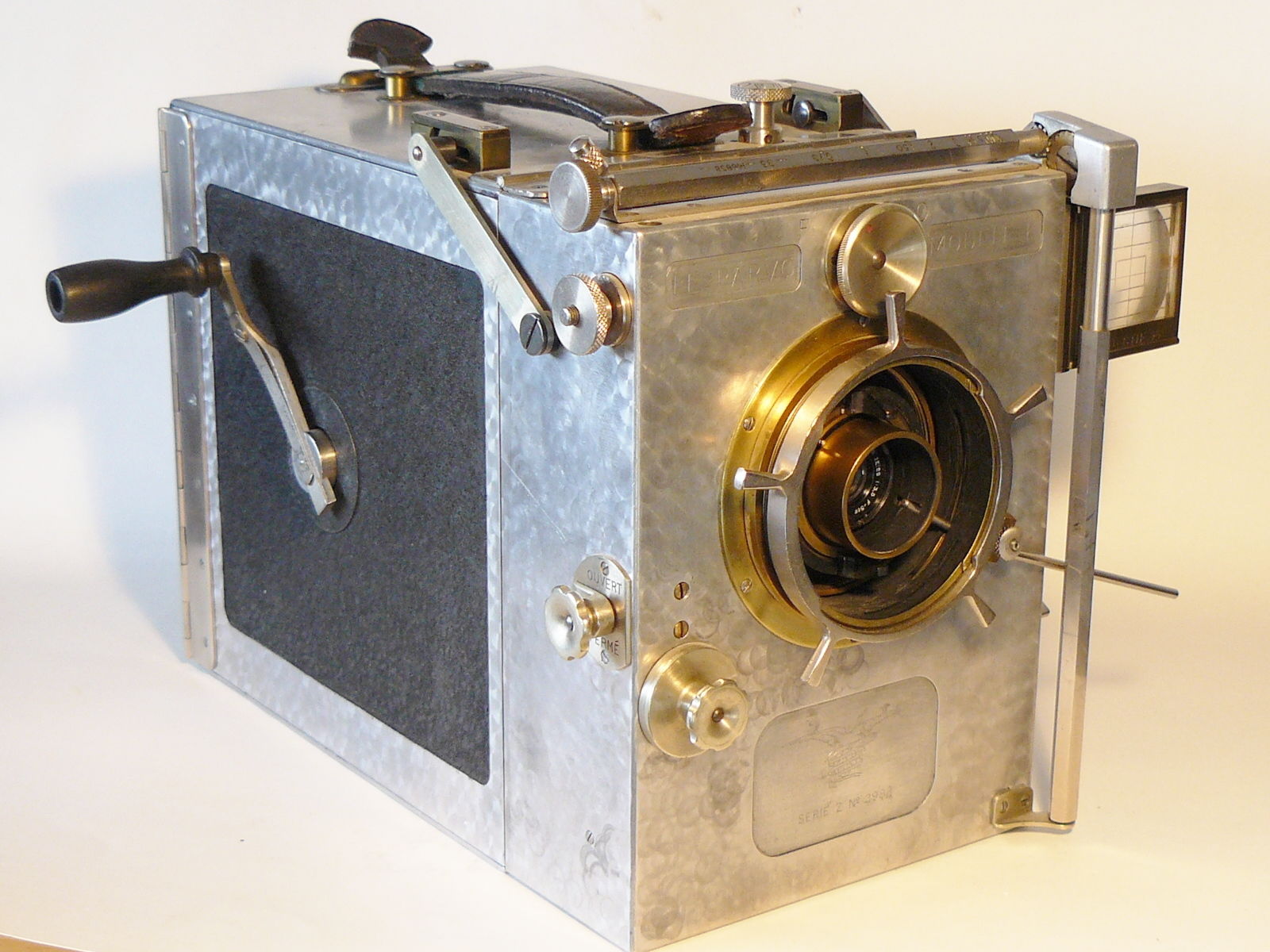
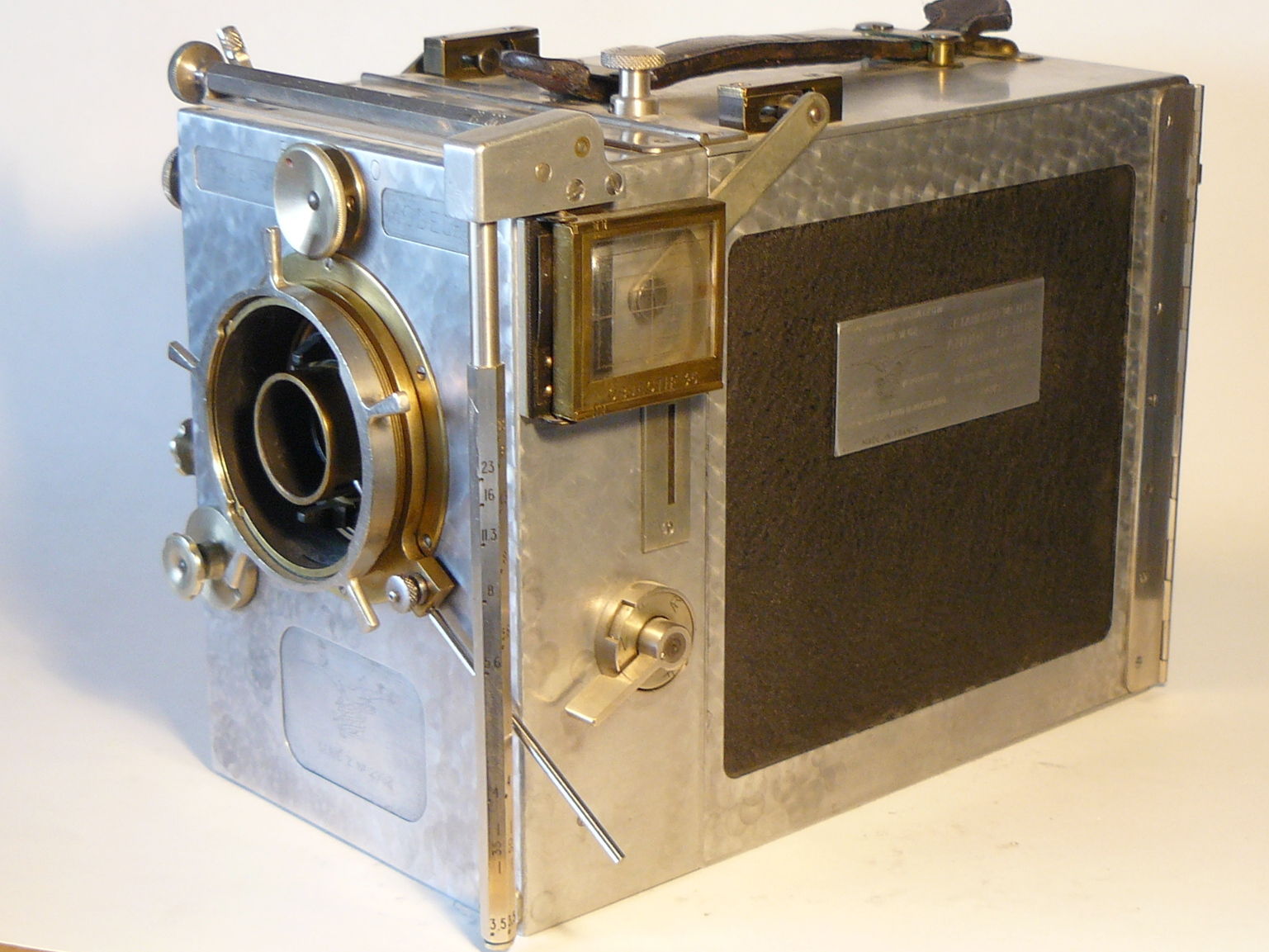
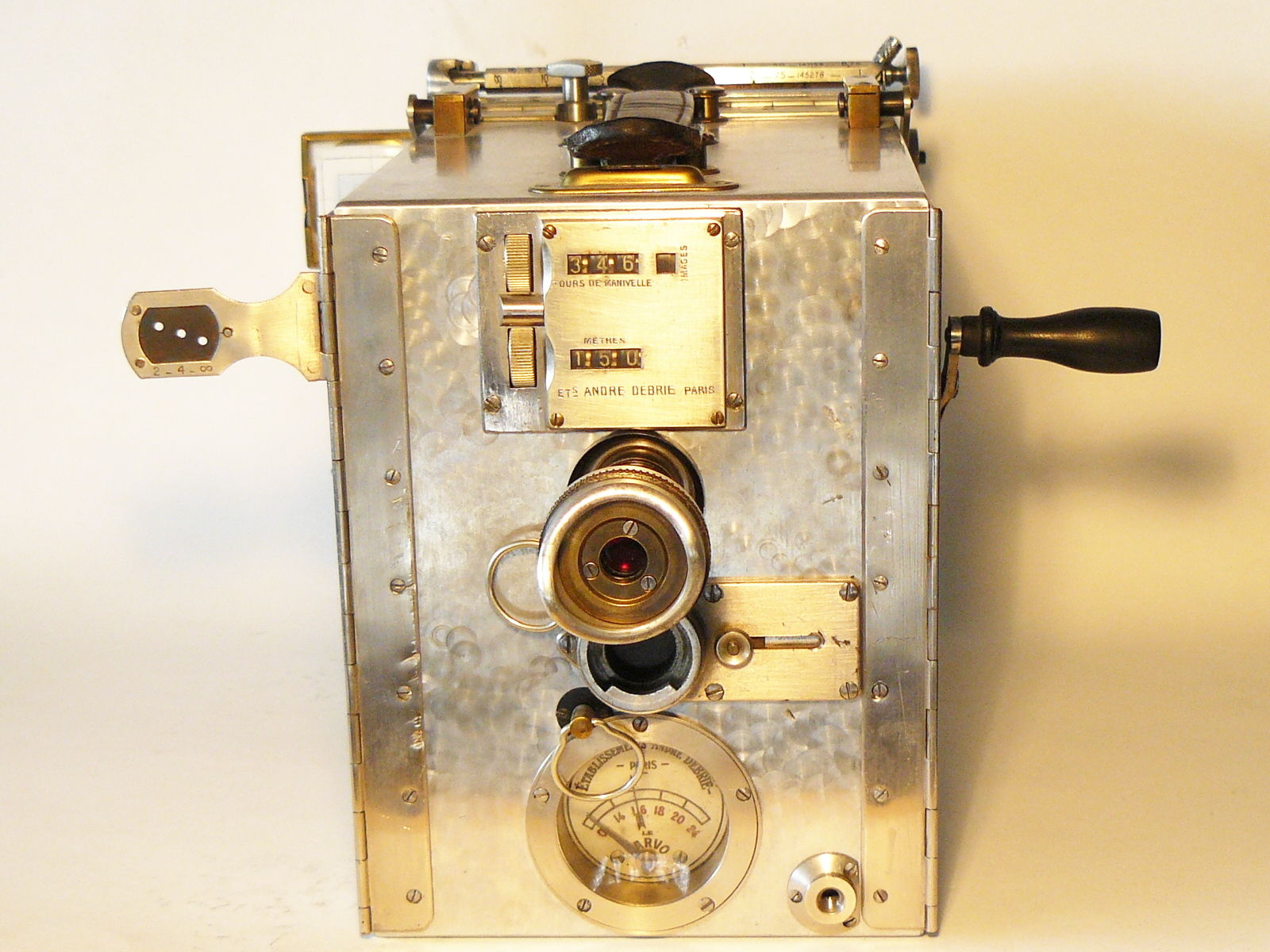
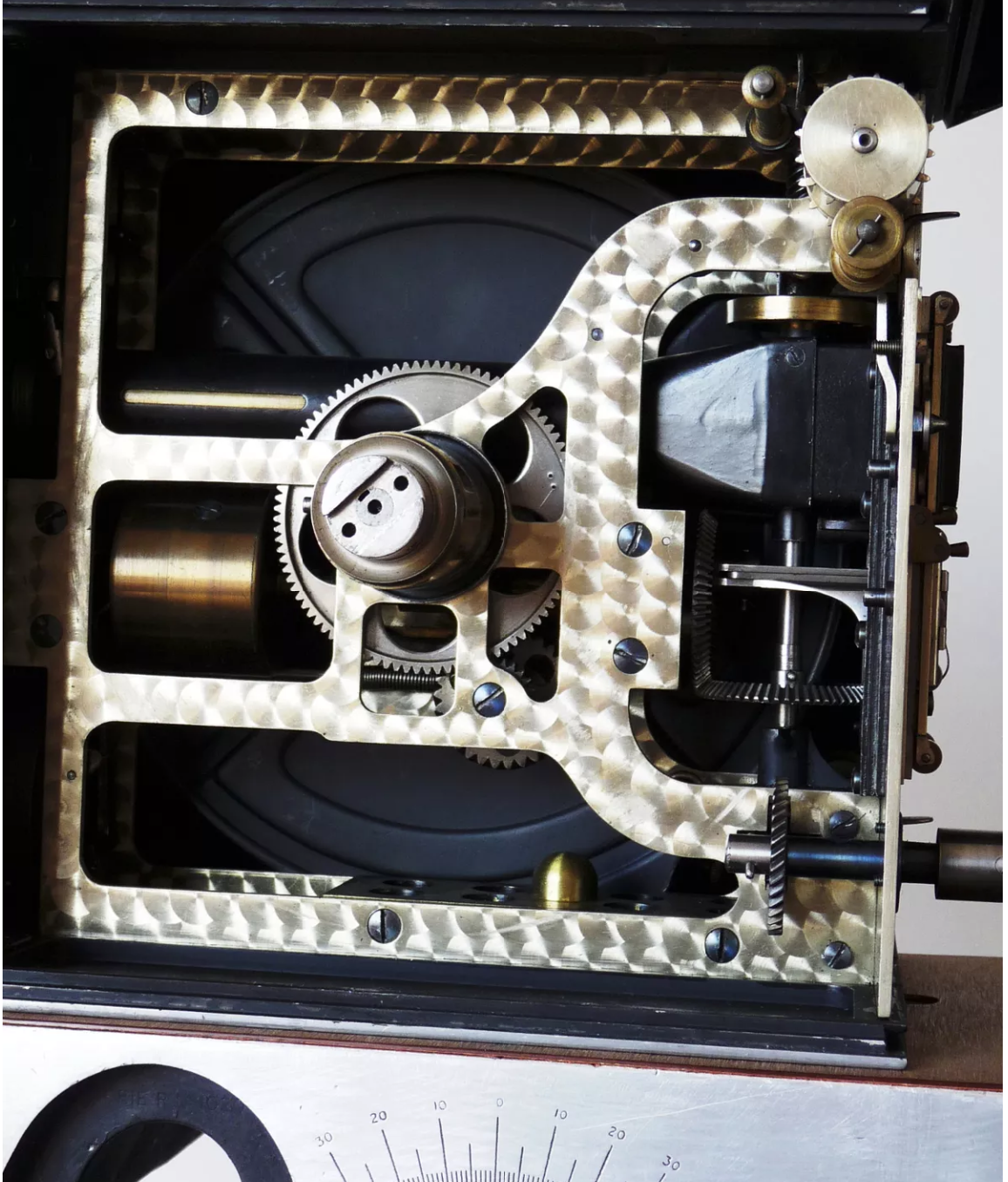
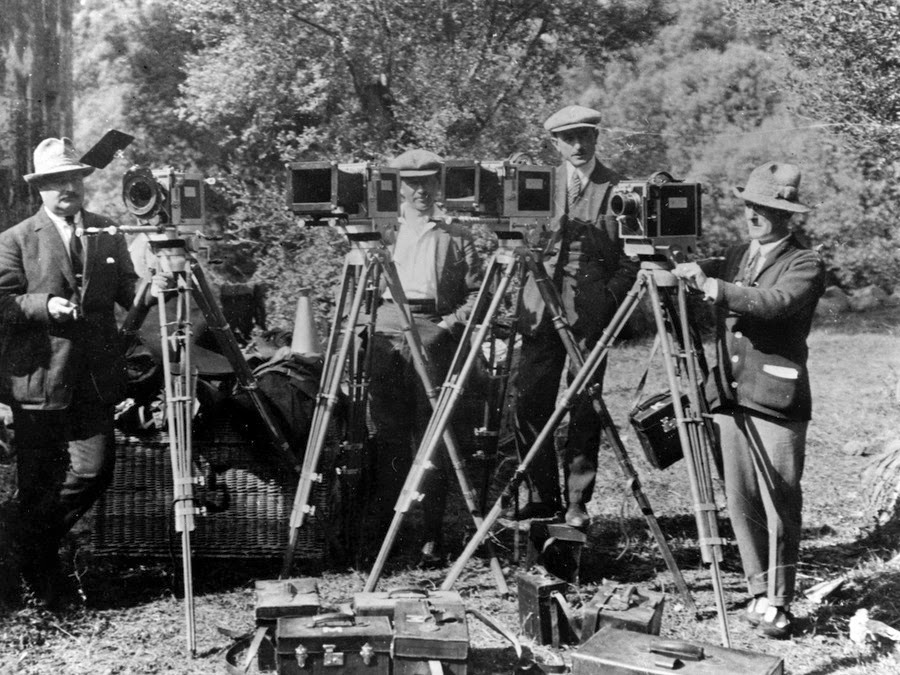
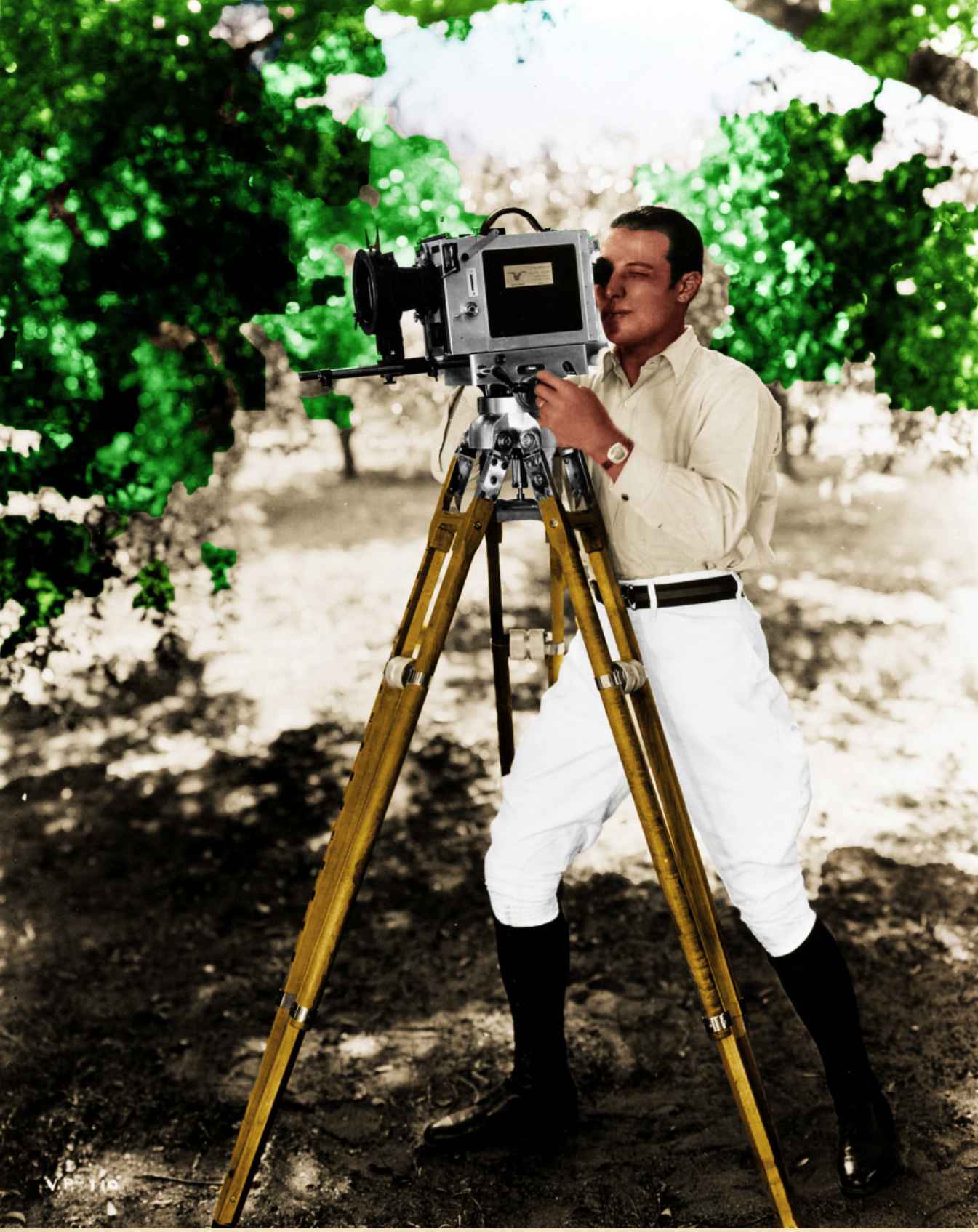
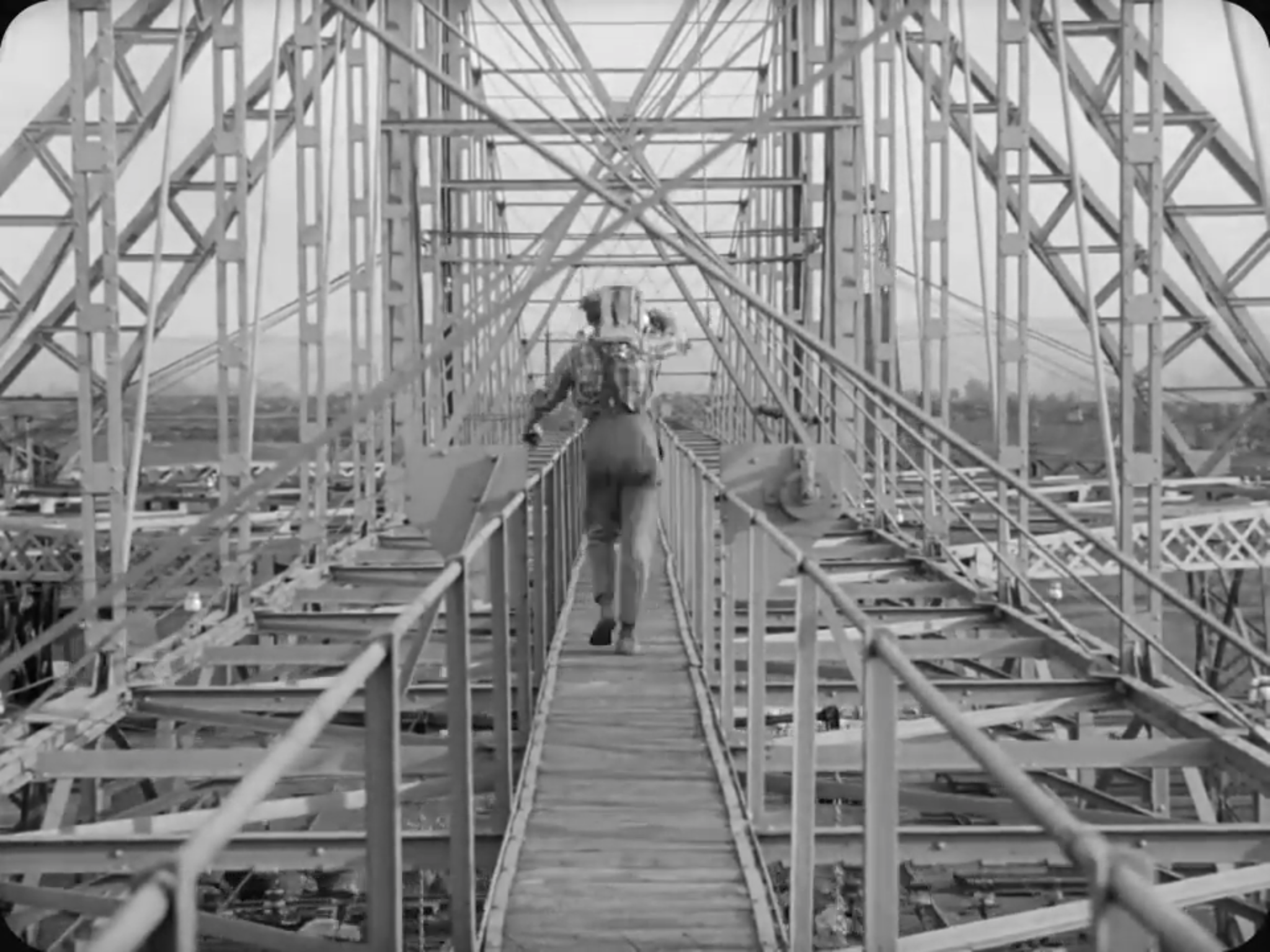


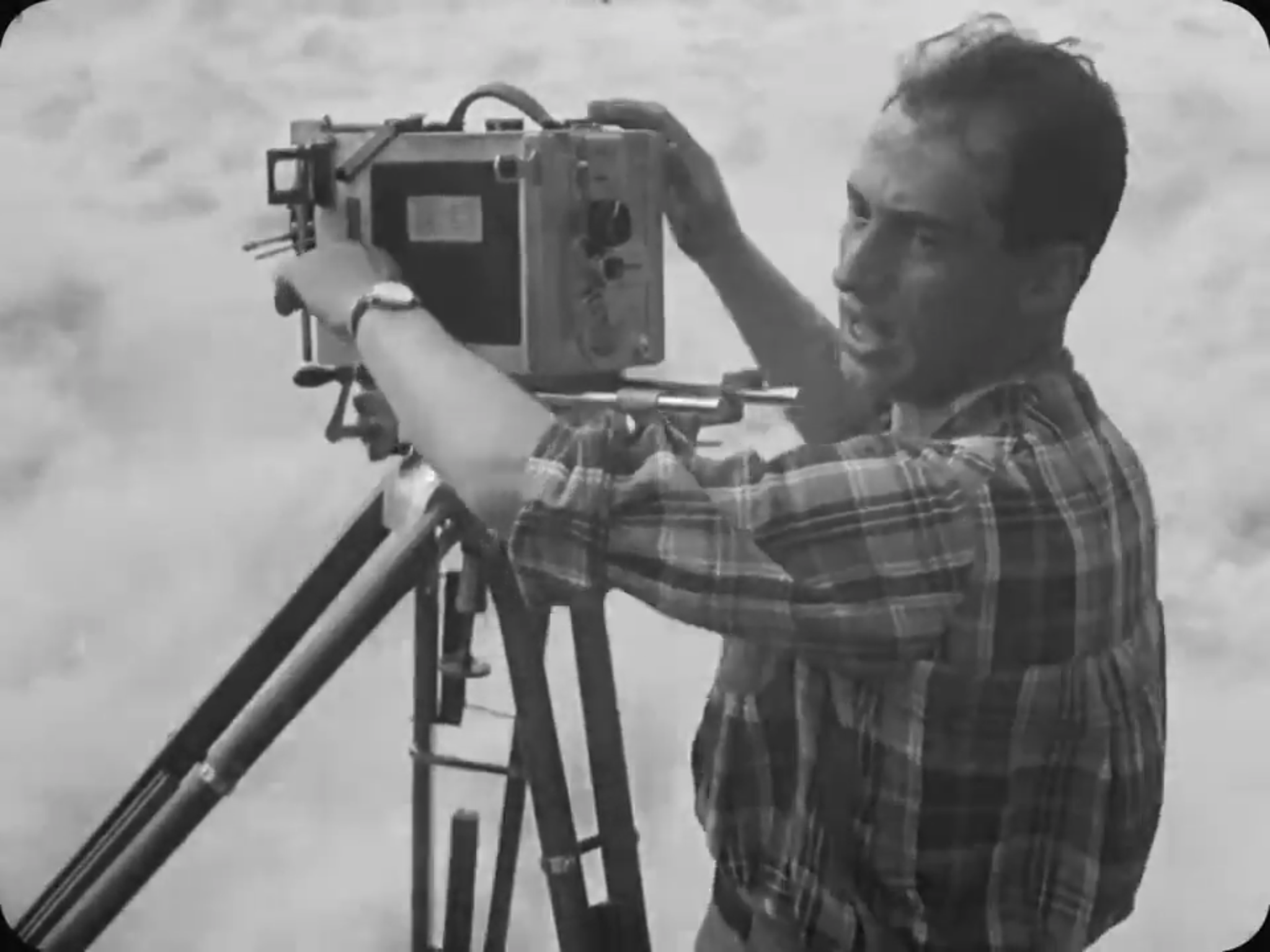
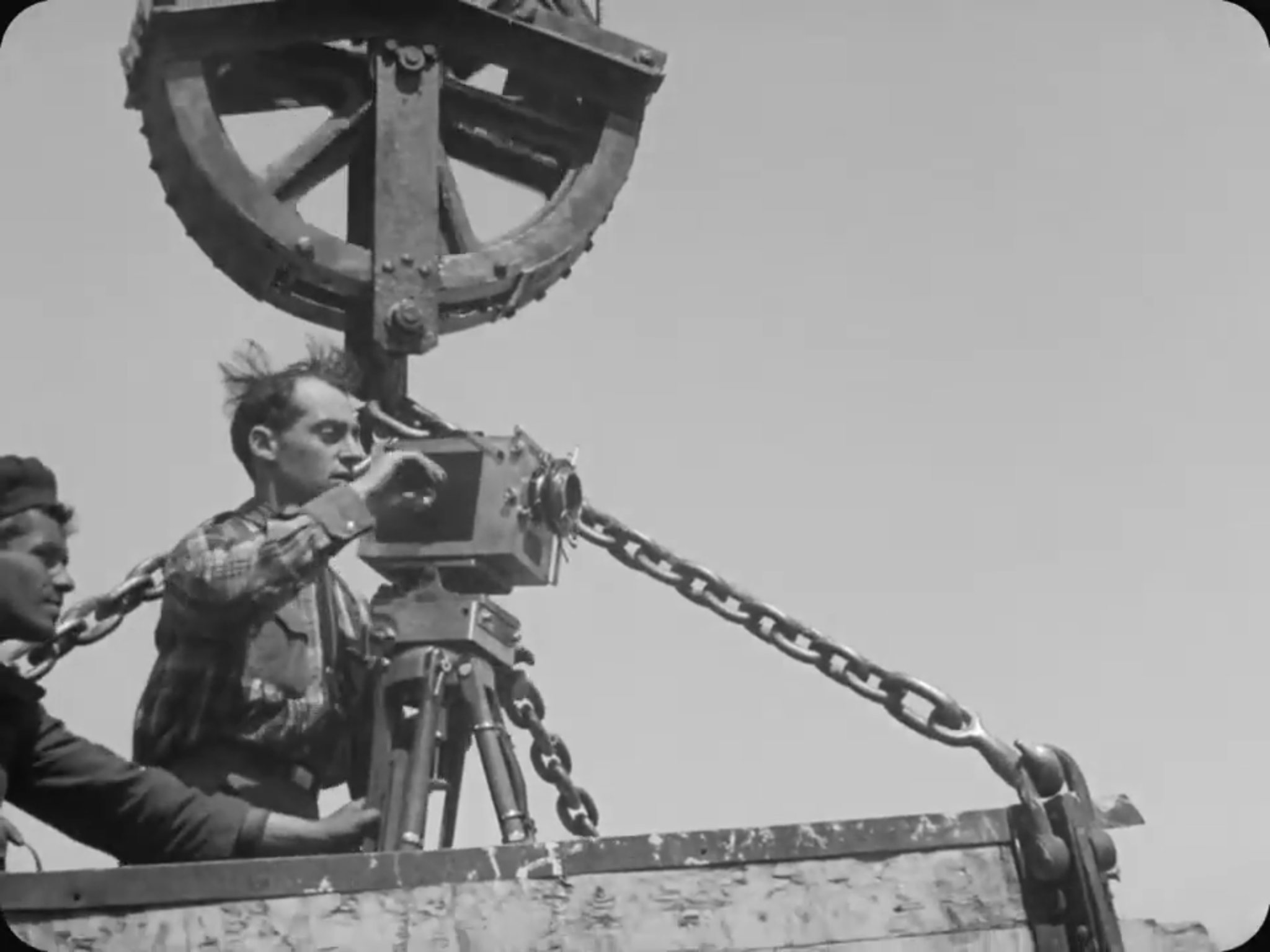
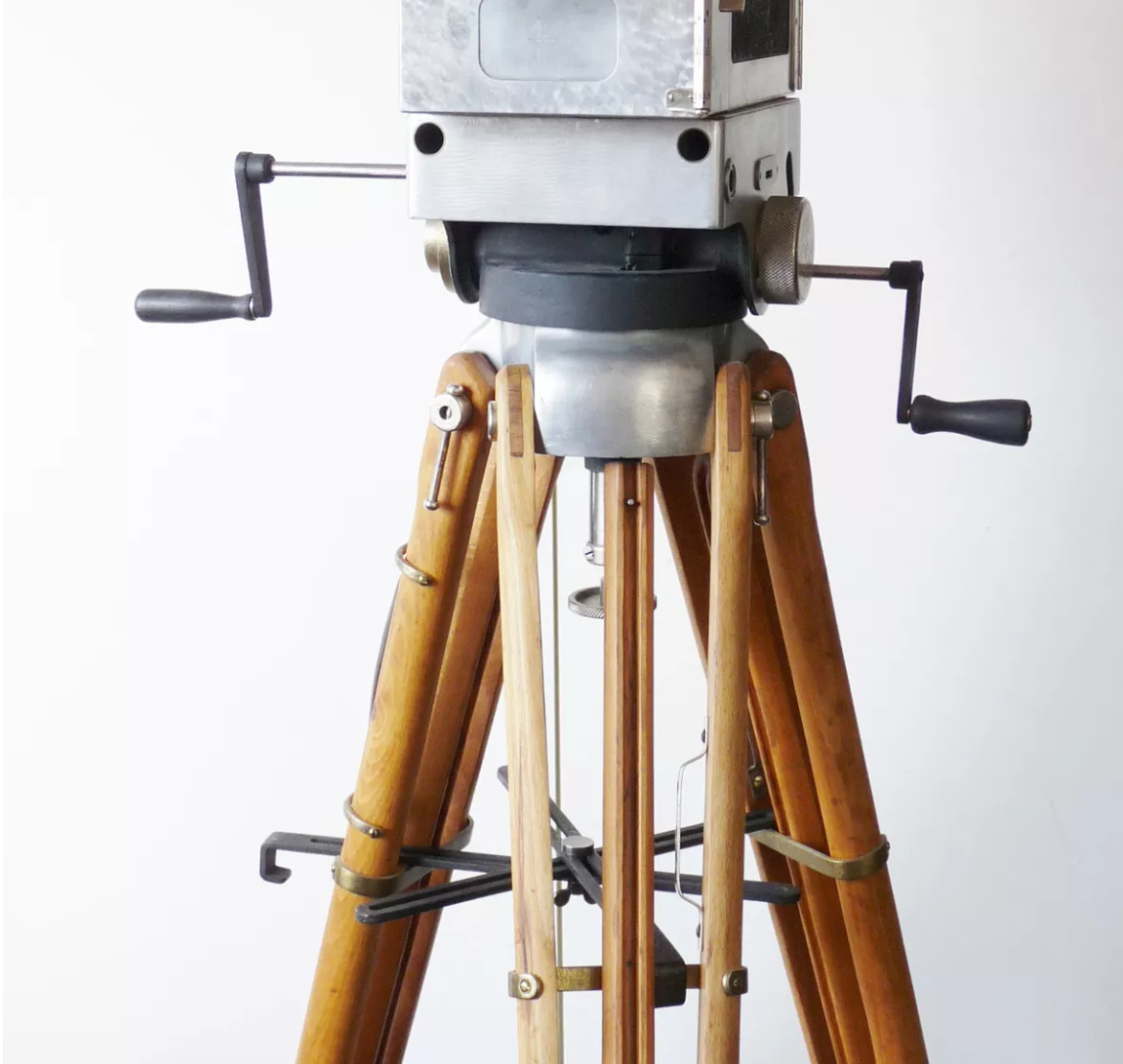
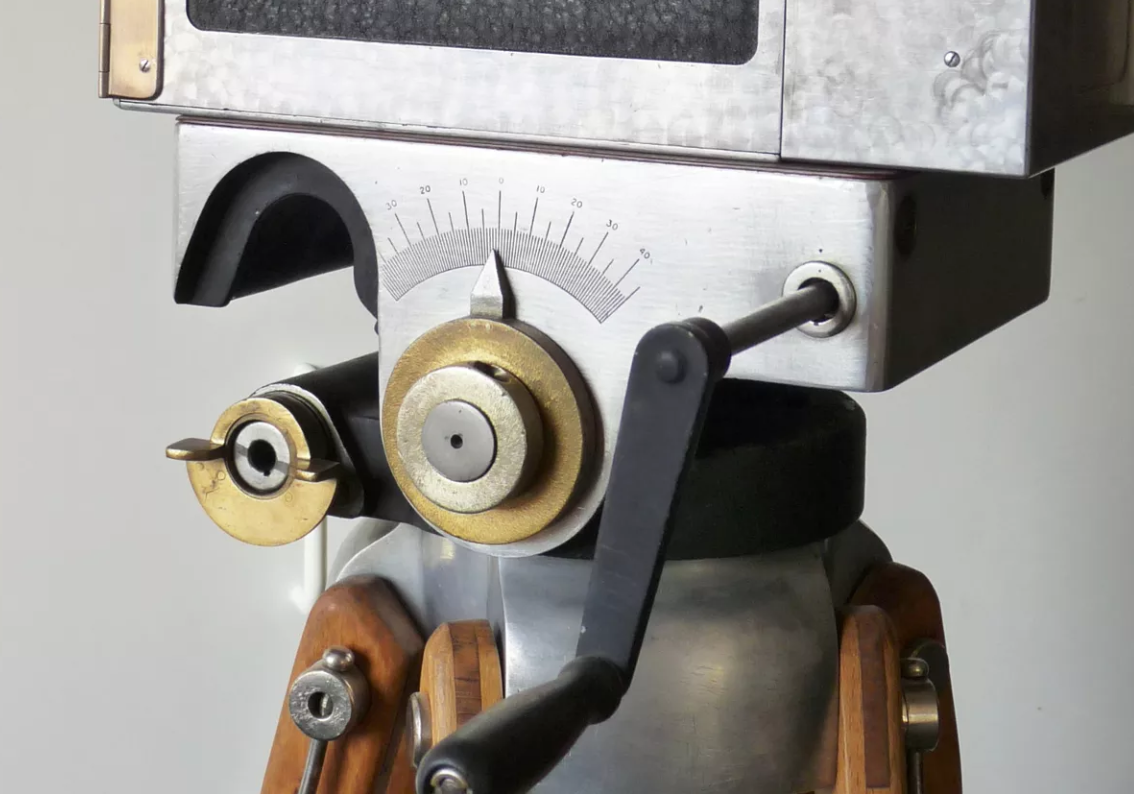
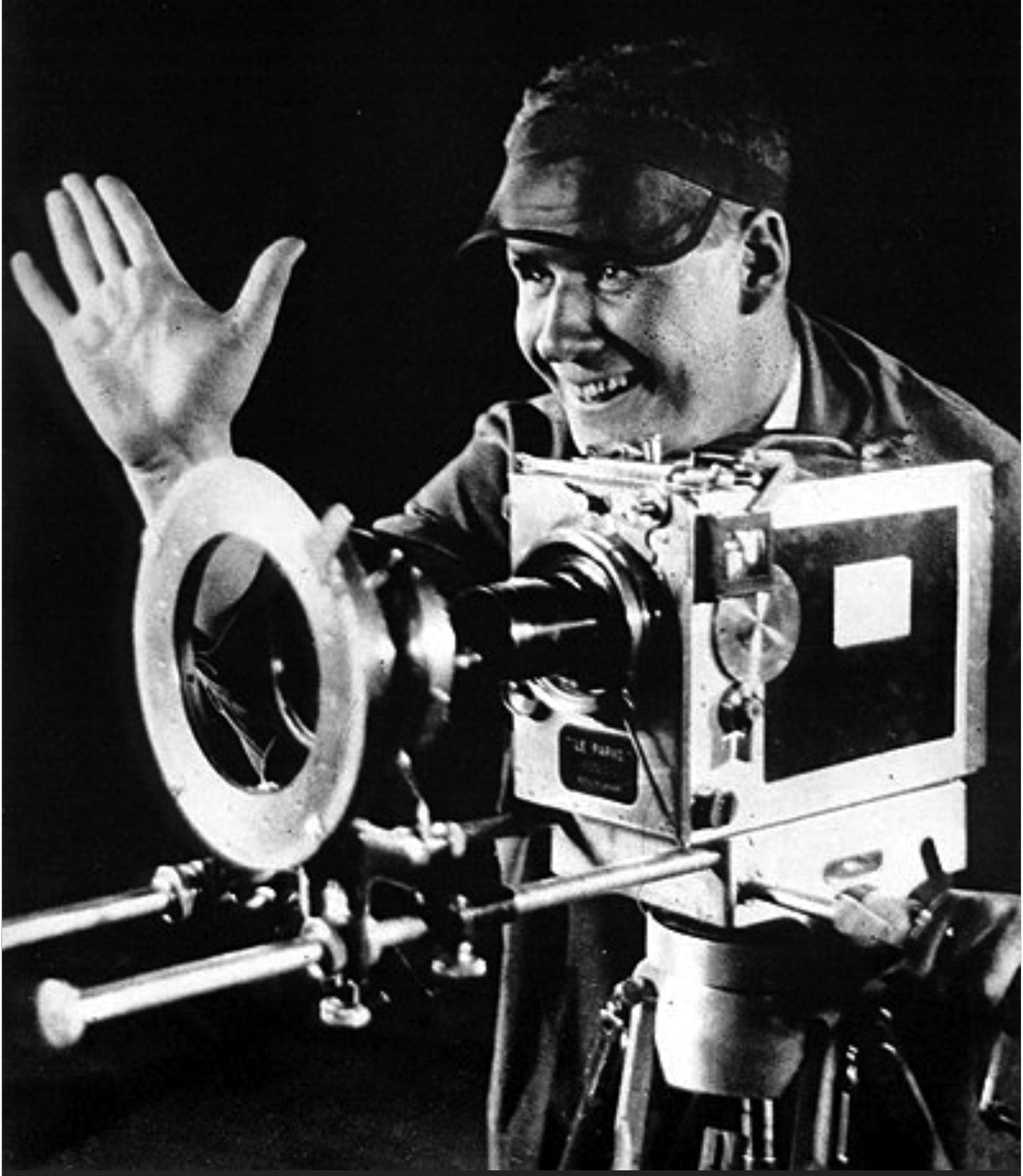
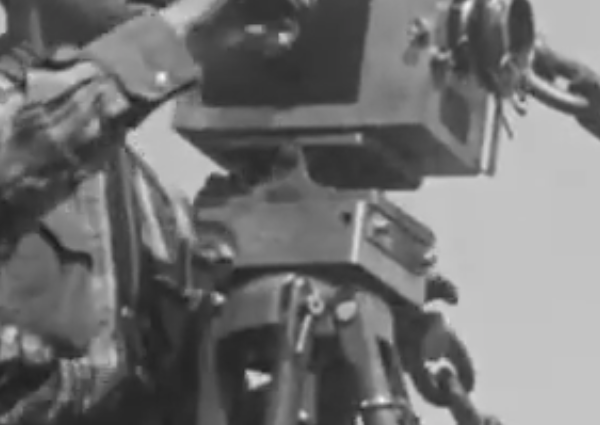
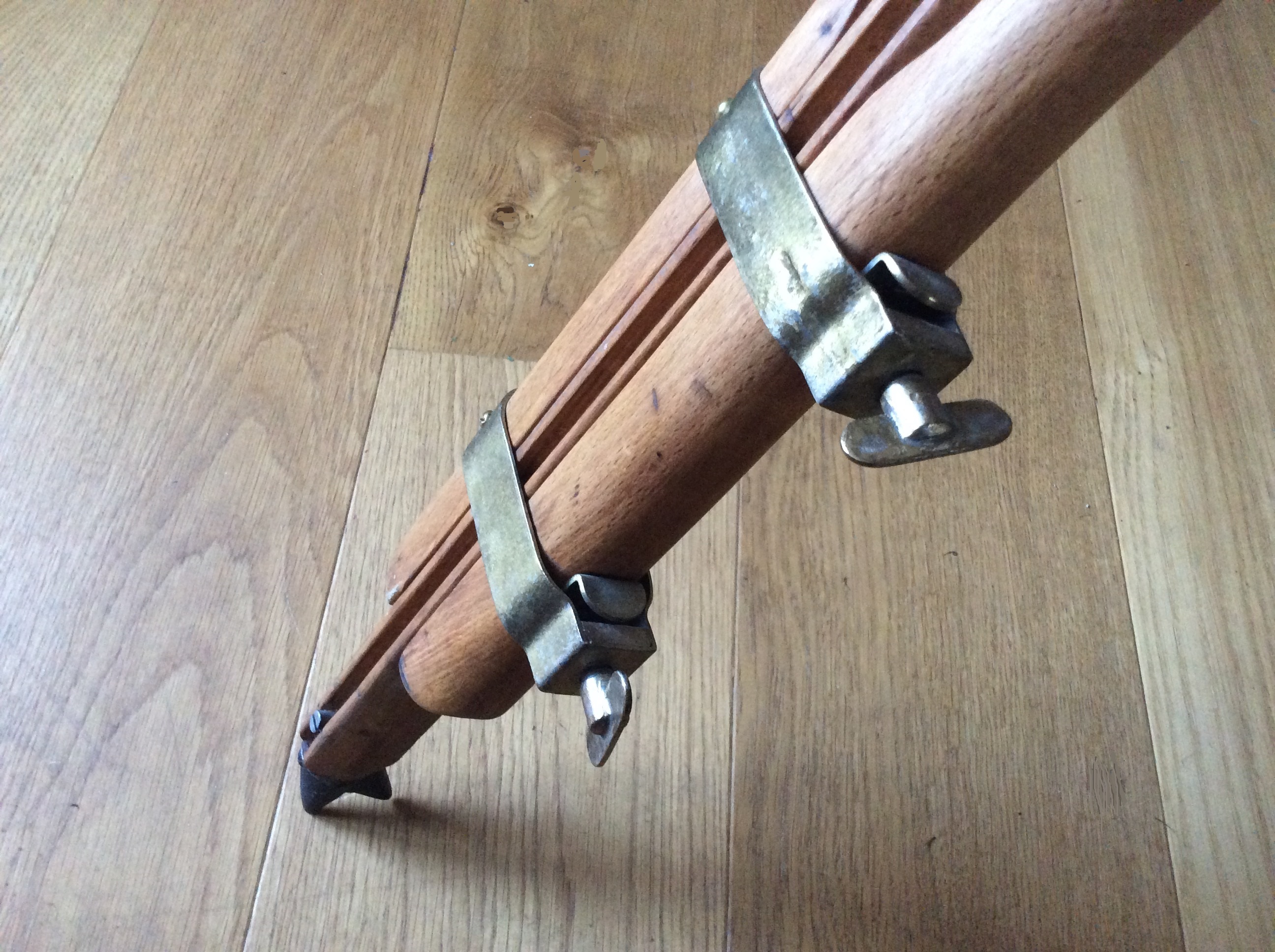
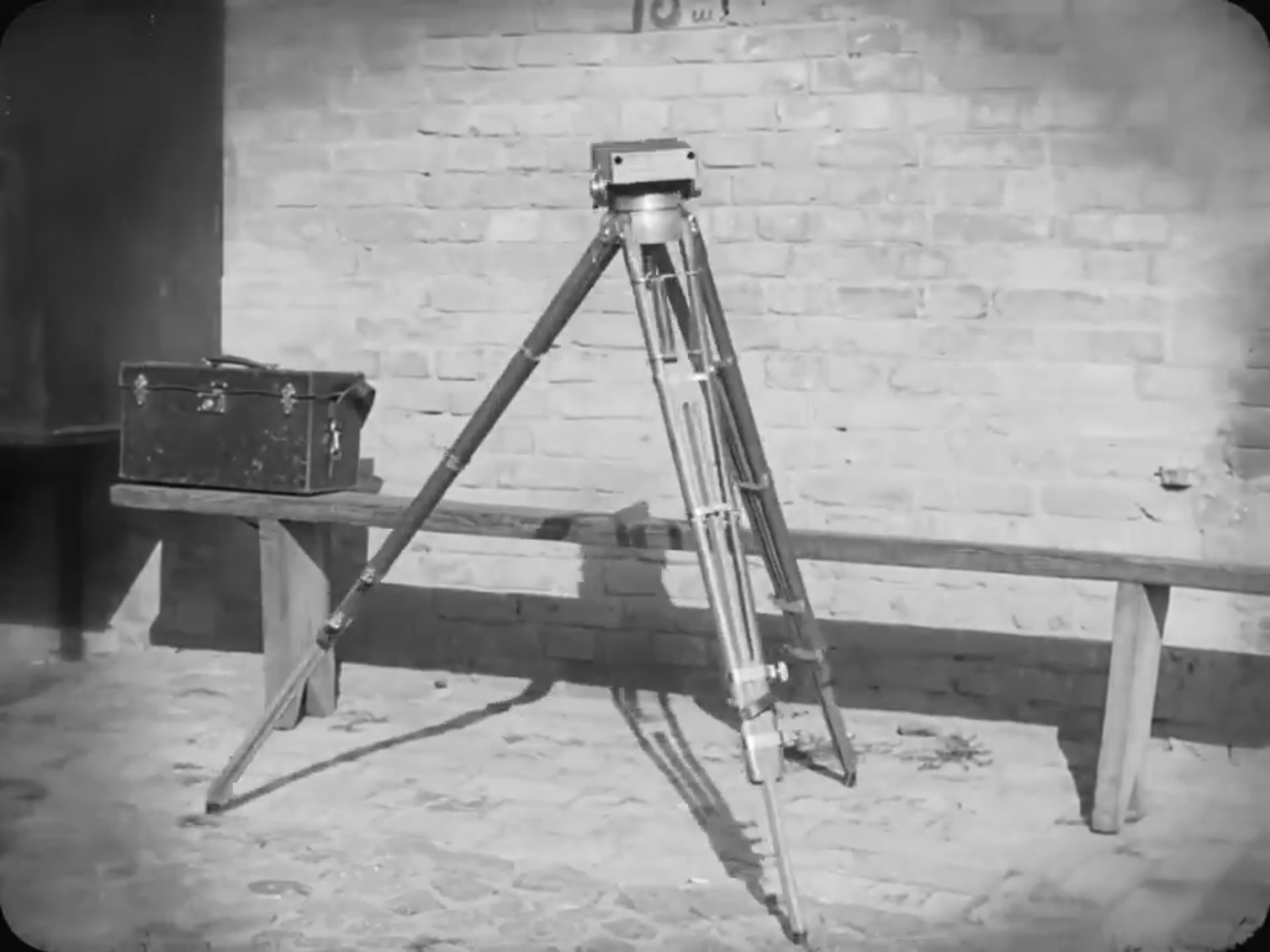
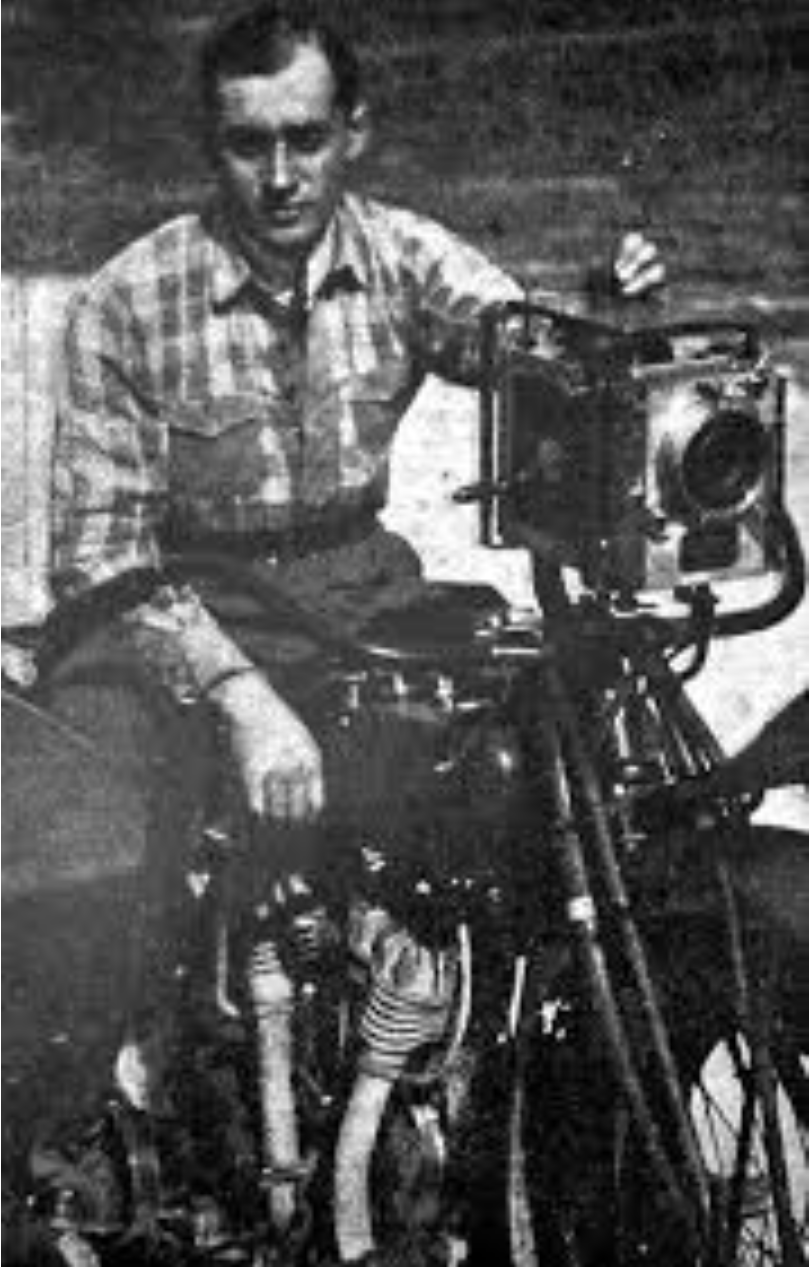
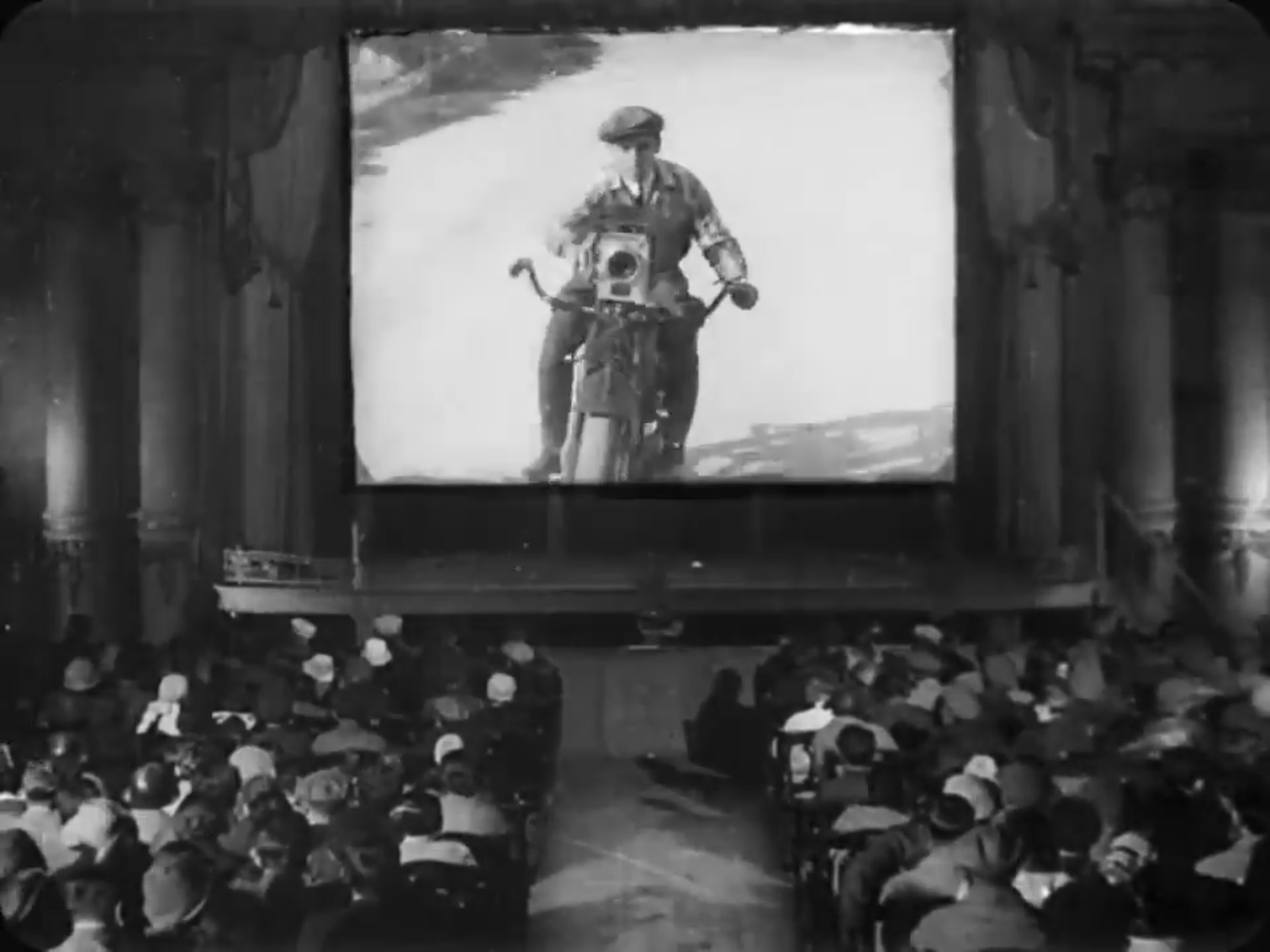
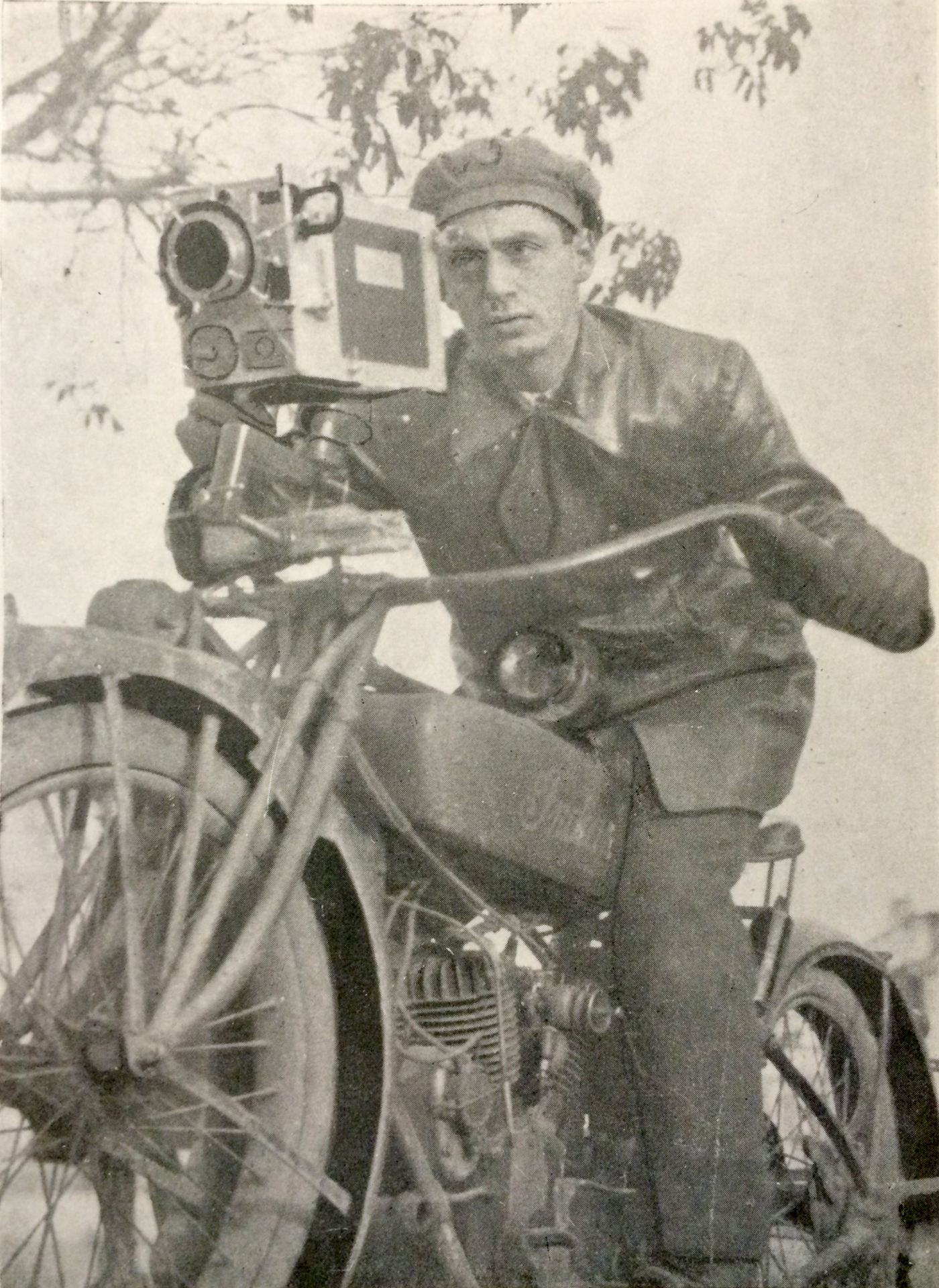
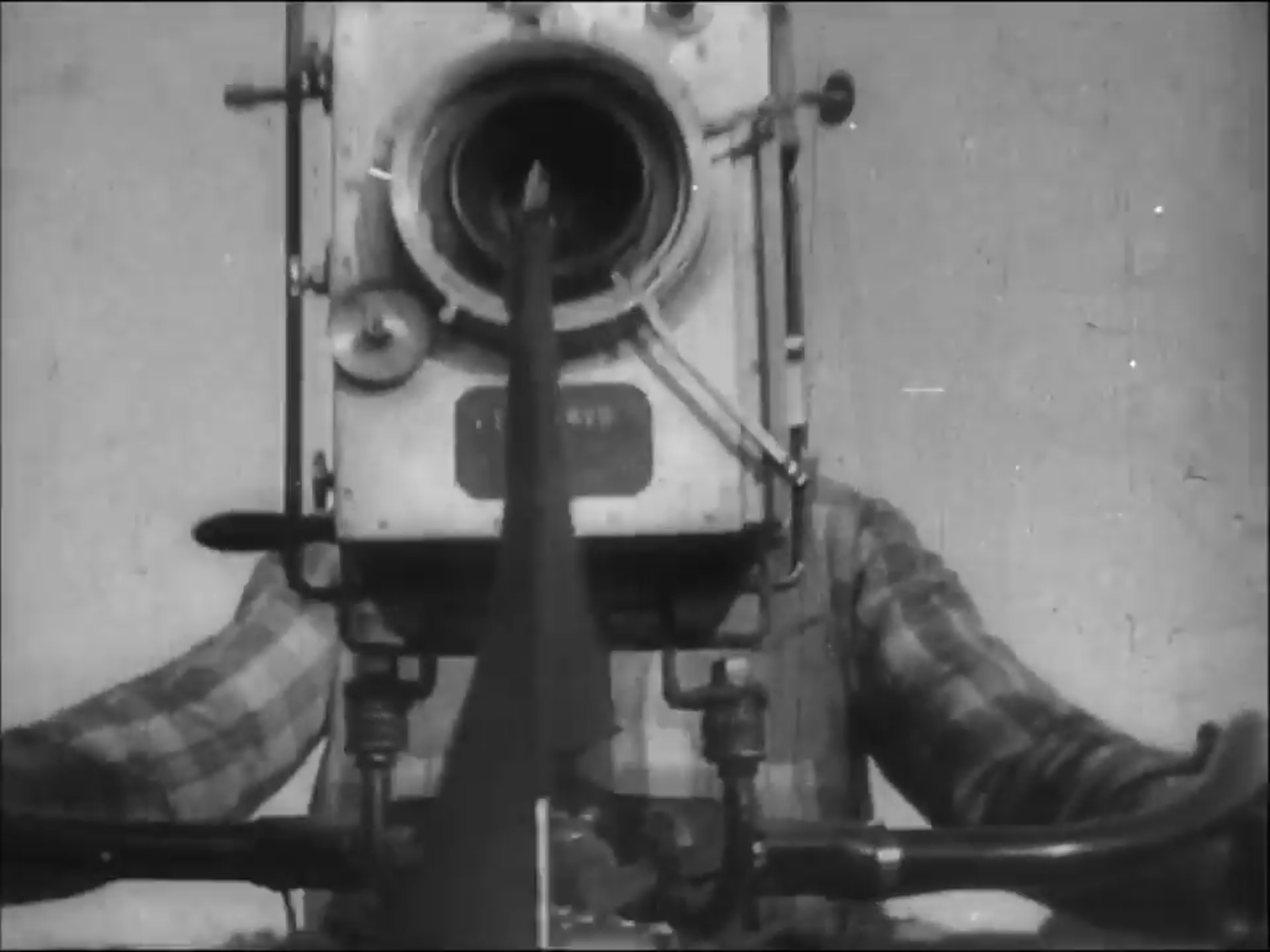
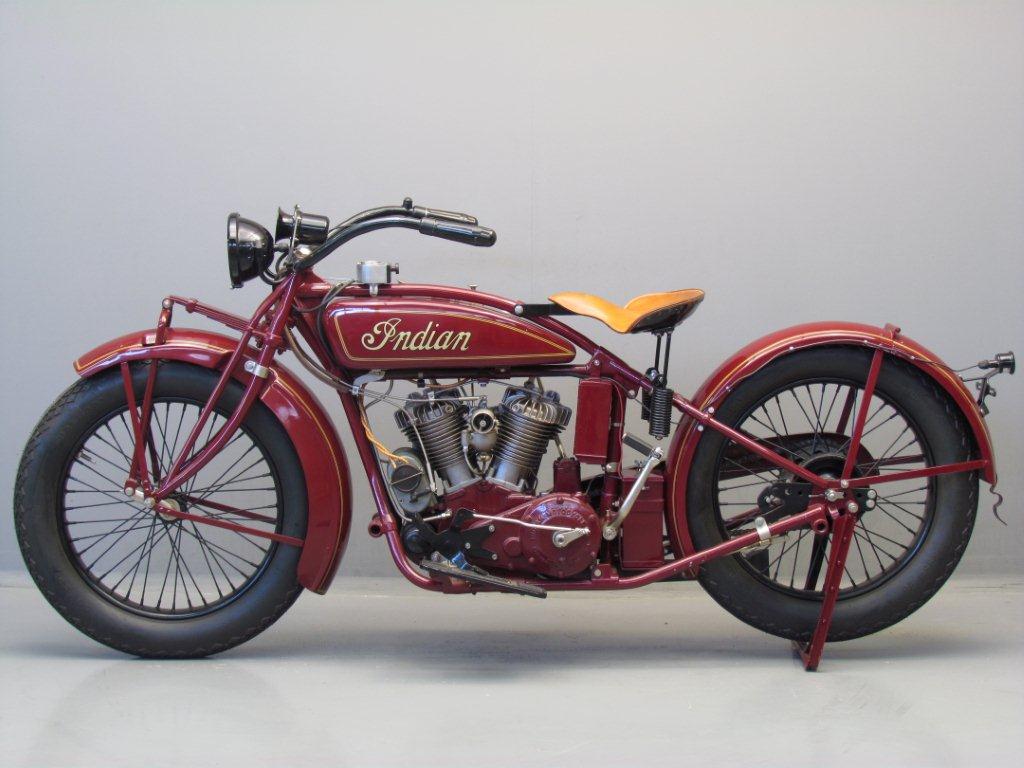

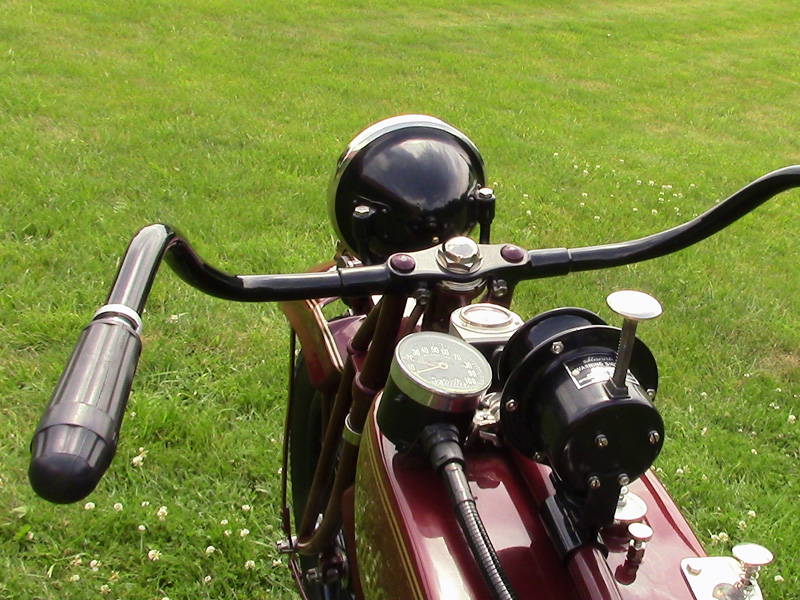
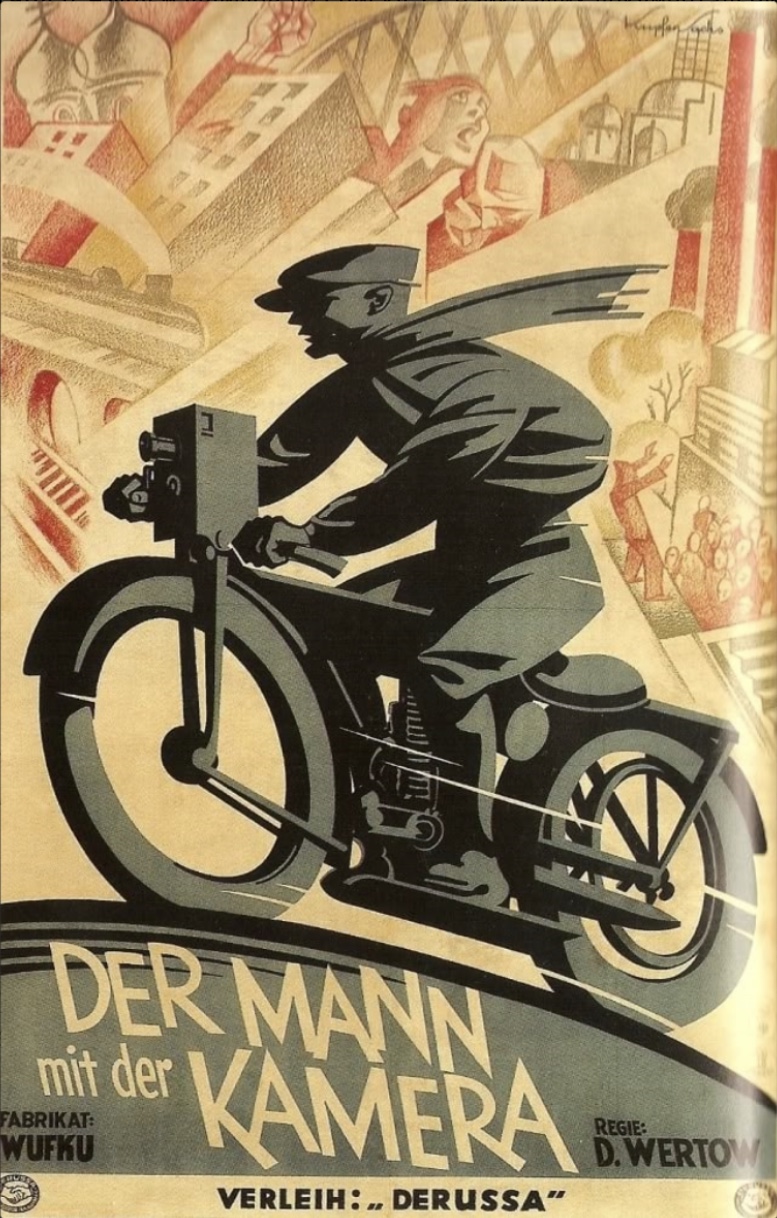
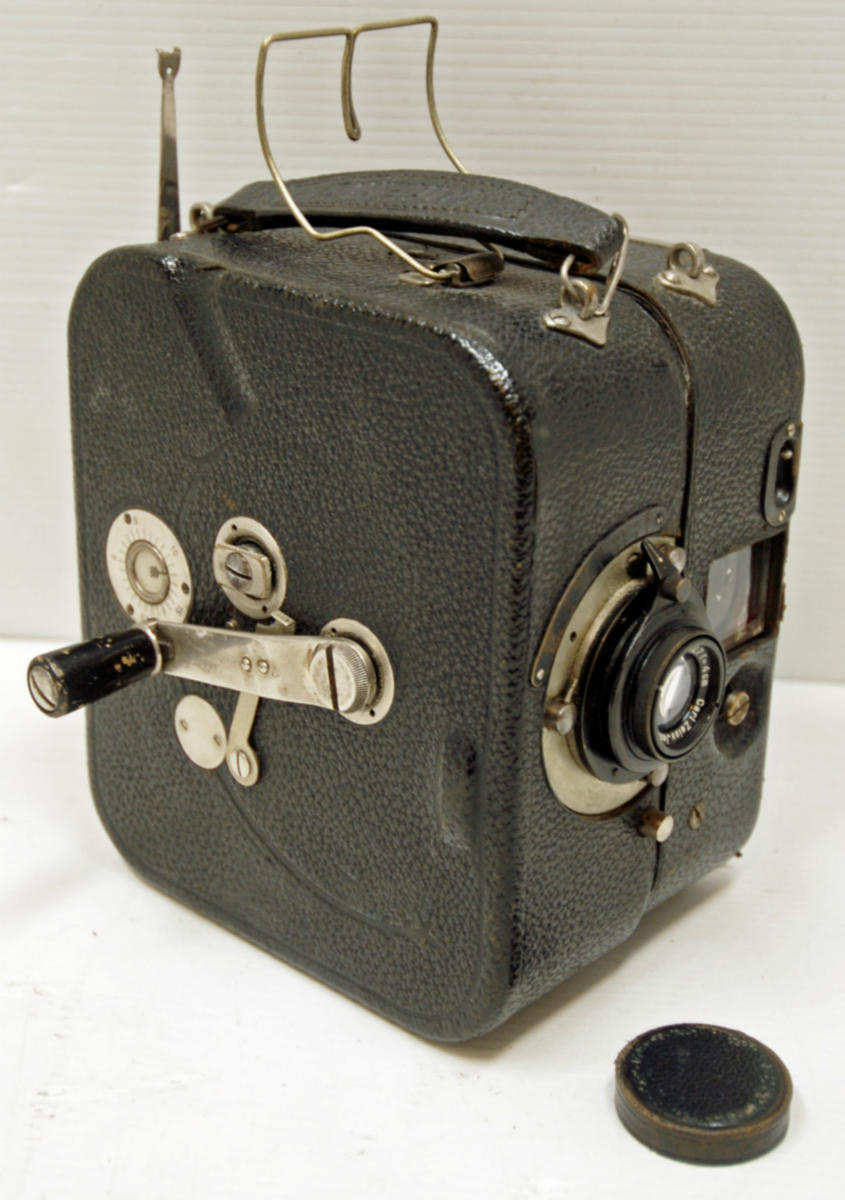
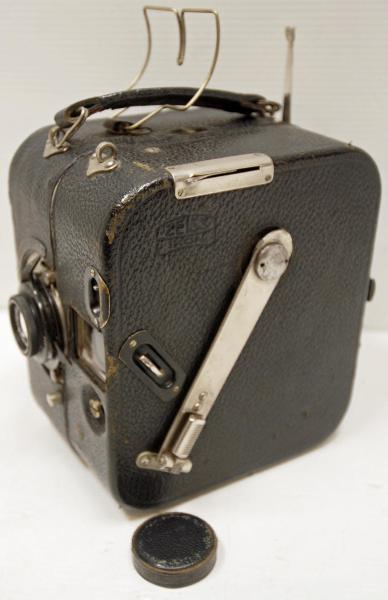
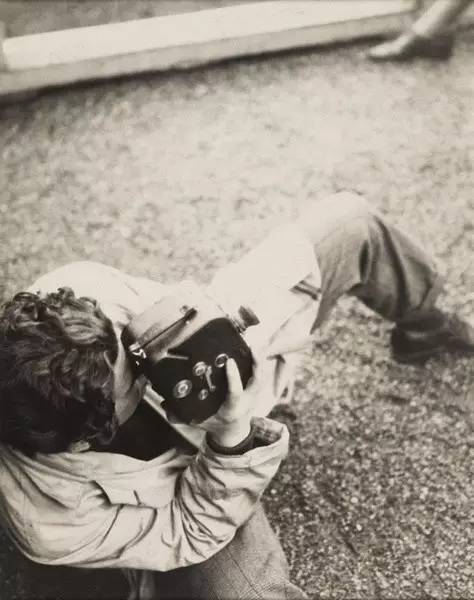
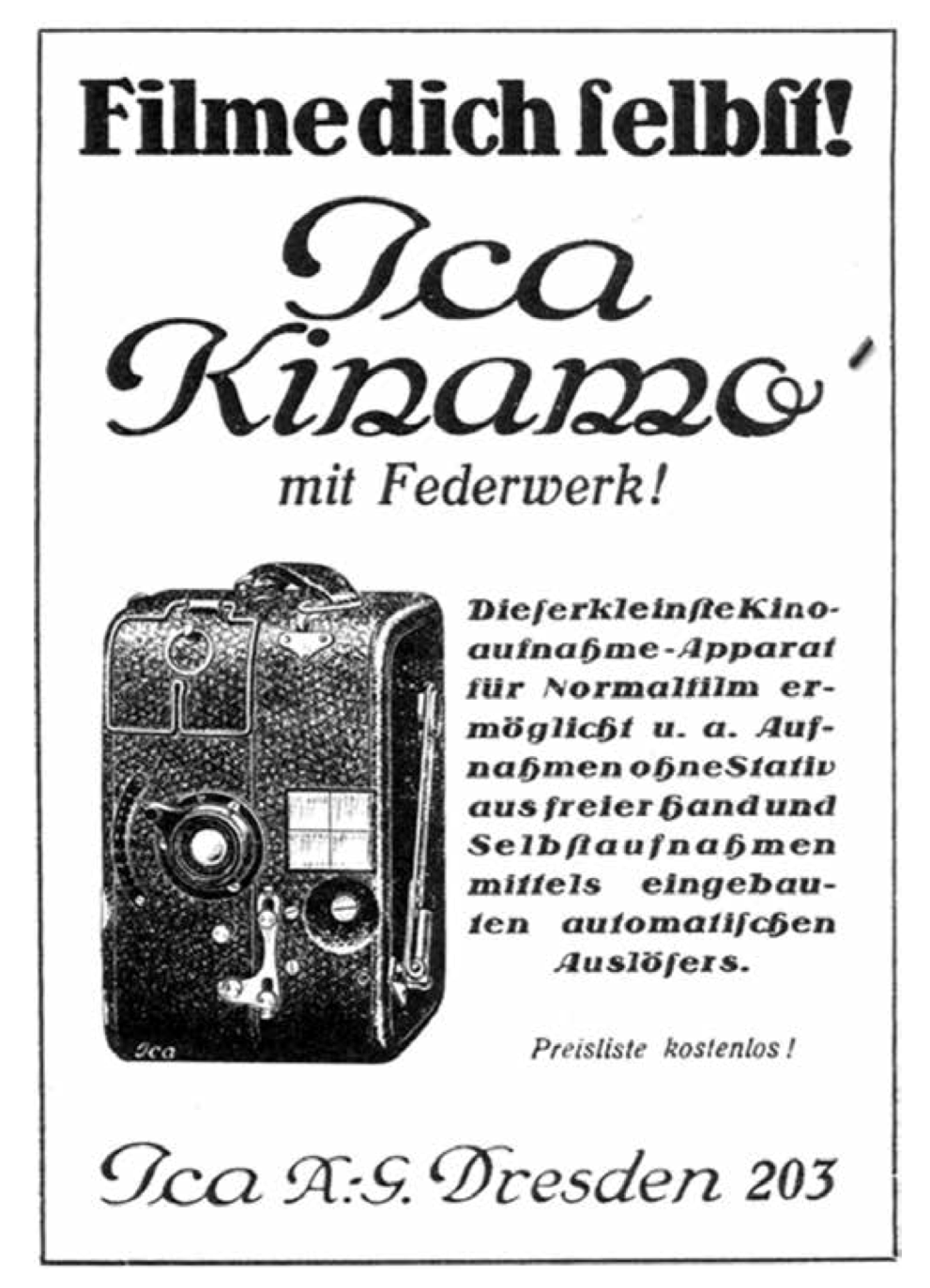

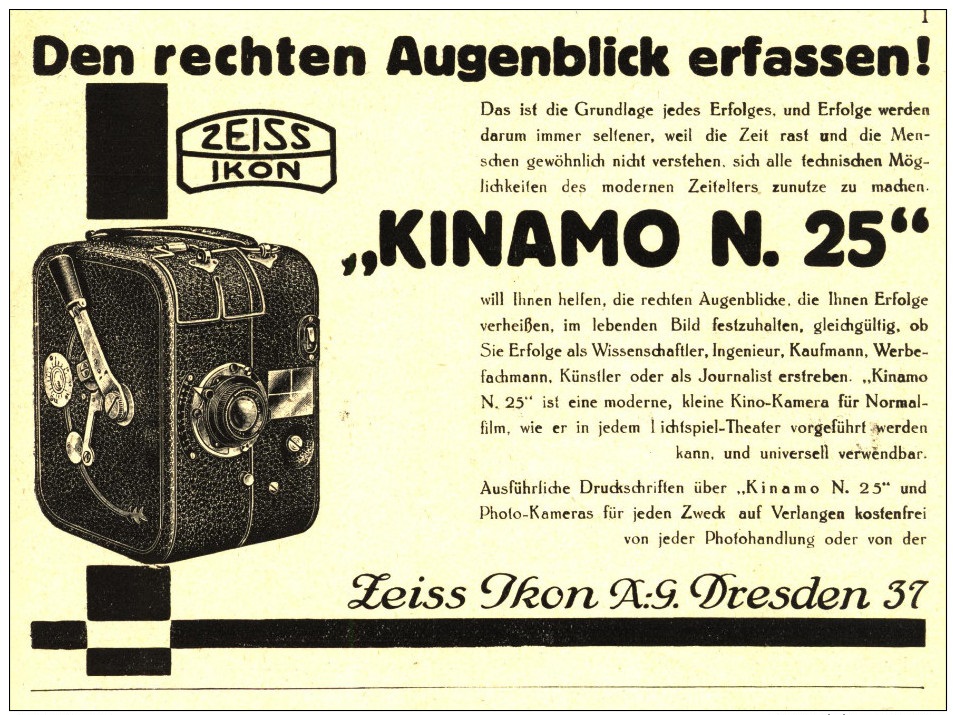

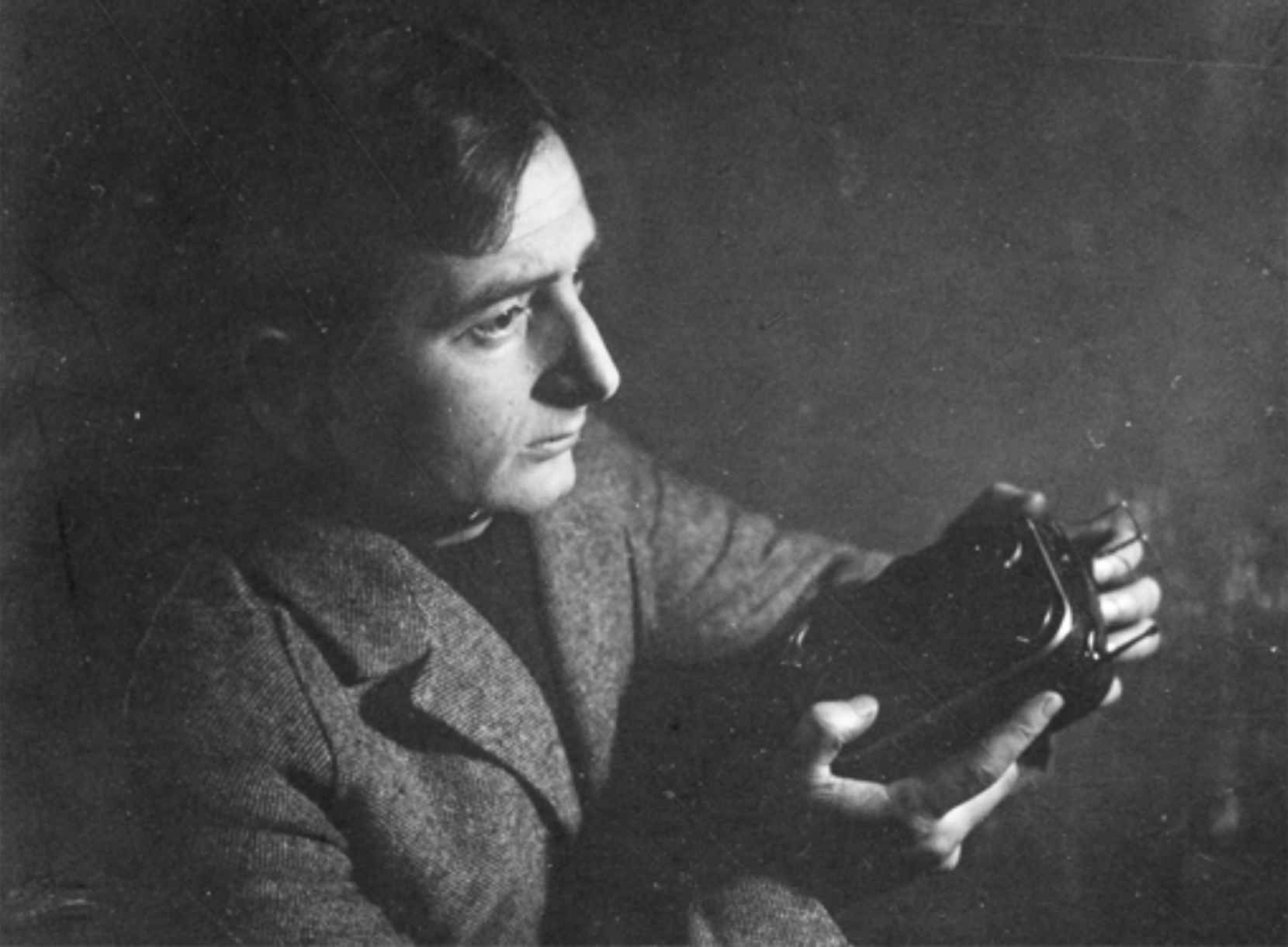
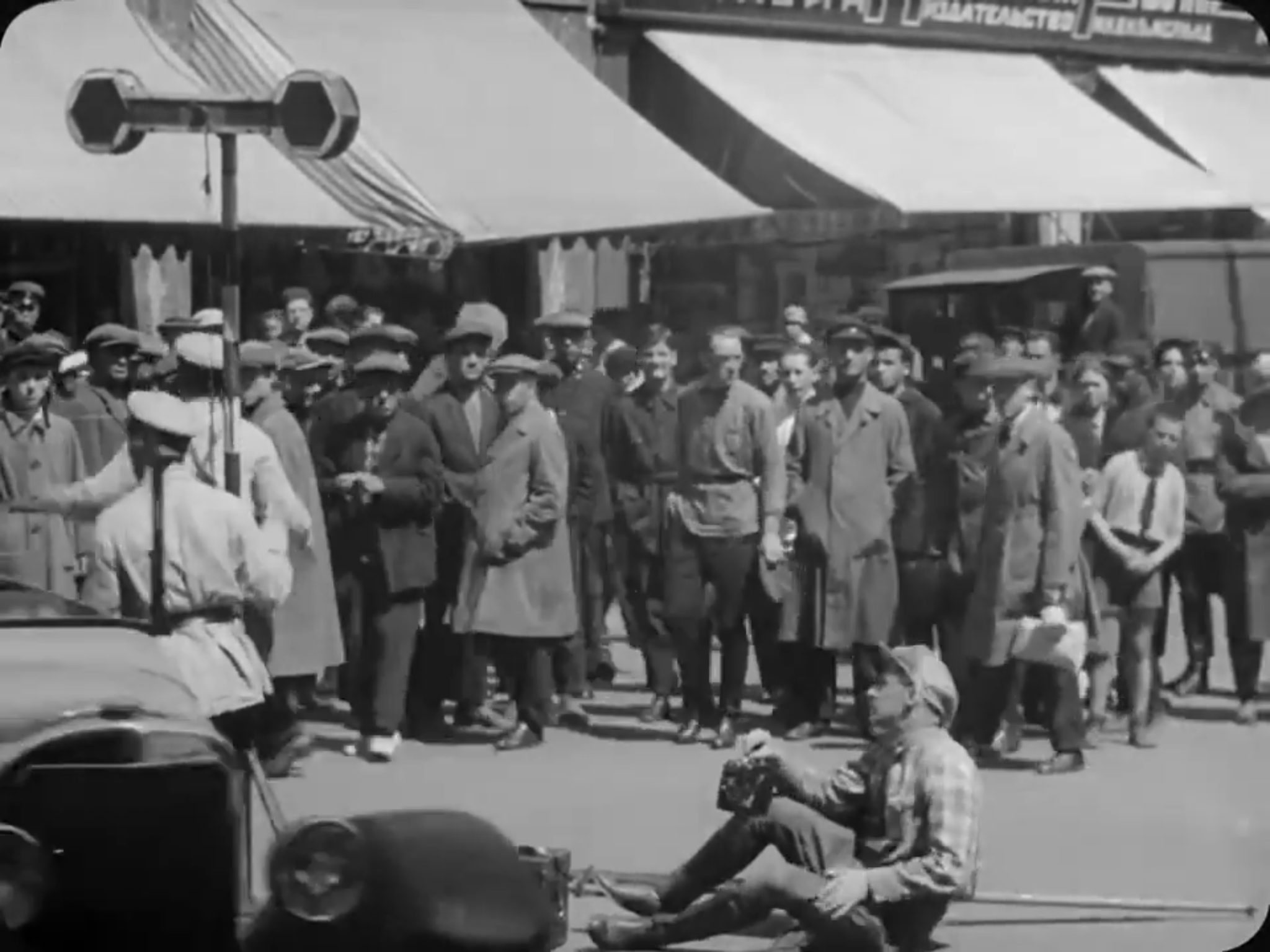
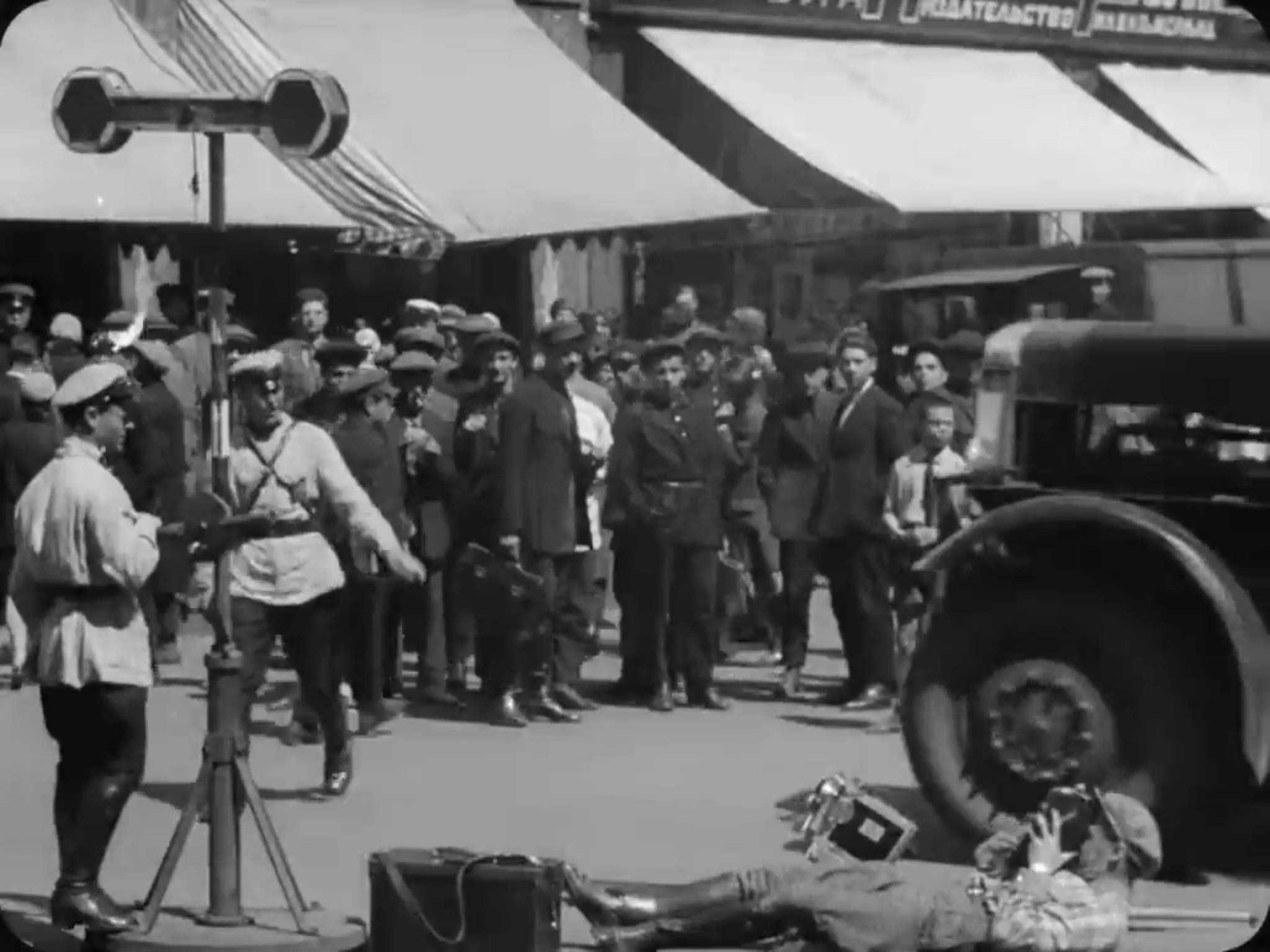
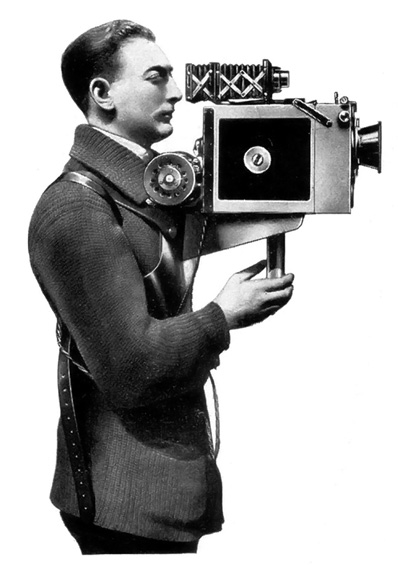
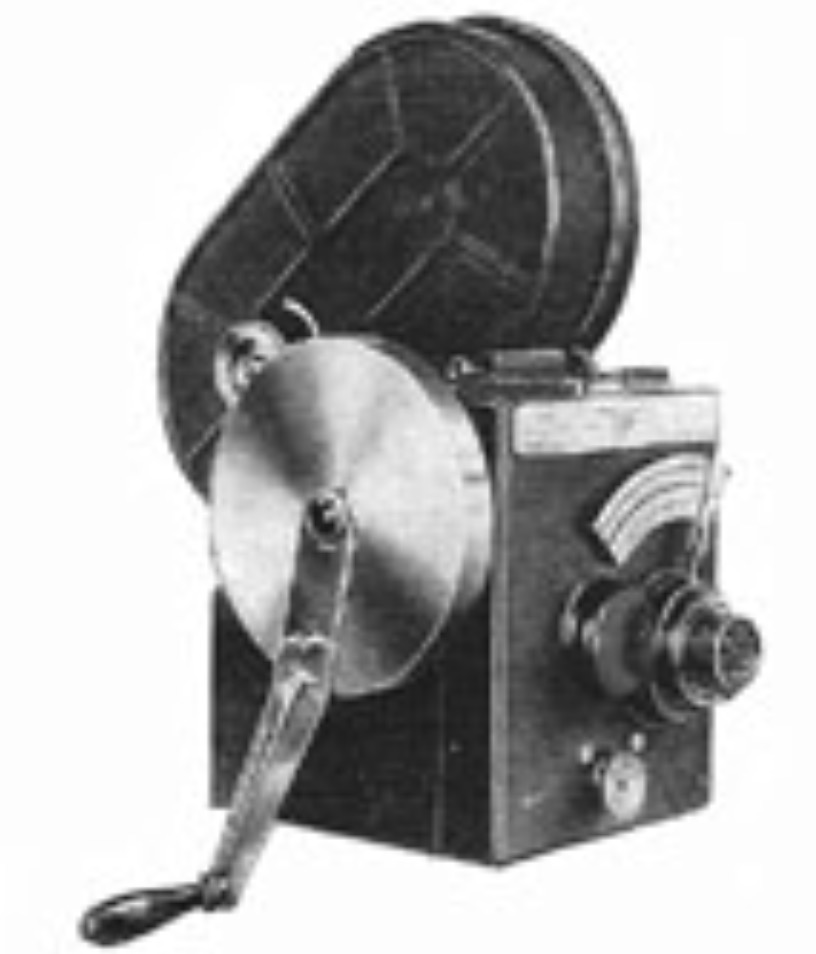
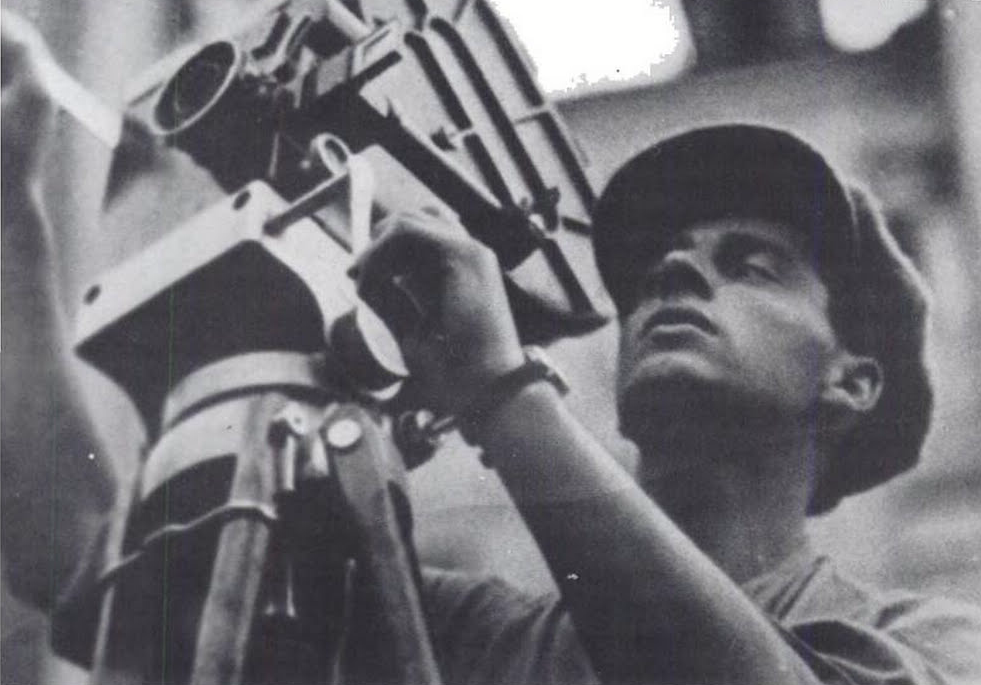
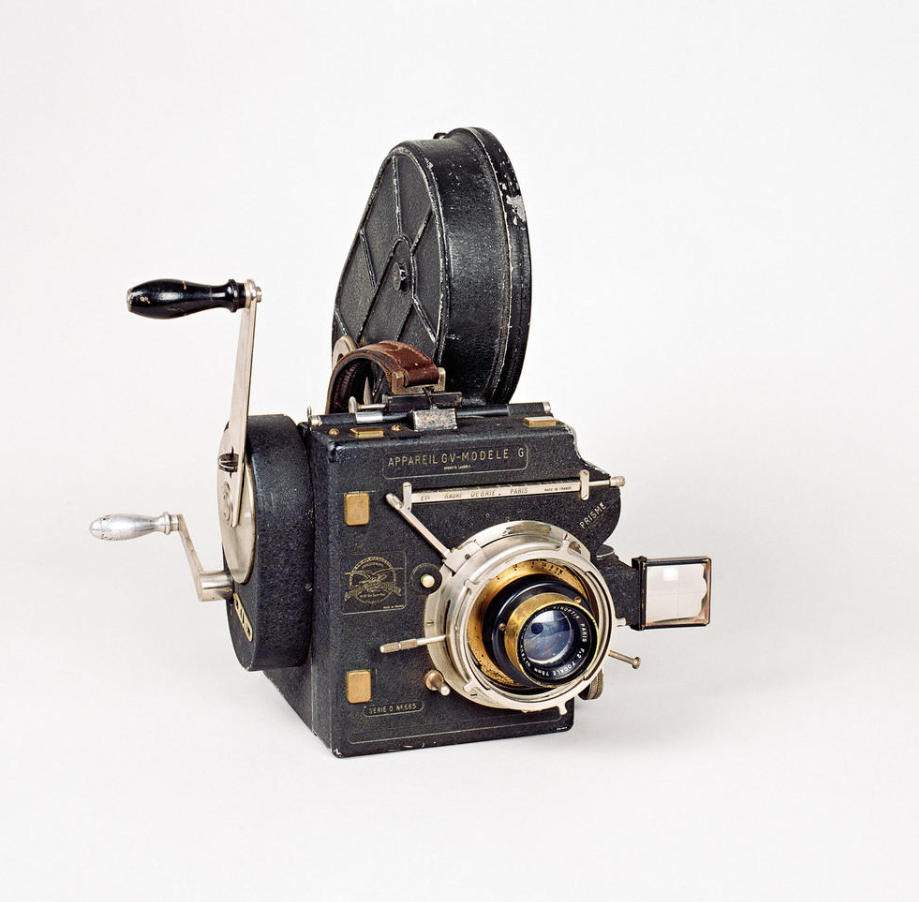
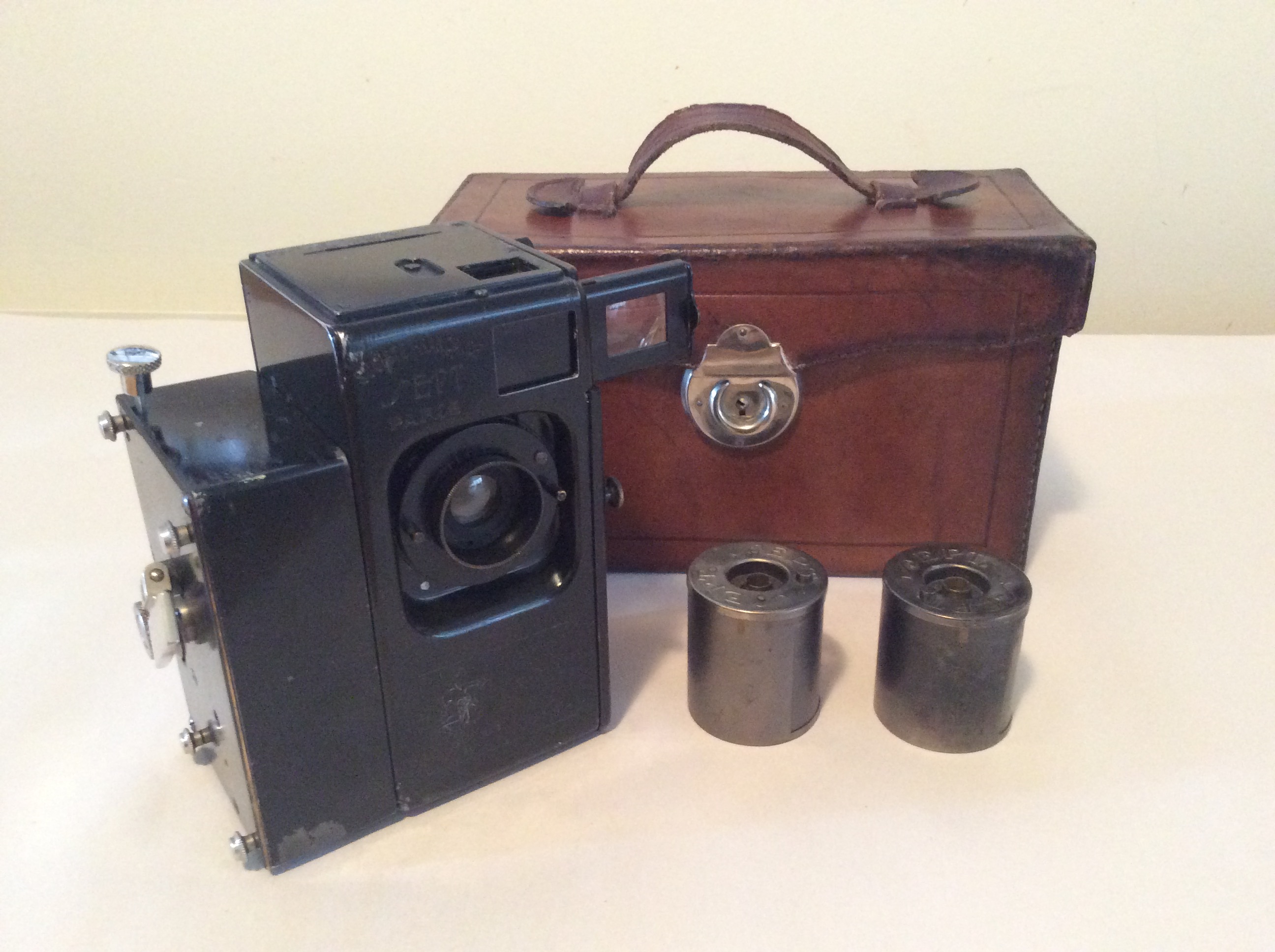

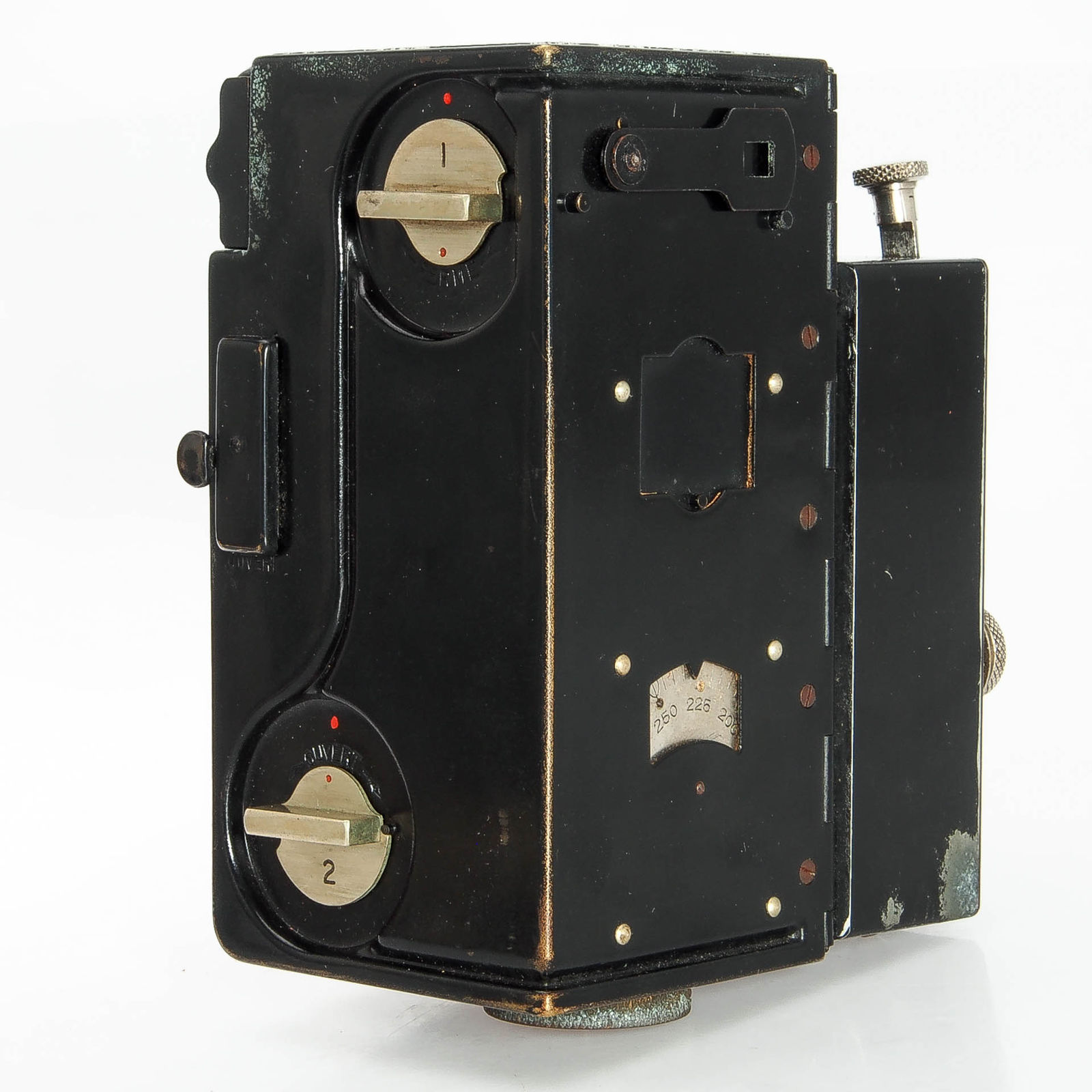
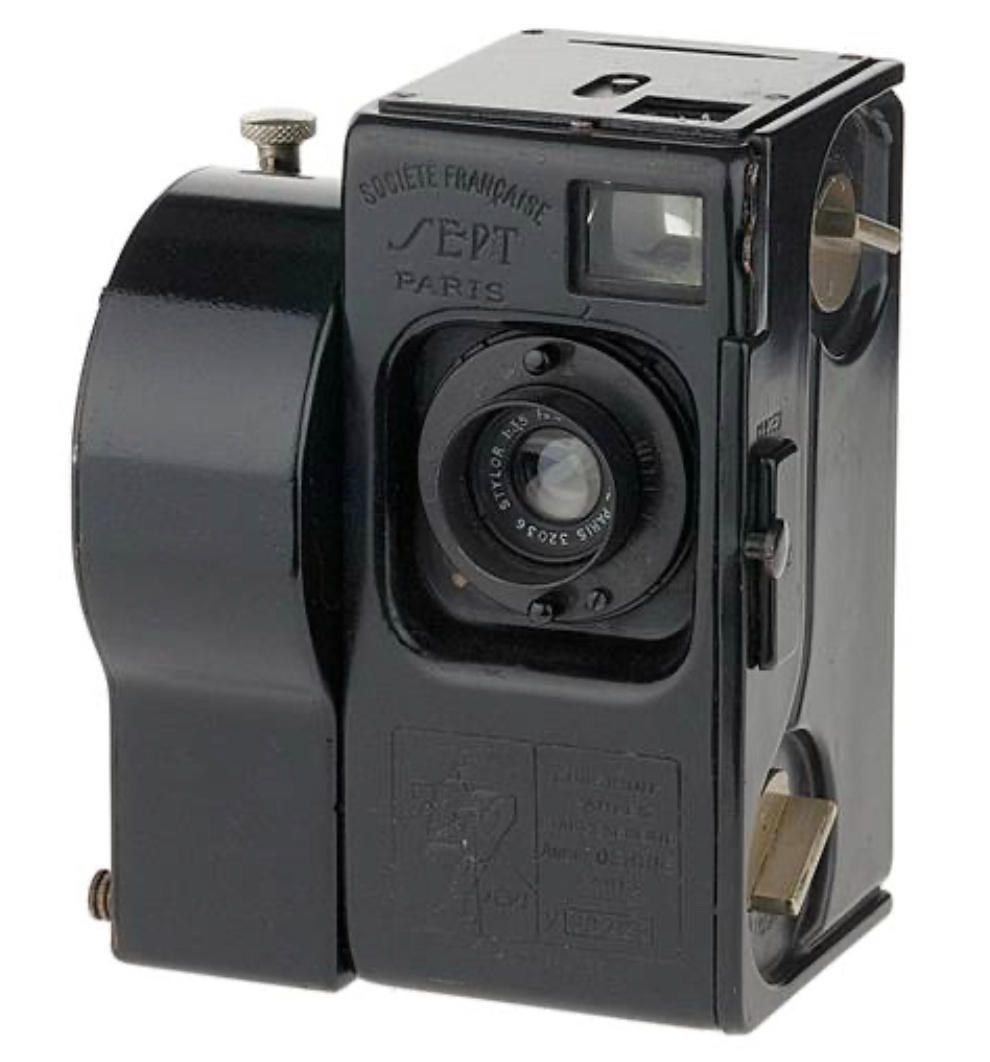

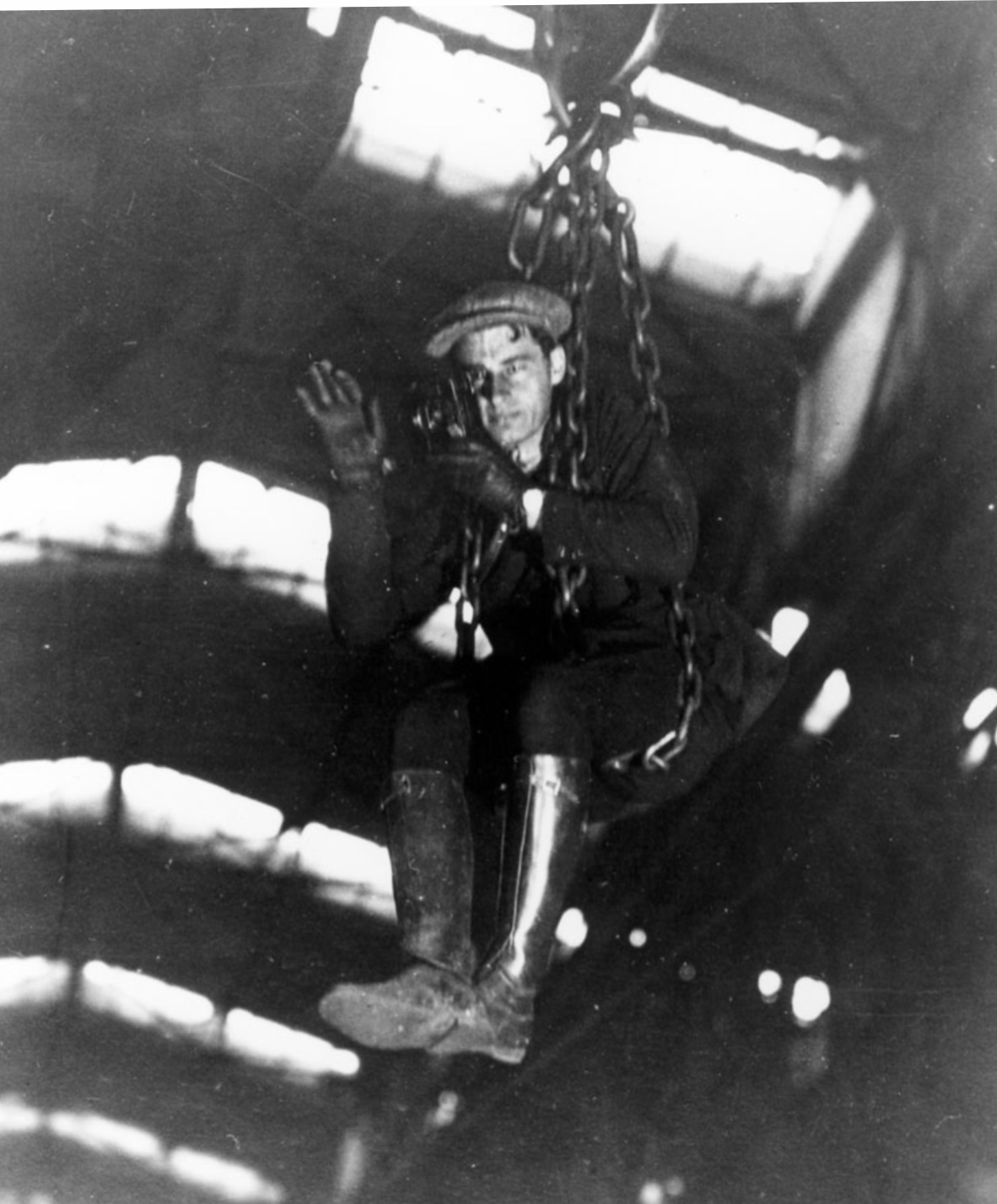 Mikhail Kaufman in a precarious position using the later model Sept to film inside the Dzerzhinsky Steelworks in 1927 for ‘The Eleventh Year’. [photograph courtesy of the
Mikhail Kaufman in a precarious position using the later model Sept to film inside the Dzerzhinsky Steelworks in 1927 for ‘The Eleventh Year’. [photograph courtesy of the 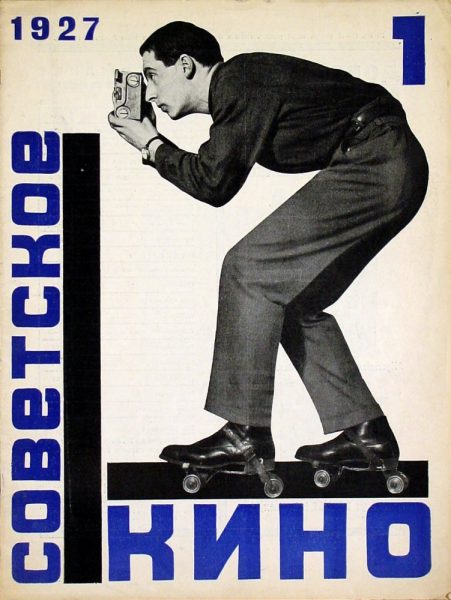
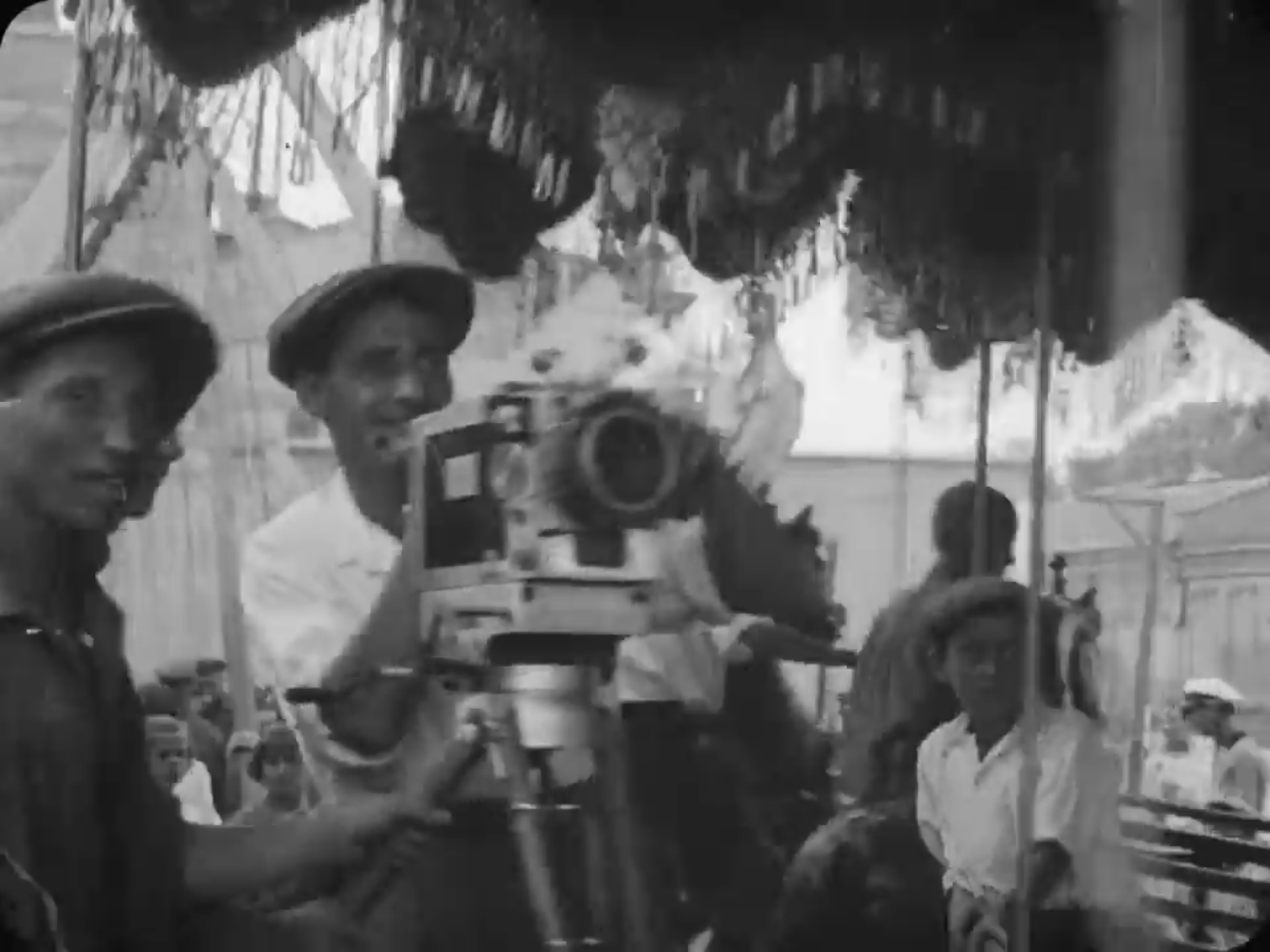
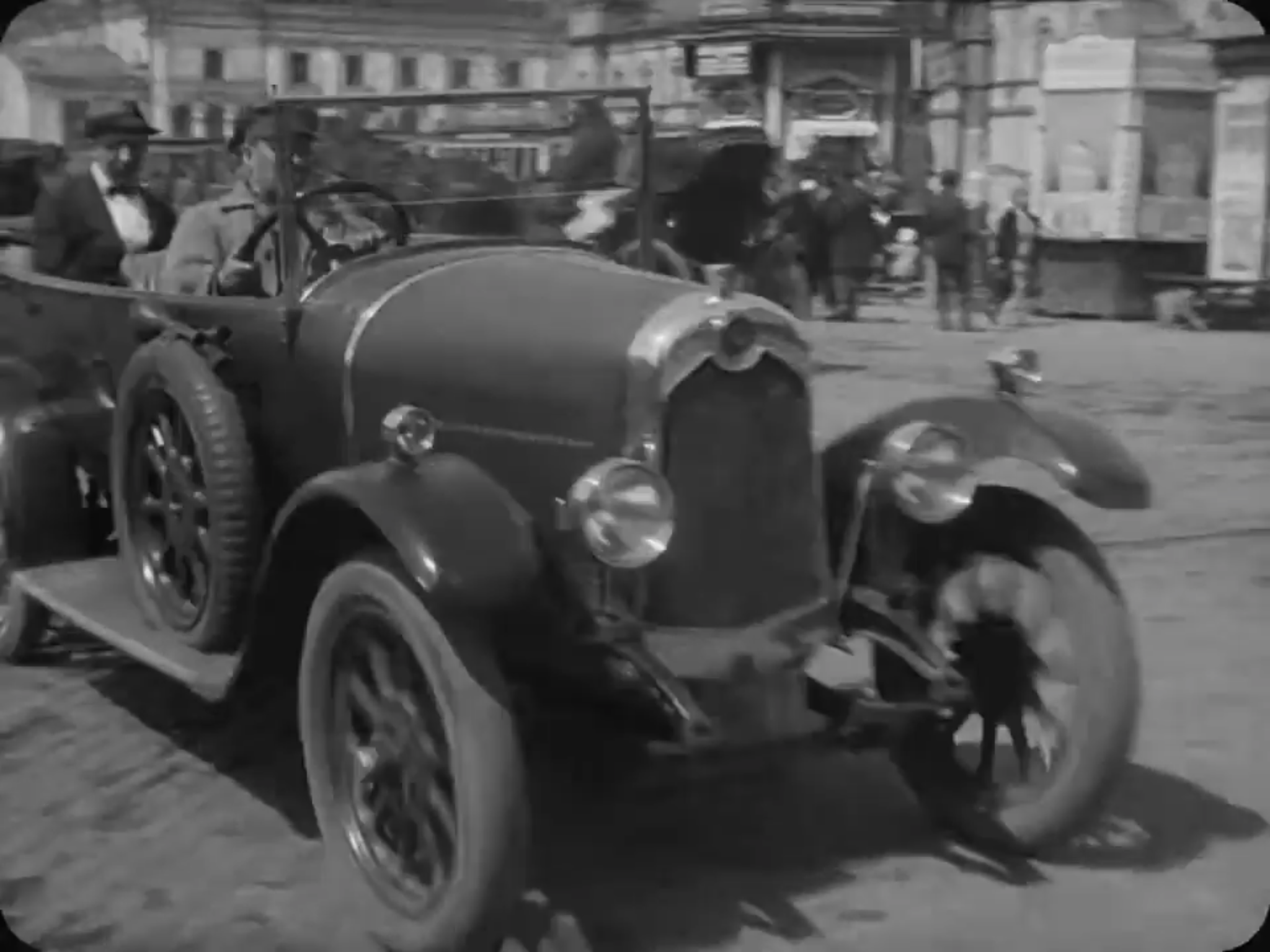


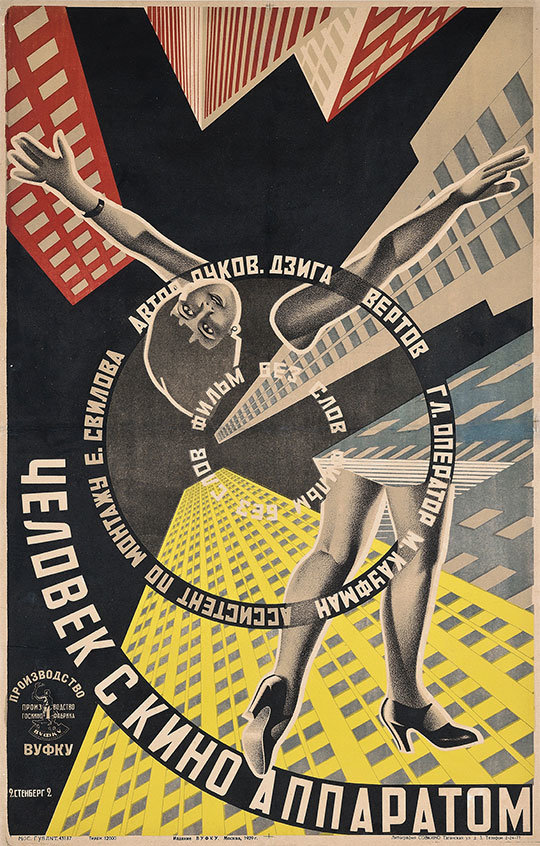
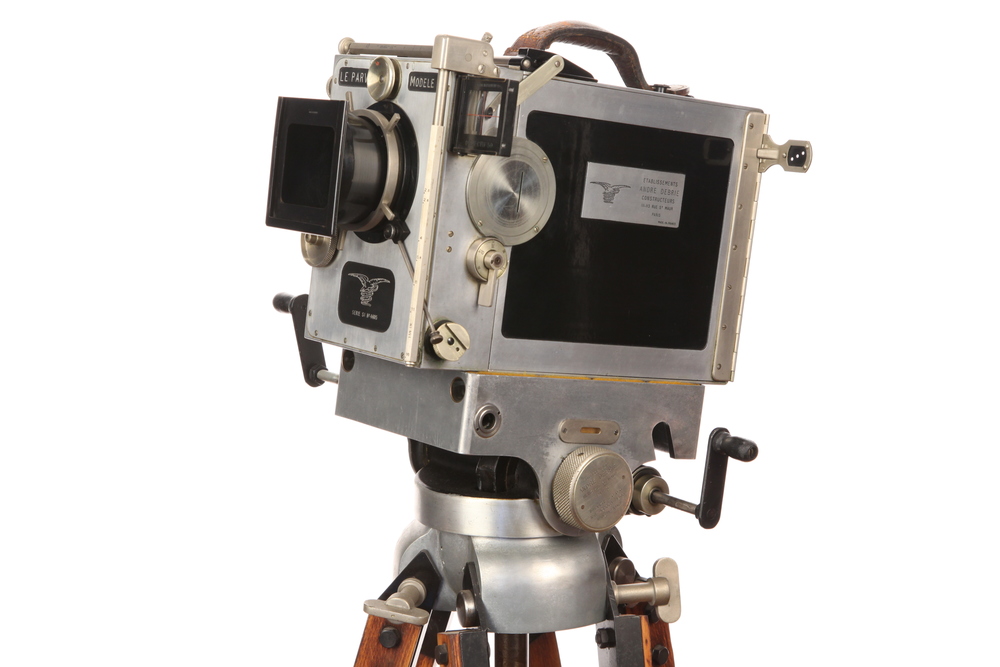



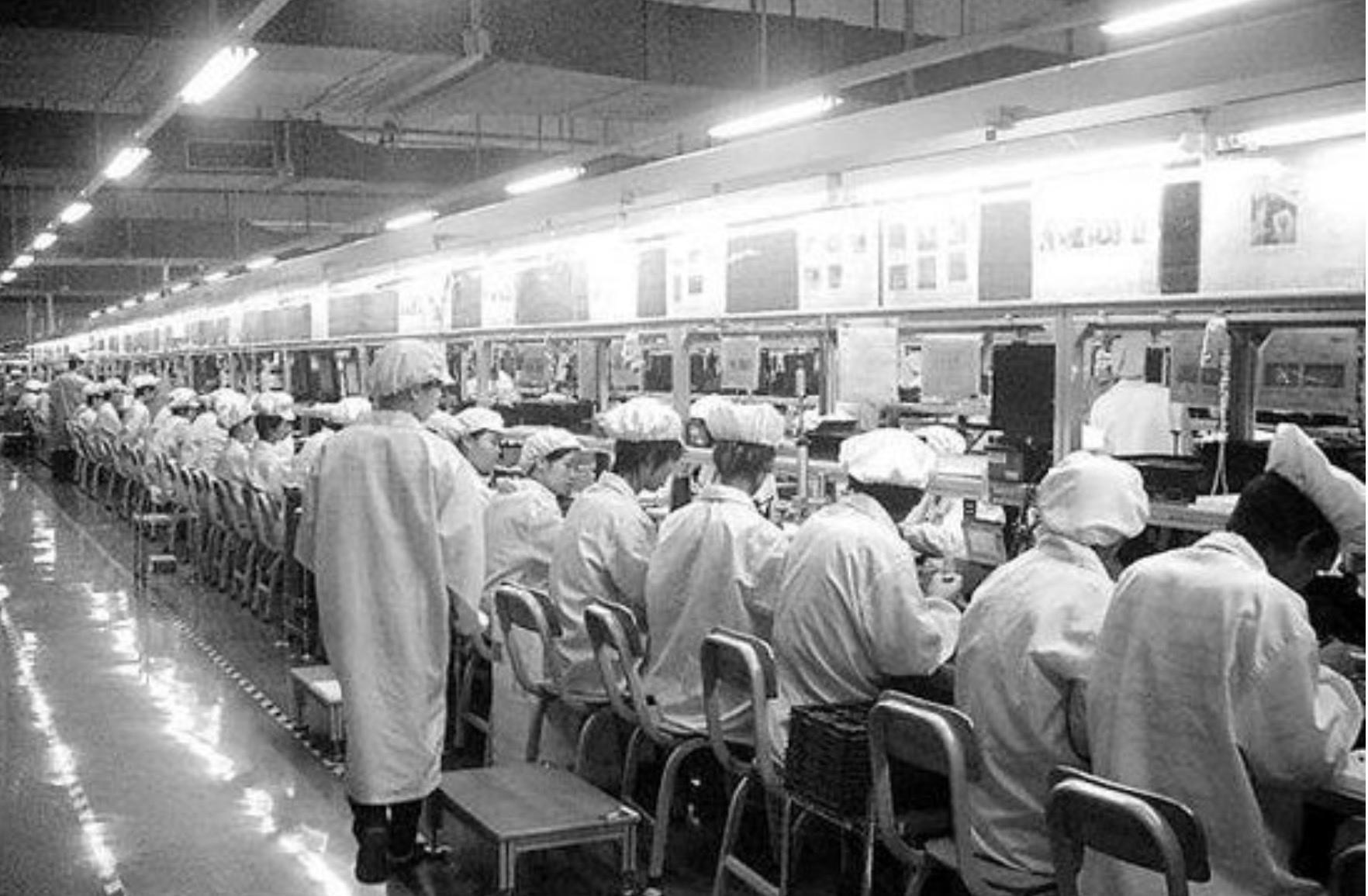

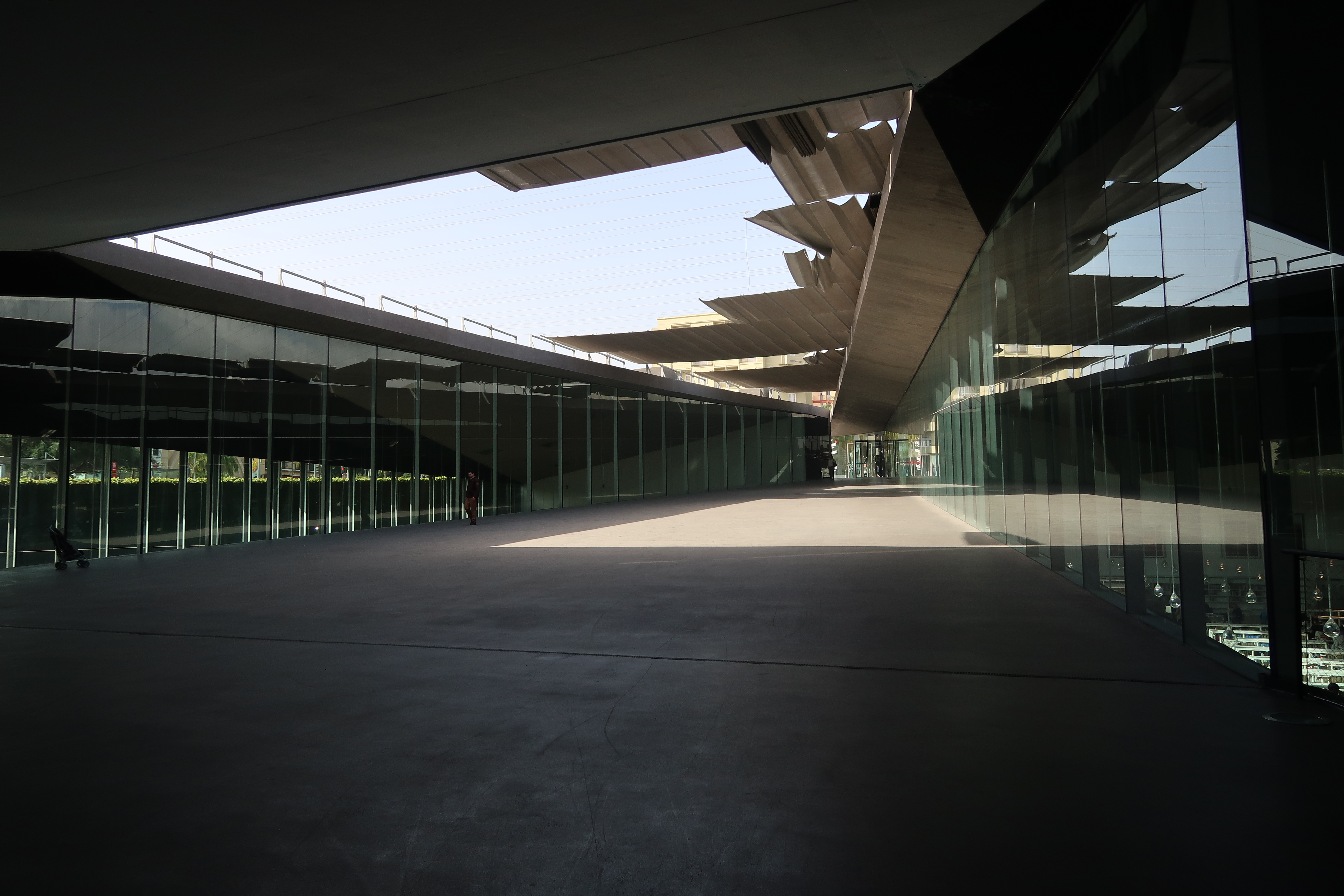 A building in Spain, Germany or Japan?
A building in Spain, Germany or Japan?
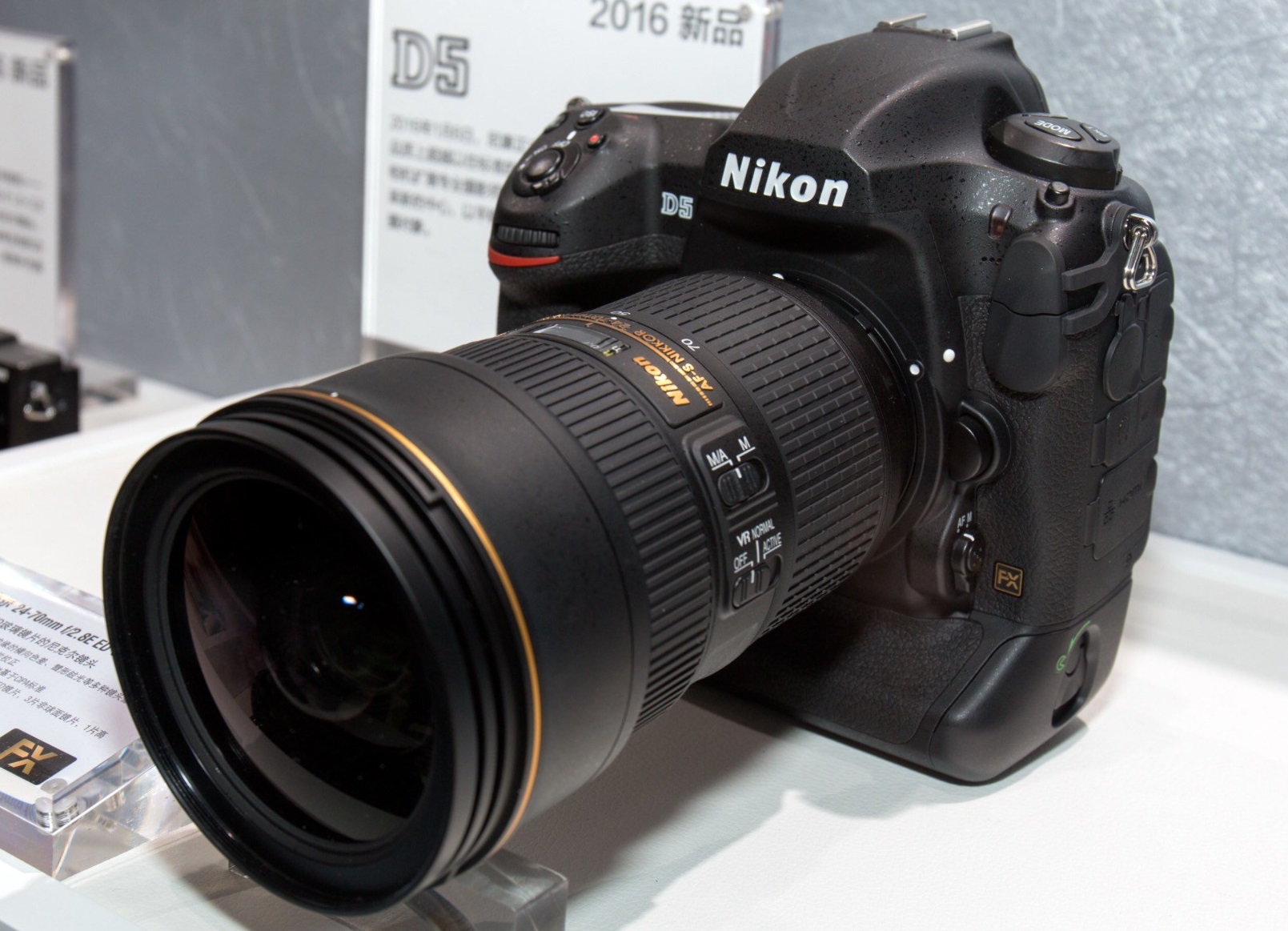

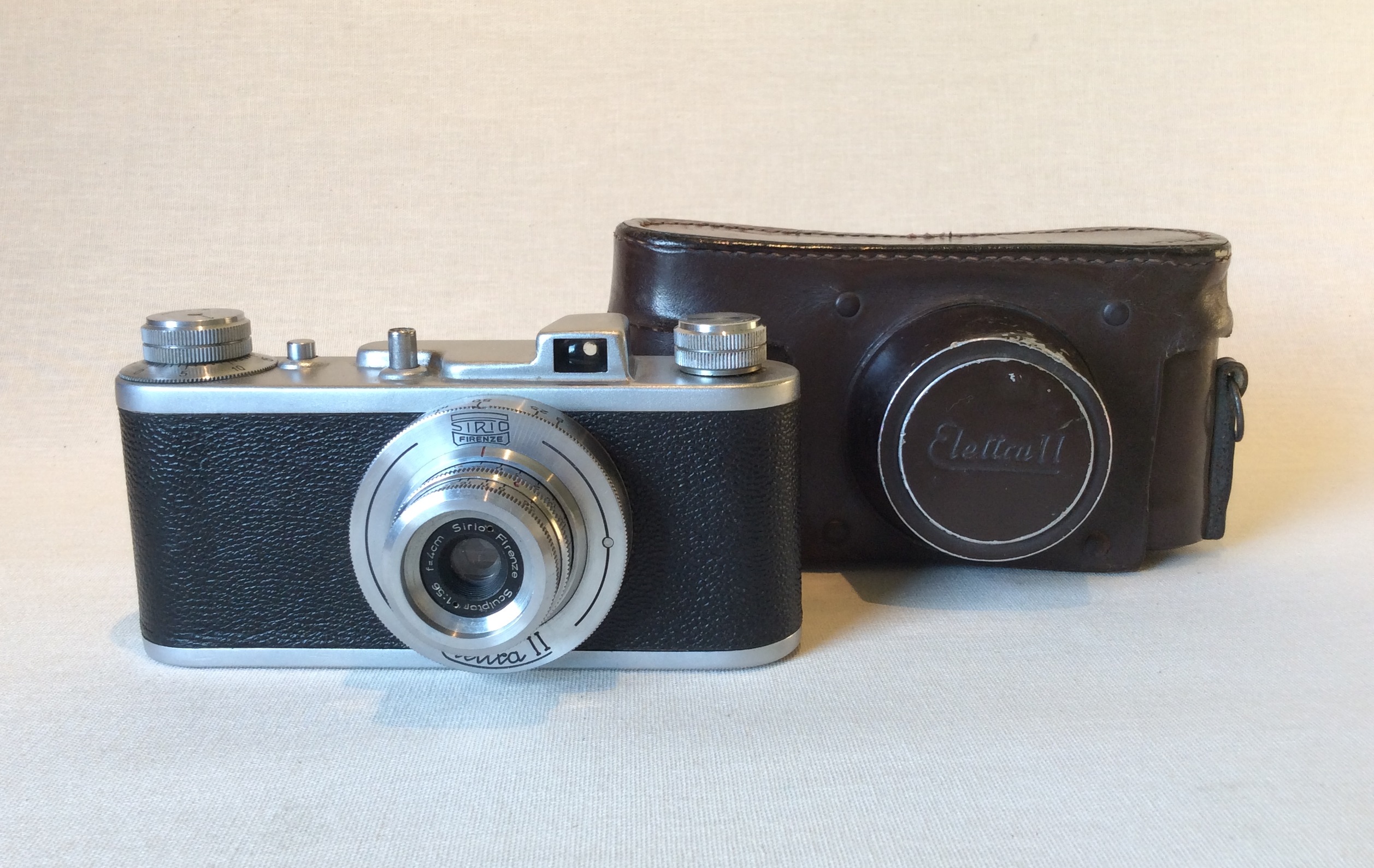
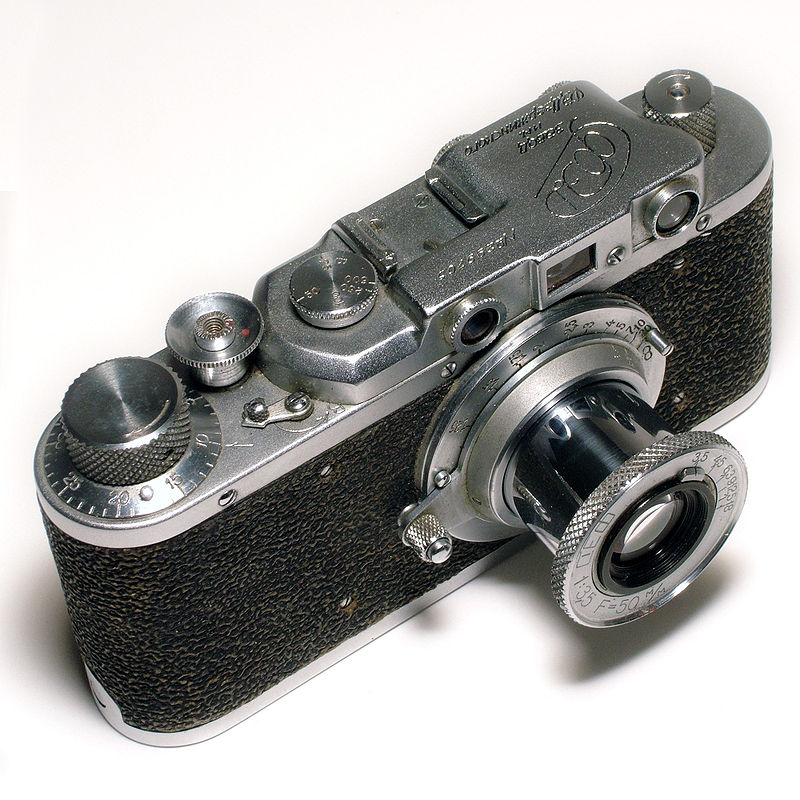
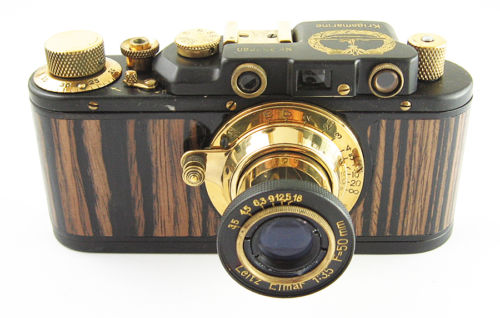 A (misspelt) ‘Kriegsmarine Leica’ with no resemblance whatsoever to anything from Wetzlar!
A (misspelt) ‘Kriegsmarine Leica’ with no resemblance whatsoever to anything from Wetzlar!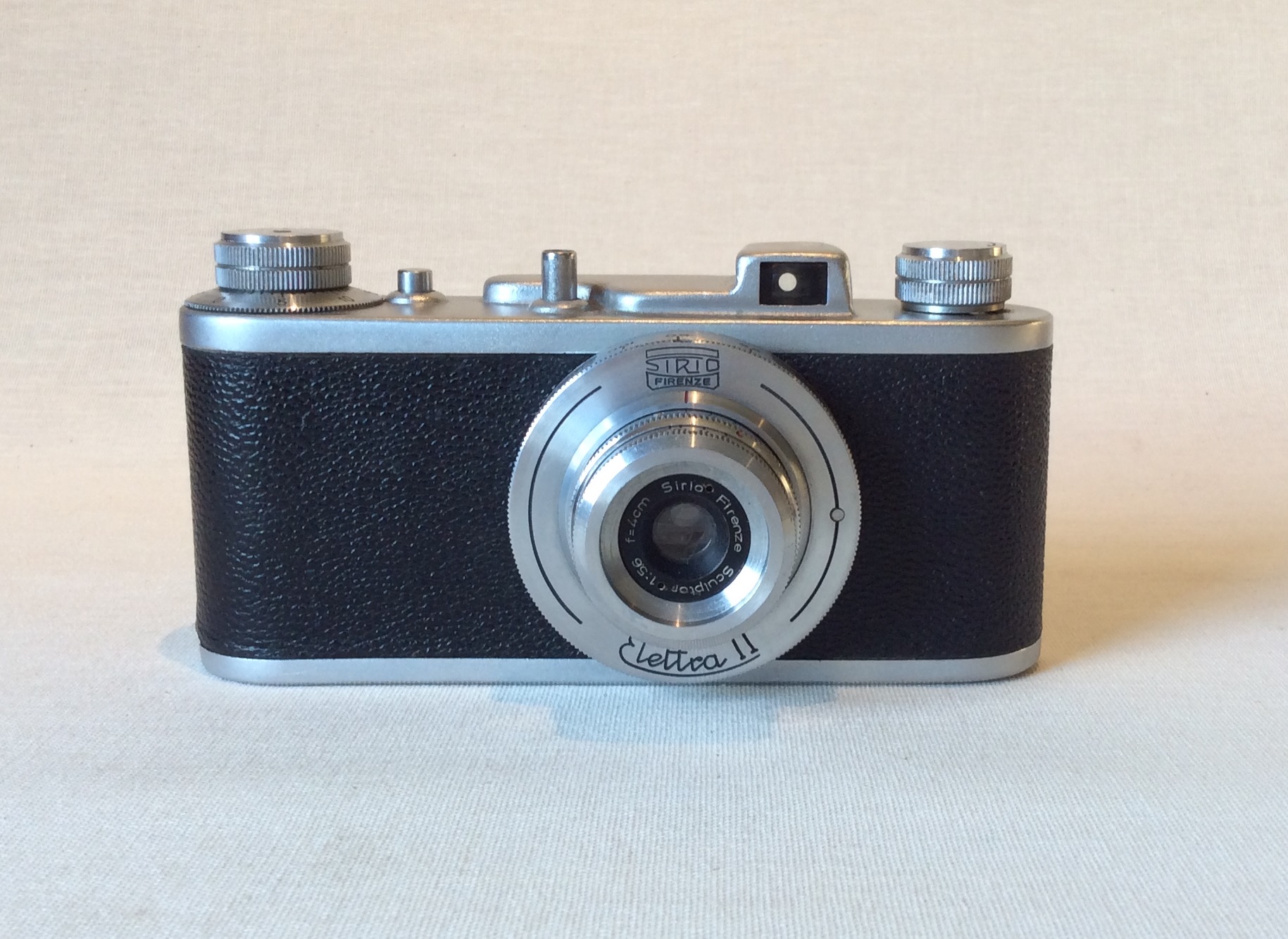
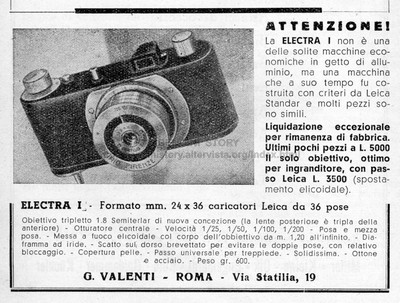 Advertising a clearance sale of ‘Electra I’ cameras
Advertising a clearance sale of ‘Electra I’ cameras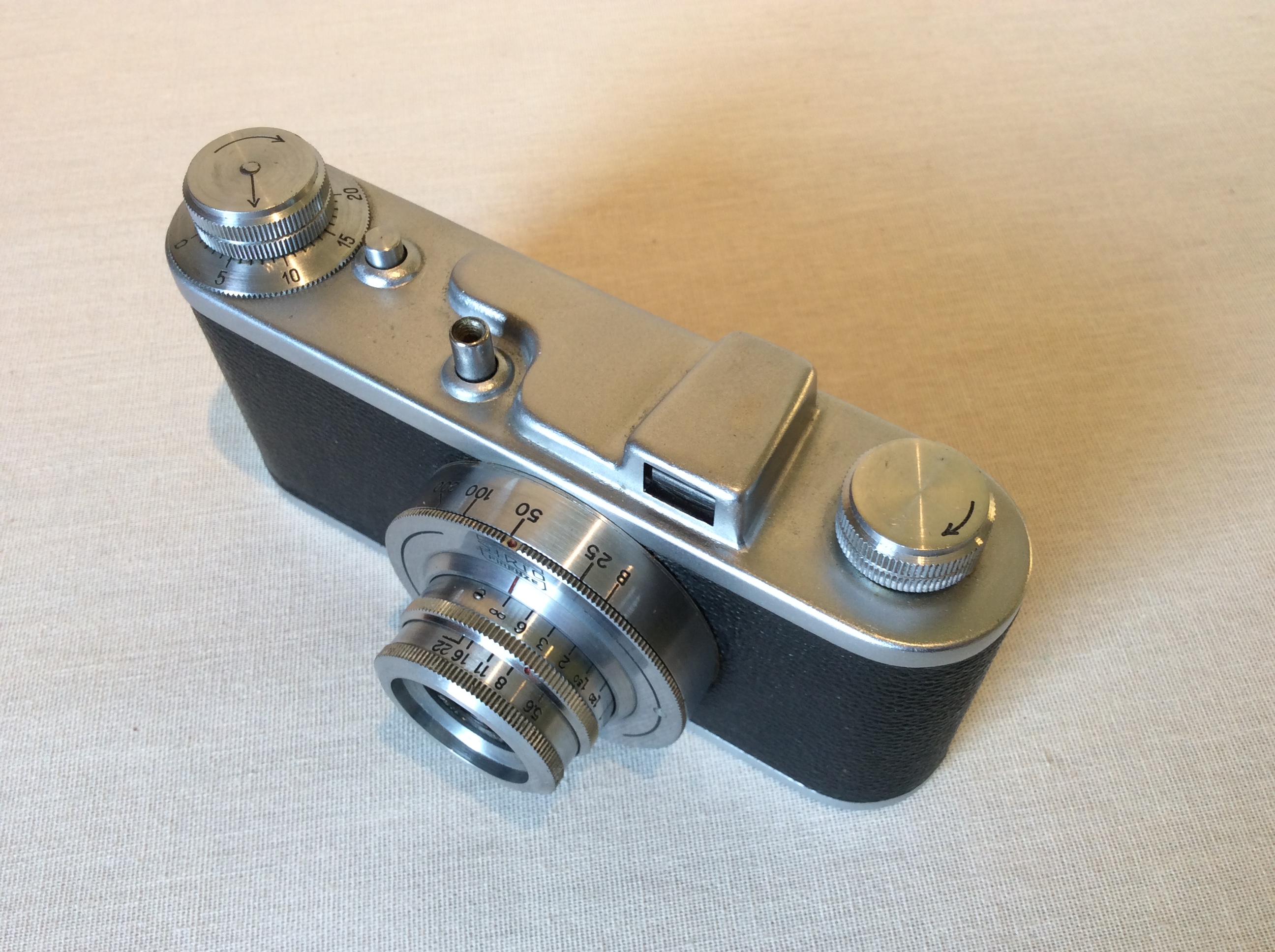
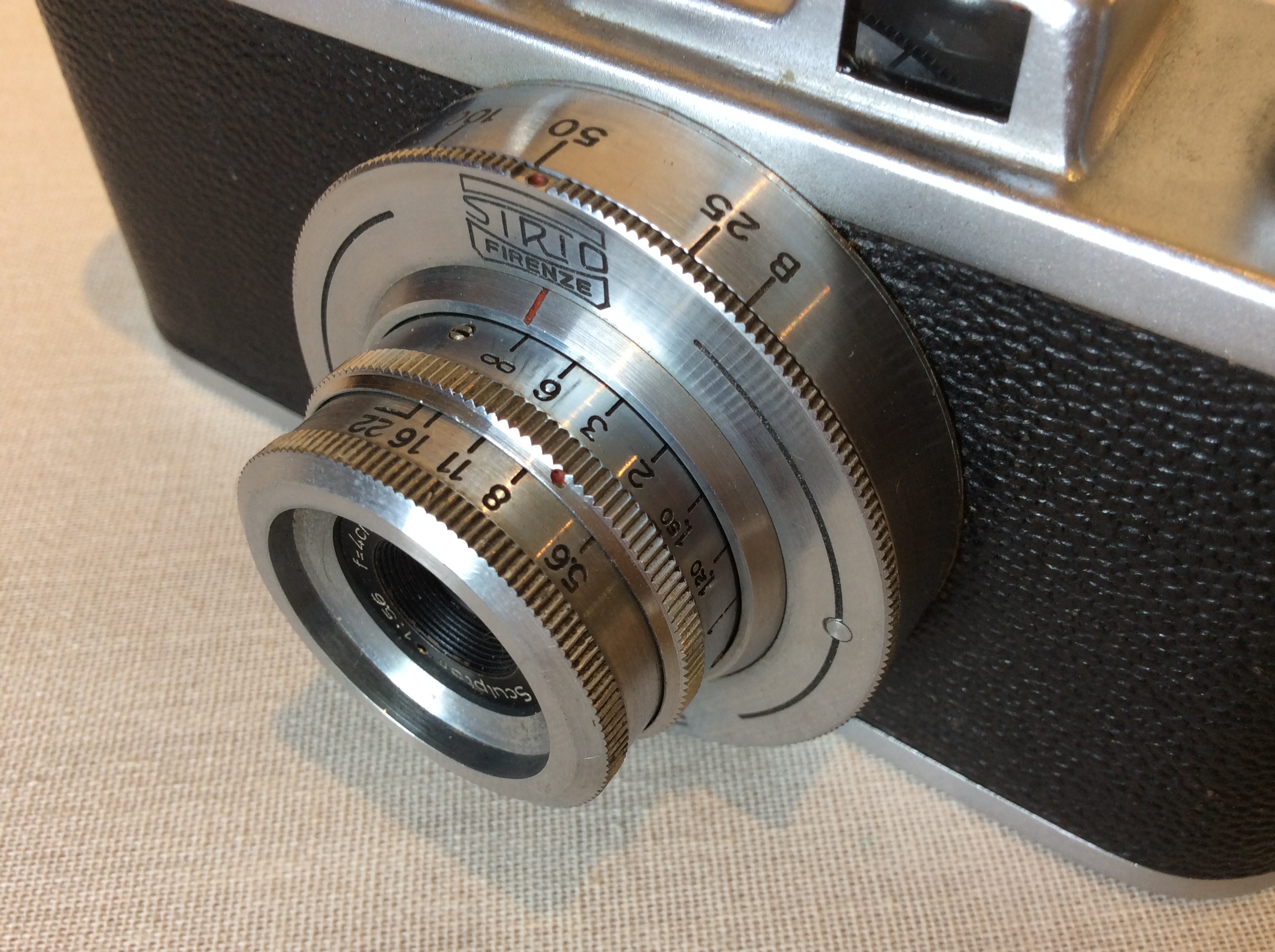
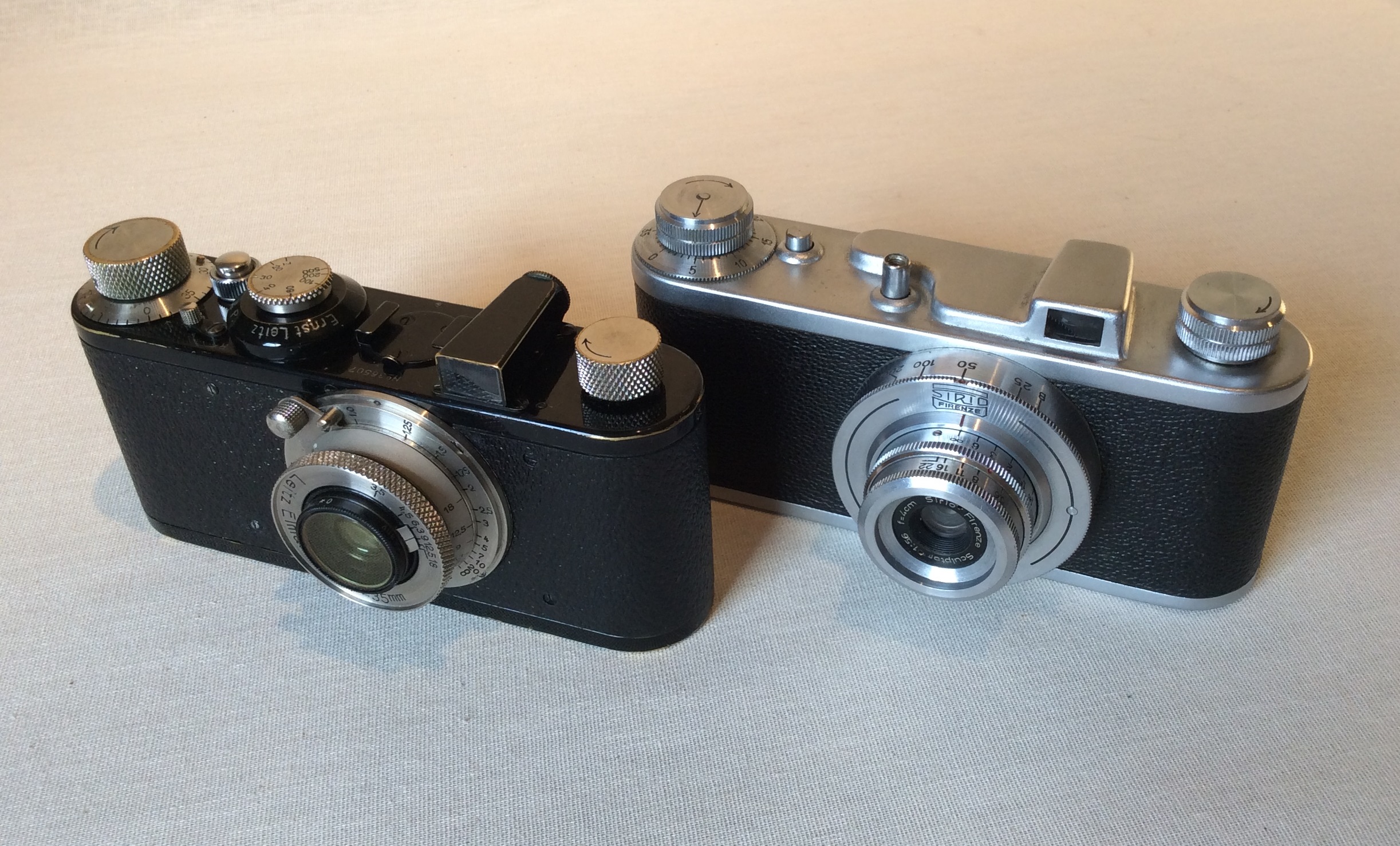 Comparison with 1930s Leica 1 Model C showing similar layout and shape!
Comparison with 1930s Leica 1 Model C showing similar layout and shape!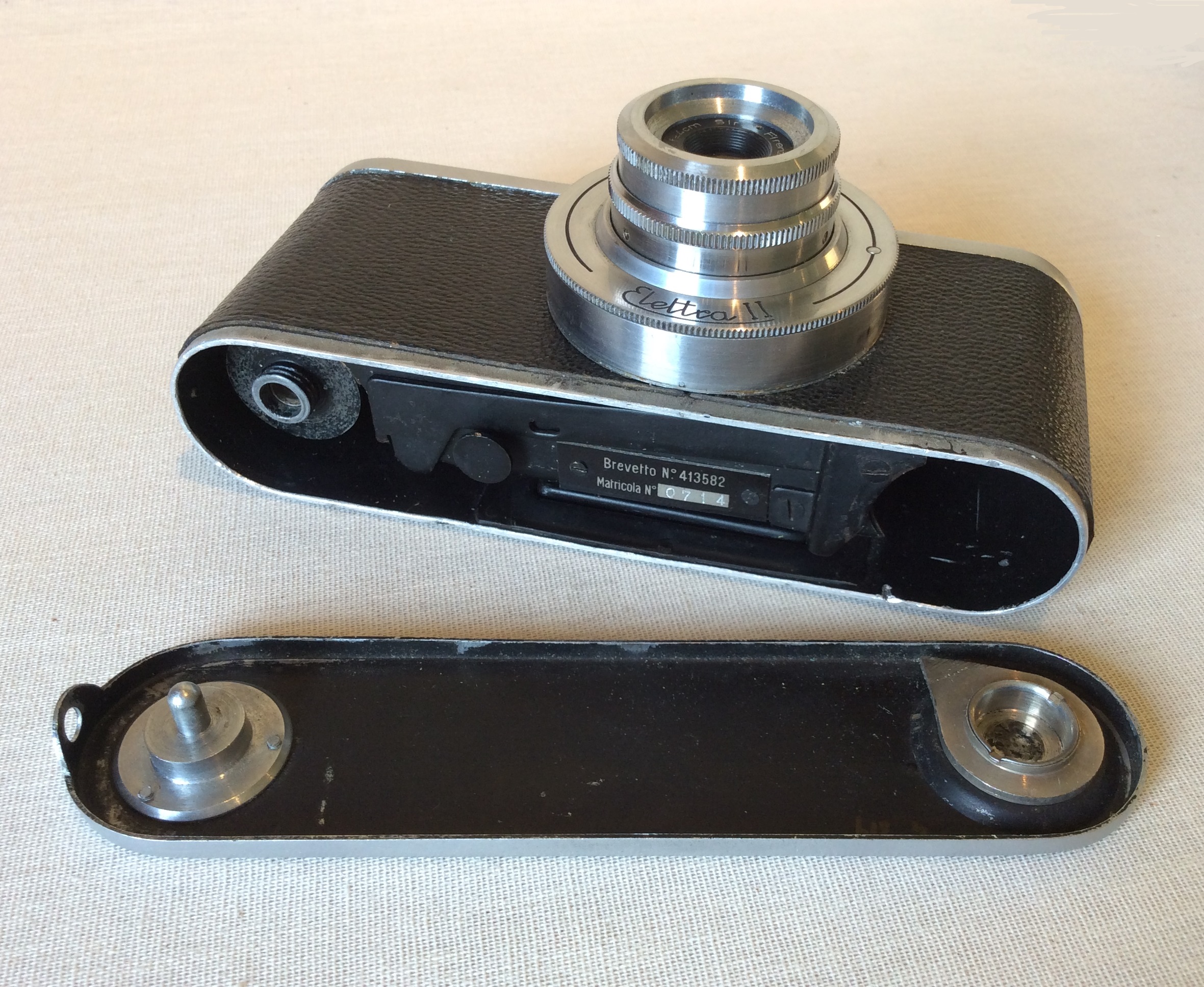 Film loading via bottom plate as for all early Leicas
Film loading via bottom plate as for all early Leicas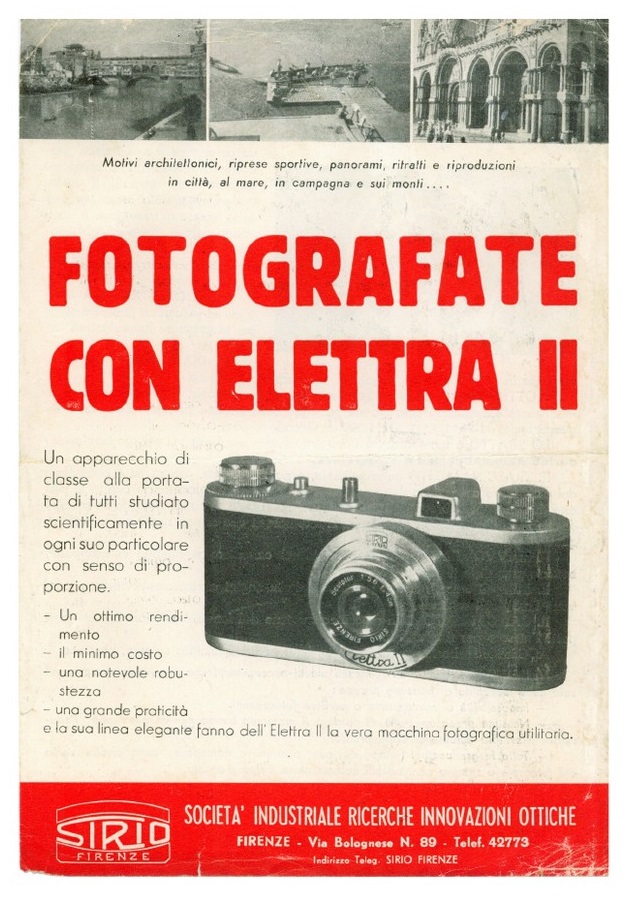 Advert for the second model with a simpler viewfinder (not made?)
Advert for the second model with a simpler viewfinder (not made?)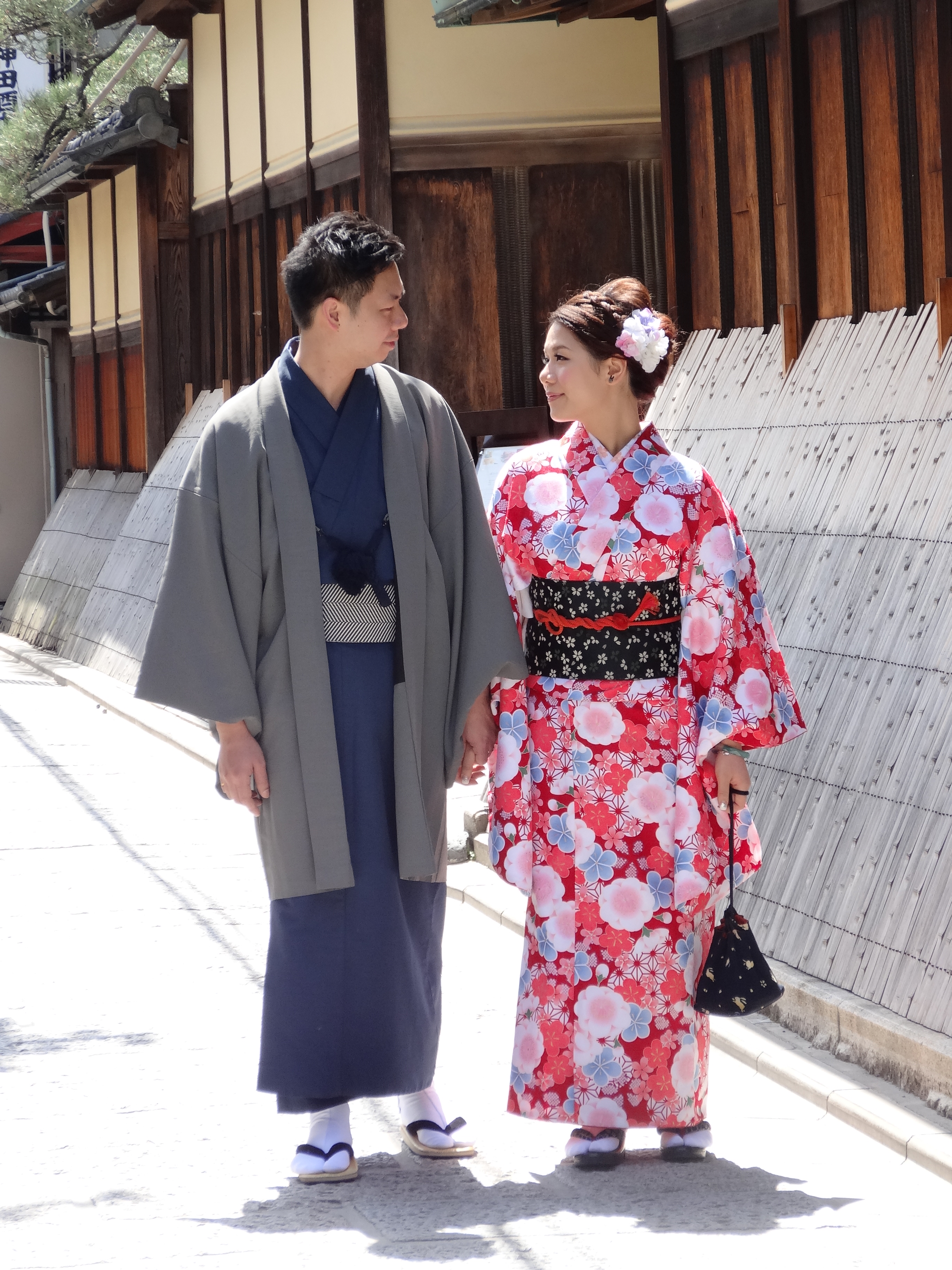
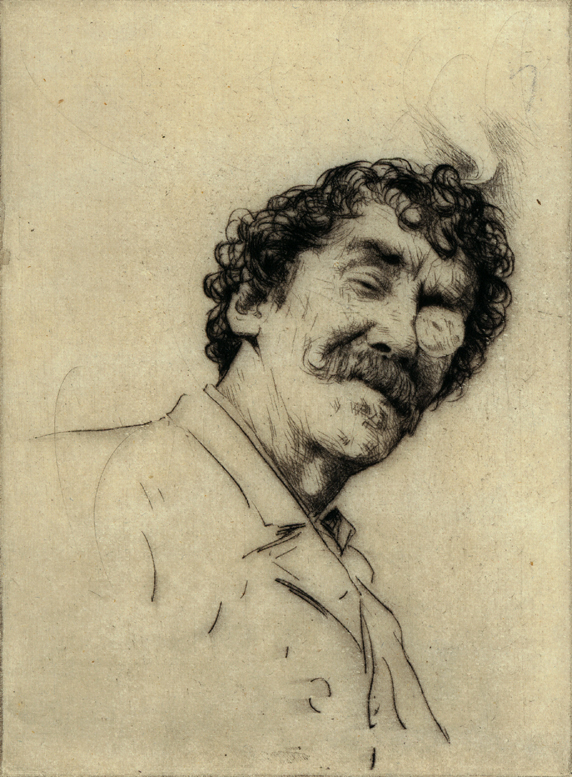
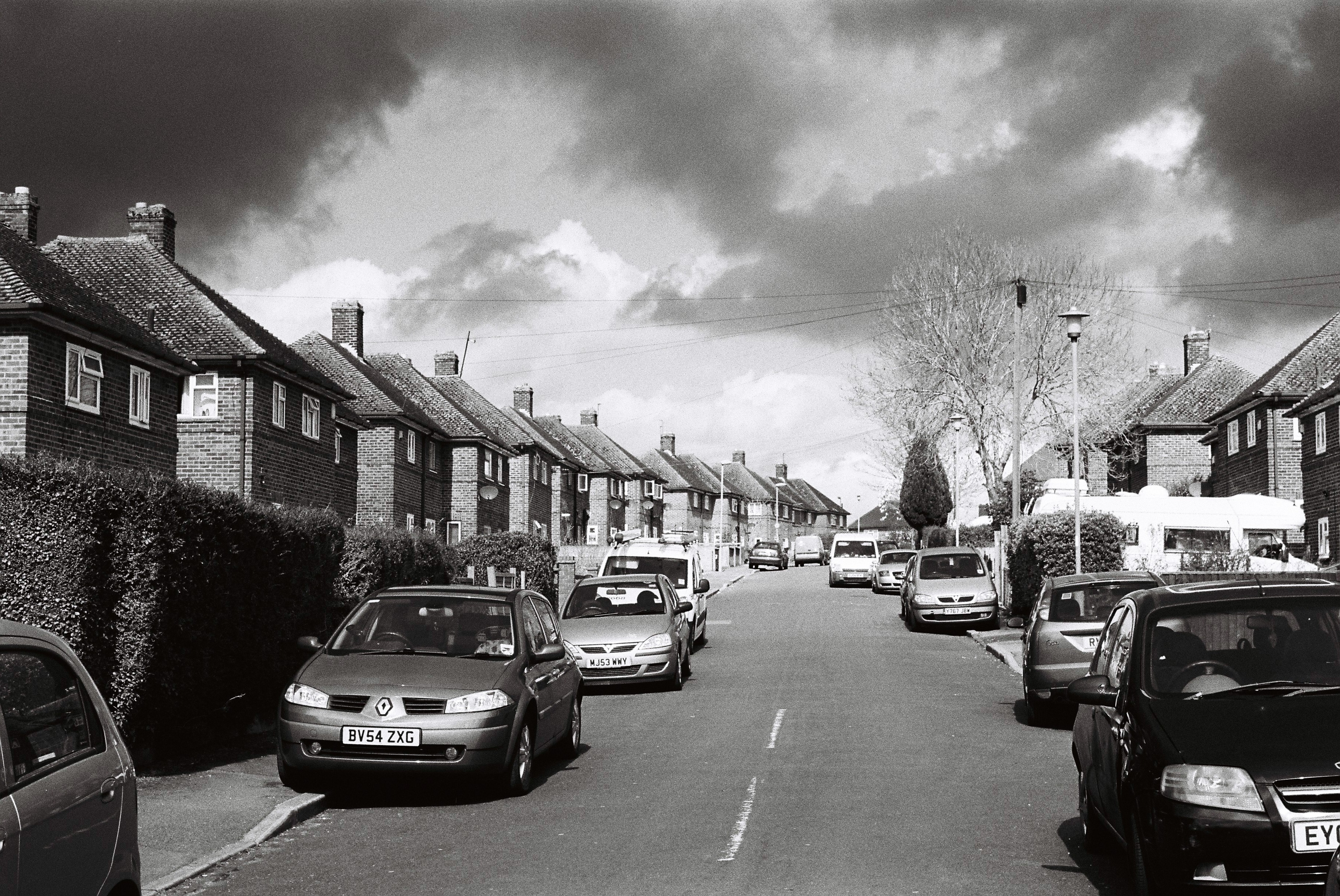
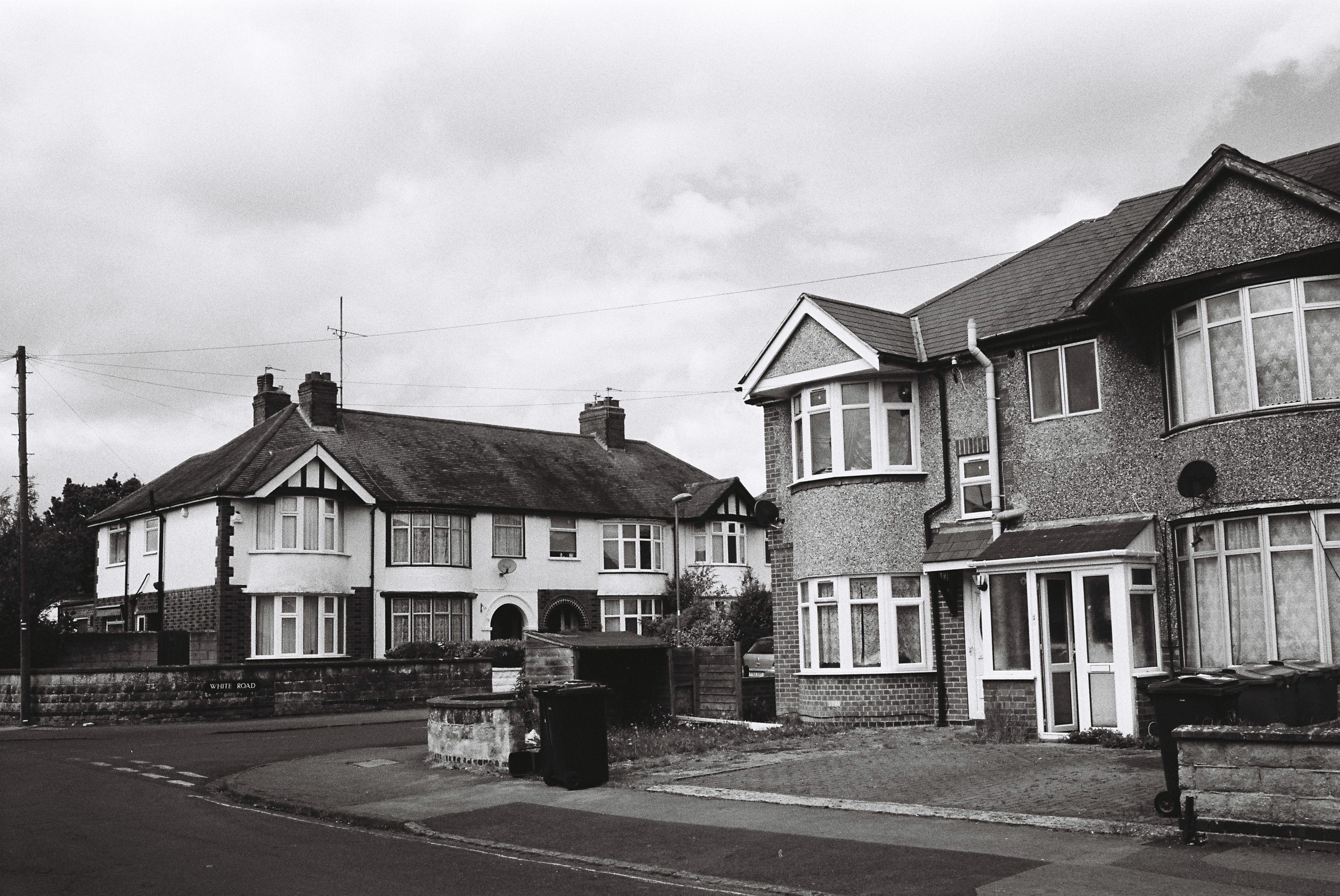
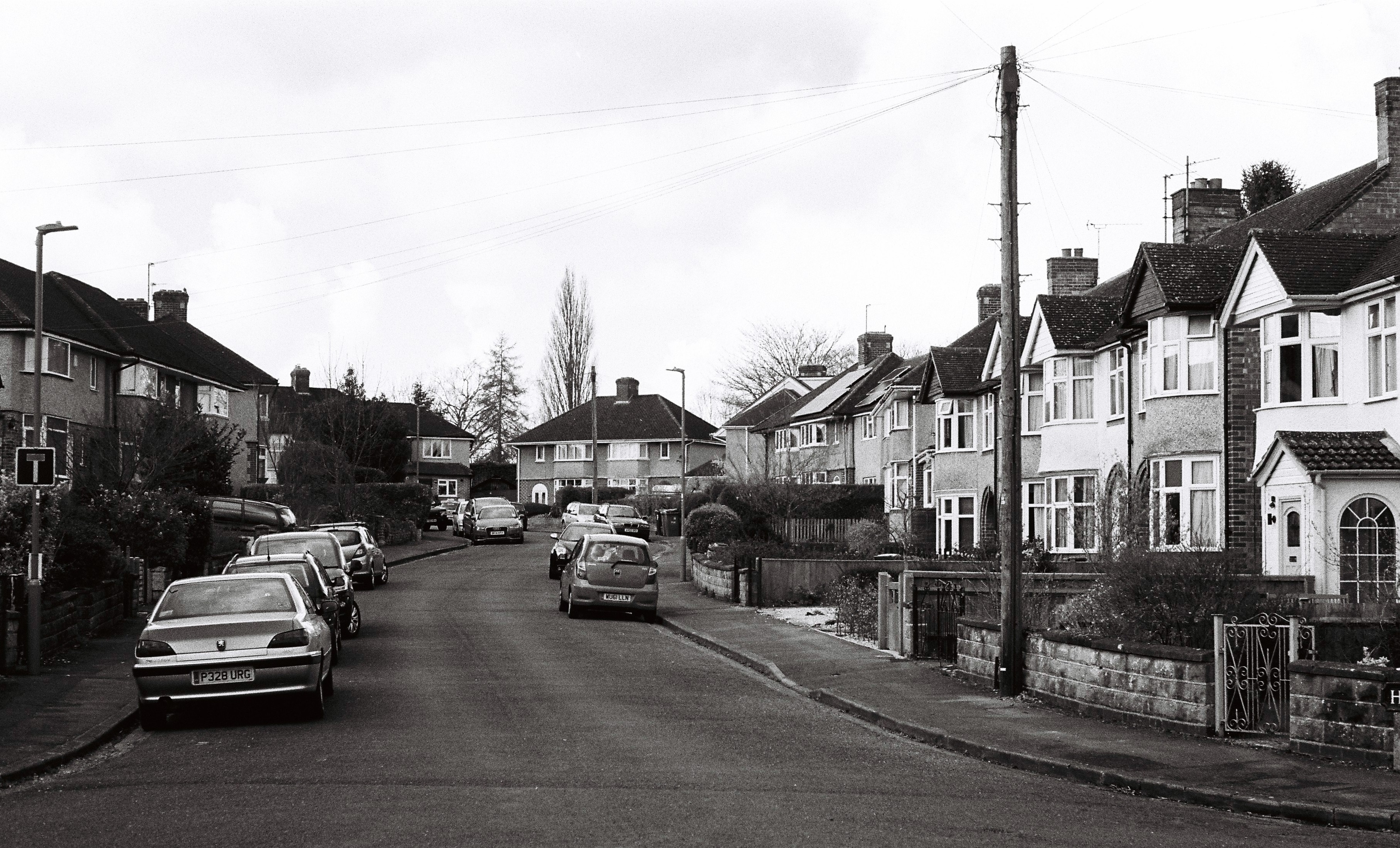
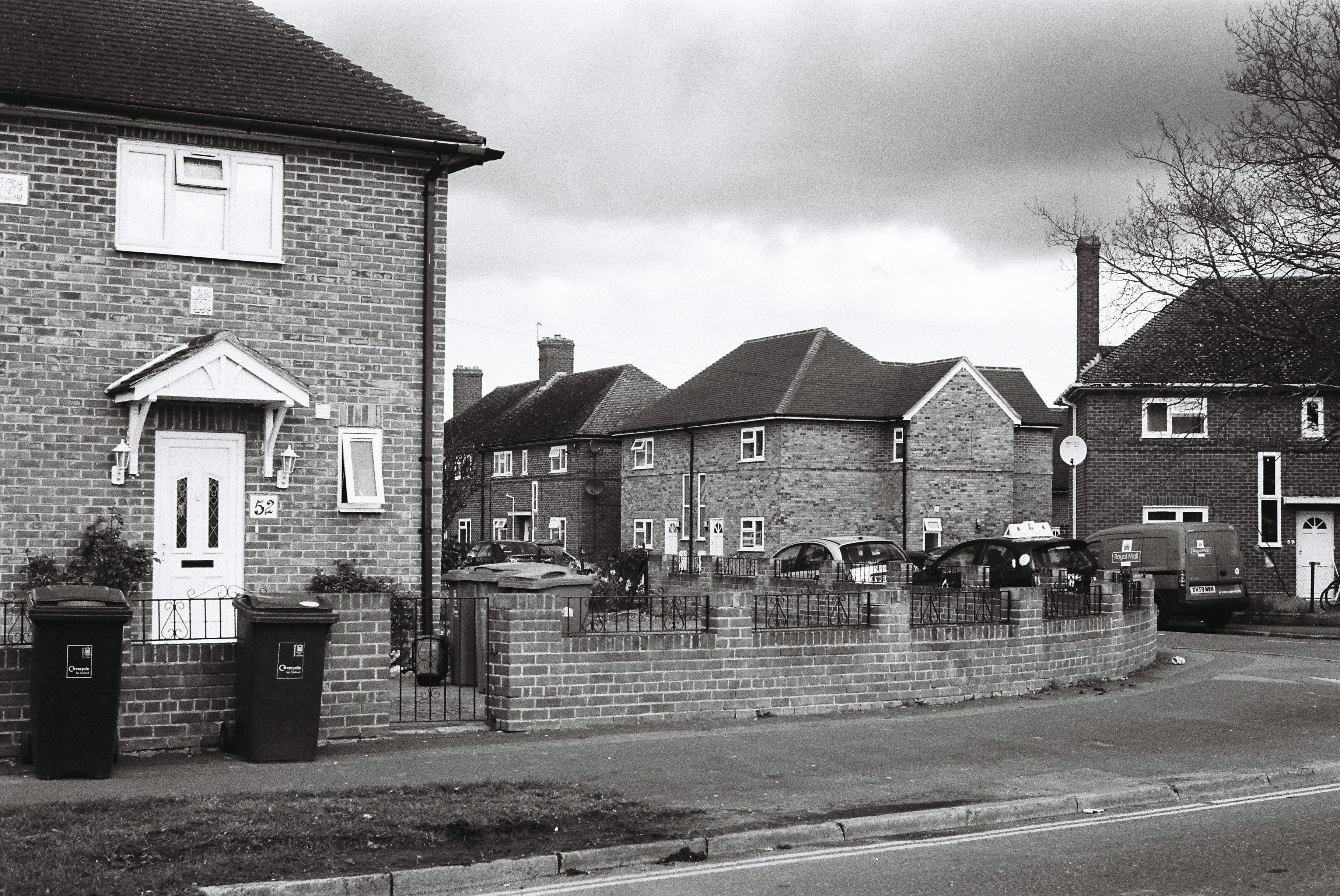
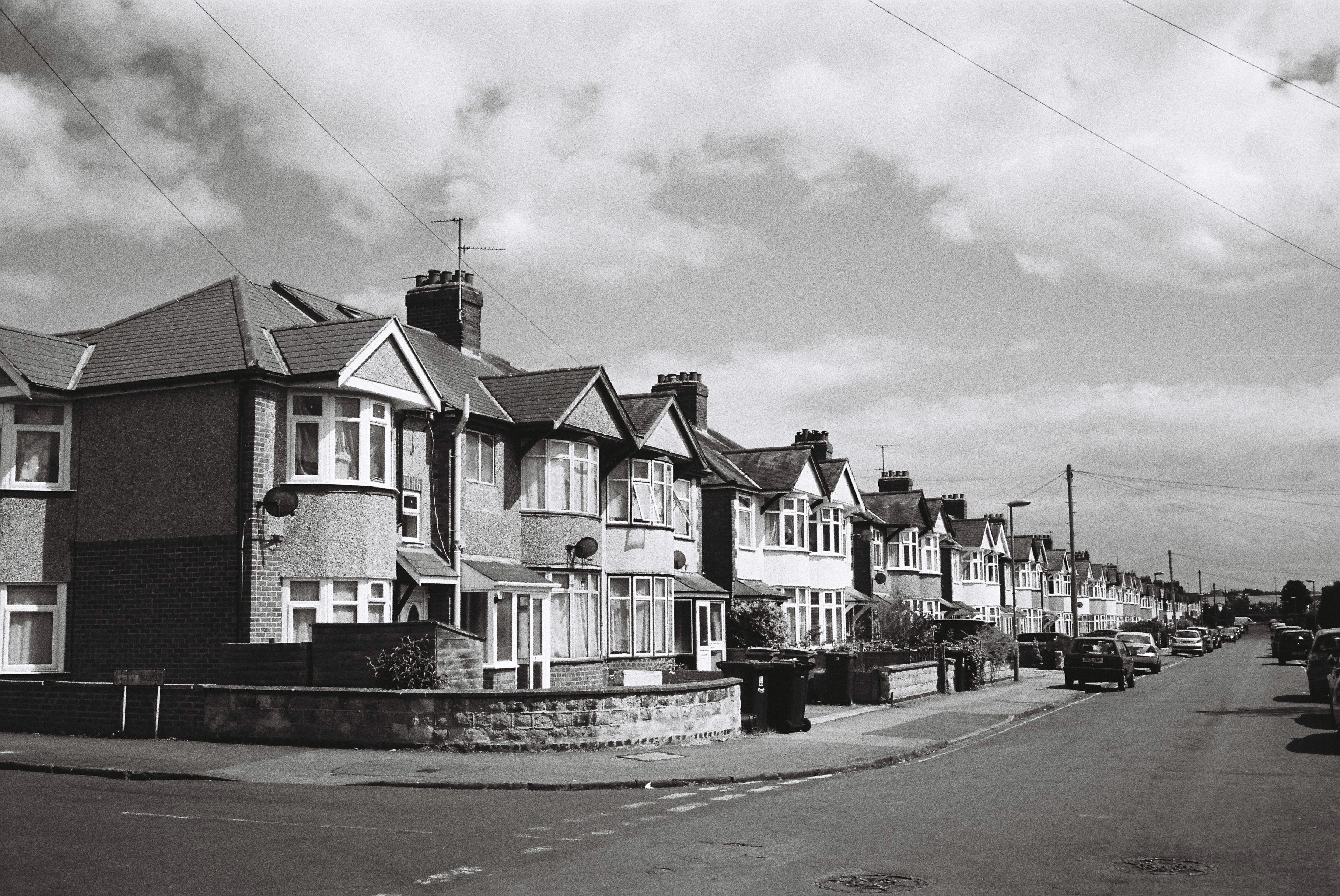
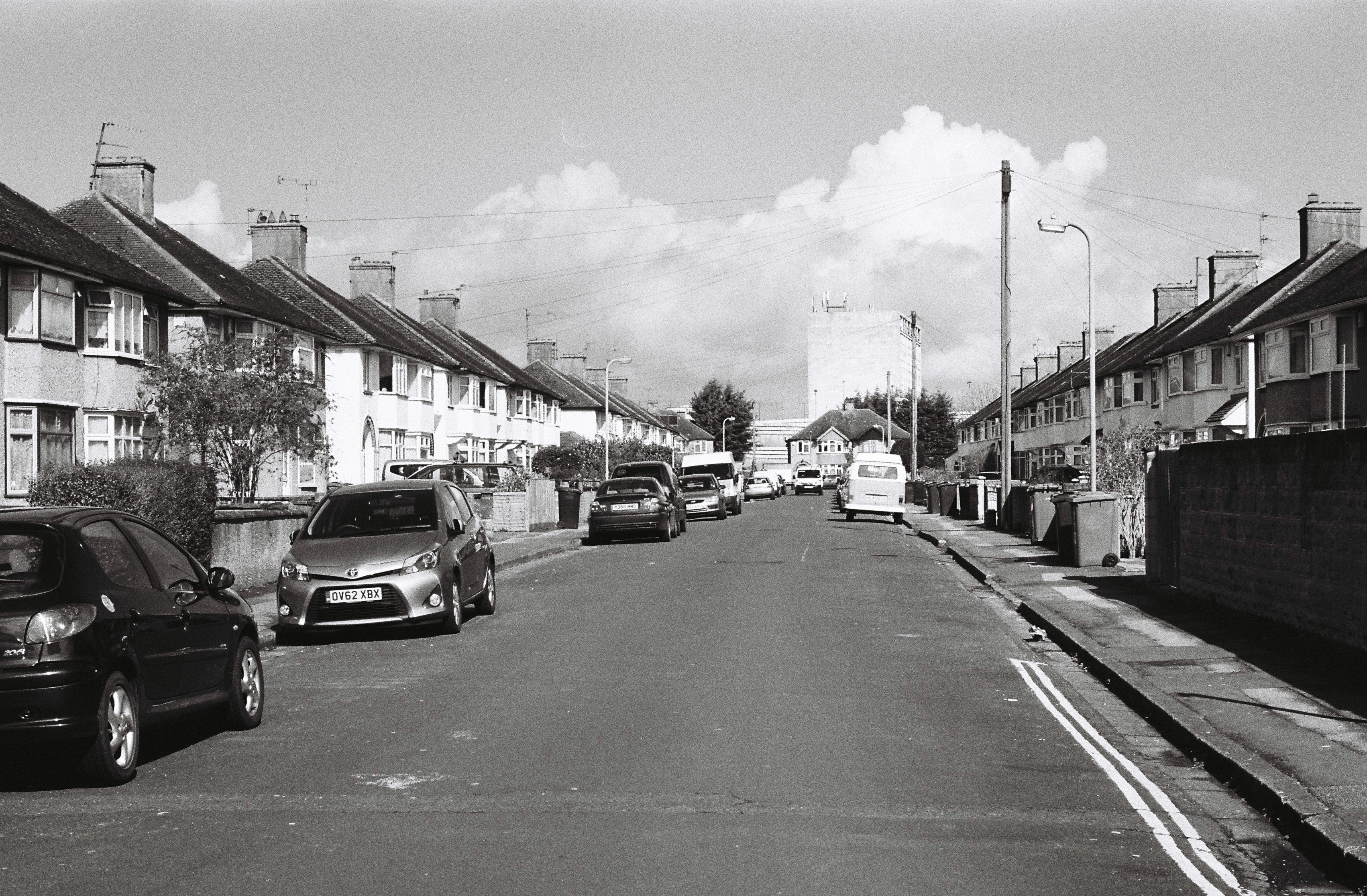
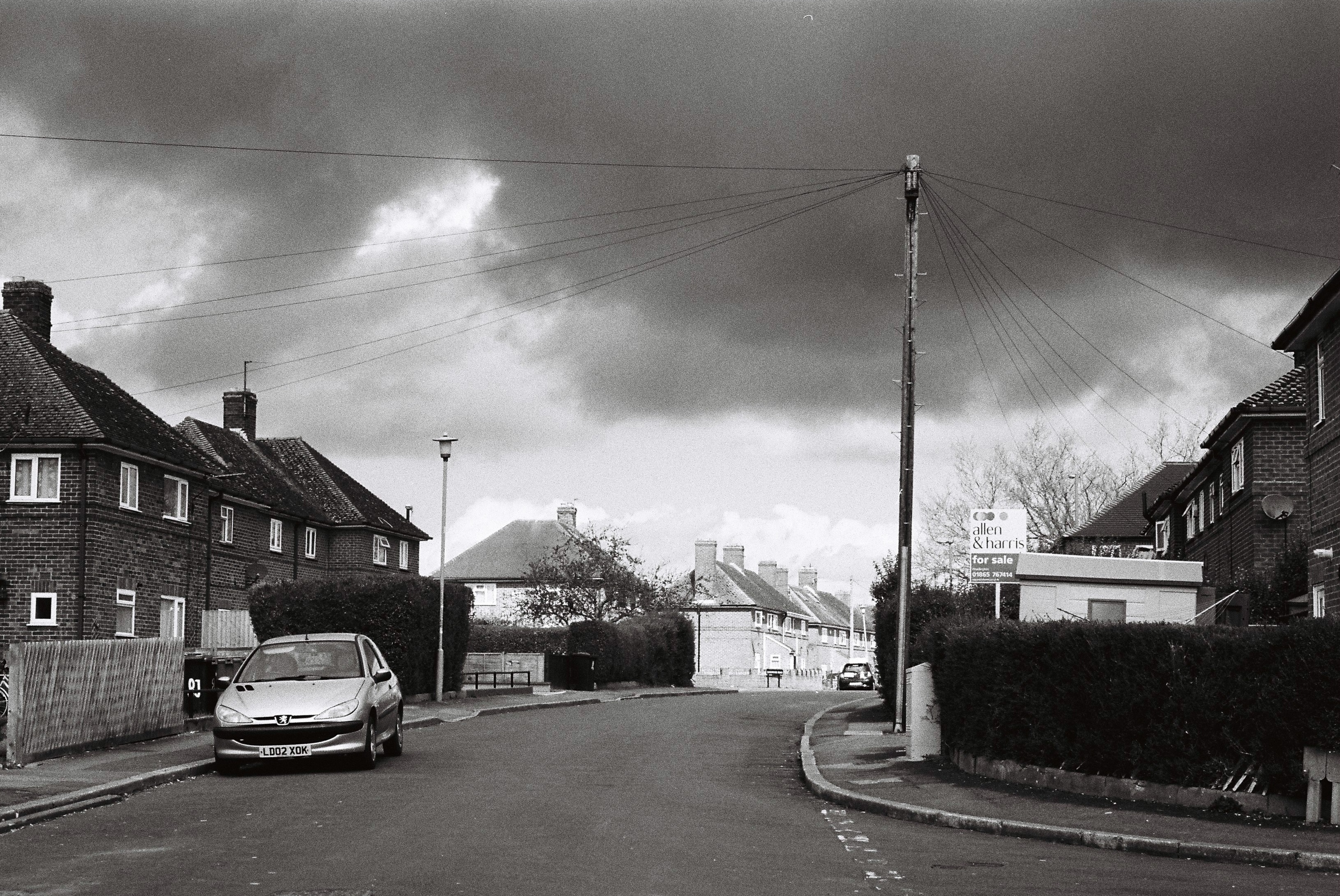
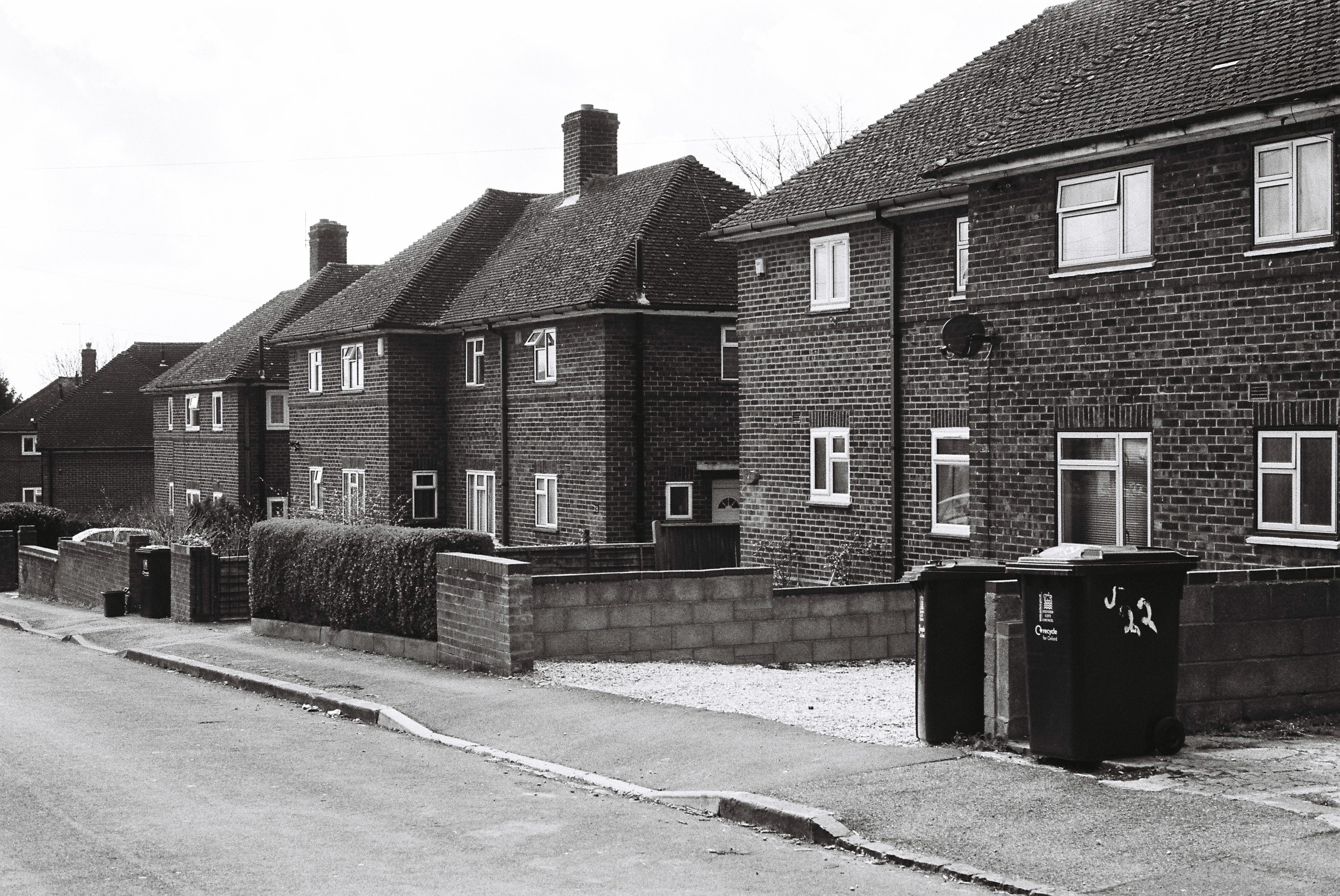

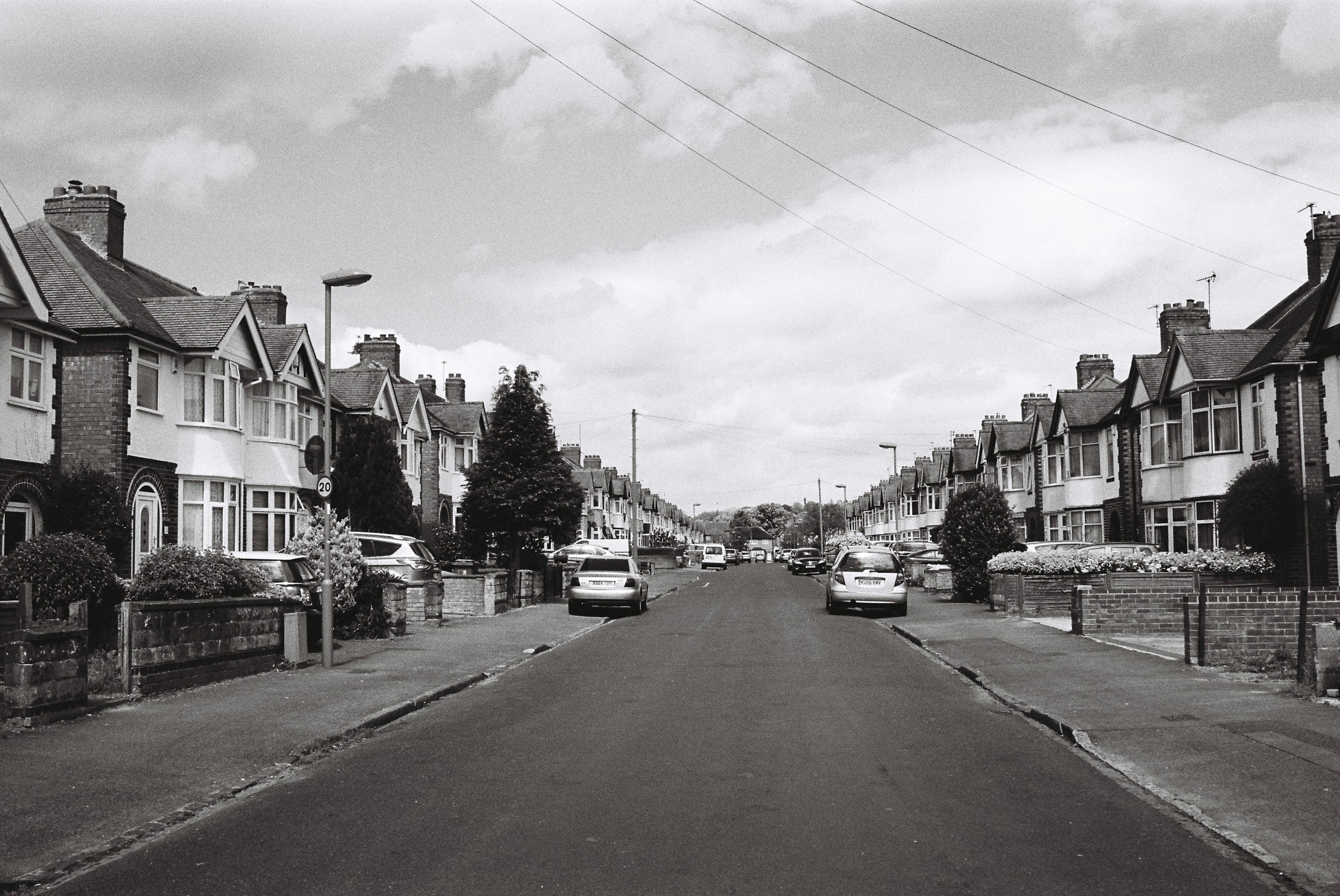
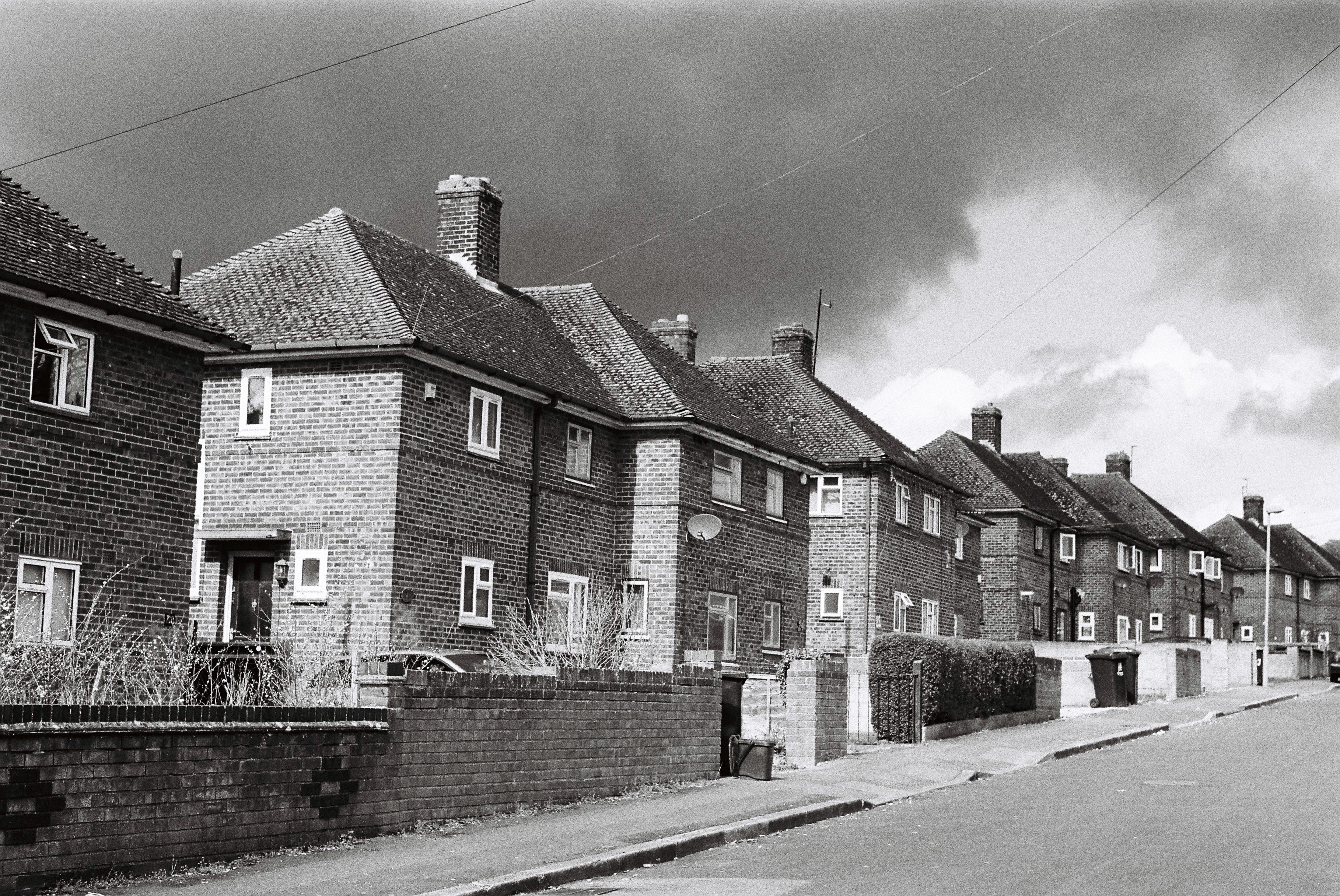
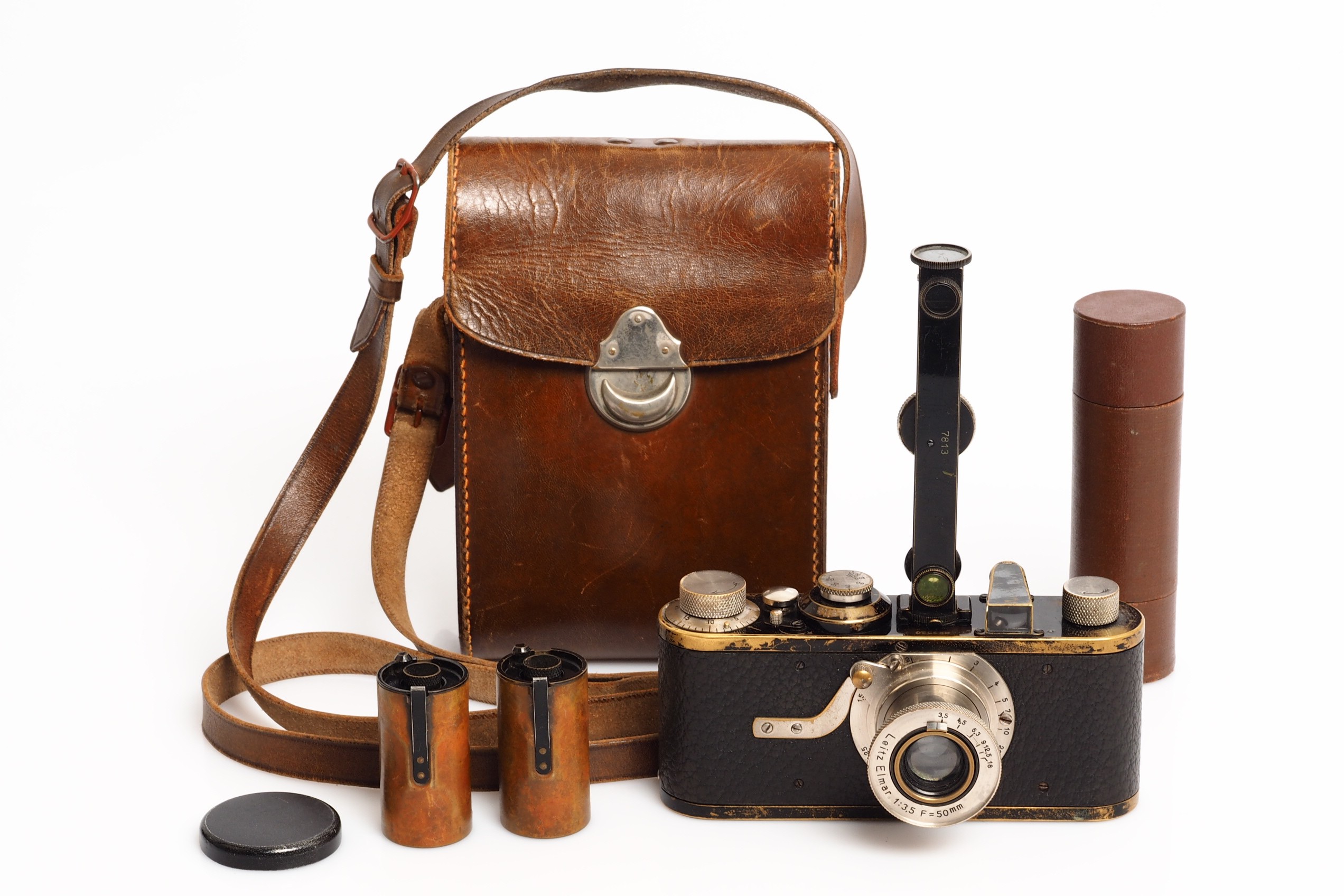
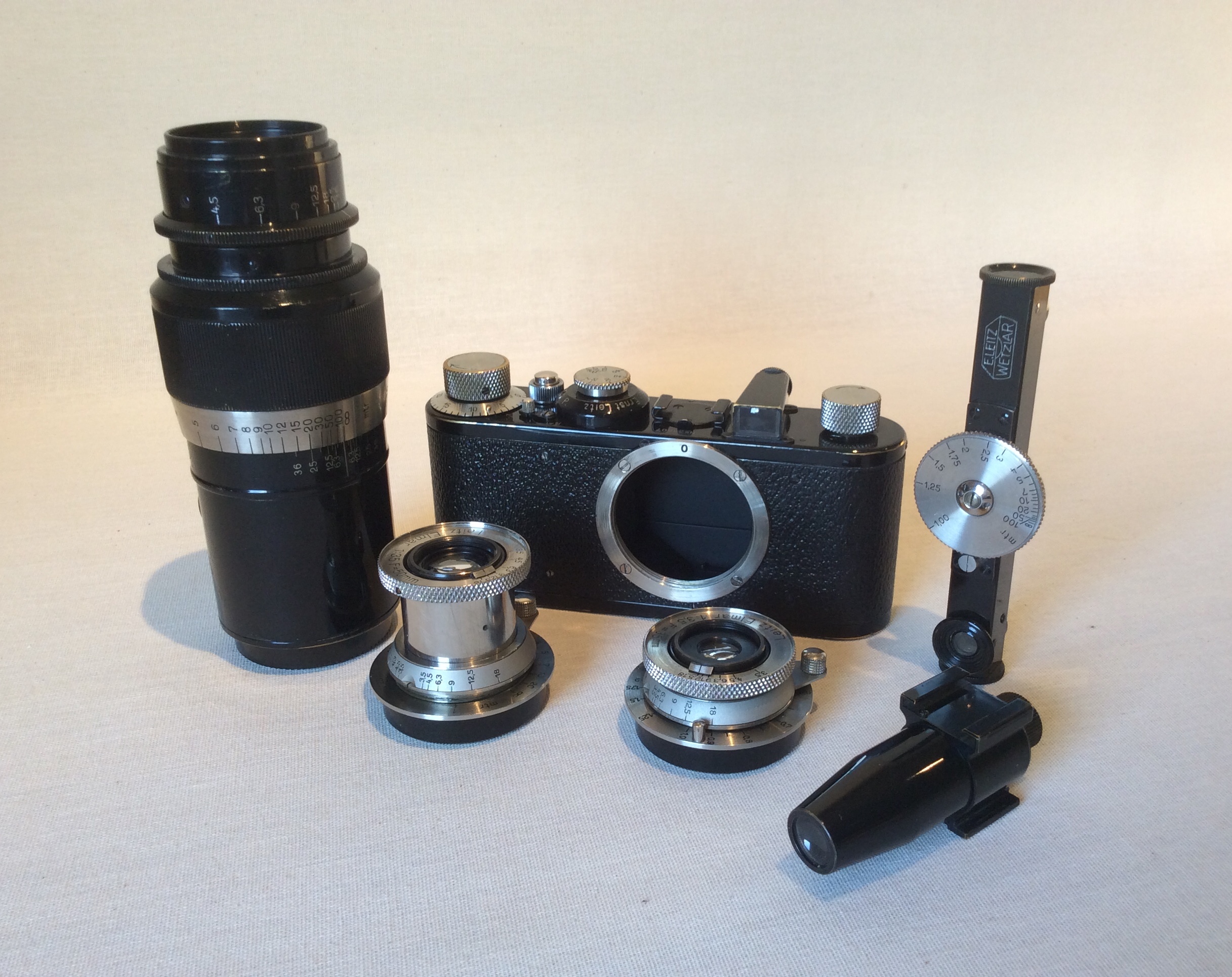

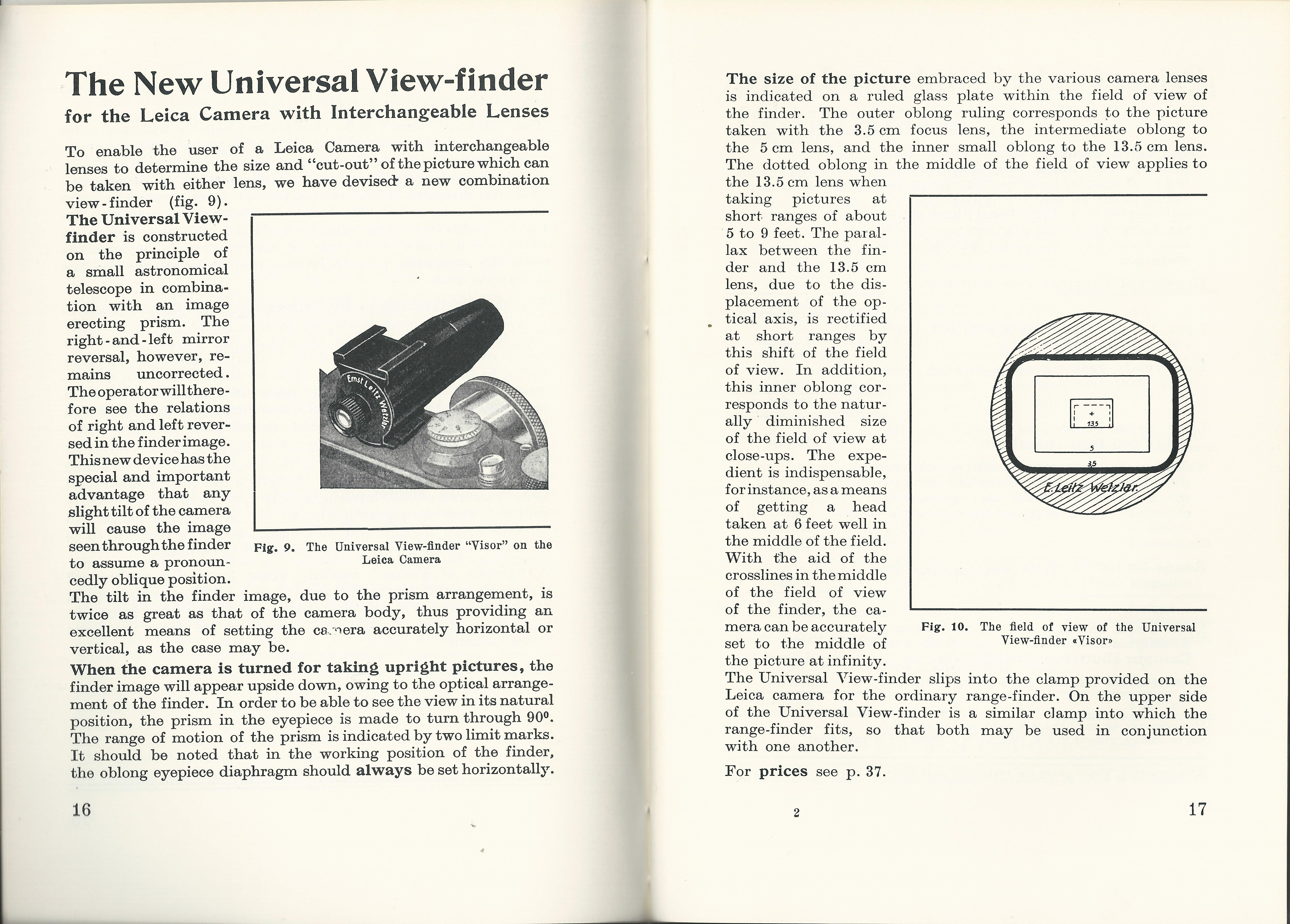
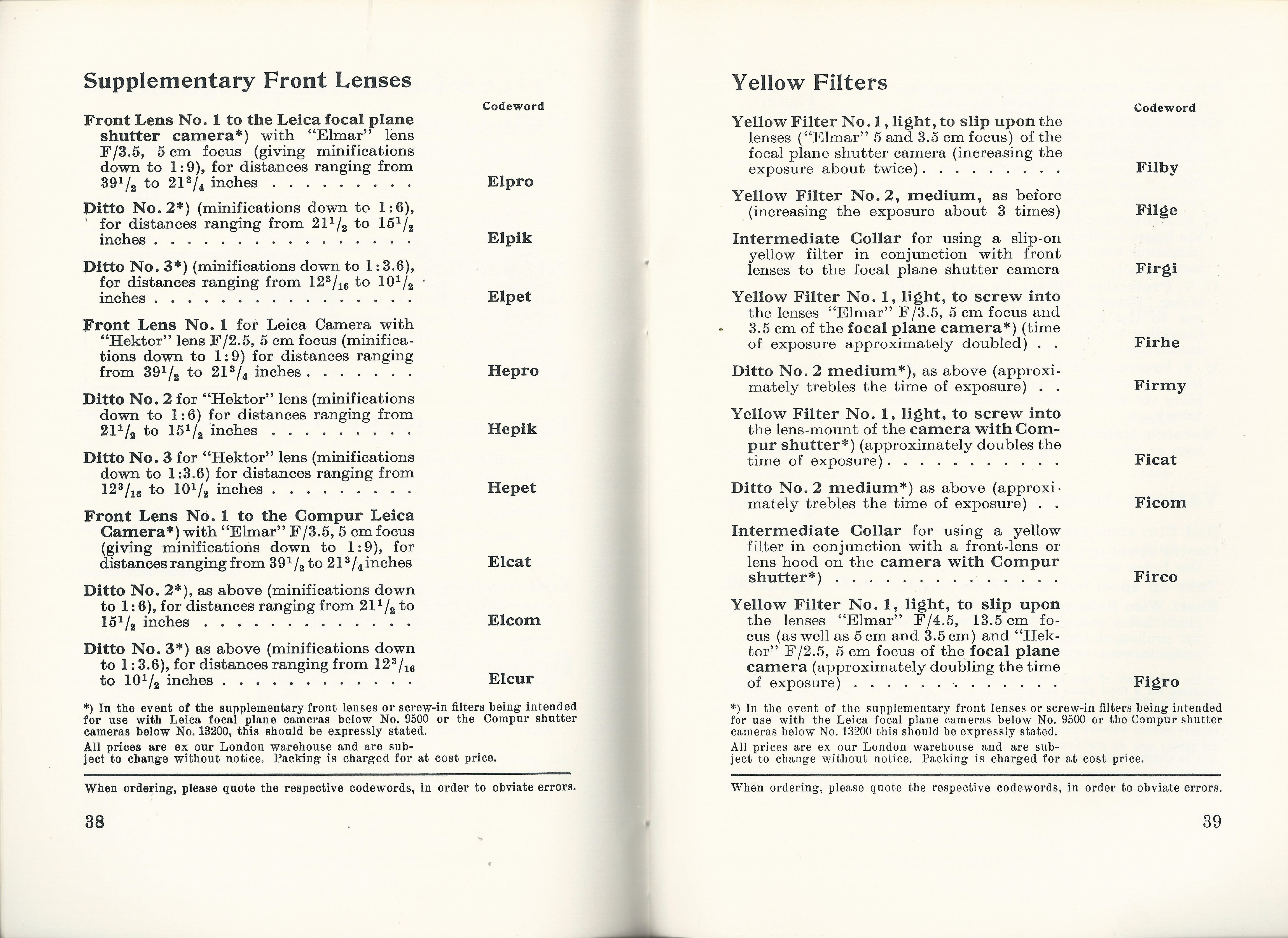
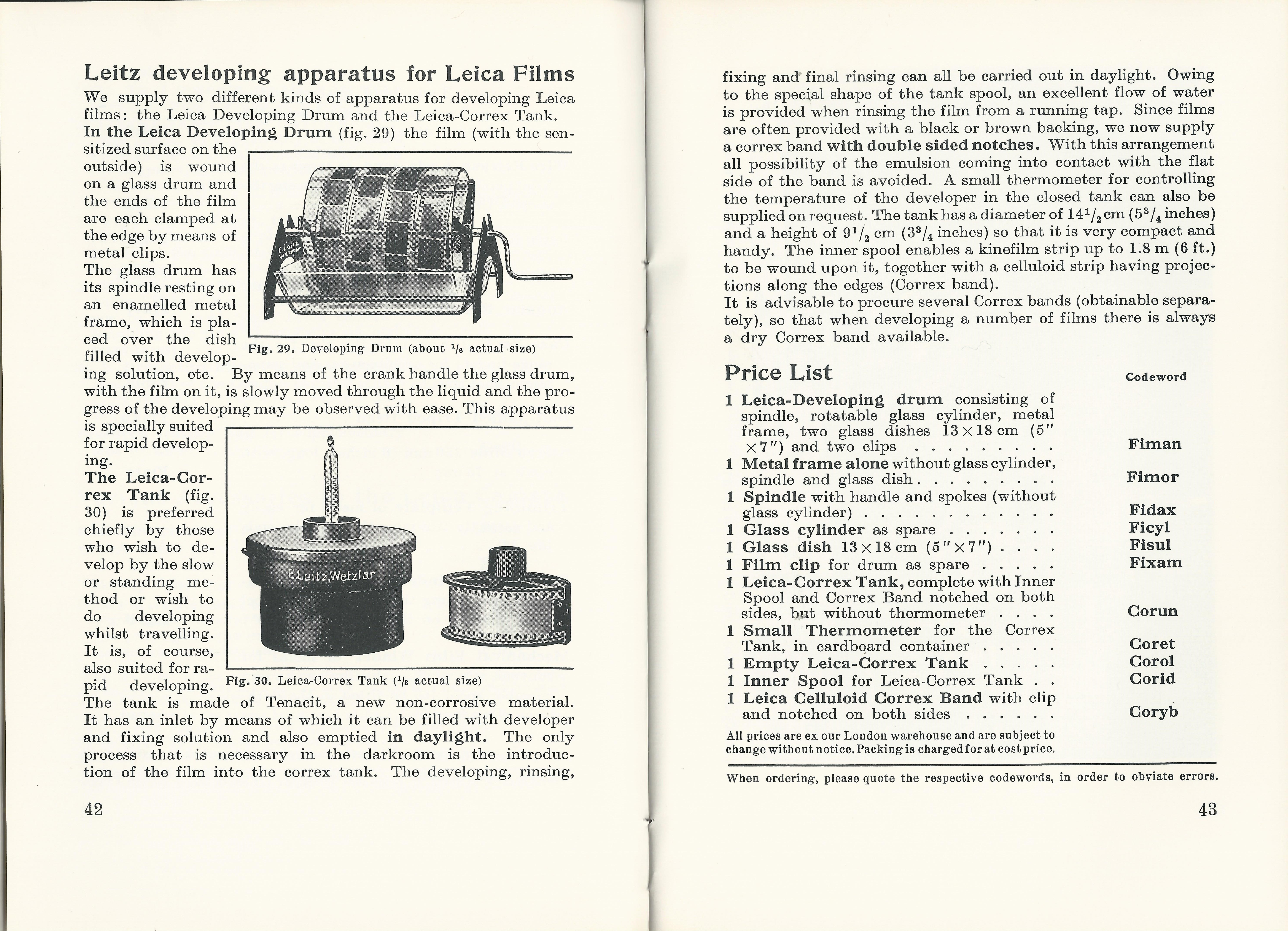
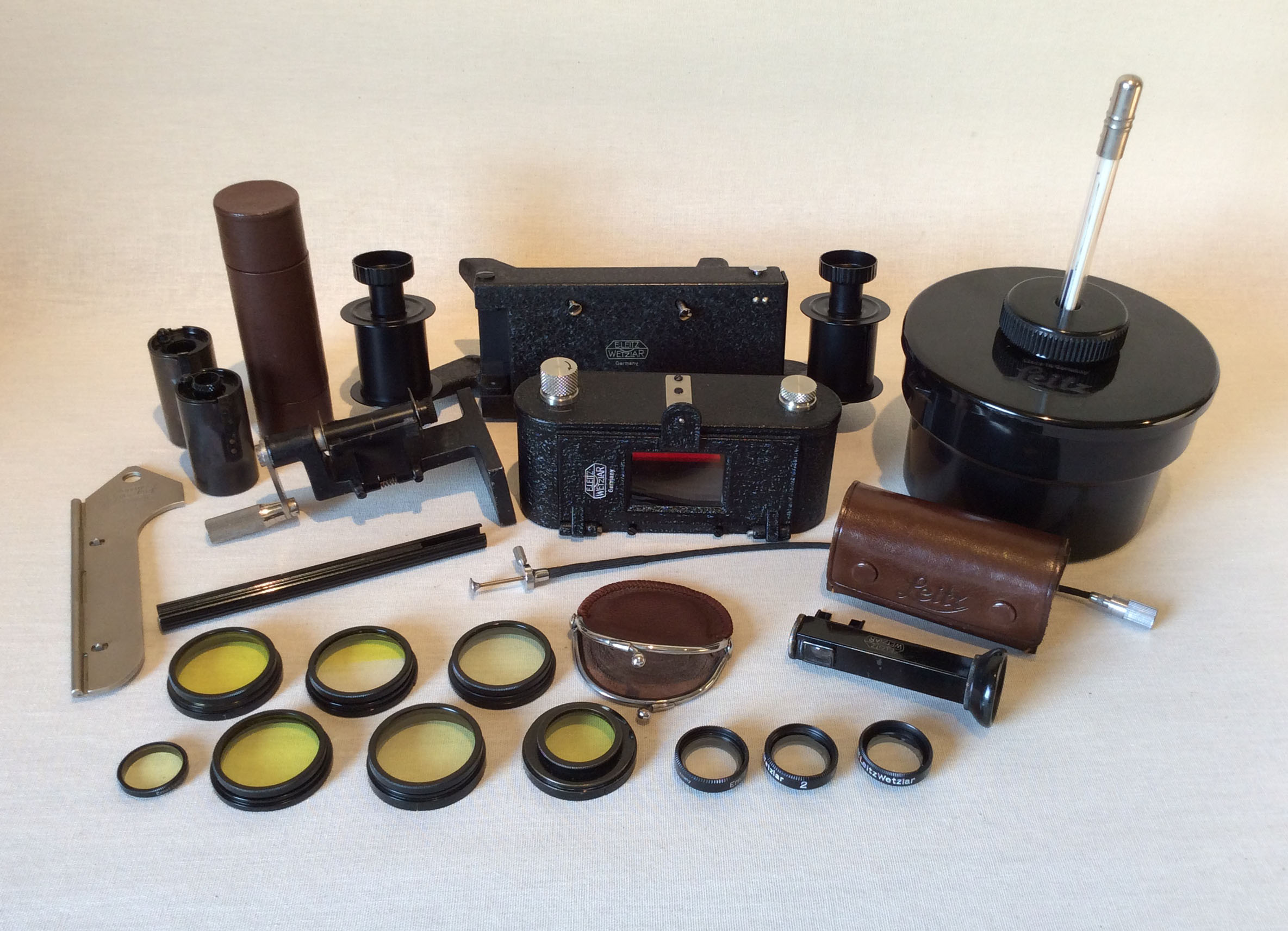
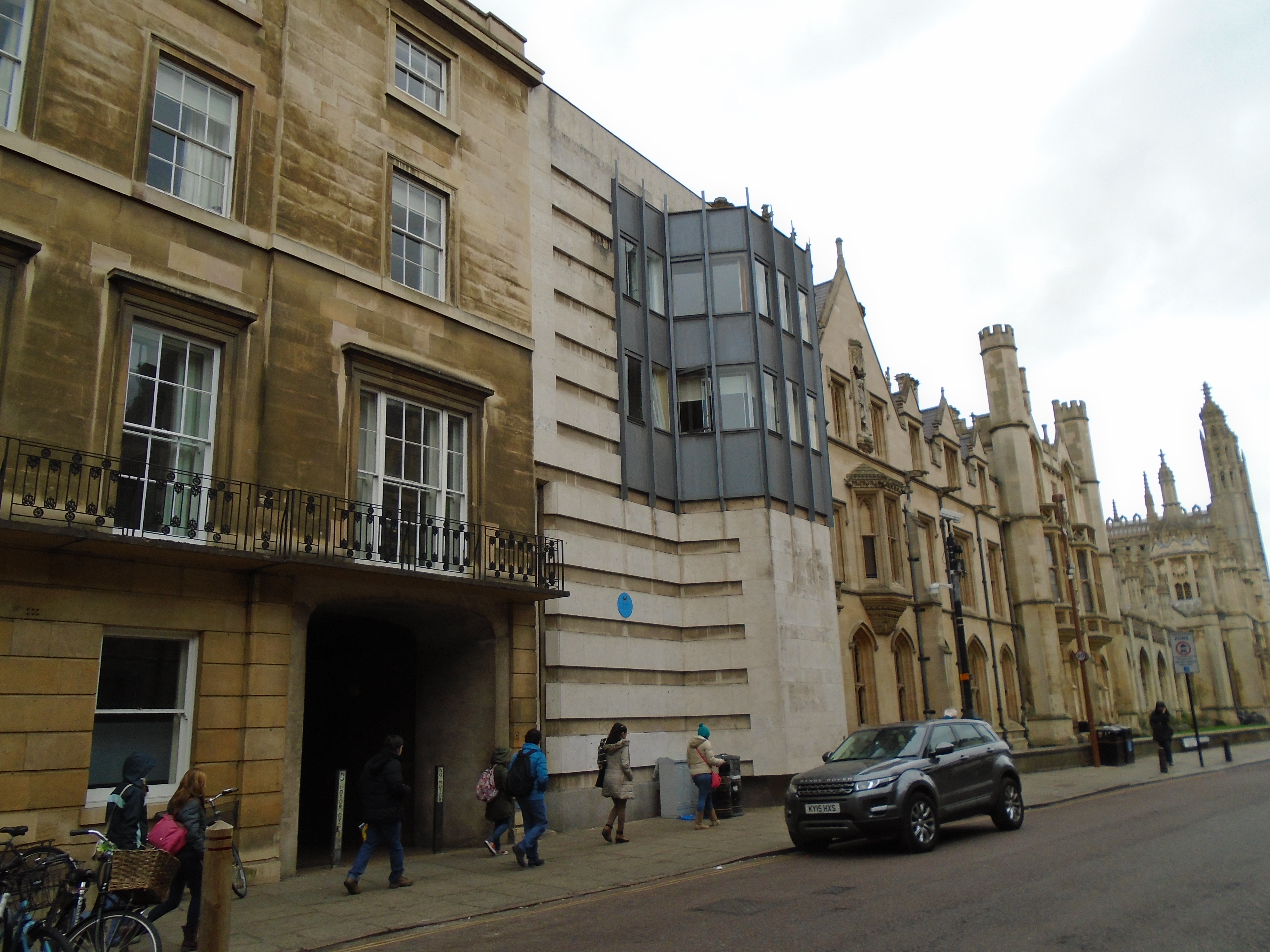
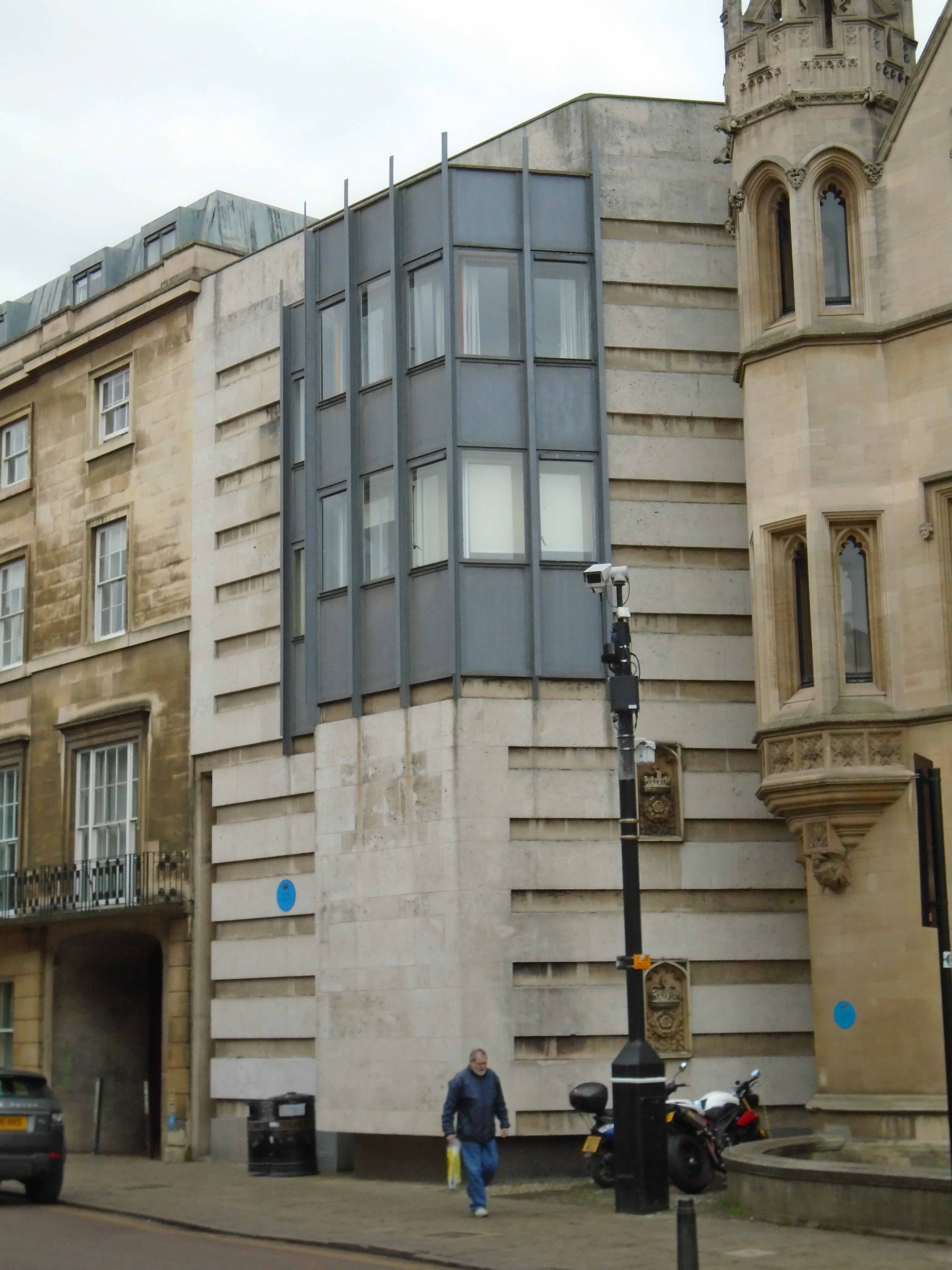
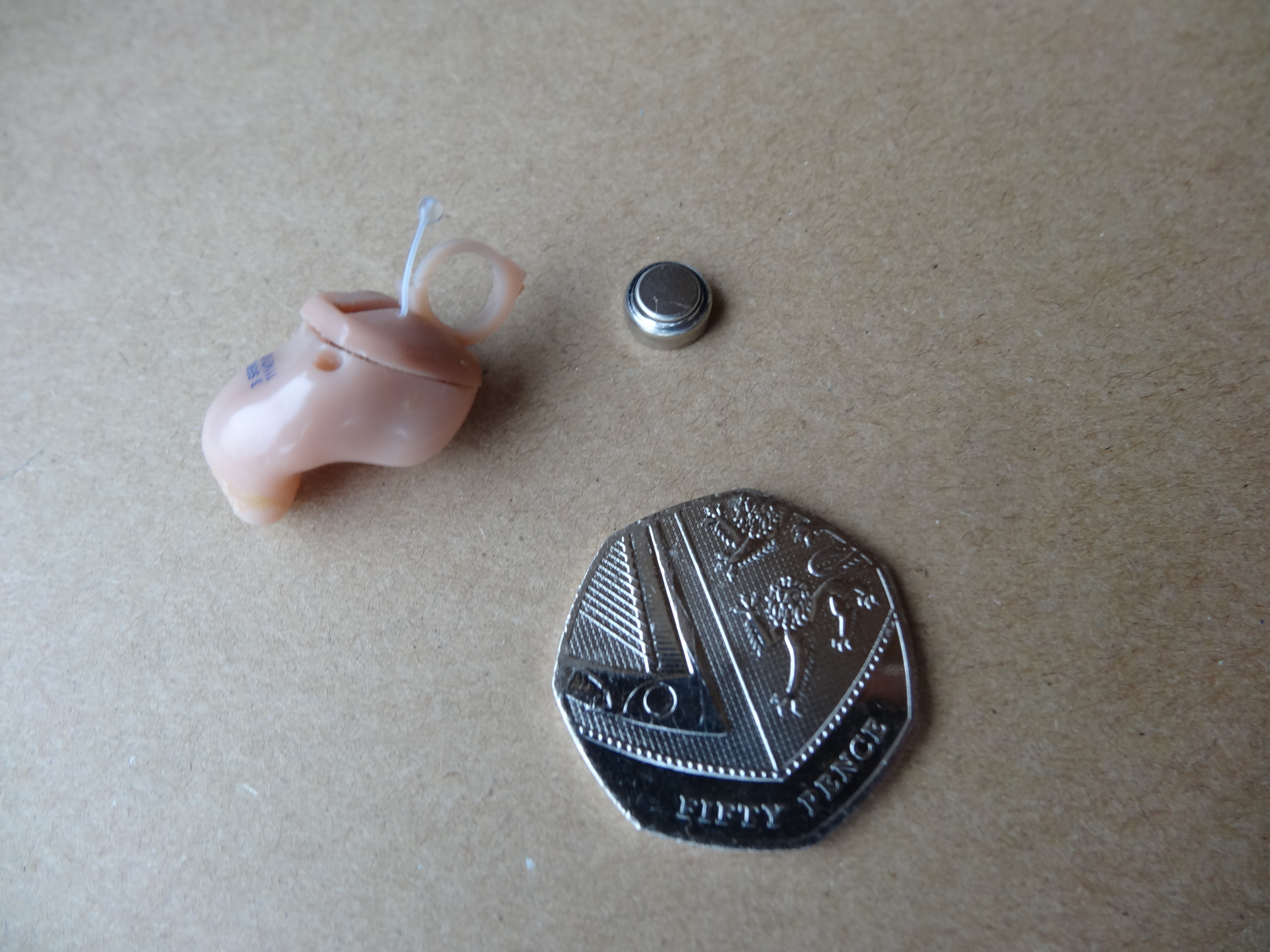
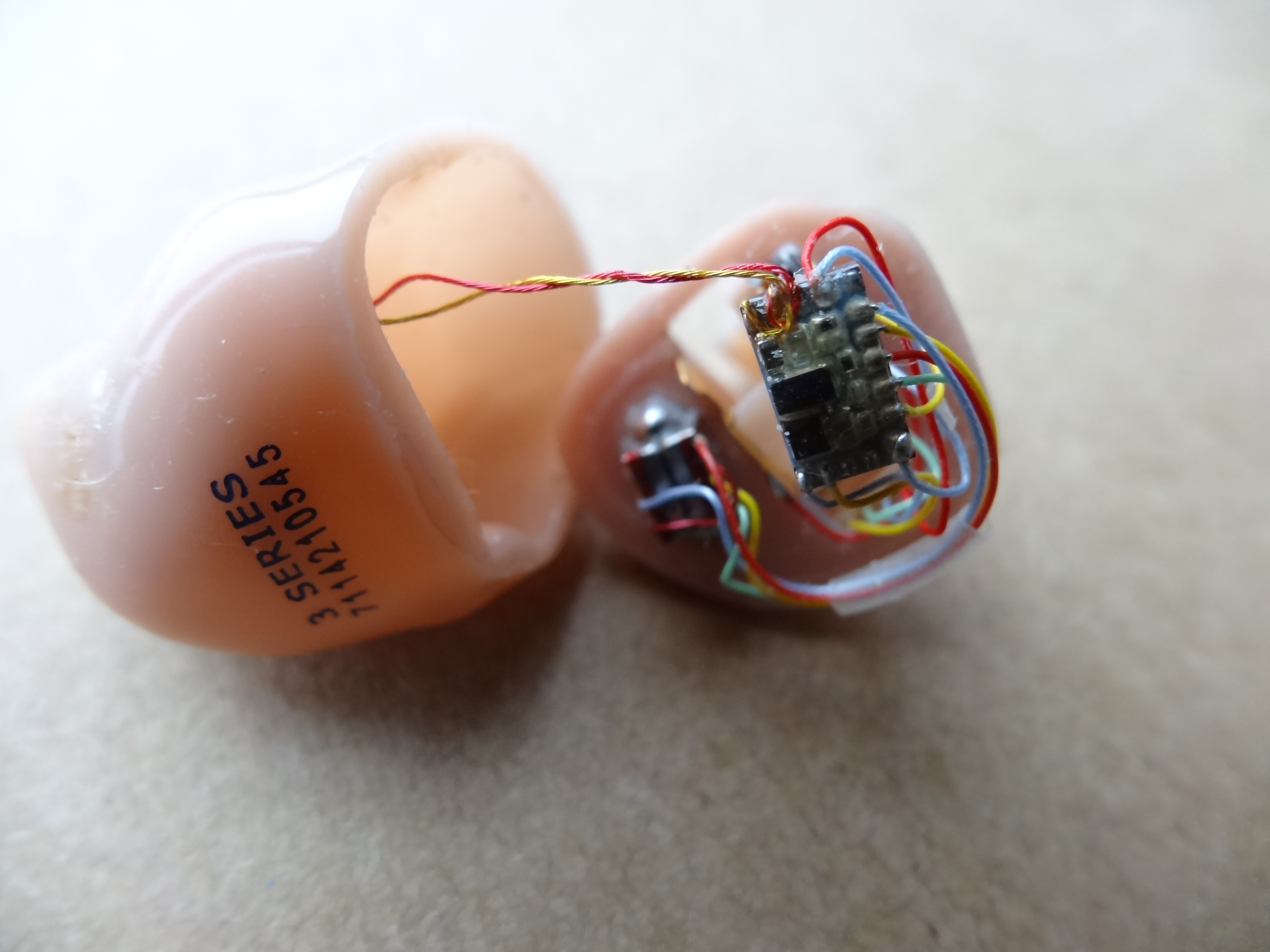
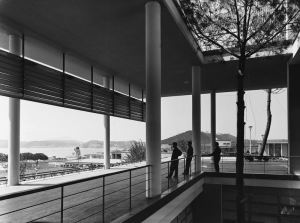
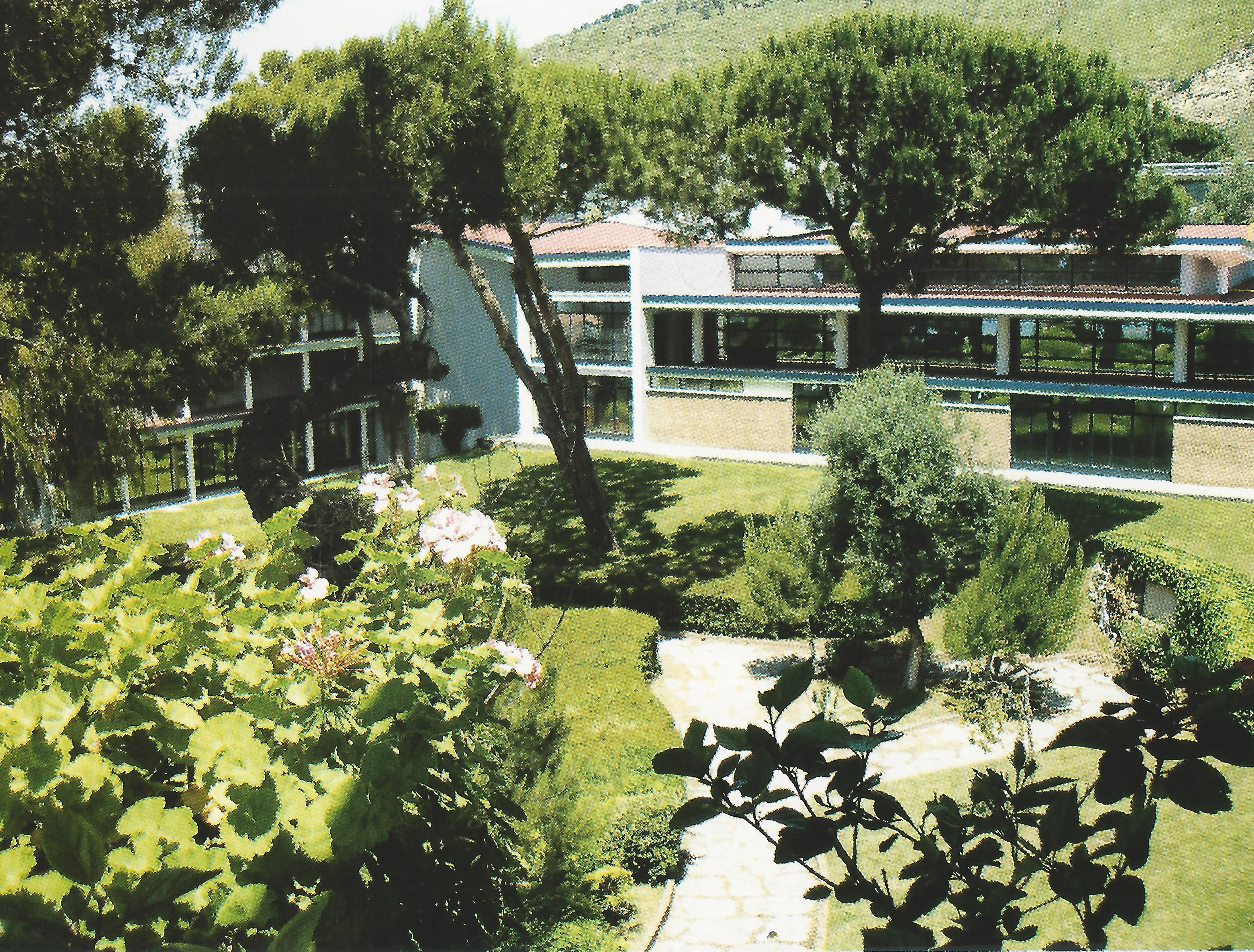
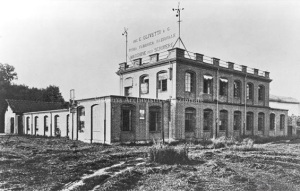
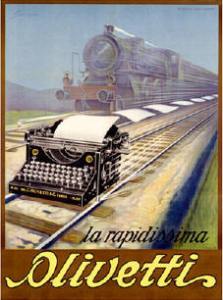
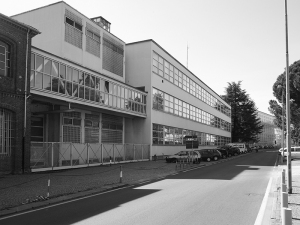
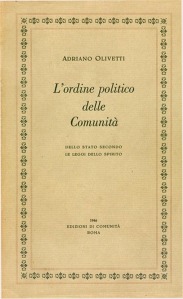
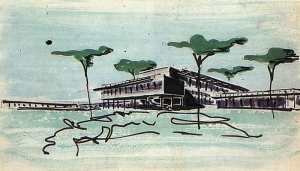
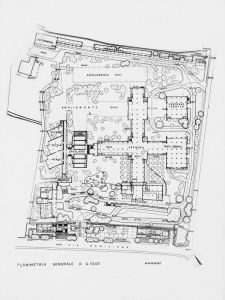
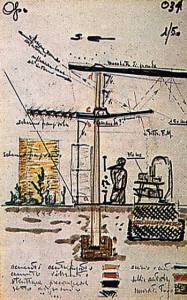
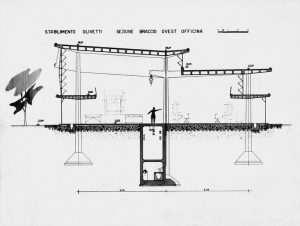
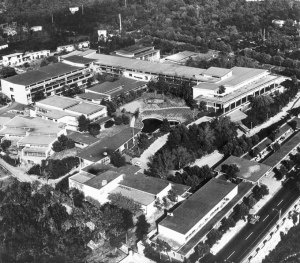
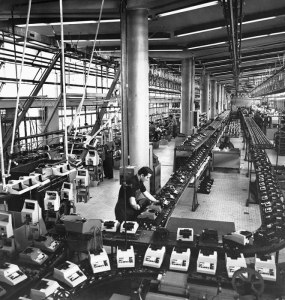
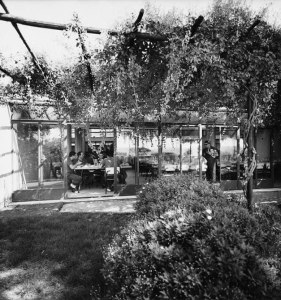
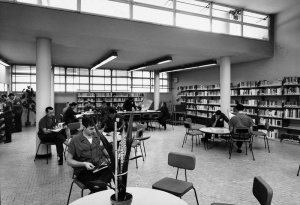
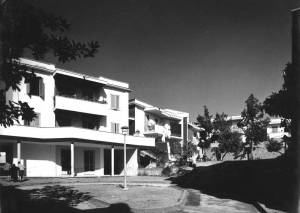
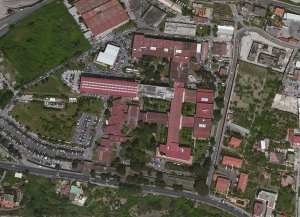
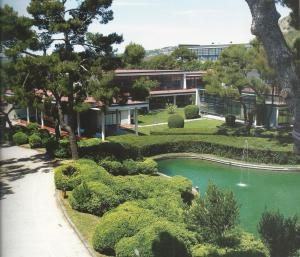
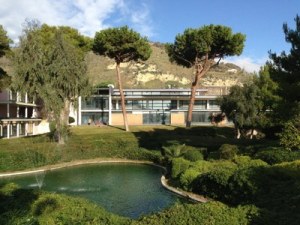
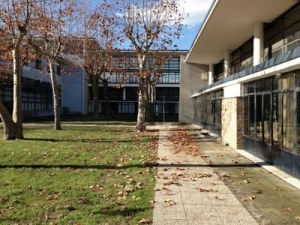
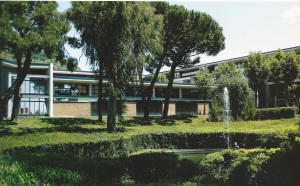
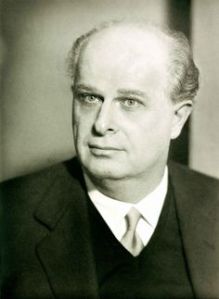
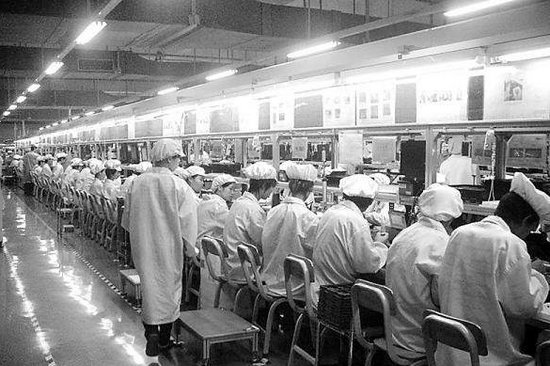 Foxconn factory, China
Foxconn factory, China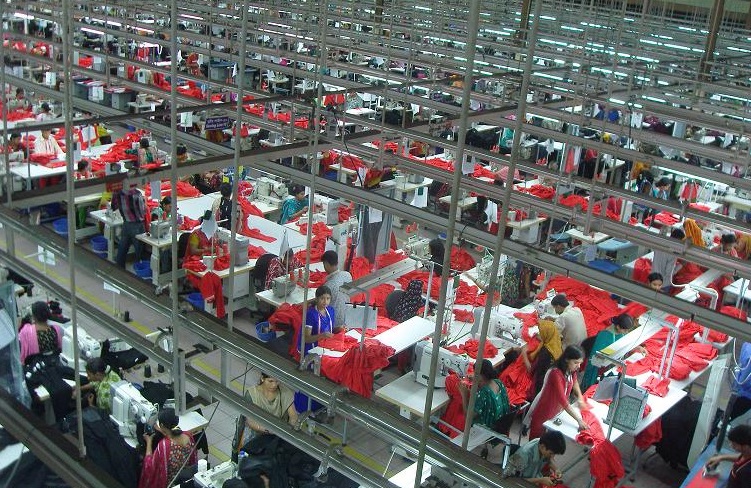 Clothing factory, Bangladesh
Clothing factory, Bangladesh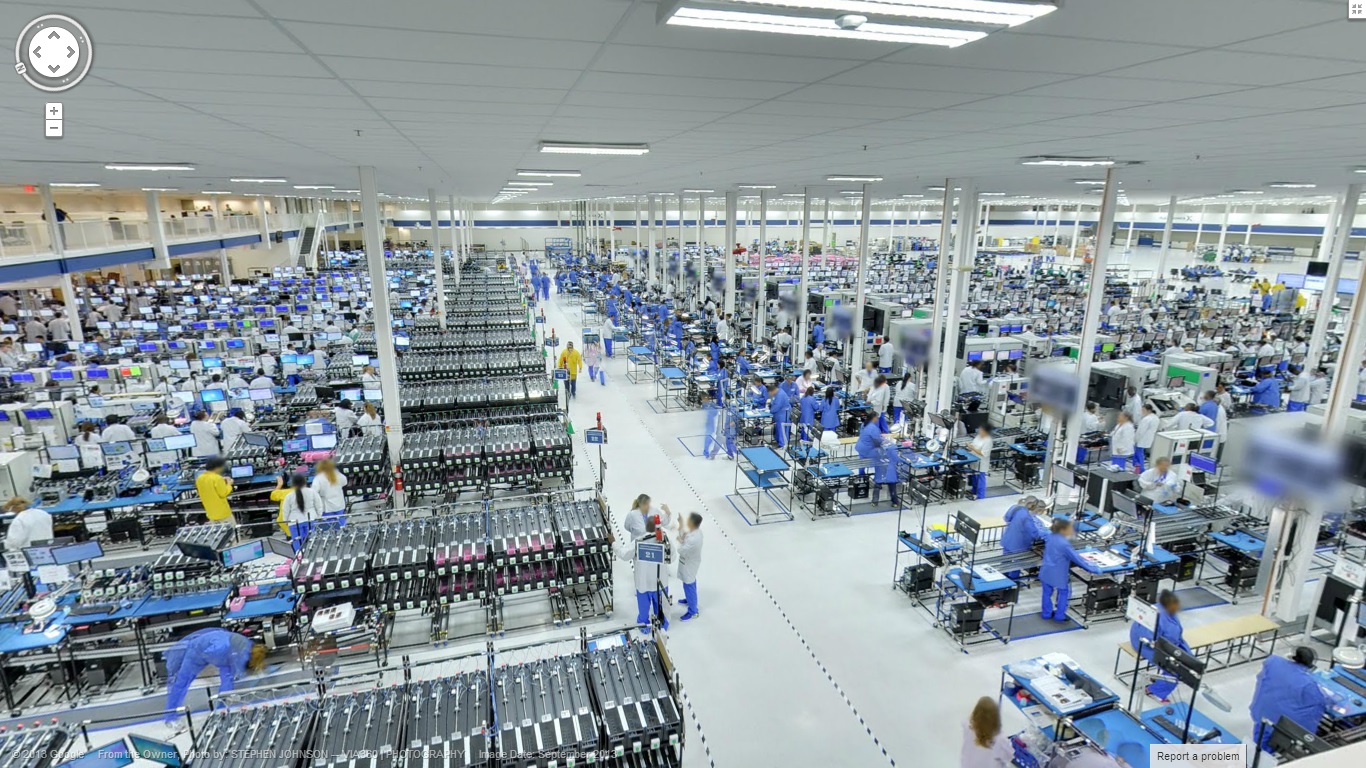 Flextronics factory, Texas
Flextronics factory, Texas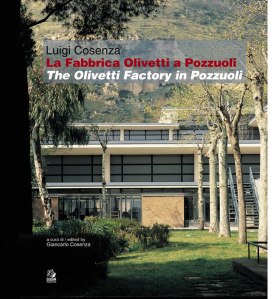
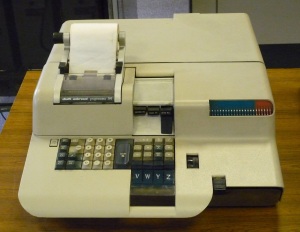
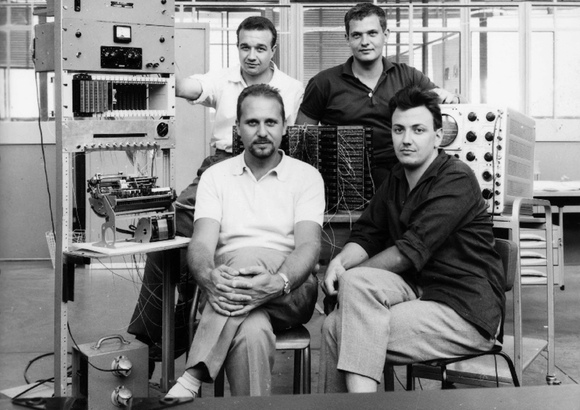 Programma 101 Design Team – Gastone Garziera back left, Giancarlo Toppi back right, Pier Giorgio Perotto front left, Giovanni De Sandre front right (Giuliano Gaiti not present)
Programma 101 Design Team – Gastone Garziera back left, Giancarlo Toppi back right, Pier Giorgio Perotto front left, Giovanni De Sandre front right (Giuliano Gaiti not present)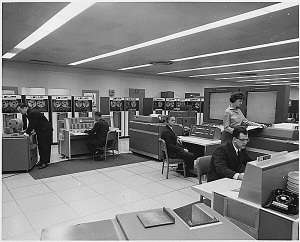
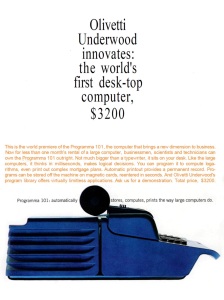
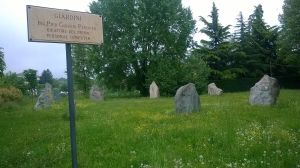


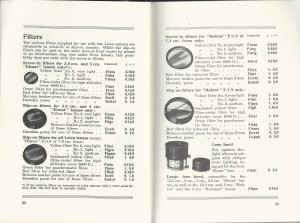
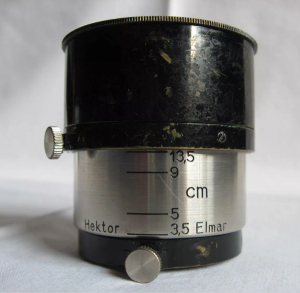
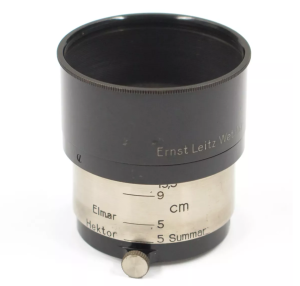
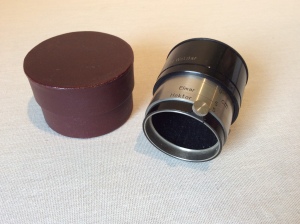
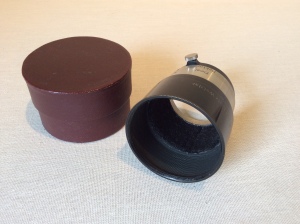
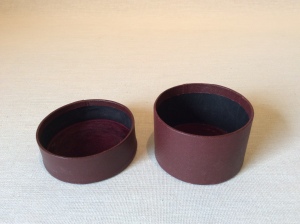
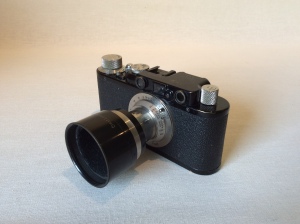
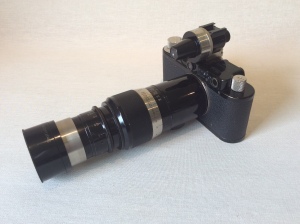
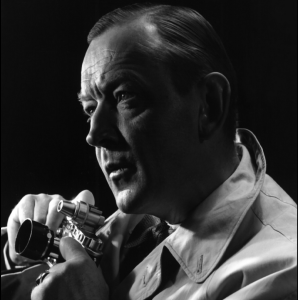
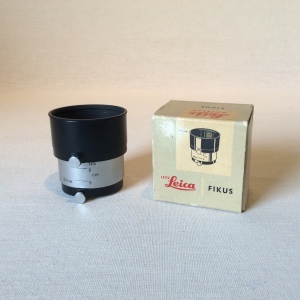
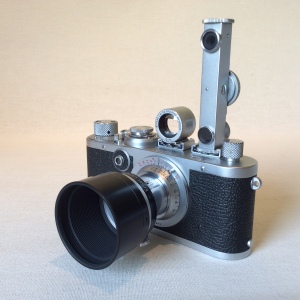

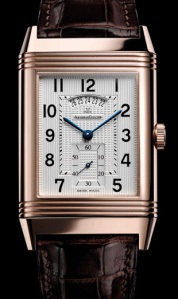
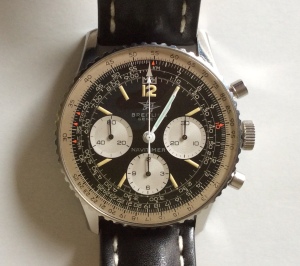
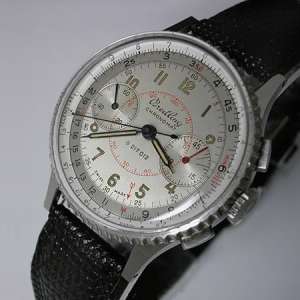
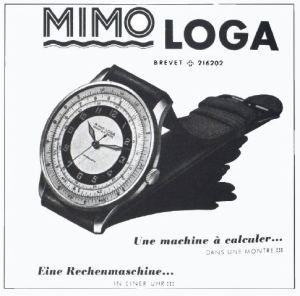
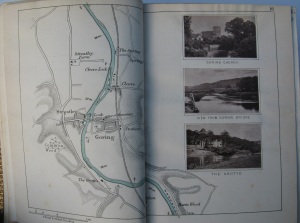
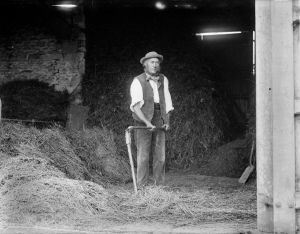
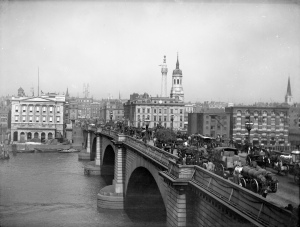
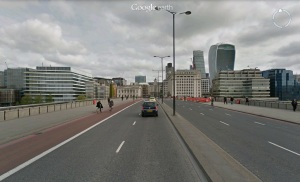
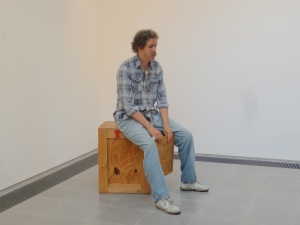
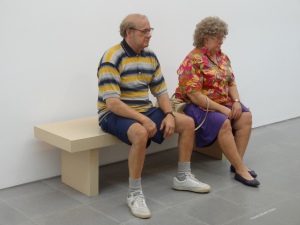
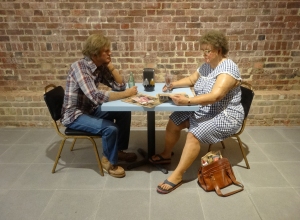

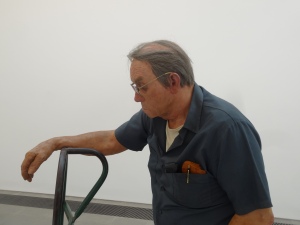
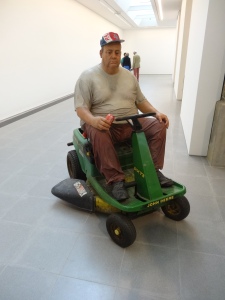
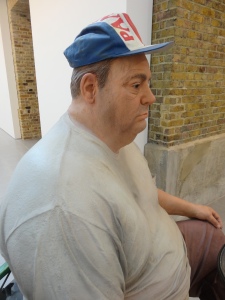
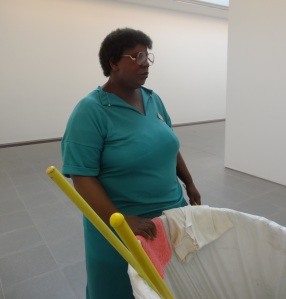
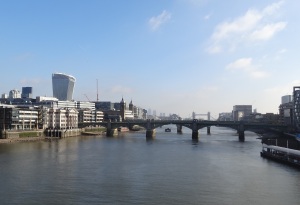
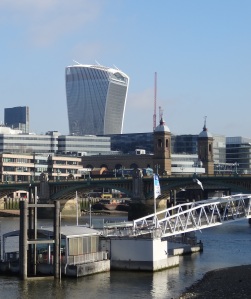
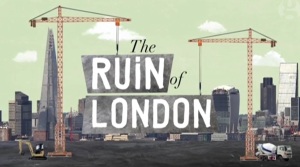



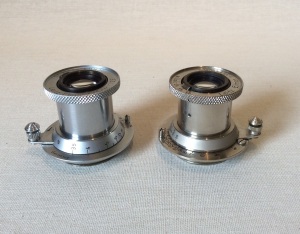
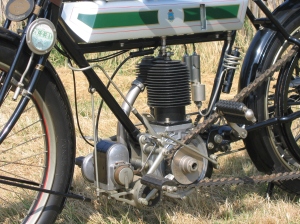

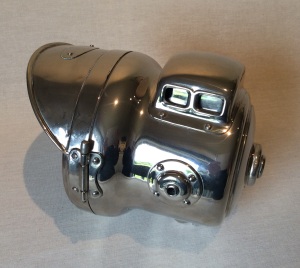
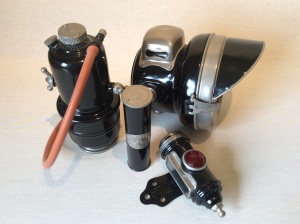
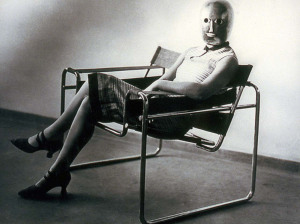
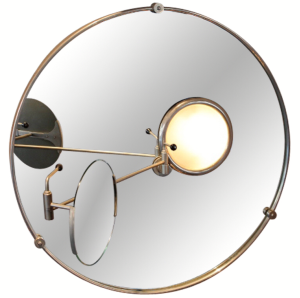
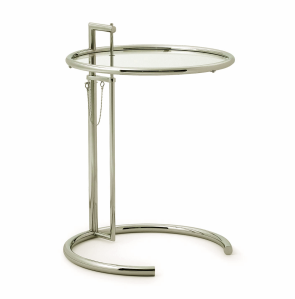
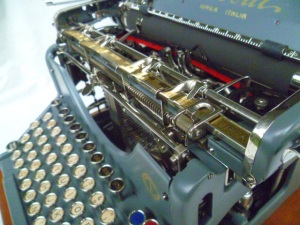
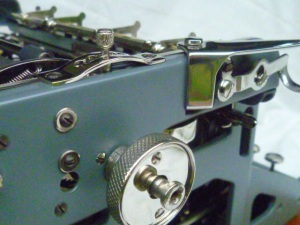
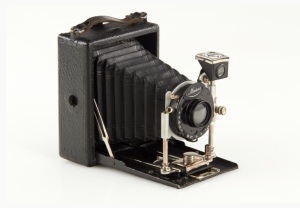
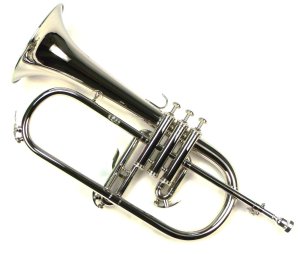
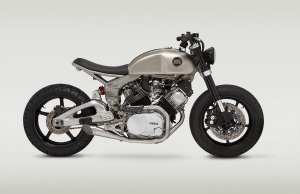
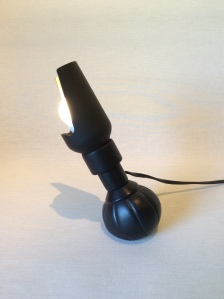


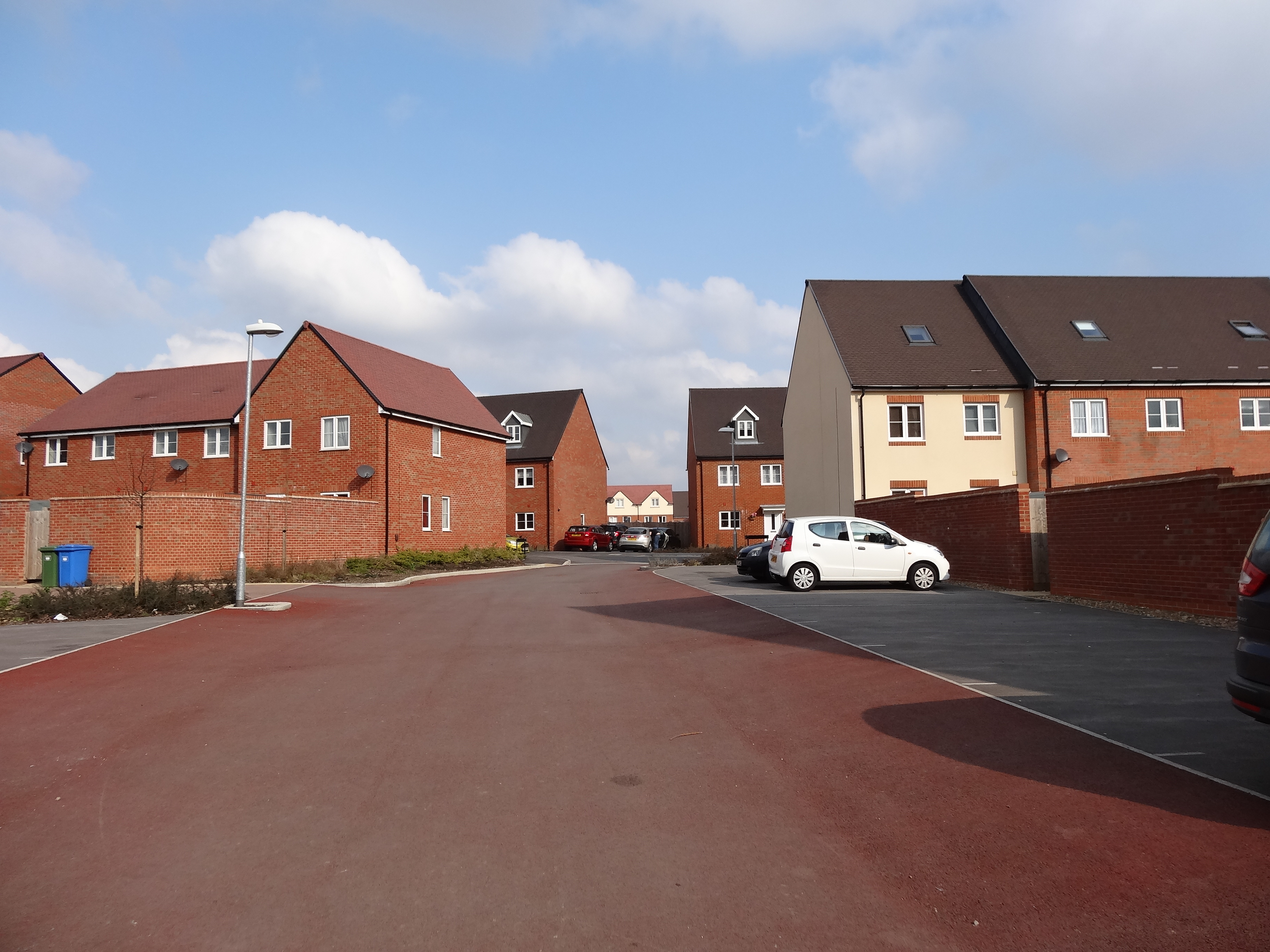



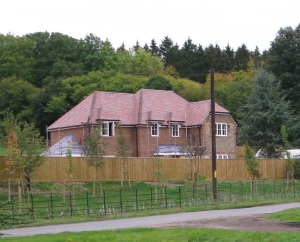
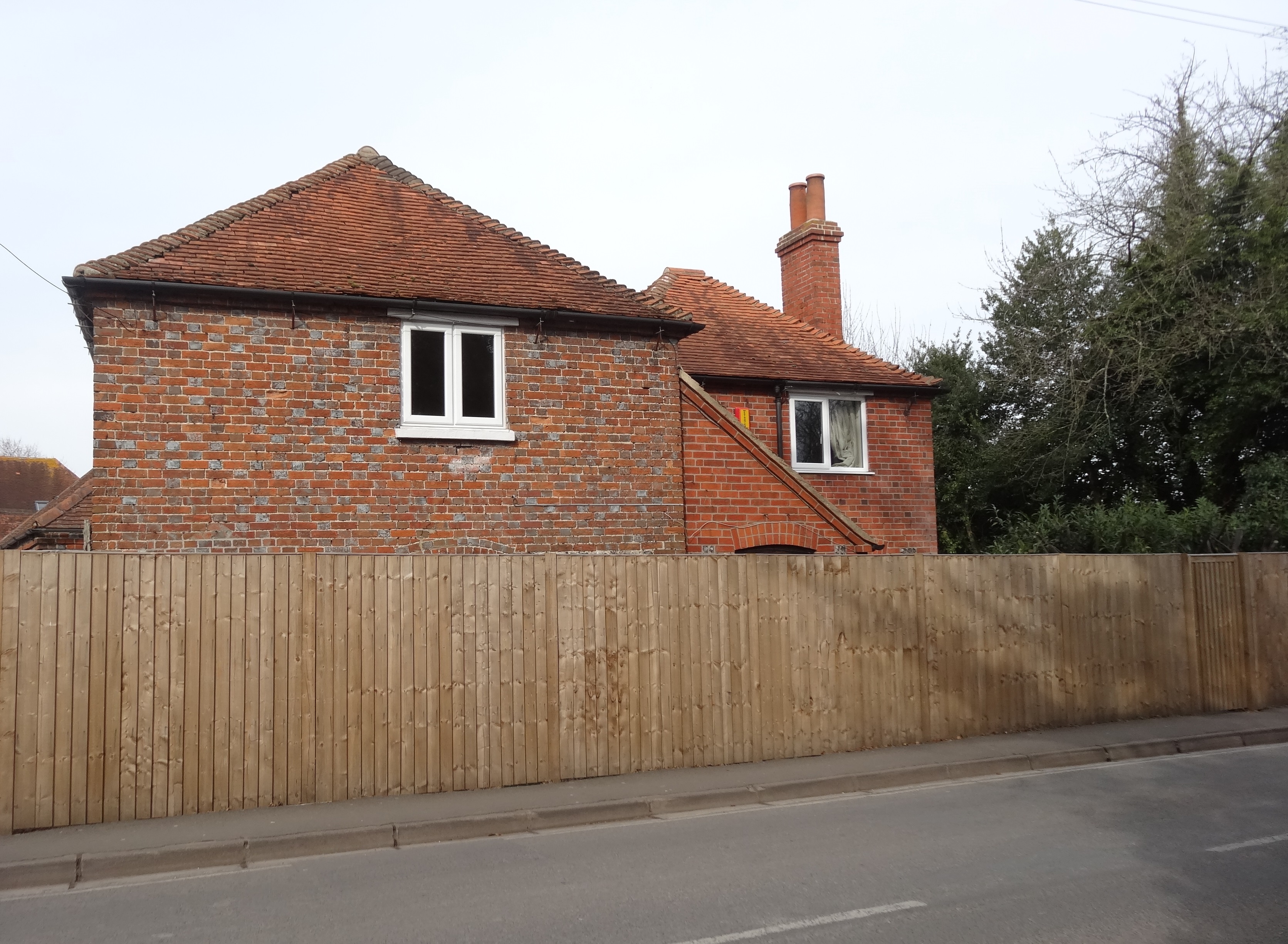
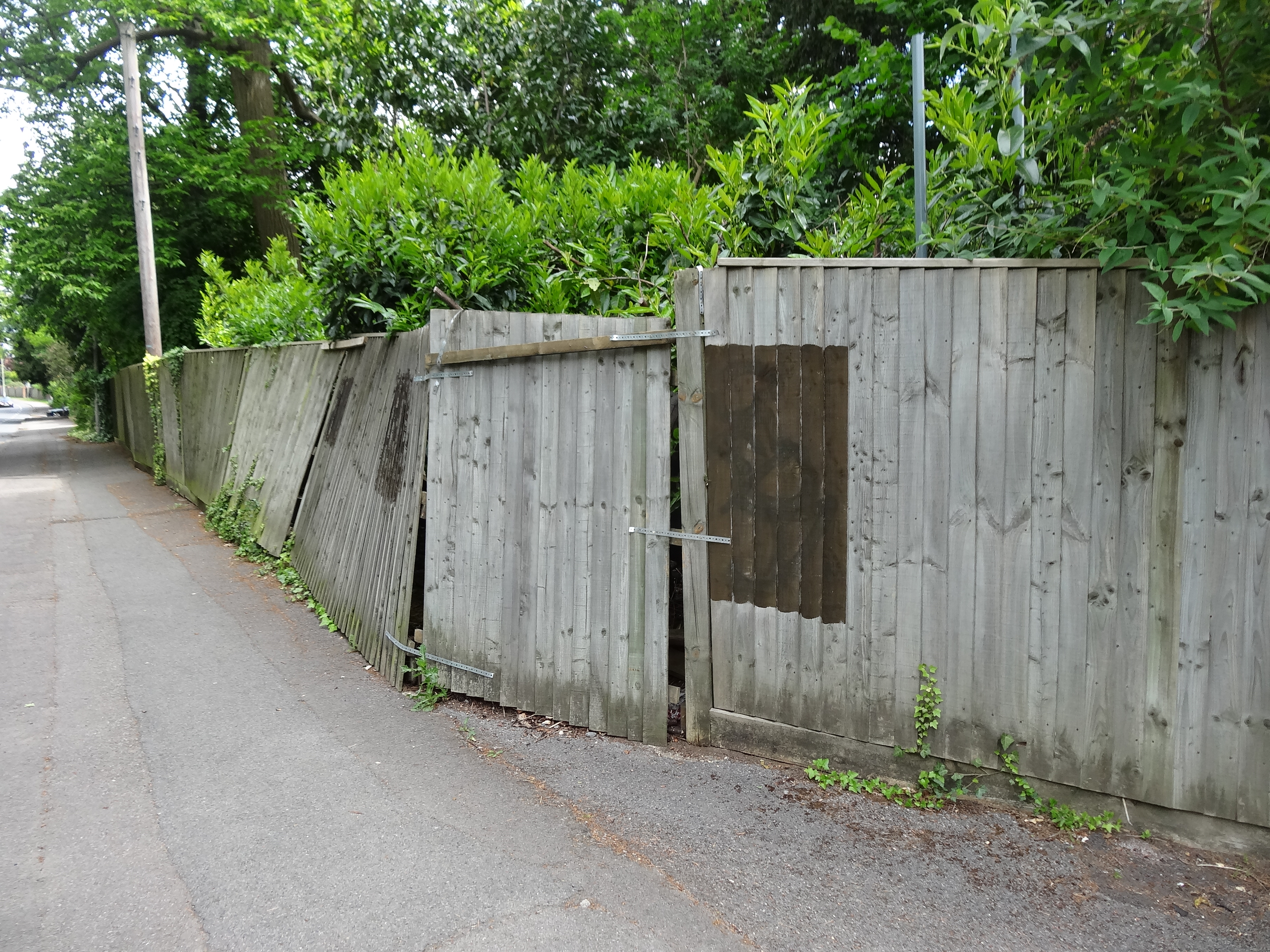
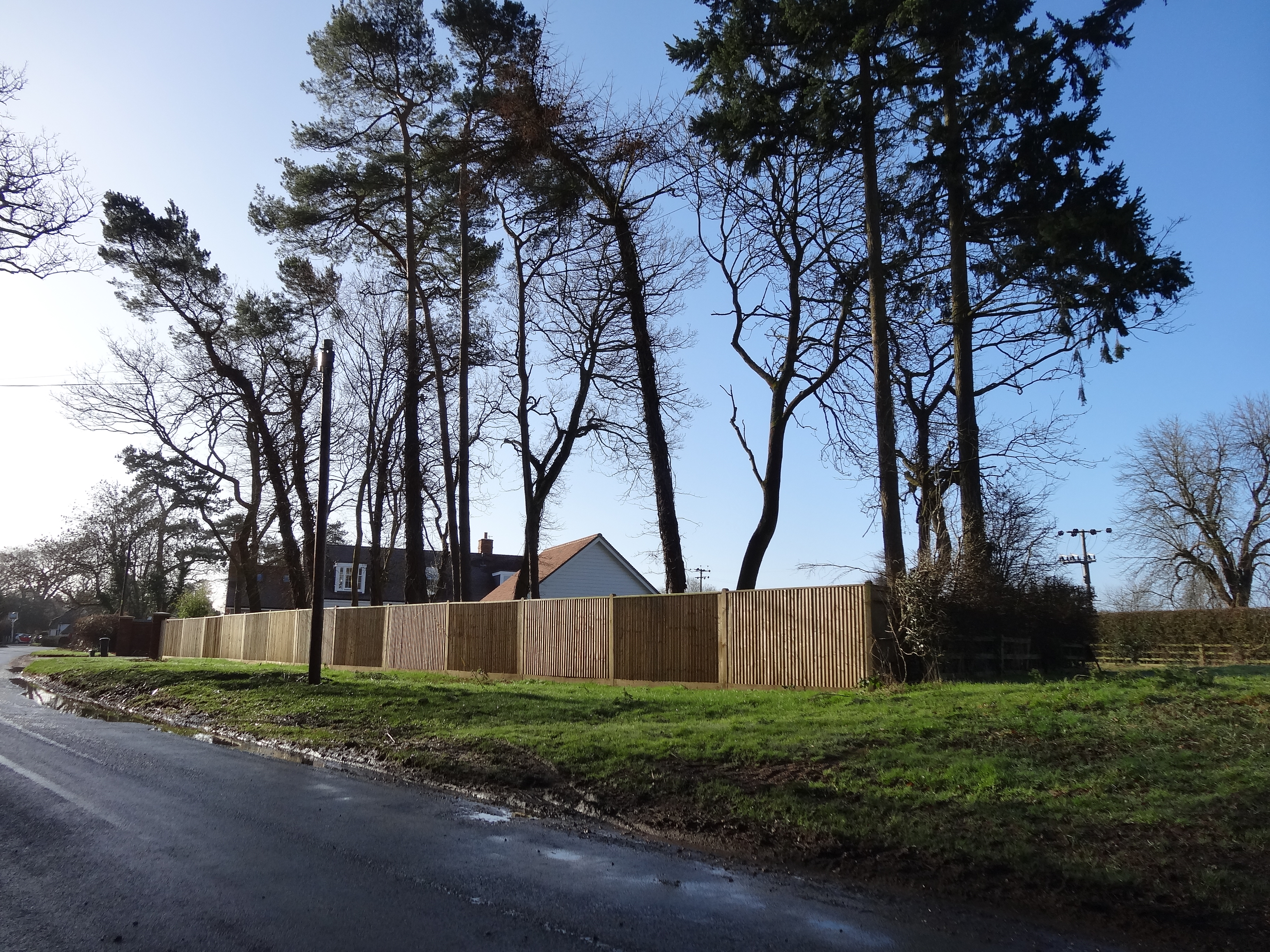
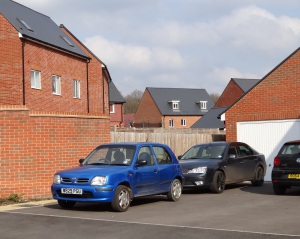
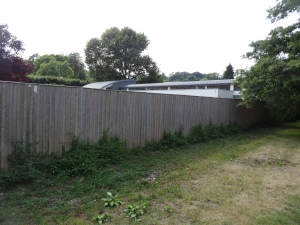
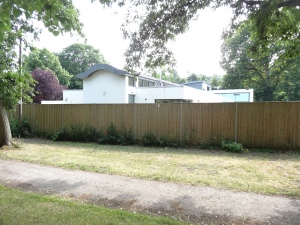
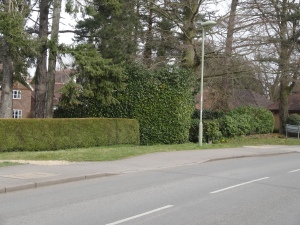
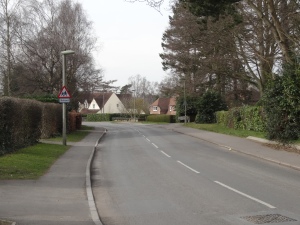
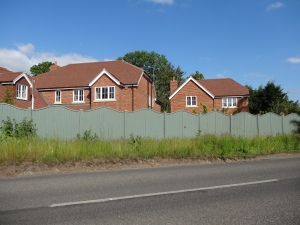
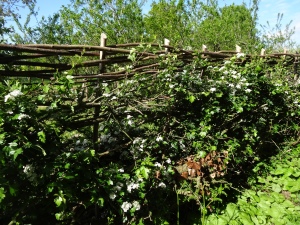
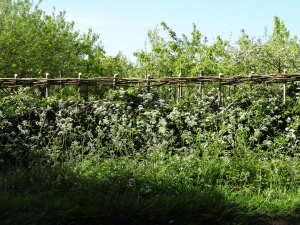
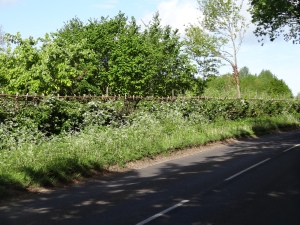
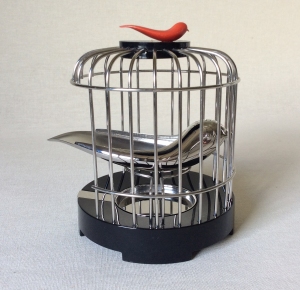
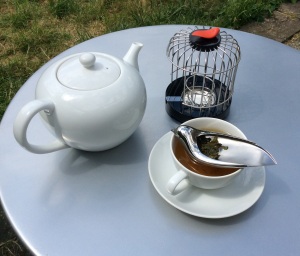
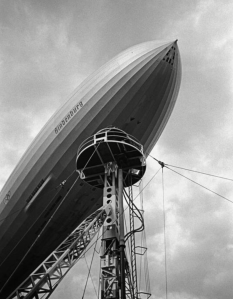
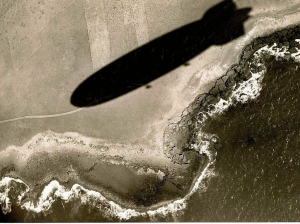
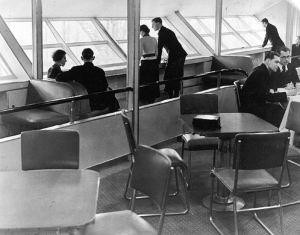
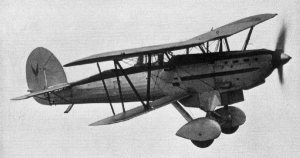

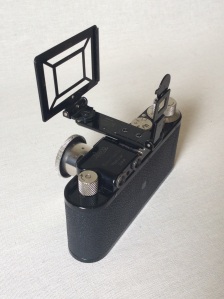

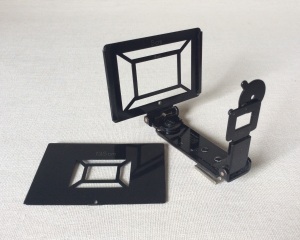

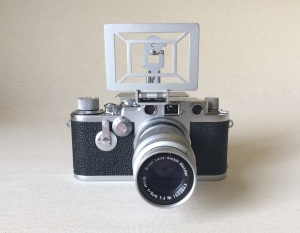
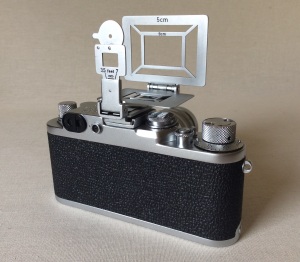
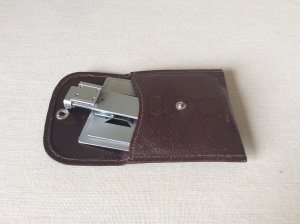
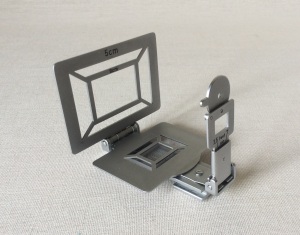

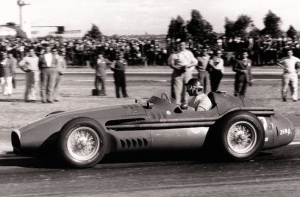
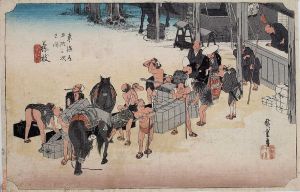


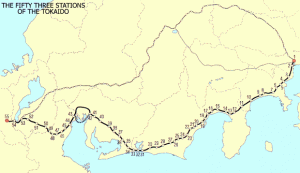
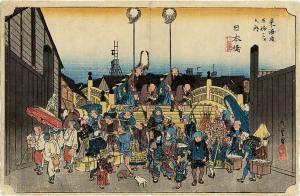
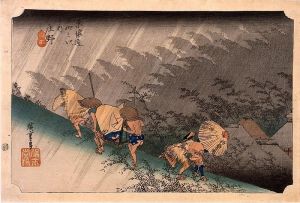
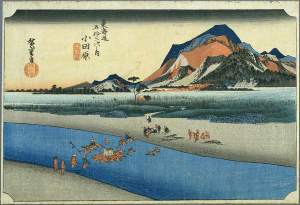
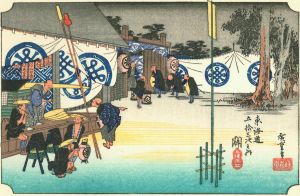
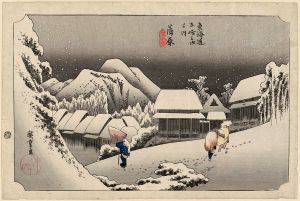
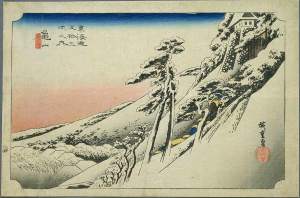
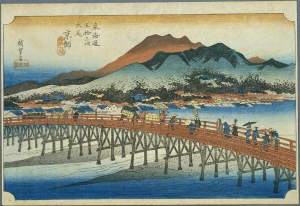
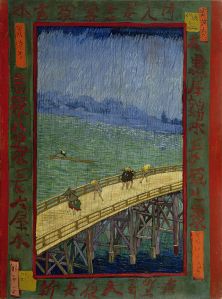
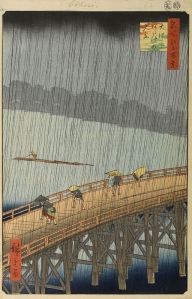
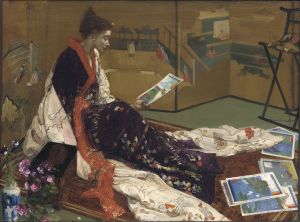
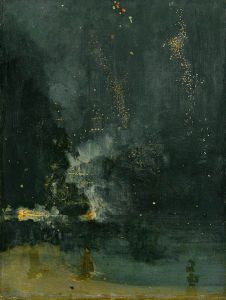
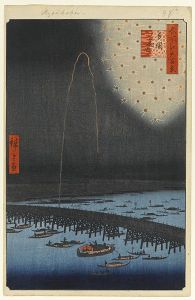
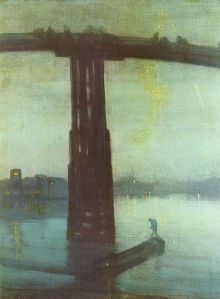
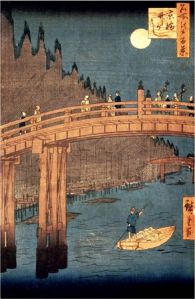
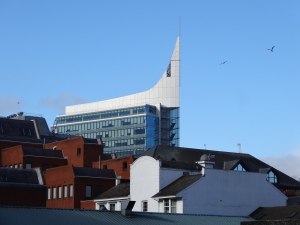
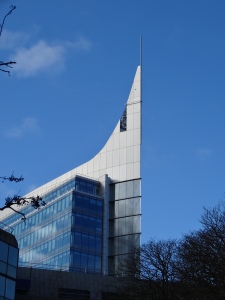
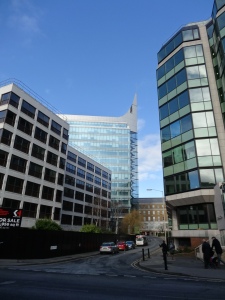
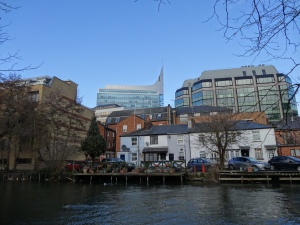
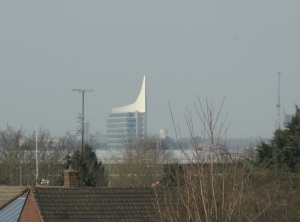
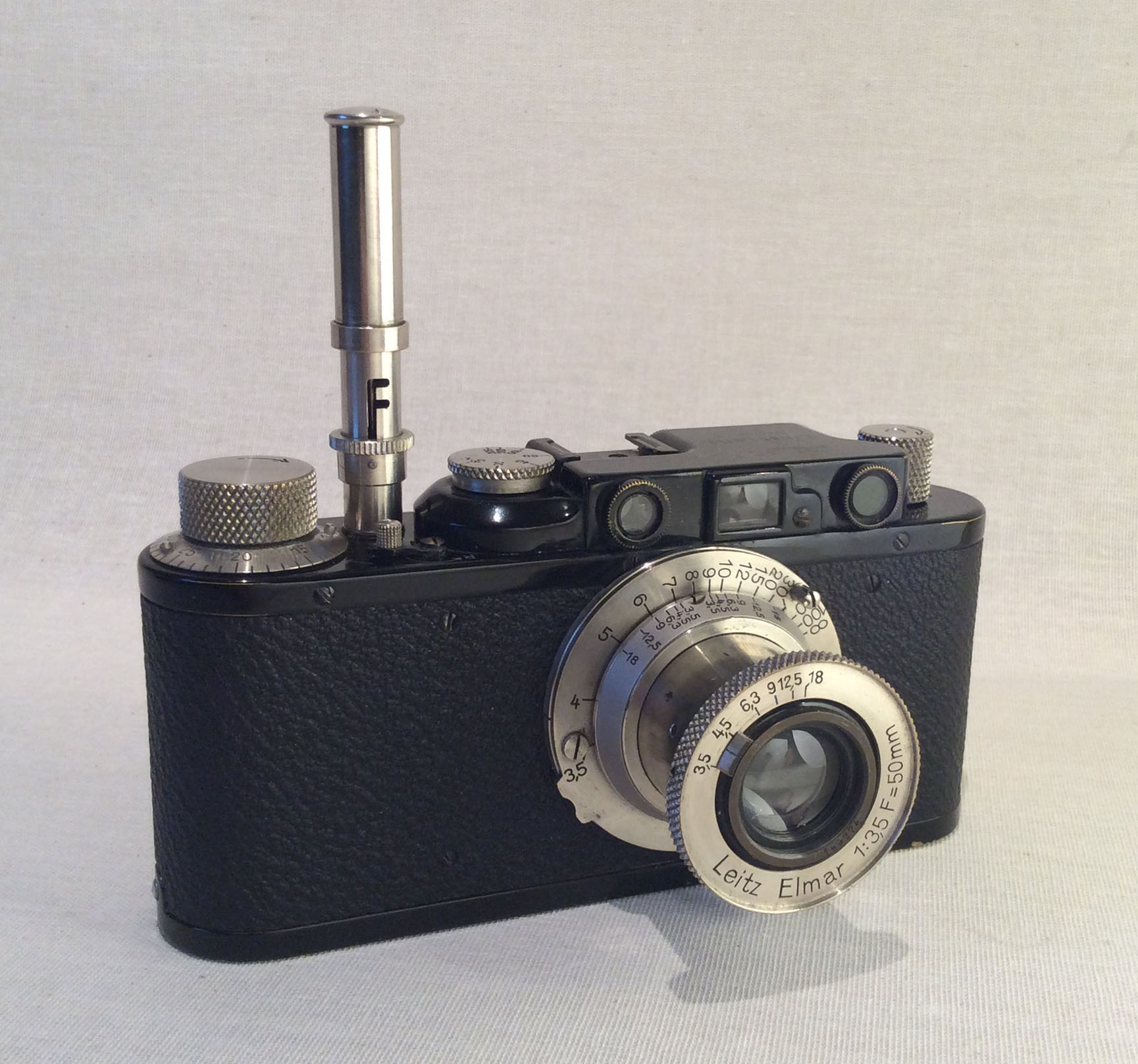
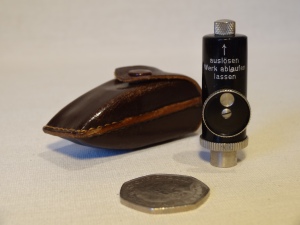
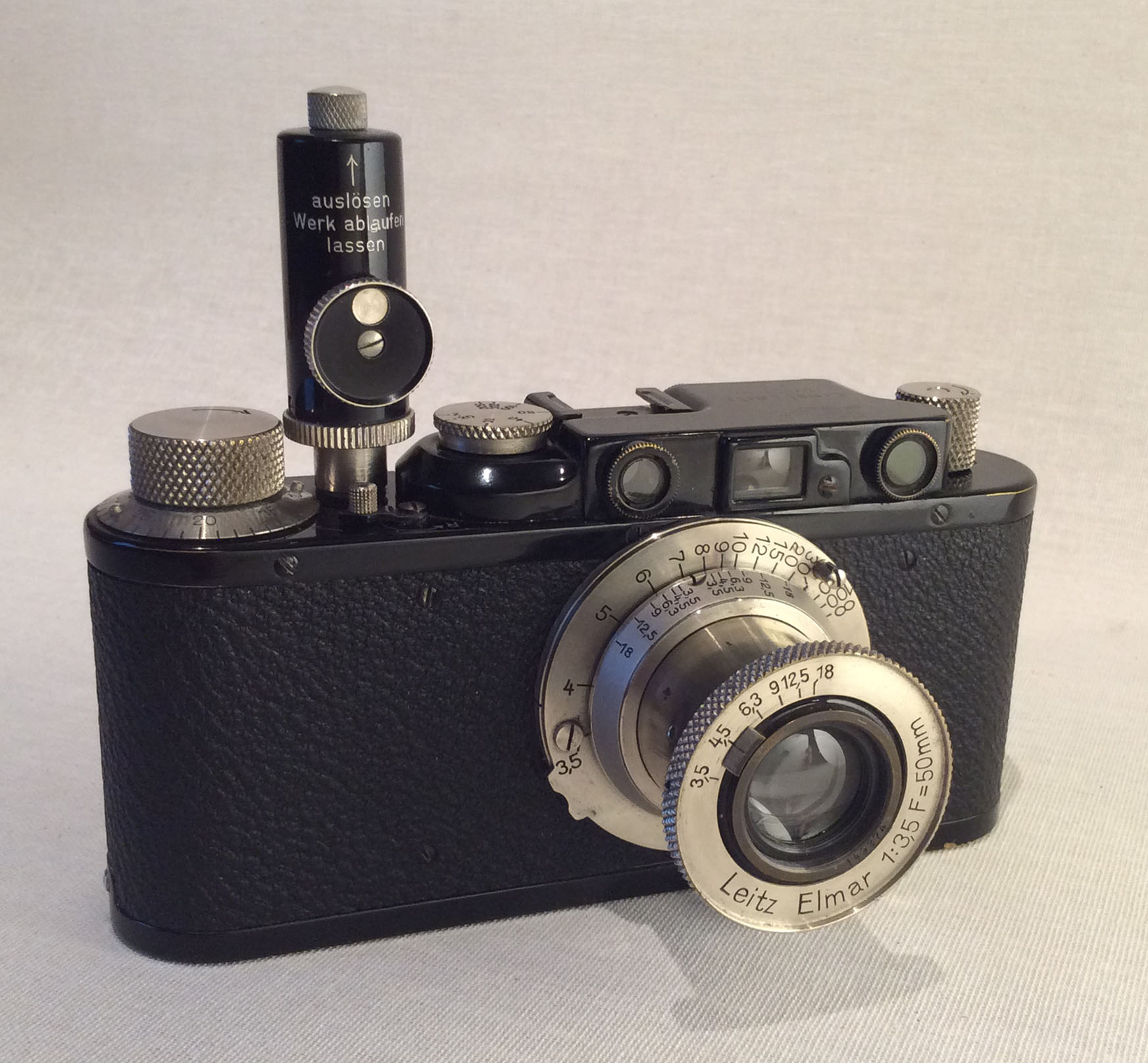
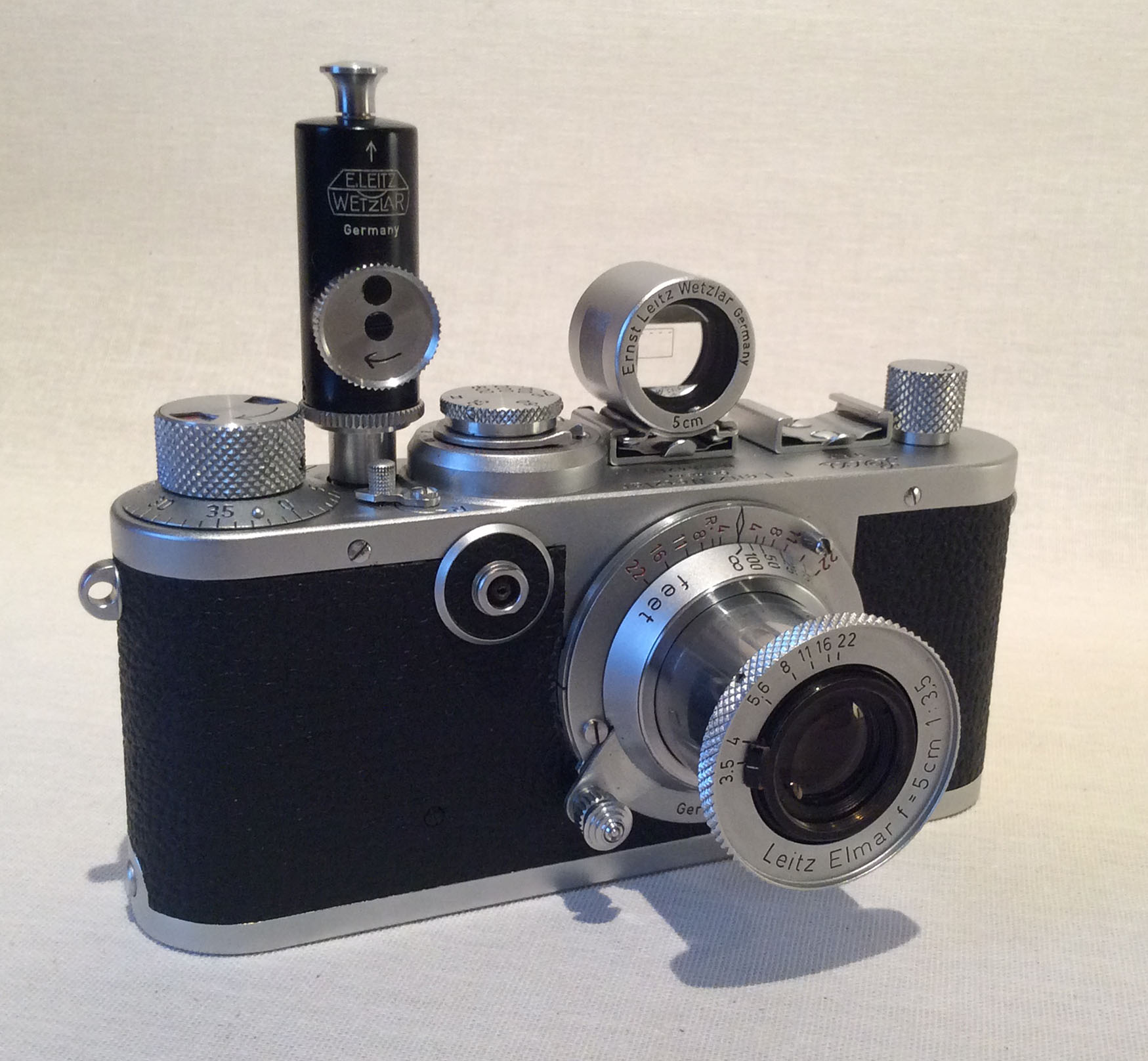
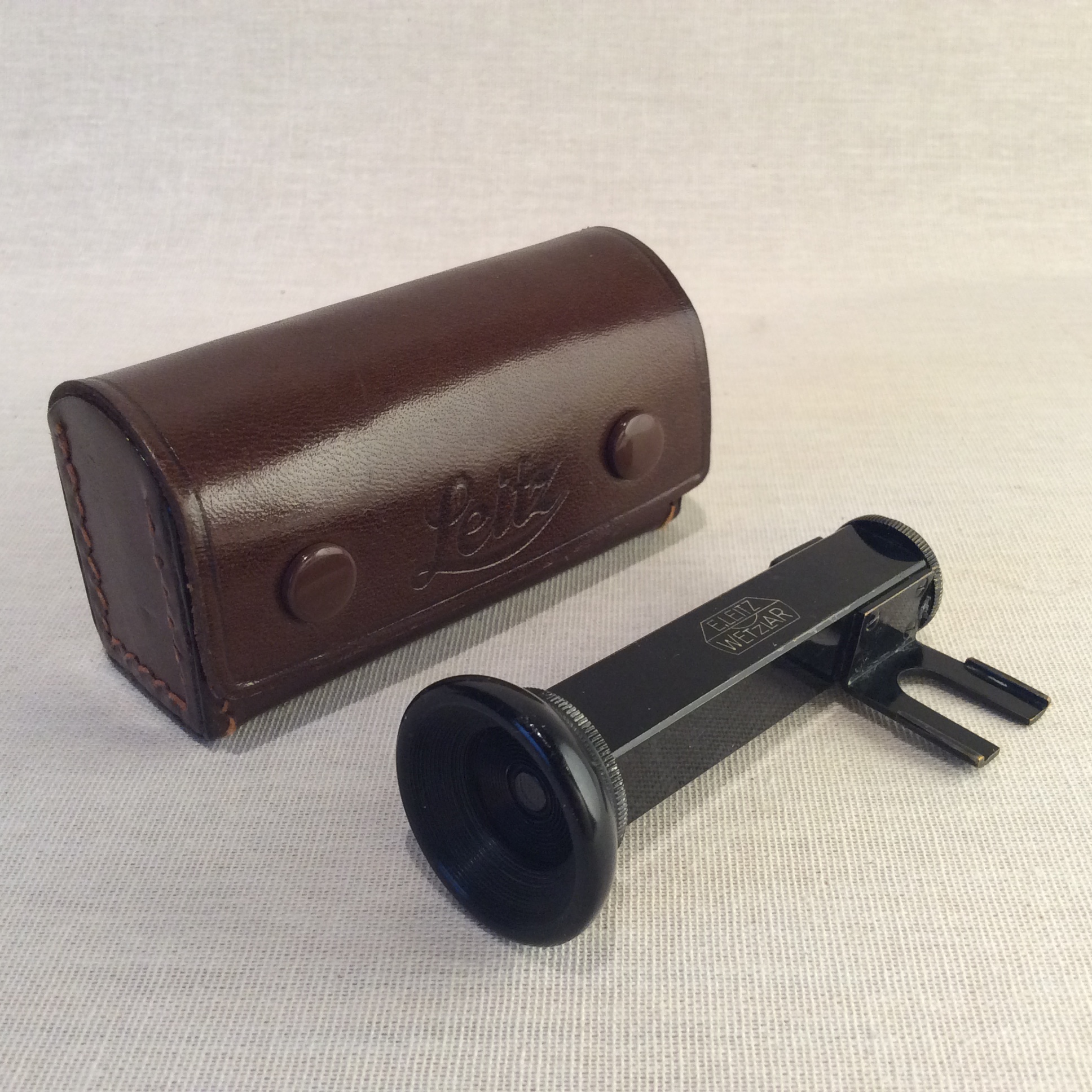
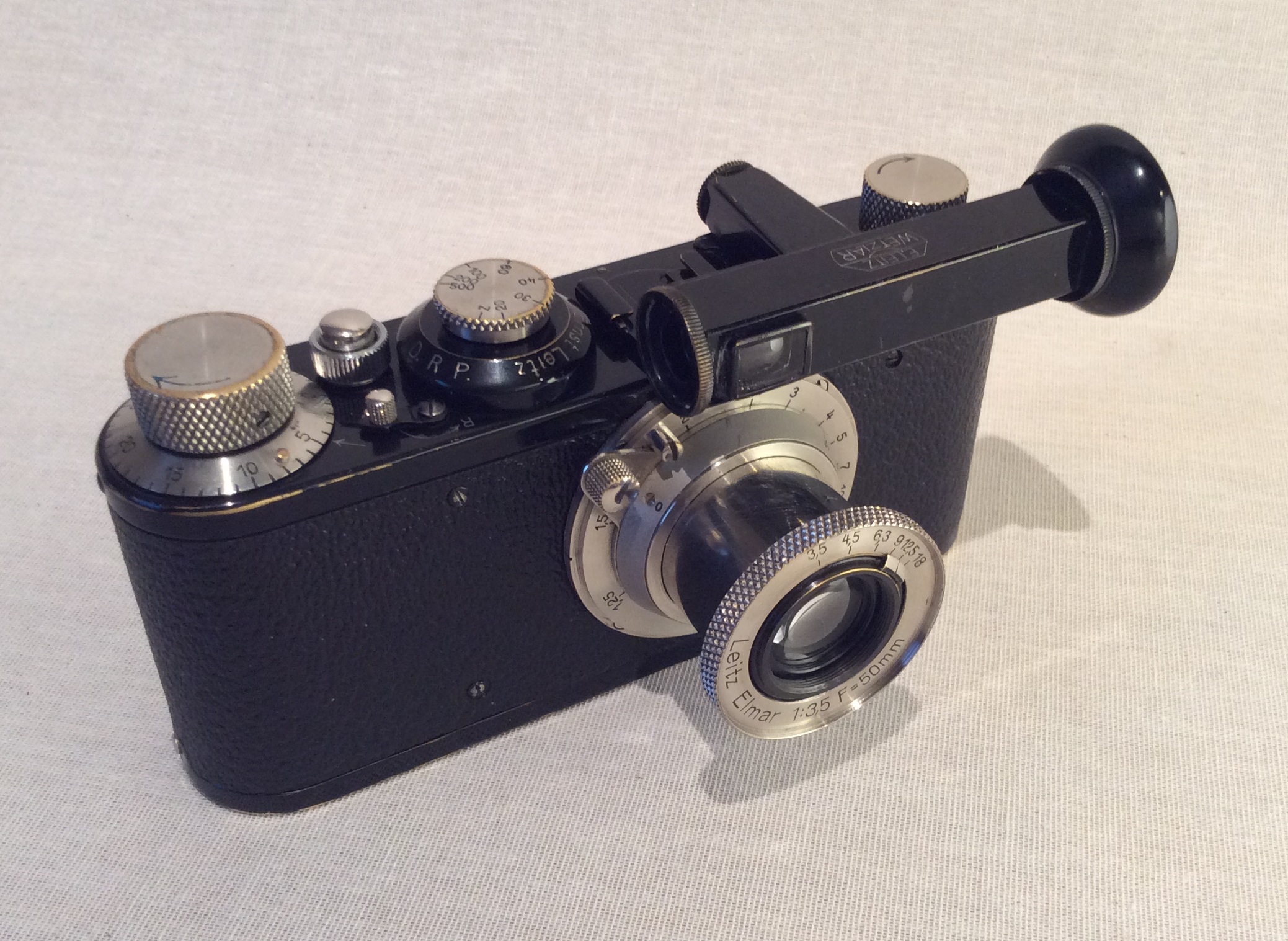
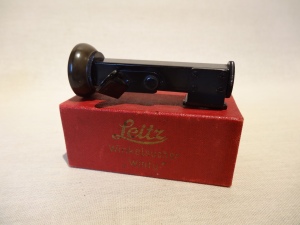
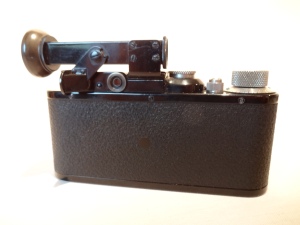
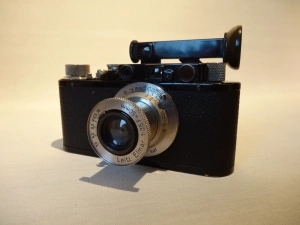
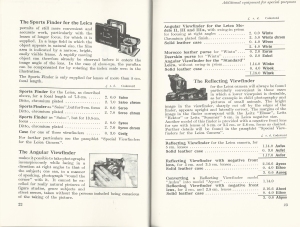
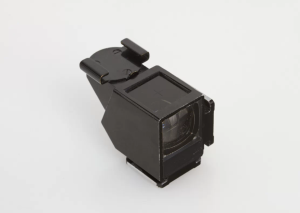
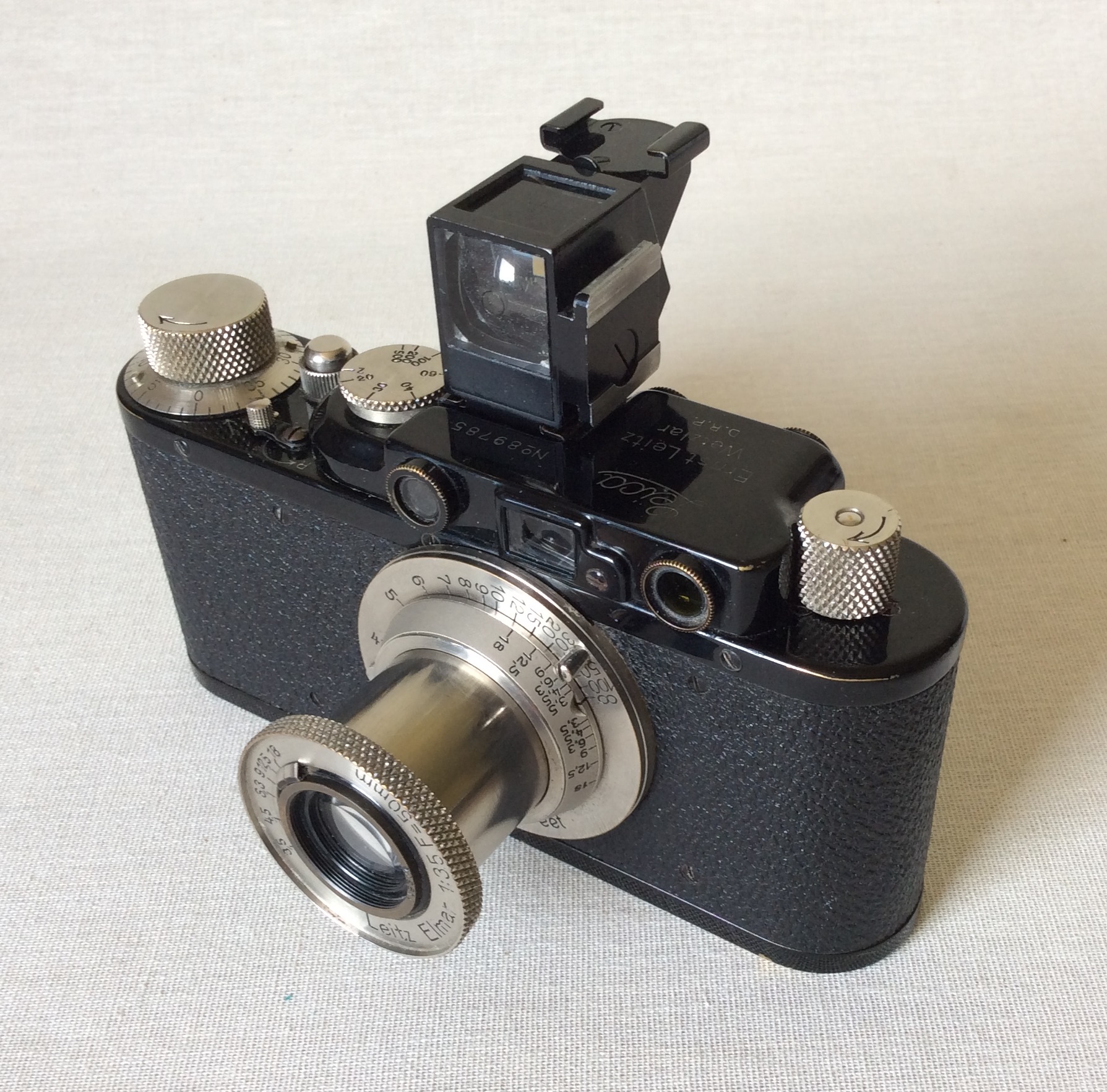
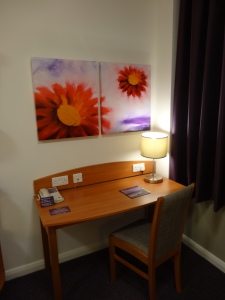
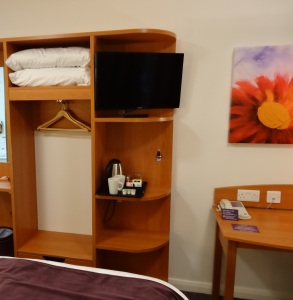
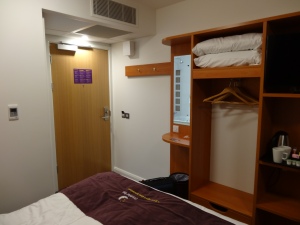
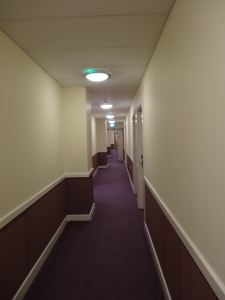
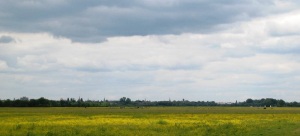


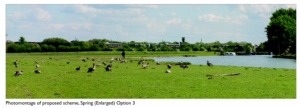
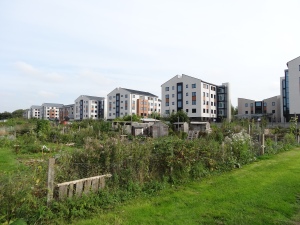
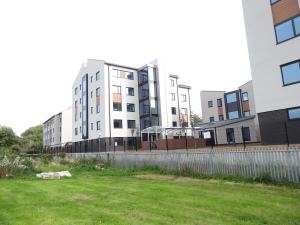
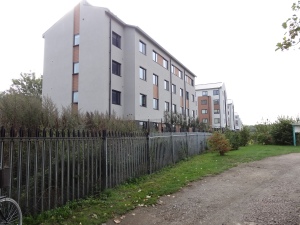
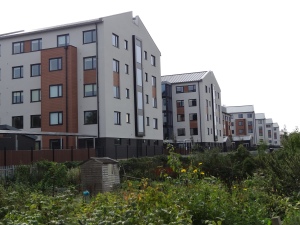


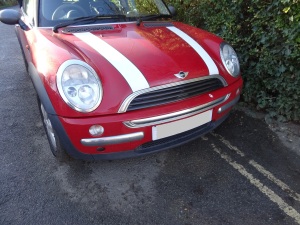

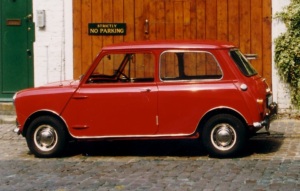
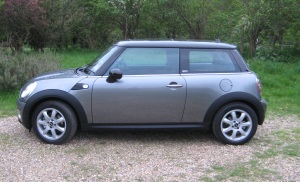
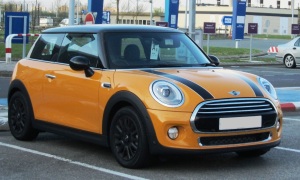
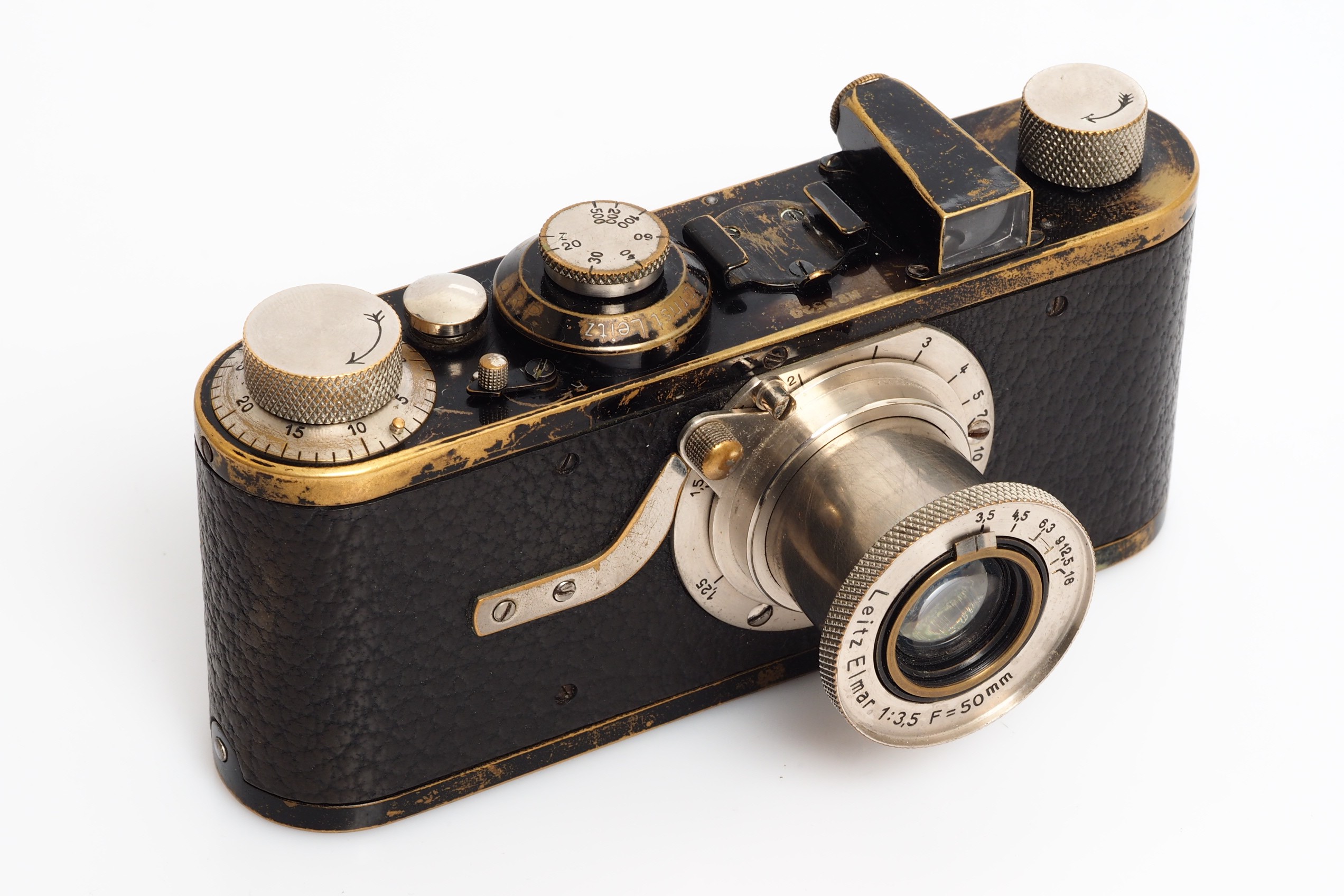
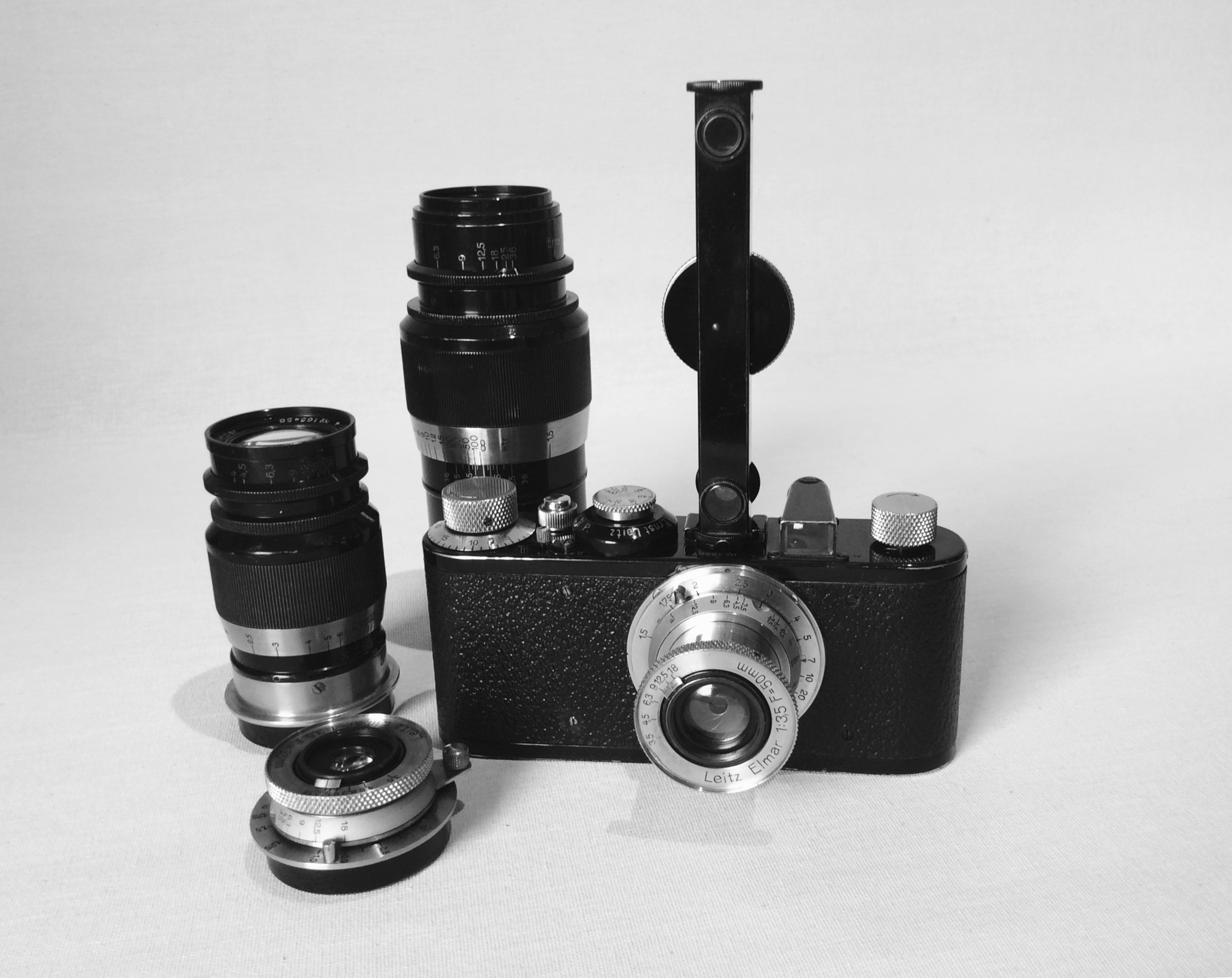
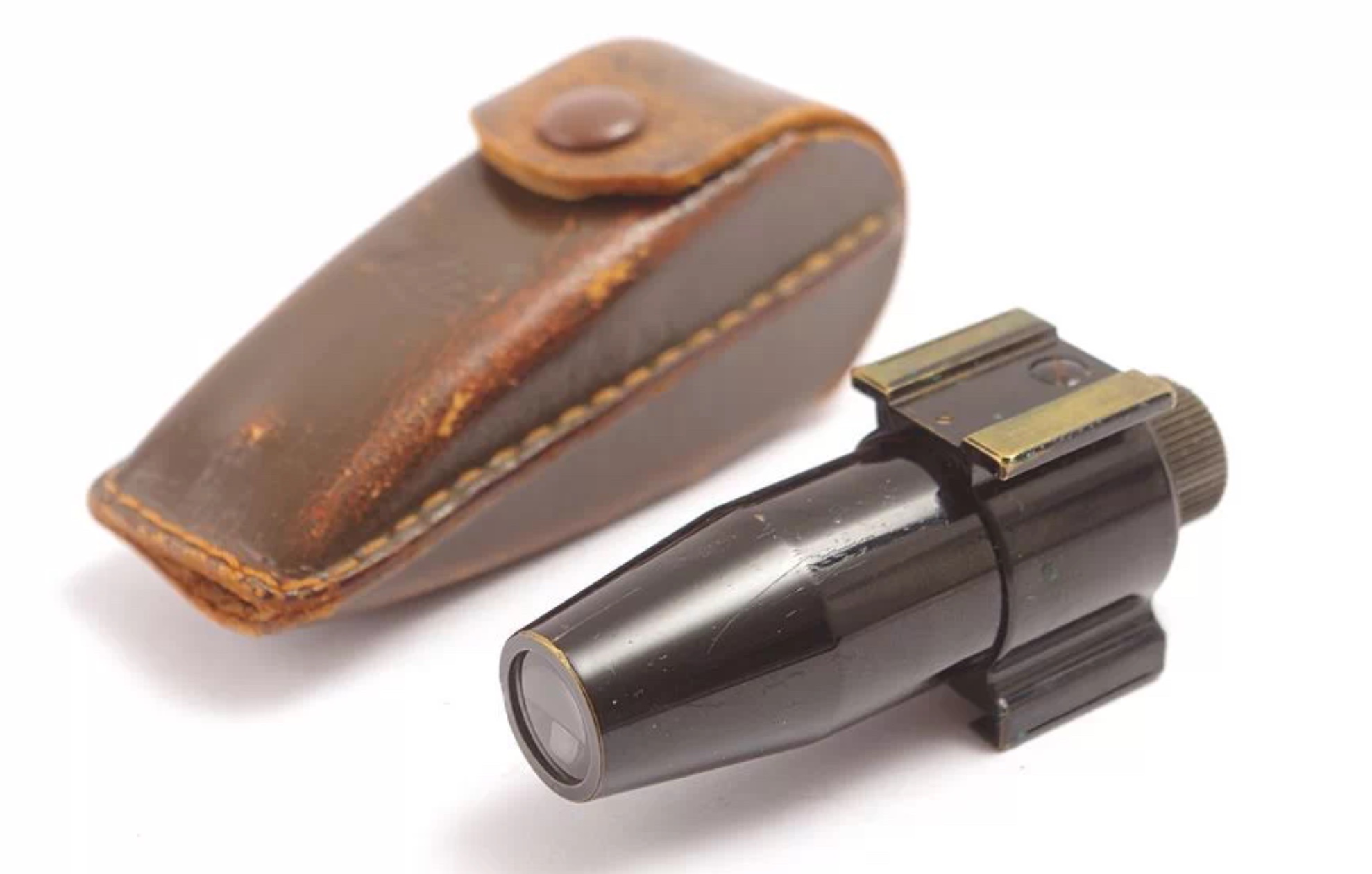
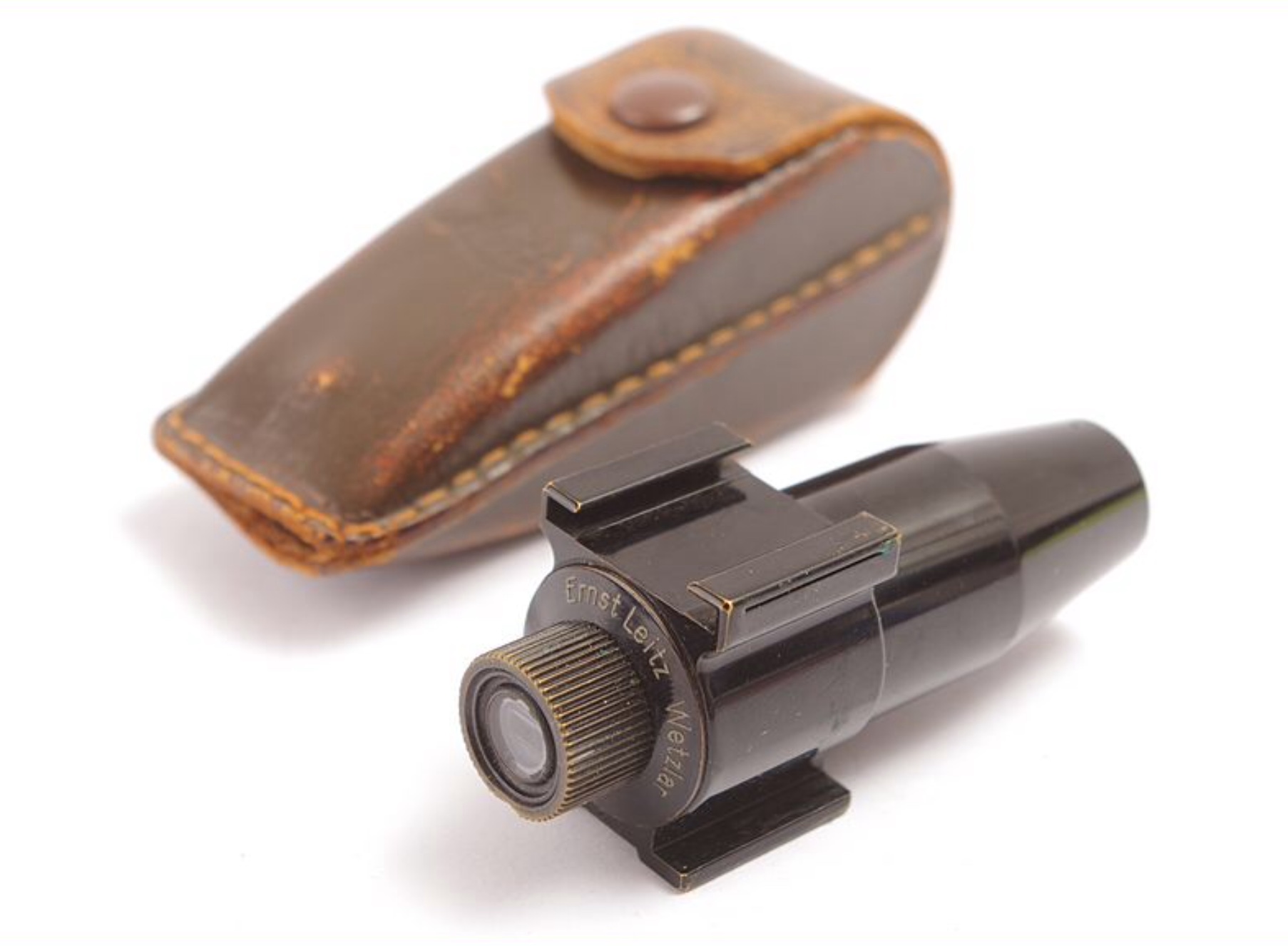
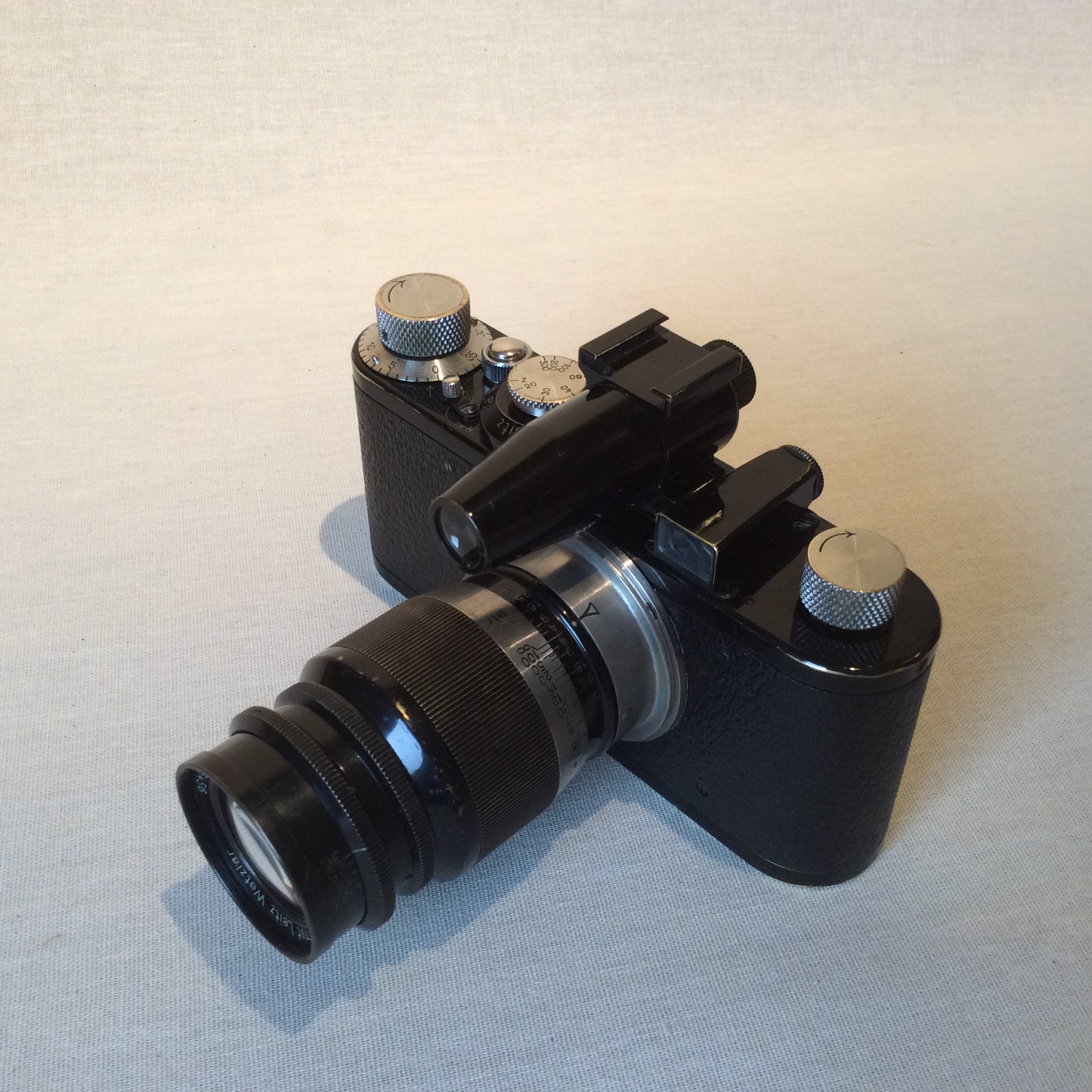 Leica 1 Model C with 9cm* (uncoupled) f4 Elmar
Leica 1 Model C with 9cm* (uncoupled) f4 Elmar